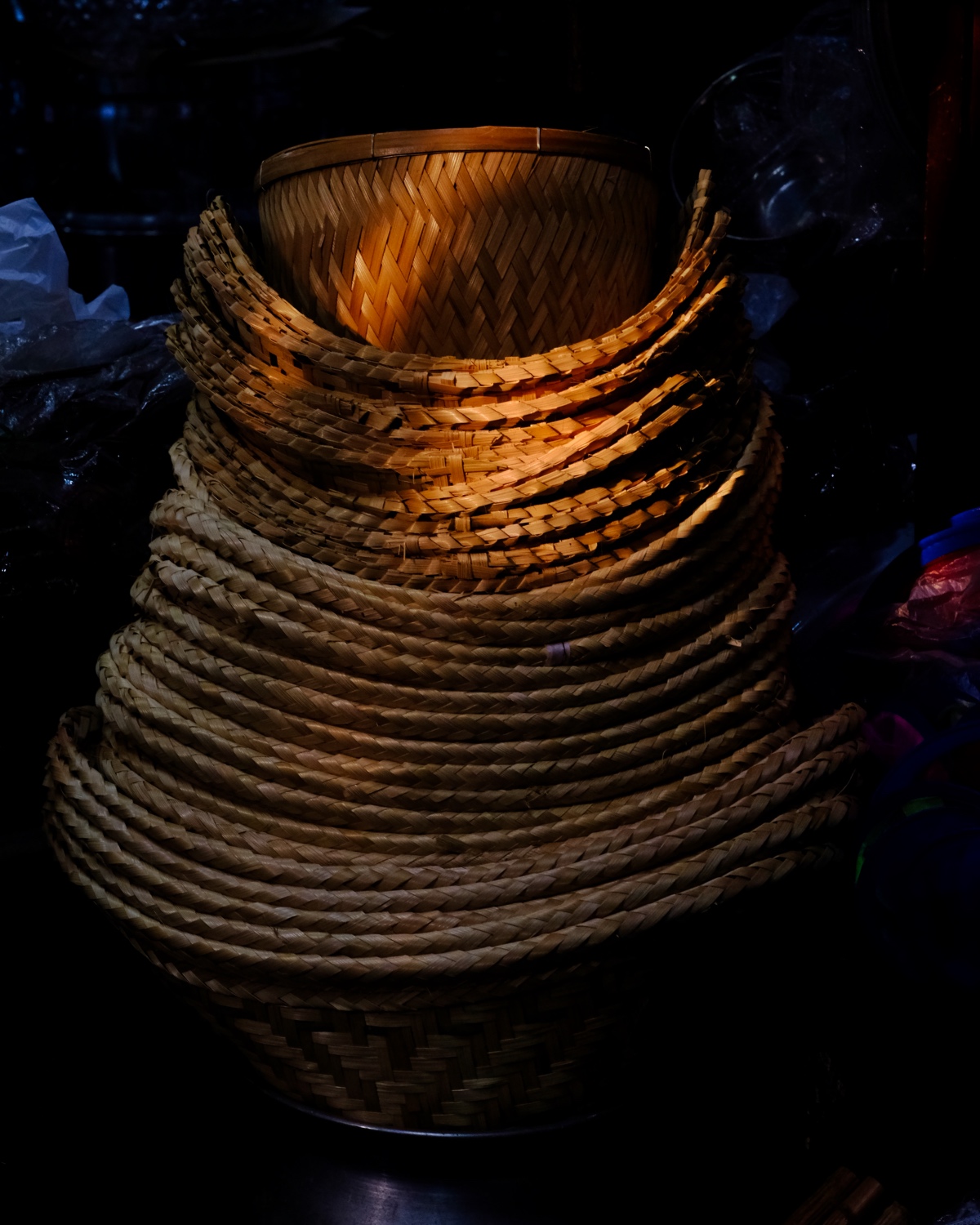My most current blog entry:
Entries in Buddha (40)
Samut Songkhran & Amphawa Village - A Good Day Out and About in Thailand
 Sunday, May 26, 2019 at 2:16PM
Sunday, May 26, 2019 at 2:16PM 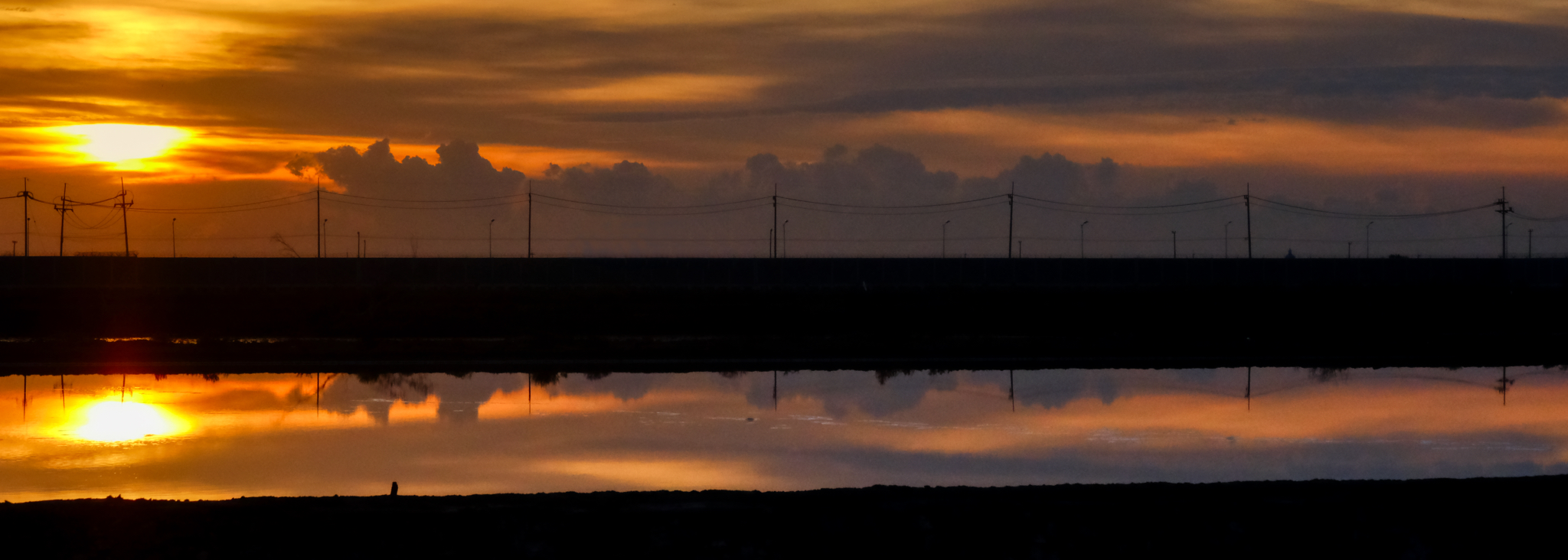 Up and out the door at 4:30am to catch the sun rise over the salt pans of Samut Songkhran with a couple of buddies . . . and for a day of photography.
Up and out the door at 4:30am to catch the sun rise over the salt pans of Samut Songkhran with a couple of buddies . . . and for a day of photography.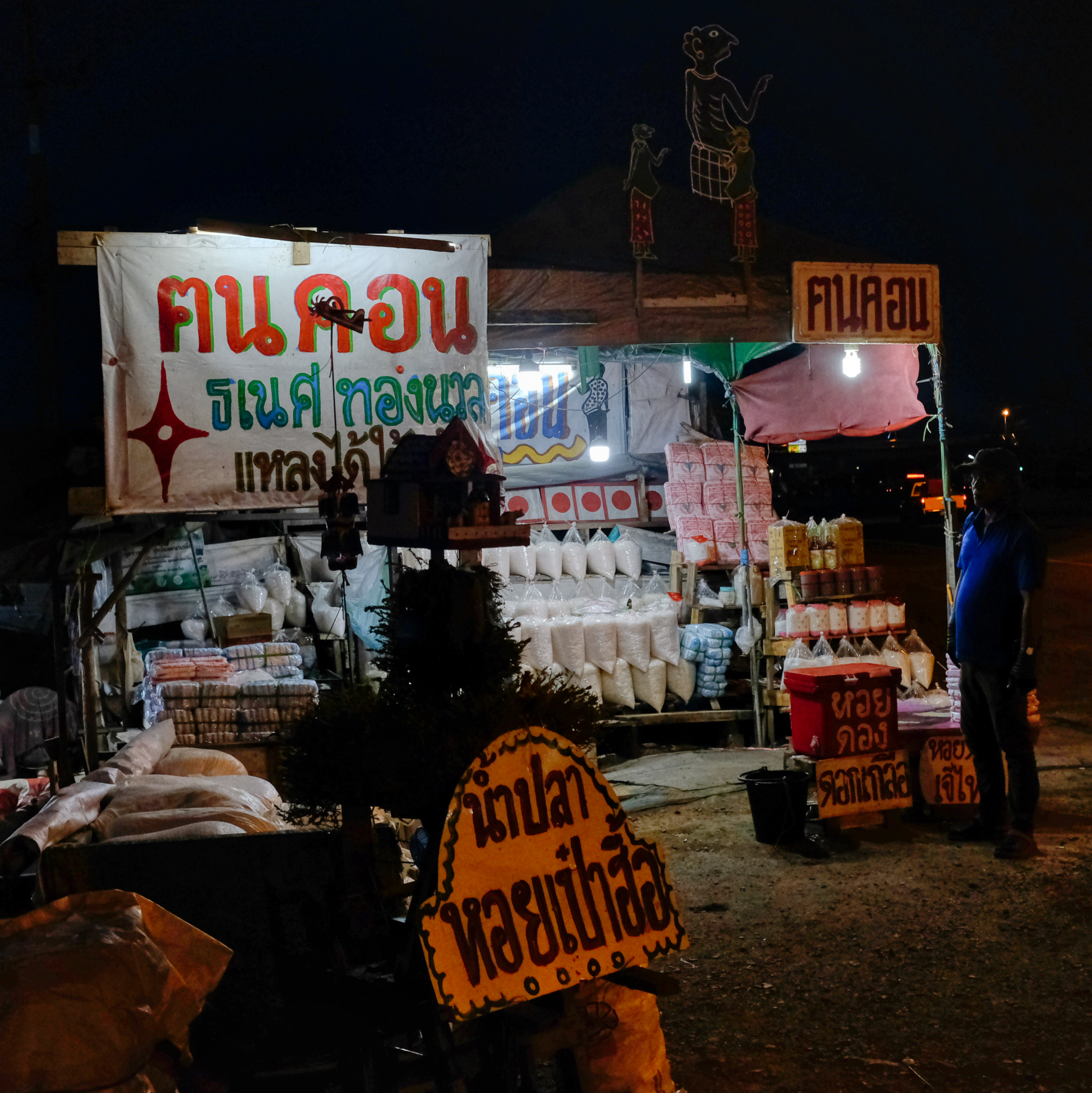 Roadside salt sales before sunset.
Roadside salt sales before sunset.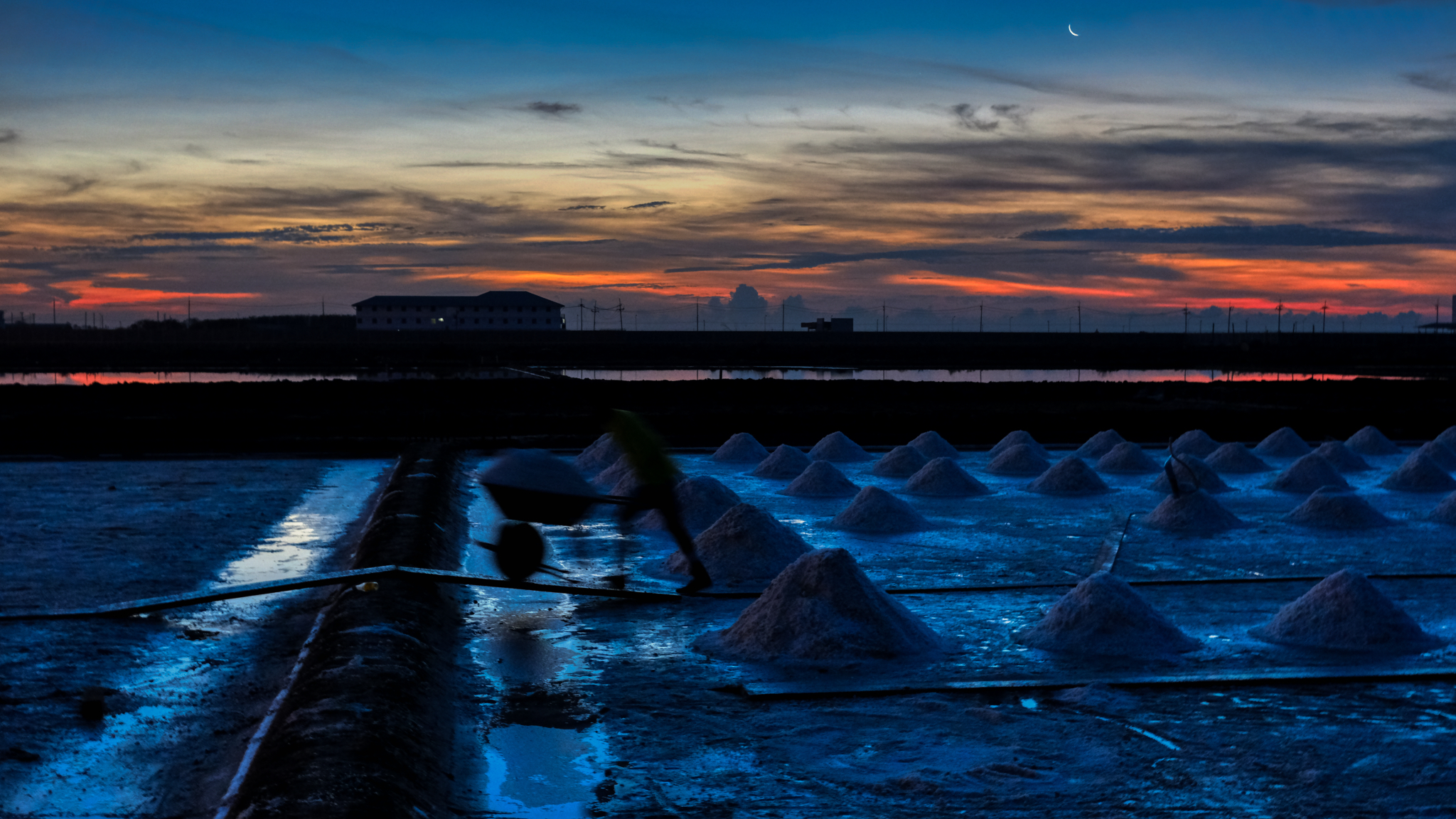 A workman is a blur in first light.
A workman is a blur in first light.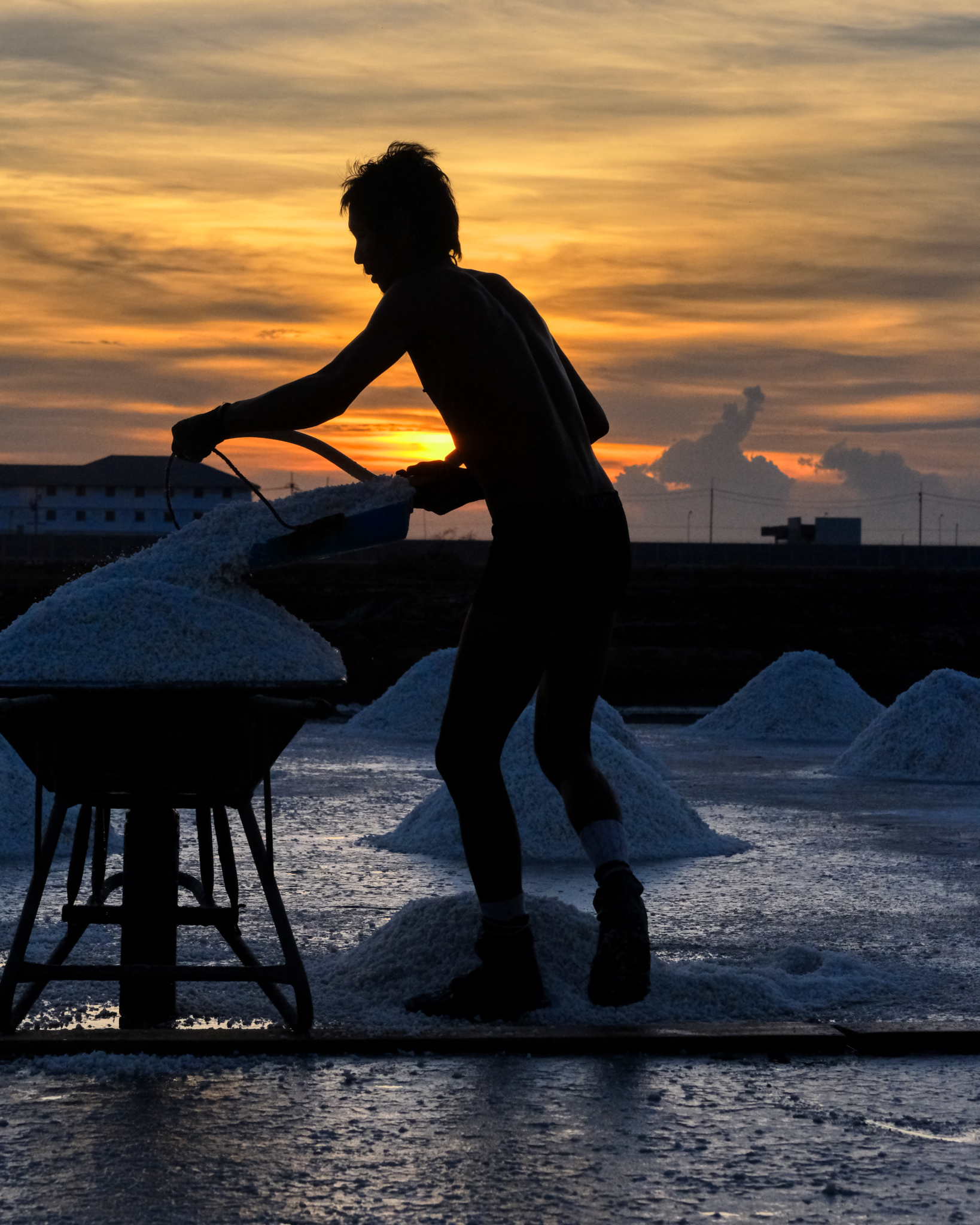 At 5:45am the ambient temperature was already 89f . . with a heat index of 105f!
At 5:45am the ambient temperature was already 89f . . with a heat index of 105f!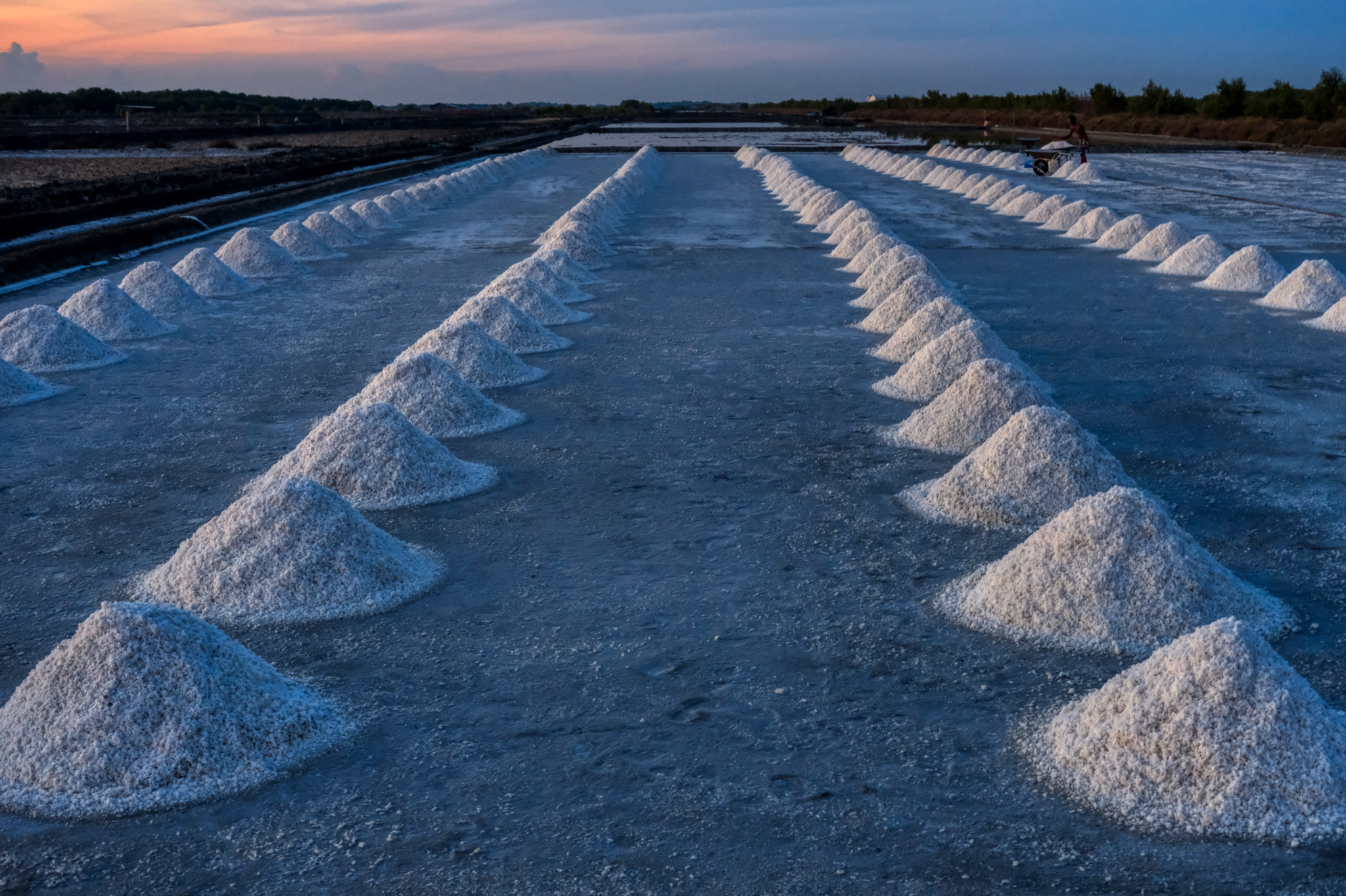 Early morning salt pan. The salt is raked up into cones by one crew, and picked up and hauled by wheelbarrow to a large pile near the highway for transportation.
Early morning salt pan. The salt is raked up into cones by one crew, and picked up and hauled by wheelbarrow to a large pile near the highway for transportation.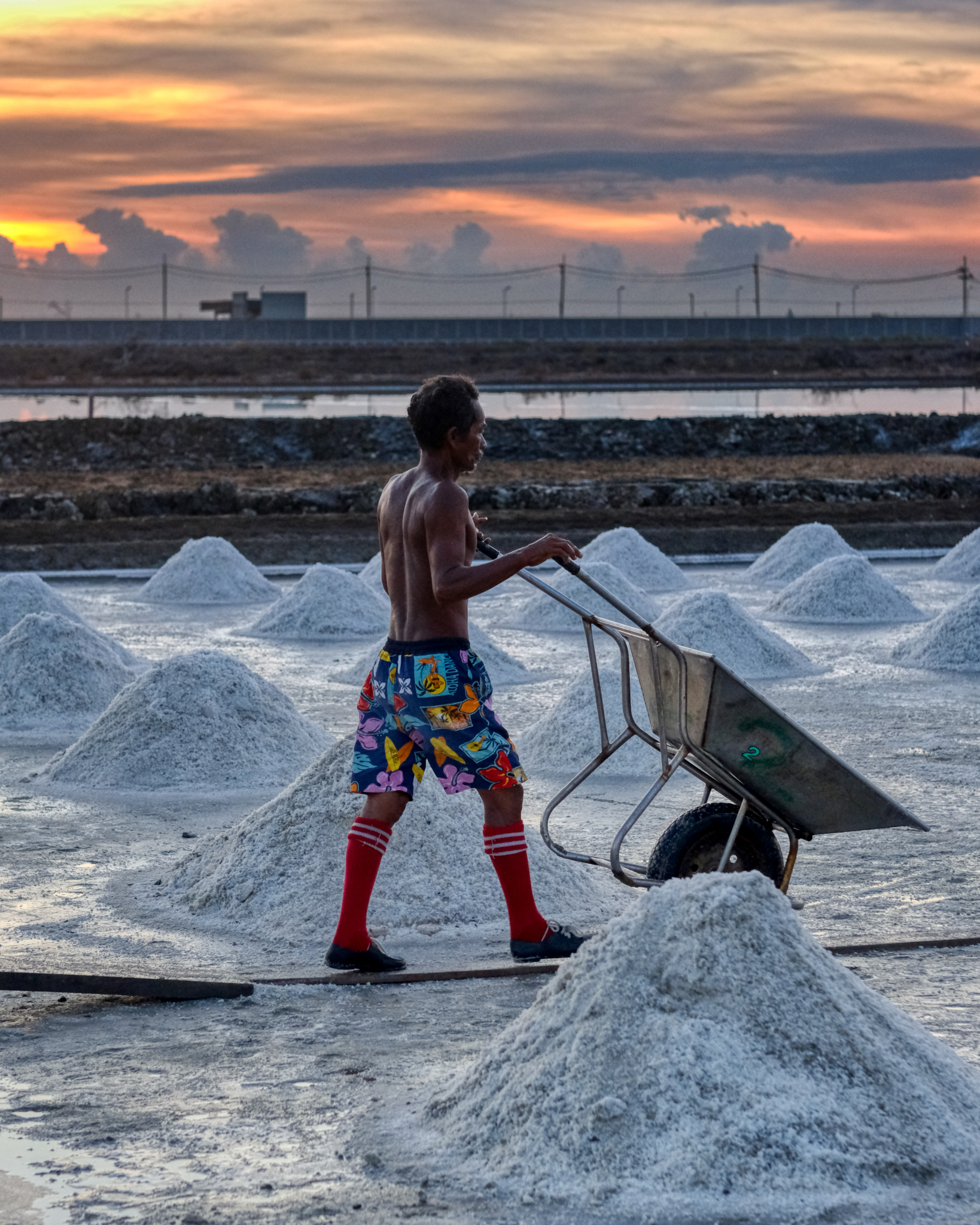 The salt workers were working hard at first light to get as much done before the blistering heat to come.
The salt workers were working hard at first light to get as much done before the blistering heat to come.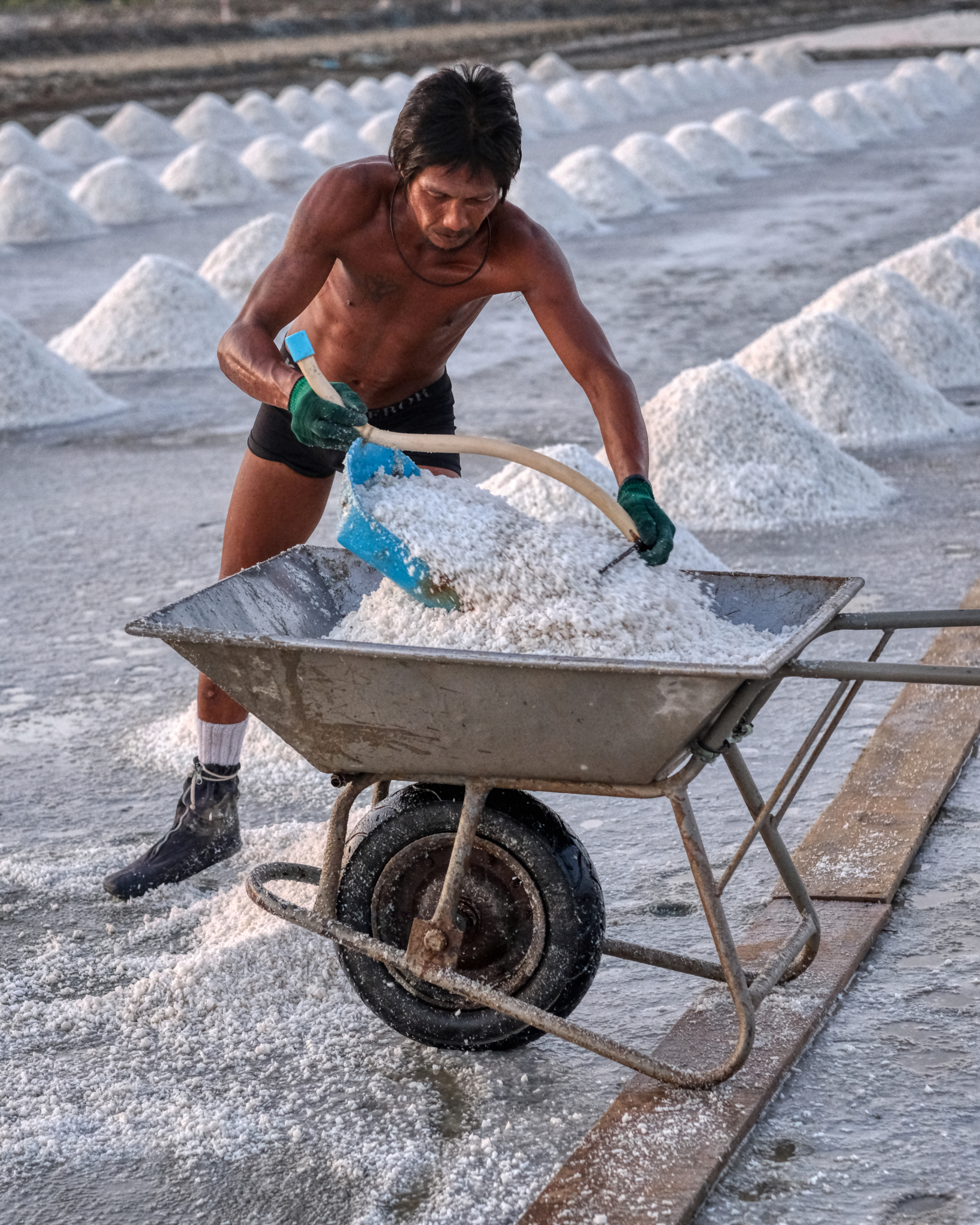 Scooping heavy, damp salt.
Scooping heavy, damp salt.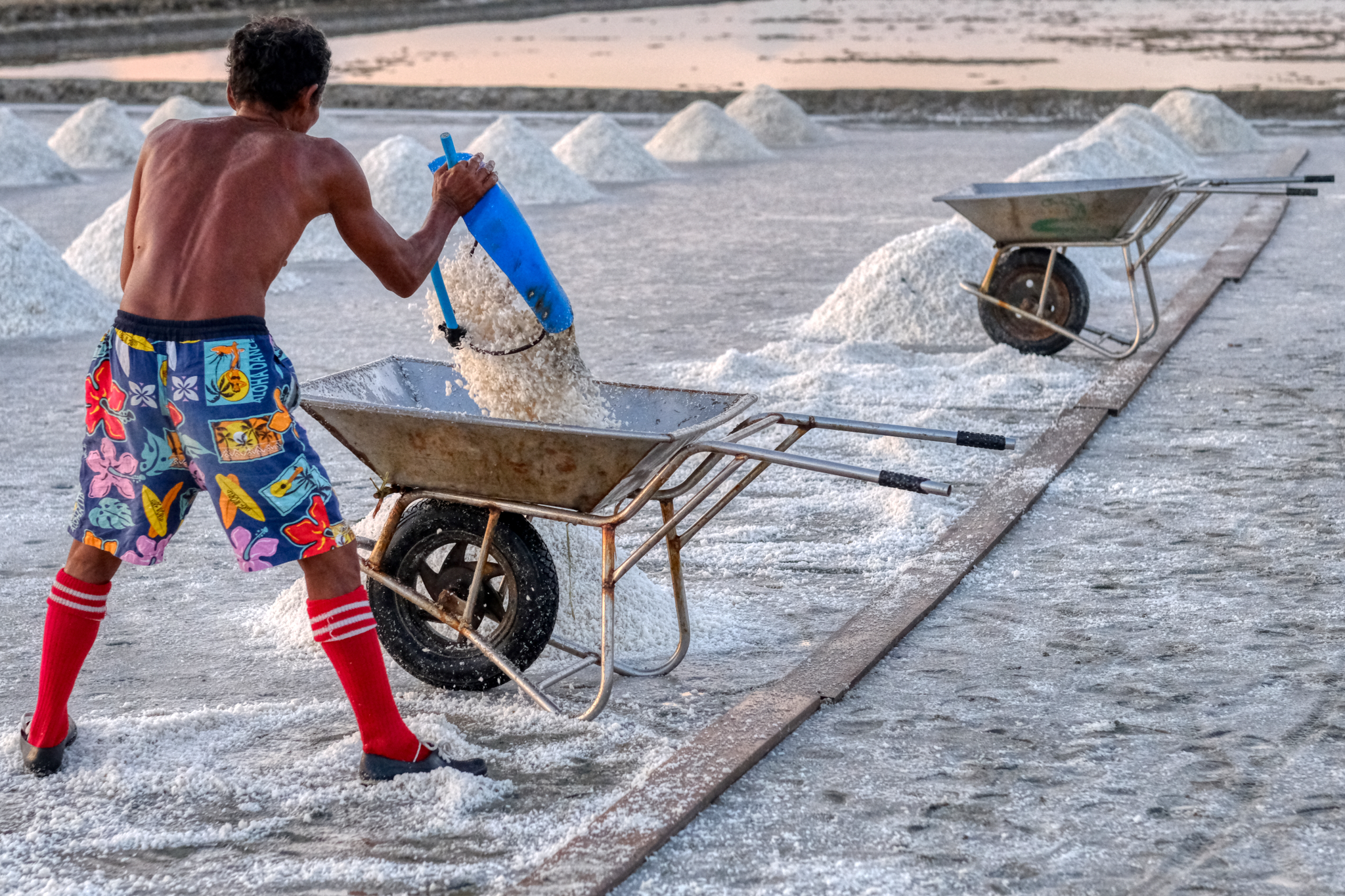 Loading the wheelbarrow for another trip to the highway.
Loading the wheelbarrow for another trip to the highway.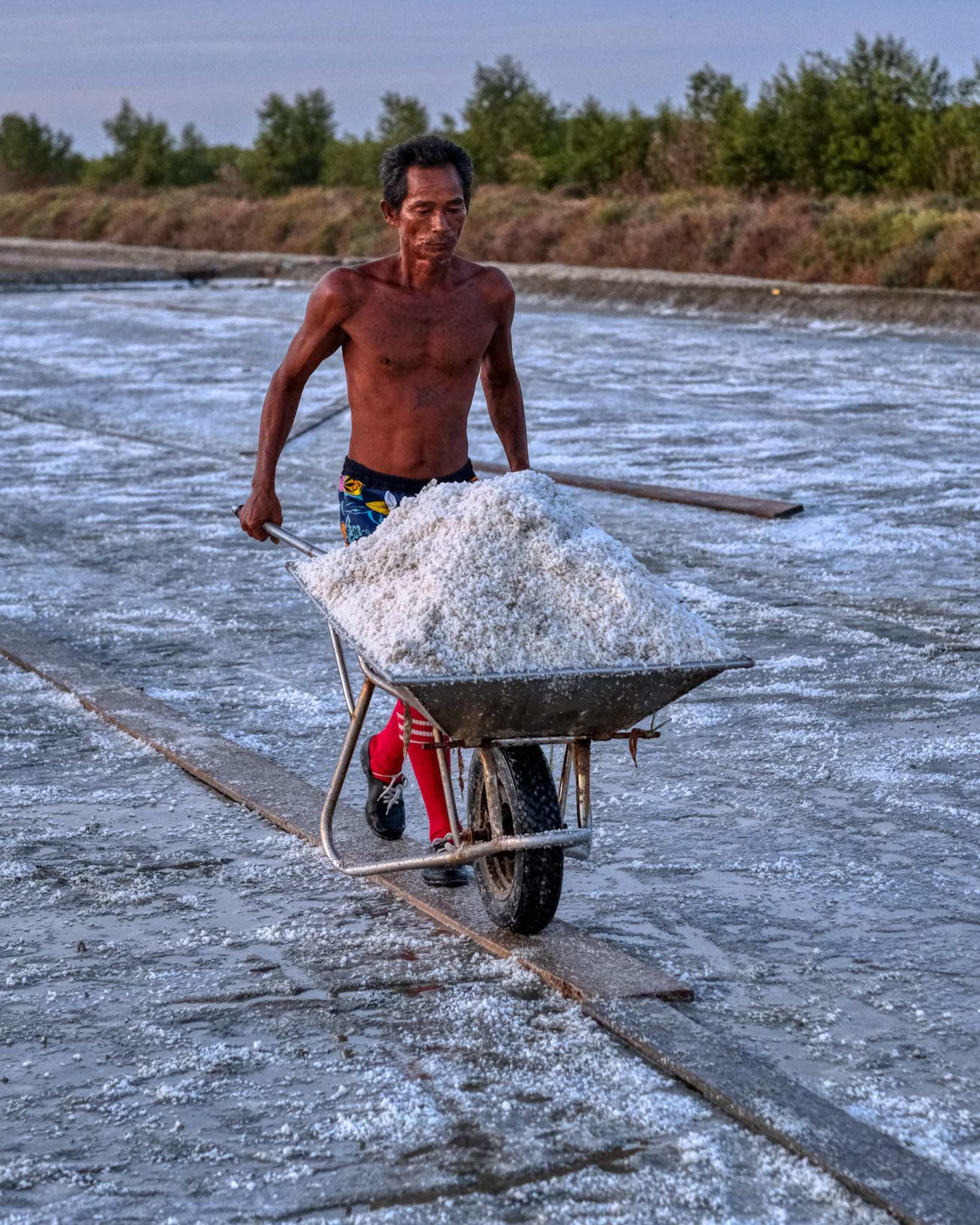 Another load full to wheel out . . .
Another load full to wheel out . . .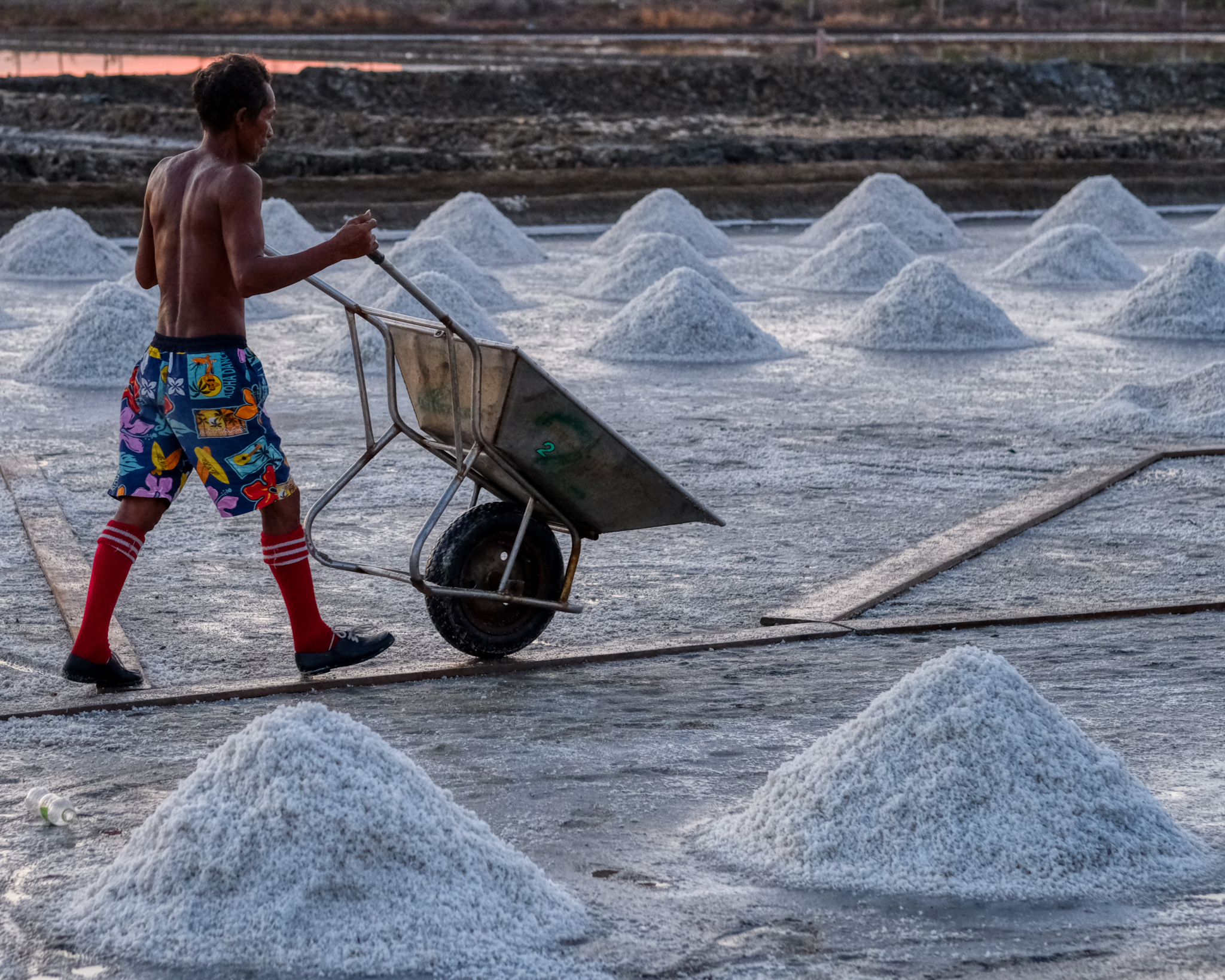 . . . and then back again in an endless loop of scoop, haul, return, scoop . . .
. . . and then back again in an endless loop of scoop, haul, return, scoop . . .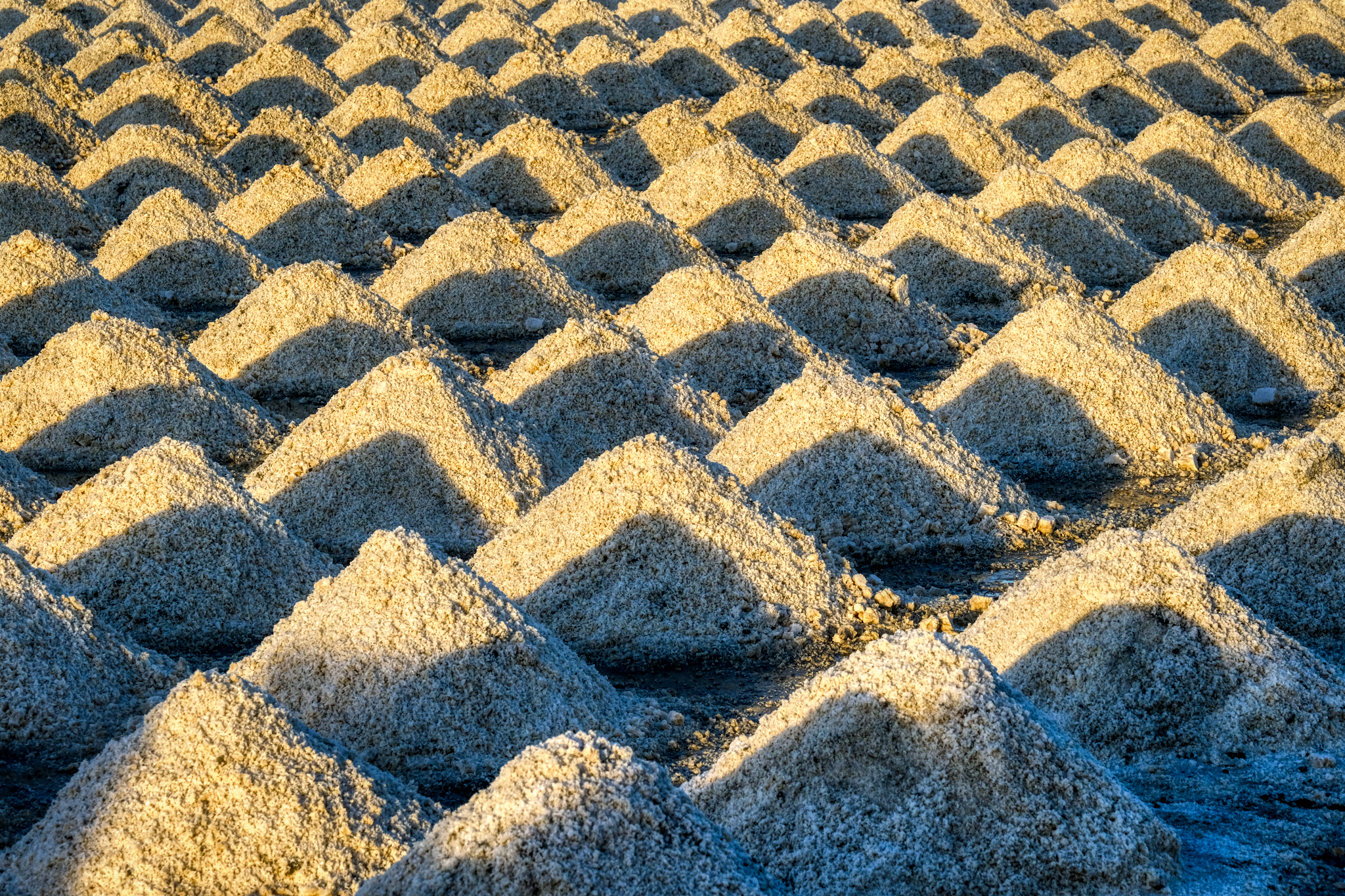 Marvelous patterns of salt cones in the morning magic hour light.
Marvelous patterns of salt cones in the morning magic hour light.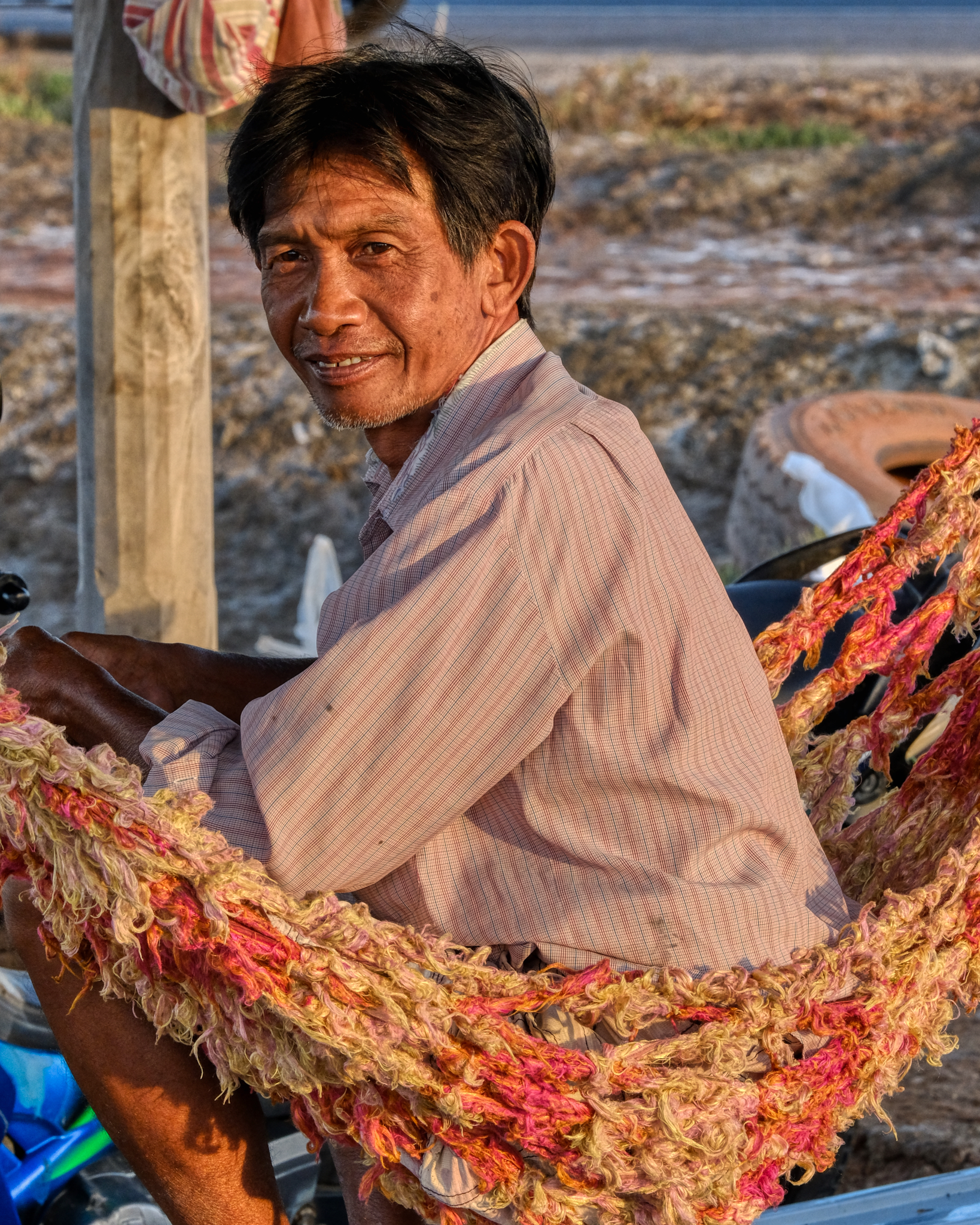 A kindly looking salt worker on a hammock.
A kindly looking salt worker on a hammock.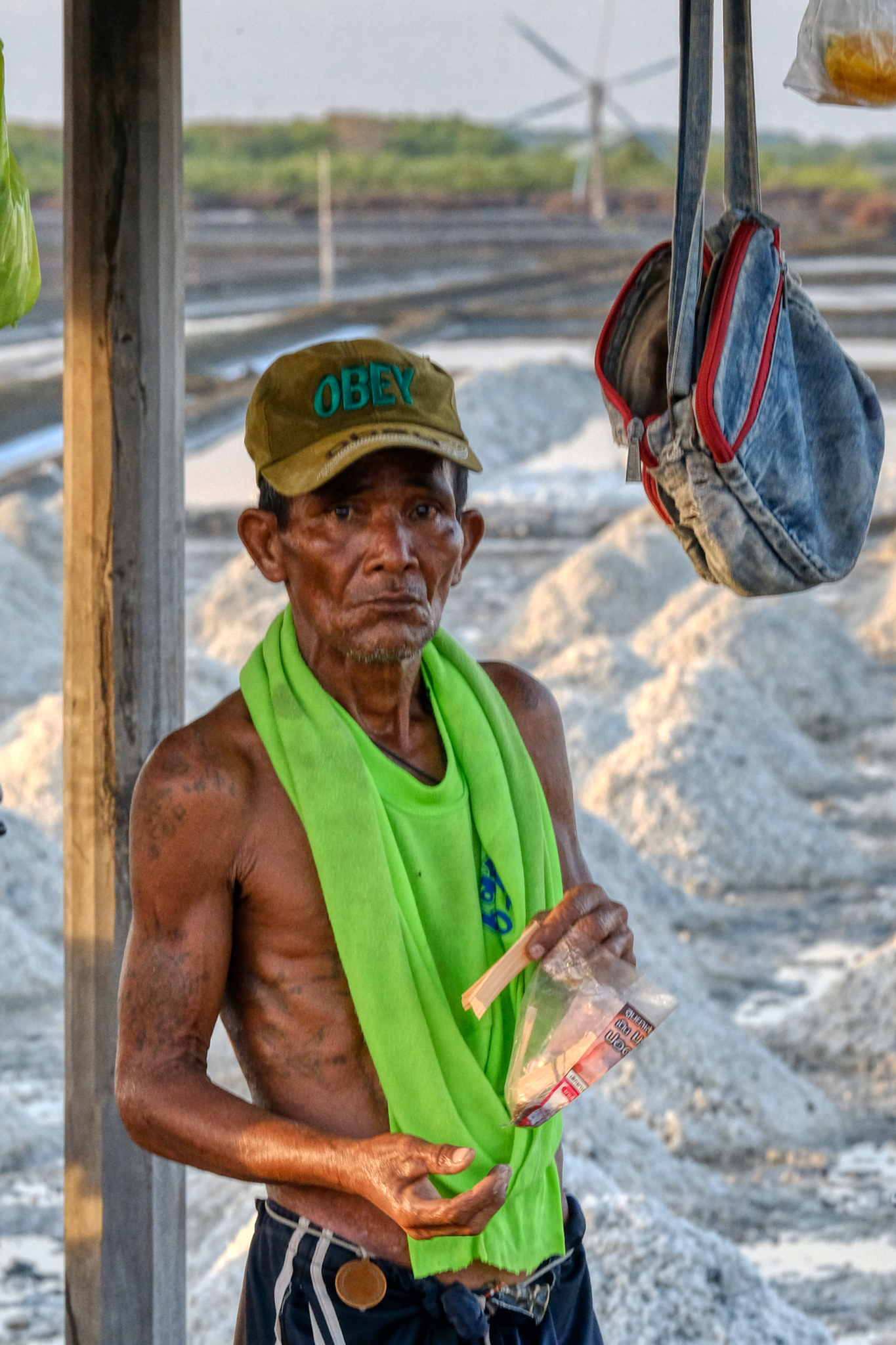 Obey. Indeed.
Obey. Indeed. Meanwhile, in another salt pan down the road . . .
Meanwhile, in another salt pan down the road . . .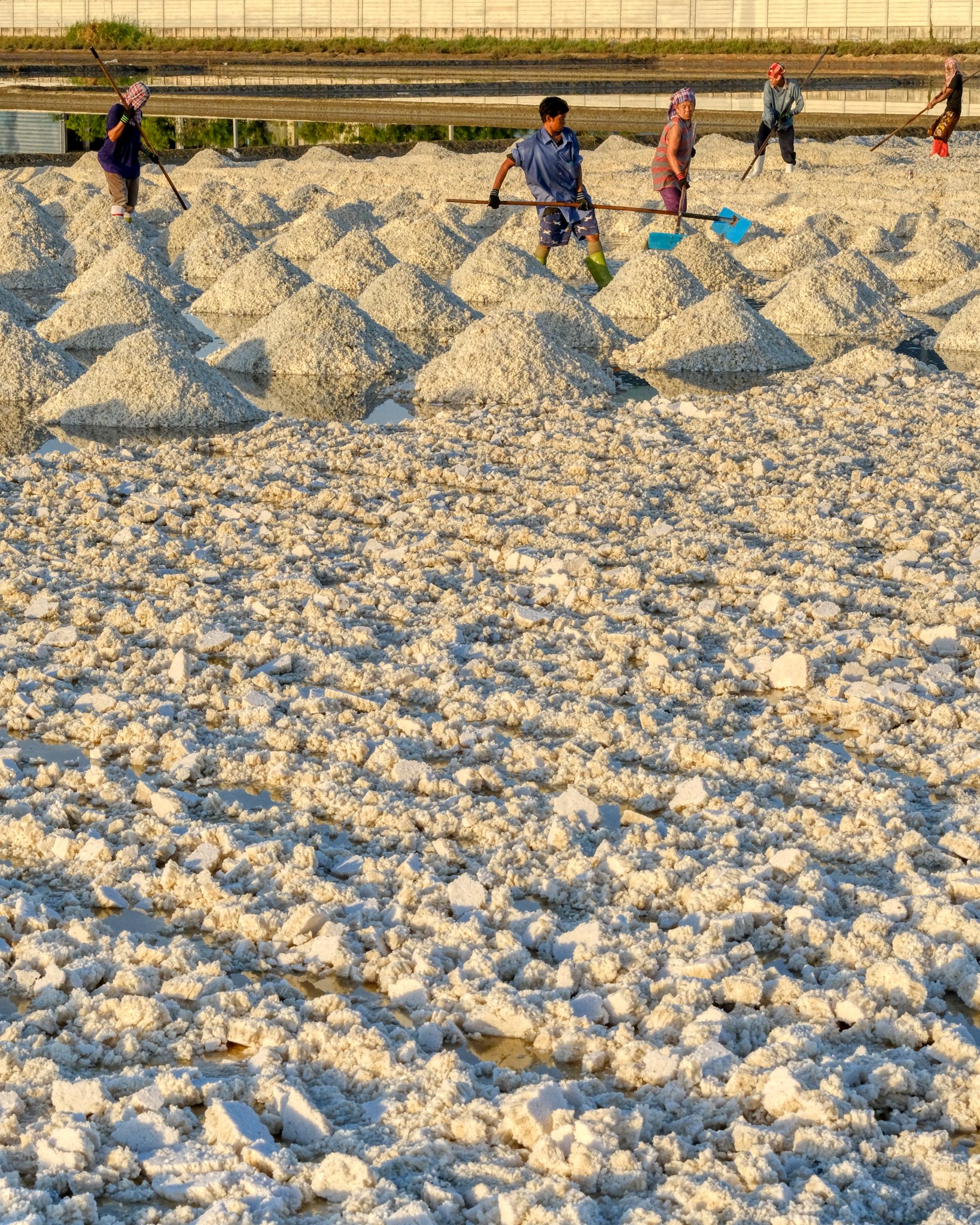 After an hour at the sunrise pans, we drove a kilometer up the road and found a big crew out in a damp pan raking the salt into the cones. Hard work in the morning sun.
After an hour at the sunrise pans, we drove a kilometer up the road and found a big crew out in a damp pan raking the salt into the cones. Hard work in the morning sun.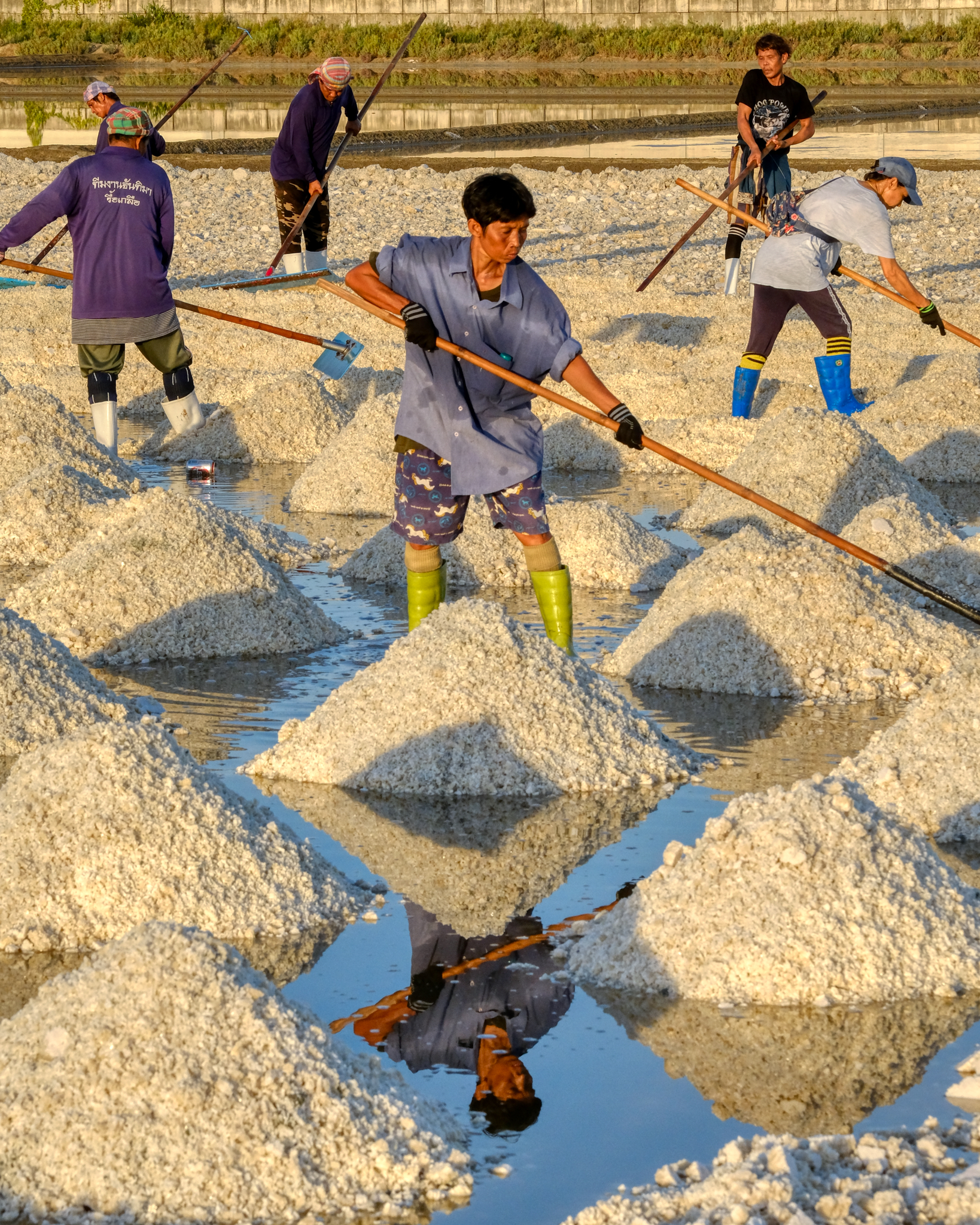 Hard at work while standing in supersaturated salt water.
Hard at work while standing in supersaturated salt water.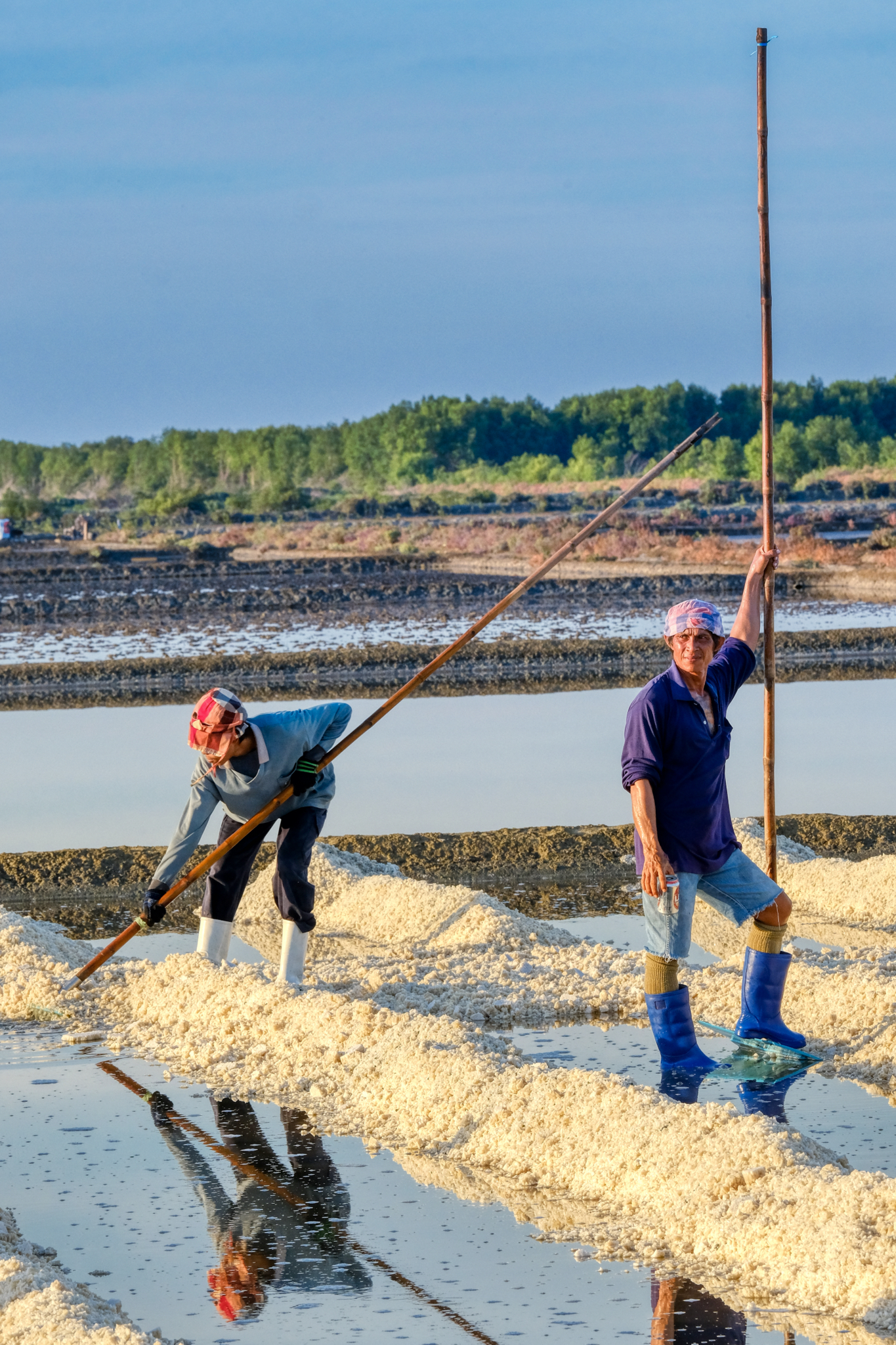 Such a photogenic scene . . . especially when the salt workers pose for you!!!
Such a photogenic scene . . . especially when the salt workers pose for you!!!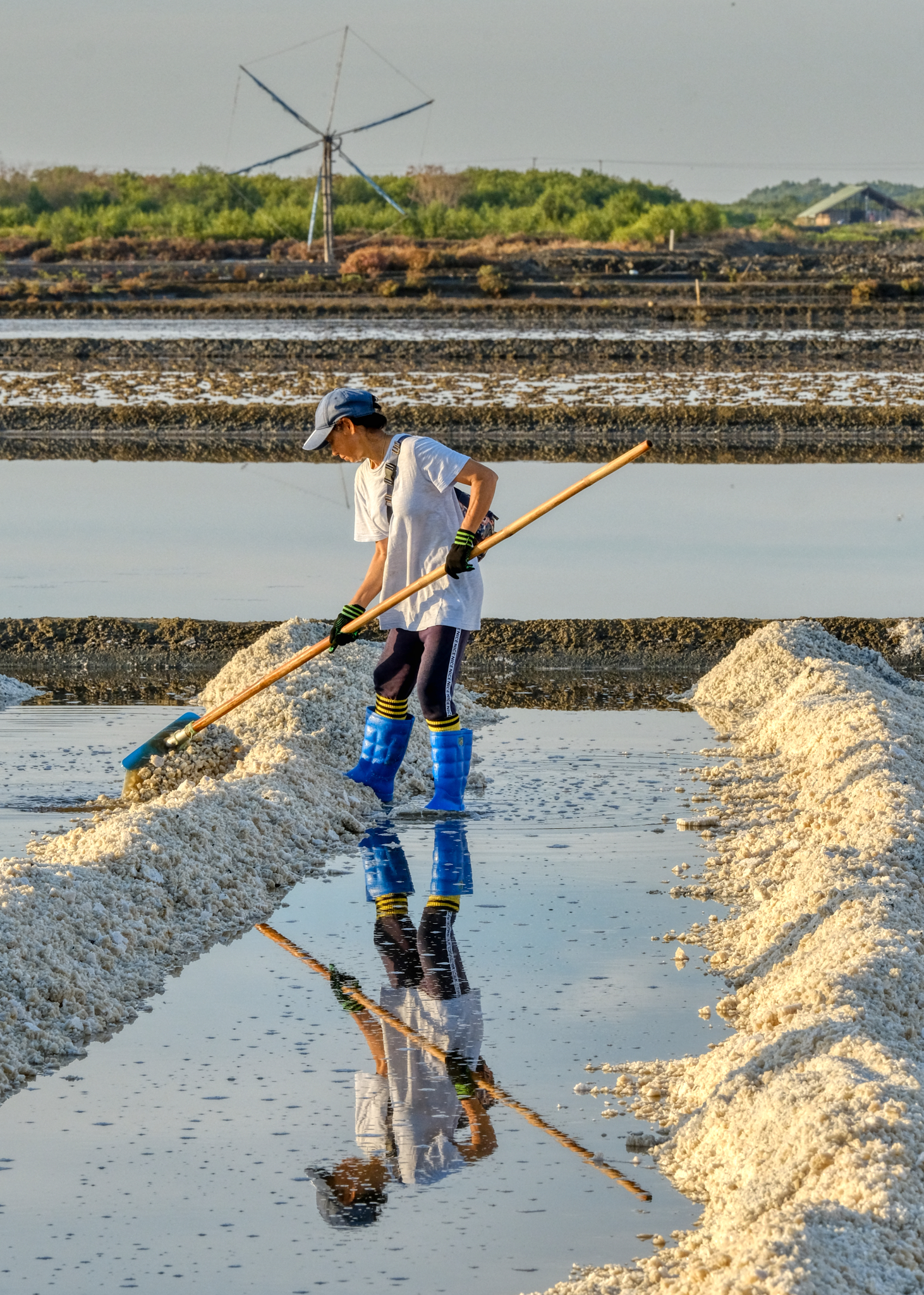 Windmills, salt, humanity, reflections . . .
Windmills, salt, humanity, reflections . . .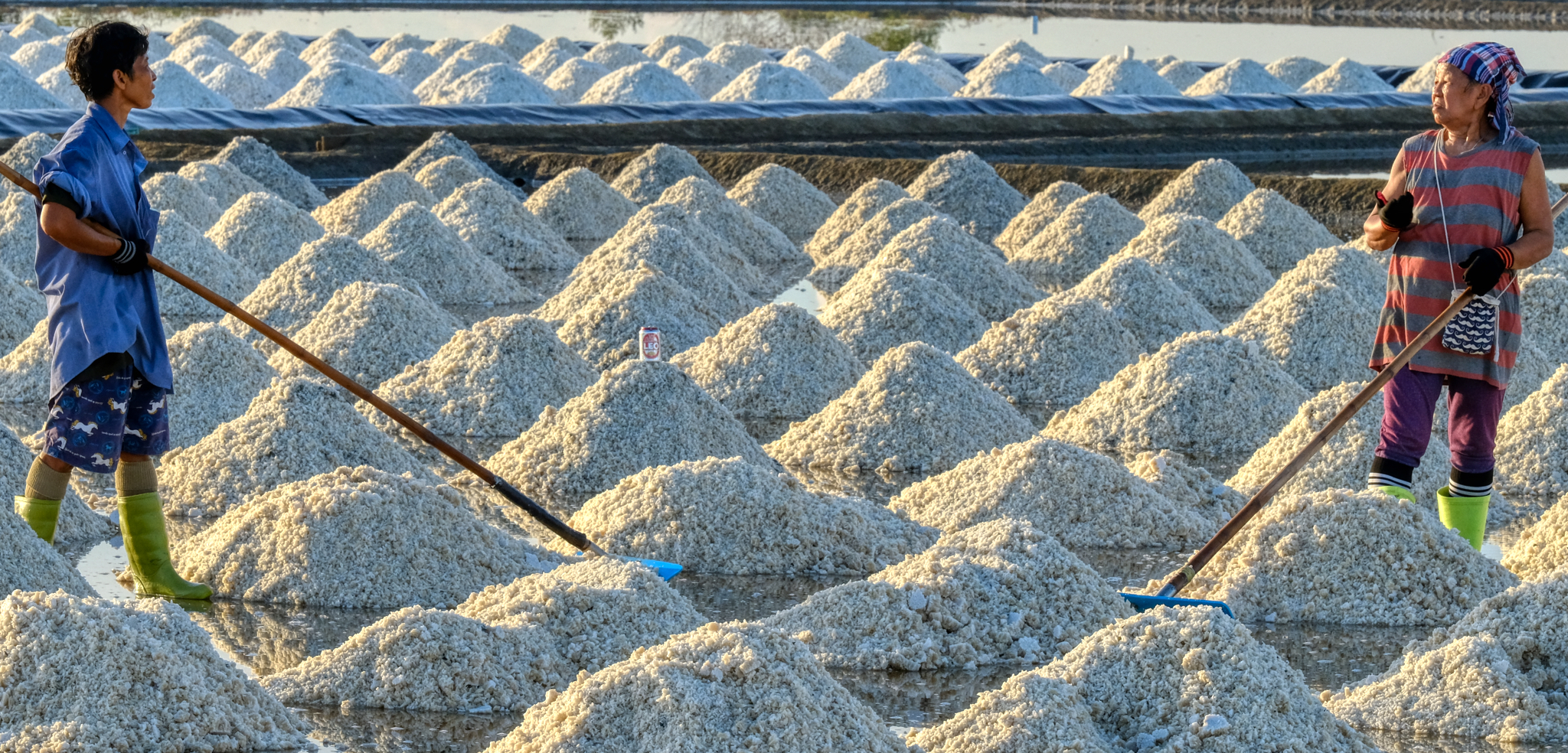 Having a chat while working . . .
Having a chat while working . . . 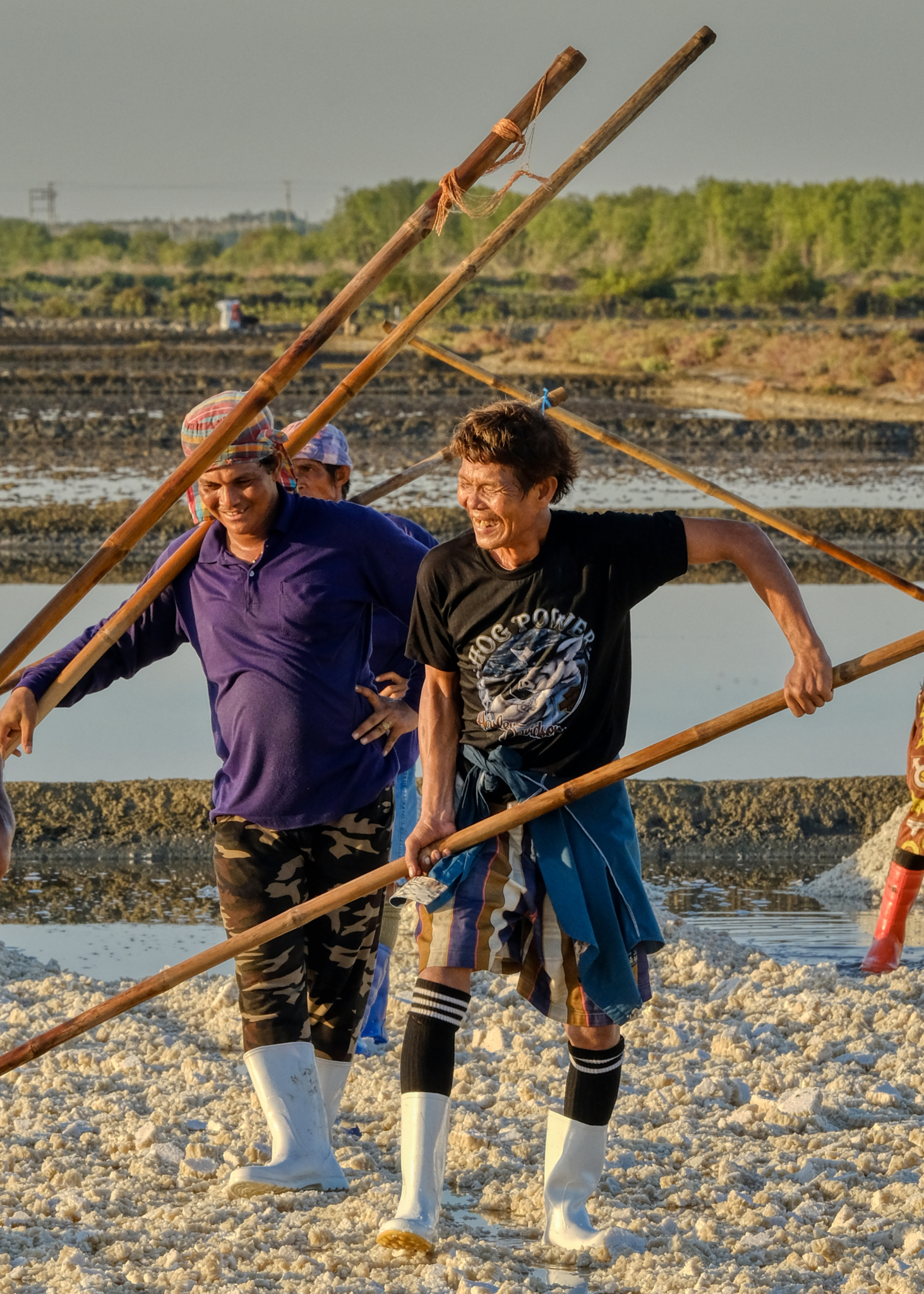 The salt workers seemed to know each other well . . . it's more enjoyable to work while sharing a joke with your friends.
The salt workers seemed to know each other well . . . it's more enjoyable to work while sharing a joke with your friends.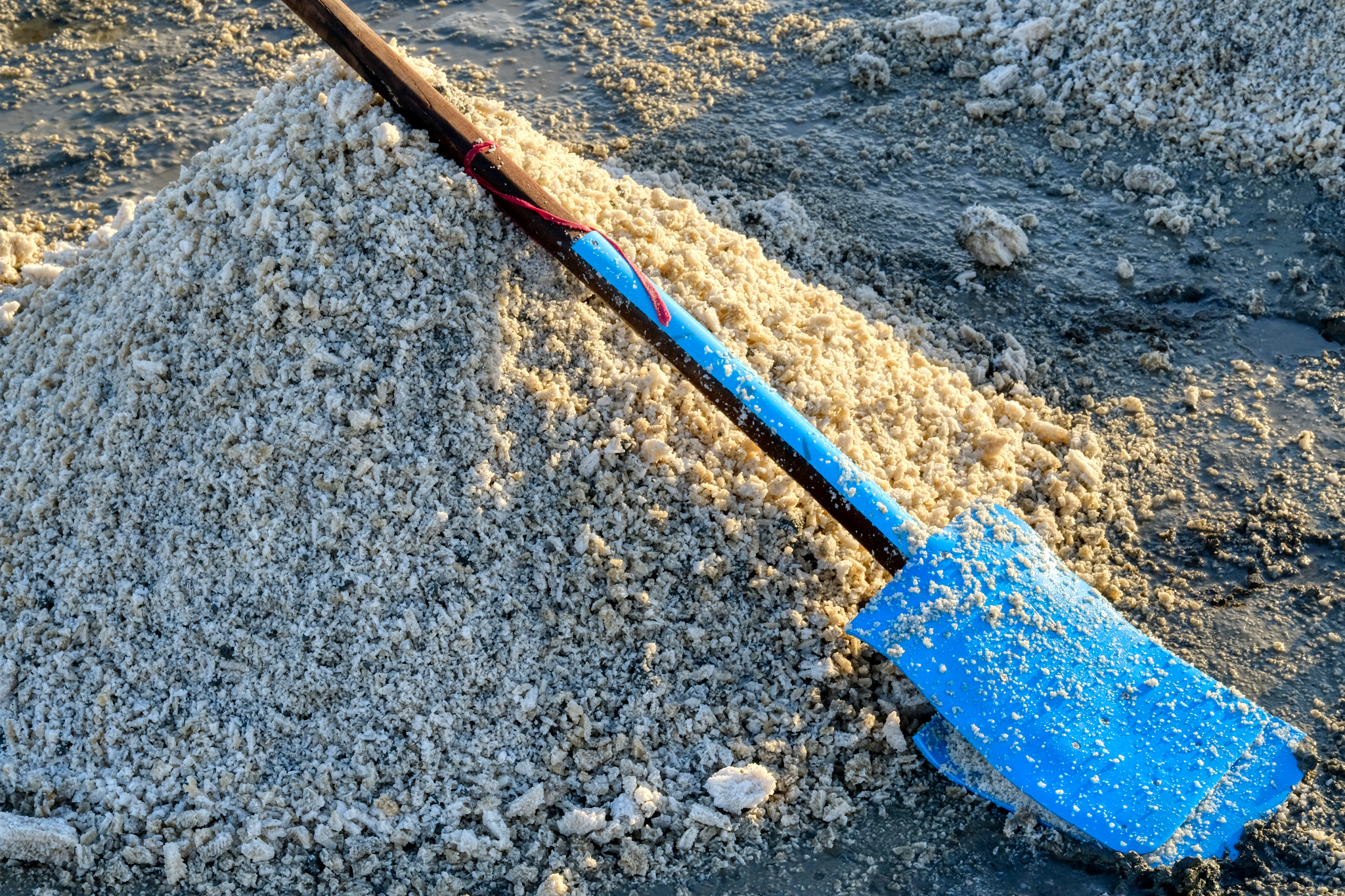 Home made crude scrapers for piling the salt into cones.
Home made crude scrapers for piling the salt into cones.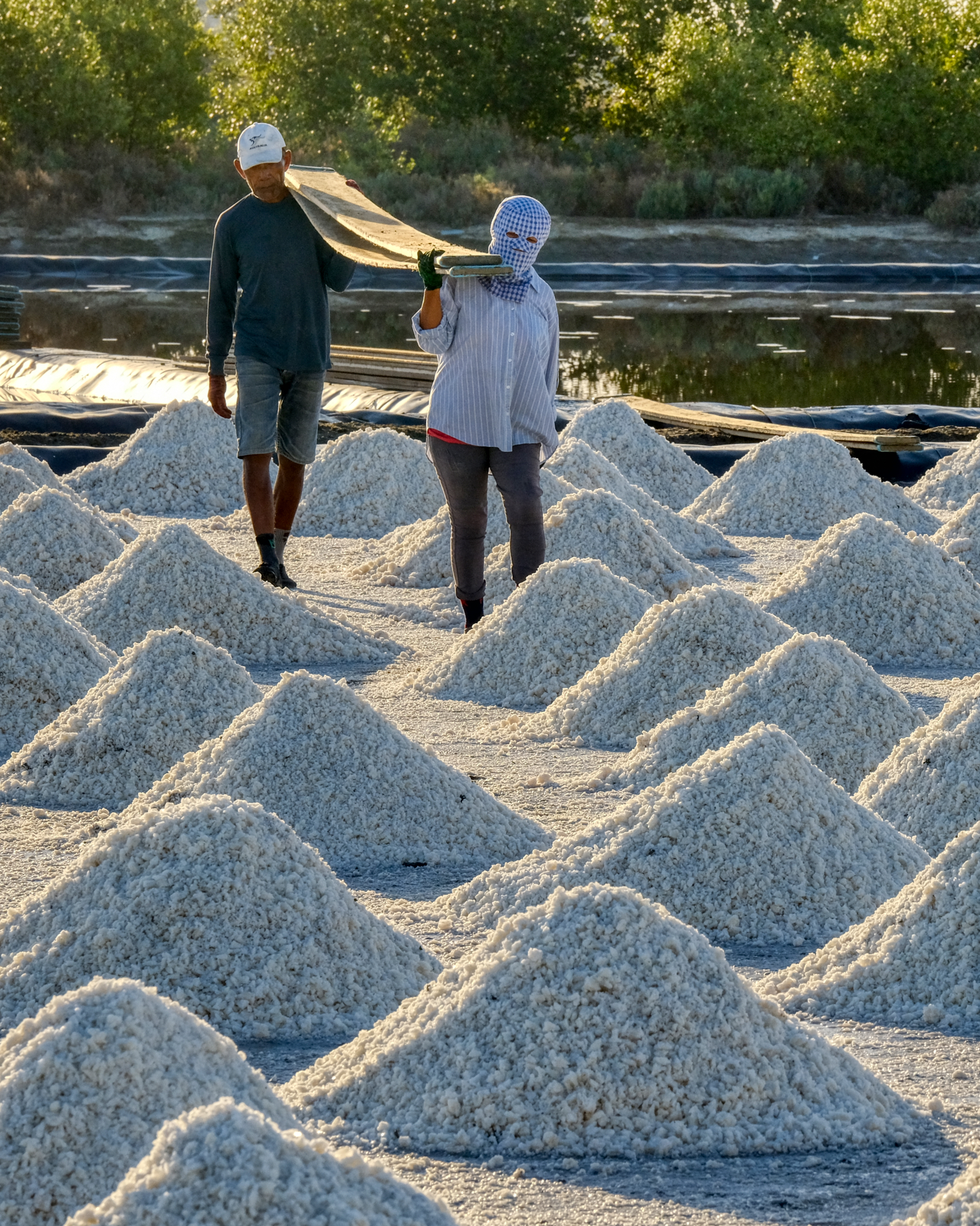 Moving and placing heavy planks for the wheelbarrows that will come to remove the salt from the pans.
Moving and placing heavy planks for the wheelbarrows that will come to remove the salt from the pans.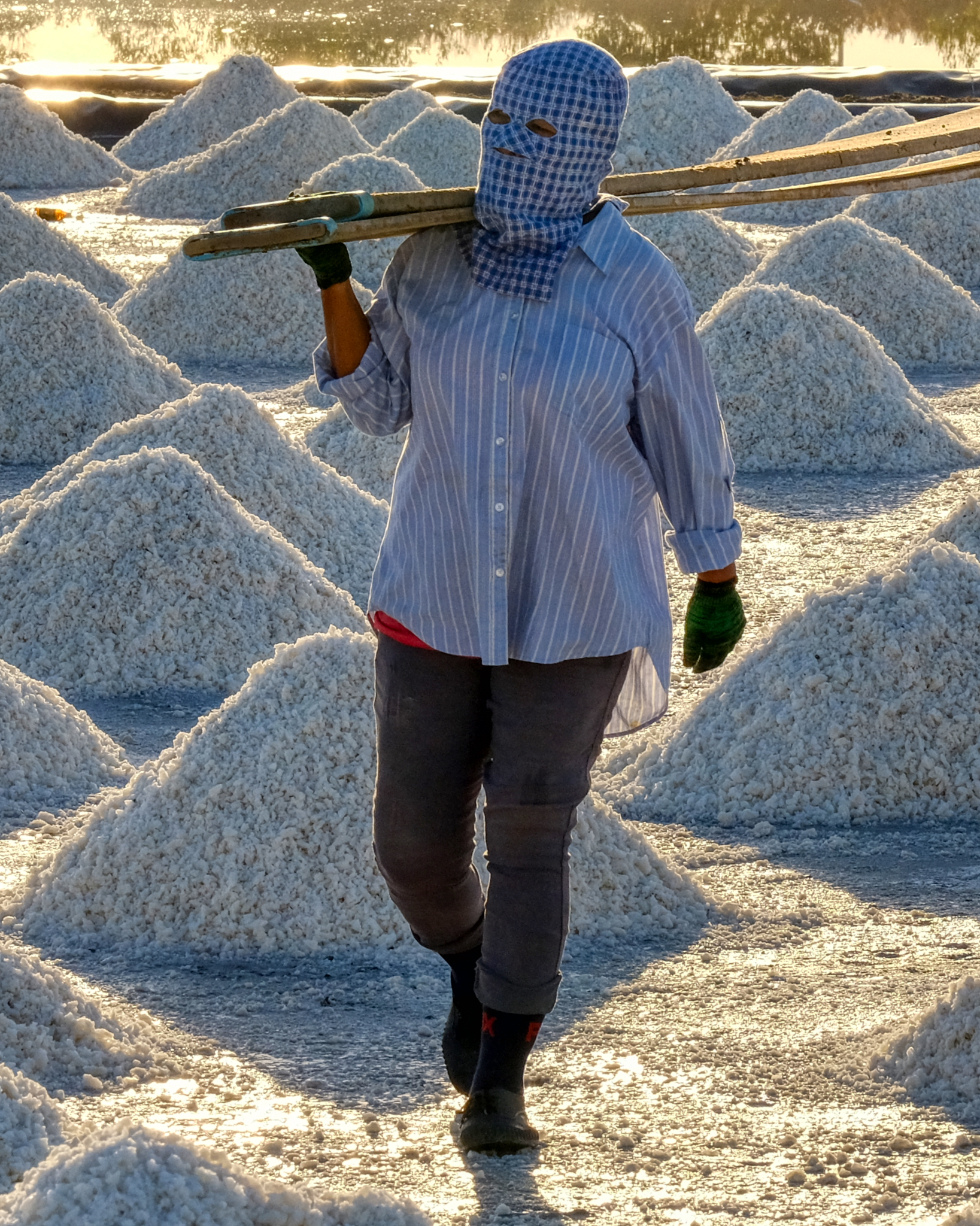 Protection from the sun . . . .
Protection from the sun . . . .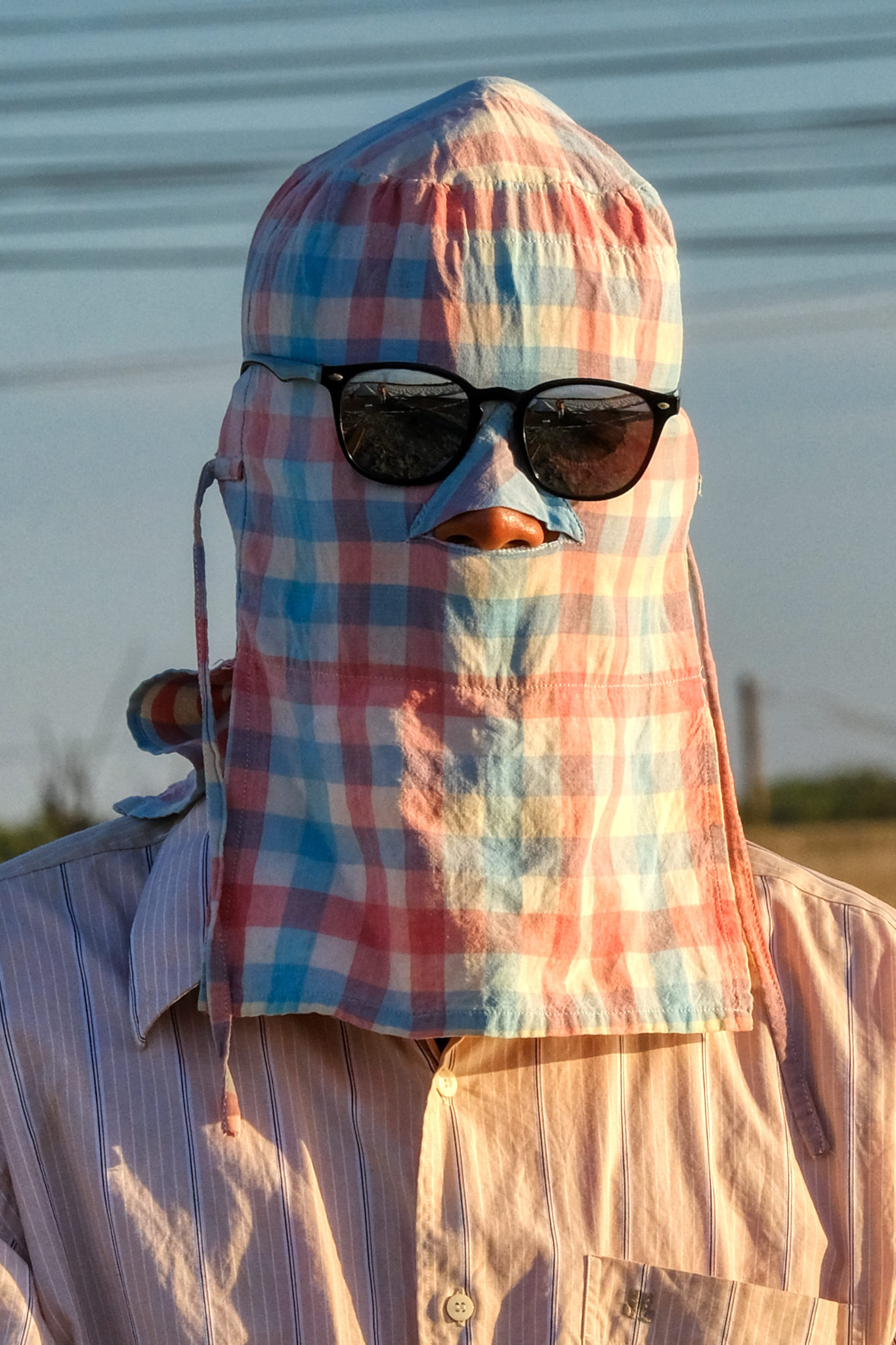 Extreme sun protection . . . it must be very hot under that hood in this oppressive heat and humidity.
Extreme sun protection . . . it must be very hot under that hood in this oppressive heat and humidity.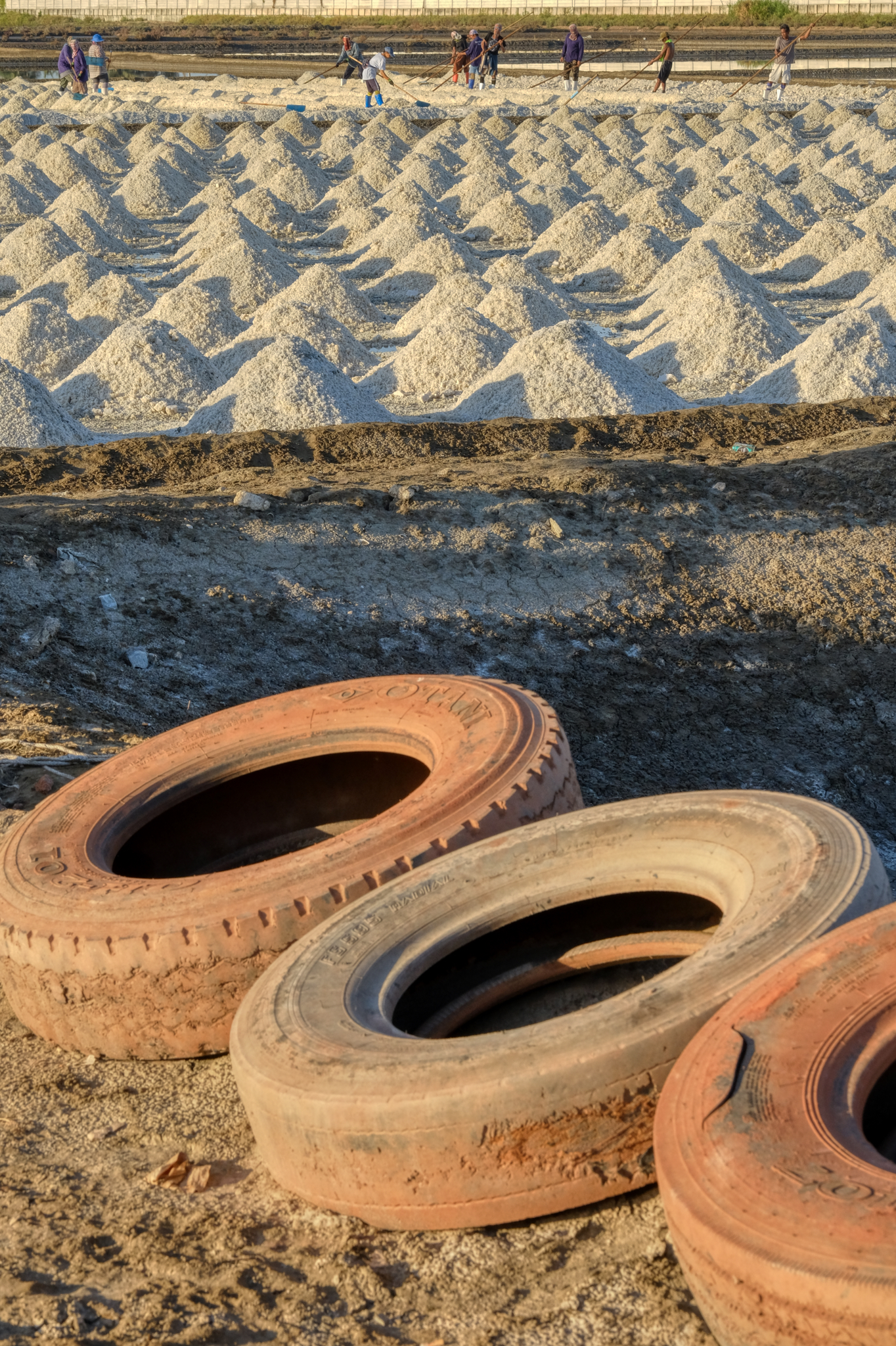 The is much to see in the area, so we moved on . . .
The is much to see in the area, so we moved on . . .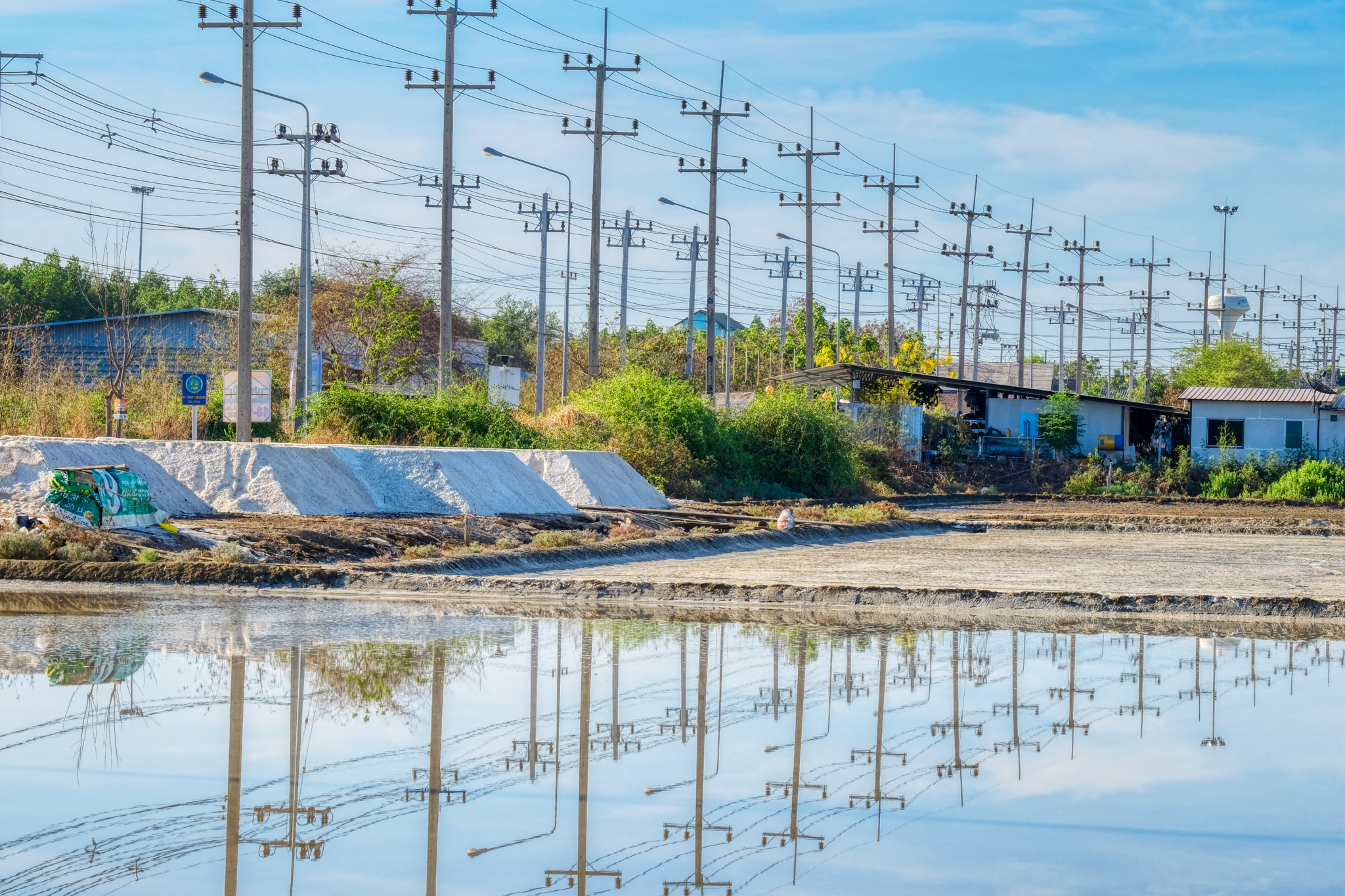 Rural roads are few and far between - valuable land is not used up for roads. As such, the roads that do exist serve for arterials for power, phone, and water. This is Thai local highway 2001.
Rural roads are few and far between - valuable land is not used up for roads. As such, the roads that do exist serve for arterials for power, phone, and water. This is Thai local highway 2001.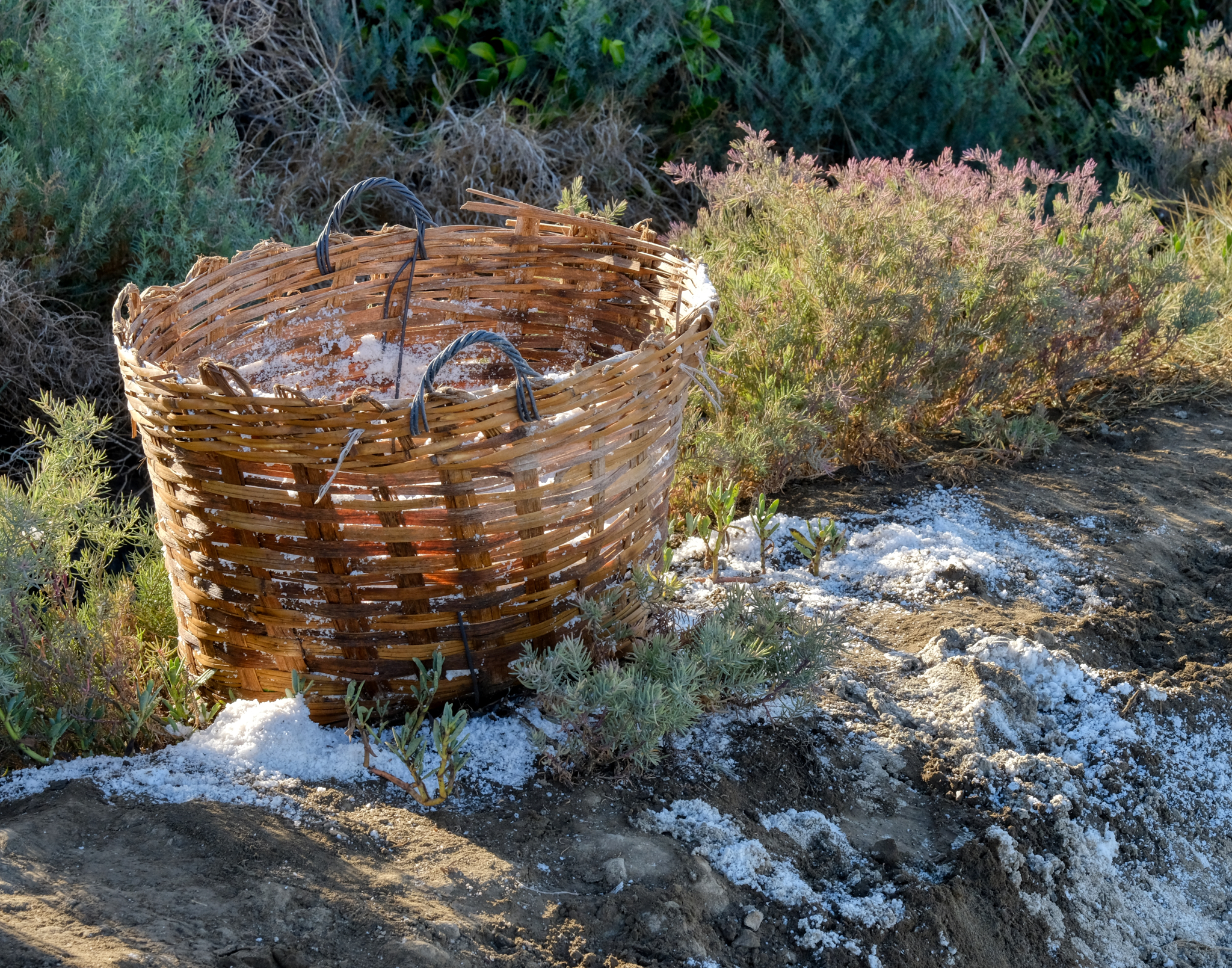 In the next salt pan, baskets were used to collect a special salt from the surface.
In the next salt pan, baskets were used to collect a special salt from the surface.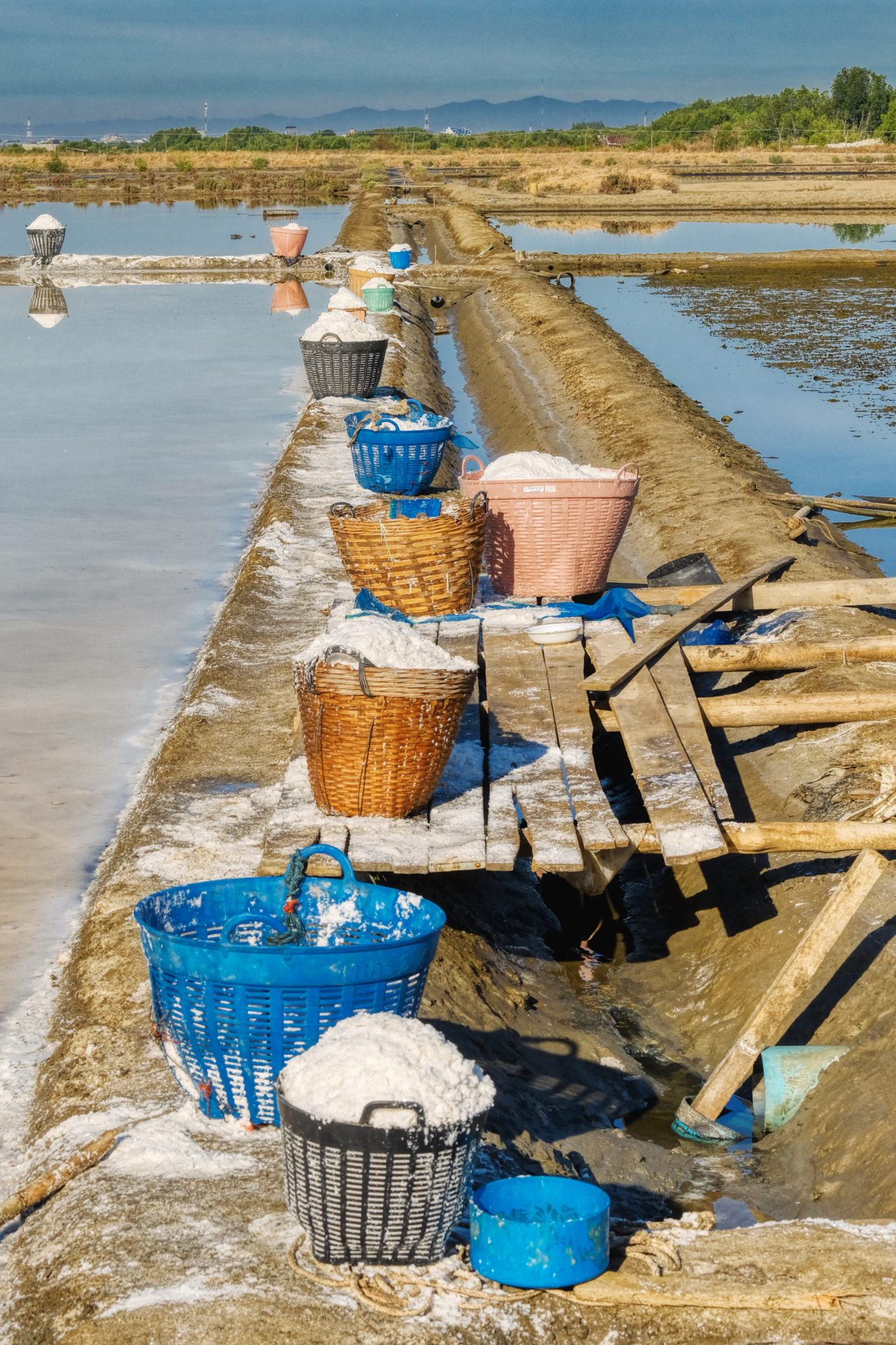 Ongoing salt harvesting.
Ongoing salt harvesting.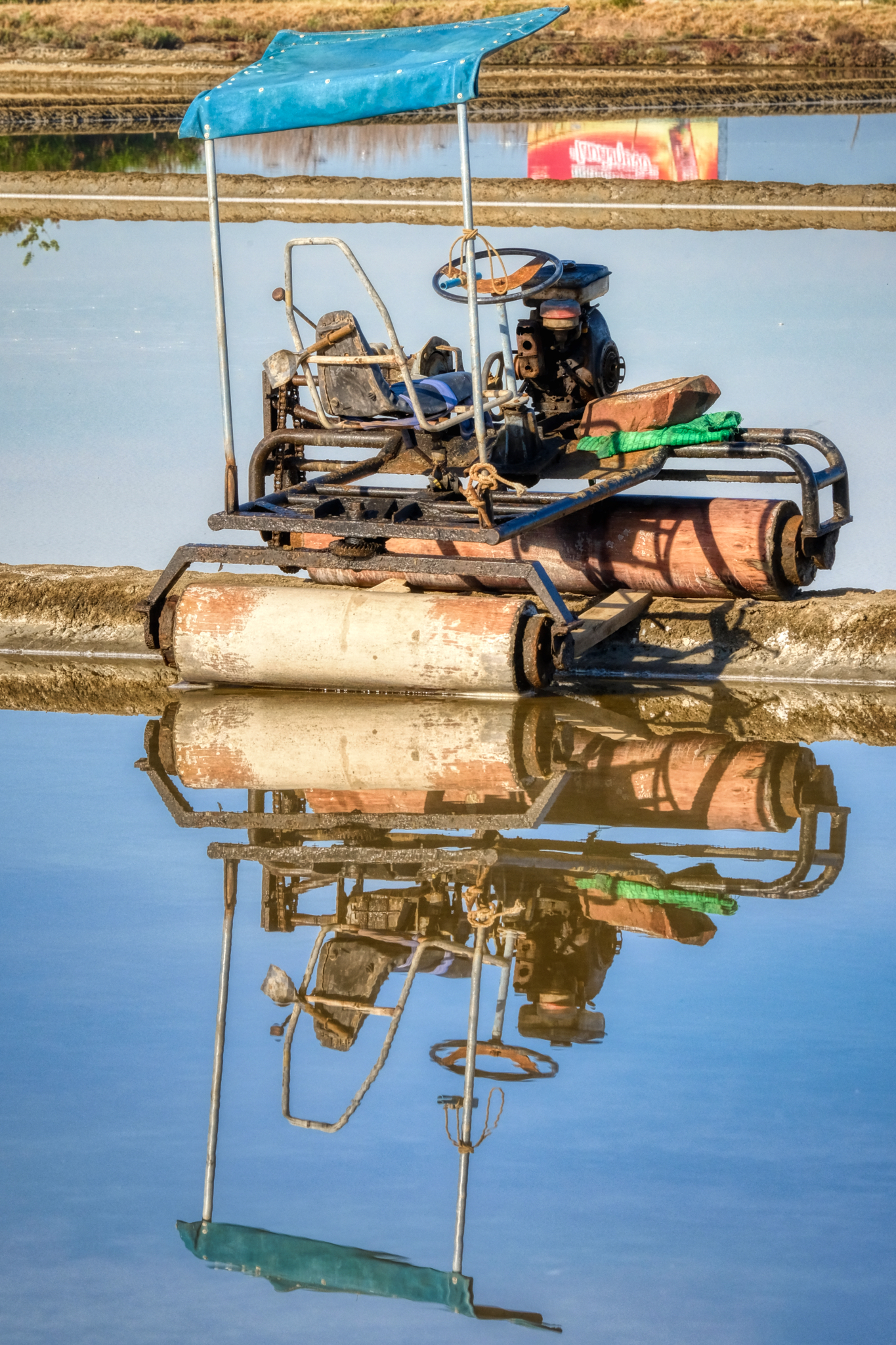 I love these amazing contraptions . . . used to flatten the pans after the salt has been removed.
I love these amazing contraptions . . . used to flatten the pans after the salt has been removed.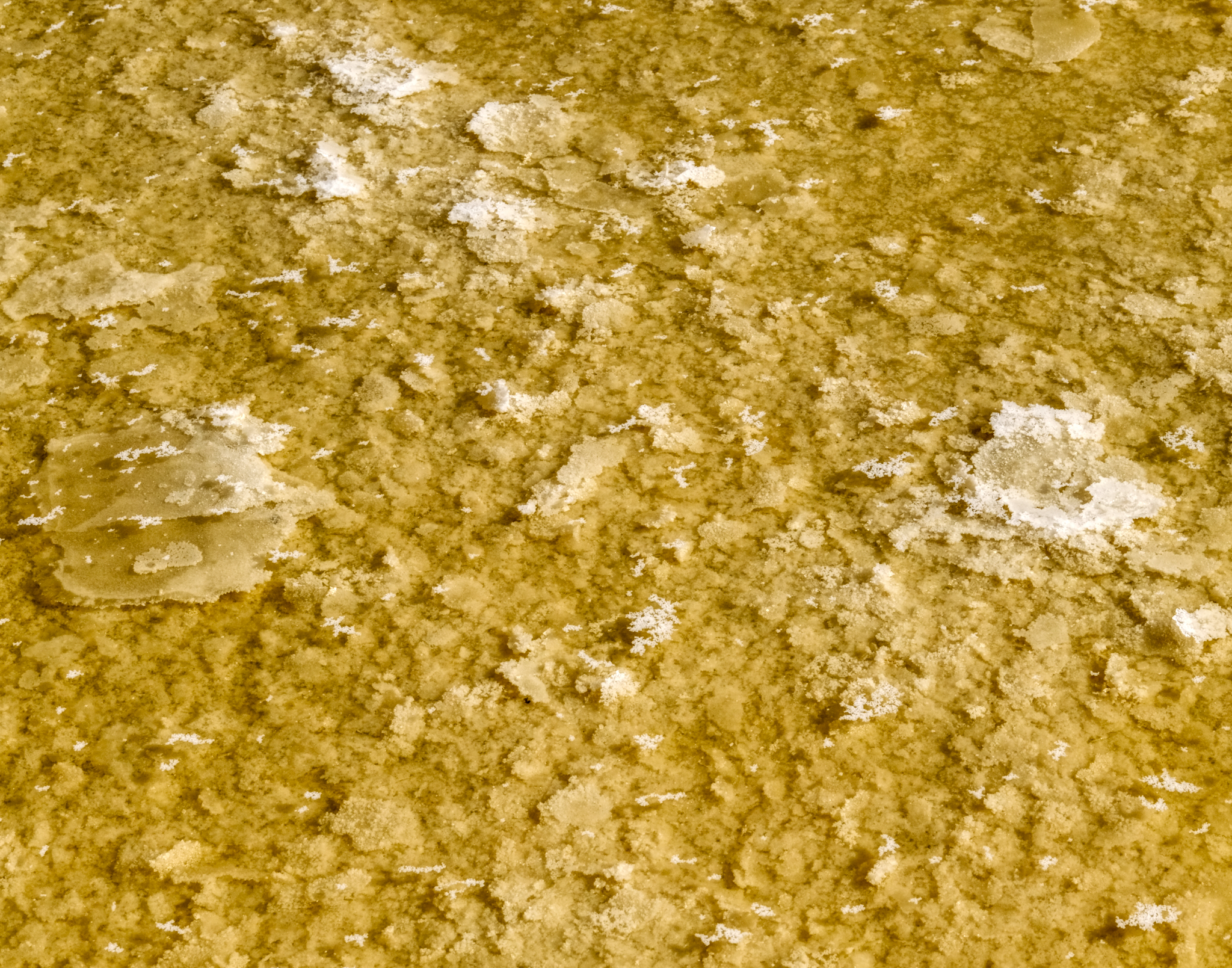 This is a rare (and valuable) form of flake salt favored by chefs . . . it floats on top of the supersaturated pans and is harvested in baskets (above).
This is a rare (and valuable) form of flake salt favored by chefs . . . it floats on top of the supersaturated pans and is harvested in baskets (above).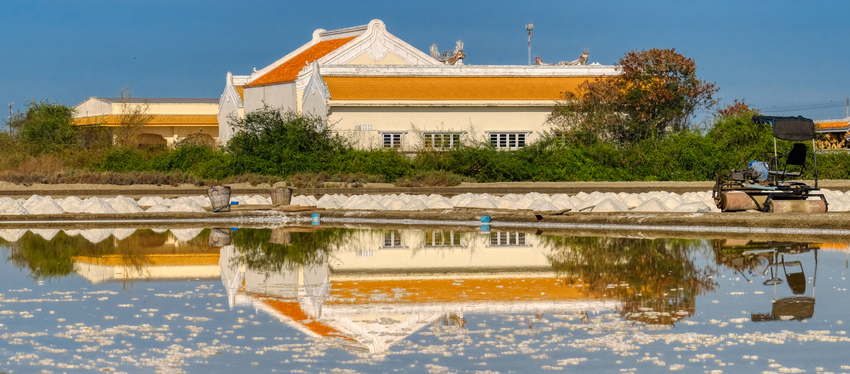 A beautiful Chinese-style Buddhist temple reflected in the salt pans.
A beautiful Chinese-style Buddhist temple reflected in the salt pans.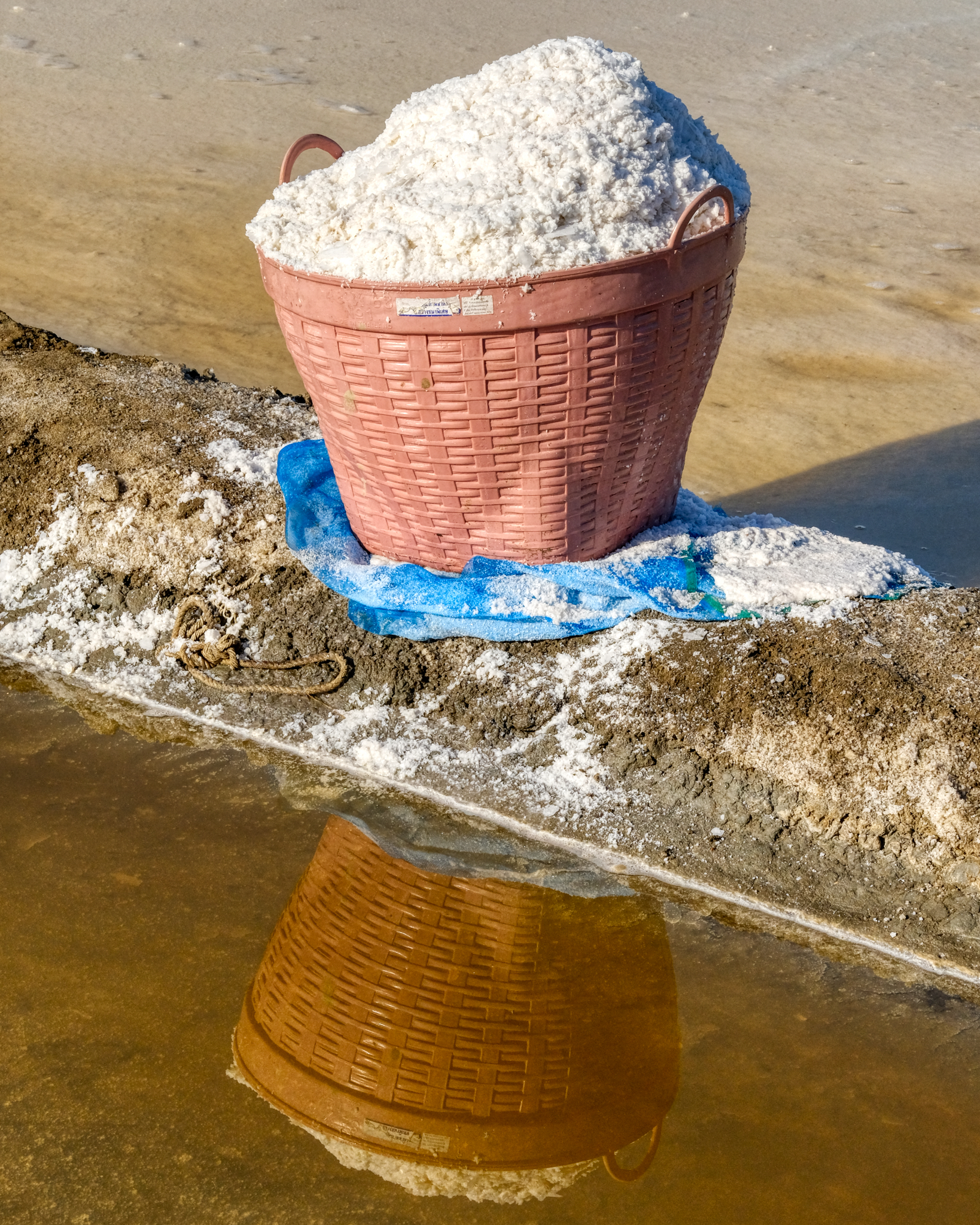 Light and flakey salt -- very valuable and sought after.
Light and flakey salt -- very valuable and sought after.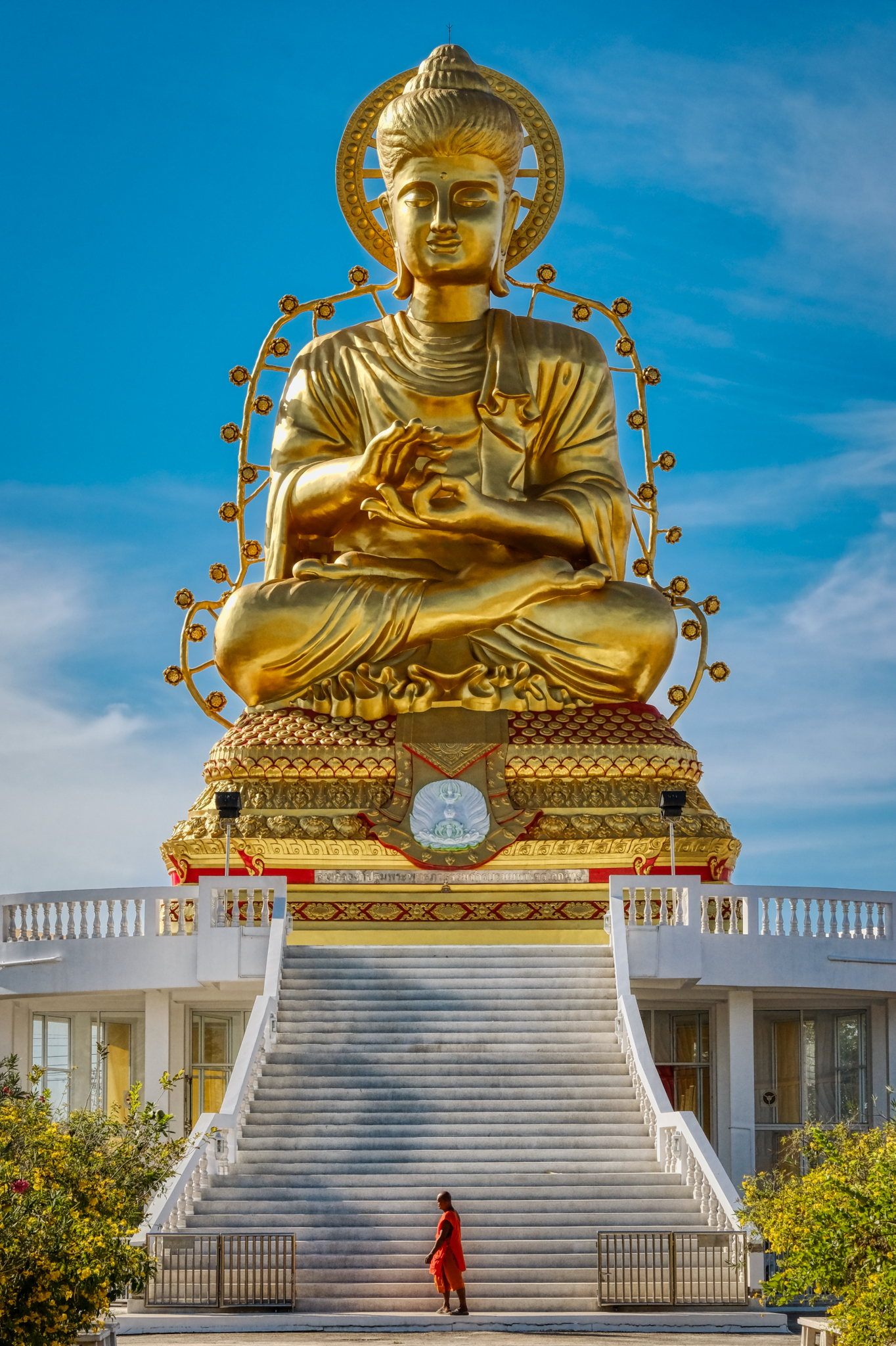 Directly across from the flake salt gathering was the Buddhist Wat I came to see after 5 years . . . . Wat Lat Yai with the Buddha colossus.
Directly across from the flake salt gathering was the Buddhist Wat I came to see after 5 years . . . . Wat Lat Yai with the Buddha colossus. 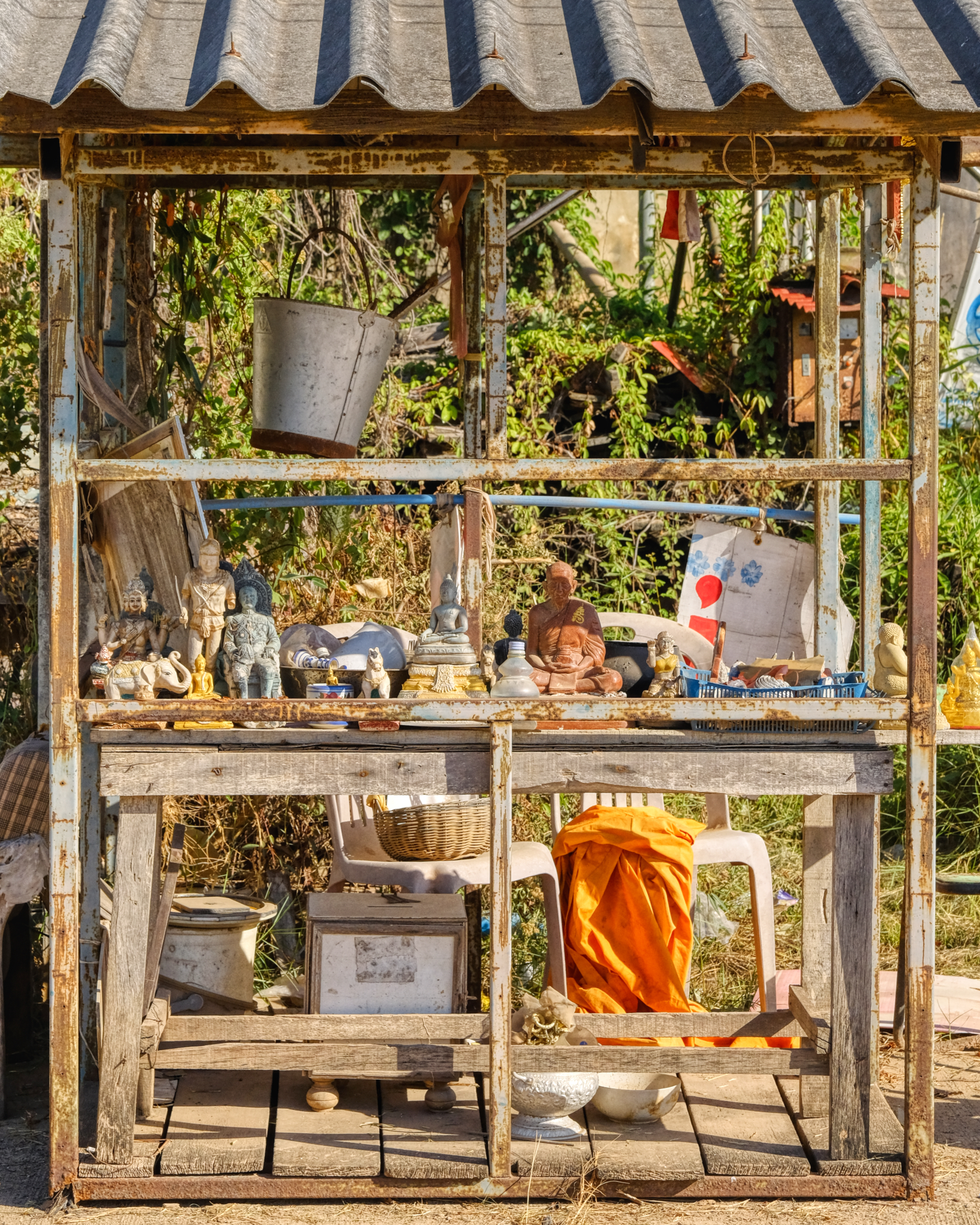 I had such wonderful memories of the spirituality of this Wat when I last visited. There are always interesting and unexpected things to see in a Wat. Some of what you see are what the monks themselves have arranged (like this small altar), but most of what is seen in a Wat are the results of what the big, rich donors want there to be.
I had such wonderful memories of the spirituality of this Wat when I last visited. There are always interesting and unexpected things to see in a Wat. Some of what you see are what the monks themselves have arranged (like this small altar), but most of what is seen in a Wat are the results of what the big, rich donors want there to be.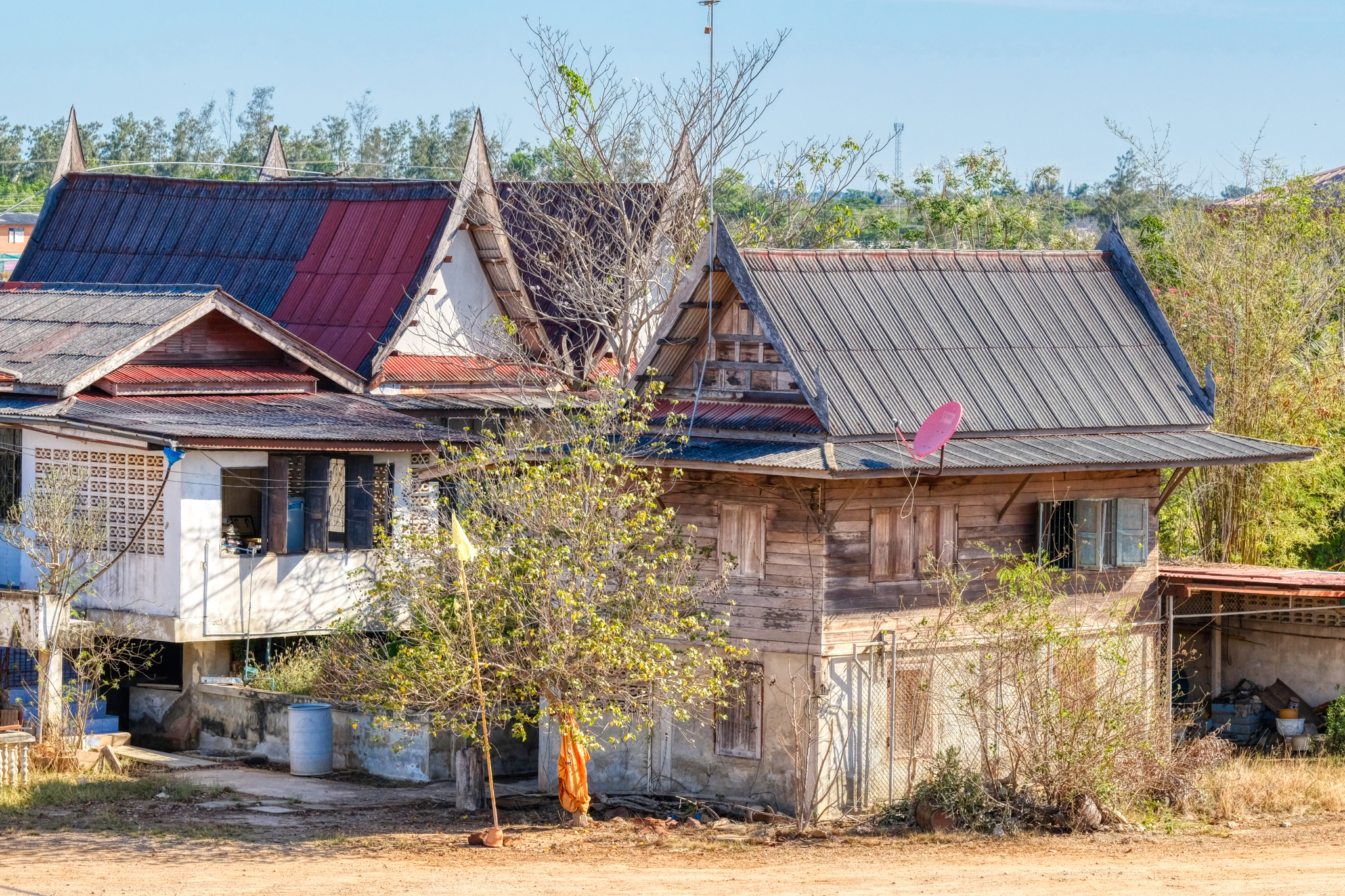 The surviving old monk quarters. I am always amazed to see a satellite dish in a Buddhist temple . . .
The surviving old monk quarters. I am always amazed to see a satellite dish in a Buddhist temple . . . 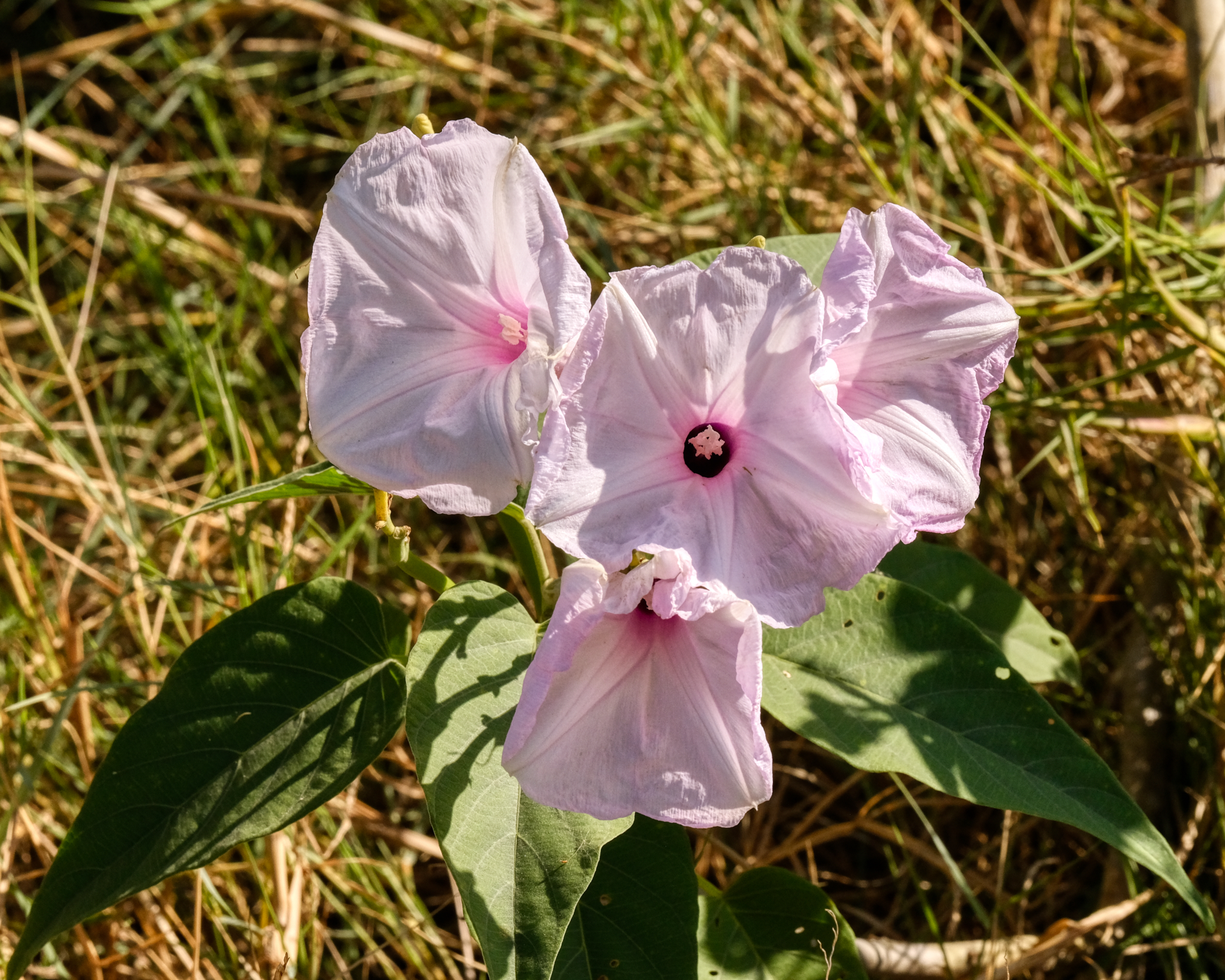 Always beautiful flowers to be seen in a Wat.
Always beautiful flowers to be seen in a Wat.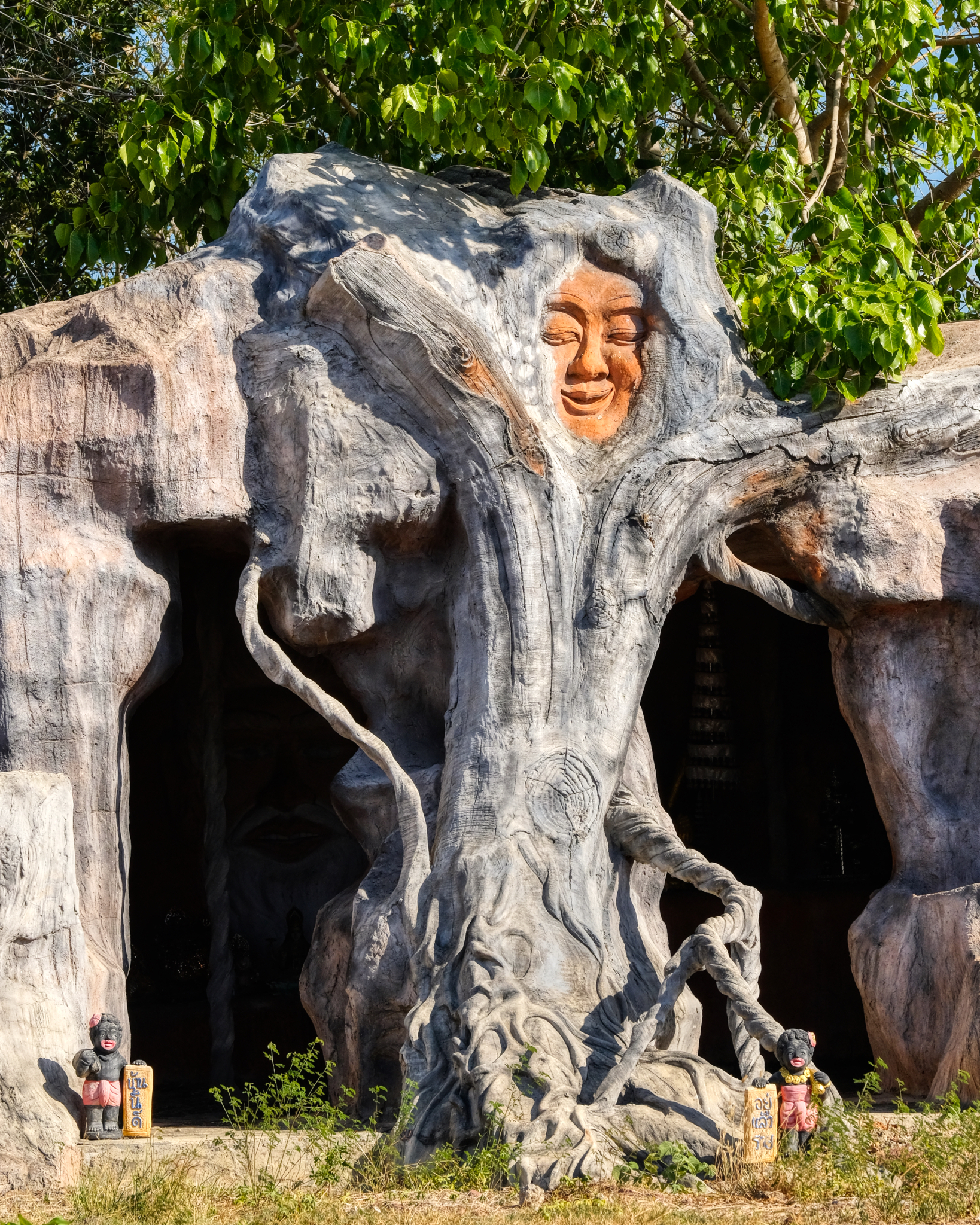 Wat Lat Yai has some of the strangest 'grottos' I have ever seen. From the outside they are just plain weird . . .
Wat Lat Yai has some of the strangest 'grottos' I have ever seen. From the outside they are just plain weird . . .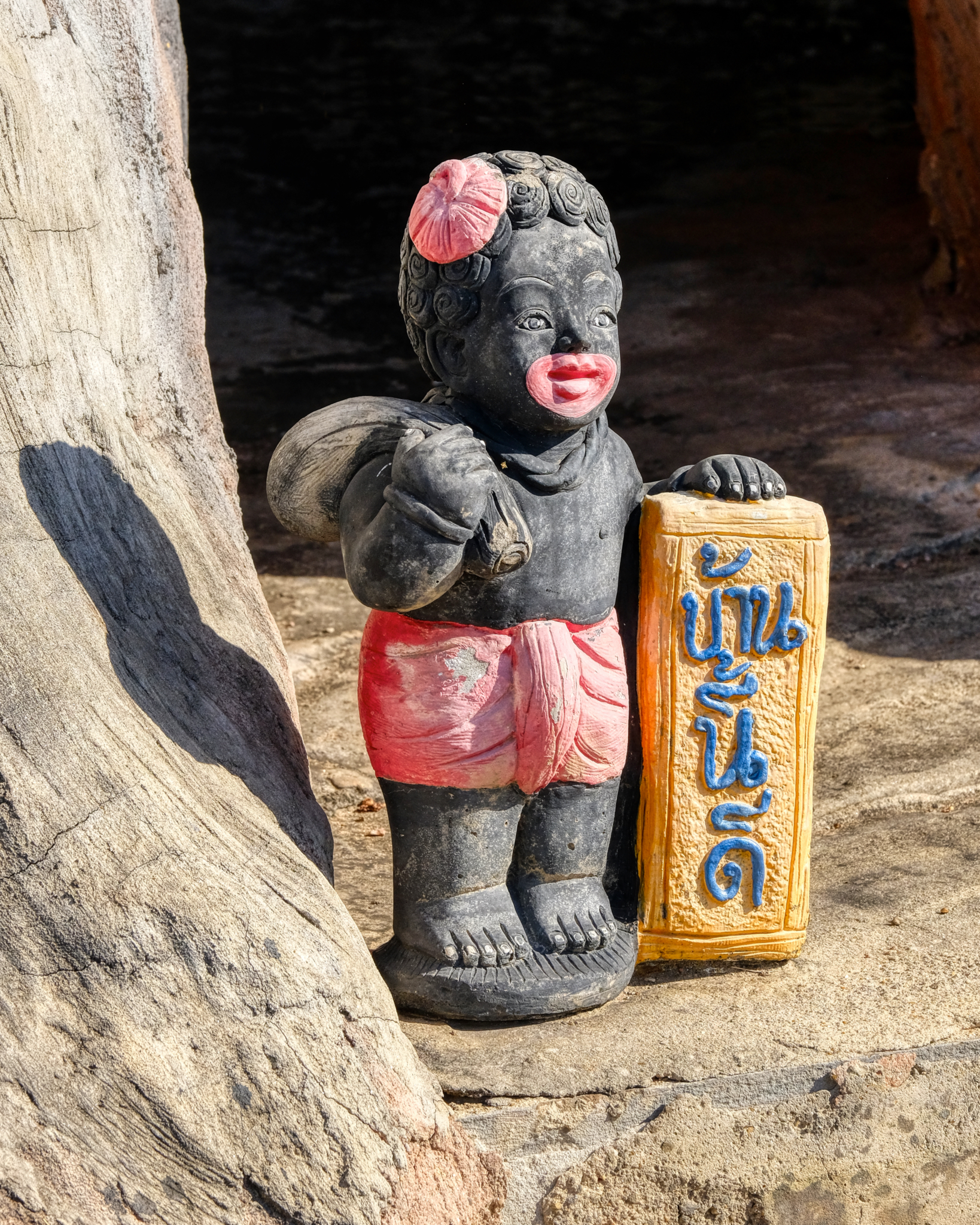 What exactly is going on here? Remember, these things are placed in temples by the doners, not by the monks, who renounce material things. But still . . . .
What exactly is going on here? Remember, these things are placed in temples by the doners, not by the monks, who renounce material things. But still . . . .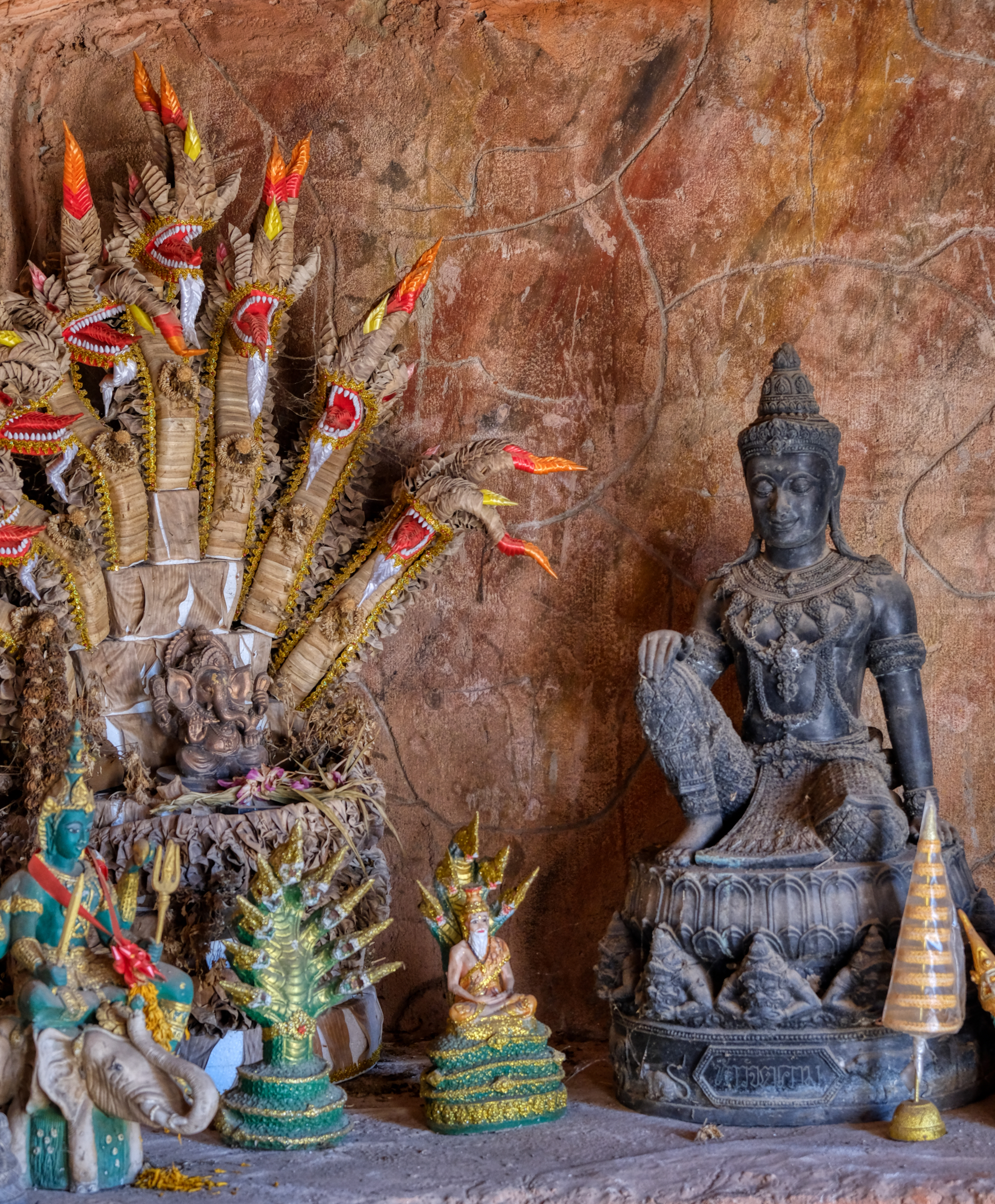 Although the outside of this man-made grotto was a little strange, the inside was magic.
Although the outside of this man-made grotto was a little strange, the inside was magic.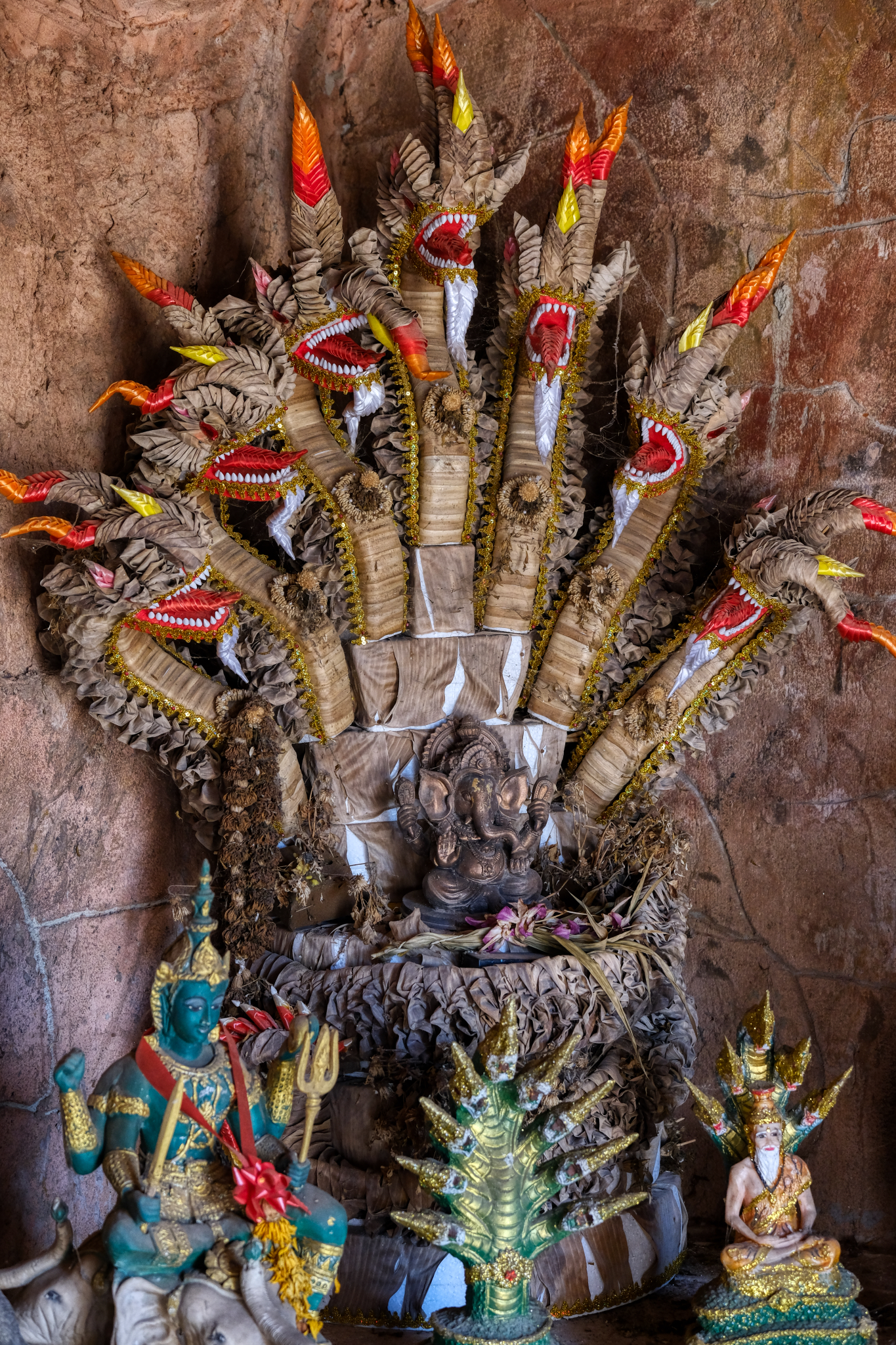 The banana leaf origami on this altar piece was stunningly beautiful. I felt a little like Indiana Jones discovering a lost tomb or ancient temple never seen before. These are Hindu religious items revered in Thailand along side The Buddha.
The banana leaf origami on this altar piece was stunningly beautiful. I felt a little like Indiana Jones discovering a lost tomb or ancient temple never seen before. These are Hindu religious items revered in Thailand along side The Buddha.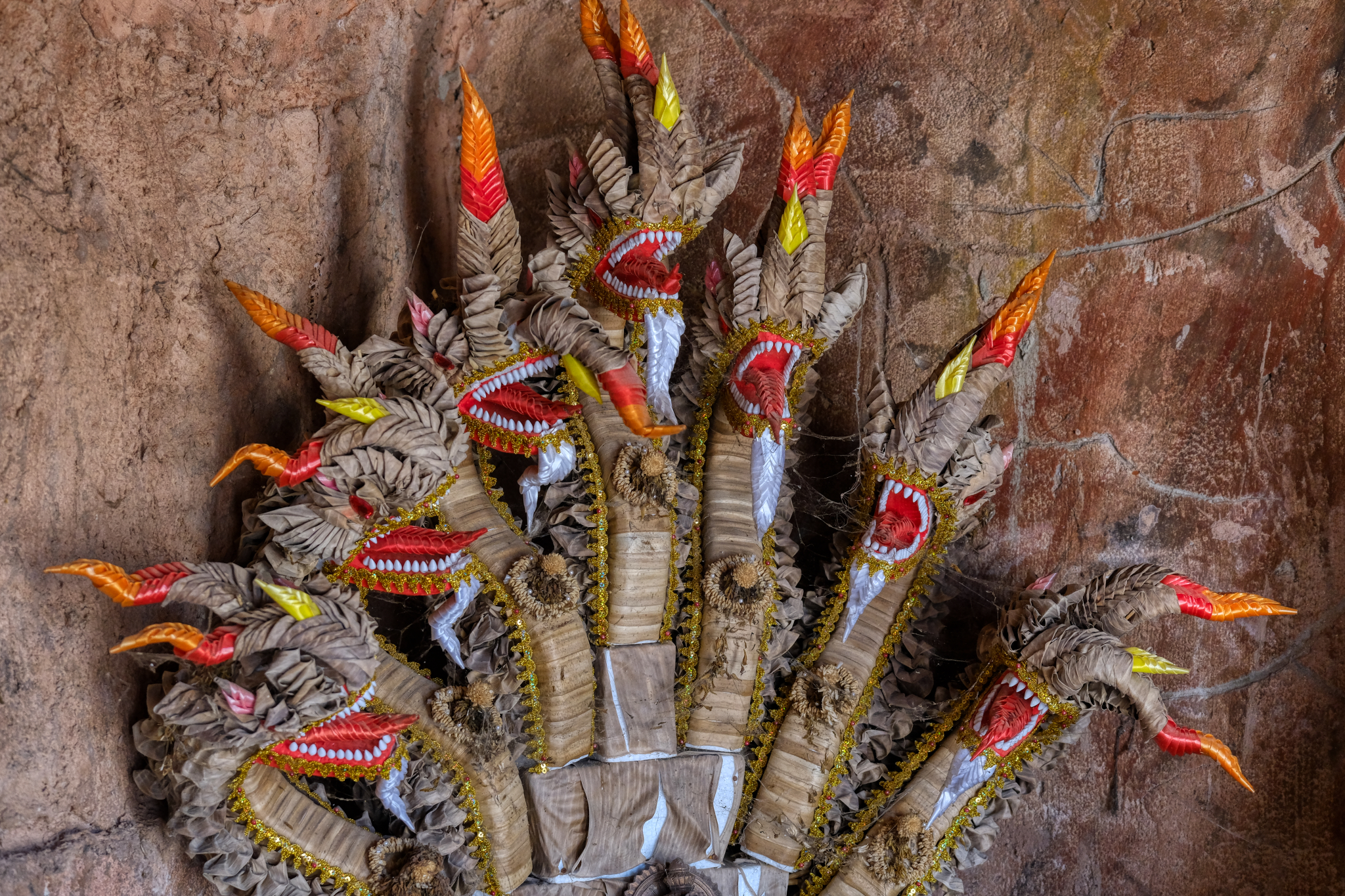 Remarkable fine detailing.
Remarkable fine detailing.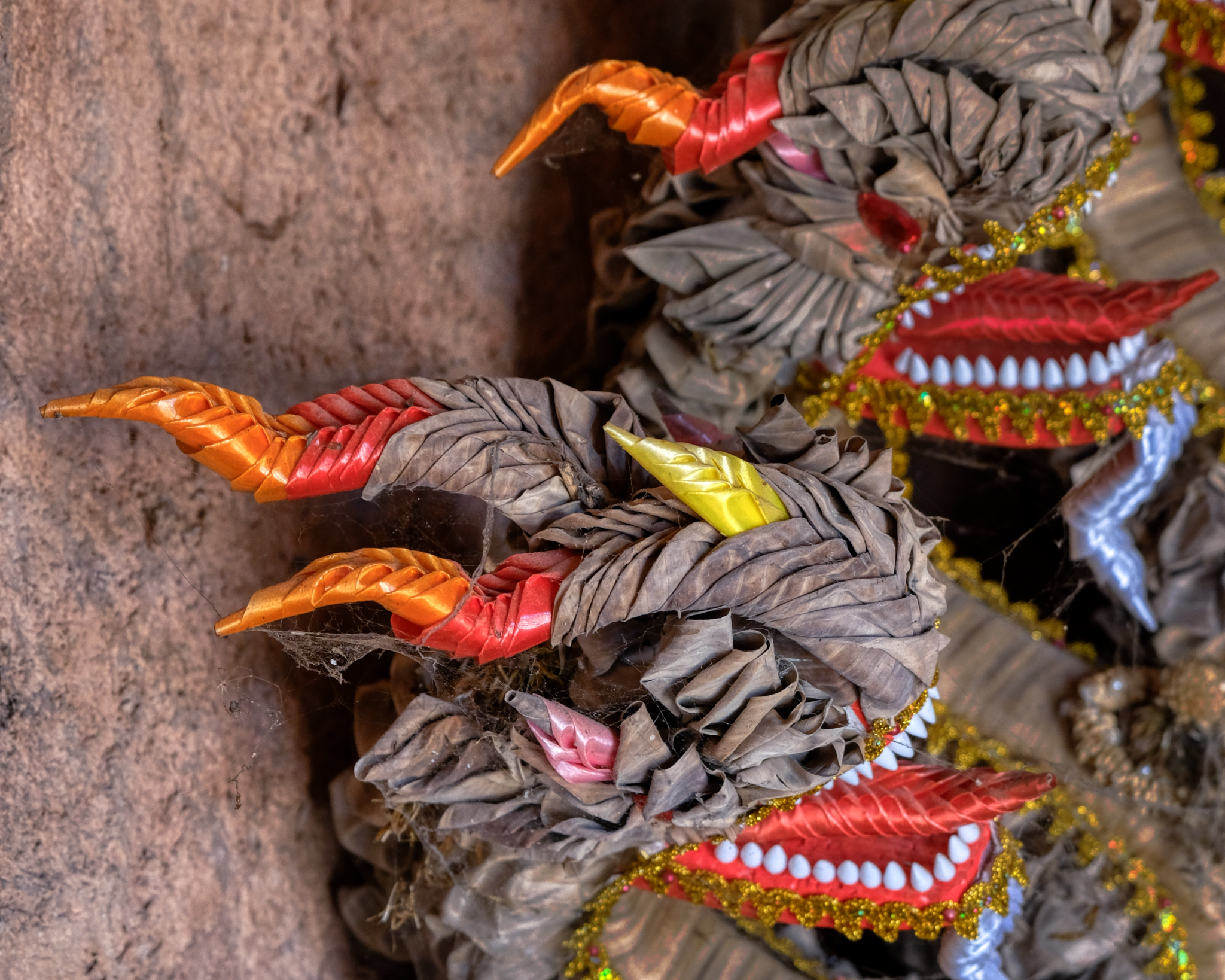 Even the cobwebs seem to belong; adding to the spiritual power of this votive object.
Even the cobwebs seem to belong; adding to the spiritual power of this votive object.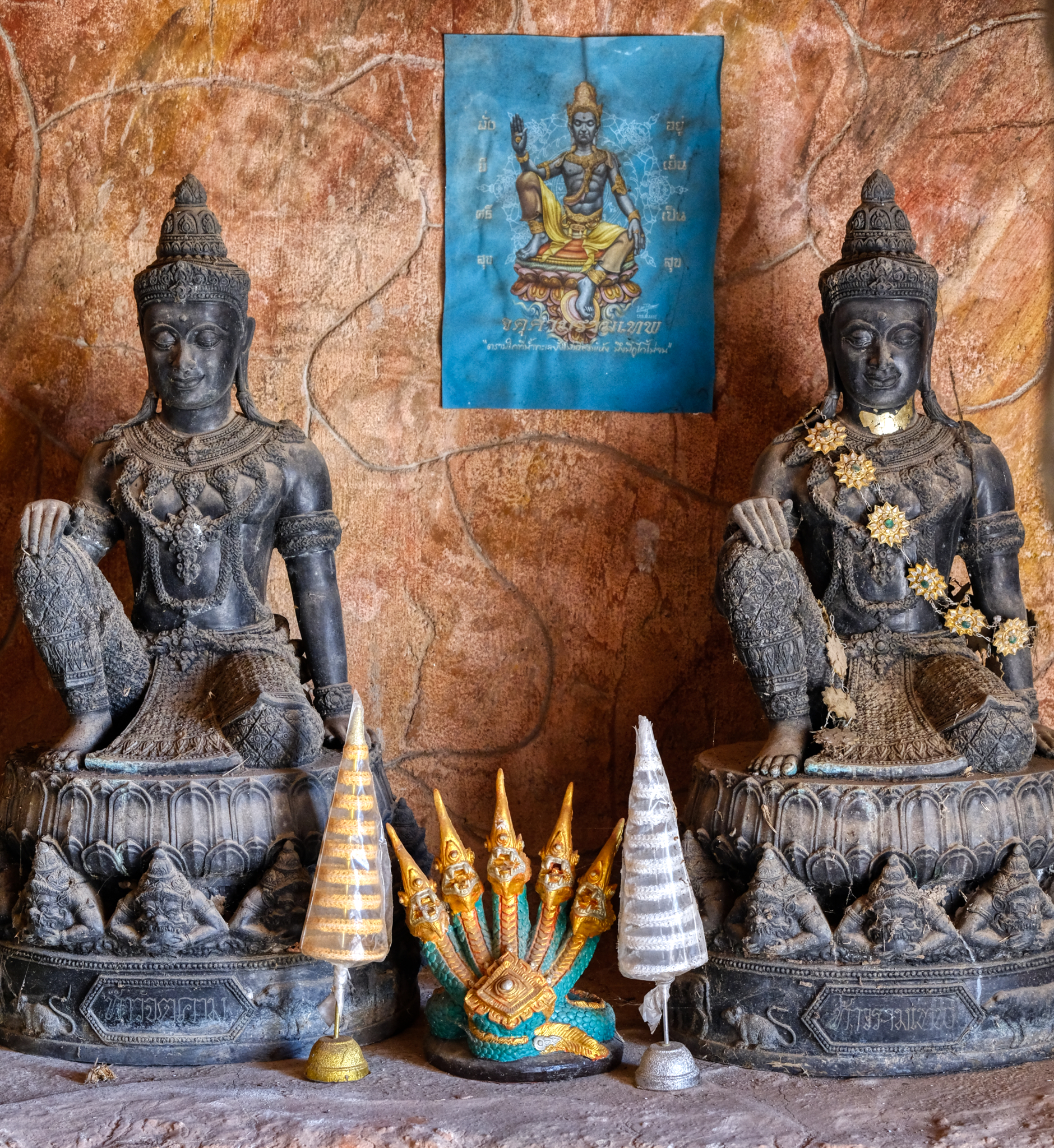 Bikkus, listeners of the Buddha teaching the dharma.
Bikkus, listeners of the Buddha teaching the dharma.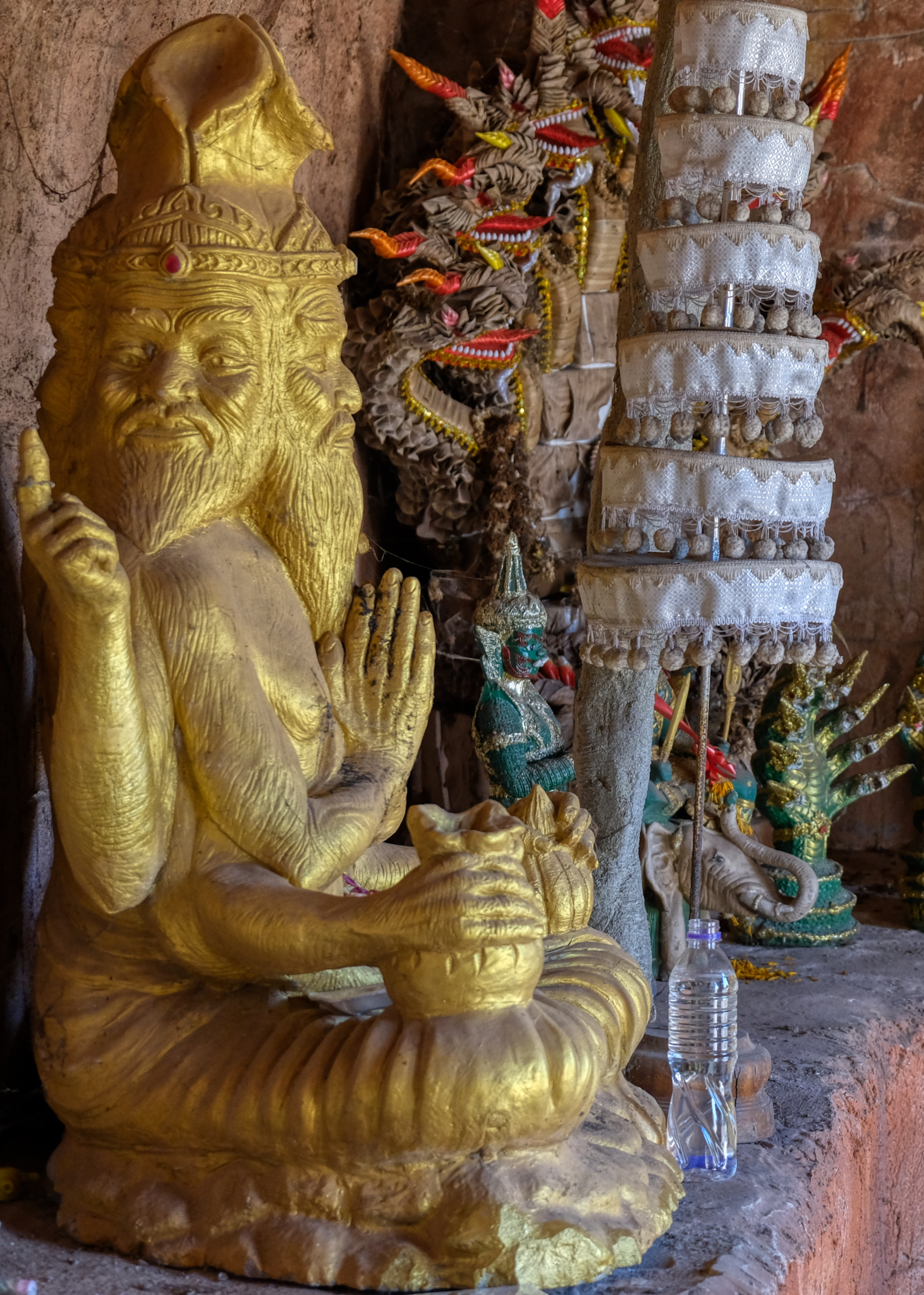 Another Hindu reference . . . a four face sadhu.
Another Hindu reference . . . a four face sadhu.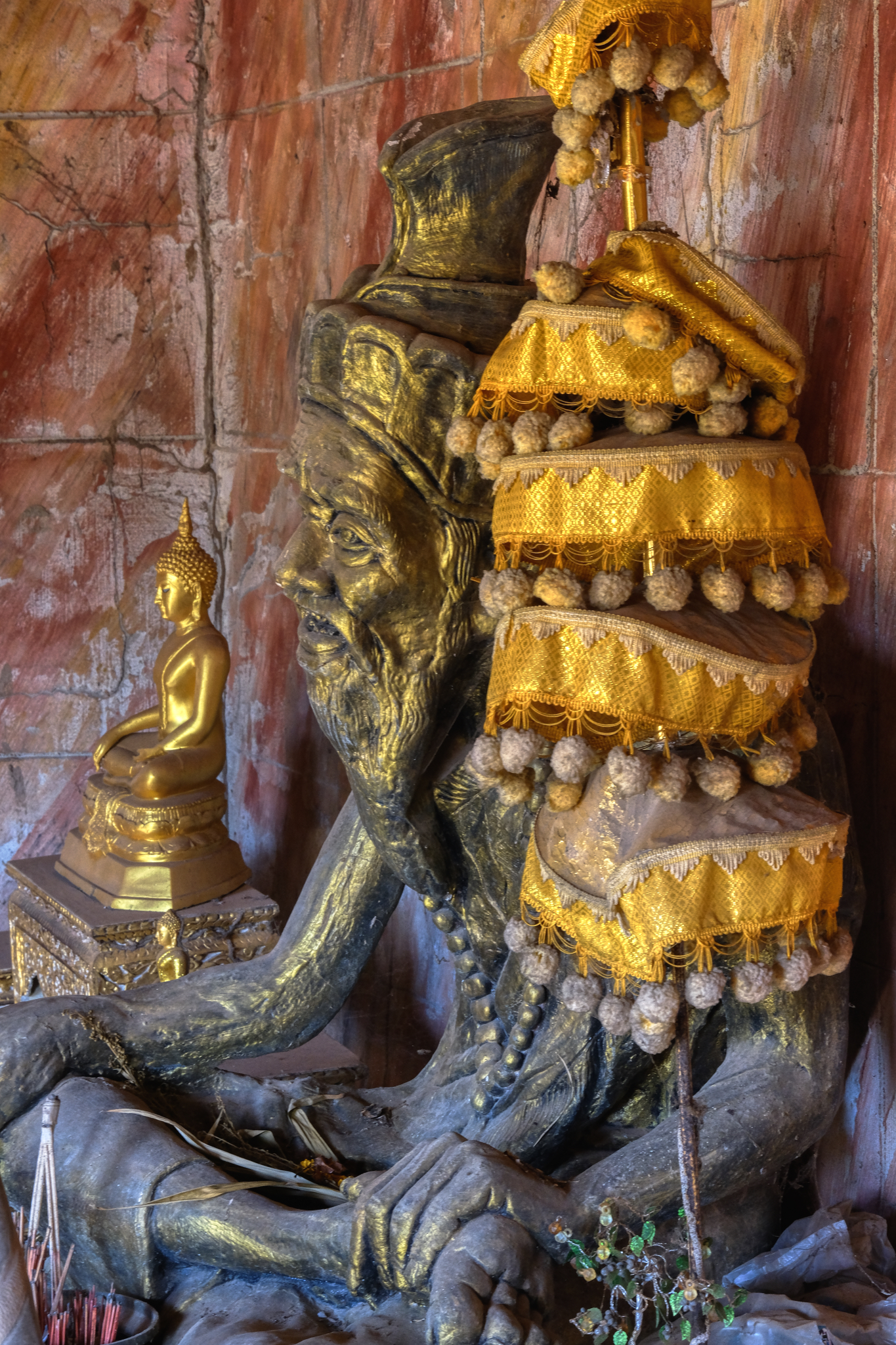 Sadhu and Buddha images in the grotto. I loved being in that space . . .
Sadhu and Buddha images in the grotto. I loved being in that space . . .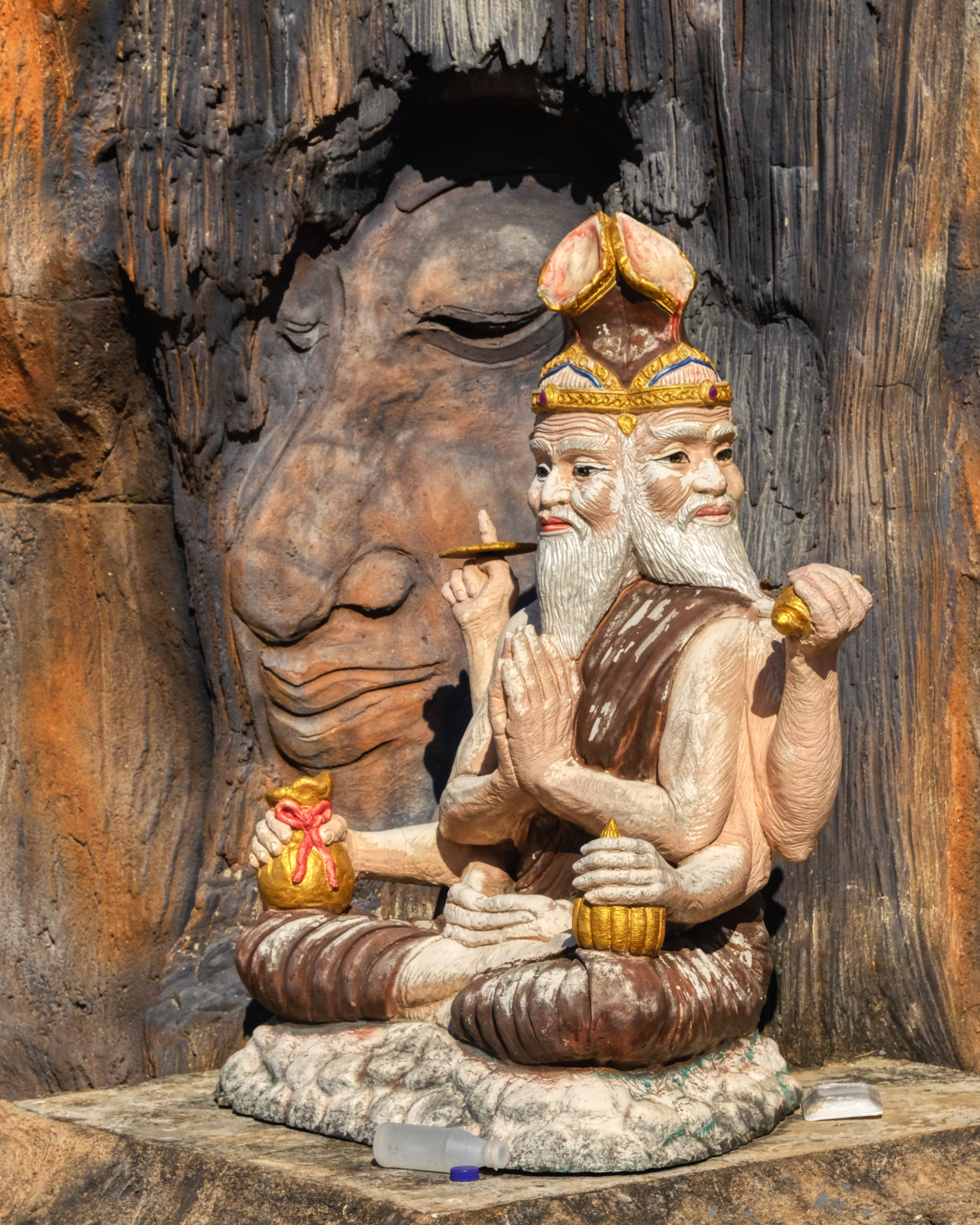 There were also a series of enclave altars around the outside and back of the grotto structure.
There were also a series of enclave altars around the outside and back of the grotto structure.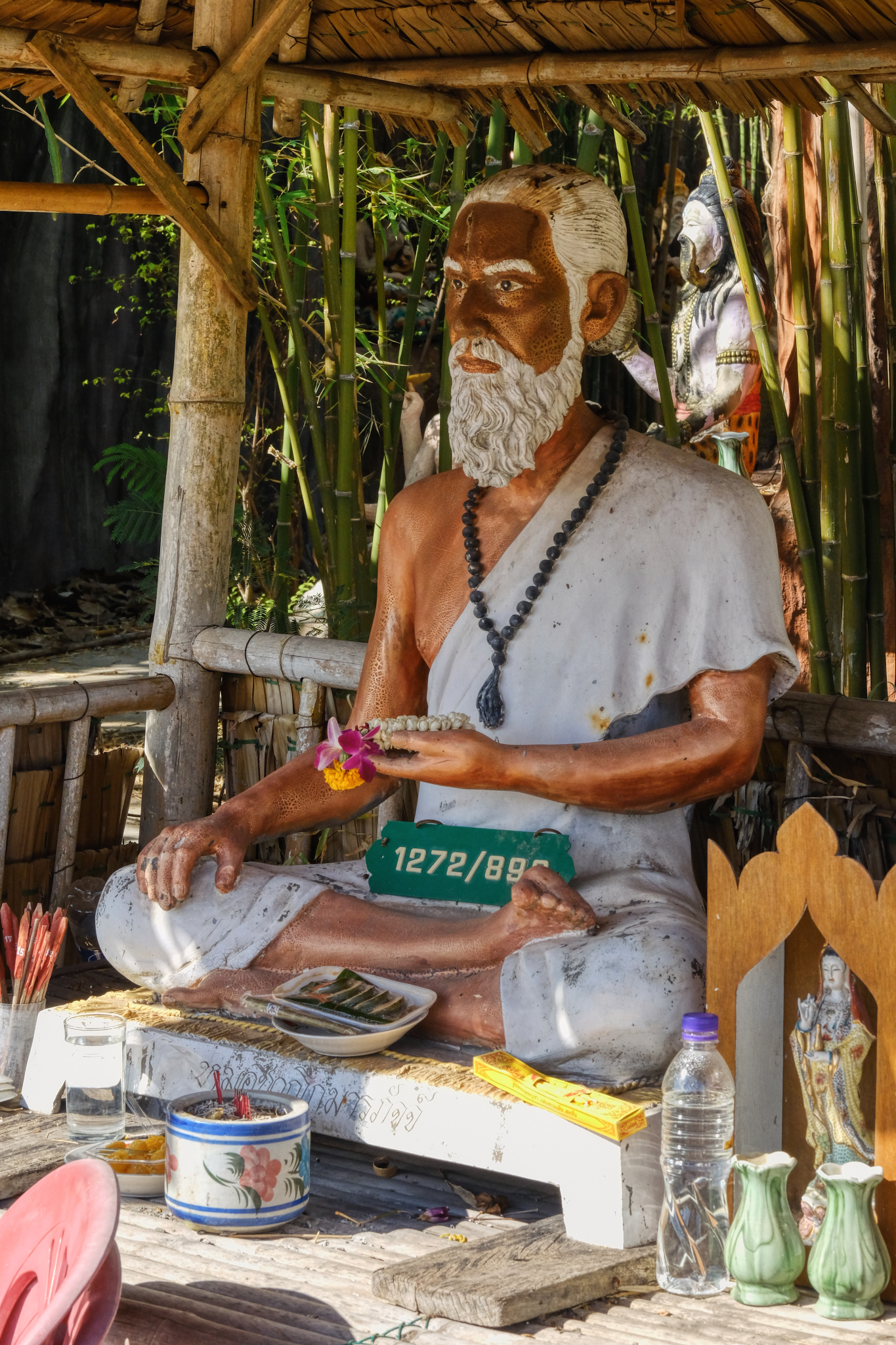 These are living altars. As can be seen, people bring offerings, usually wishing or hoping for good luck. Notice that someone has left the address plate from their house on the altar . . .
These are living altars. As can be seen, people bring offerings, usually wishing or hoping for good luck. Notice that someone has left the address plate from their house on the altar . . .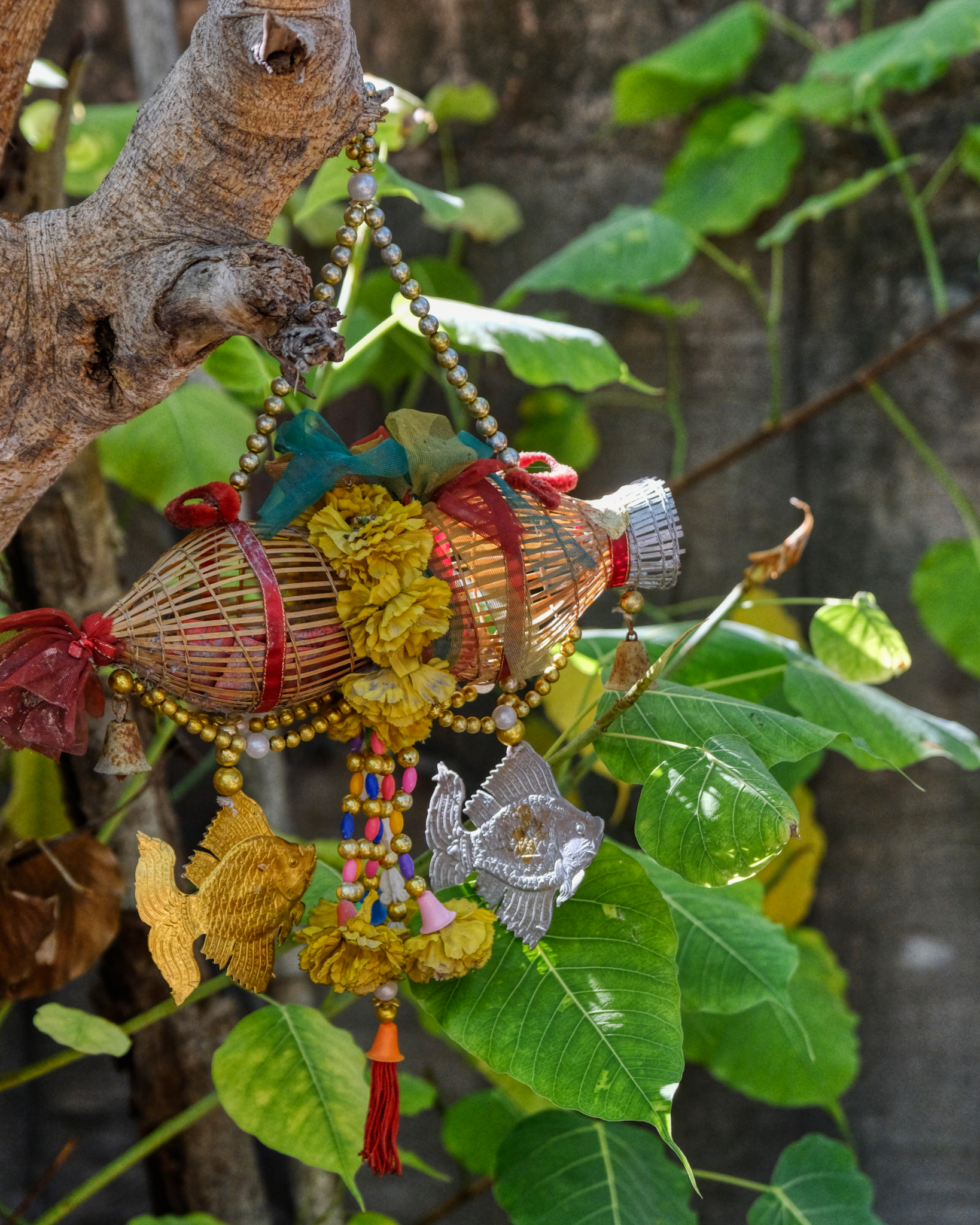 Slung here and there, votive charms festoon the temple trees.
Slung here and there, votive charms festoon the temple trees.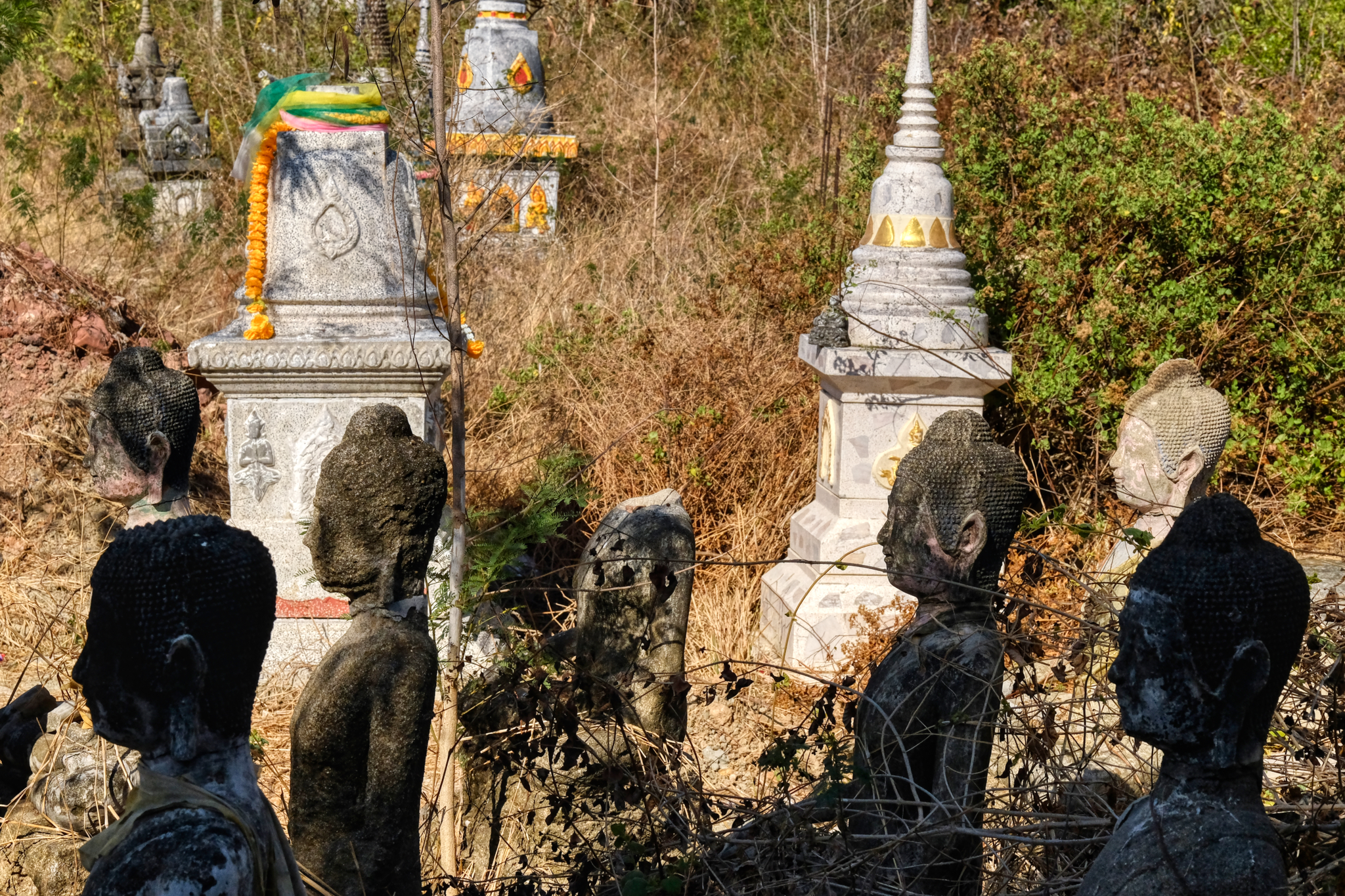 The reason I wanted to return to this Wat and bring friends, was because there used to be a tropical pine grove with old Buddha images in it . . . covered in pine needles. The pine forest is gone: slashed because they did not fit the plan of a doner with a new vision for this temple. The old Buddhas were still there, but looking like they have been 'mothballed' . . .
The reason I wanted to return to this Wat and bring friends, was because there used to be a tropical pine grove with old Buddha images in it . . . covered in pine needles. The pine forest is gone: slashed because they did not fit the plan of a doner with a new vision for this temple. The old Buddhas were still there, but looking like they have been 'mothballed' . . .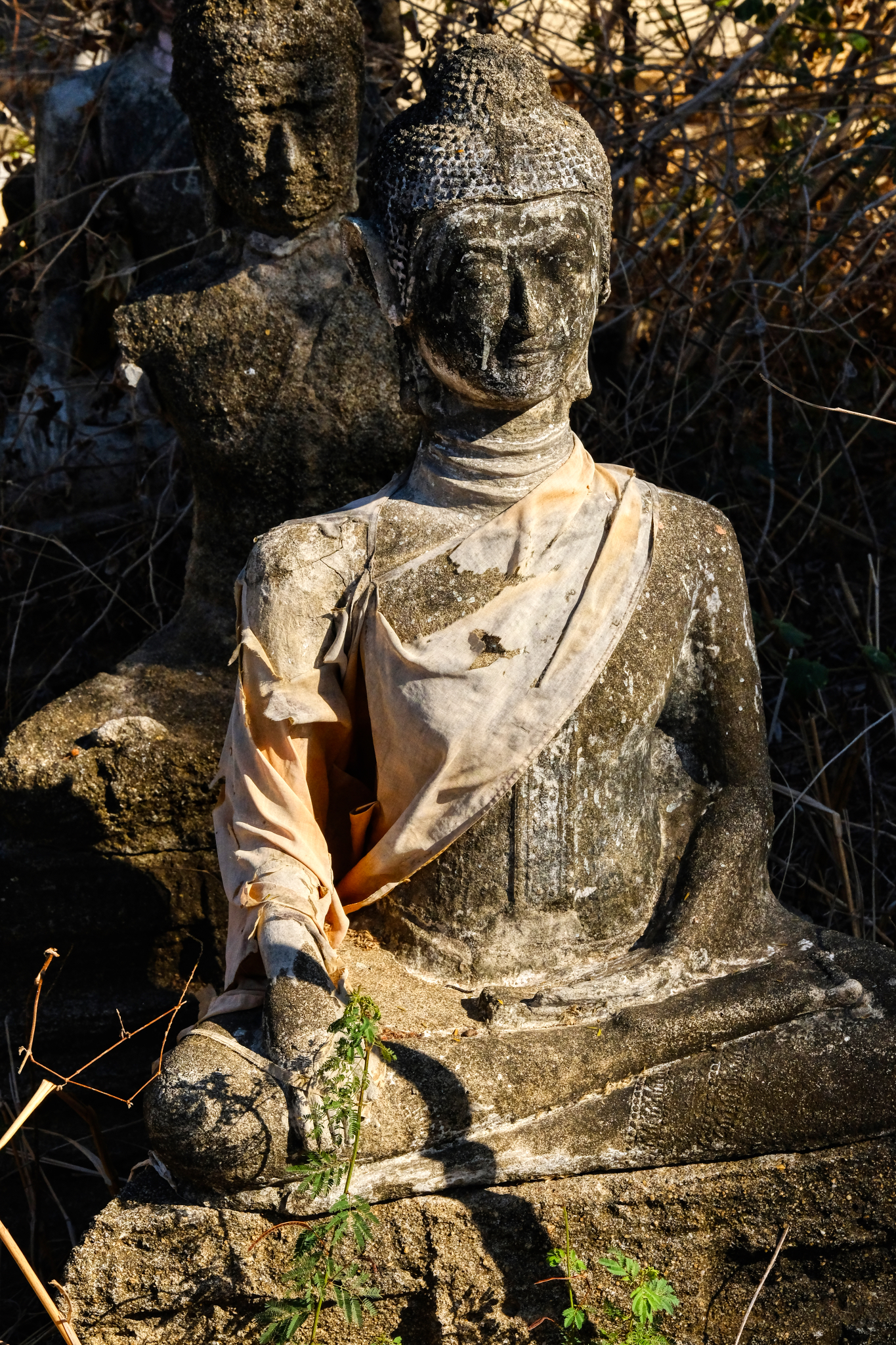 These old, and seemingly discarded, Buddha images seemed to me to be highly spiritual reminders of the project that the Buddha called us to try.
These old, and seemingly discarded, Buddha images seemed to me to be highly spiritual reminders of the project that the Buddha called us to try.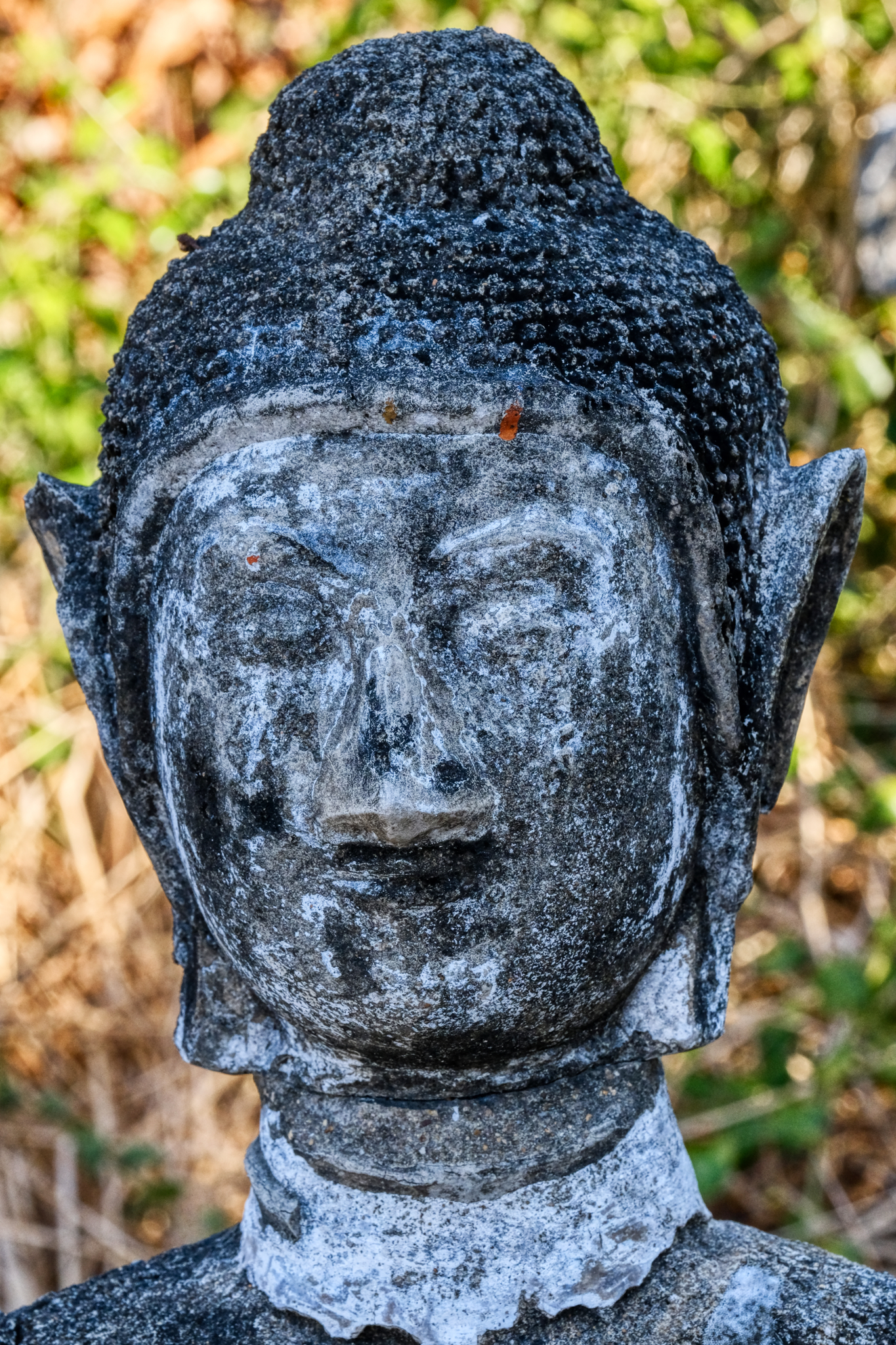 It seems like someone has taken a scraper to clean some of the moss of of this Buddha image.
It seems like someone has taken a scraper to clean some of the moss of of this Buddha image.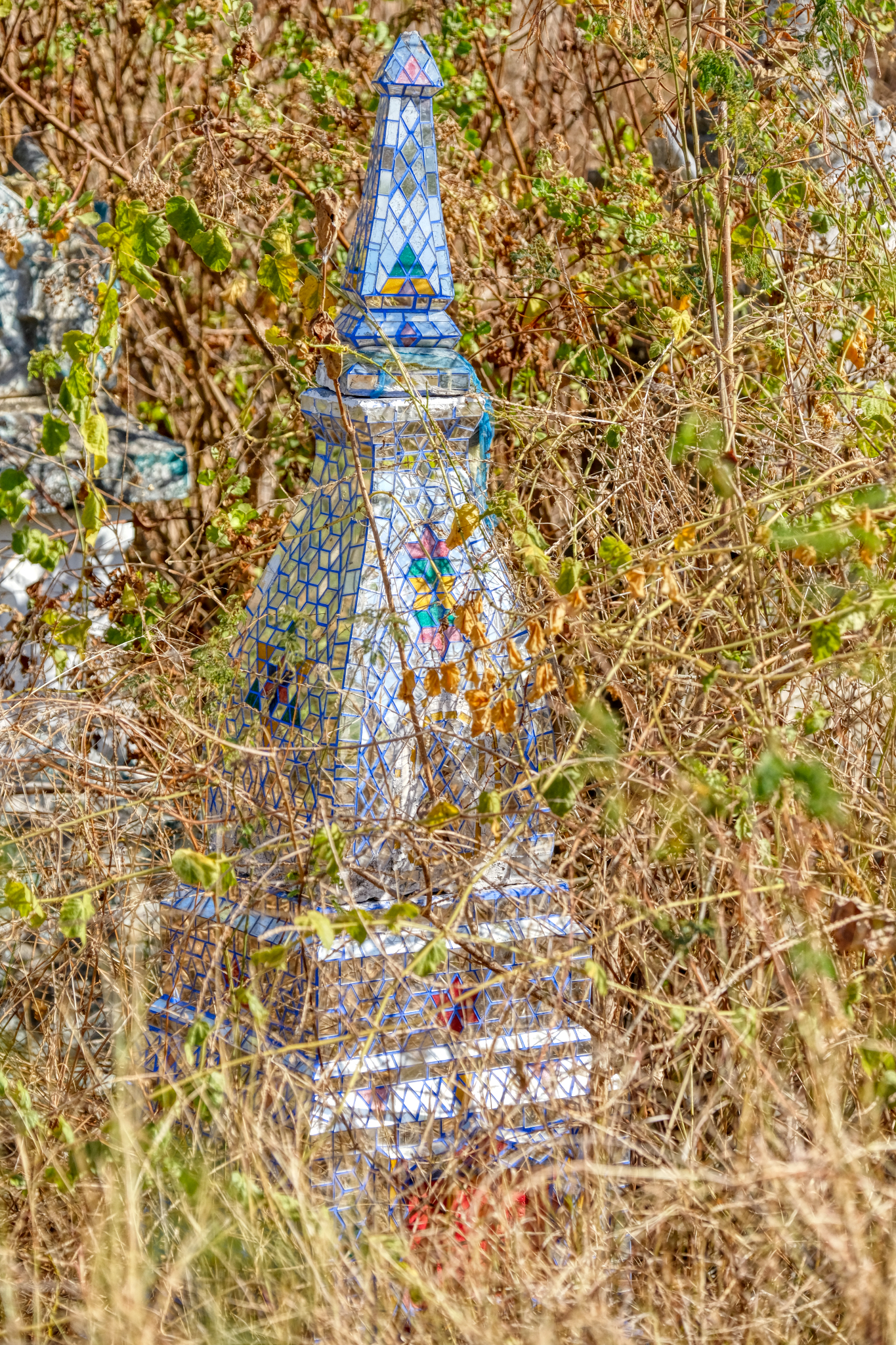 Still bright and shiny . . . an overgrown mirror chedi.
Still bright and shiny . . . an overgrown mirror chedi.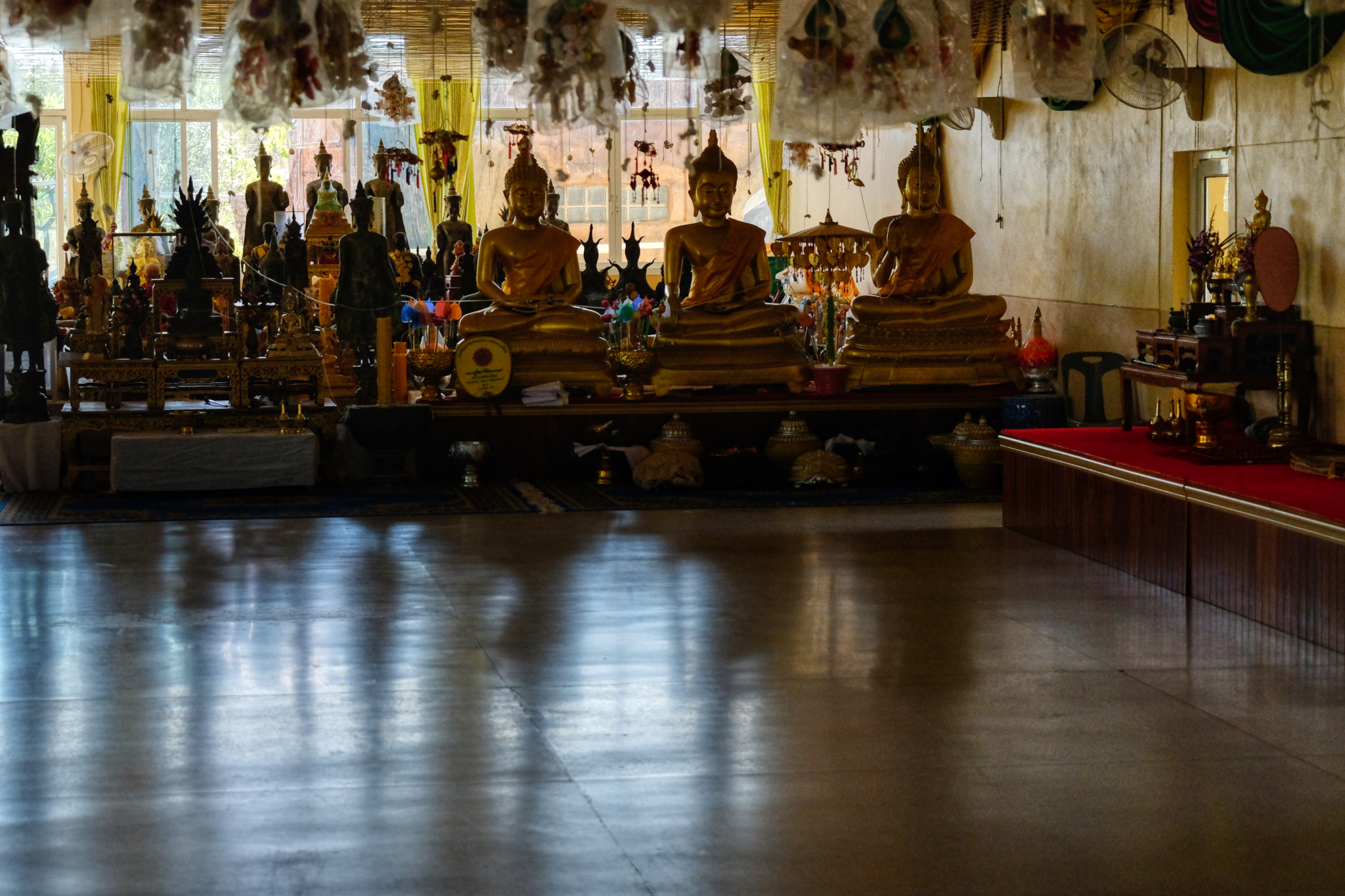 By this time of the morning (9:00am) it was already devilishly hot: well over 40c. We went inside to the shaded hall where two nice old ladies (helpers) brought us bottled water. The hall seemed temporary, perhaps being used until some other structure was being built.
By this time of the morning (9:00am) it was already devilishly hot: well over 40c. We went inside to the shaded hall where two nice old ladies (helpers) brought us bottled water. The hall seemed temporary, perhaps being used until some other structure was being built.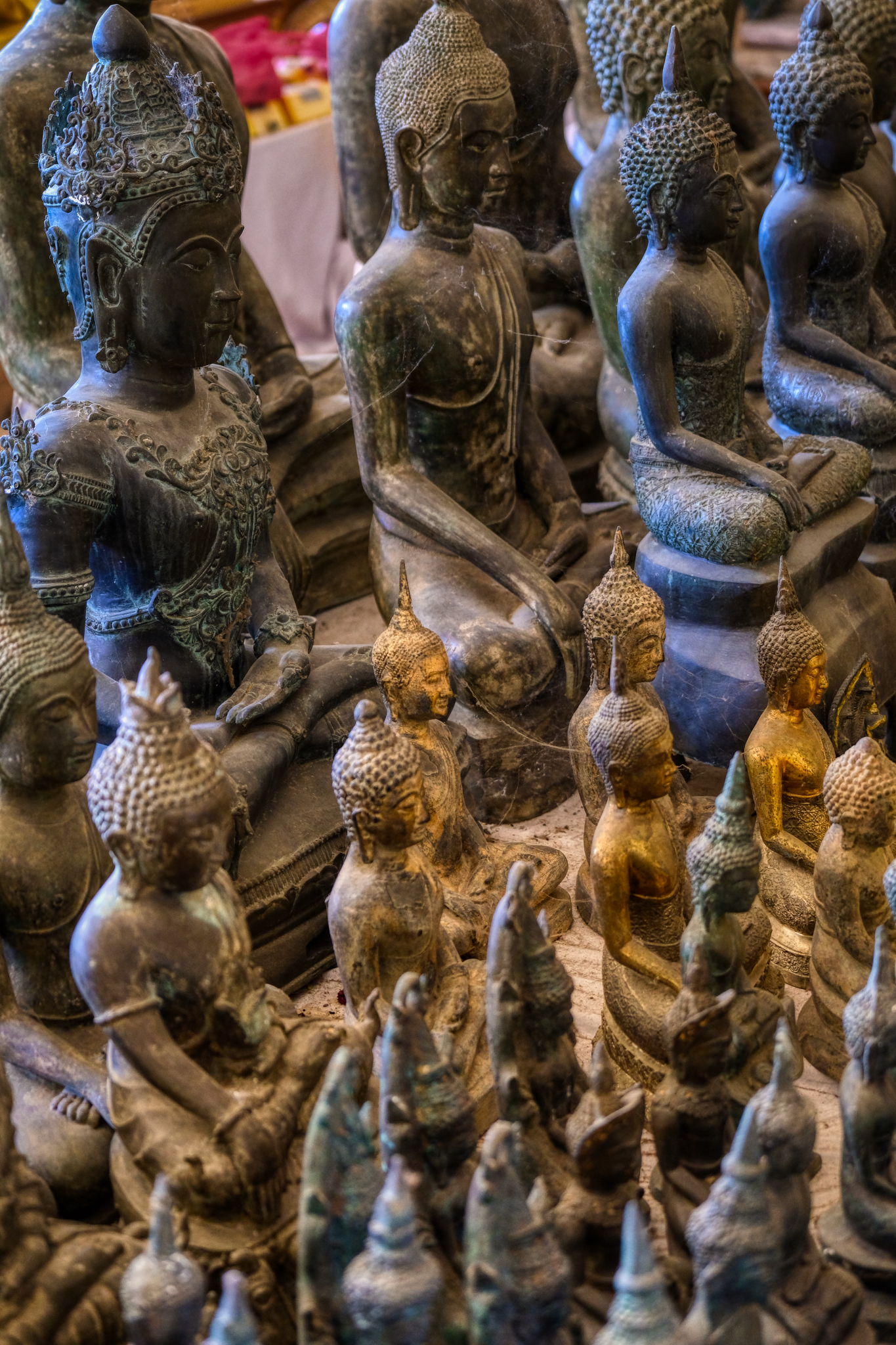 The altar was crowded with Buddha images. Fascinating.
The altar was crowded with Buddha images. Fascinating.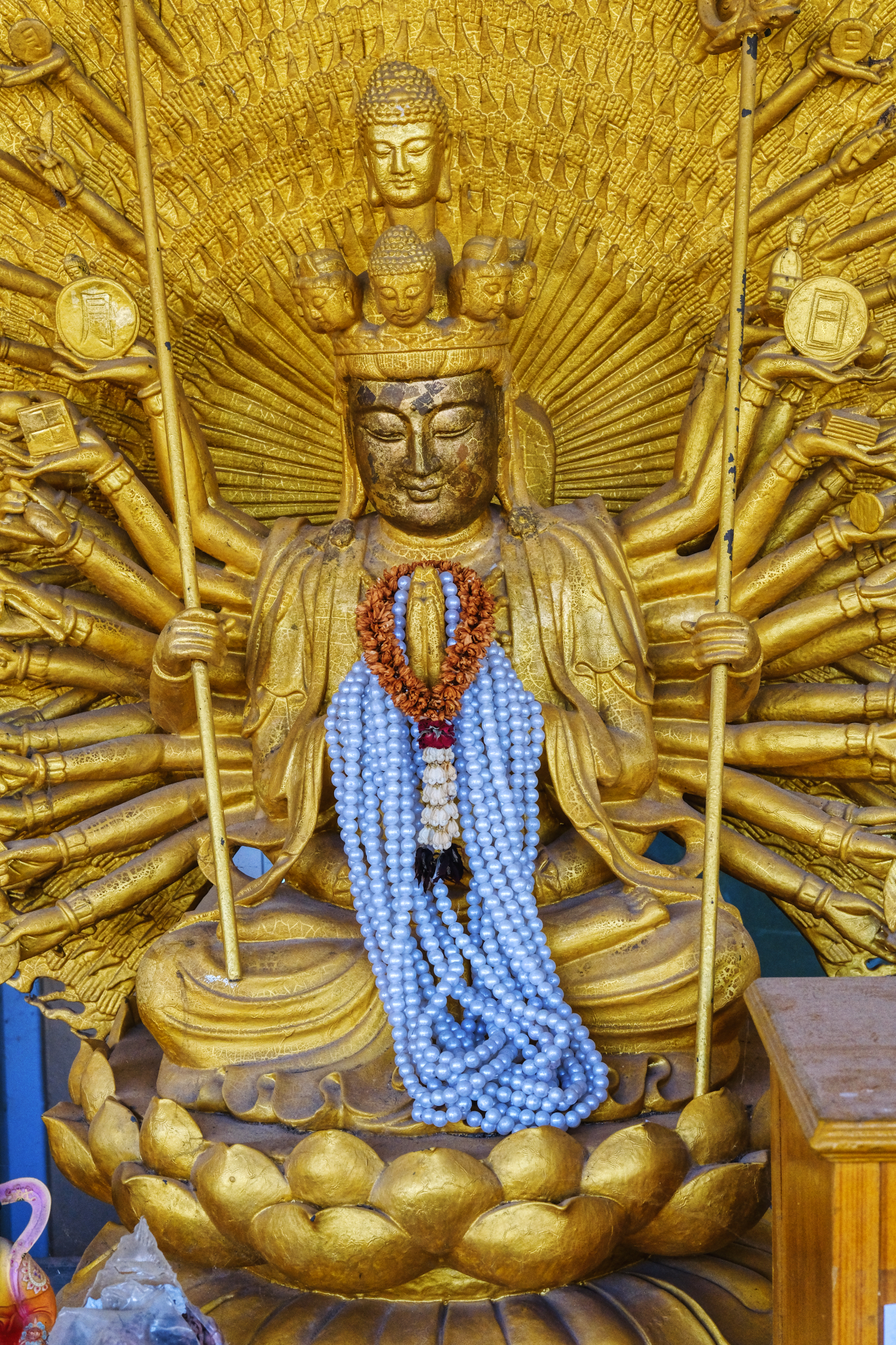 There seemed to be many more Hindu symbols in this Wat than others I have visited. I want a hat like this!
There seemed to be many more Hindu symbols in this Wat than others I have visited. I want a hat like this!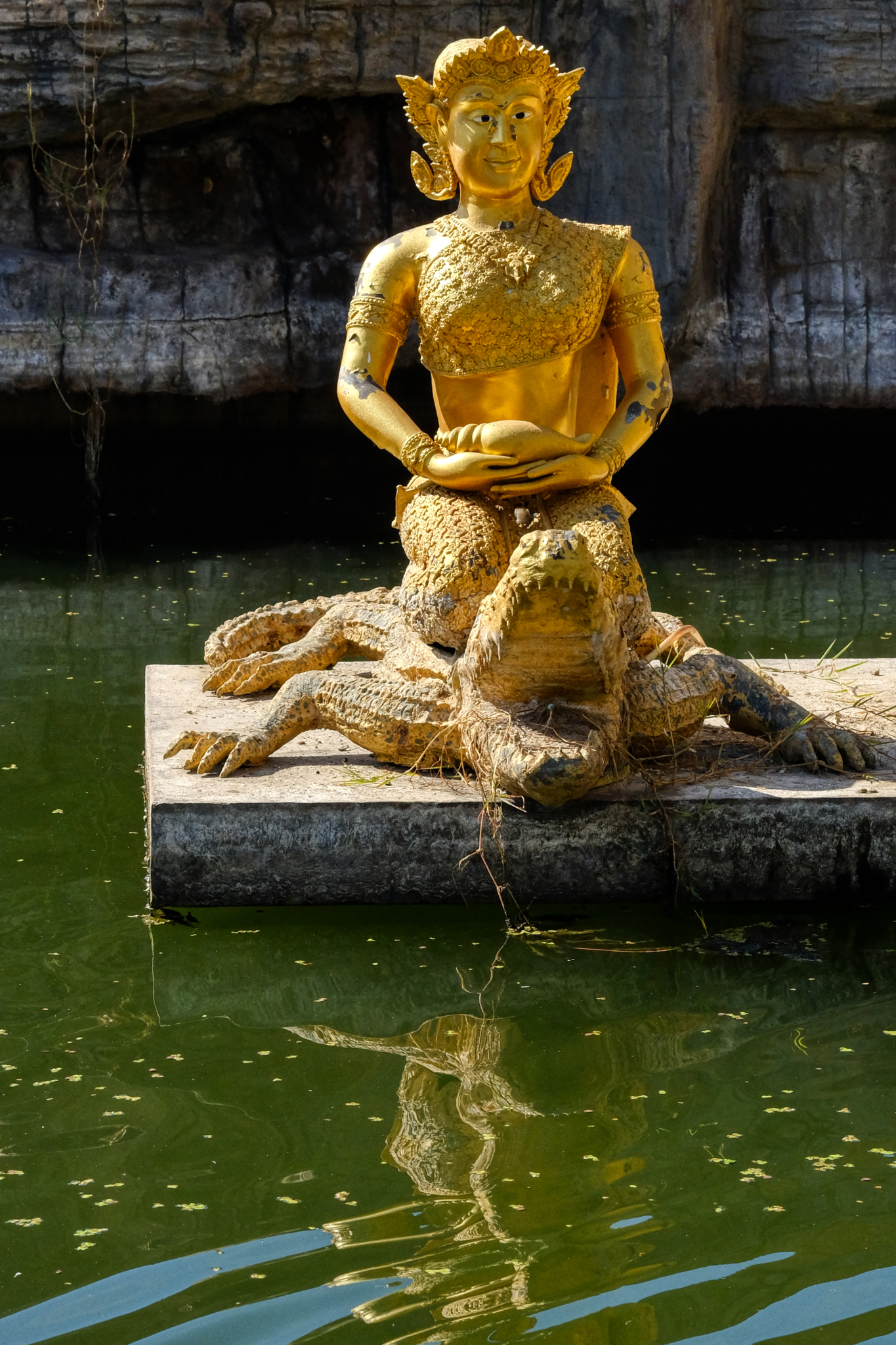 "What, me worry?" Supreme detachment. We left the Wat and headed back to the highway where we saw a sign pointing to small road and the name of another Wat . . .
"What, me worry?" Supreme detachment. We left the Wat and headed back to the highway where we saw a sign pointing to small road and the name of another Wat . . .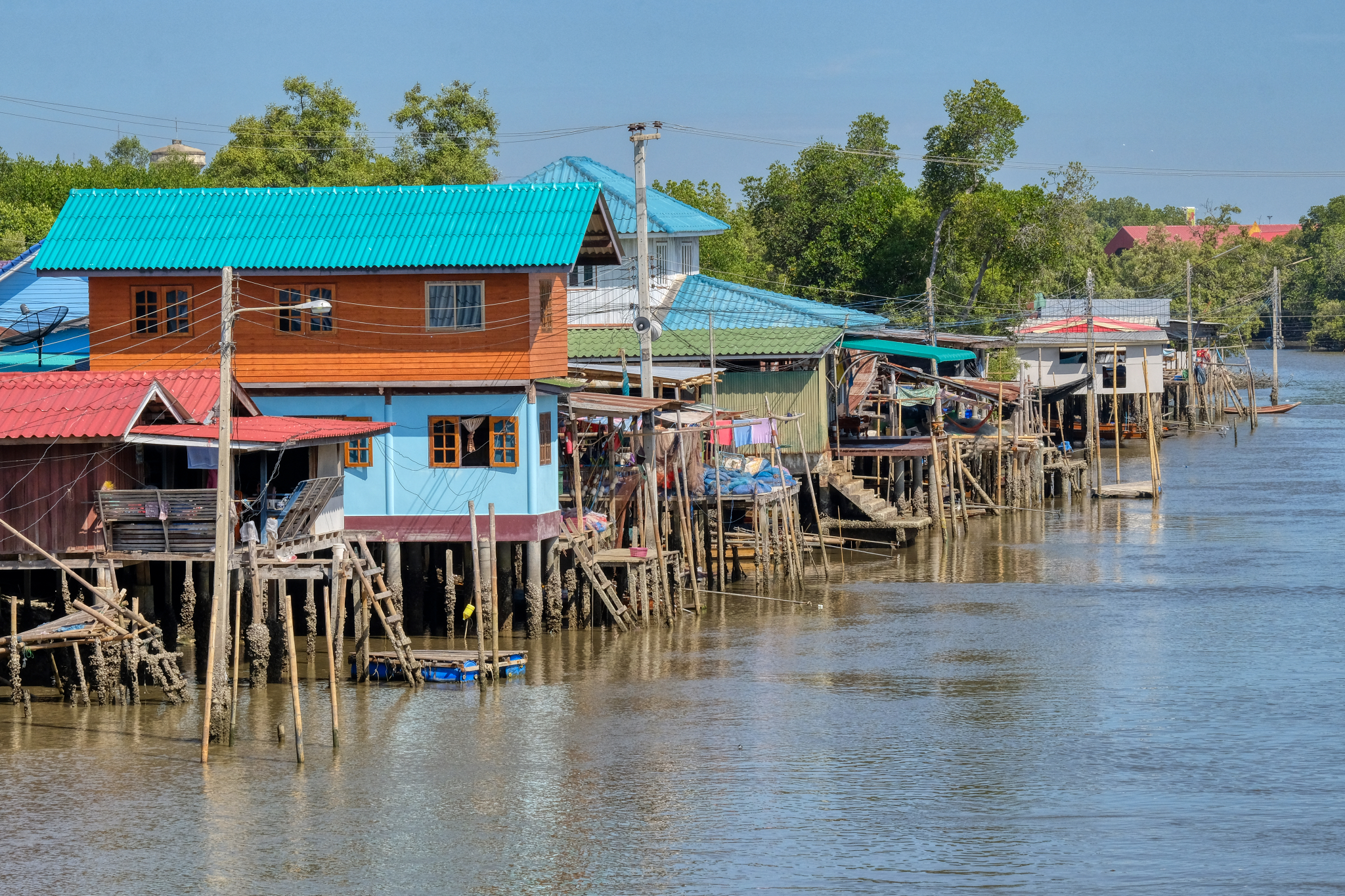 A short drive up a small rural road in search of another Buddhist temple to explore. We didn't find the temple, but we did find this wonderful village built on a canal not far from where it emptied into the Gulf of Thailand.
A short drive up a small rural road in search of another Buddhist temple to explore. We didn't find the temple, but we did find this wonderful village built on a canal not far from where it emptied into the Gulf of Thailand.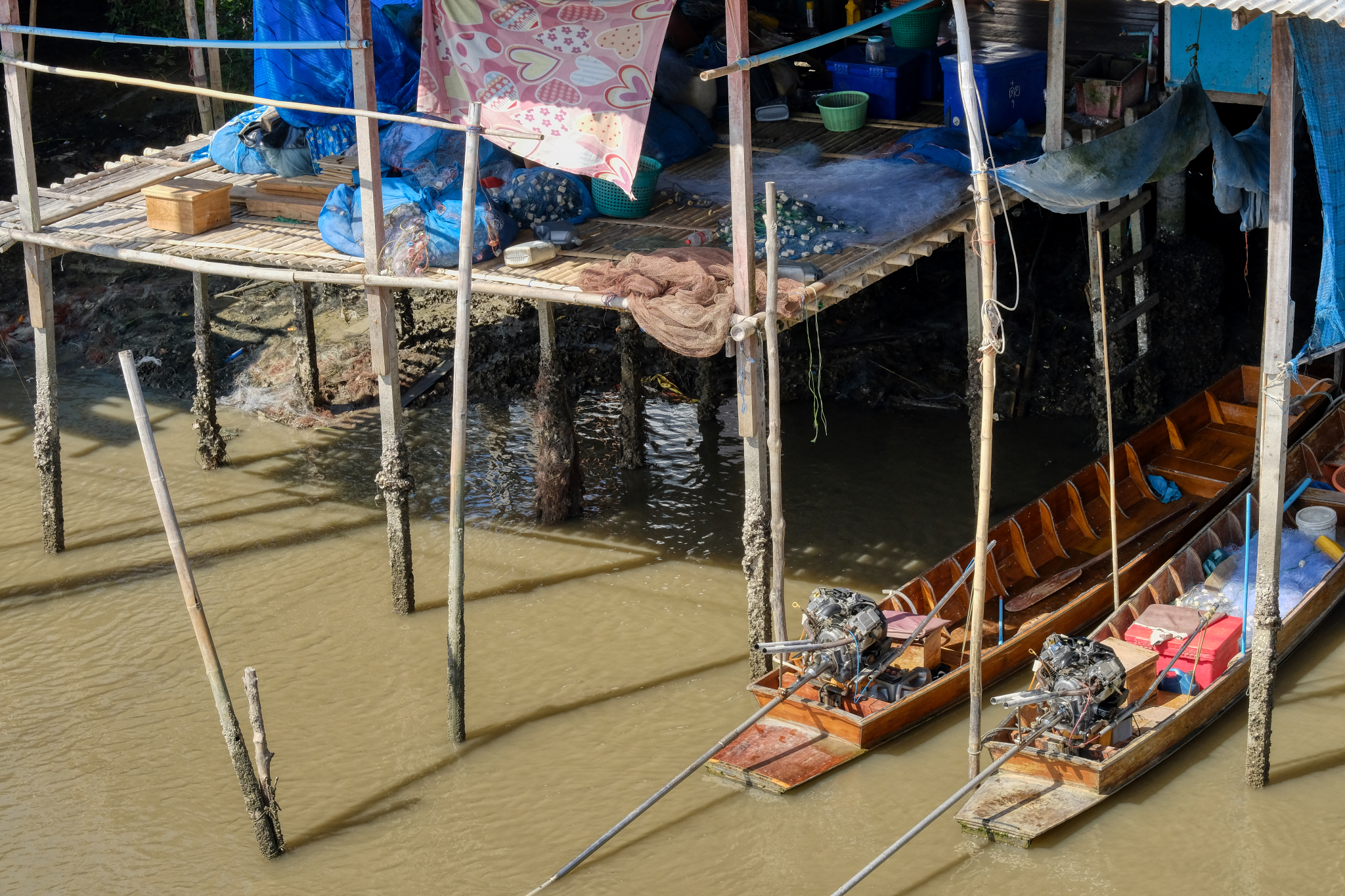 I love these canal side fishing villages . . . they are so picturesque . . . and visually complex.
I love these canal side fishing villages . . . they are so picturesque . . . and visually complex.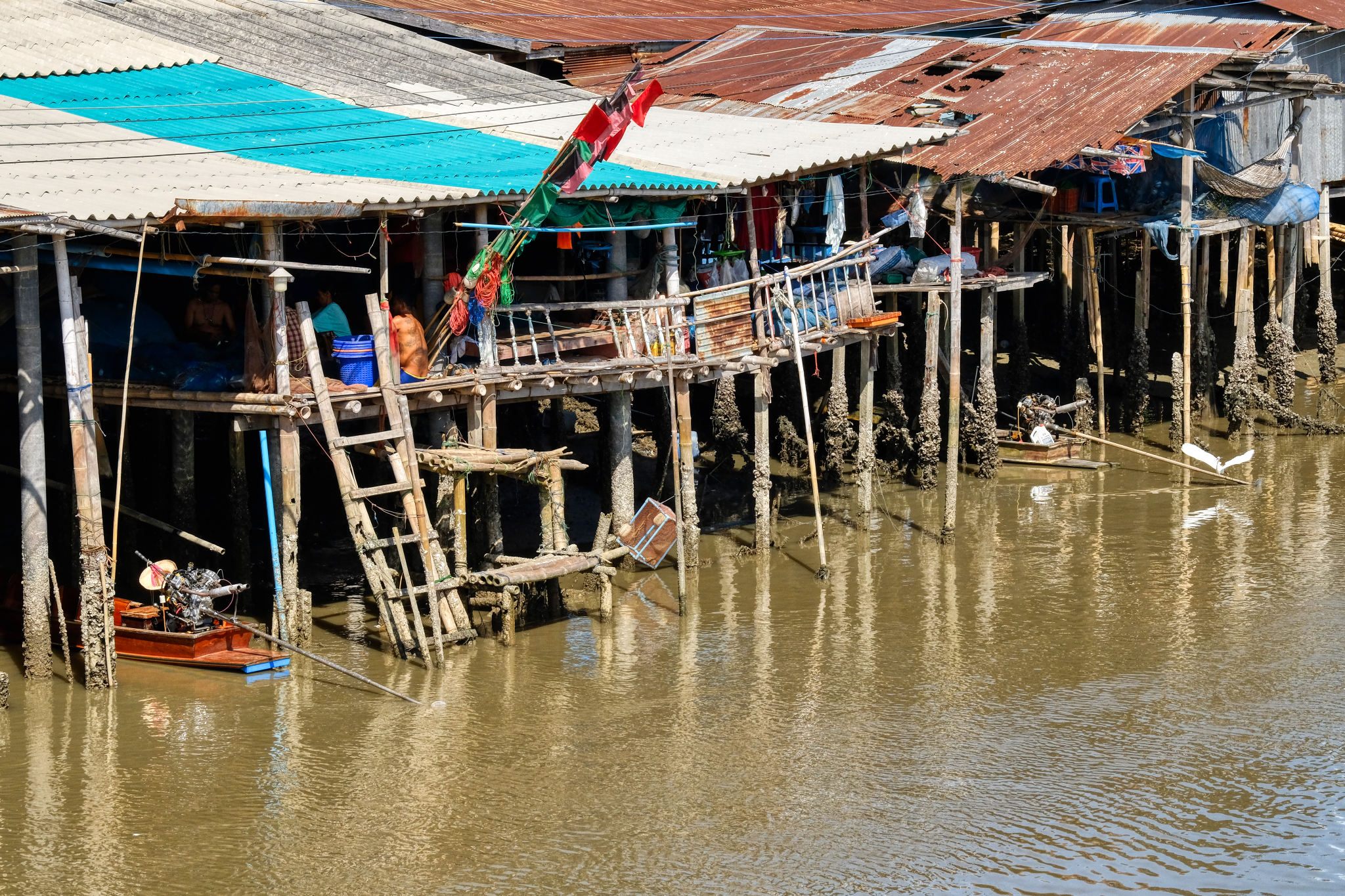 Too hot to do anything other than to sit around with your friends and family and mend nets . . . unless you are a falang photographer, that is!
Too hot to do anything other than to sit around with your friends and family and mend nets . . . unless you are a falang photographer, that is!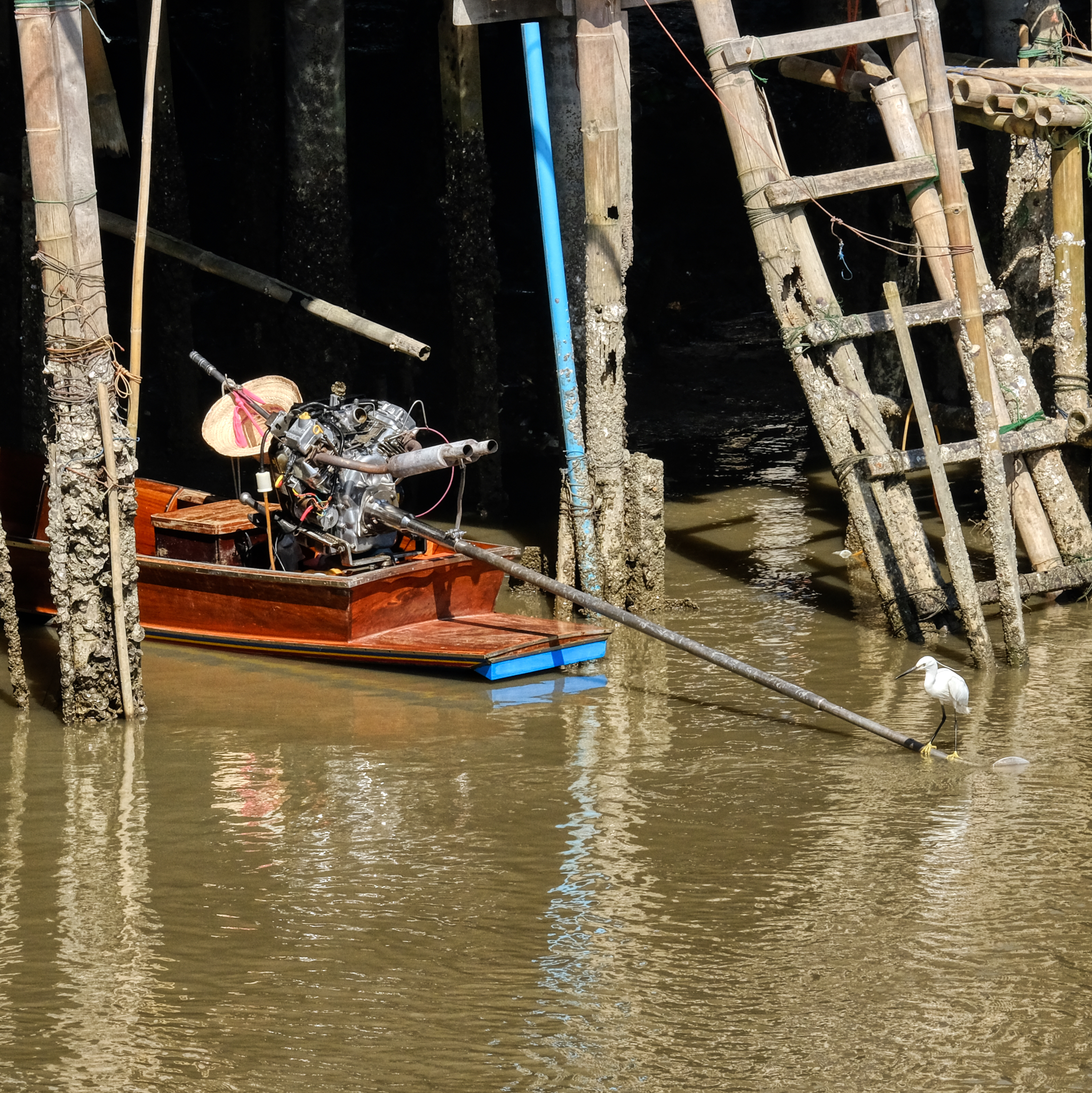 I'm not sure what the make of this V-2 long-tail boat engine is, but it was a beautiful scene.
I'm not sure what the make of this V-2 long-tail boat engine is, but it was a beautiful scene.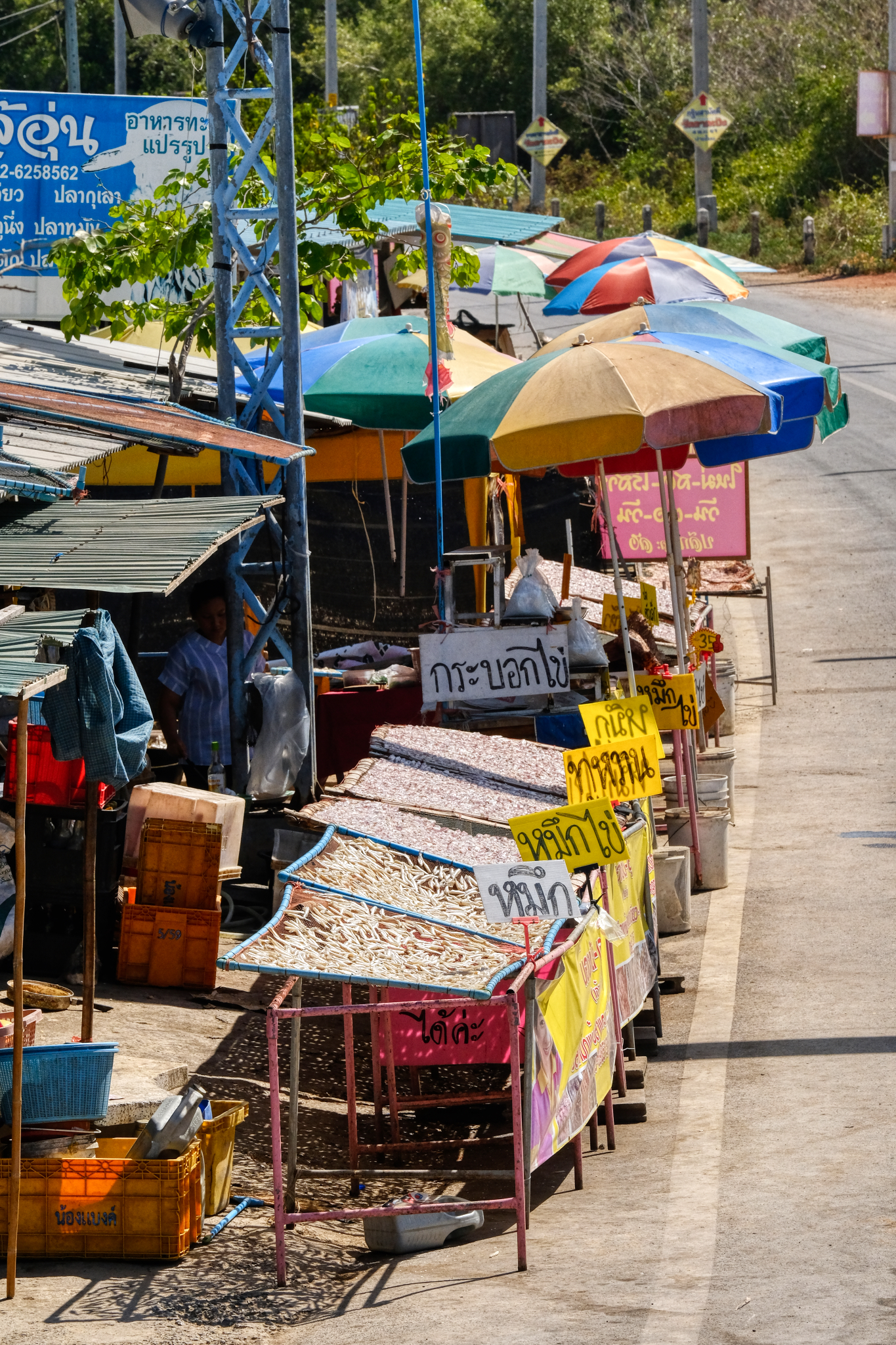 There was a lovely roadside fish market just outside the hamlet.
There was a lovely roadside fish market just outside the hamlet.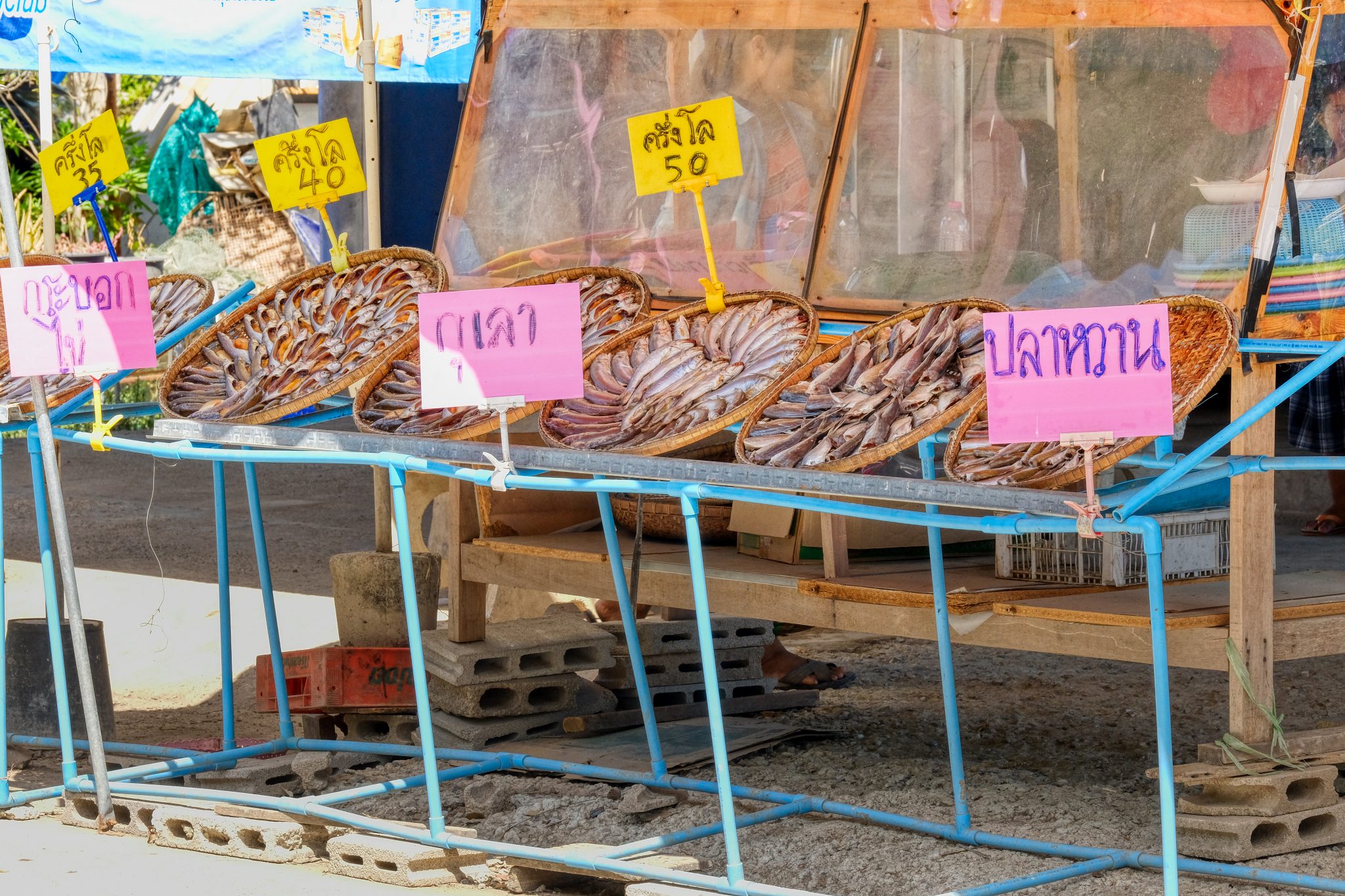 Many different kinds, sizes, and colors of fish . . . all inviting visual exploration.
Many different kinds, sizes, and colors of fish . . . all inviting visual exploration.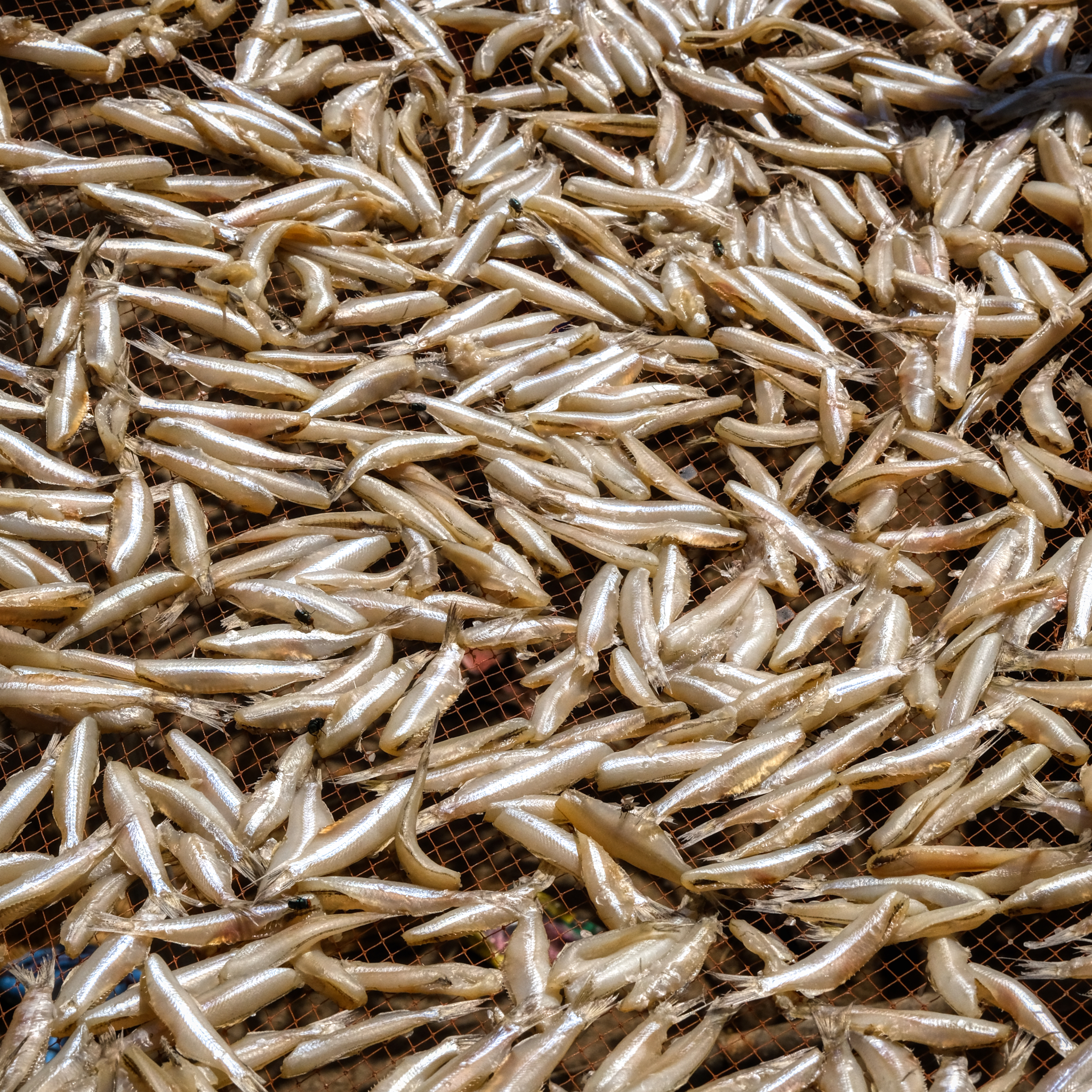 These small 'smelt' are very tasty when deep fat fried. One of my favorites.
These small 'smelt' are very tasty when deep fat fried. One of my favorites.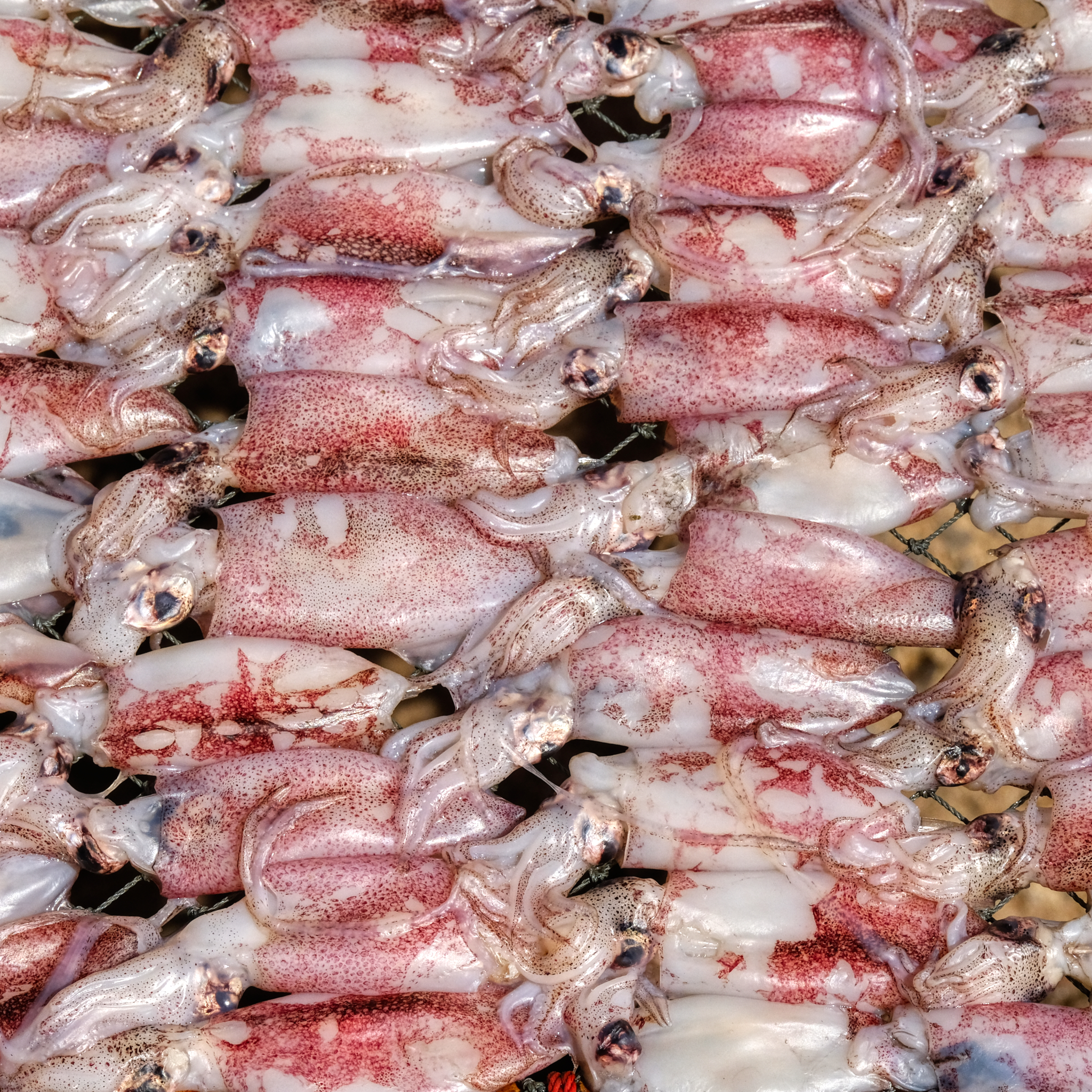 Delicious-looking baby squid. My favorite.
Delicious-looking baby squid. My favorite.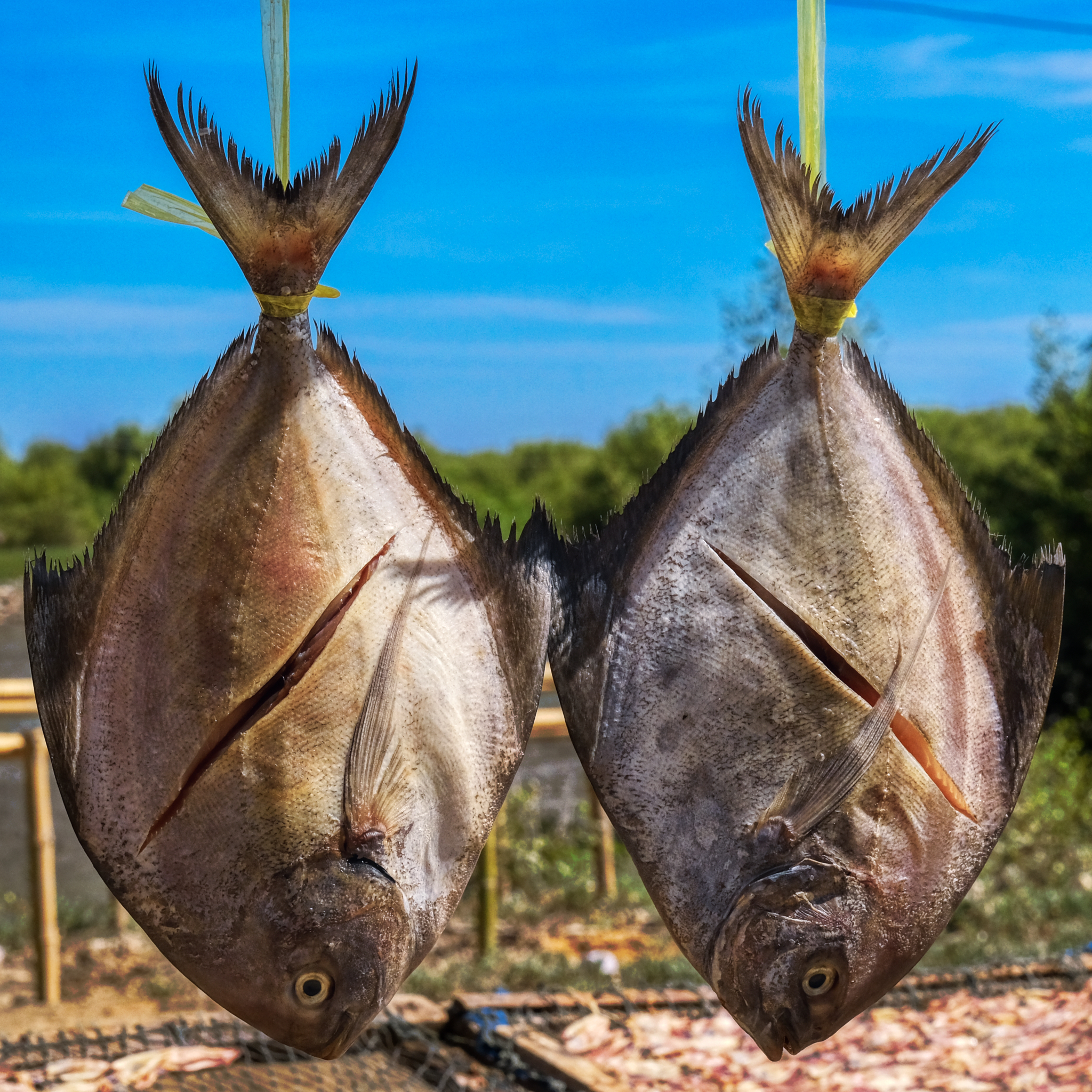 Good looking fish.
Good looking fish.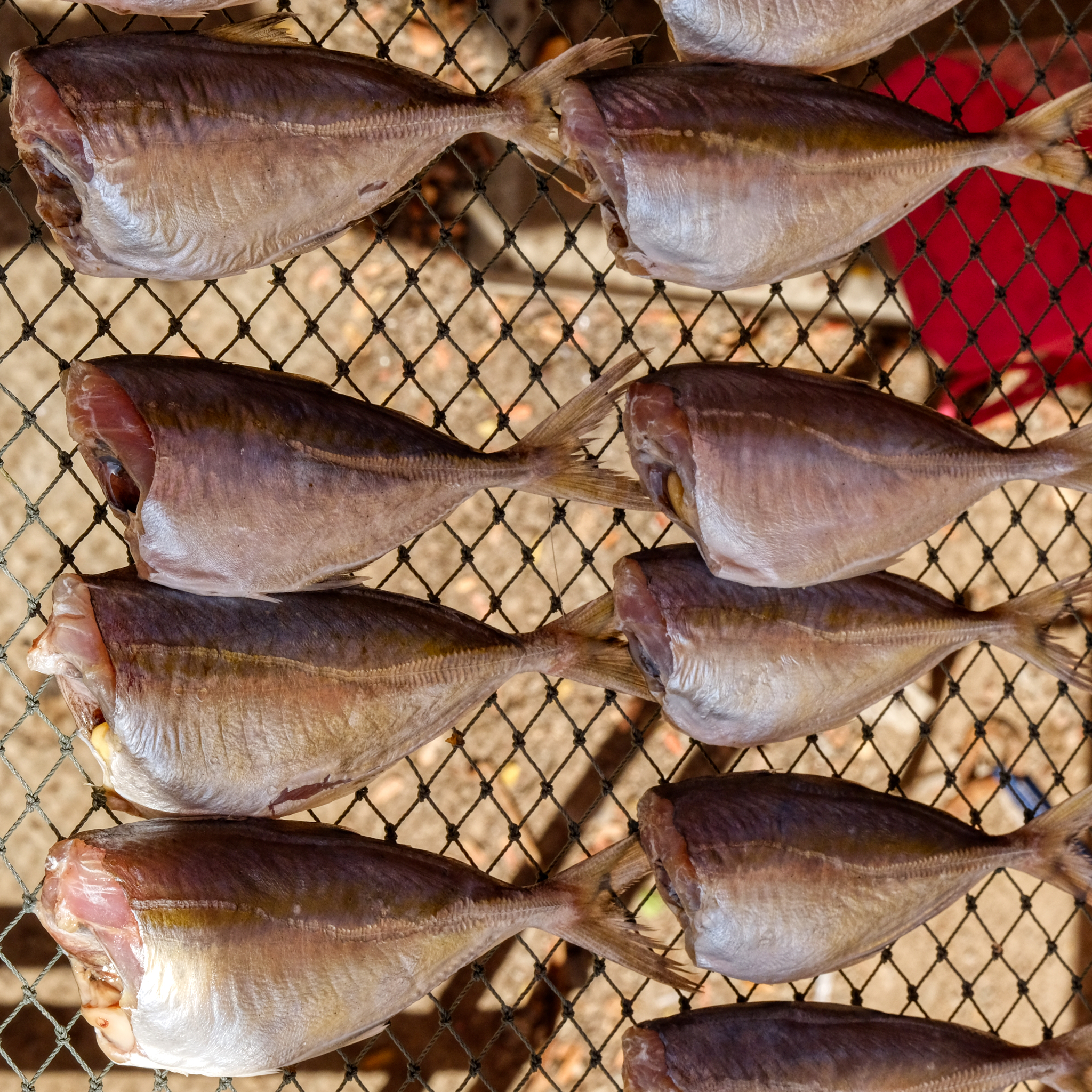 The drying fish are meant to be used in soups and curries.
The drying fish are meant to be used in soups and curries. But, of course, the most visually interesting fish were the baskets with their intricately patterned fish on display.
But, of course, the most visually interesting fish were the baskets with their intricately patterned fish on display.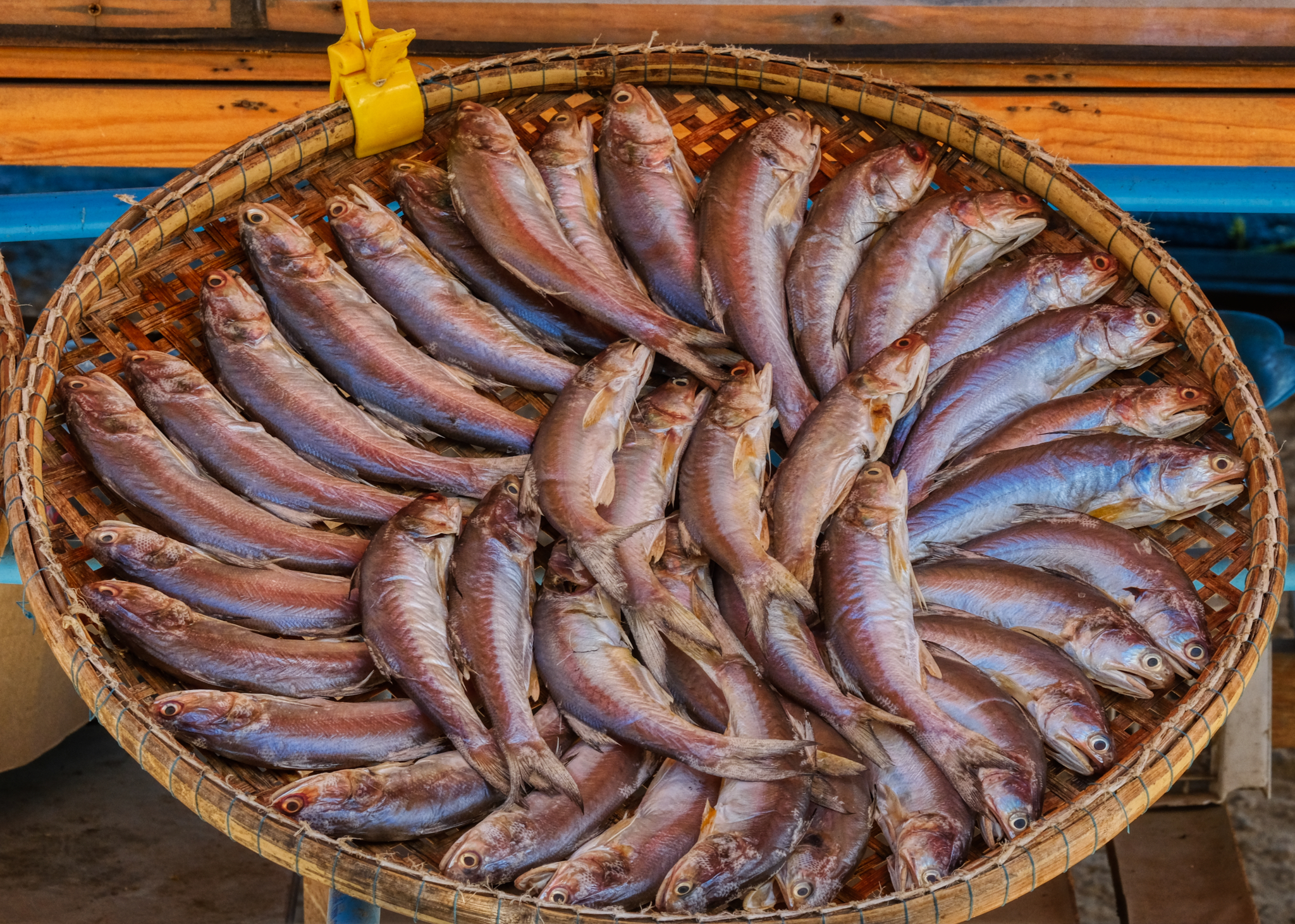 While I was photographing these fish baskets, I was thinking that these would print and frame very beautifully as a set.
While I was photographing these fish baskets, I was thinking that these would print and frame very beautifully as a set.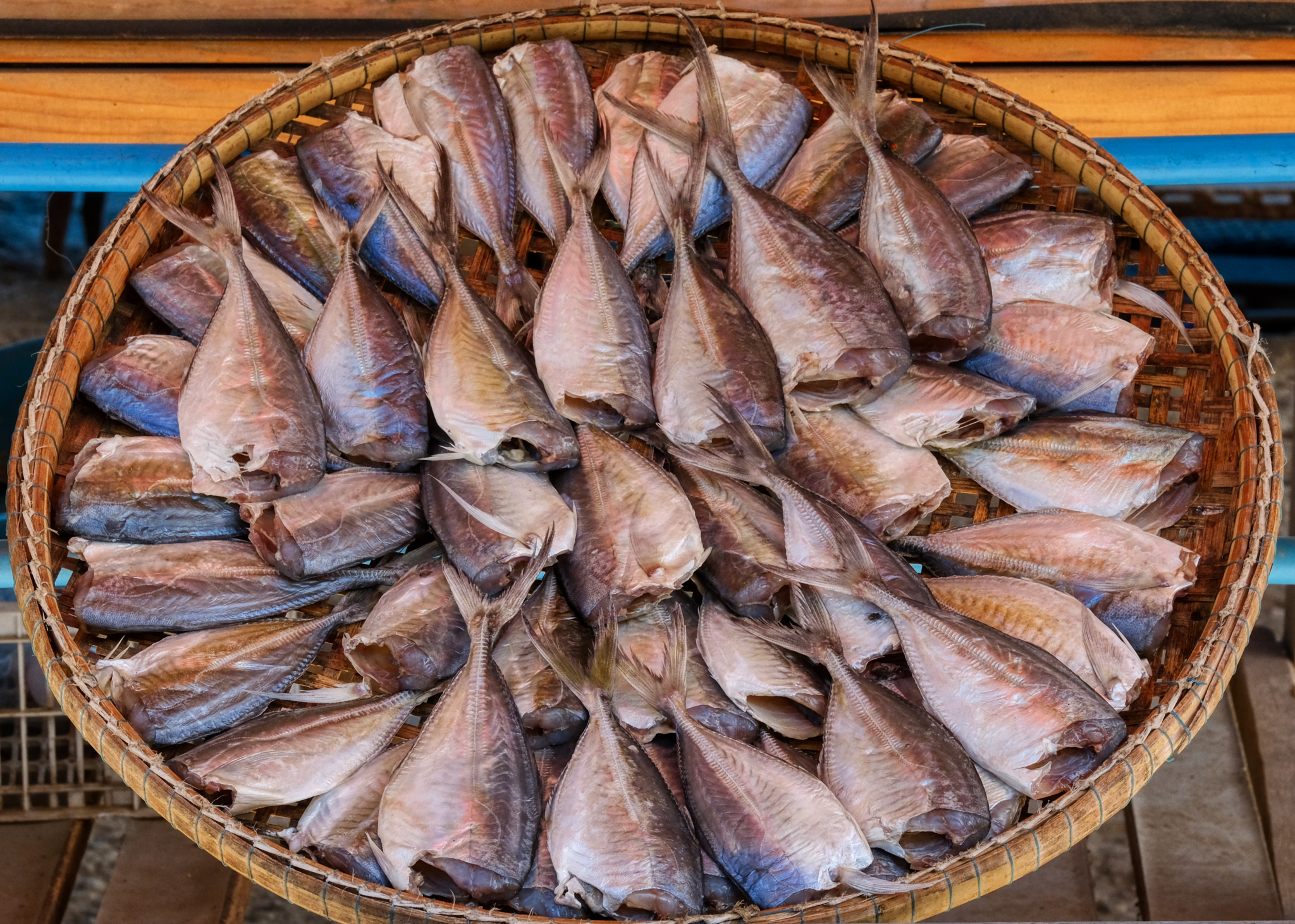 Perhaps I should come back here with a big tripod and reflectors for more professional, and better framed, shots . . .
Perhaps I should come back here with a big tripod and reflectors for more professional, and better framed, shots . . .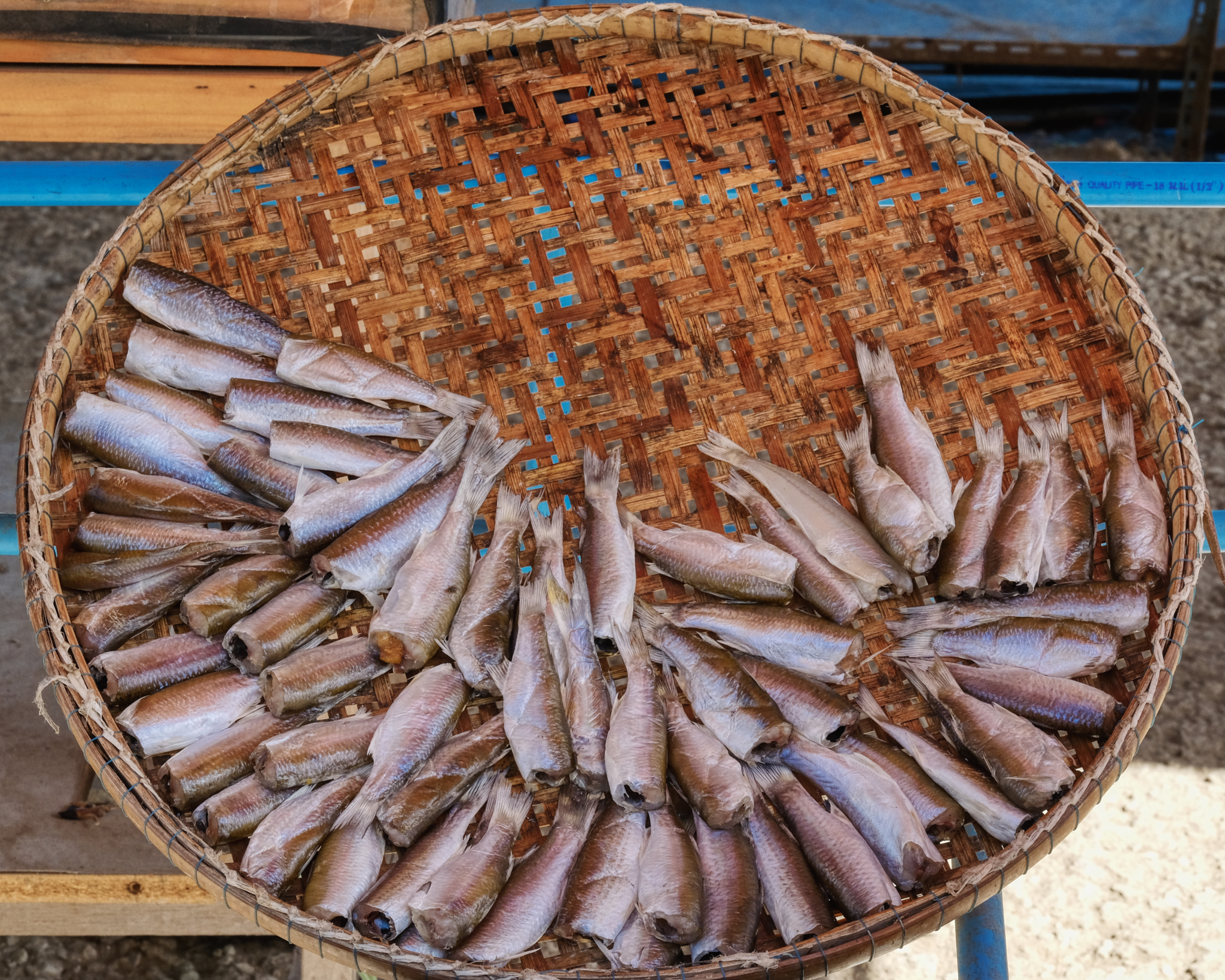 I took many, many photos of these beautiful fish baskets, but only post a few here.
I took many, many photos of these beautiful fish baskets, but only post a few here. We asked one of the fish hawkers how to get to the seashore and they pointed to a small road. We passed this woman busily building a boat on the roadside in tremendous heat and humidity.
We asked one of the fish hawkers how to get to the seashore and they pointed to a small road. We passed this woman busily building a boat on the roadside in tremendous heat and humidity.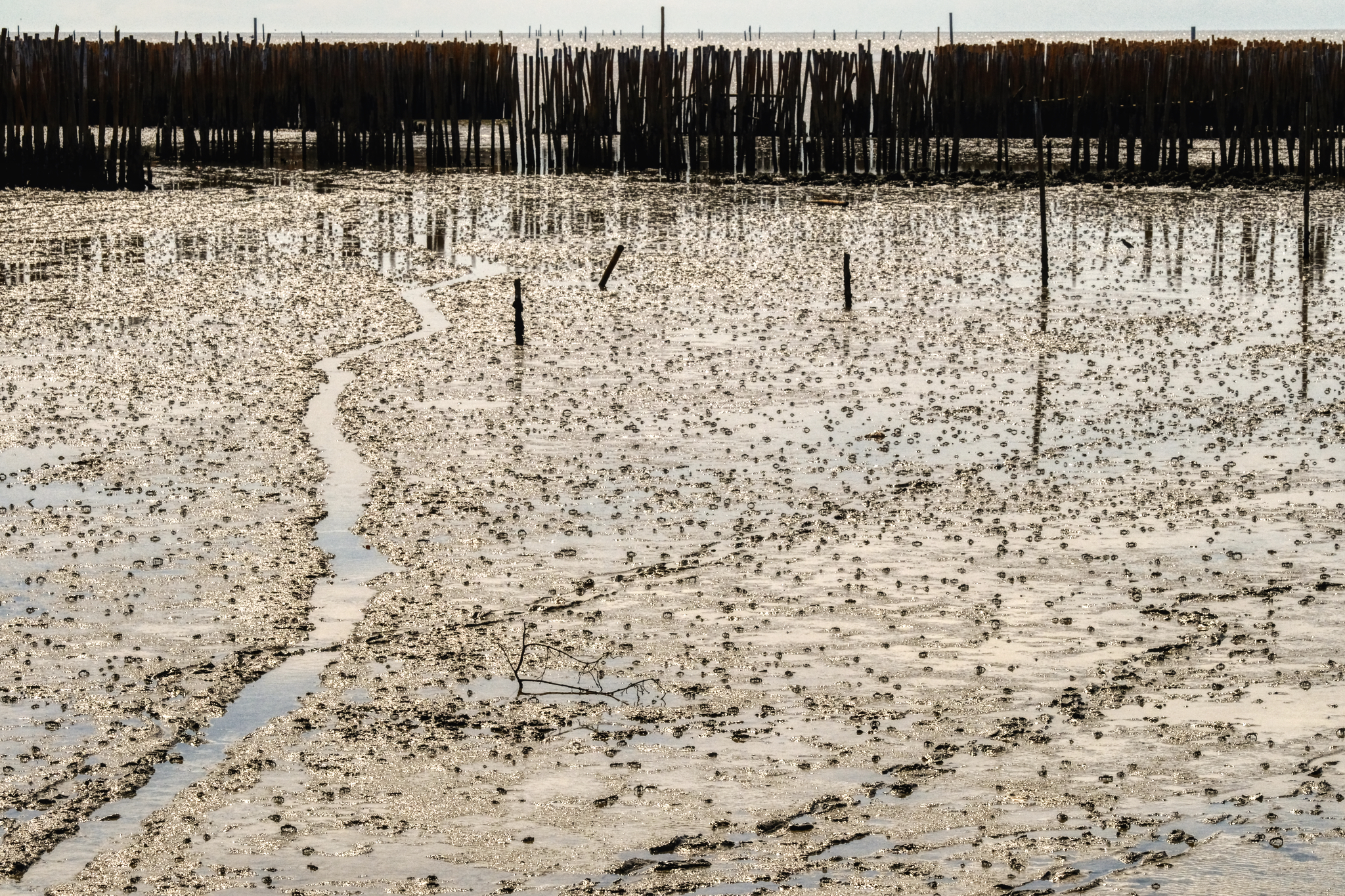 The small dirt road dumped us out at the foot of these mud flats . . . crawling with small crabs. These are the mud flats famous for a particular type of small clam that the Thais absolutely love to eat.
The small dirt road dumped us out at the foot of these mud flats . . . crawling with small crabs. These are the mud flats famous for a particular type of small clam that the Thais absolutely love to eat. 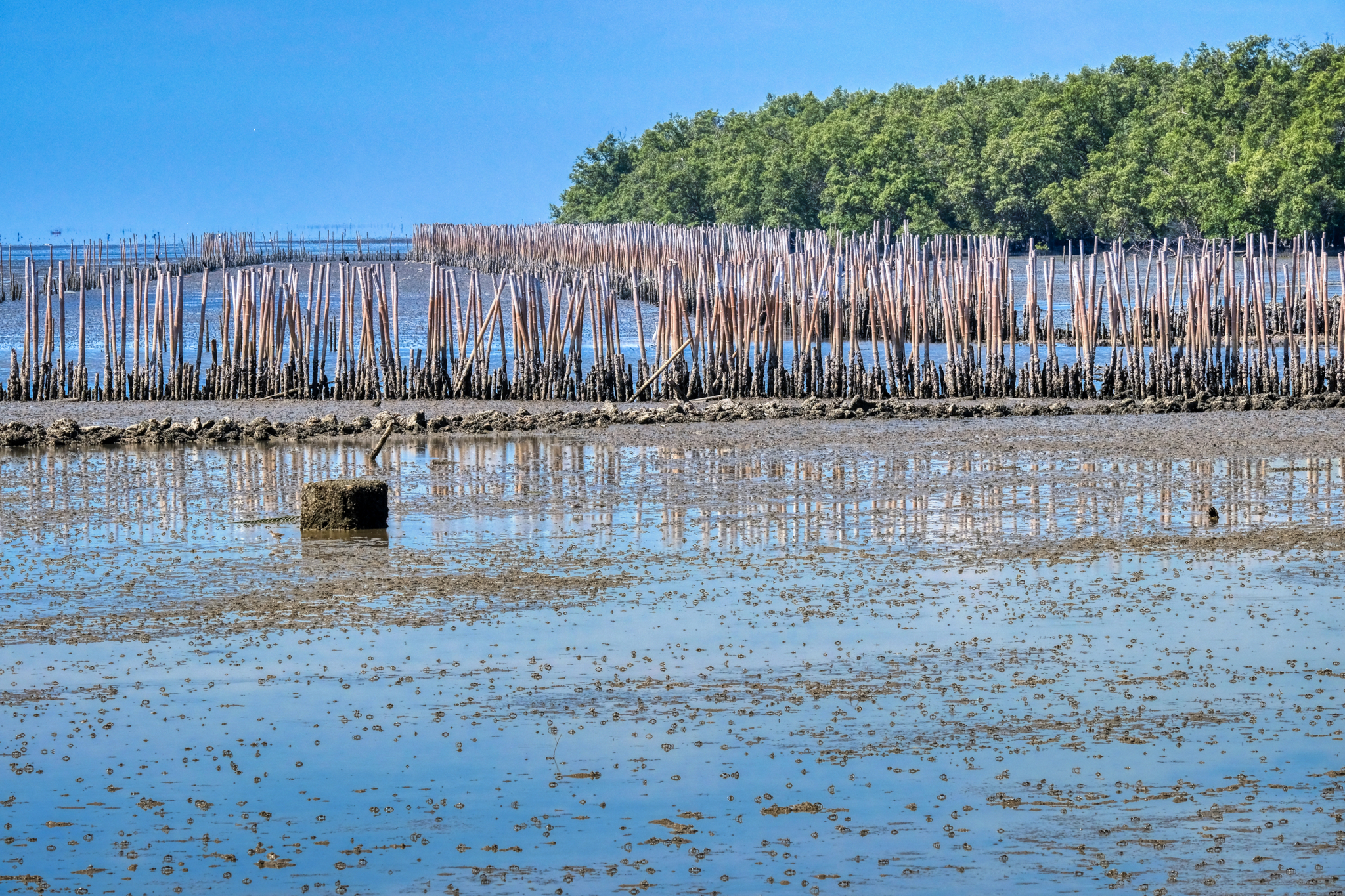 The elaborate bamboo barrier works extended for miles and miles along these mud flats . . . and off into the horizon of the Gulf of Thailand.
The elaborate bamboo barrier works extended for miles and miles along these mud flats . . . and off into the horizon of the Gulf of Thailand.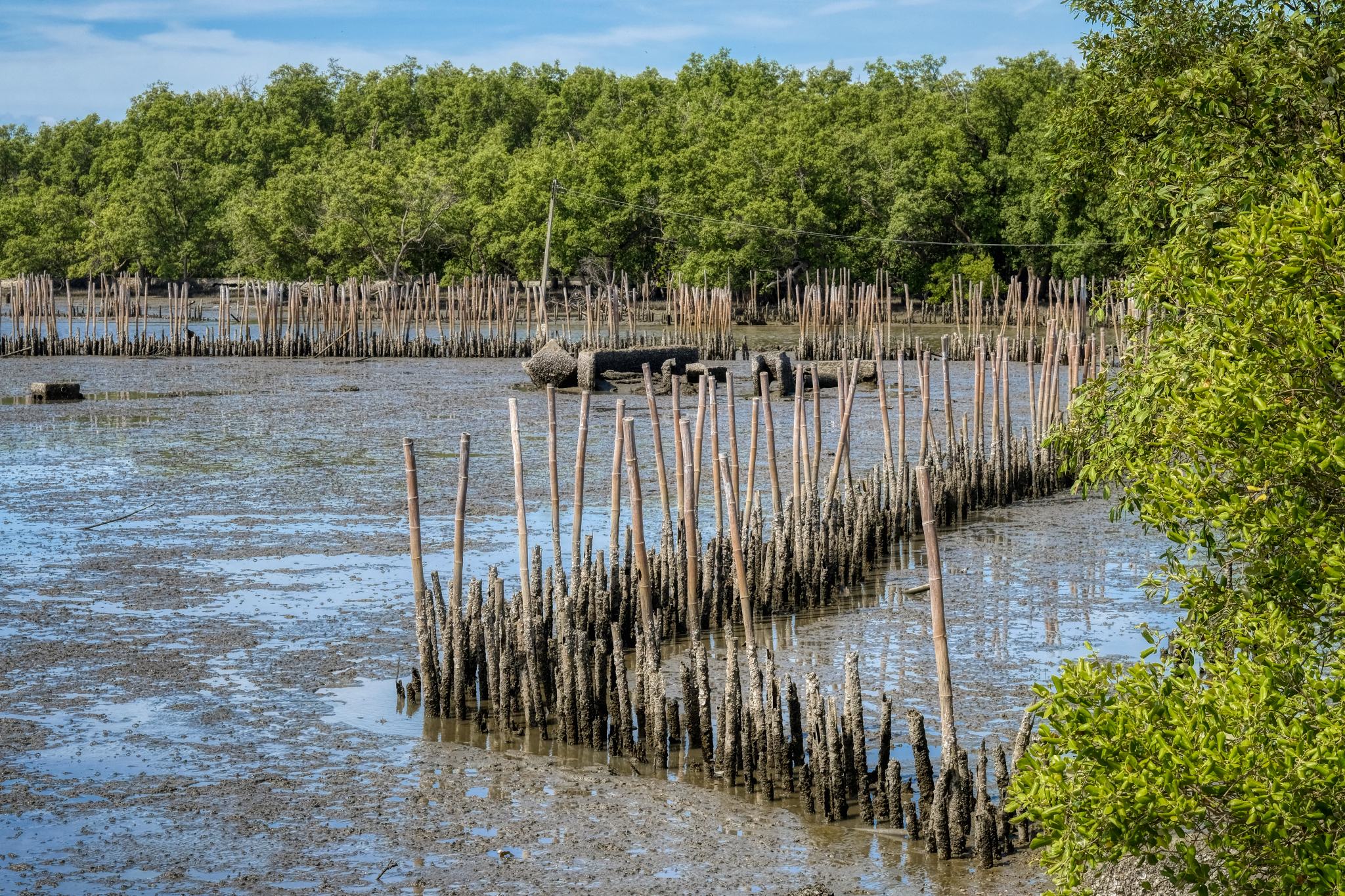 At a point of a small canal entering the mud flats there were many kinds of barrier works.
At a point of a small canal entering the mud flats there were many kinds of barrier works.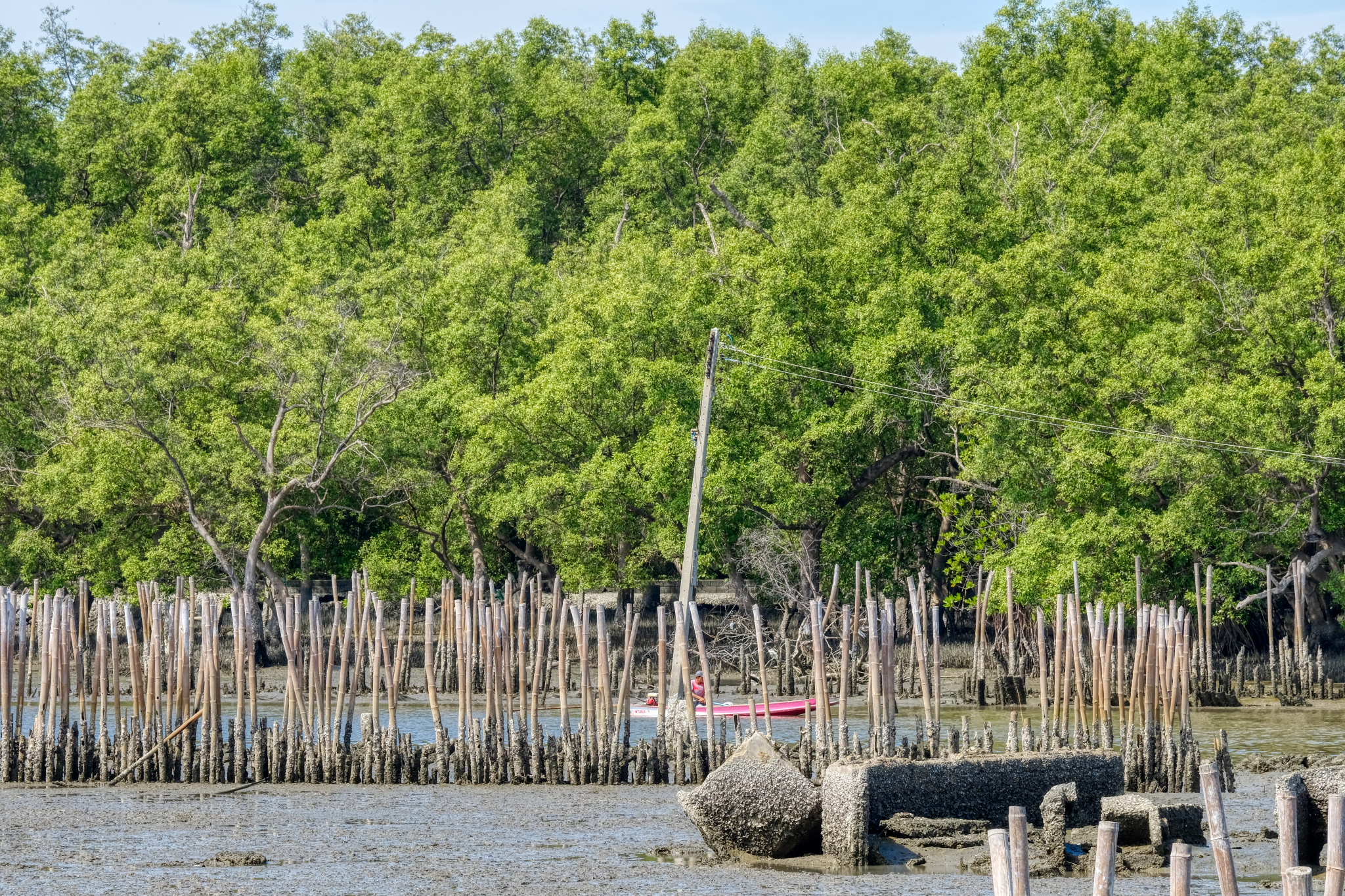 A workman out doing maintenance on the bamboo works.
A workman out doing maintenance on the bamboo works.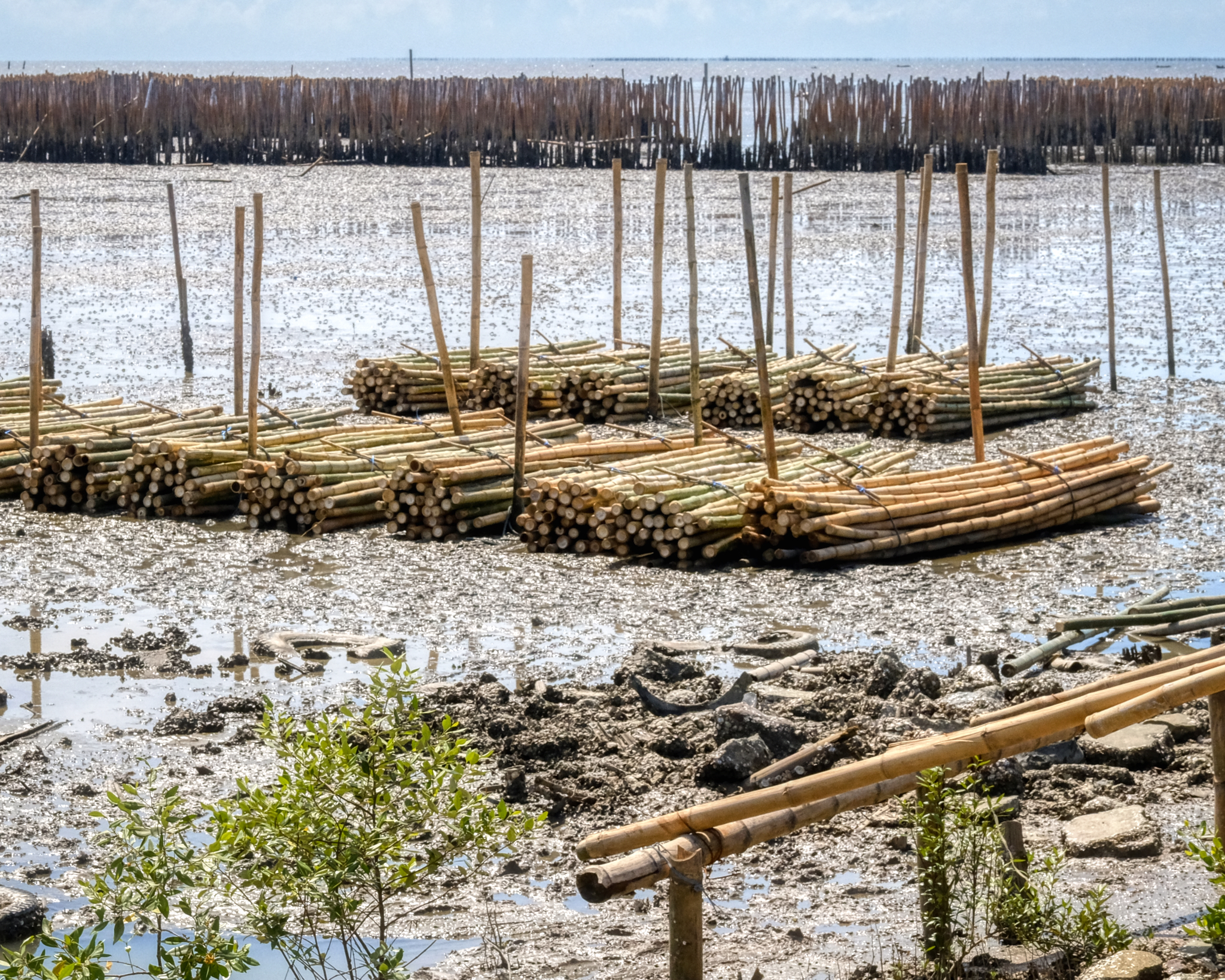 Fresh cut bamboo was being unloaded and made into rafts to bring out into the sea. This was a huge project . . .
Fresh cut bamboo was being unloaded and made into rafts to bring out into the sea. This was a huge project . . .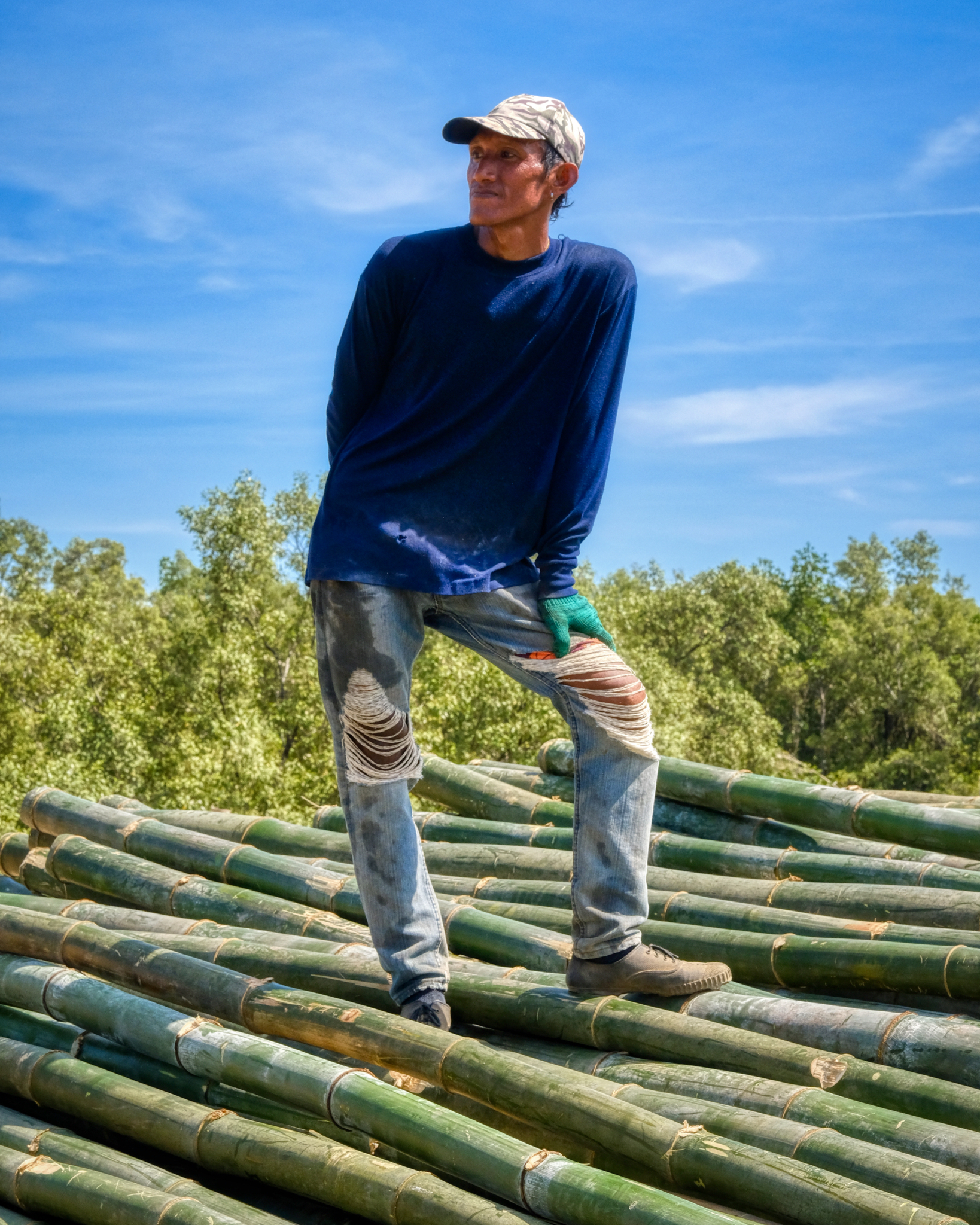 A Samut bamboo wrangler.
A Samut bamboo wrangler.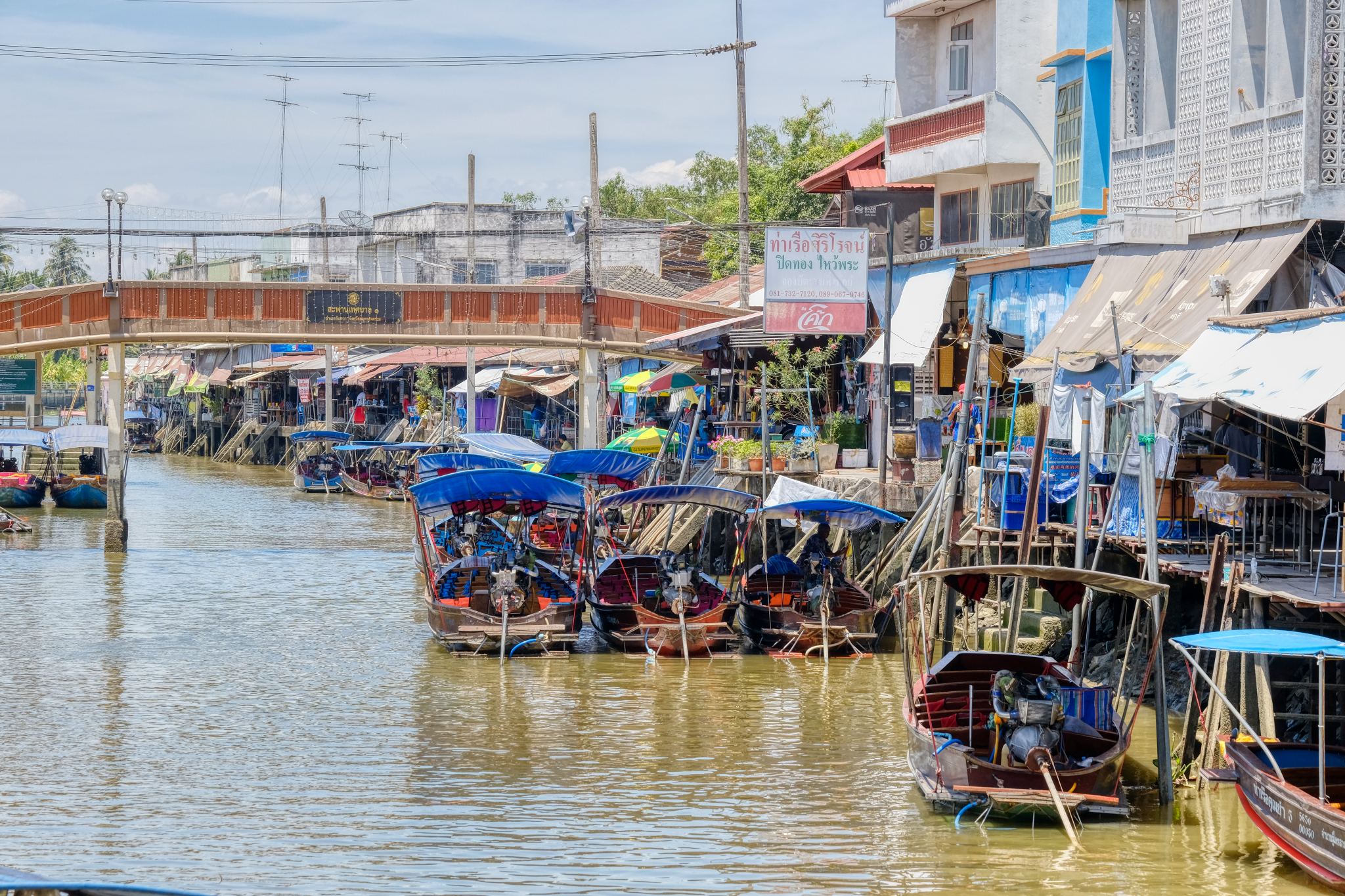 Our next stop was at the village of Amphawa, a floating market. Too much tourism has changed the feeling of this place since I last visited it nearly 20 years ago. It is still very charming . . . and visually interesting.
Our next stop was at the village of Amphawa, a floating market. Too much tourism has changed the feeling of this place since I last visited it nearly 20 years ago. It is still very charming . . . and visually interesting.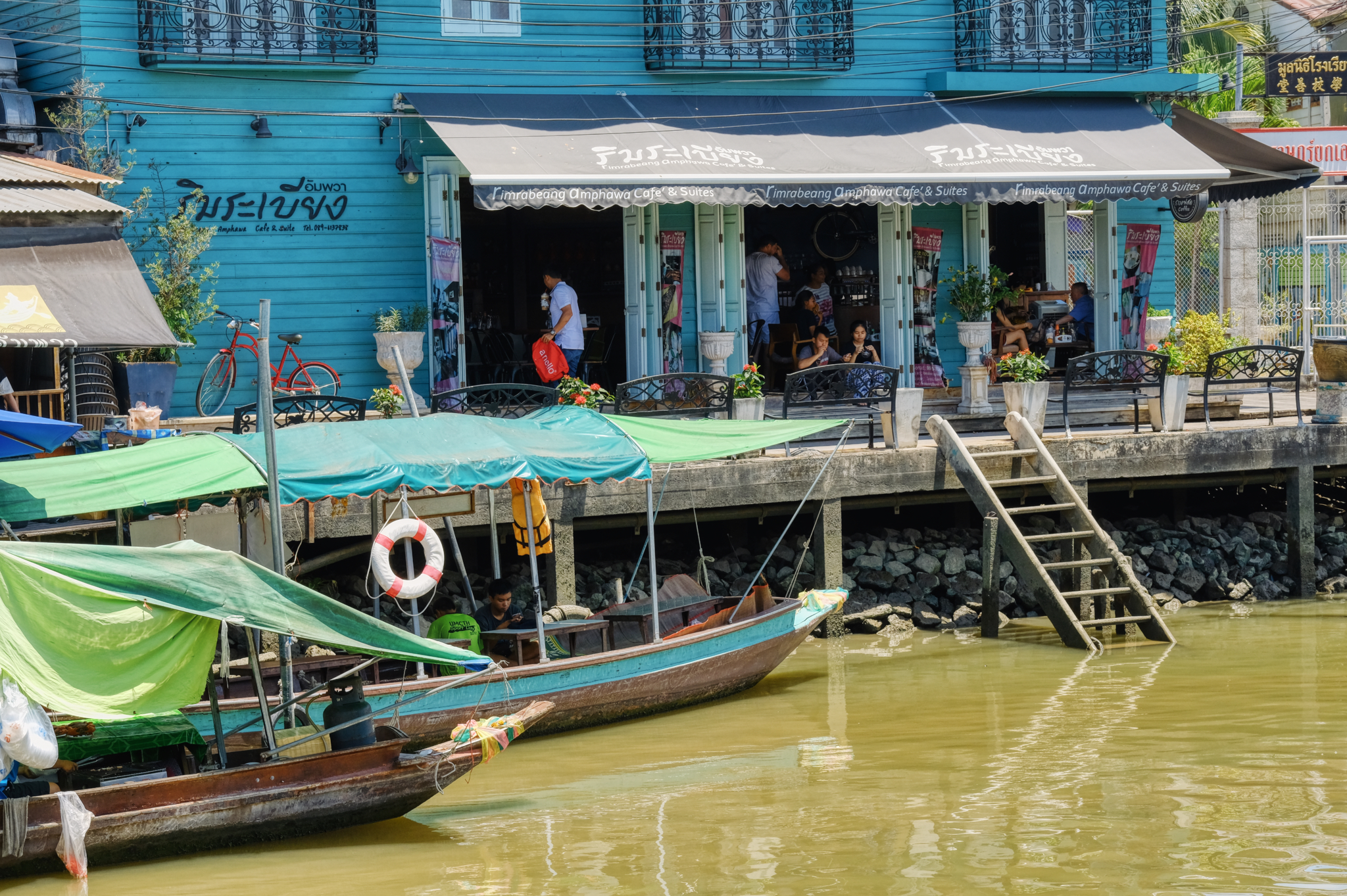 There are many very nice, upscale coffee shops and nice restaurants . . . a big change from an authentic fishing and market village.
There are many very nice, upscale coffee shops and nice restaurants . . . a big change from an authentic fishing and market village. 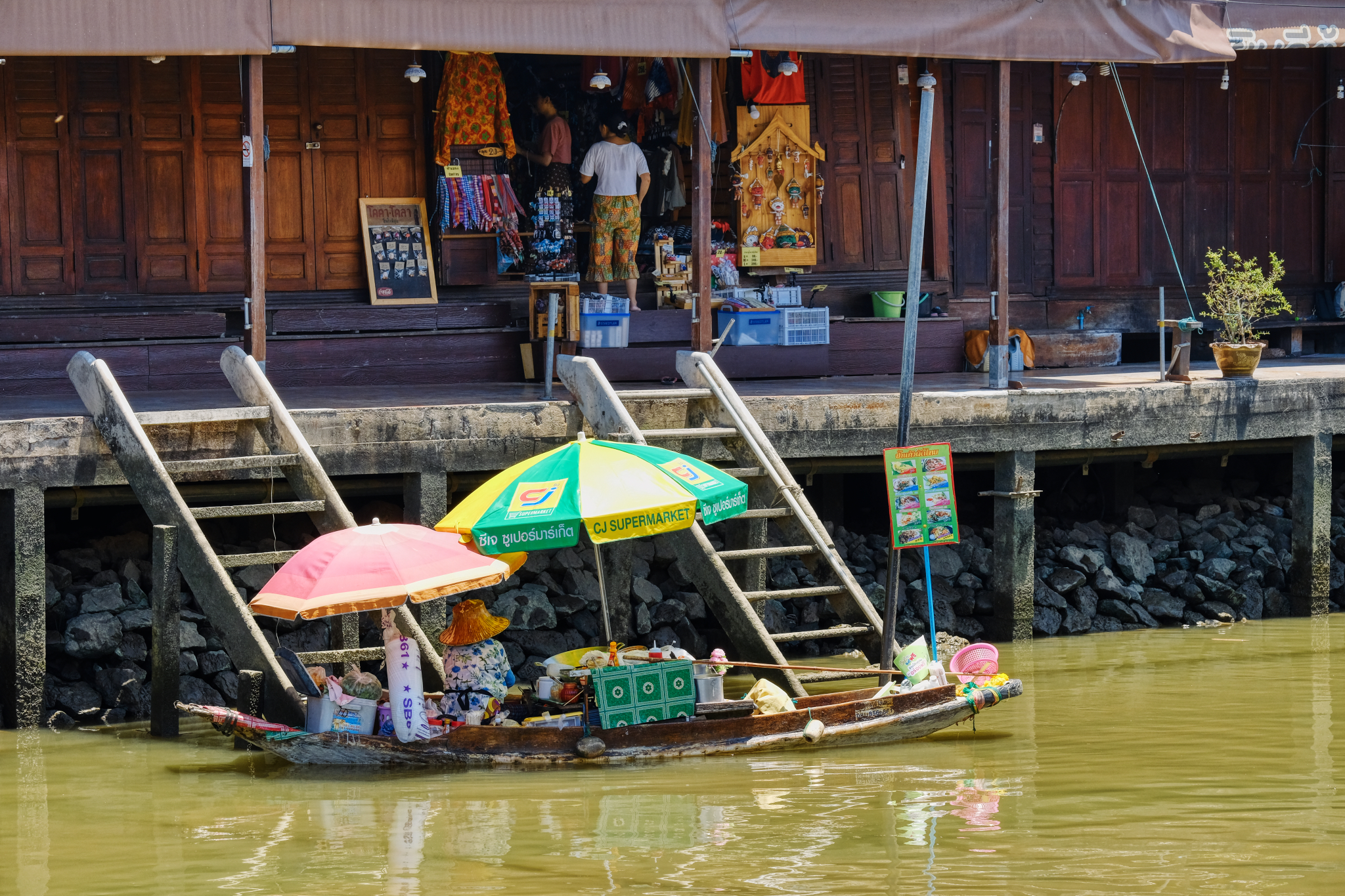 With the ambient temperature above 105(f) with high humidity, it was little wonder there were few people out and about.
With the ambient temperature above 105(f) with high humidity, it was little wonder there were few people out and about.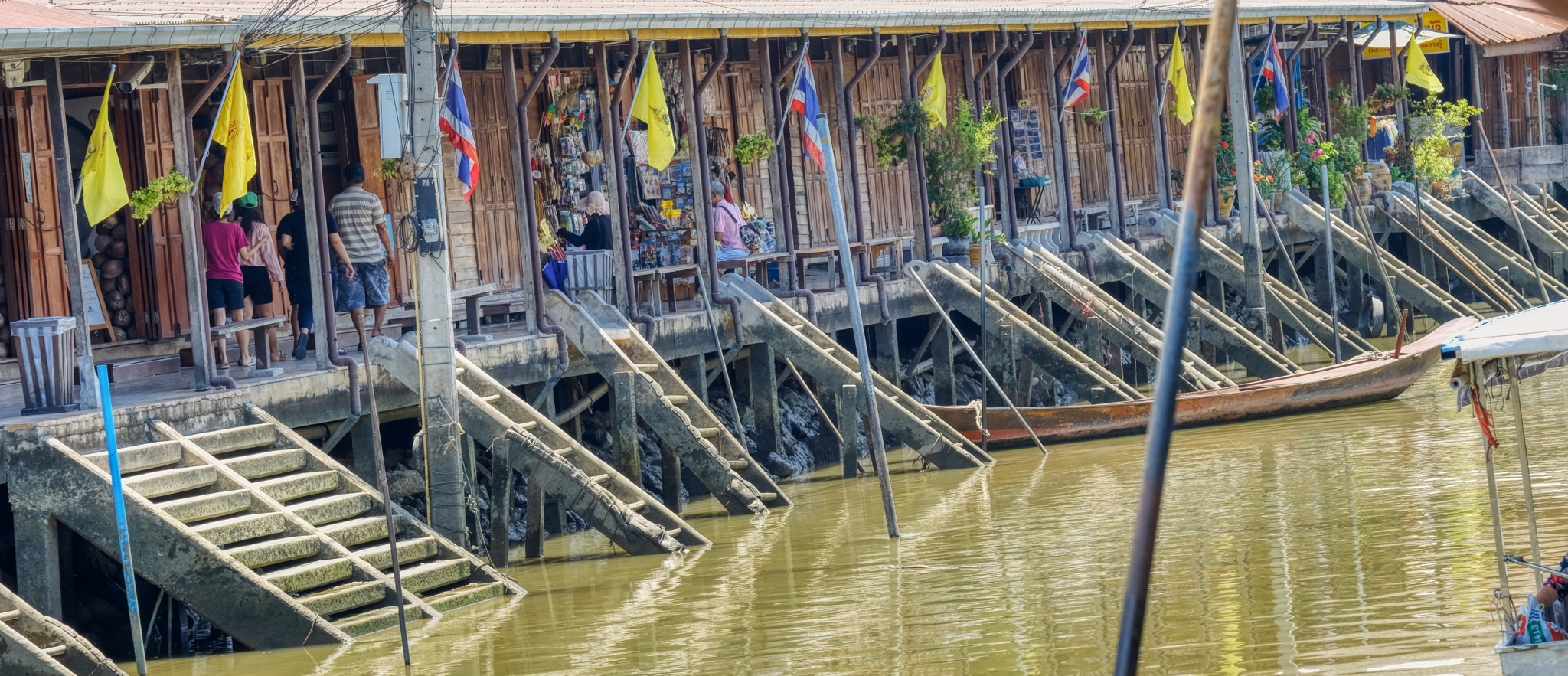 The repeating patterns of the klong access steps made for a fascinating study.
The repeating patterns of the klong access steps made for a fascinating study.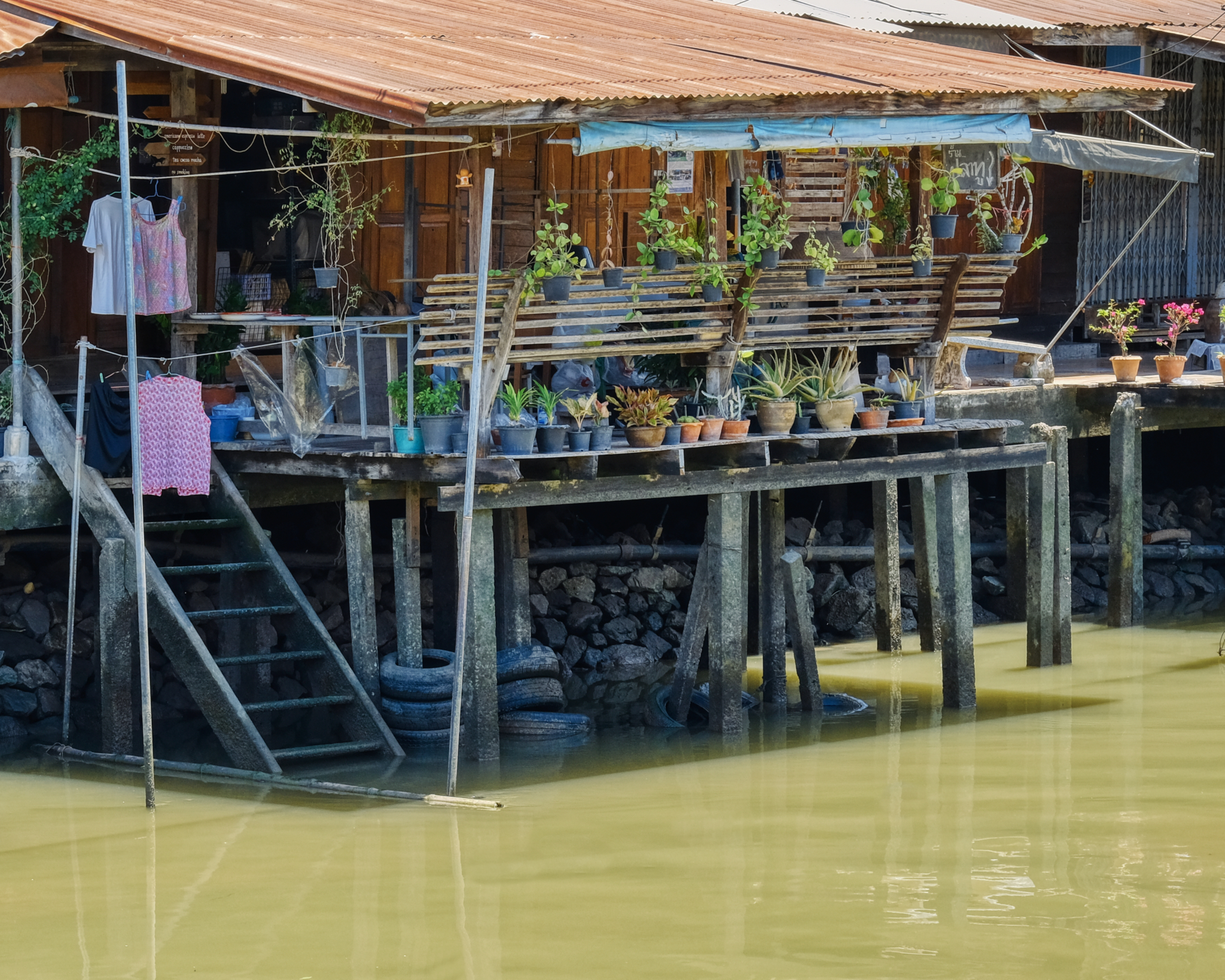 Life along the canal (klong) . . .
Life along the canal (klong) . . .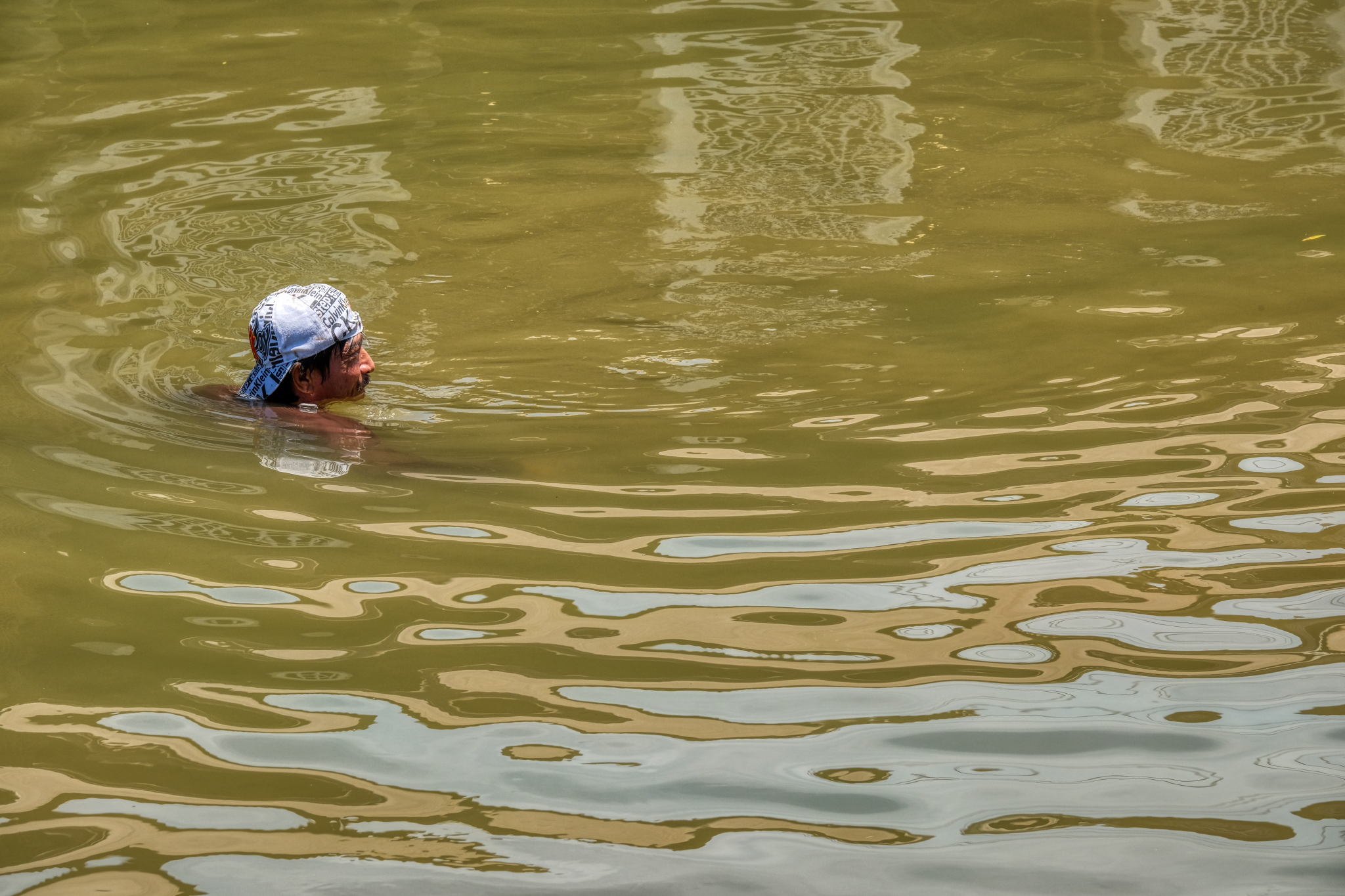 Swimming to beat the heat? No . . . fishing for bottom feeders with a long-handled net.
Swimming to beat the heat? No . . . fishing for bottom feeders with a long-handled net.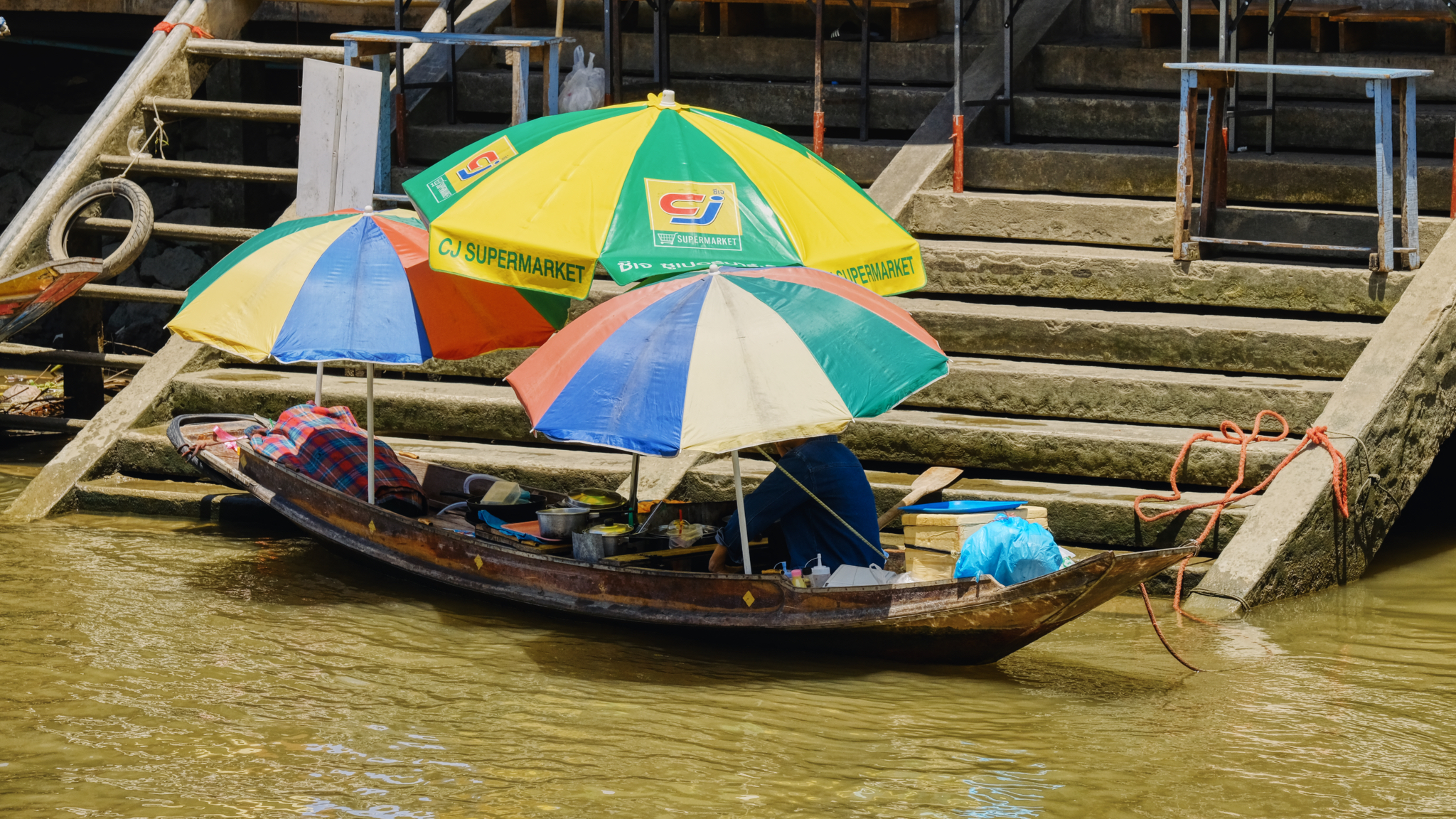 With few tourists around, and crushing heat, the boat vendors sat in quiet repose . . . waiting for a sale.
With few tourists around, and crushing heat, the boat vendors sat in quiet repose . . . waiting for a sale. When the canal is full of tourists in their small boats, these floating restaurants serve the water traffic.
When the canal is full of tourists in their small boats, these floating restaurants serve the water traffic.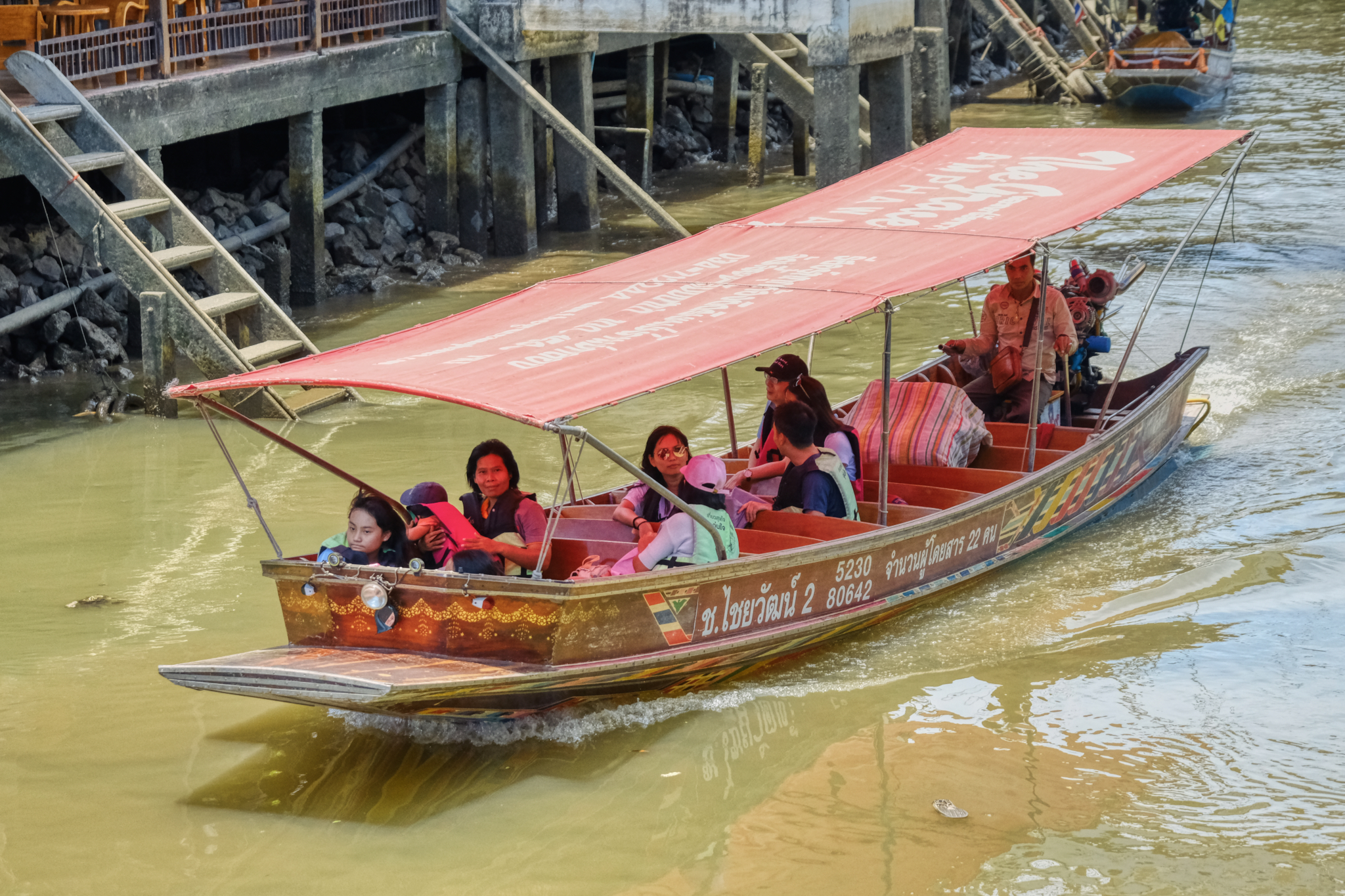 This was the only tourist boat we say all afternoon . . . and they looked HOT!
This was the only tourist boat we say all afternoon . . . and they looked HOT!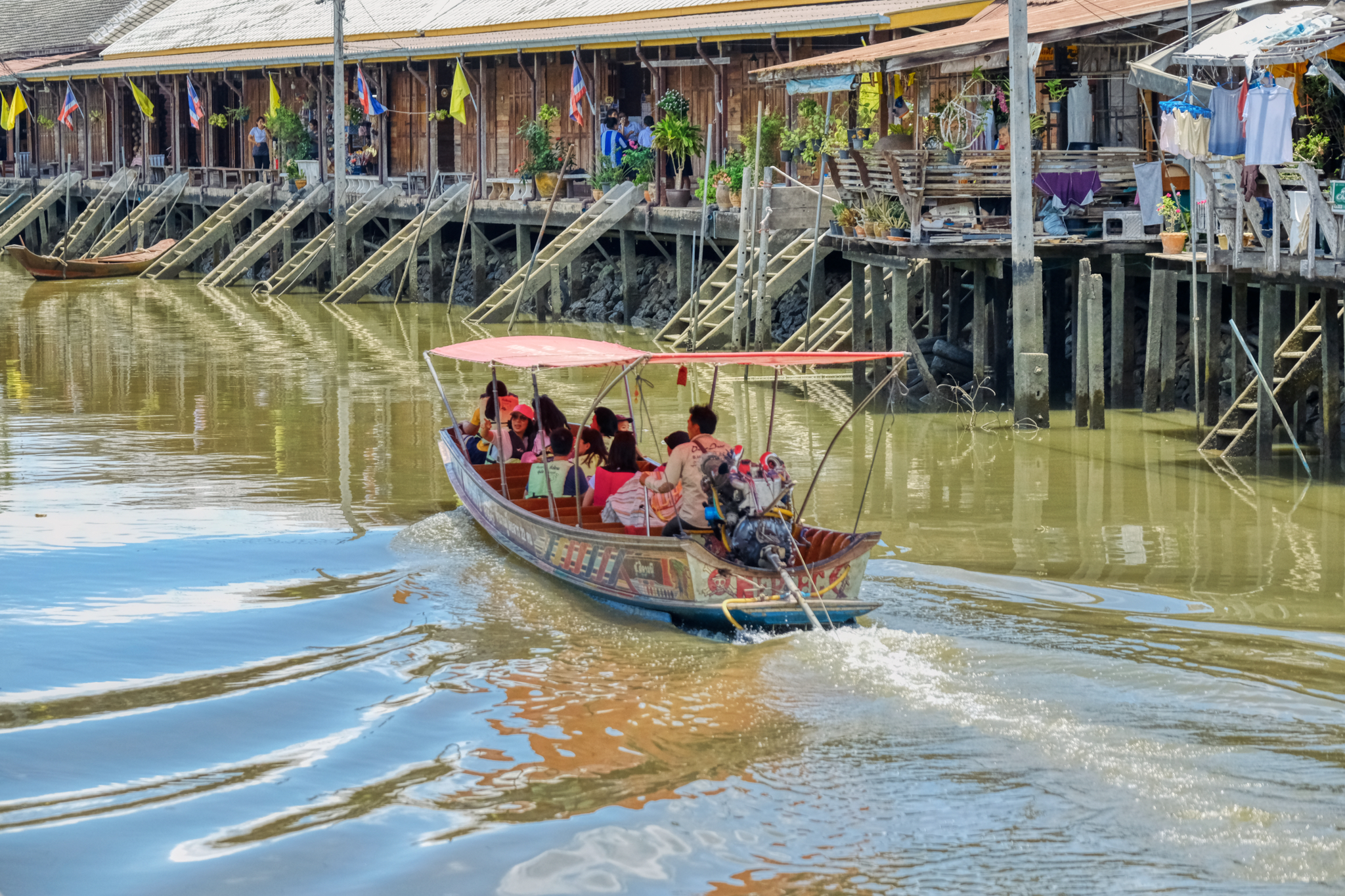 In some respects, this might be the best time of year to visit Amphawa . . . the rest of the year it is overcrowded with tourists. They had the place to themselves.
In some respects, this might be the best time of year to visit Amphawa . . . the rest of the year it is overcrowded with tourists. They had the place to themselves.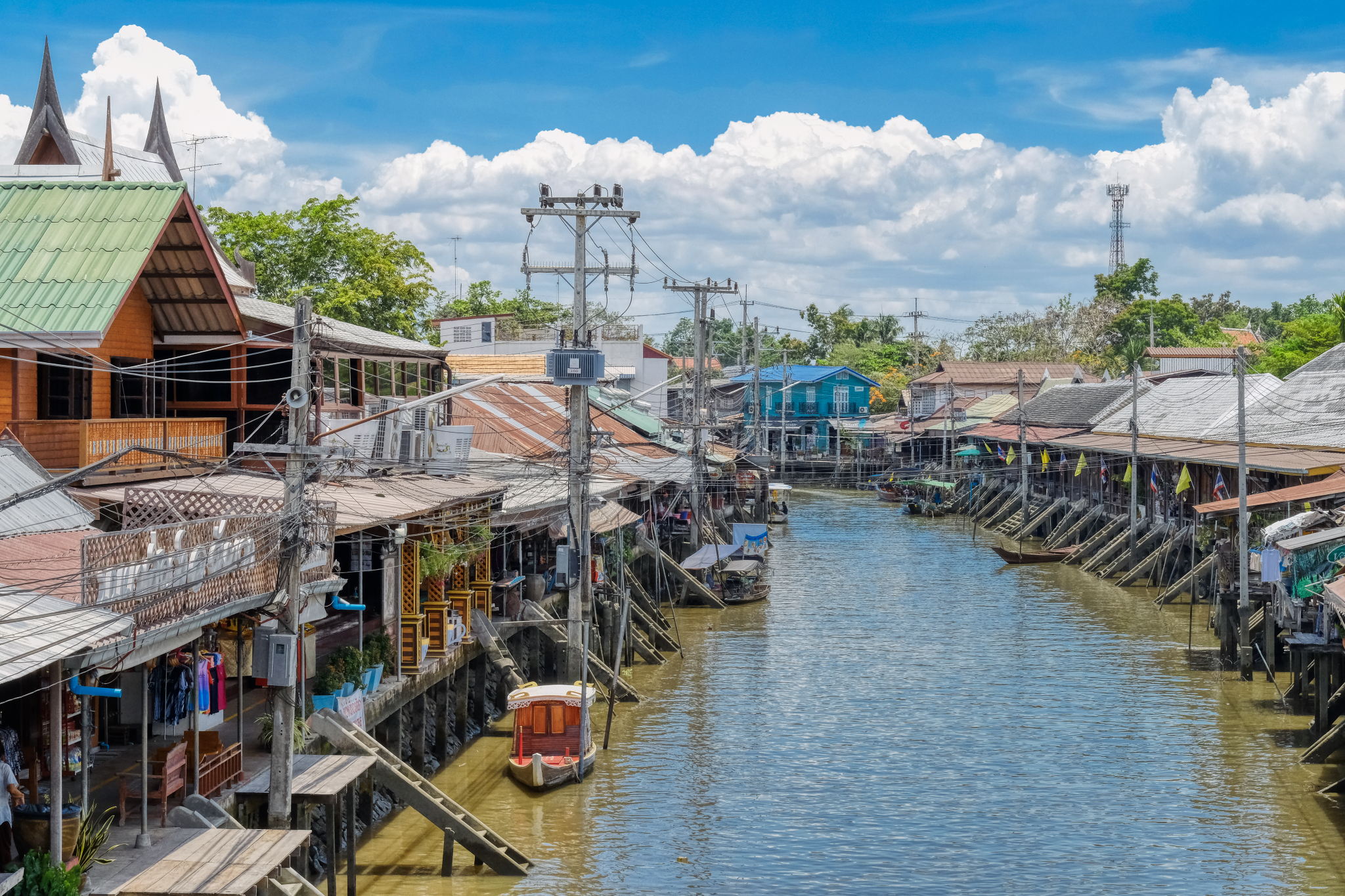 Standing on a bridge over the canal . . and a view one way . . . and . . .
Standing on a bridge over the canal . . and a view one way . . . and . . .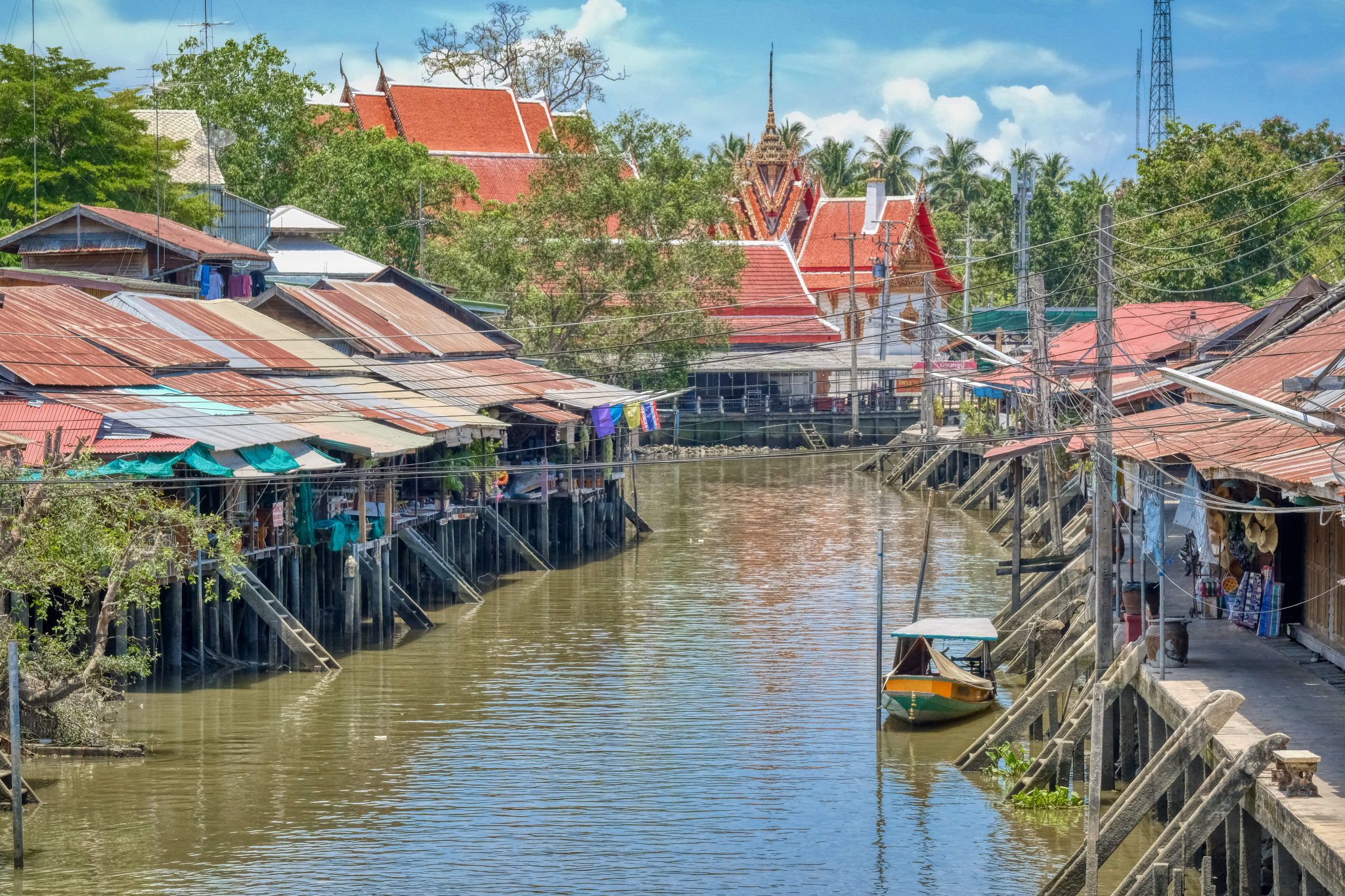 . . . the view in the other direction toward a Buddhist temple (wat).
. . . the view in the other direction toward a Buddhist temple (wat).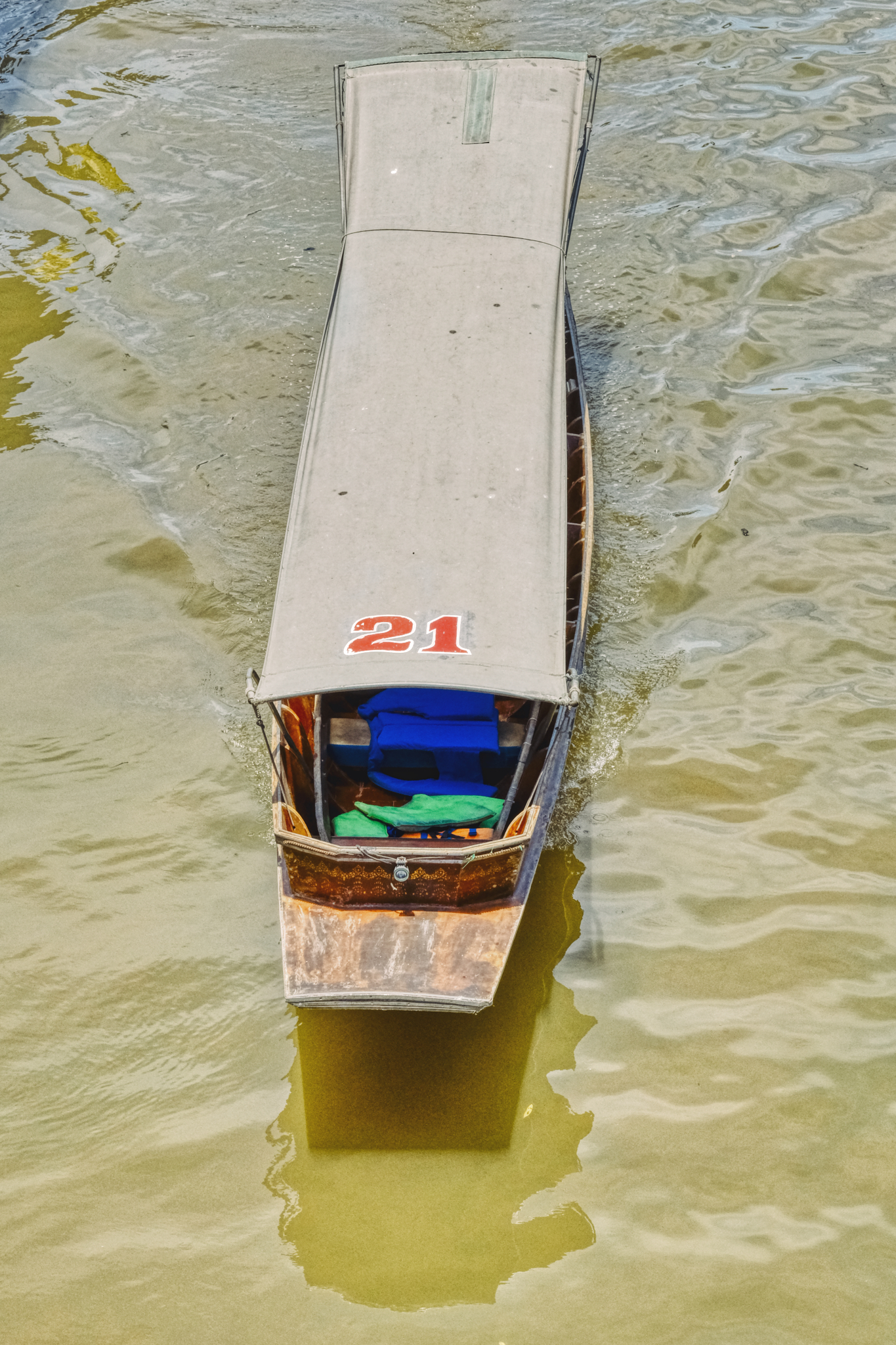 A tourist boat cruising for a fare . . . unsuccessfully.
A tourist boat cruising for a fare . . . unsuccessfully.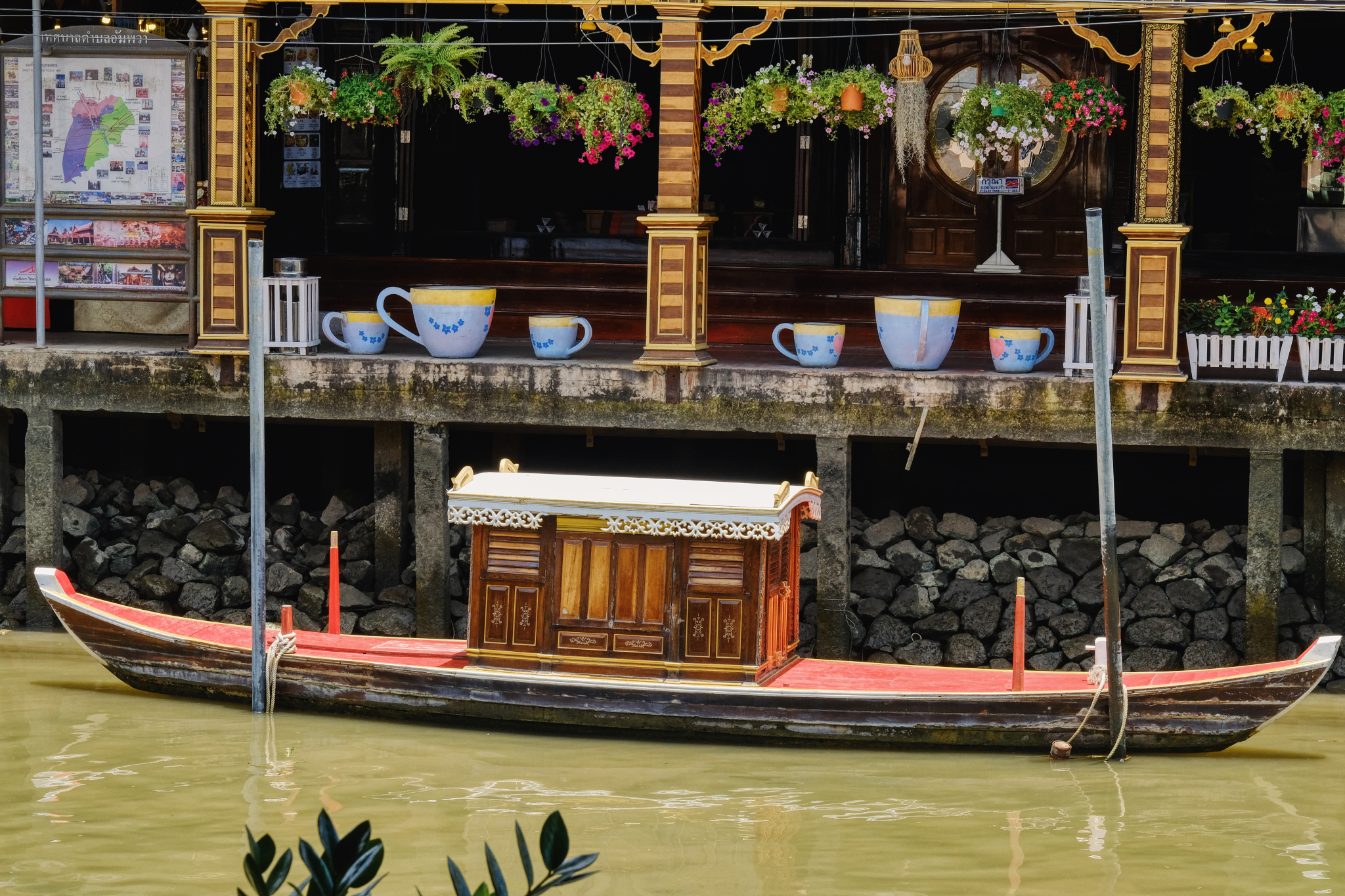 That looks inviting. We went over to this marvelous Old Thai style coffee house for some ice coffee and cold water.
That looks inviting. We went over to this marvelous Old Thai style coffee house for some ice coffee and cold water.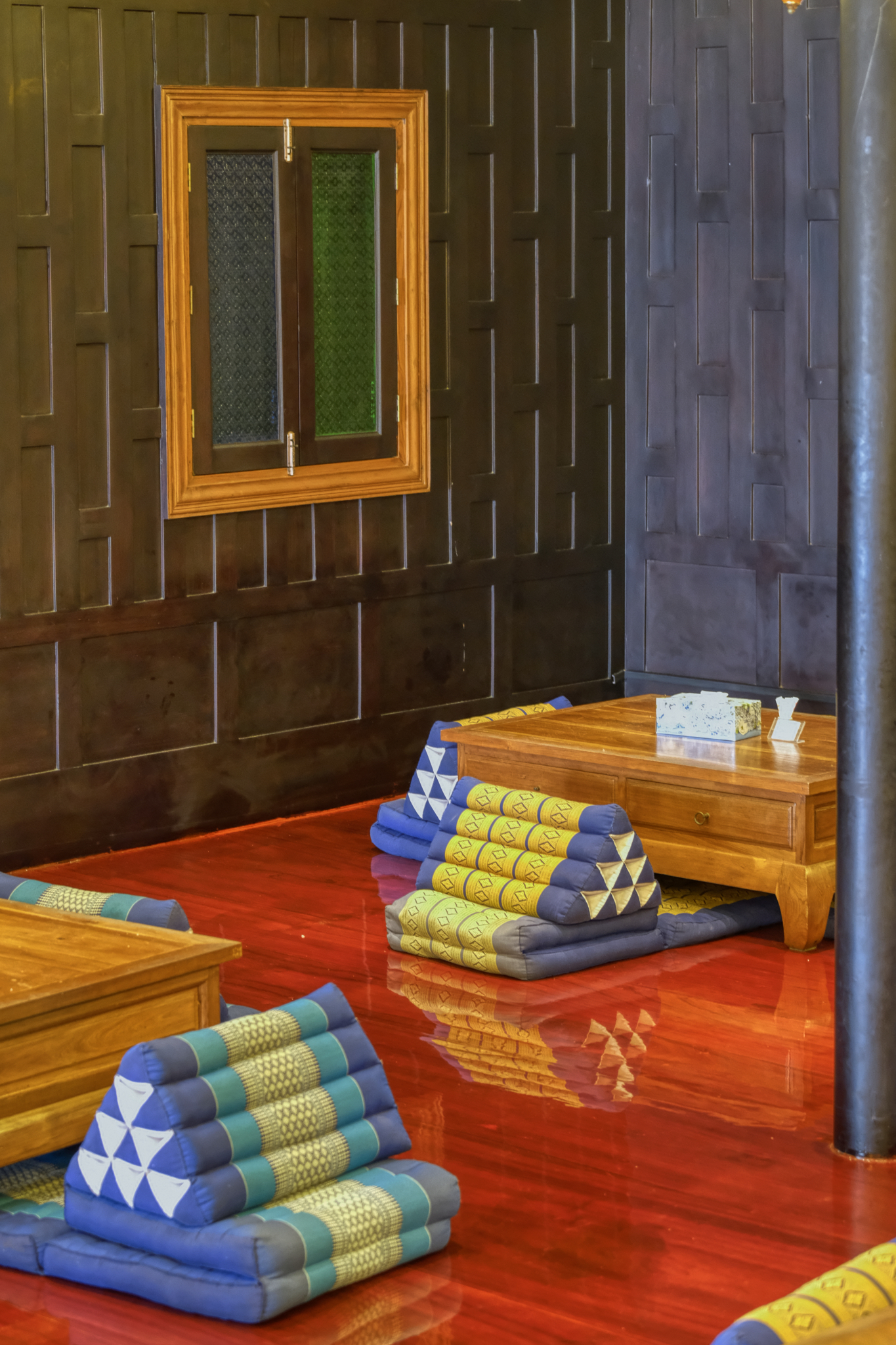 Such a beautiful place to rest, replenish, hydrate, and sit in front of some fans.
Such a beautiful place to rest, replenish, hydrate, and sit in front of some fans.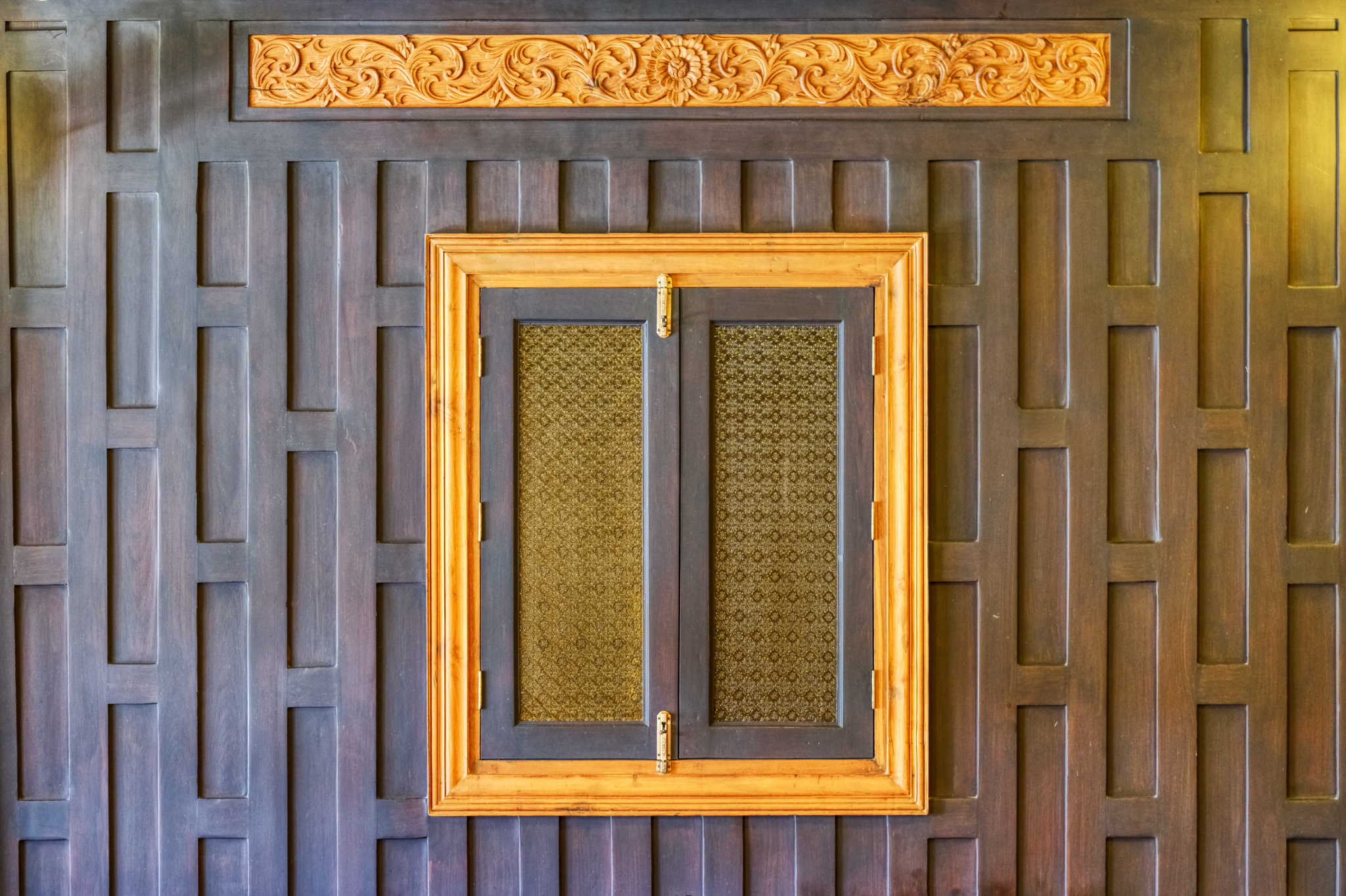 Old Thai style wood panels are so beautiful.
Old Thai style wood panels are so beautiful.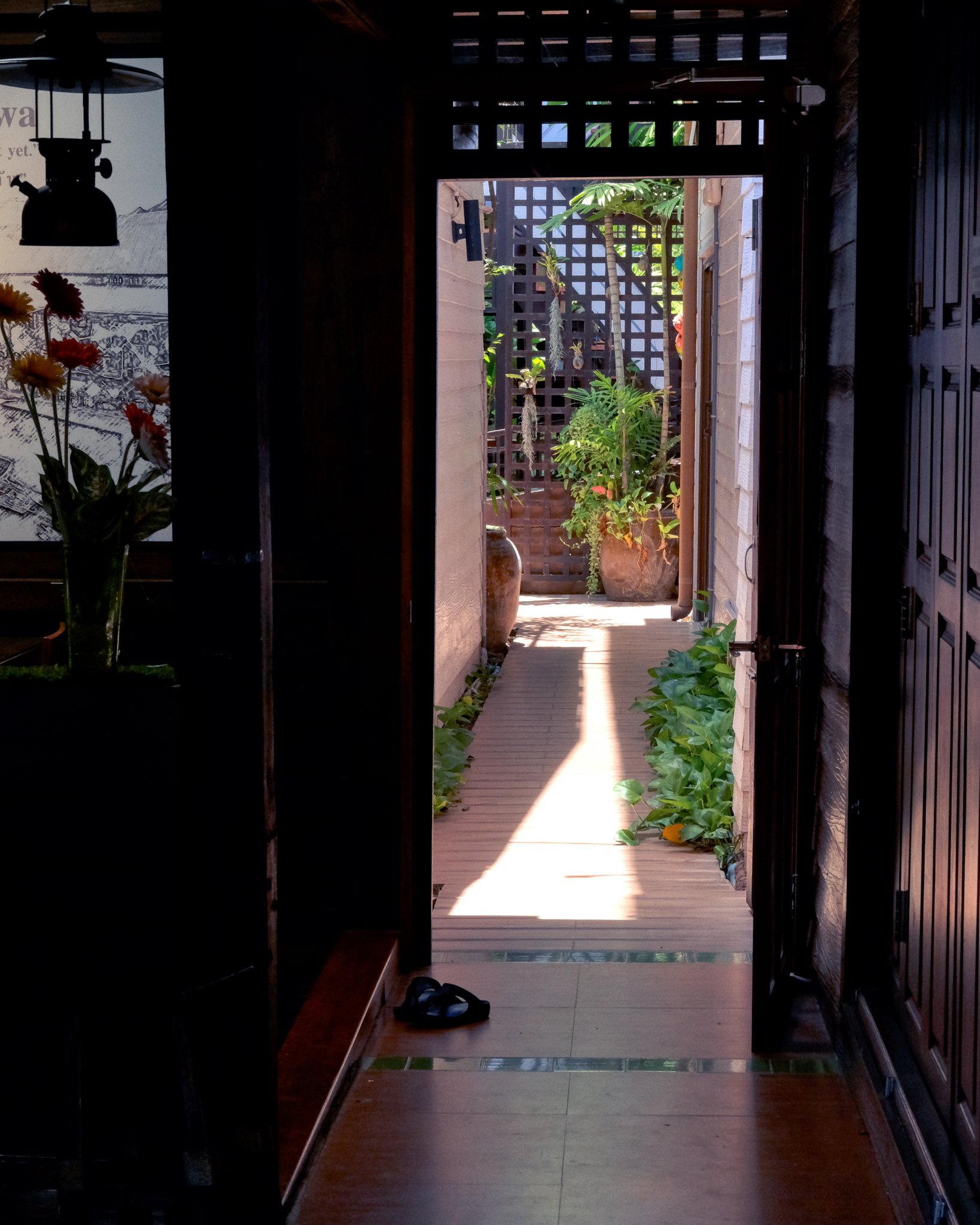 After a break we walked along he wooden boardwalks and secretly peaked into the houses. Such serene stillness in the oppressive heat and humidity.
After a break we walked along he wooden boardwalks and secretly peaked into the houses. Such serene stillness in the oppressive heat and humidity.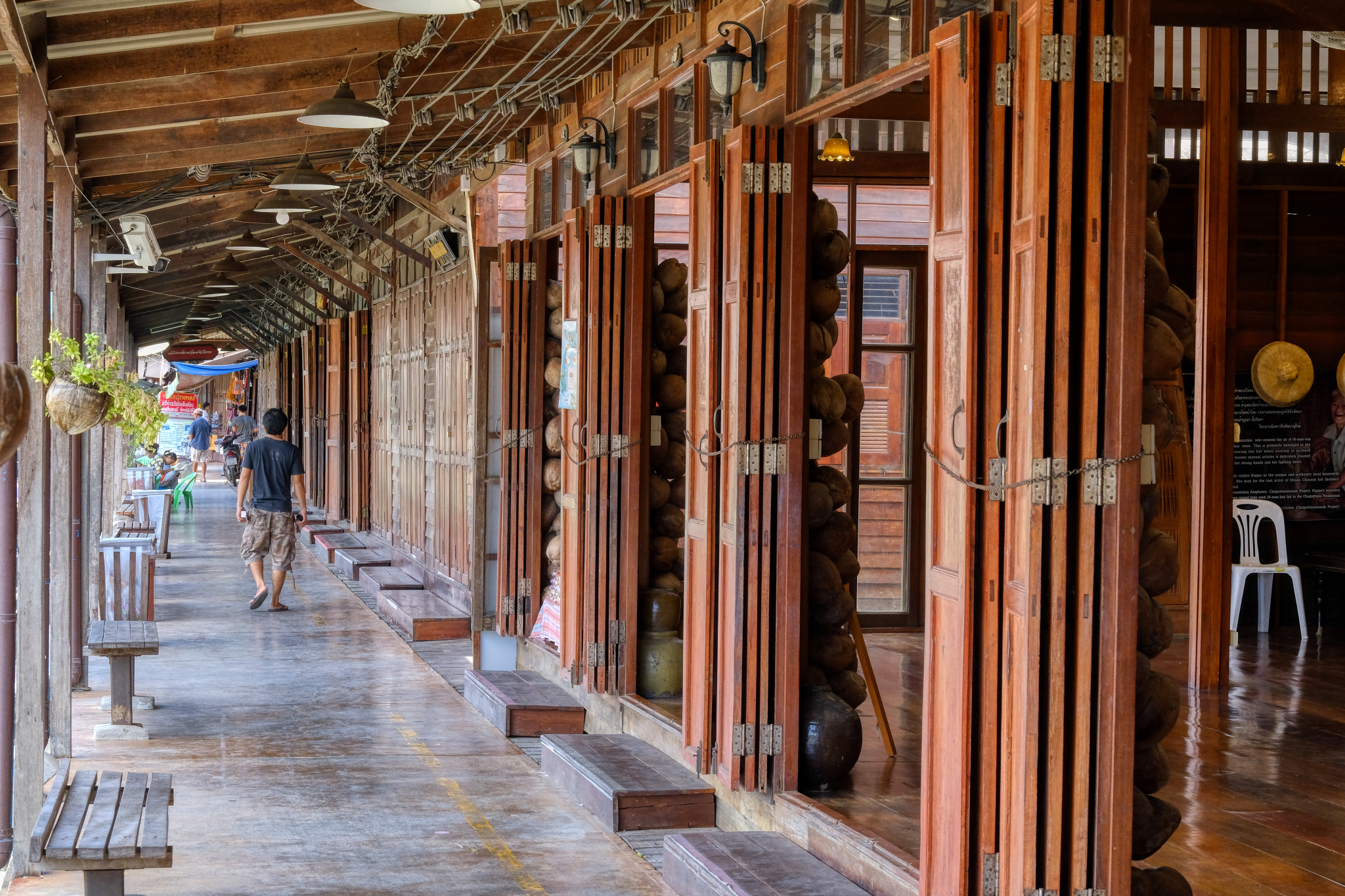 We took our time meandering along the shops . . . and this nice museum of the history of canal life.
We took our time meandering along the shops . . . and this nice museum of the history of canal life.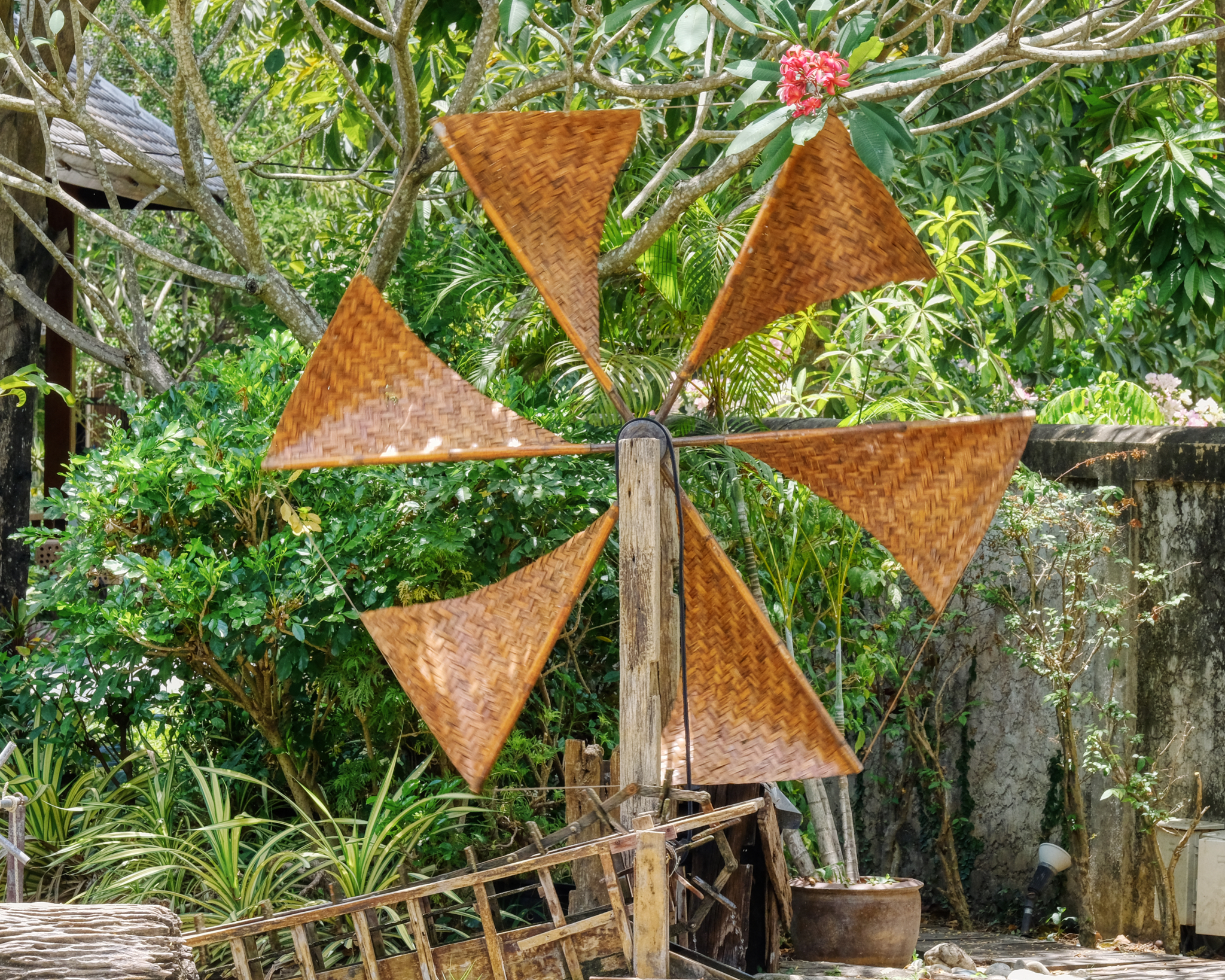 A spinning windmill behind the museum.
A spinning windmill behind the museum.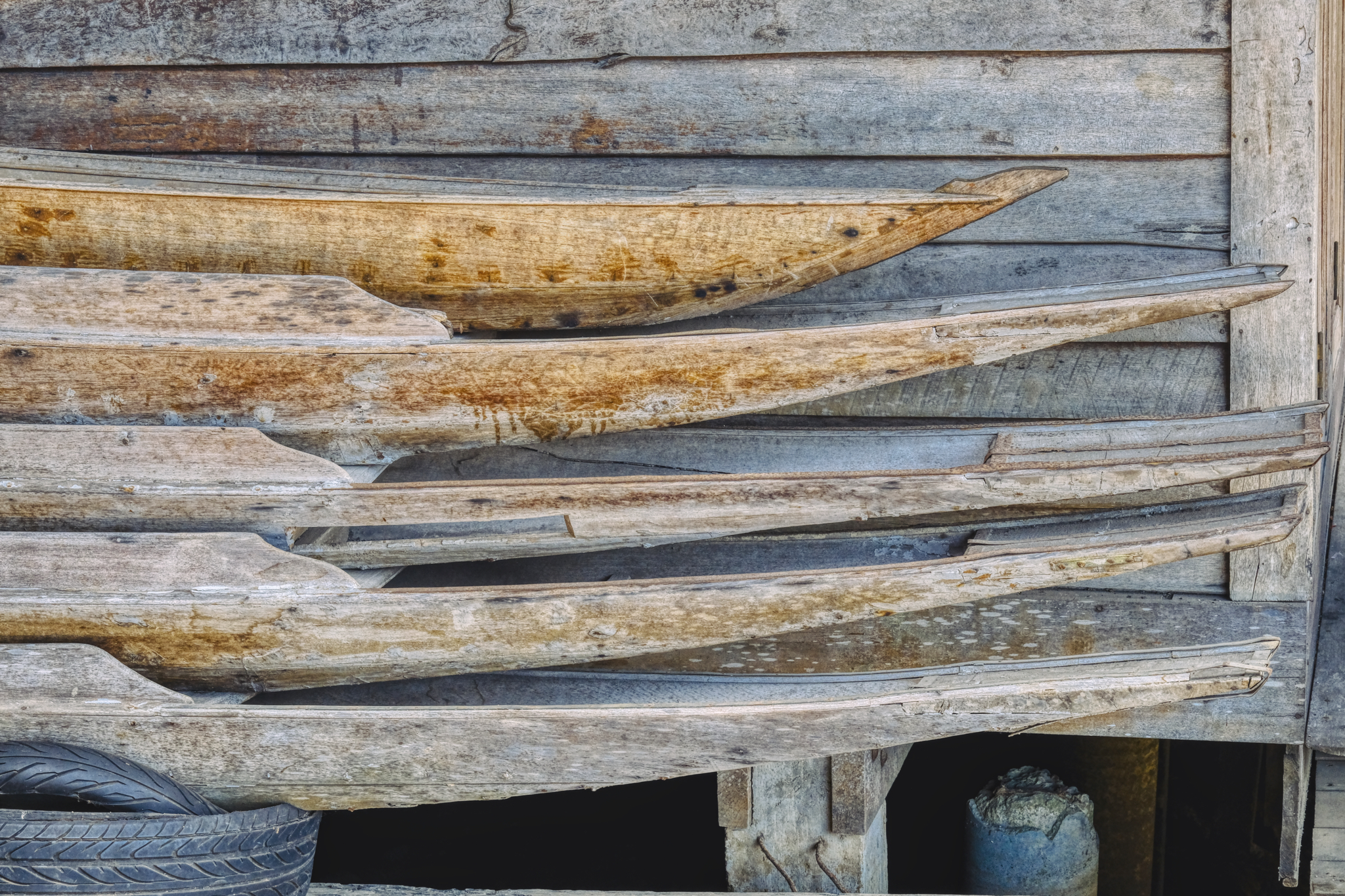 Antique canoes stacked along side the museum.
Antique canoes stacked along side the museum.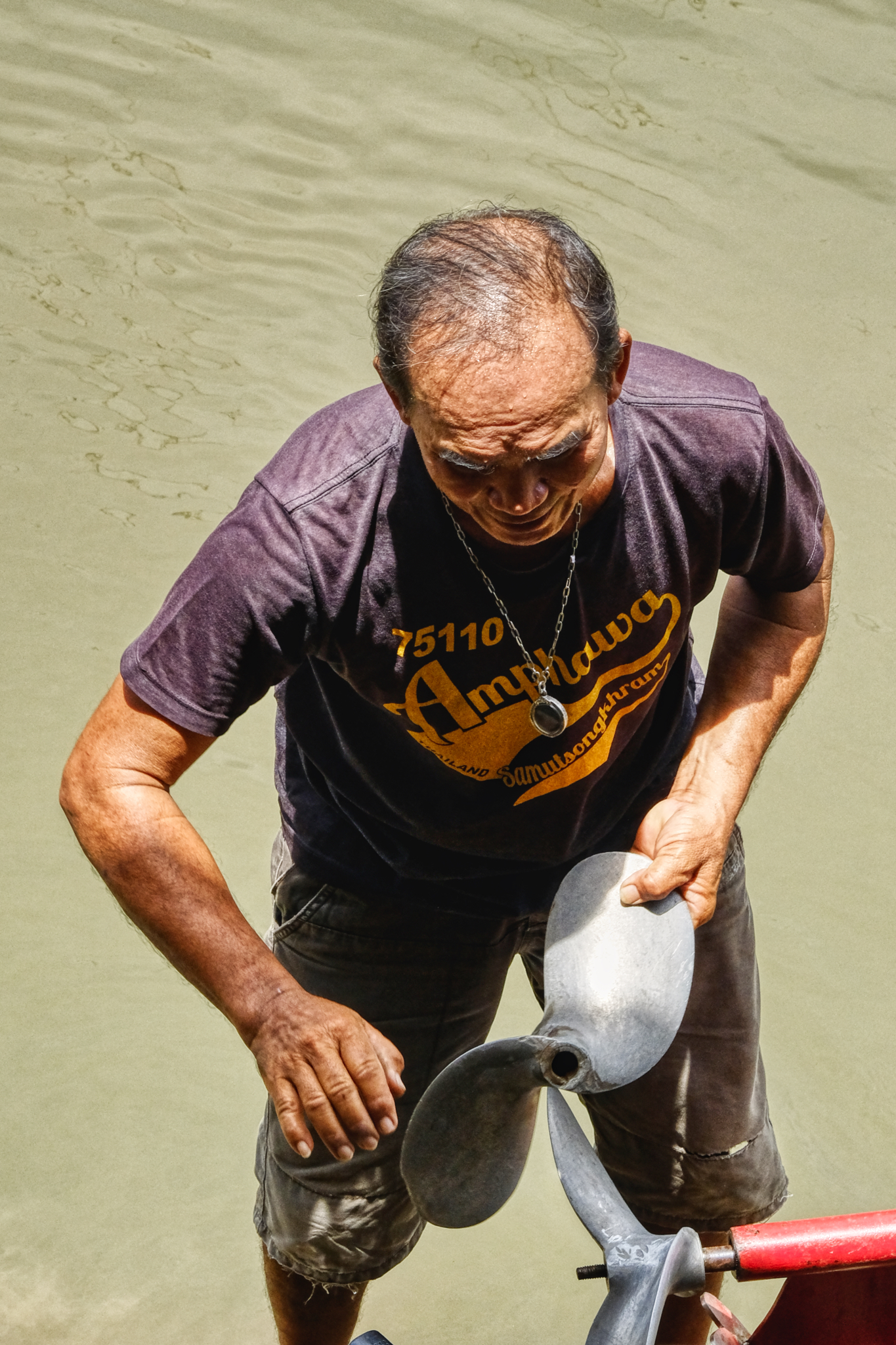 Even as hot as it was, the propeller still needed repairing.
Even as hot as it was, the propeller still needed repairing.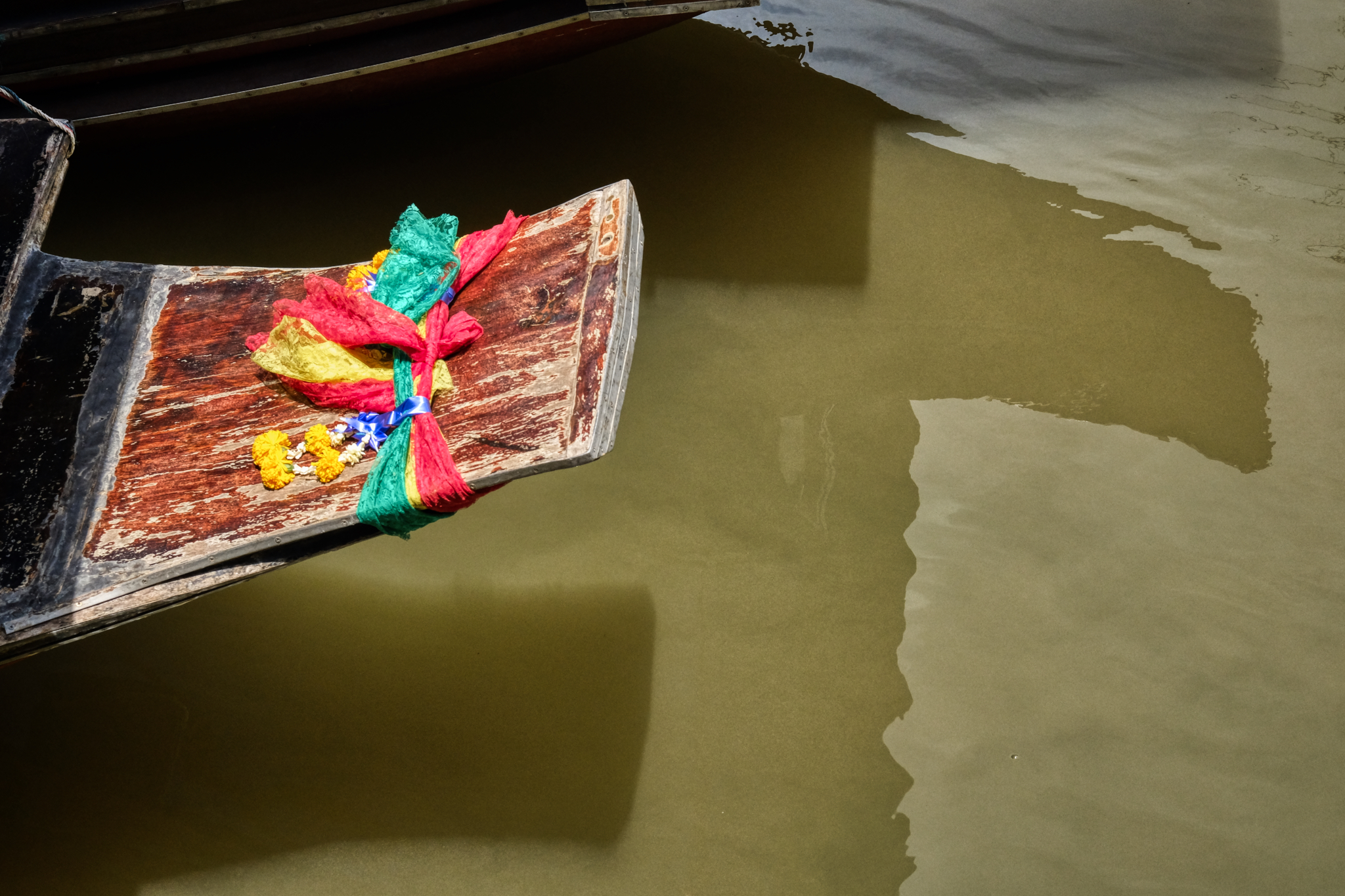 The tourist boas were beautifully decorated . . . in hopes of attracting business . . . which never came on this scorching day.
The tourist boas were beautifully decorated . . . in hopes of attracting business . . . which never came on this scorching day.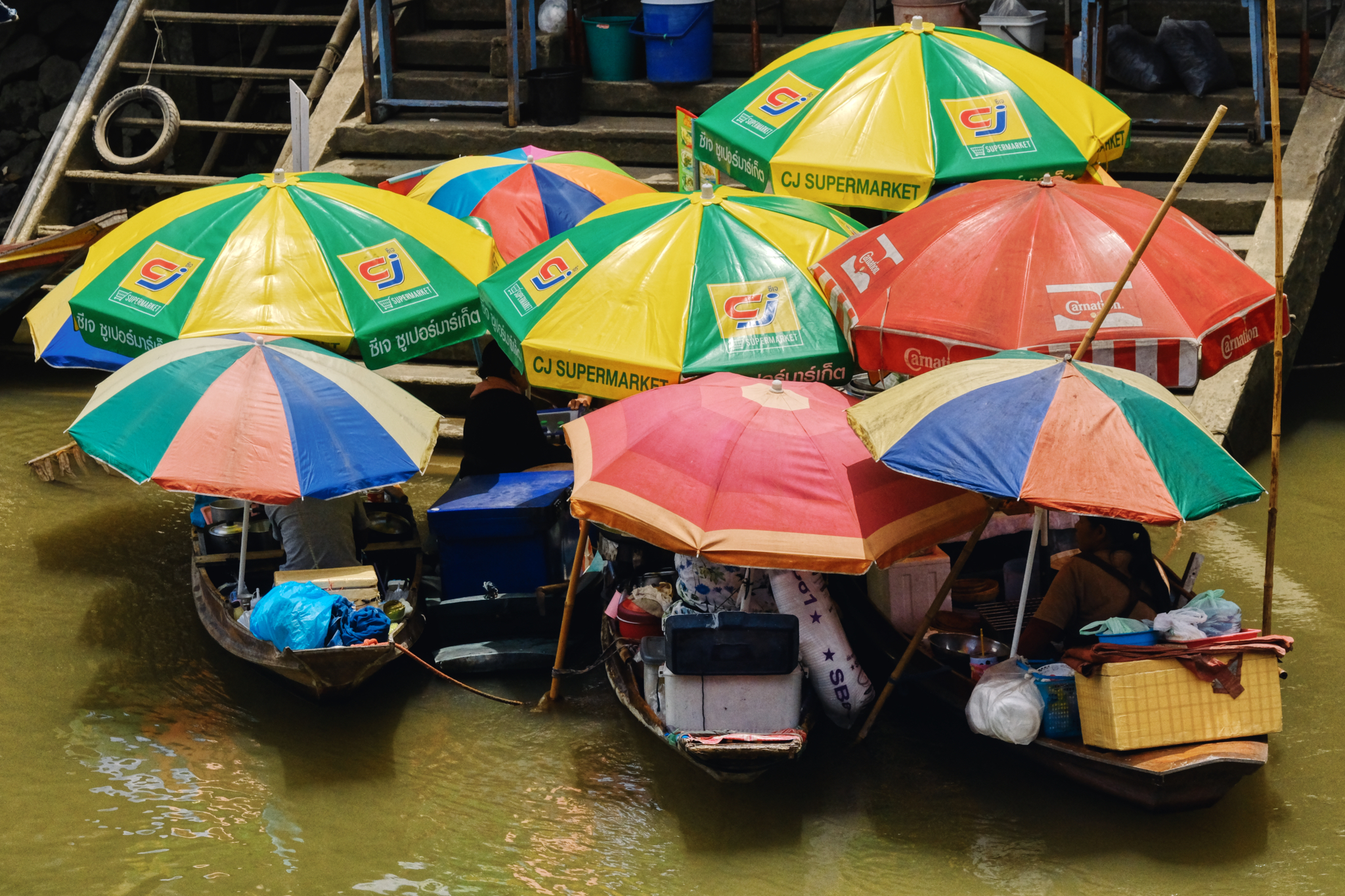 The ladies in their food stall boats congregated to swat flies and swap lies, as they say. Not much else to do.
The ladies in their food stall boats congregated to swat flies and swap lies, as they say. Not much else to do.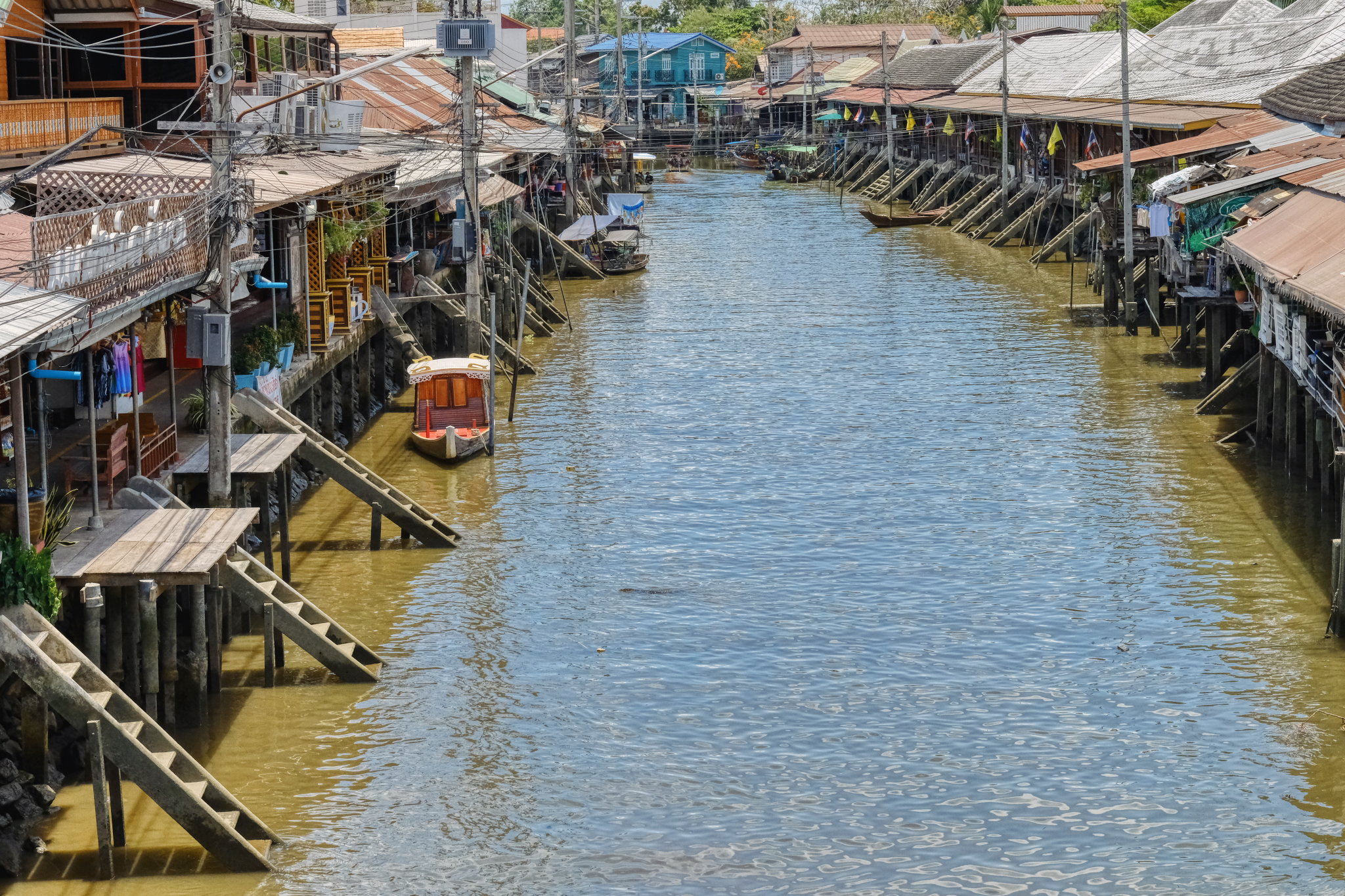 Back over the bridge toward the car. The hot day nearly over . . . the car air-conditioner is calling.
Back over the bridge toward the car. The hot day nearly over . . . the car air-conditioner is calling.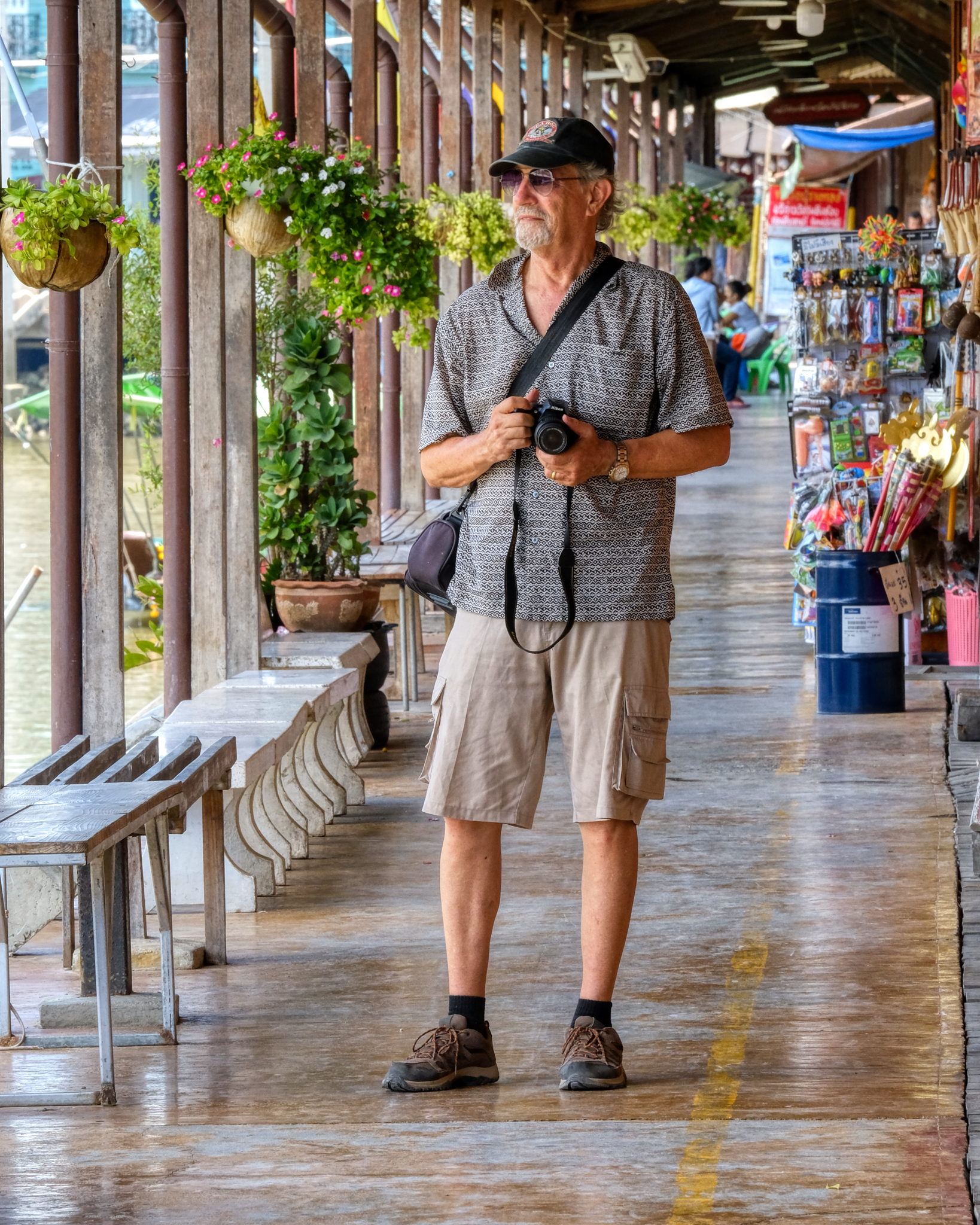 My friend John always on the look out for an amazing image.
My friend John always on the look out for an amazing image. We descended down into the sea of sun parasols and the tourist curios.
We descended down into the sea of sun parasols and the tourist curios.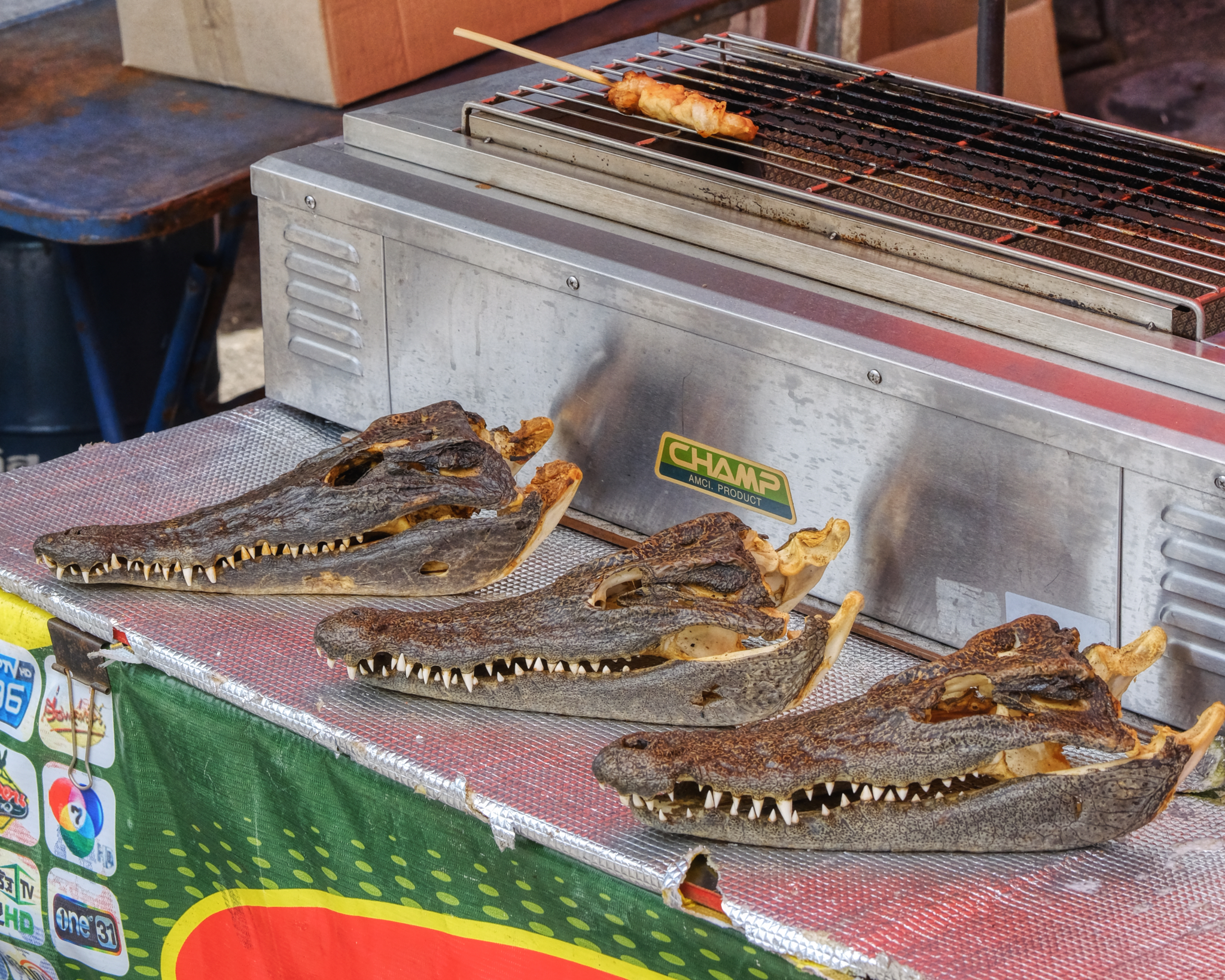 Our last act was to buy a 'croc-on-a-stick' brochet . . . Yes, it did taste like chicken, which makes a kind of sense since crocodiles are actually surviving dinosaurs . . . and birds are dinosaur descendants. We worried all the way back home that we could have eaten 'bad crocodile' . . . . but we were fine . . . no intestinal turmoil after all.
Our last act was to buy a 'croc-on-a-stick' brochet . . . Yes, it did taste like chicken, which makes a kind of sense since crocodiles are actually surviving dinosaurs . . . and birds are dinosaur descendants. We worried all the way back home that we could have eaten 'bad crocodile' . . . . but we were fine . . . no intestinal turmoil after all. Suphanburi Province: A Day Trip Northwest Of Bangkok
 Wednesday, March 14, 2018 at 9:25AM
Wednesday, March 14, 2018 at 9:25AM A RAMBLE IN FOUR PARTS
Part Four: A Field of Buddha Crypts and a Hell Garden - Wat Phai Rong Wua
My friend John Stiles and I set off in my old truck up the road to the rural province of Suphanburi, to the northwest of Bangkok. As usual, we had a vague idea, from a tertiary Google search, of what we wanted to see, but no particular plan: we would ramble. We would eventually see several amazing Buddhist temple complexes, a Buffalo park, and a Farm Museum. We never 'found' the actual town of Suphanburi, but we didn't care: we had a grand adventure rambling about the rural Thai countryside.
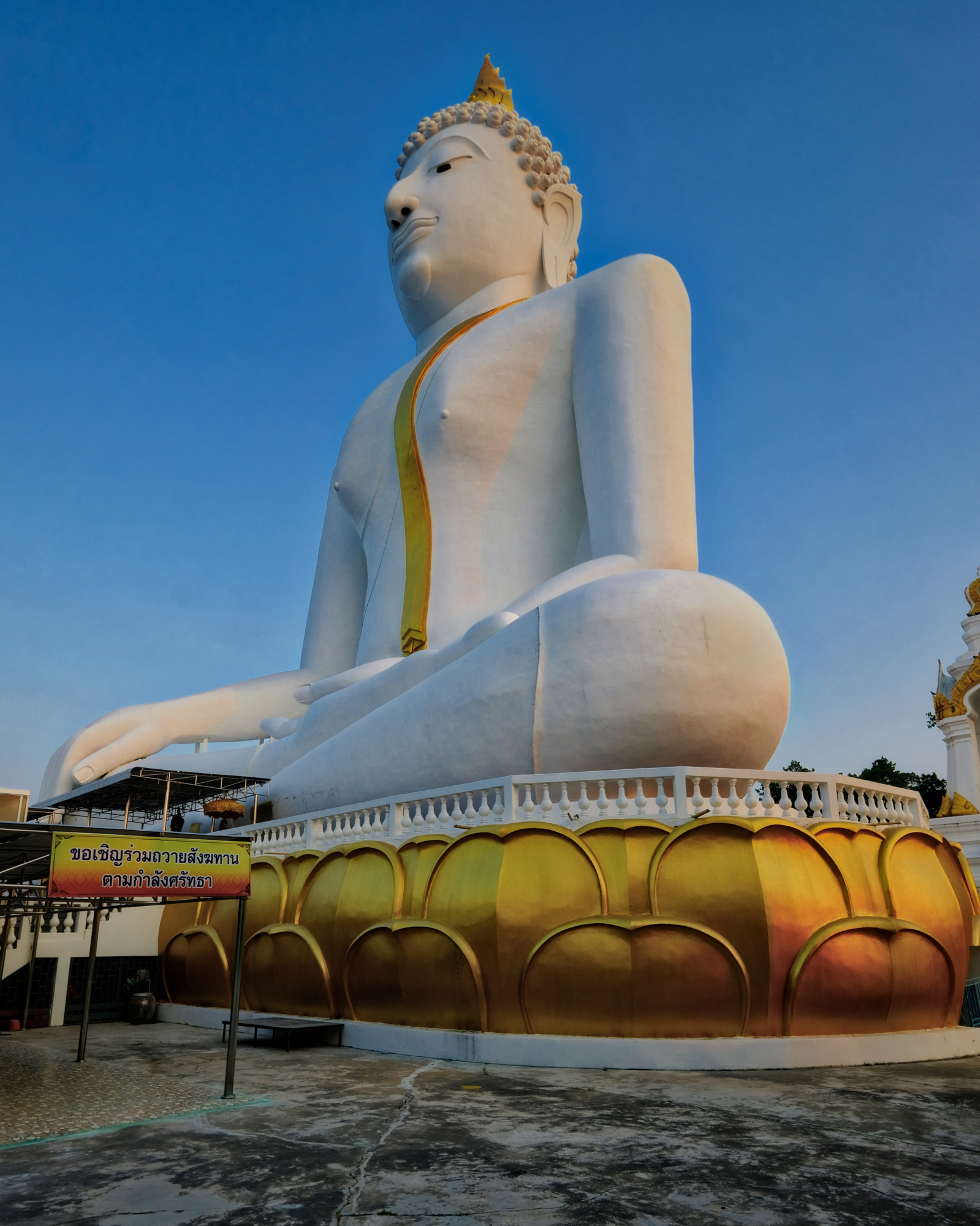
We found Wat Phai Rong Wua on the GPS and noticed it was on the road back to Bangkok. Good. There was suppose to be a giant Buddha image and something called a Hell Garden. OK, Lets take a look. The Buddha colossus was remarkable!
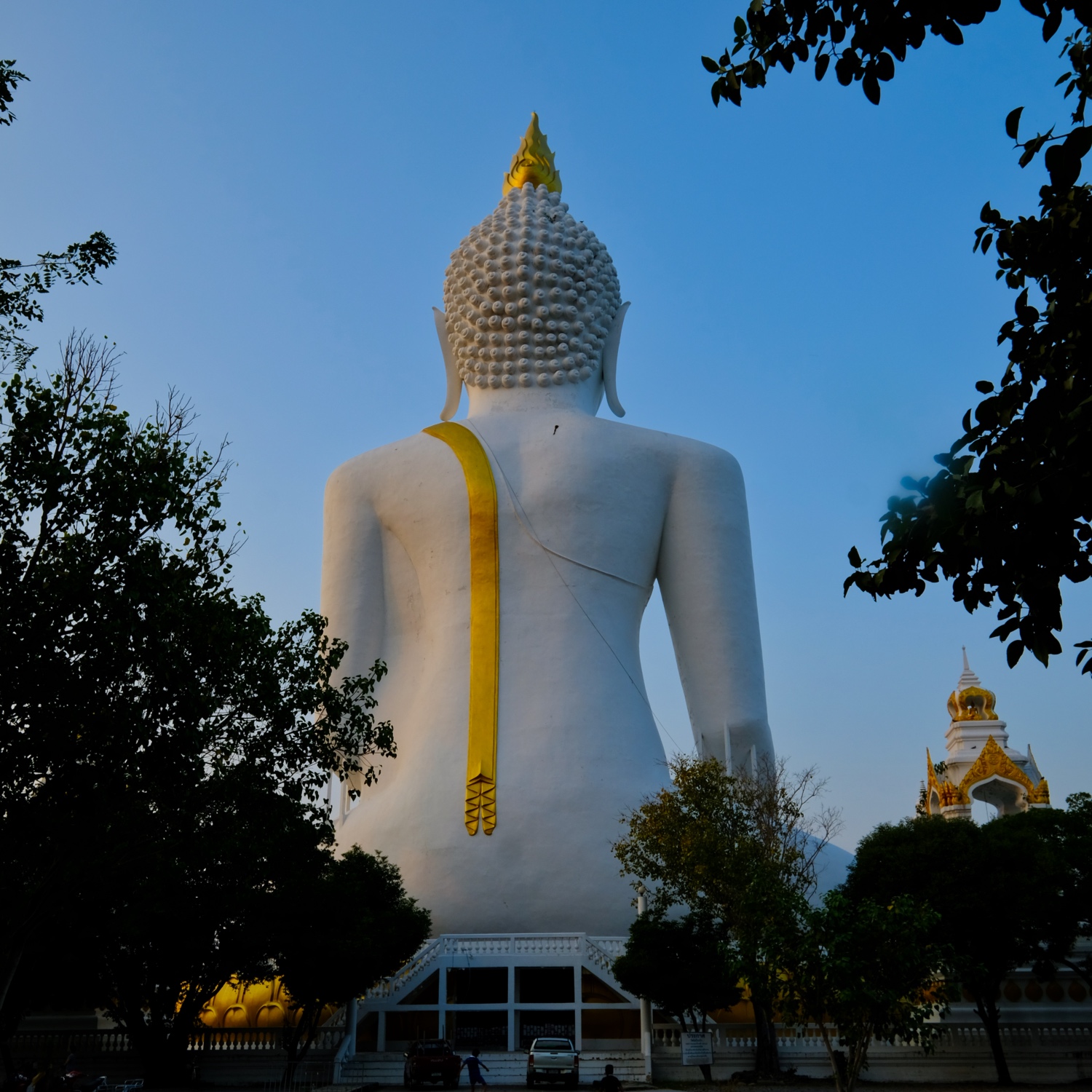 Just to give perspective . . . notice the size of this Buddha image compared to the truck parked below it!!!
Just to give perspective . . . notice the size of this Buddha image compared to the truck parked below it!!!
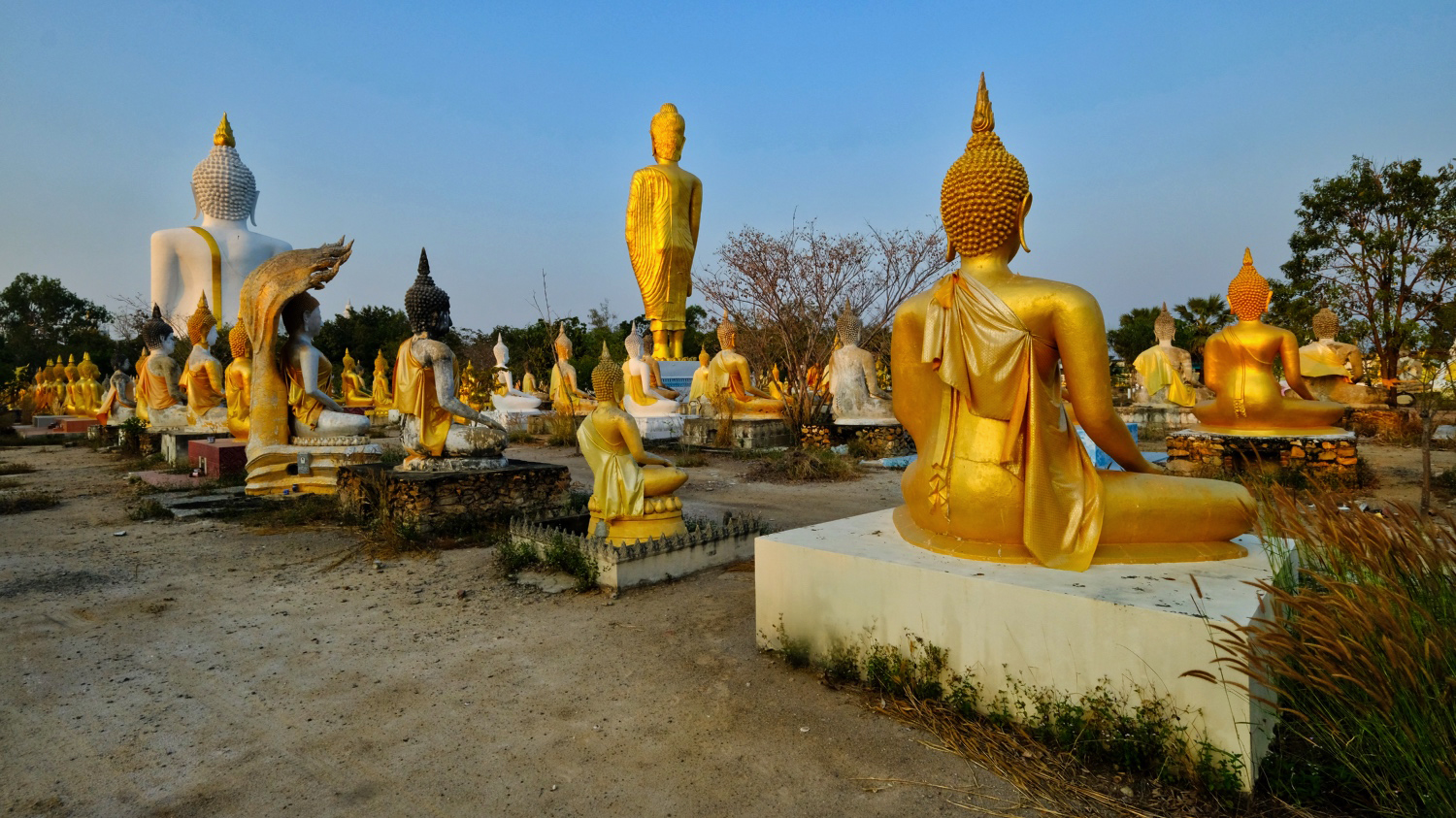 We arrived at Wat Phai Ron Wua as the sun was beginning to set. We knew we would only have about an hour of light left, and only about 20 minutes of good light. We dashed across the street from the parking area and were immediately overwhelmed with the sight of hundreds of Buddha images!
We arrived at Wat Phai Ron Wua as the sun was beginning to set. We knew we would only have about an hour of light left, and only about 20 minutes of good light. We dashed across the street from the parking area and were immediately overwhelmed with the sight of hundreds of Buddha images!
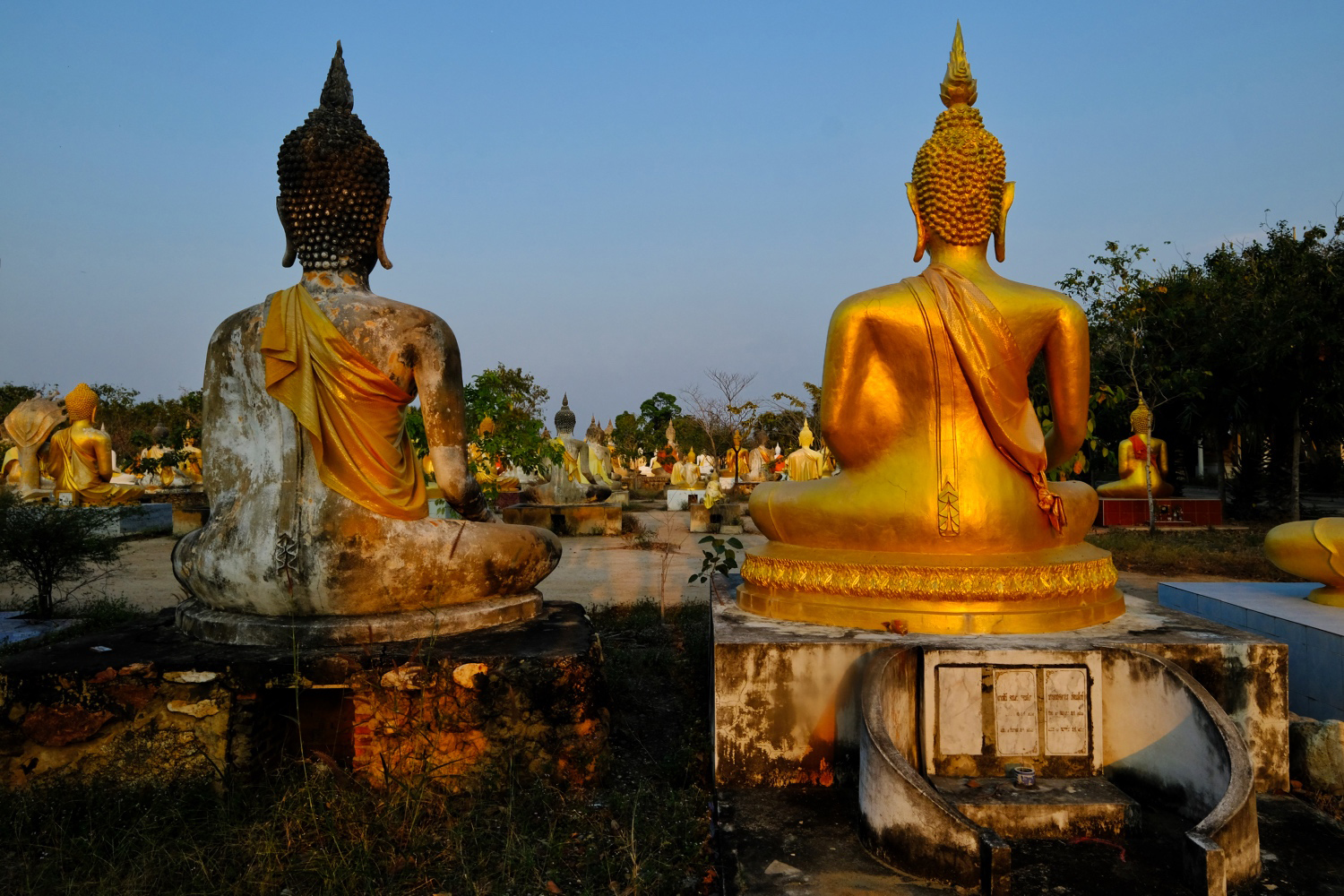 The Buddhas were actually crypts, no doubt of the wealthy people who built the larger wat complex.
The Buddhas were actually crypts, no doubt of the wealthy people who built the larger wat complex.
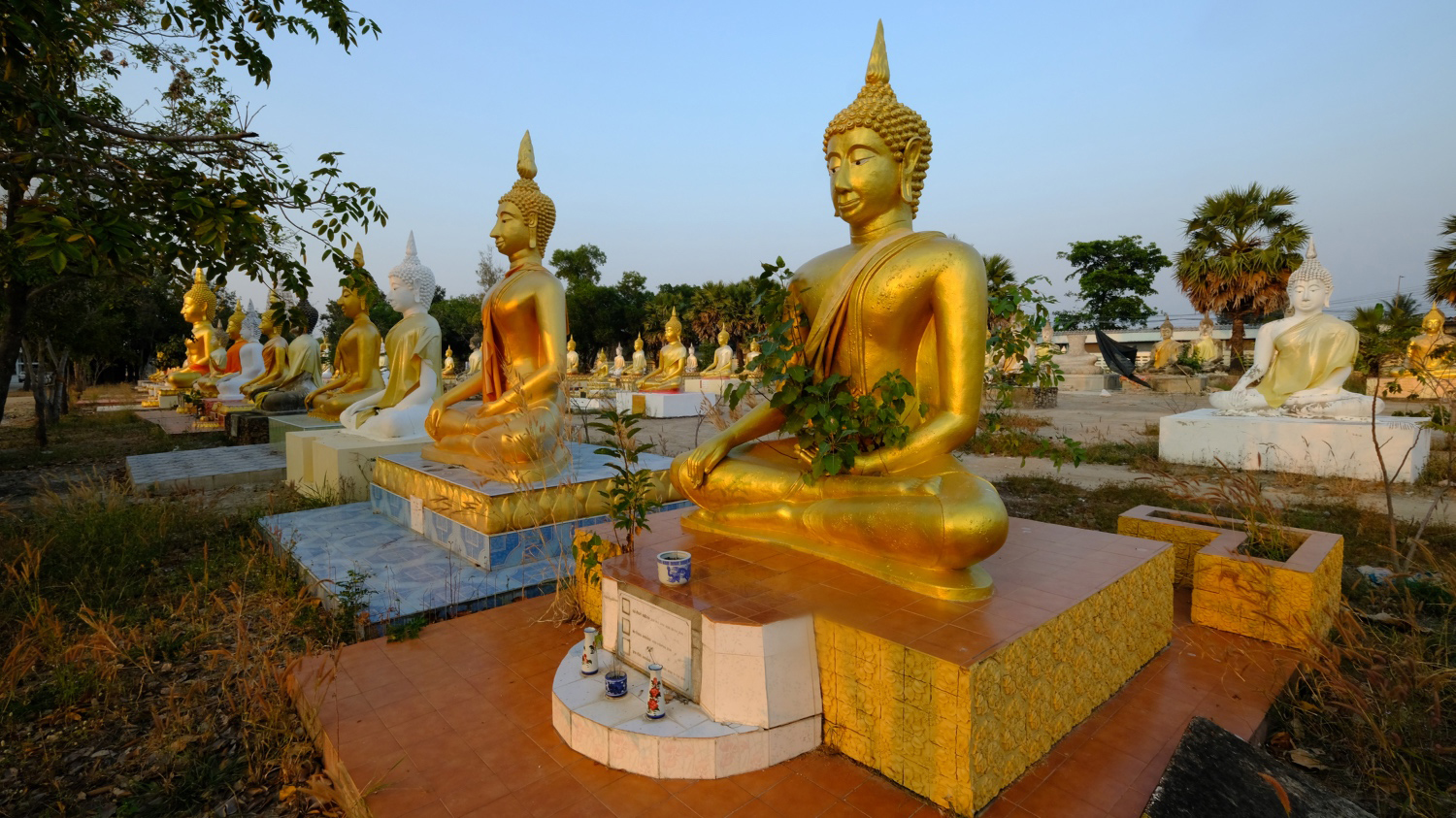 The Buddha images were all unique and many had been tended recently.
The Buddha images were all unique and many had been tended recently.
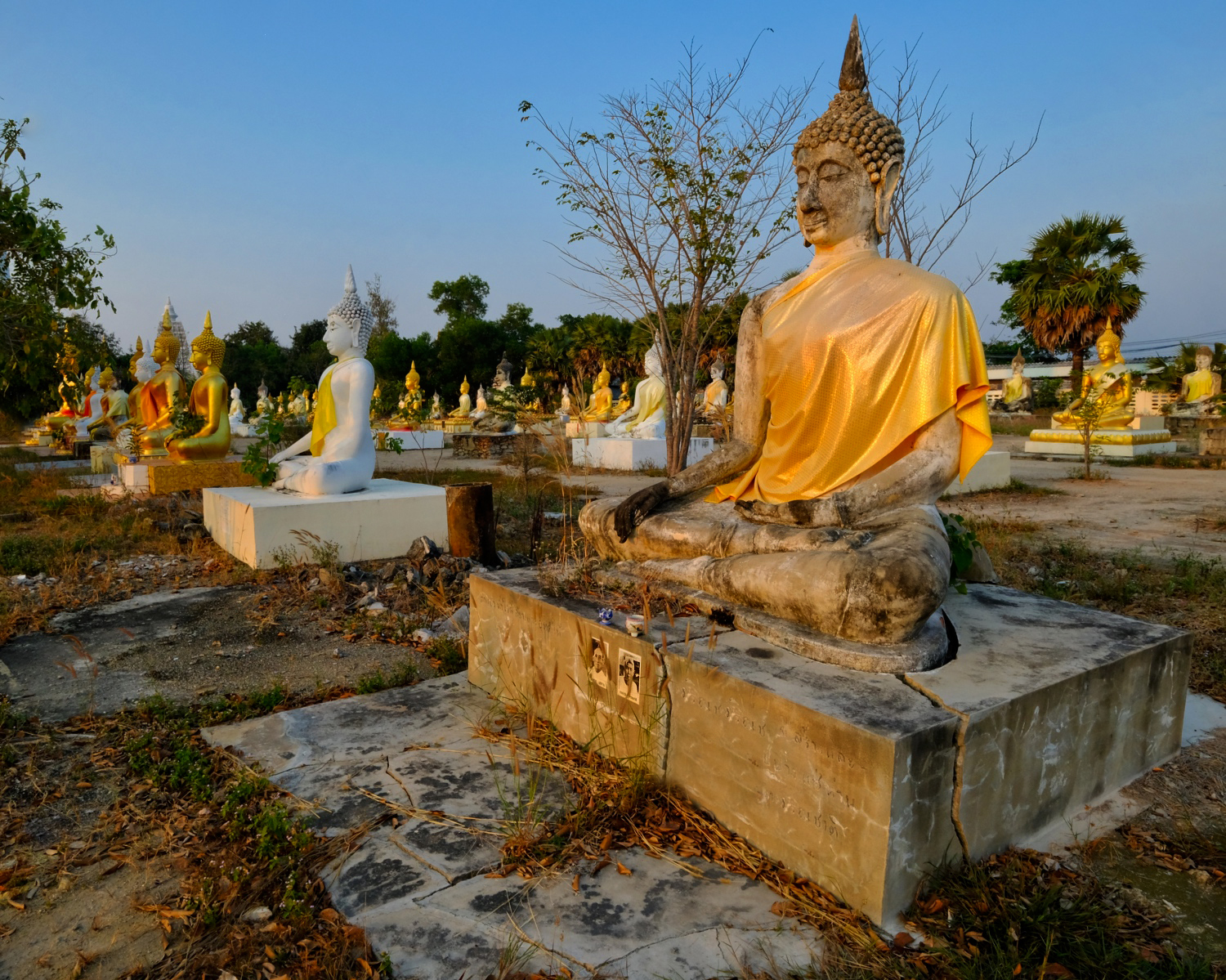 The last of the golden light of sun shone on the field of Buddhas. I just started clicking away with my camera.
The last of the golden light of sun shone on the field of Buddhas. I just started clicking away with my camera.
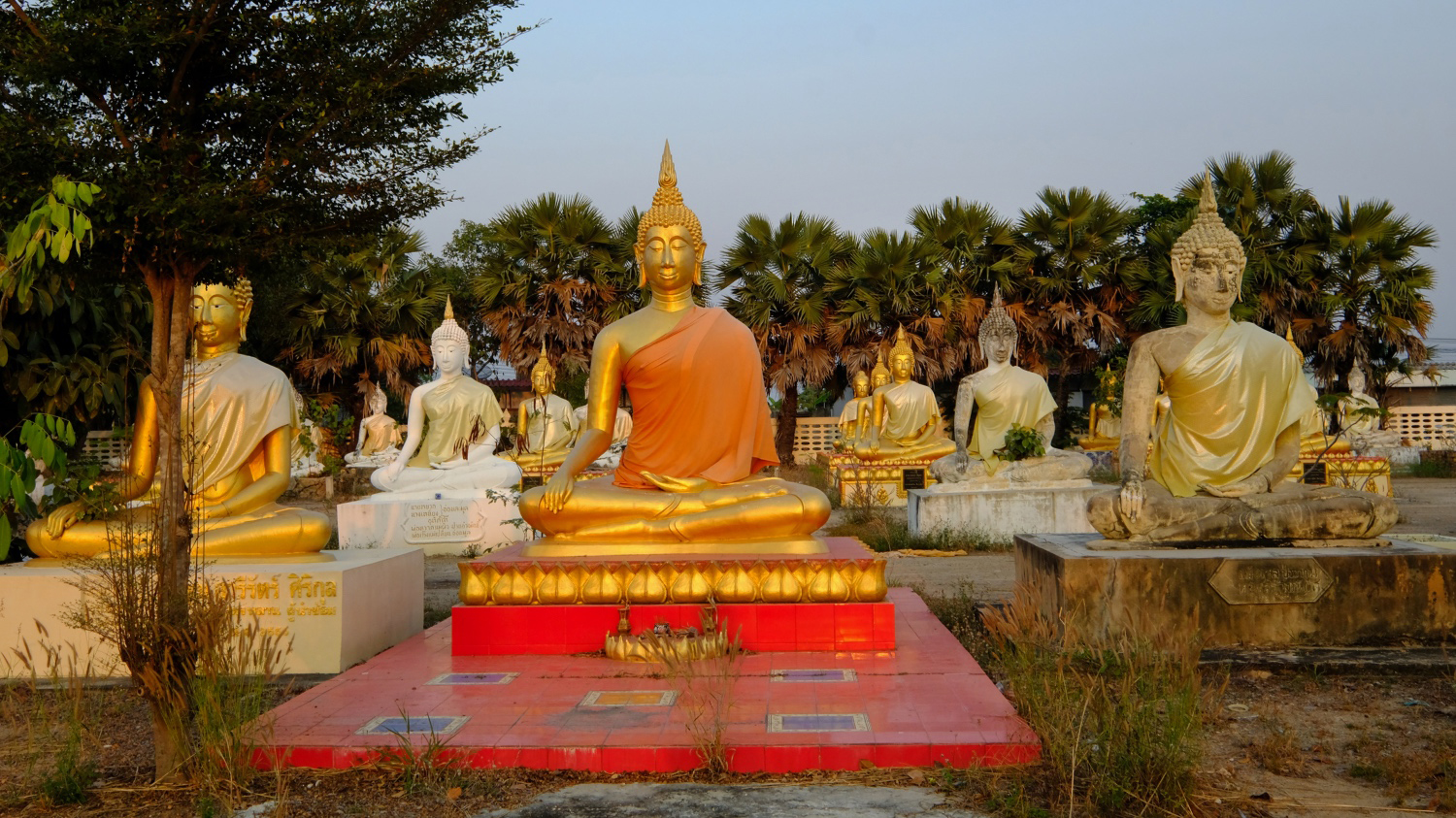 One of the most remarkable sights I have ever seen in my life!
One of the most remarkable sights I have ever seen in my life!
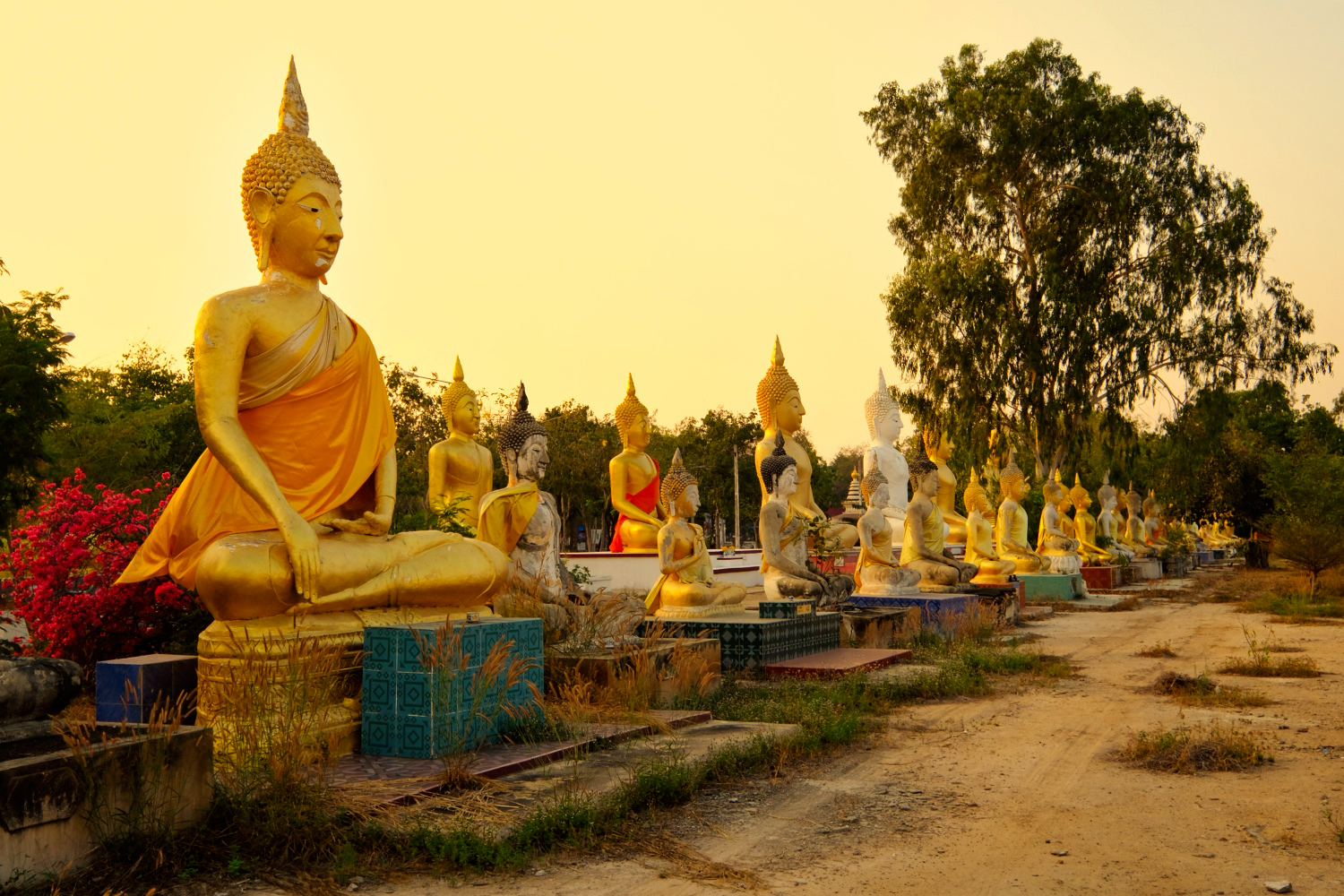 Looking back into the golden sunset . . .
Looking back into the golden sunset . . .
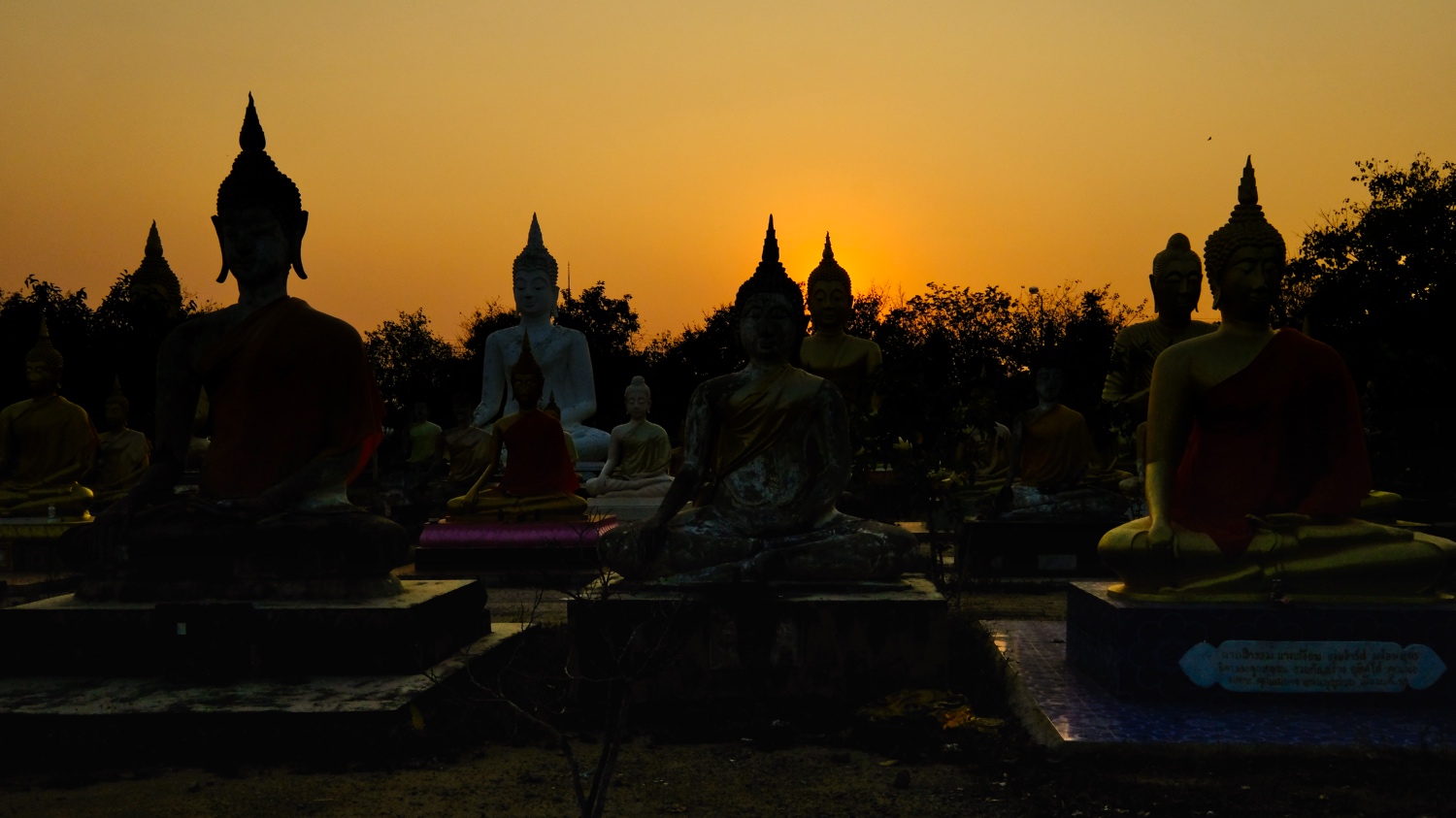 The tropical sun setting behind a field of Buddhas . . . Ah! Thailand!
The tropical sun setting behind a field of Buddhas . . . Ah! Thailand!
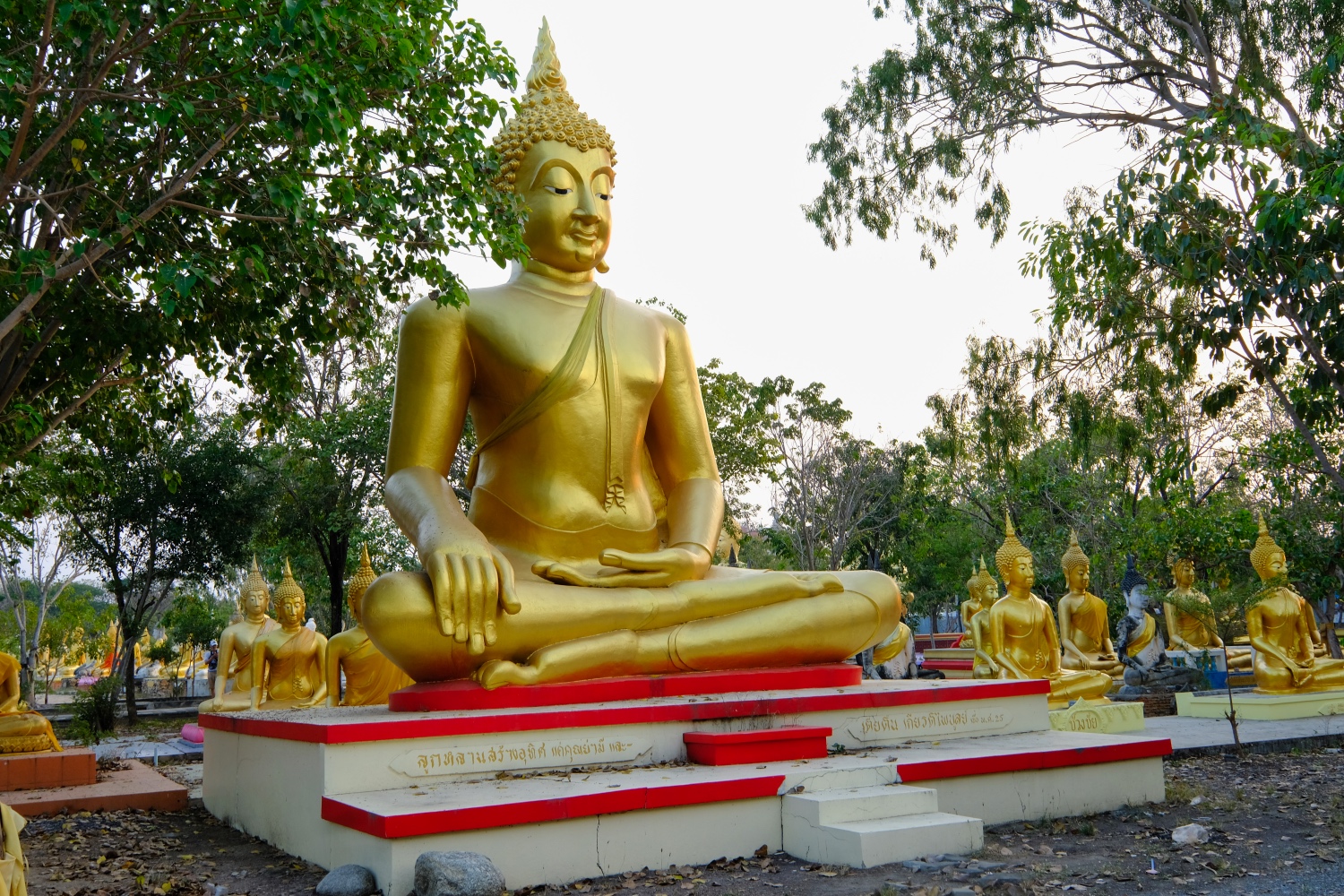 There were a few exceptionally large Buddhas in the field.
There were a few exceptionally large Buddhas in the field.
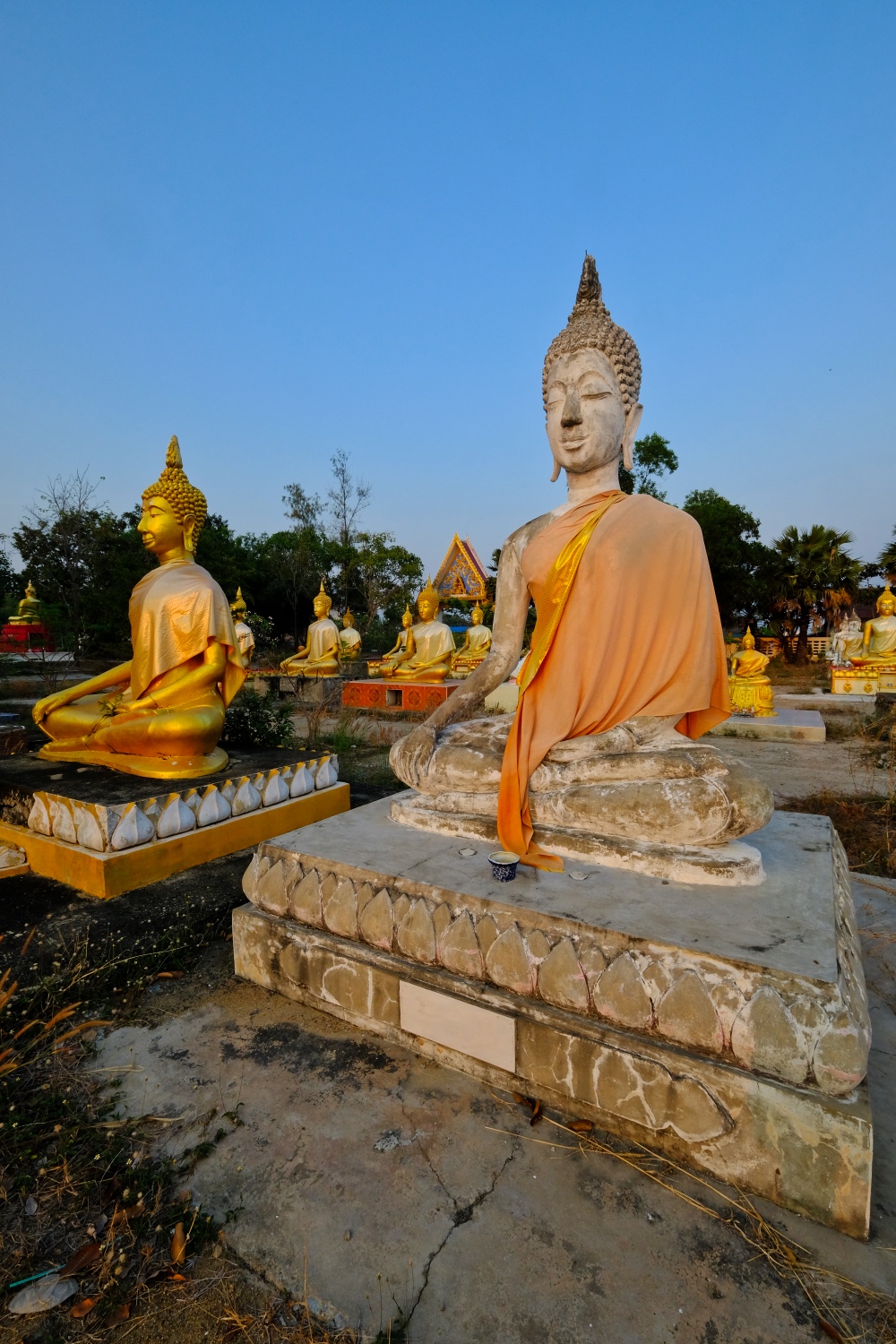 Some of the Buddhas had been draped with cloth. We knew we were losing the light, so we moved on. I must have taken hundreds of photos in this field of Buddhas!
Some of the Buddhas had been draped with cloth. We knew we were losing the light, so we moved on. I must have taken hundreds of photos in this field of Buddhas!
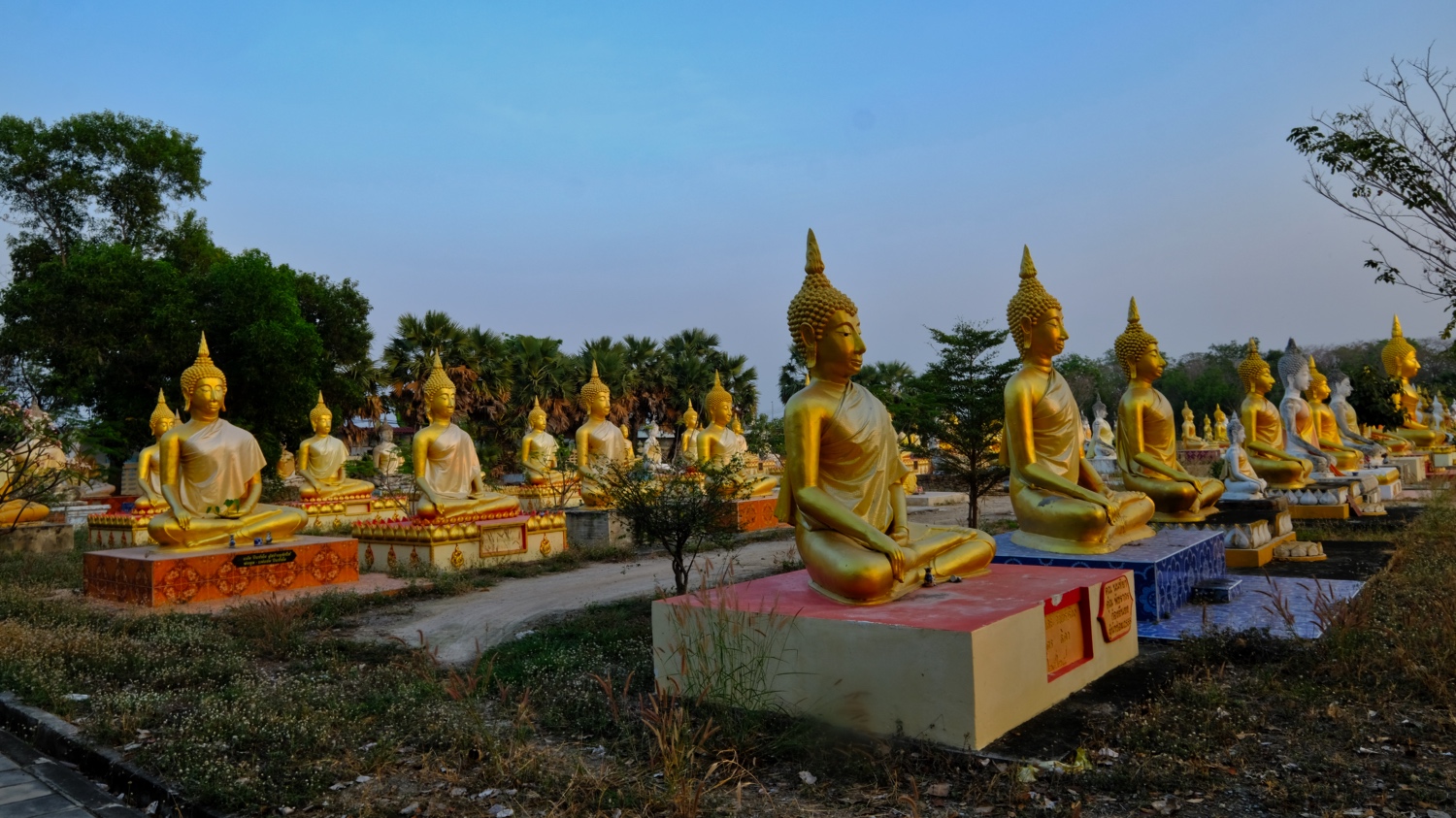 A field of Buddhas in the last of day.
A field of Buddhas in the last of day.
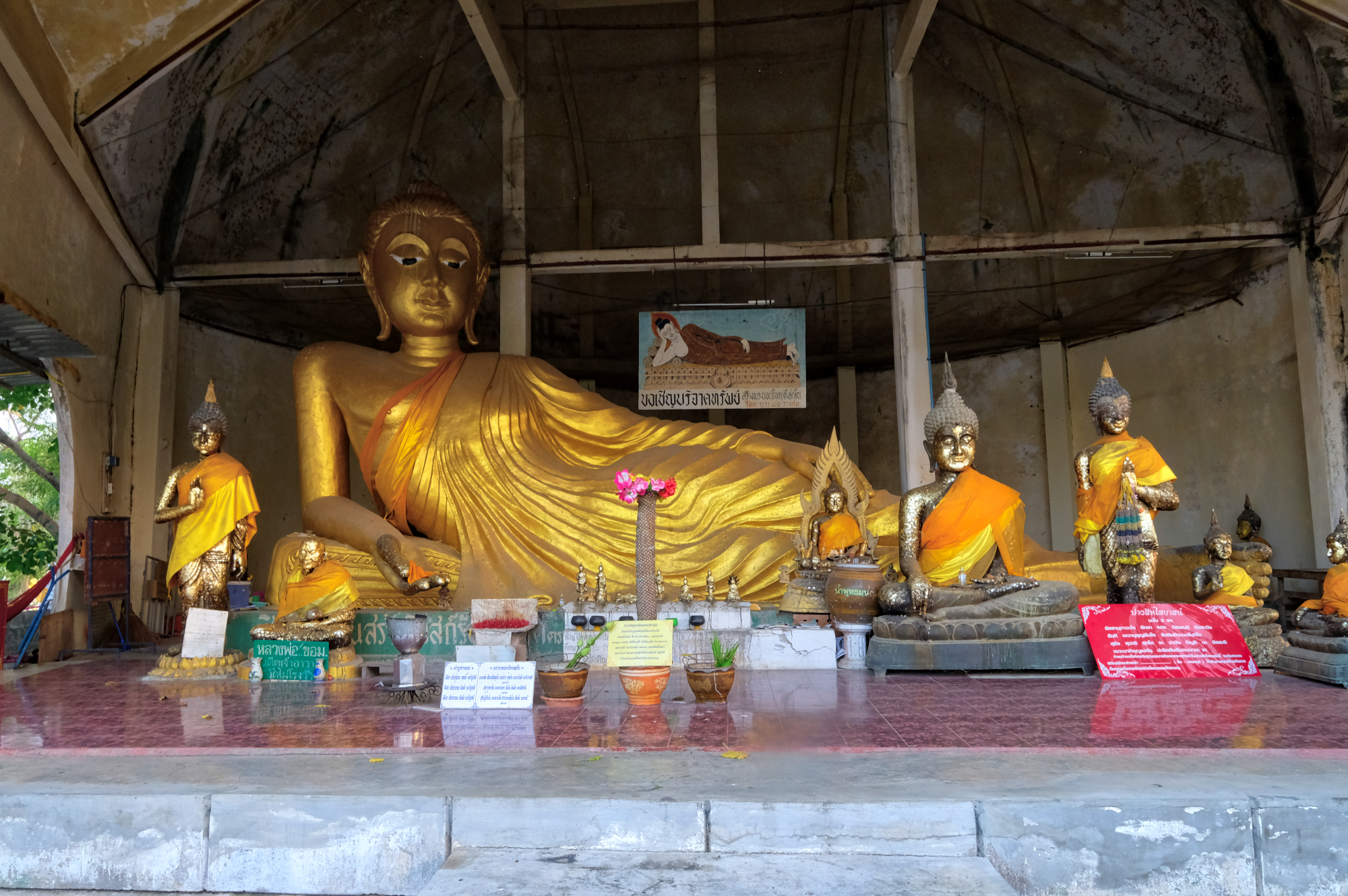 Next to the Colossus was this charming reclining Buddha shrine.
Next to the Colossus was this charming reclining Buddha shrine.
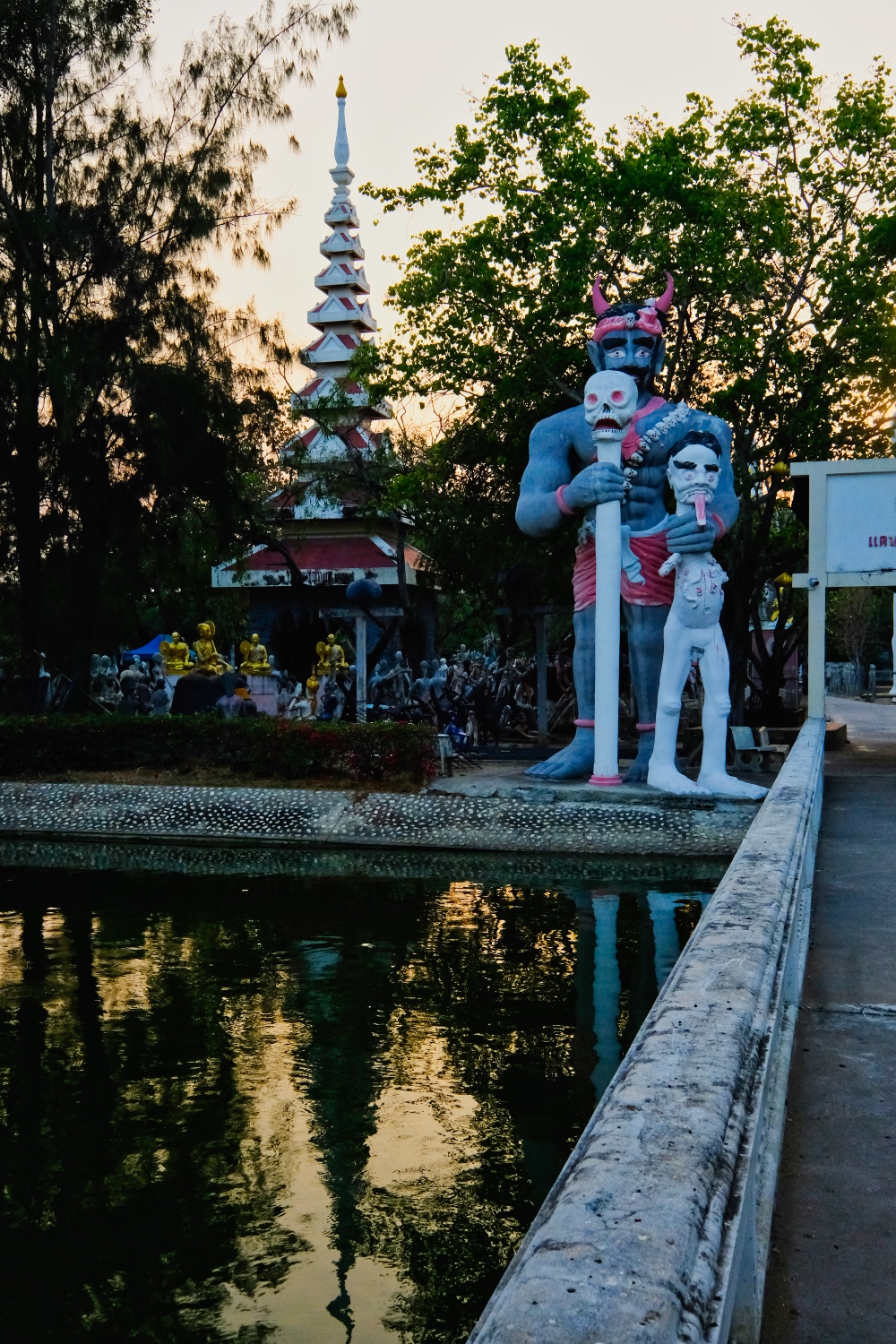 And then, quite by accident, we saw a gate across from the big Buddha . . . The Gate of the Hell Garden!
And then, quite by accident, we saw a gate across from the big Buddha . . . The Gate of the Hell Garden!
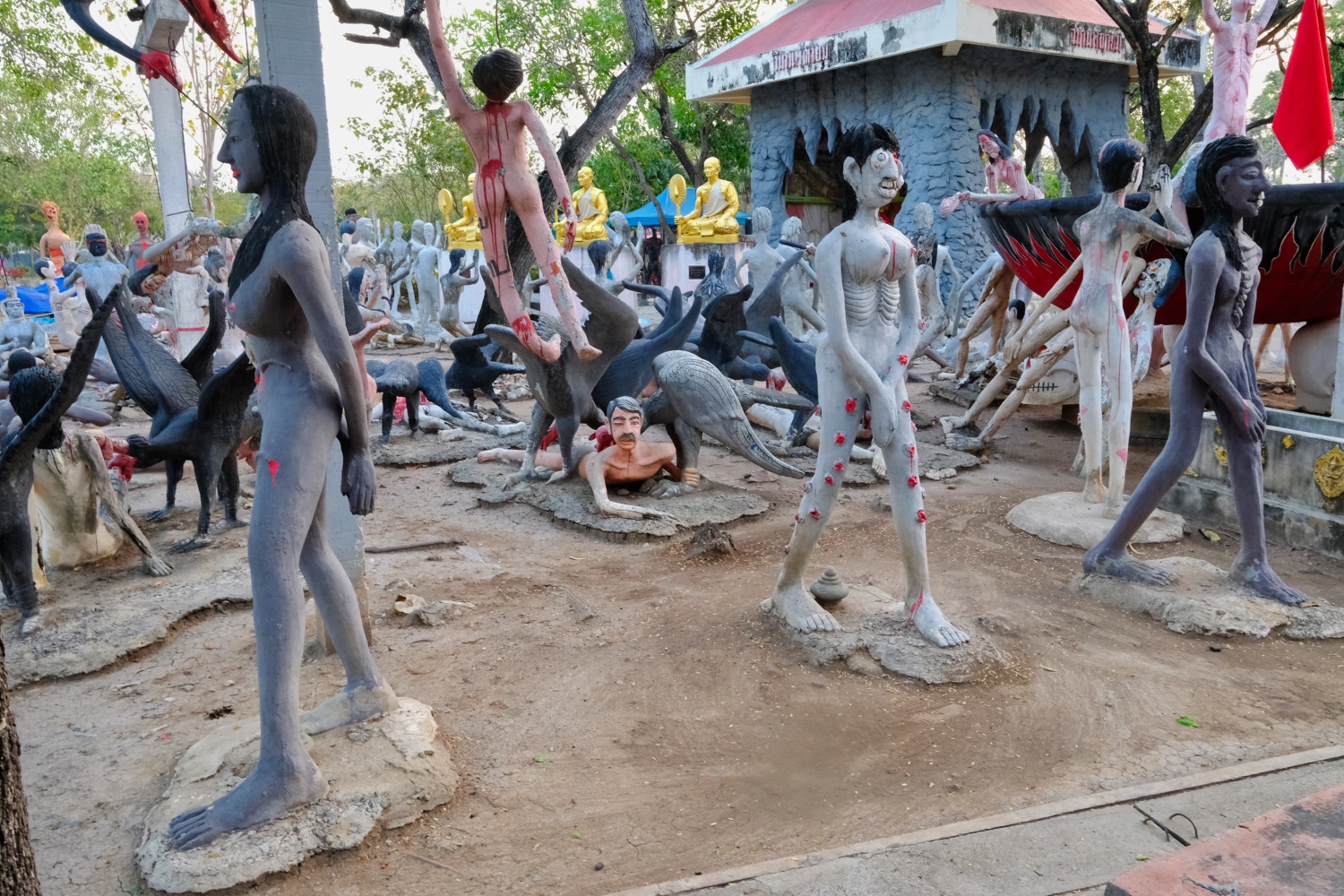 And by Hell Garden, I mean a garden of Hellish statuary!
And by Hell Garden, I mean a garden of Hellish statuary!
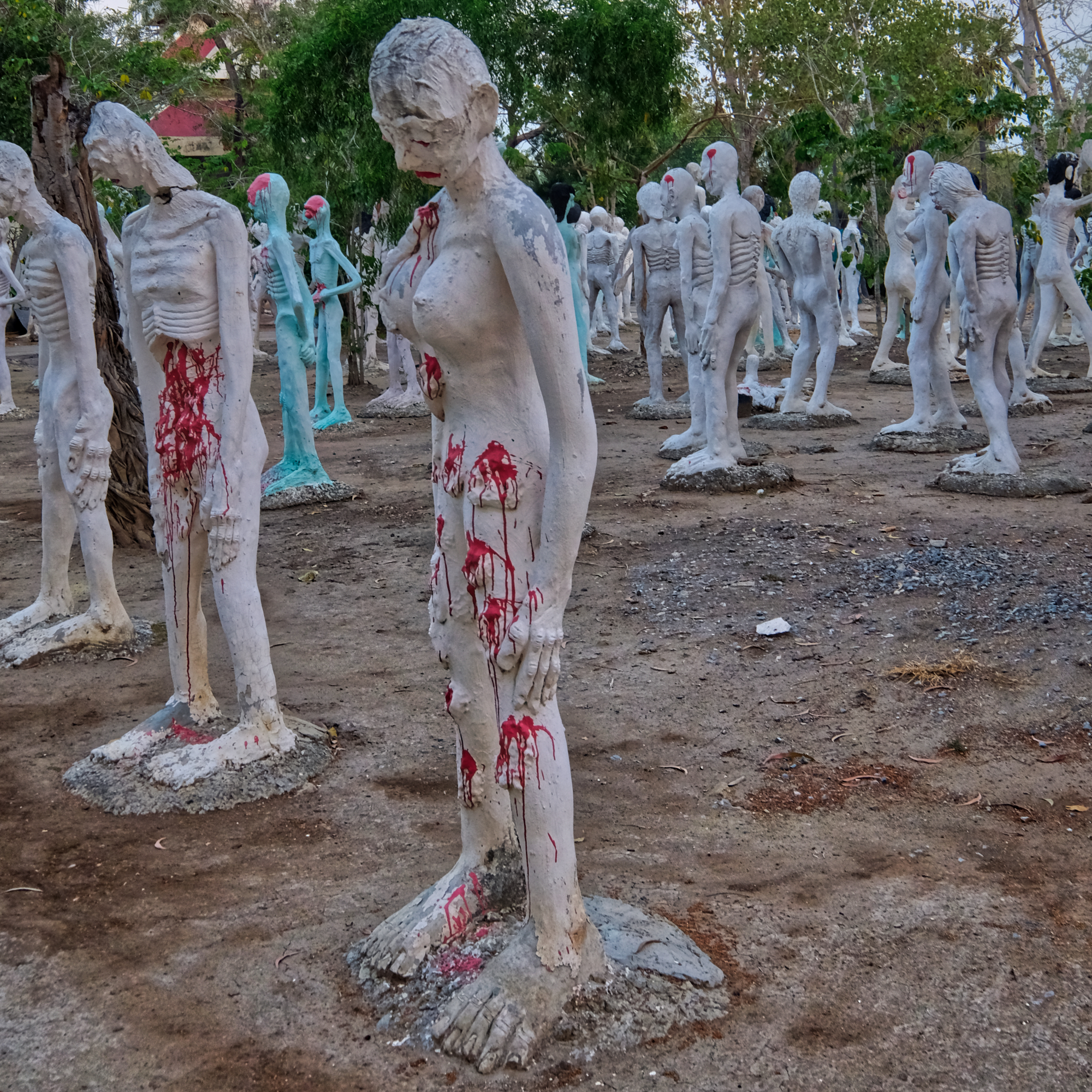 There were many sections of the Hell Garden, each held stylistically different depictions of all the horrific things humans do to themselves and each other.
There were many sections of the Hell Garden, each held stylistically different depictions of all the horrific things humans do to themselves and each other.
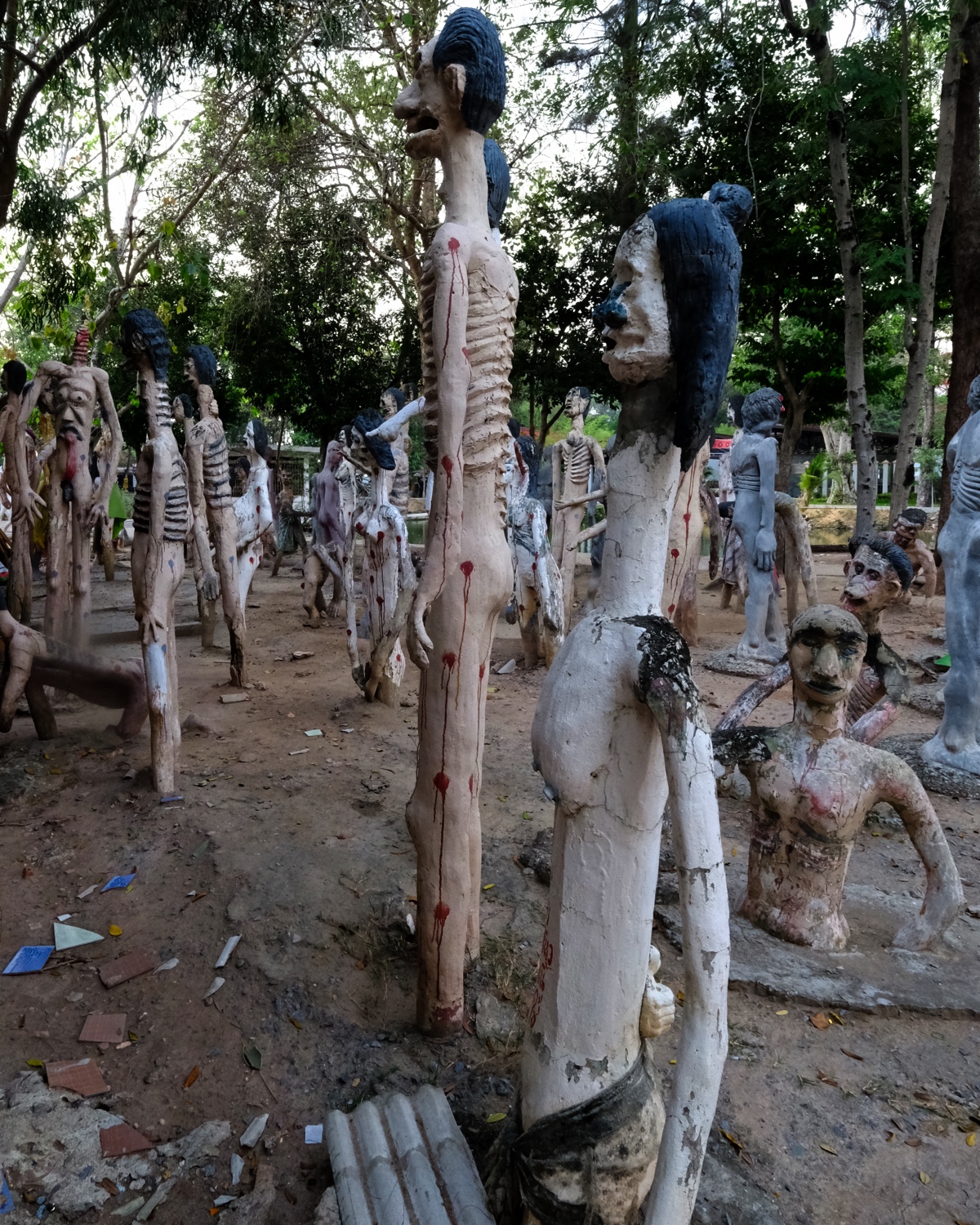 Some of the statuary were very amateurishly made.
Some of the statuary were very amateurishly made.
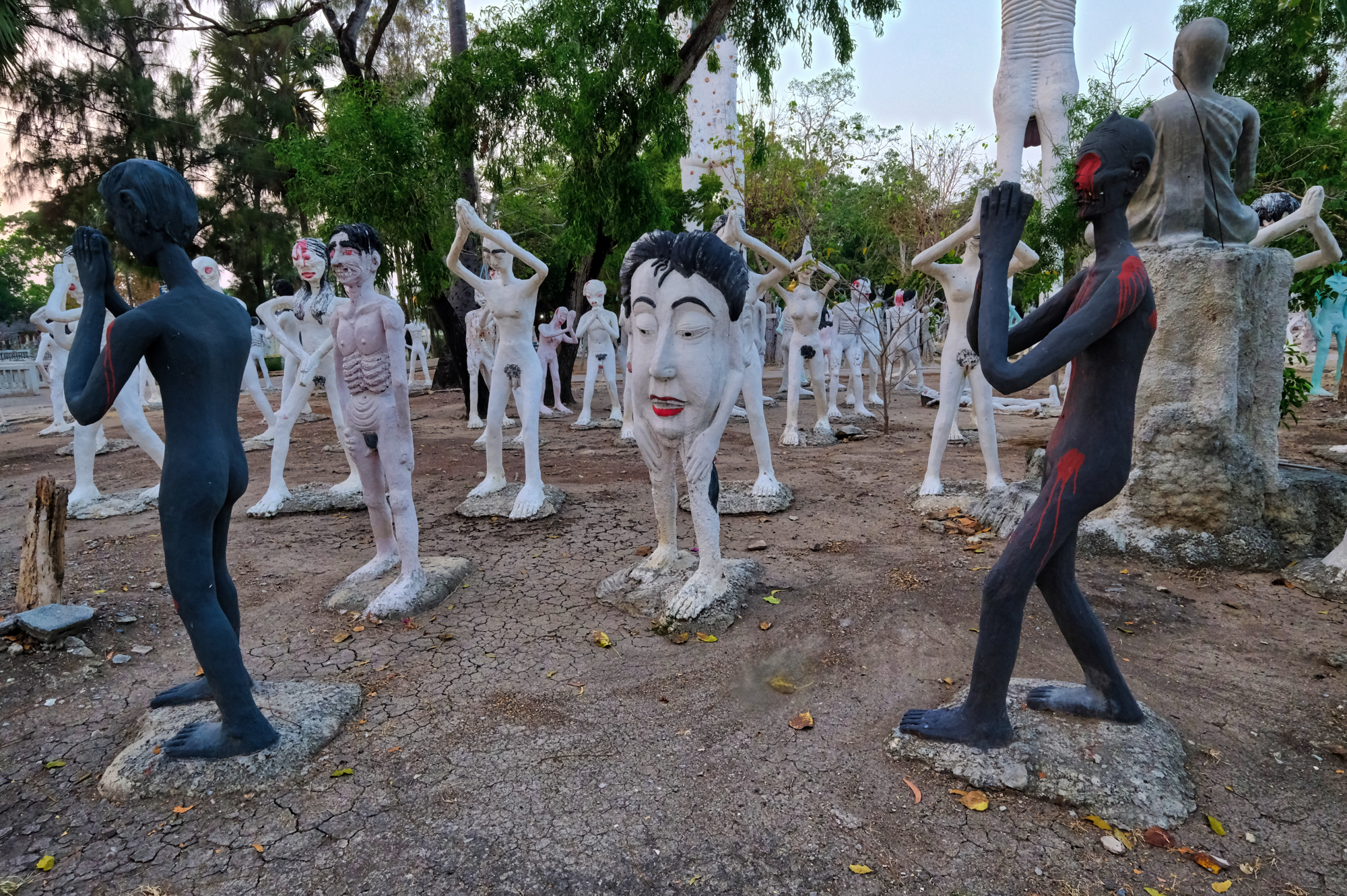 There were places where it looked like whoever made these awful beings had run out of ideas and were just being nutty. I guess making a Hell Garden can have that effect on a person.
There were places where it looked like whoever made these awful beings had run out of ideas and were just being nutty. I guess making a Hell Garden can have that effect on a person.
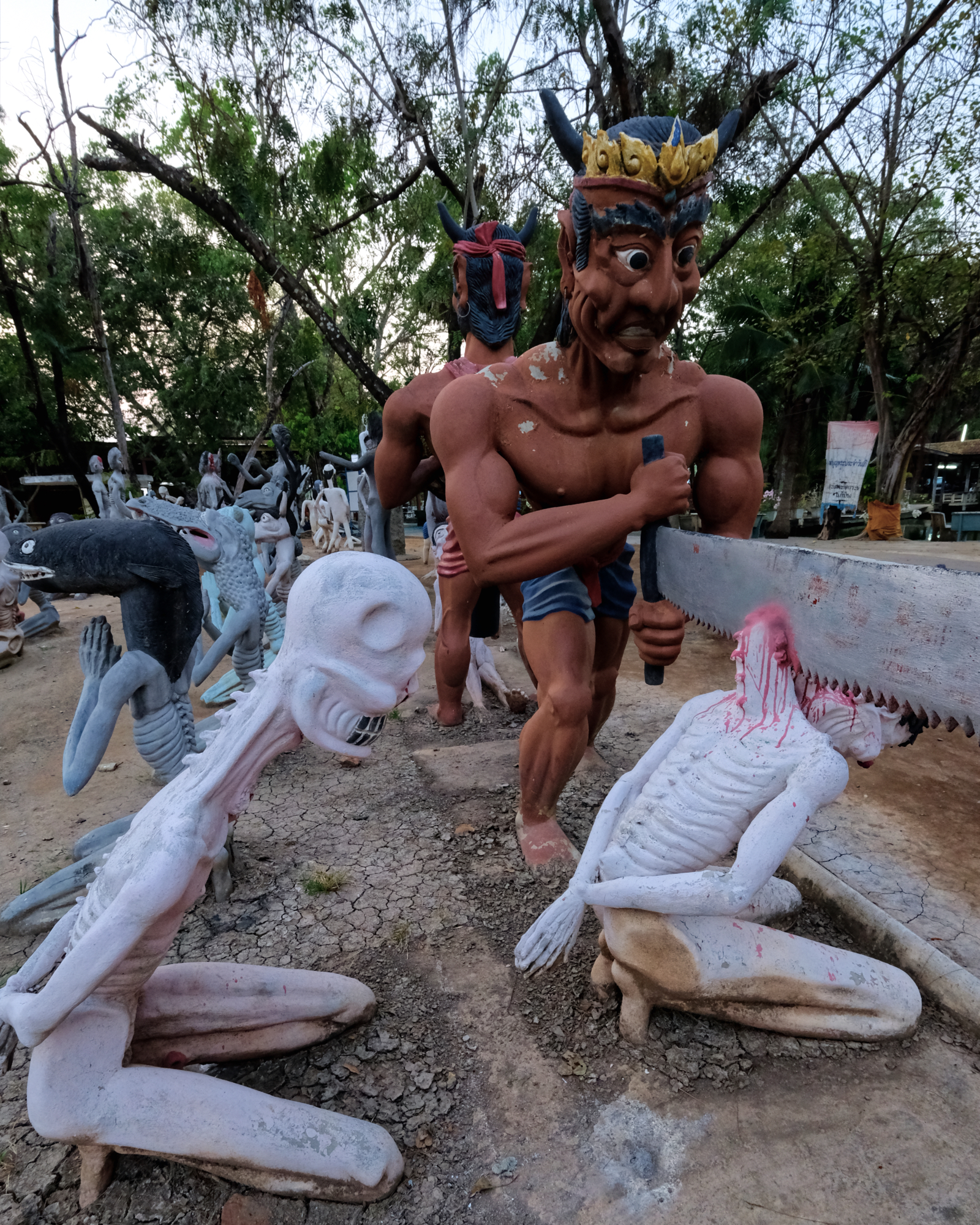 I hate it when this happens. [You KNEW I was going to have to say that!]
I hate it when this happens. [You KNEW I was going to have to say that!]
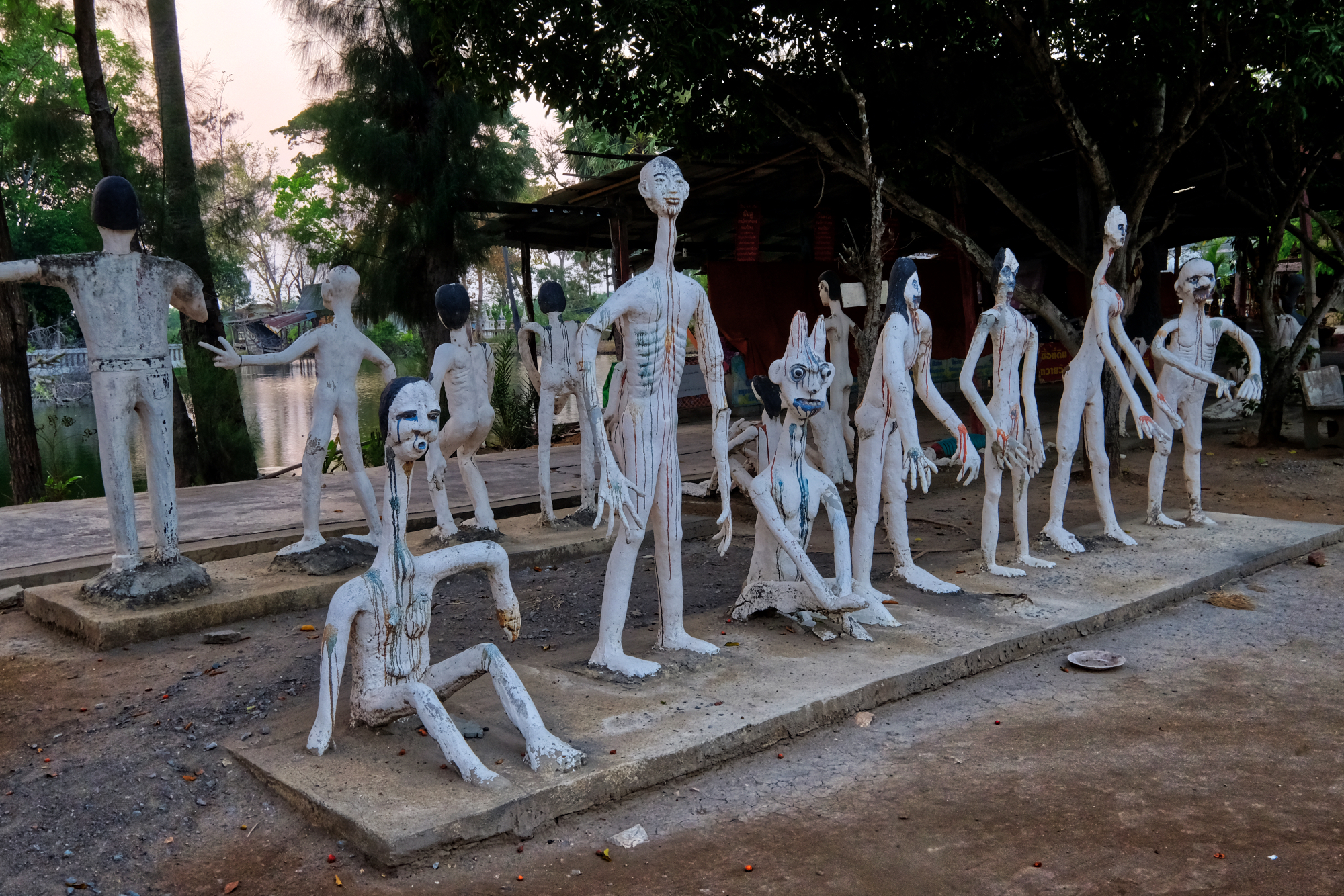 Another style variation on the theme of suffering.
Another style variation on the theme of suffering.
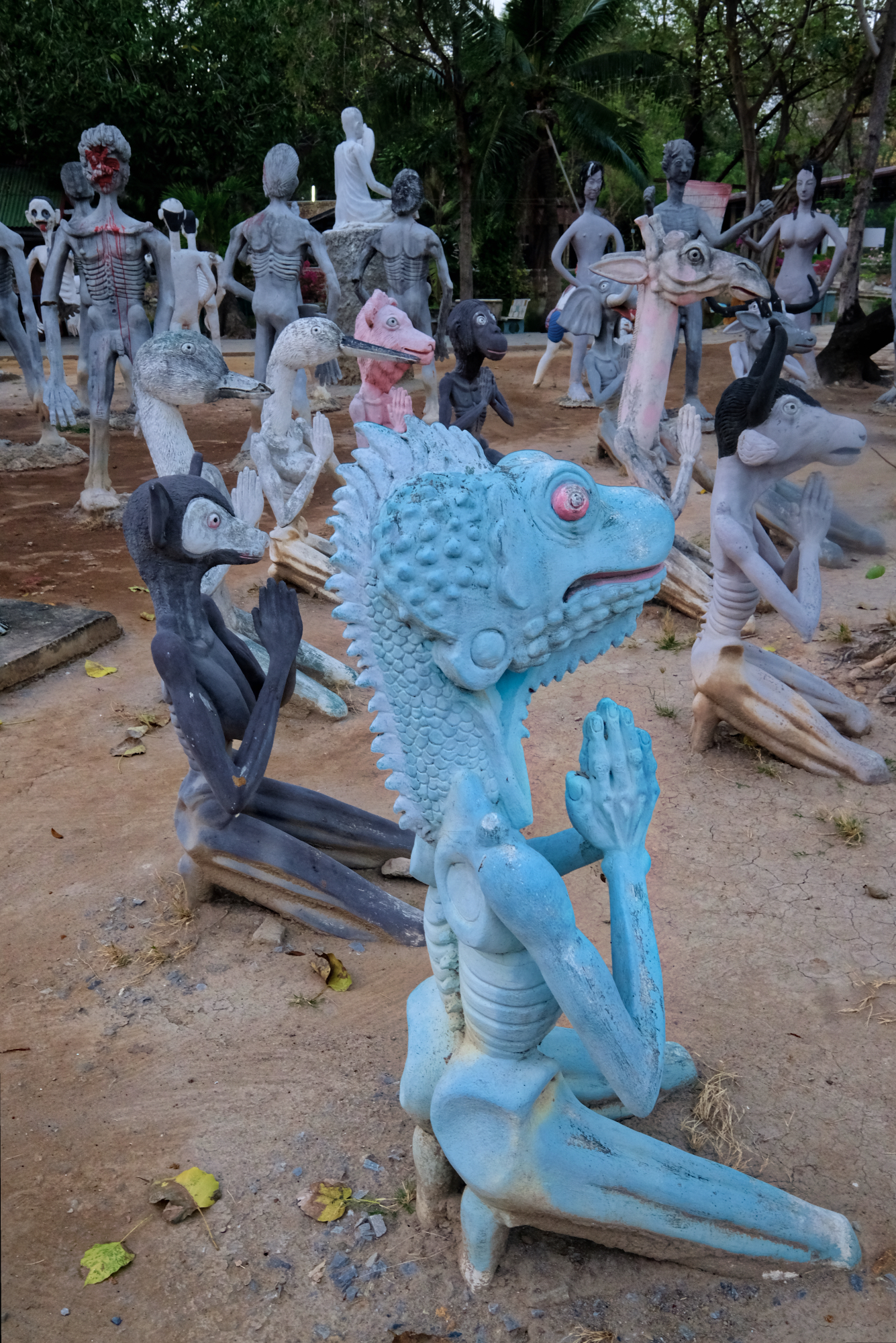 I'm not sure what kind of bad gamma you must have earned to reappear in the Hell Garden as a lizardhead.
I'm not sure what kind of bad gamma you must have earned to reappear in the Hell Garden as a lizardhead.
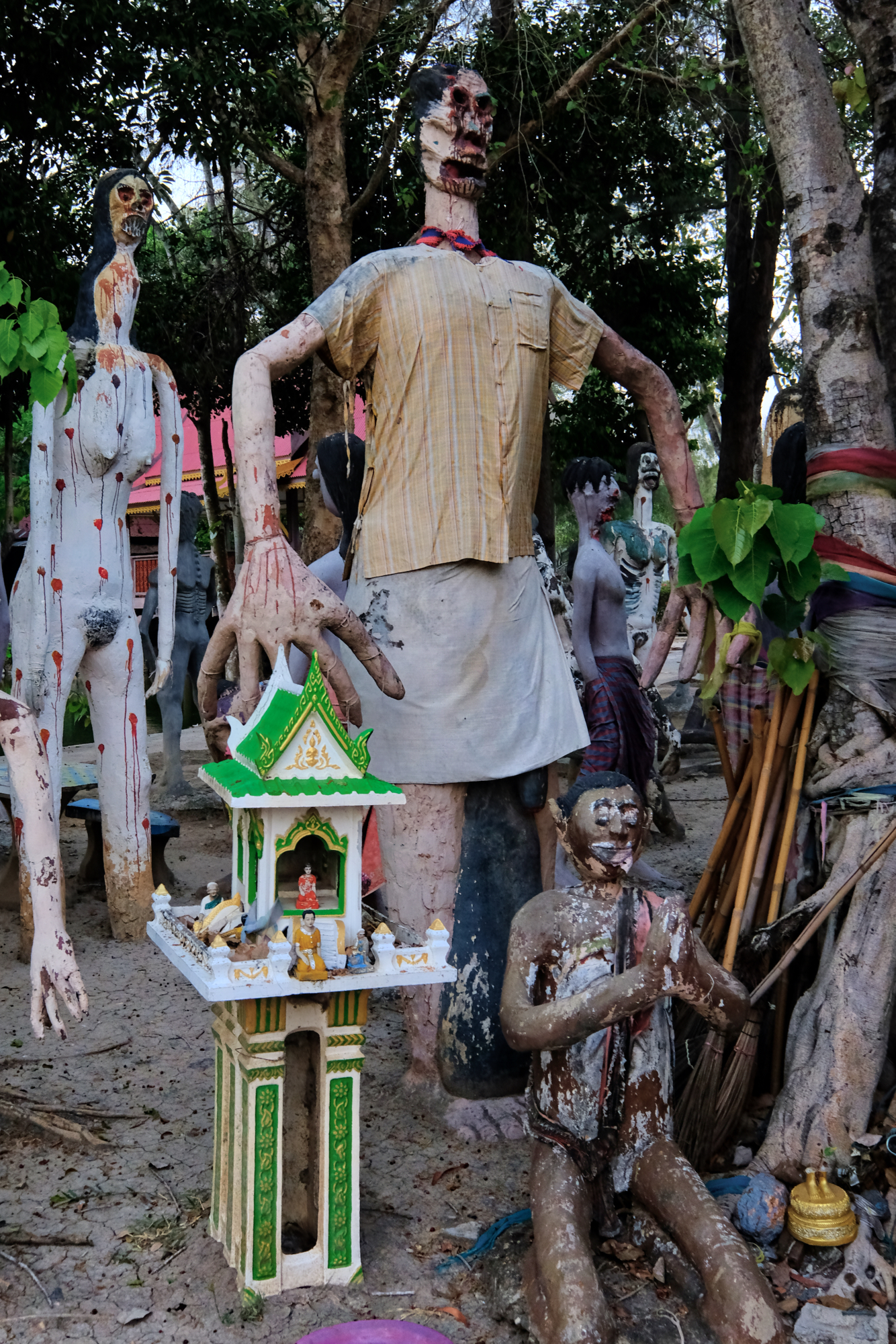 I don't know if it means anything, but I own the exact same shirt.
I don't know if it means anything, but I own the exact same shirt.
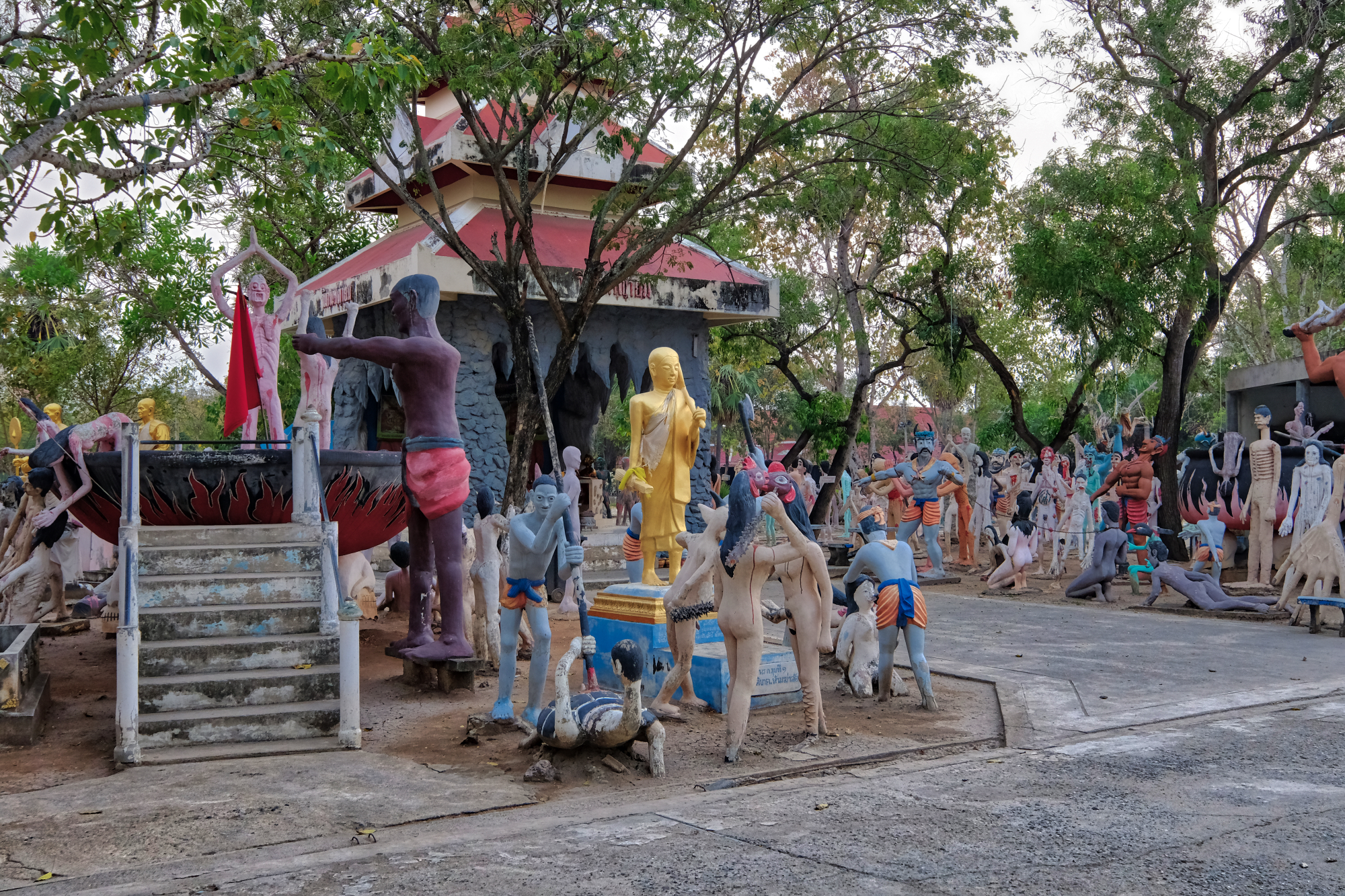 The Hell Garden covered a very large area. A group of Buddhist monks walked through pointing and laughing . . . I was so fascinated with their jovial attitude that I completely forgot to take their photo!
The Hell Garden covered a very large area. A group of Buddhist monks walked through pointing and laughing . . . I was so fascinated with their jovial attitude that I completely forgot to take their photo!
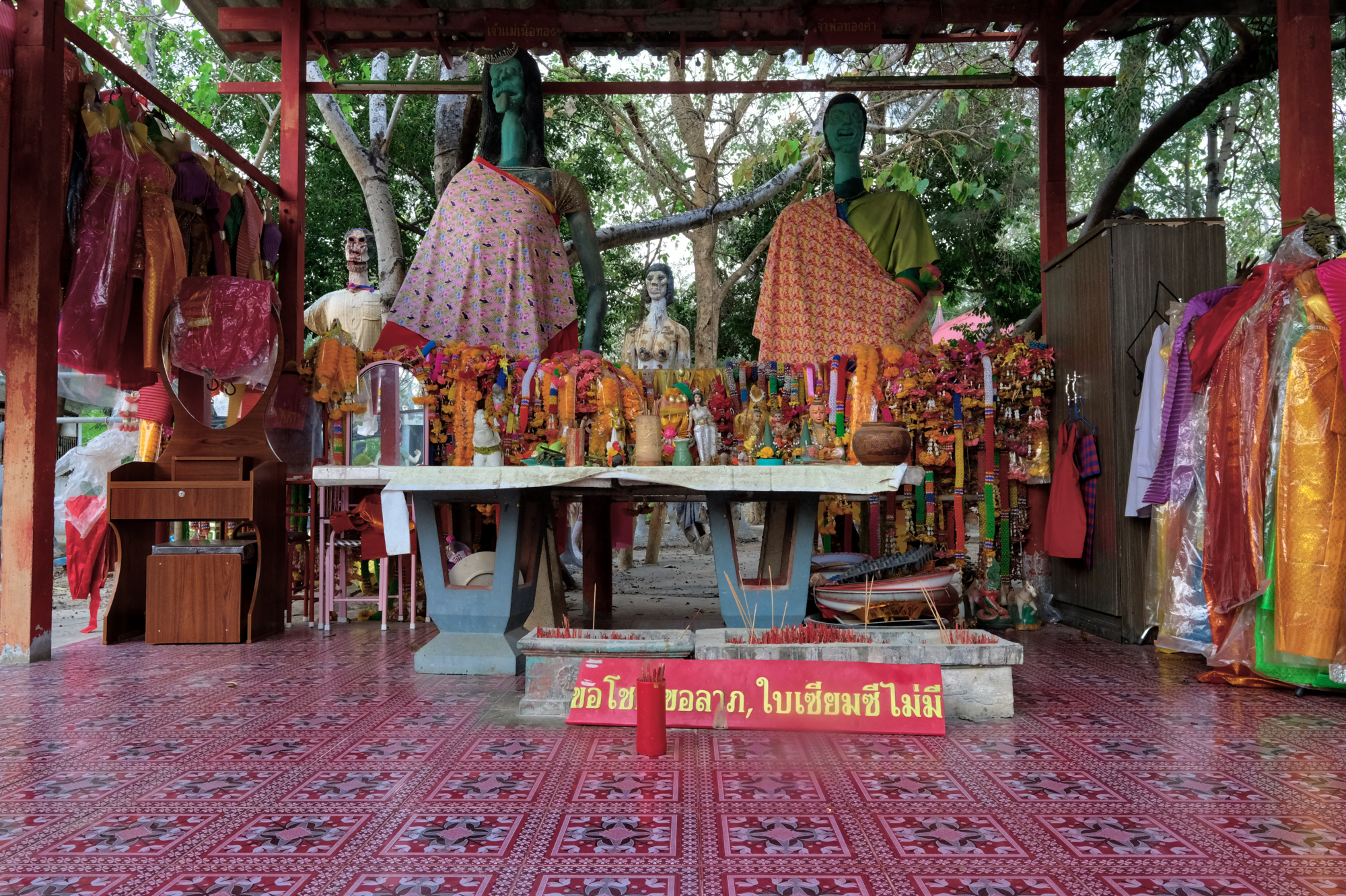 There was a small structure within the Hell Garden that held what seemed like offerings.
There was a small structure within the Hell Garden that held what seemed like offerings.
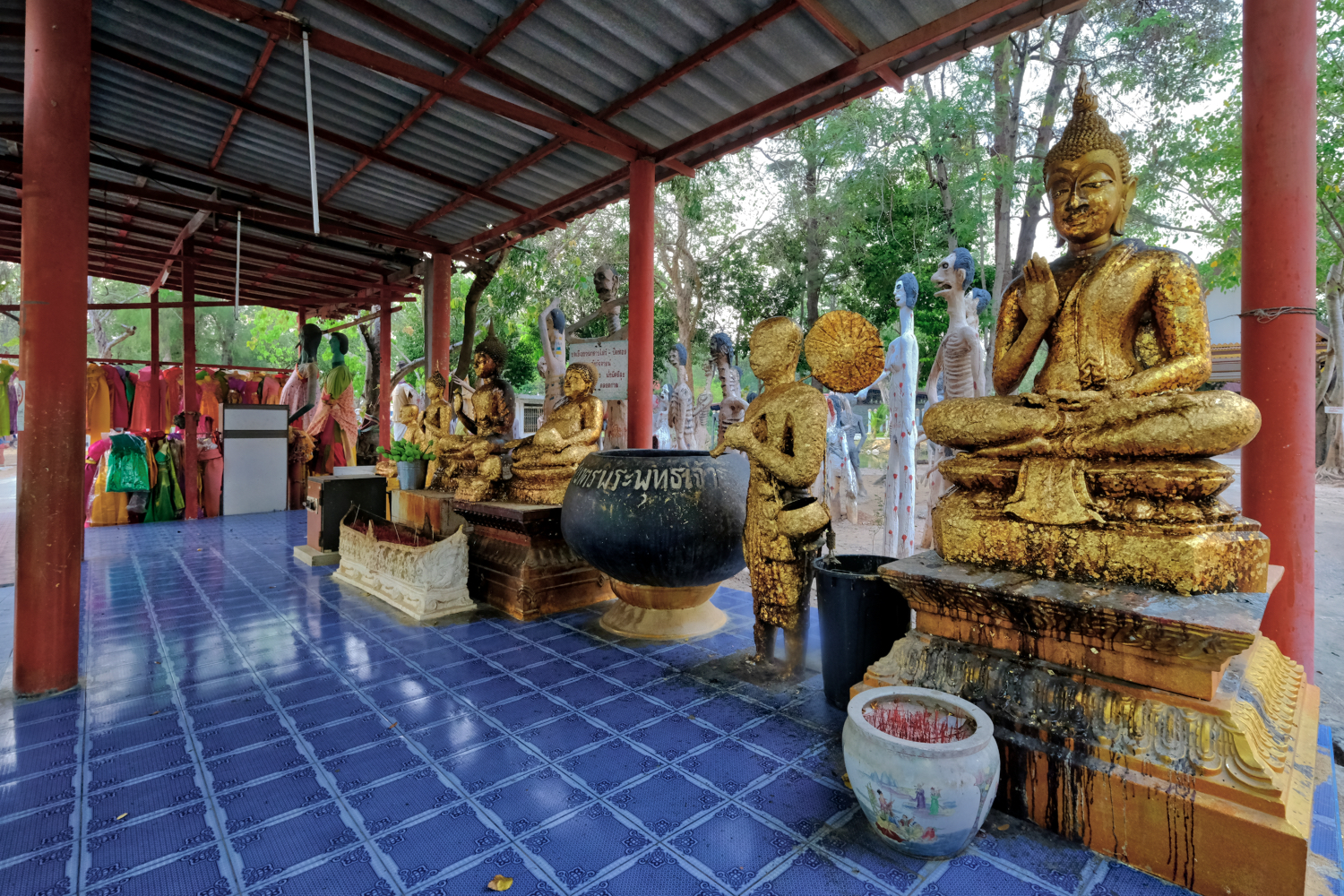 There was even a row of Buddha images . . . but it was hard to tell if these weren't depictions of 'fallen' Buddhas . . .
There was even a row of Buddha images . . . but it was hard to tell if these weren't depictions of 'fallen' Buddhas . . .
 When we had seen enough human suffering we left over the bridge we came over.
When we had seen enough human suffering we left over the bridge we came over.
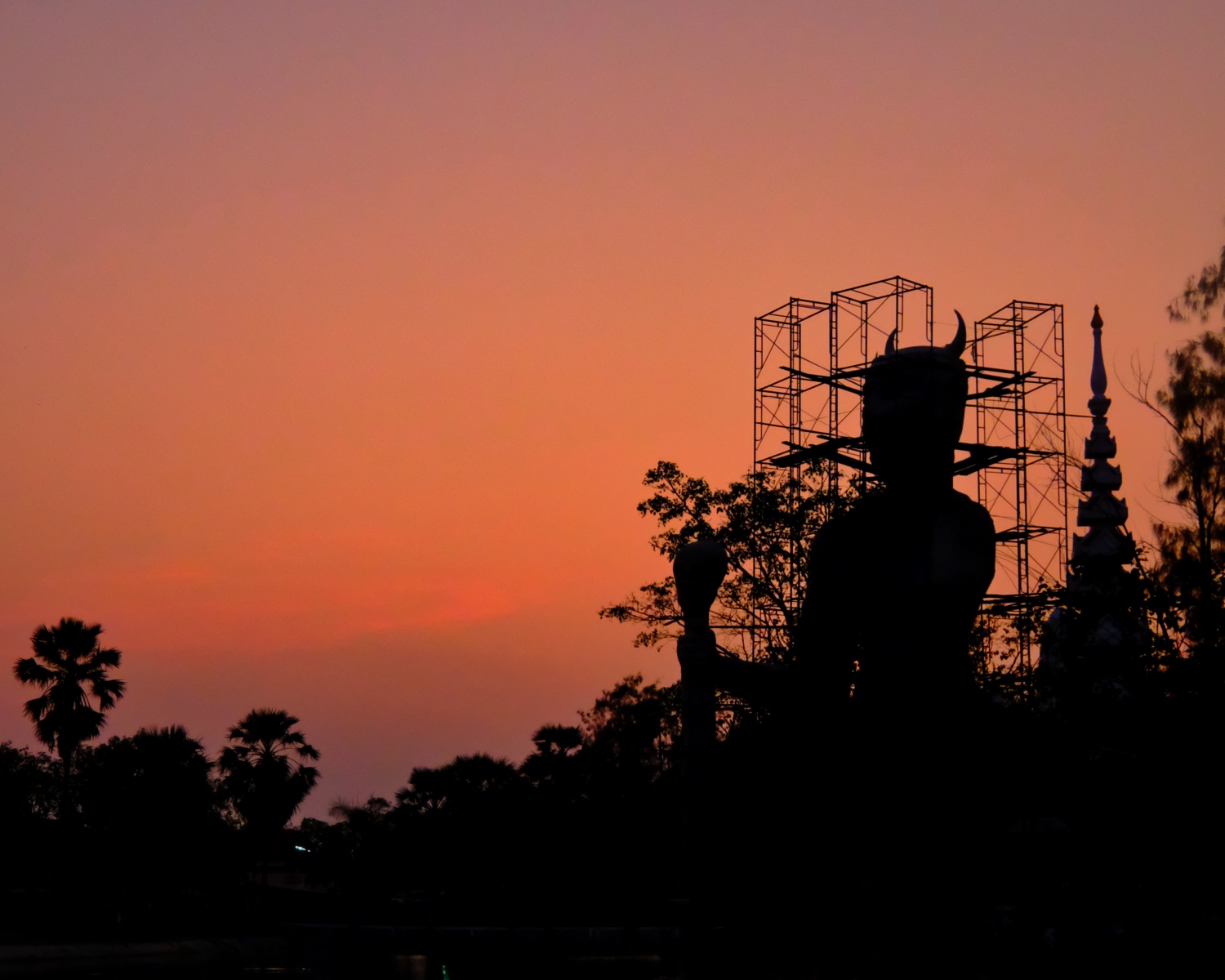 It had been a wonderful day that left us with fabulous images running around our heads (and on our storage cards!) . . . and many questions left unanswered.
It had been a wonderful day that left us with fabulous images running around our heads (and on our storage cards!) . . . and many questions left unanswered.
Suphanburi Province: A Day Trip Northwest Of Bangkok
 Saturday, March 10, 2018 at 7:11PM
Saturday, March 10, 2018 at 7:11PM A RAMBLE IN FOUR PARTS
Part One: An Ancient Rural Suiphanburi Riverside Wat
My friend John Stiles and I set off in my old truck up the road to the rural province of Suphanburi, to the northwest of Bangkok. As usual, we had a vague idea, from a tertiary Google search, of what we wanted to see, but no particular plan: we would ramble. We would eventually see several amazing Buddhist temple complexes, a Buffalo park, and a Farm Museum. We never 'found' the actual town of Suphanburi, but we didn't care: we had a grand adventure rambling about the rural Thai countryside.
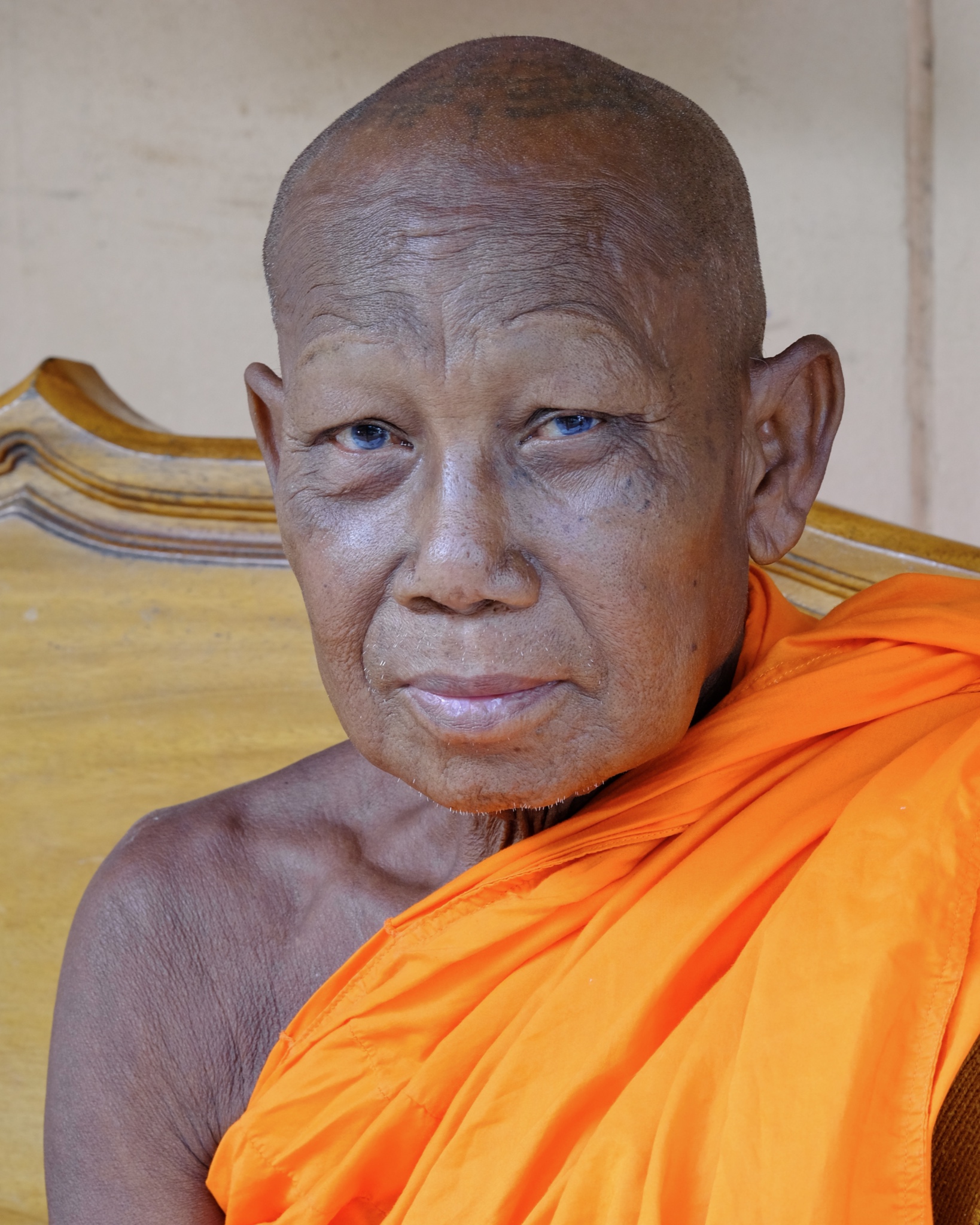 Suphanburi, just a two hours drive from my home, is like going back in time to simpler days in Thailand.
Suphanburi, just a two hours drive from my home, is like going back in time to simpler days in Thailand.
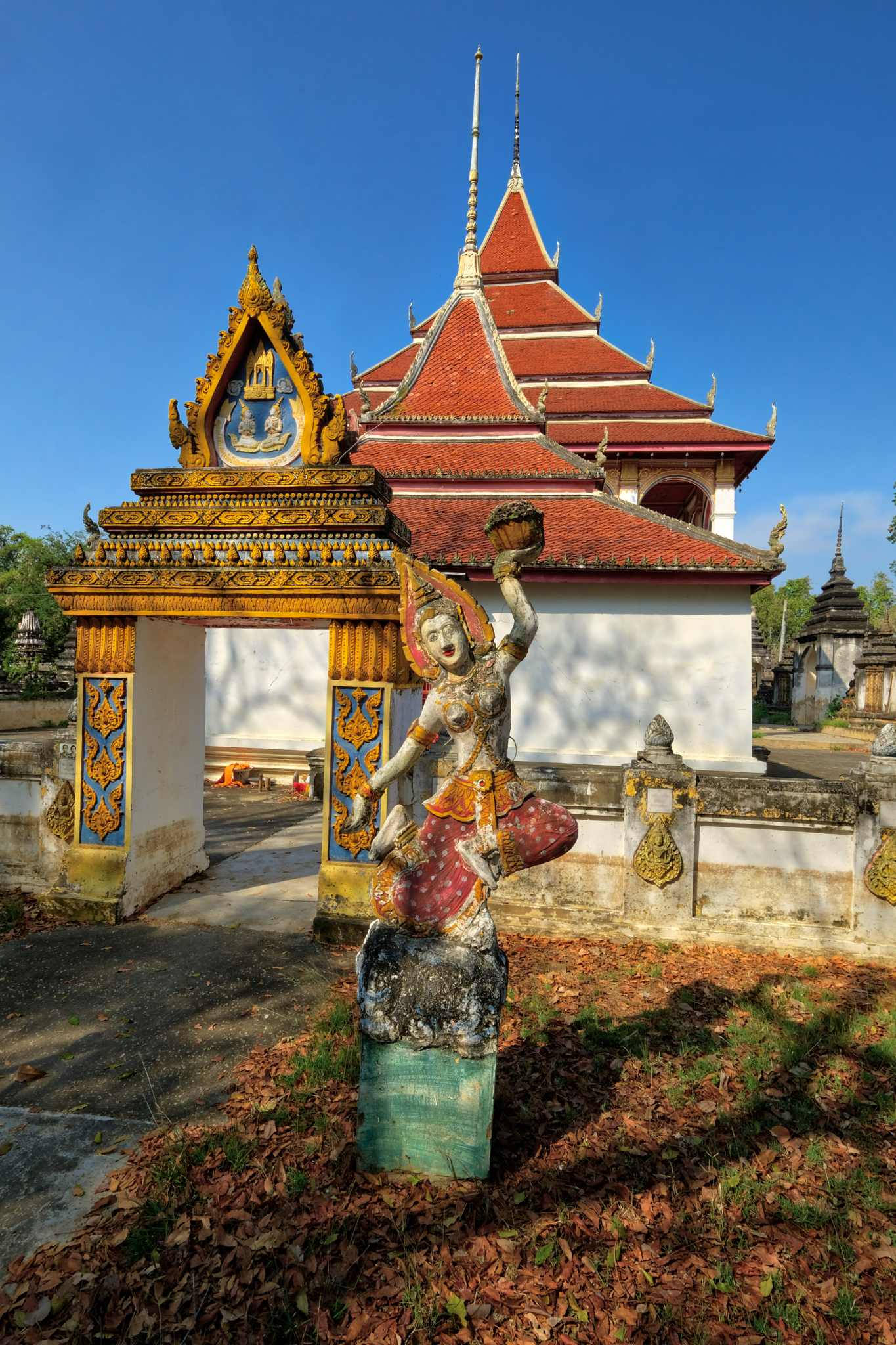 . . . and wonderful old Buddhist temples (Wats) dotted throughout the scenery. Our first stop was as the result of spotting a large, towering chedi through some trees as we sped down the highway. We turned off the road not knowing that we would find a most beautiful and interesting temple.
. . . and wonderful old Buddhist temples (Wats) dotted throughout the scenery. Our first stop was as the result of spotting a large, towering chedi through some trees as we sped down the highway. We turned off the road not knowing that we would find a most beautiful and interesting temple.
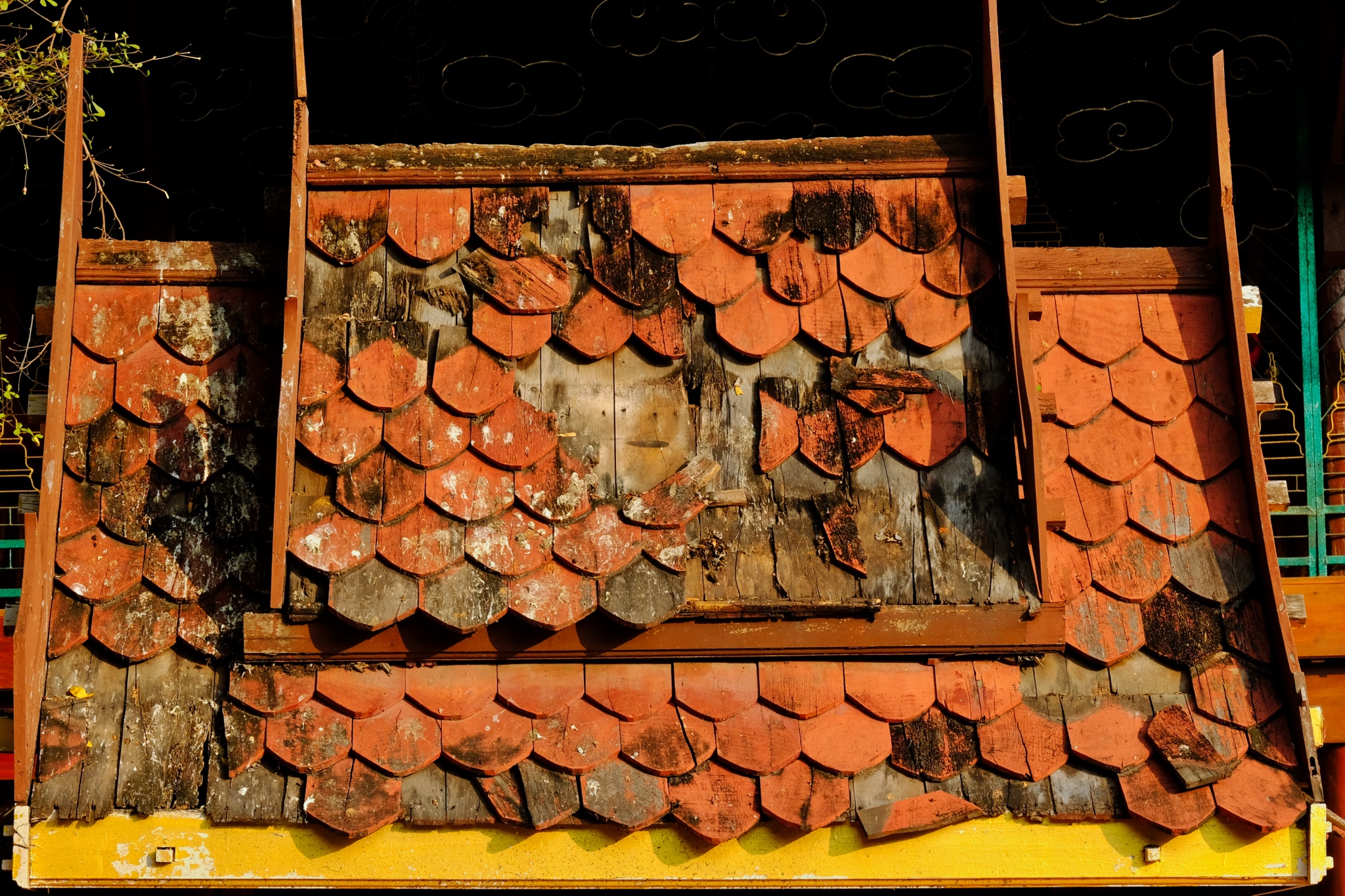 The wat we found was also a school, which was just getting started. A student band was playing and children were singing. We wandered in.
The wat we found was also a school, which was just getting started. A student band was playing and children were singing. We wandered in.
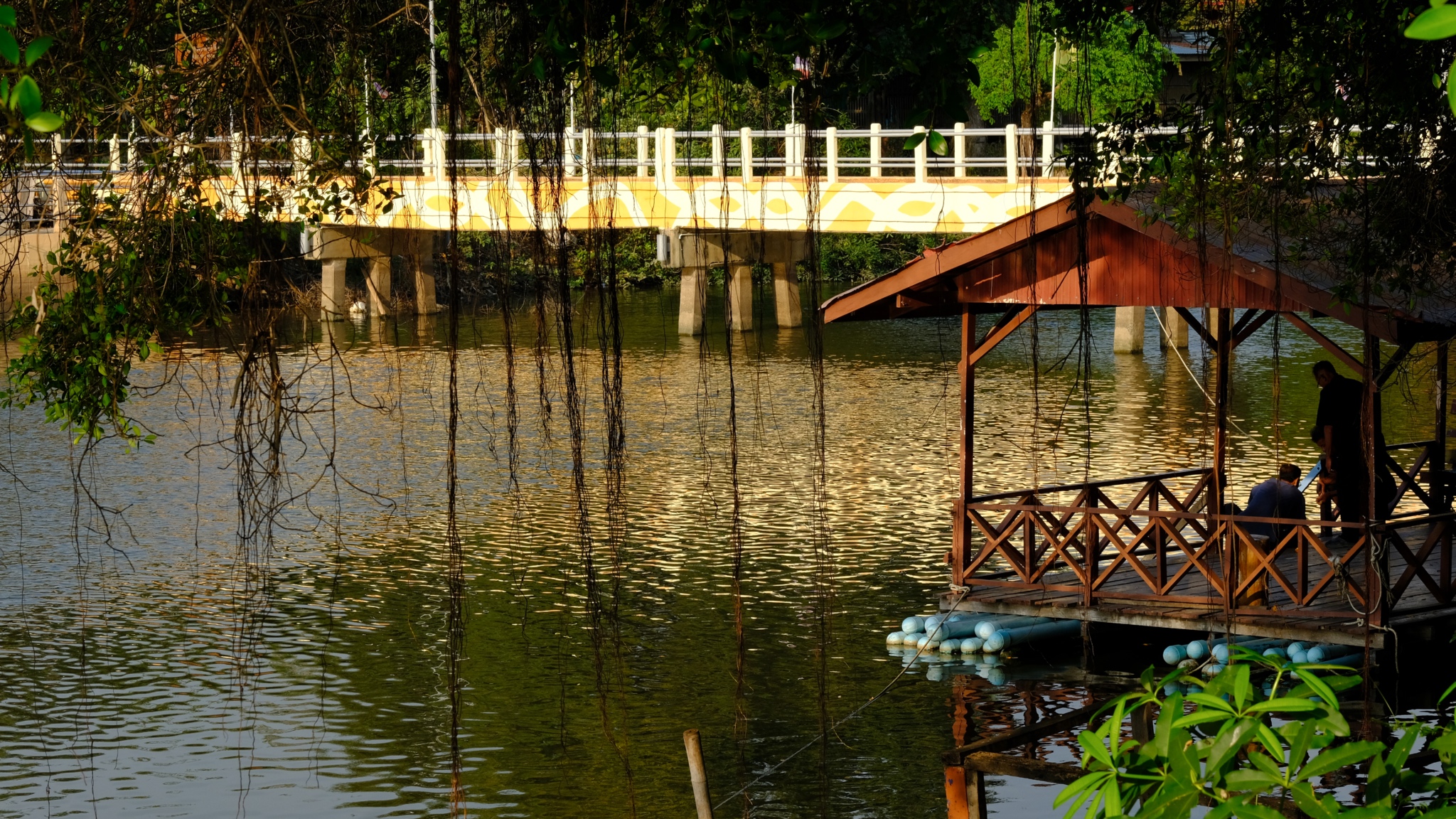 The wat was built along both sides of a river, one of the tributaries of the Chao Phraya River.
The wat was built along both sides of a river, one of the tributaries of the Chao Phraya River.
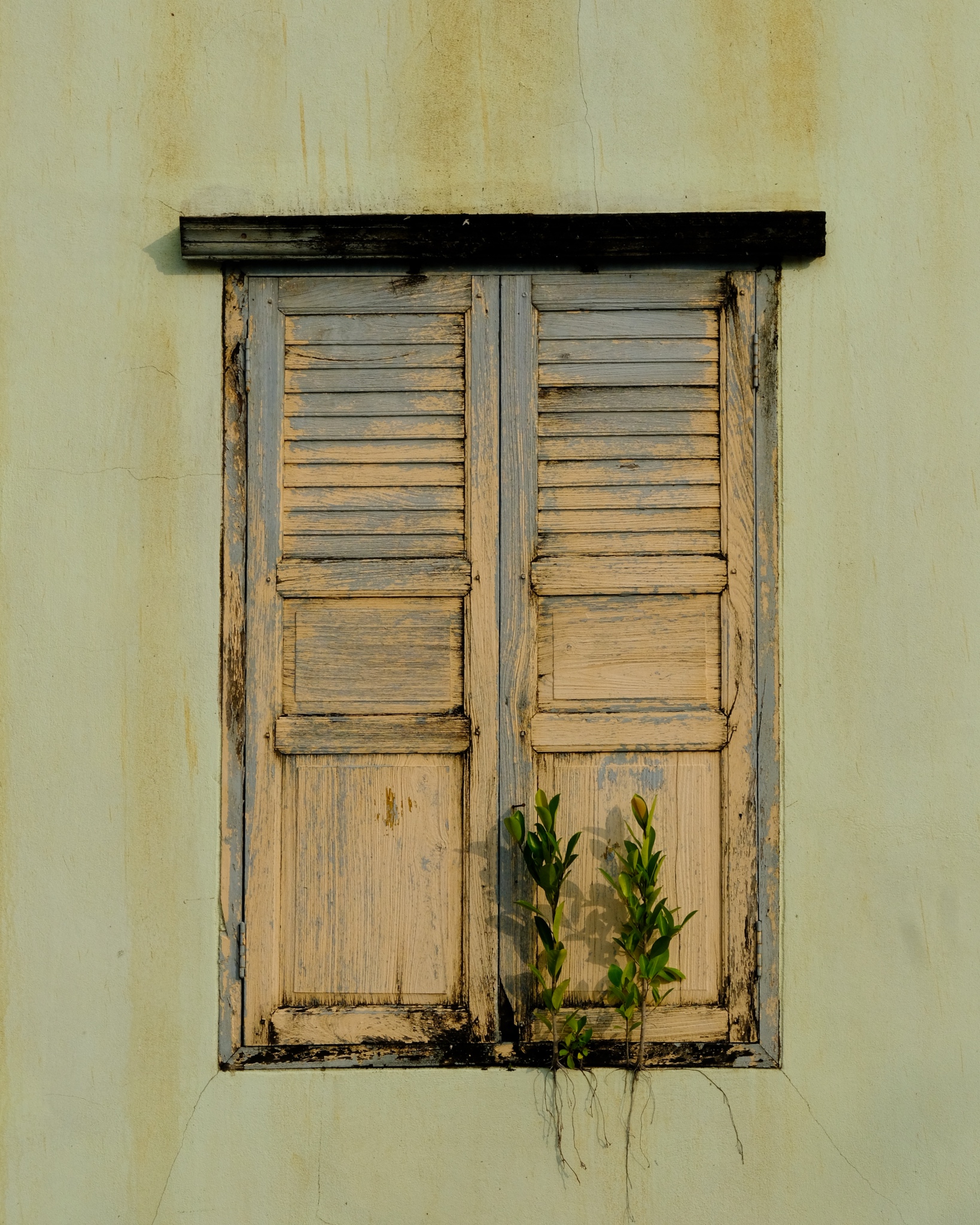 Marvelous aged textures throughout this beautiful place.
Marvelous aged textures throughout this beautiful place.
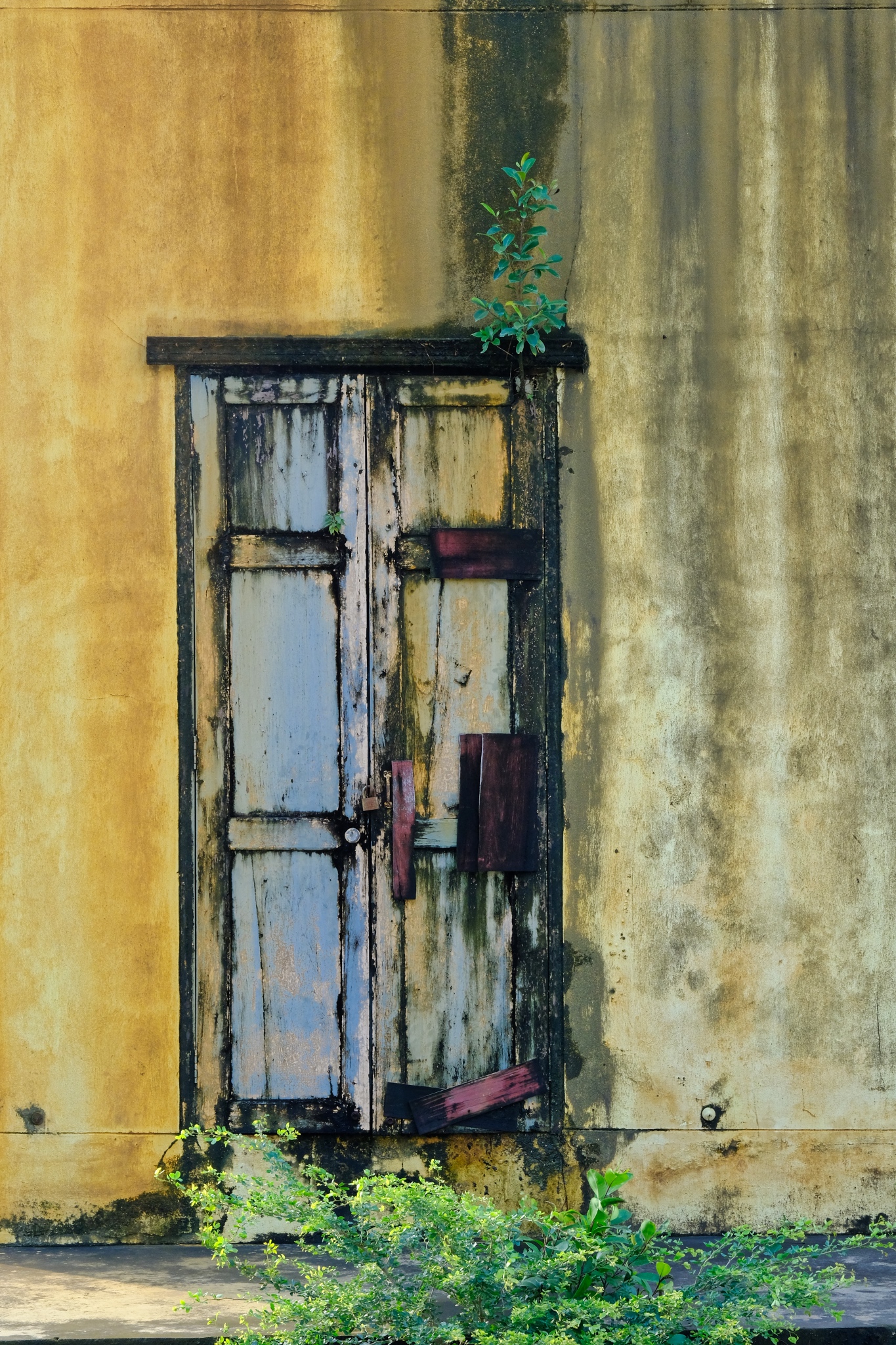 I believe we could have spent all day just photographing this door and the windows on this old storehouse. The black mold outlining, the weathered and stained walls, the encroaching plants. The color! Incredible. But we ambled on, pointing our cameras here and there, and always finding something visually interesting.
I believe we could have spent all day just photographing this door and the windows on this old storehouse. The black mold outlining, the weathered and stained walls, the encroaching plants. The color! Incredible. But we ambled on, pointing our cameras here and there, and always finding something visually interesting.
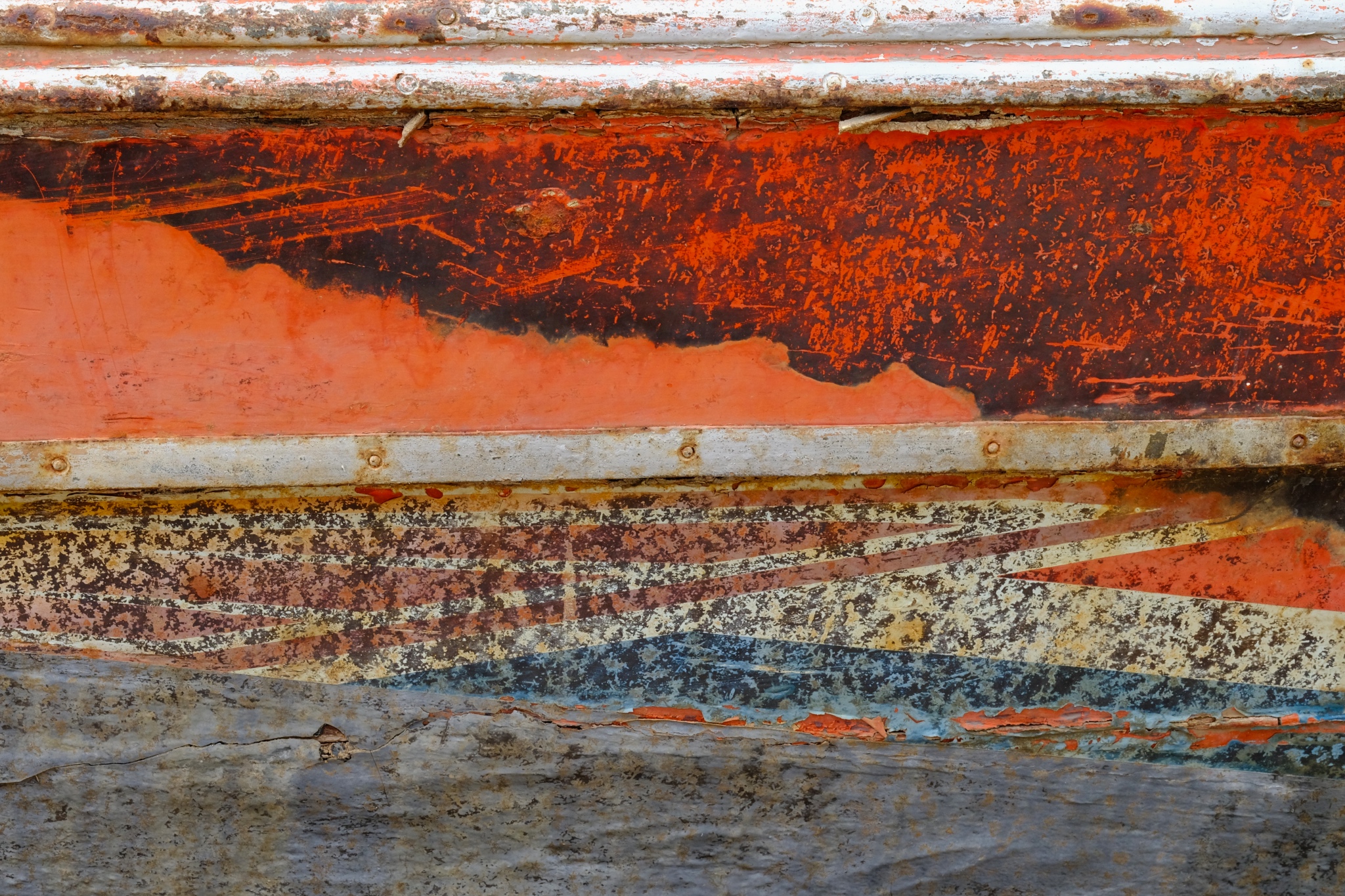
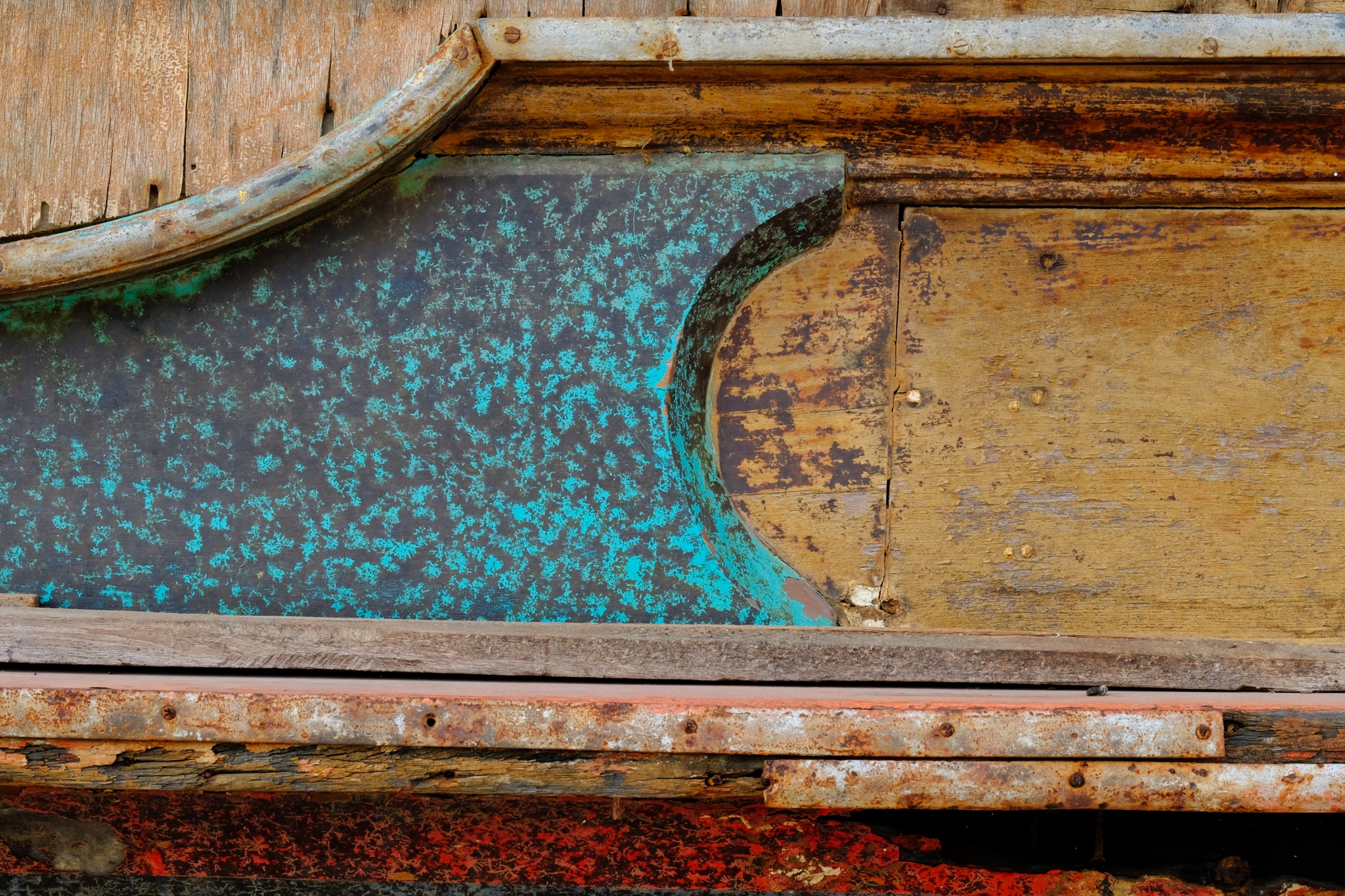 Detail of a weathered old river ferry boat that had been pulled up into the wat parking lot.
Detail of a weathered old river ferry boat that had been pulled up into the wat parking lot.
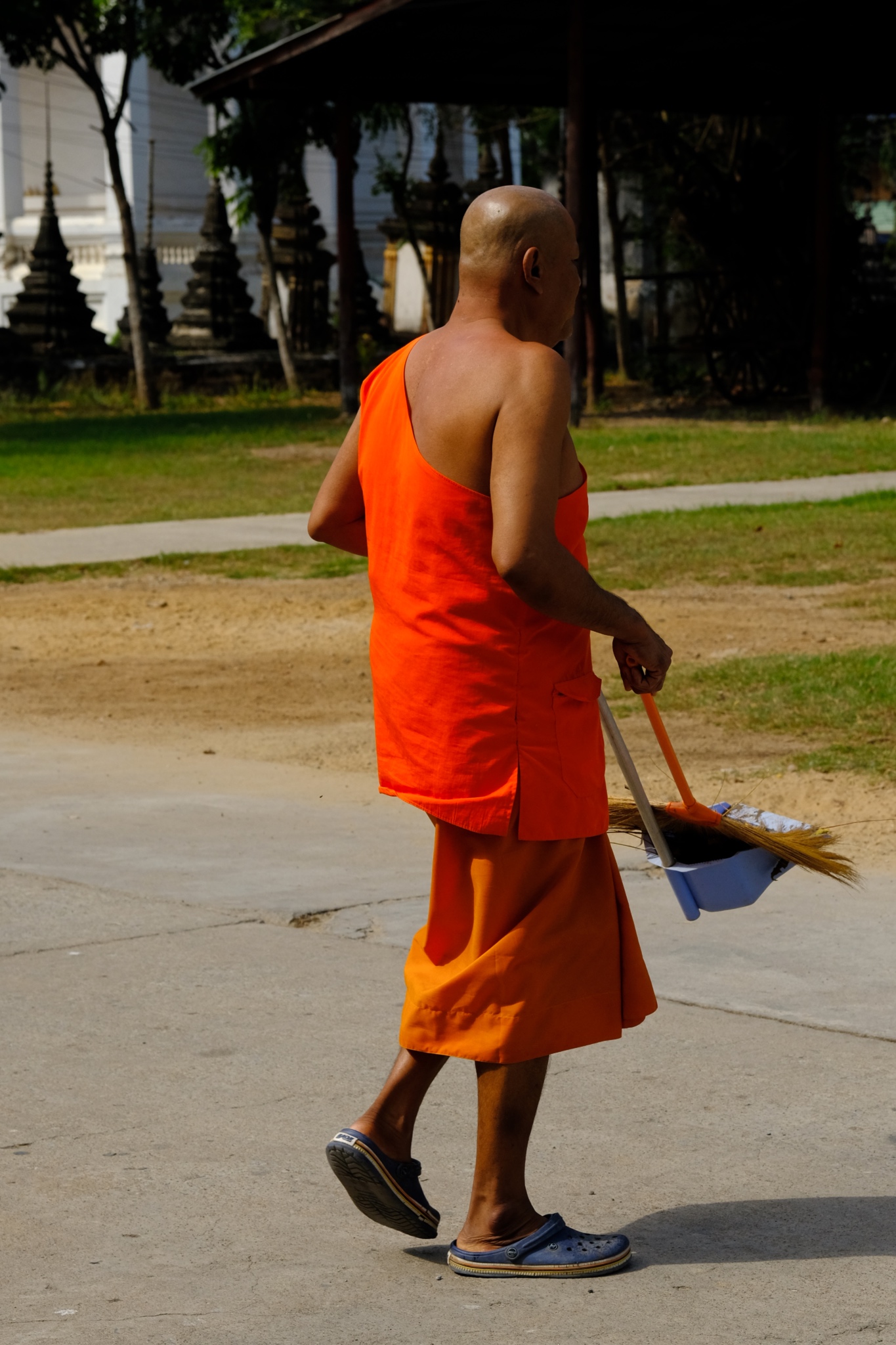 It was still early, after morning meditation, so the monks were out doing their chores.
It was still early, after morning meditation, so the monks were out doing their chores.
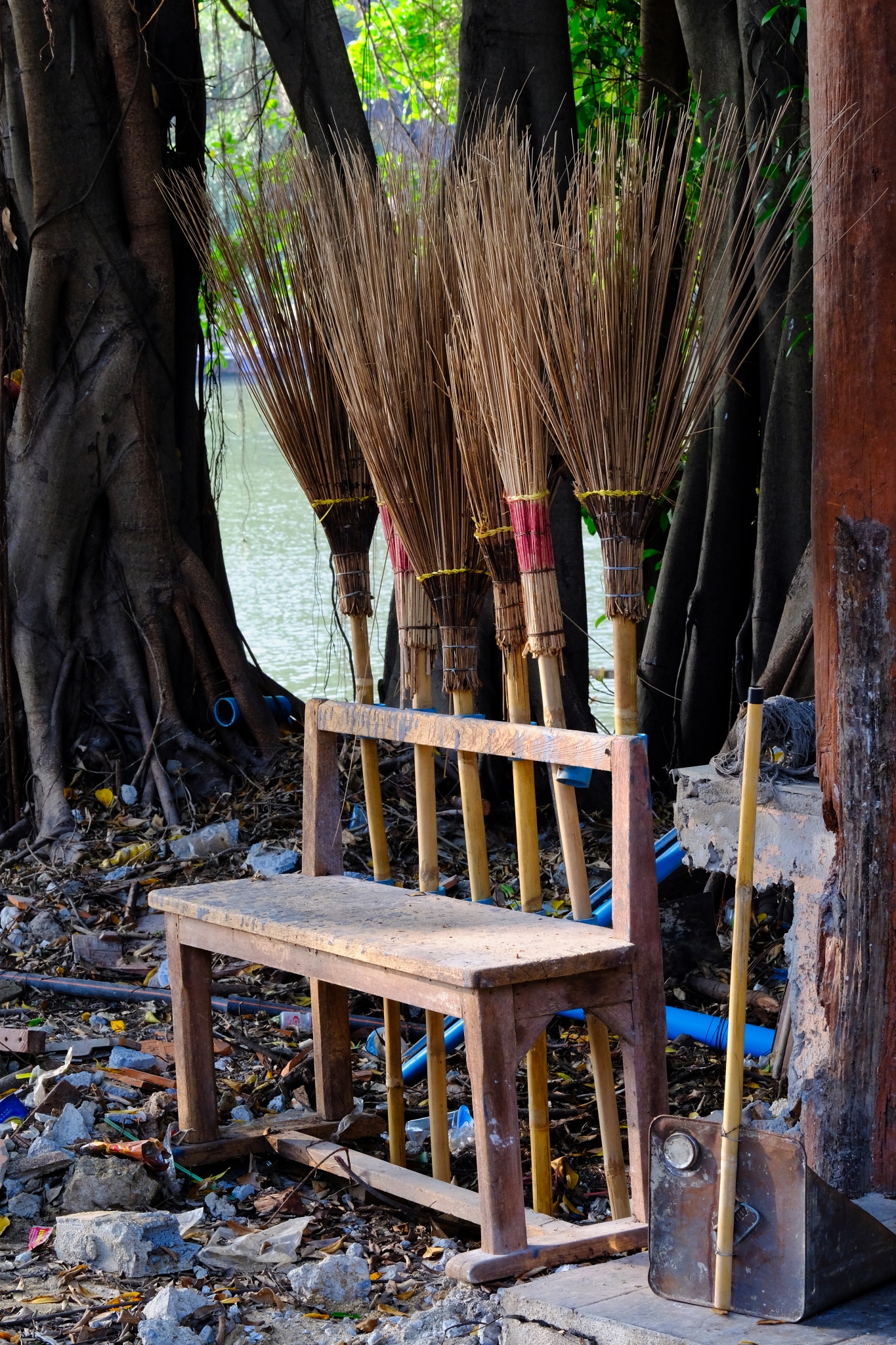 The brooms neatly arranged . . . and a bench to sit on after completing the job.
The brooms neatly arranged . . . and a bench to sit on after completing the job.
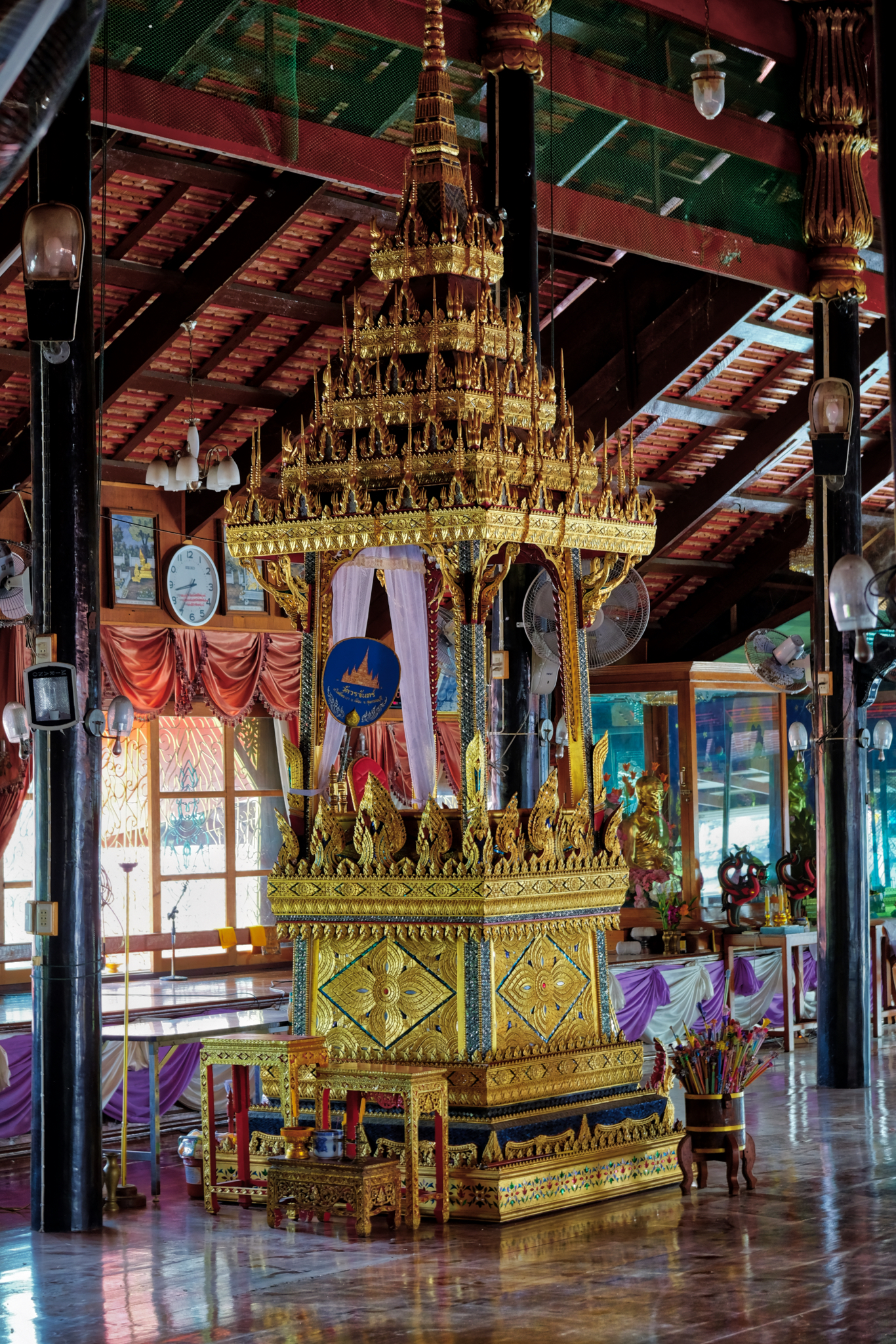 In our ambling we found an old wooden building and went up the stairs to find a meditation hall with an elaborately decorated 'pulpit.'
In our ambling we found an old wooden building and went up the stairs to find a meditation hall with an elaborately decorated 'pulpit.'
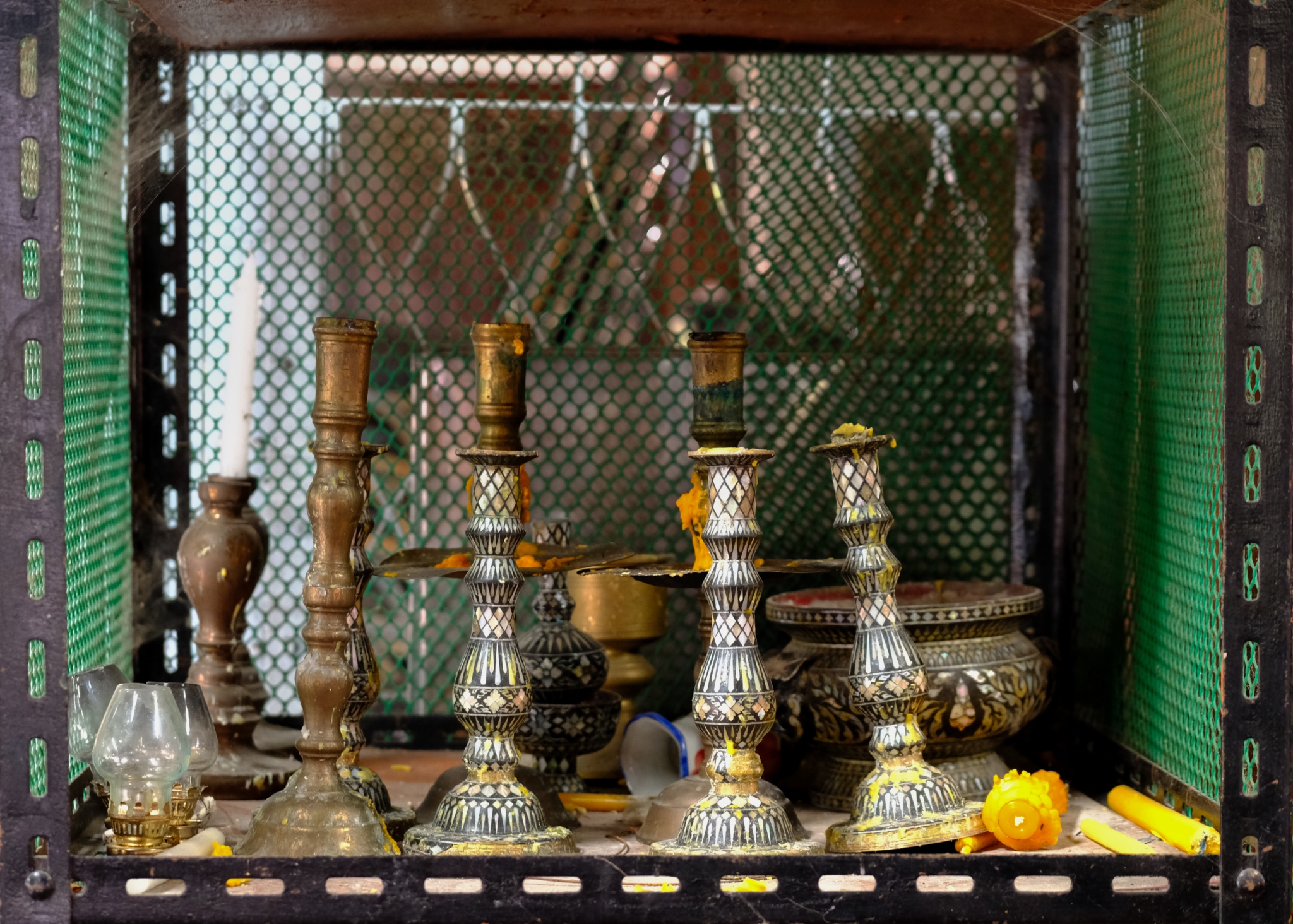 Simple votive items in storage until tomorrow's meditation.
Simple votive items in storage until tomorrow's meditation.
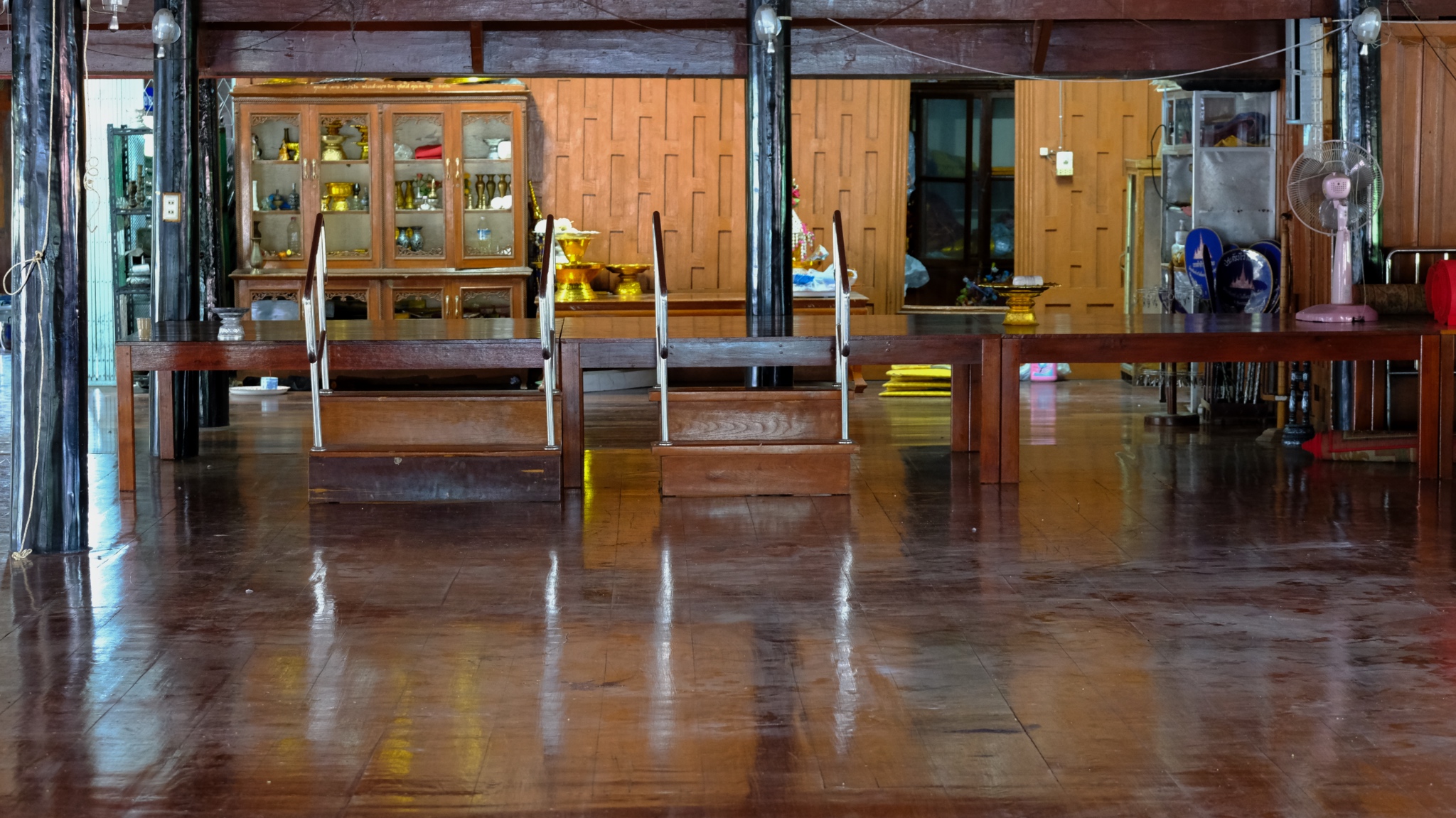 The simple interior of a rural Suphanburi wat. Little did we know that just across the river was the other half of this wat complex . . . and it was something special!
The simple interior of a rural Suphanburi wat. Little did we know that just across the river was the other half of this wat complex . . . and it was something special!
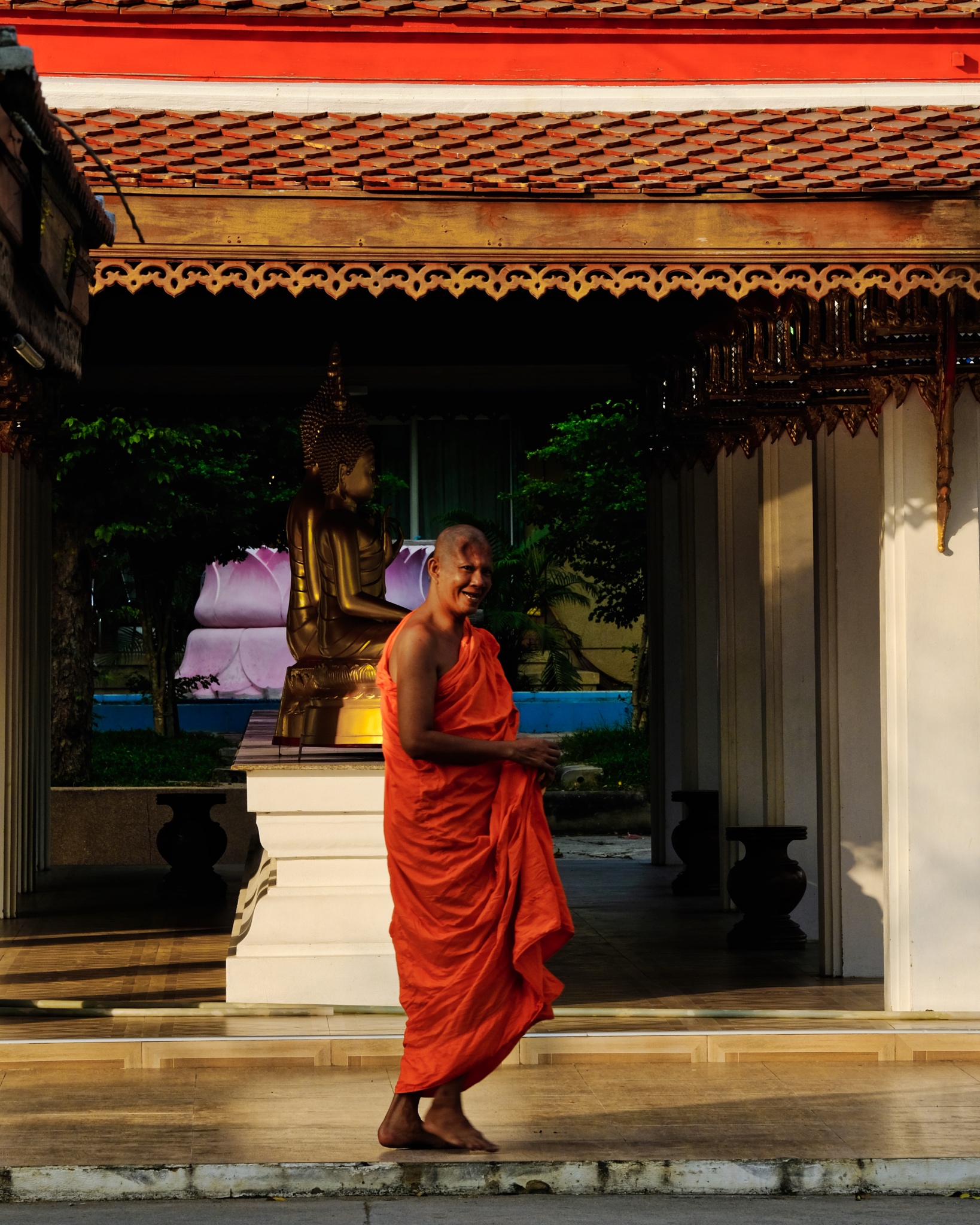 We crossed the bridge to the other side of the wat. It had a very different feel . . . Yes, this monk had a hole in his head (from an earlier injury).
We crossed the bridge to the other side of the wat. It had a very different feel . . . Yes, this monk had a hole in his head (from an earlier injury).
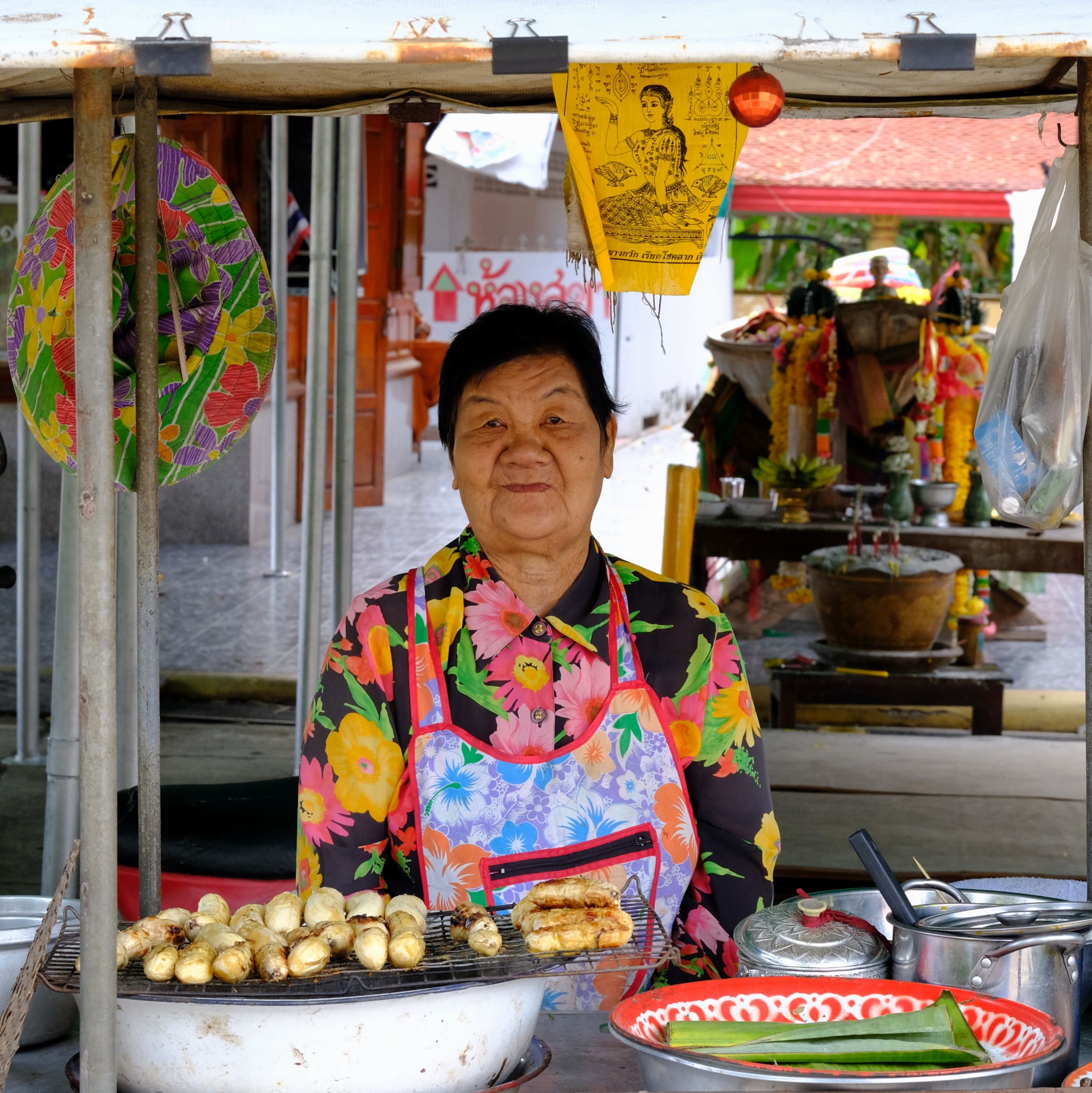 A grilled banana hawker stood outside of the temple buildings.
A grilled banana hawker stood outside of the temple buildings.
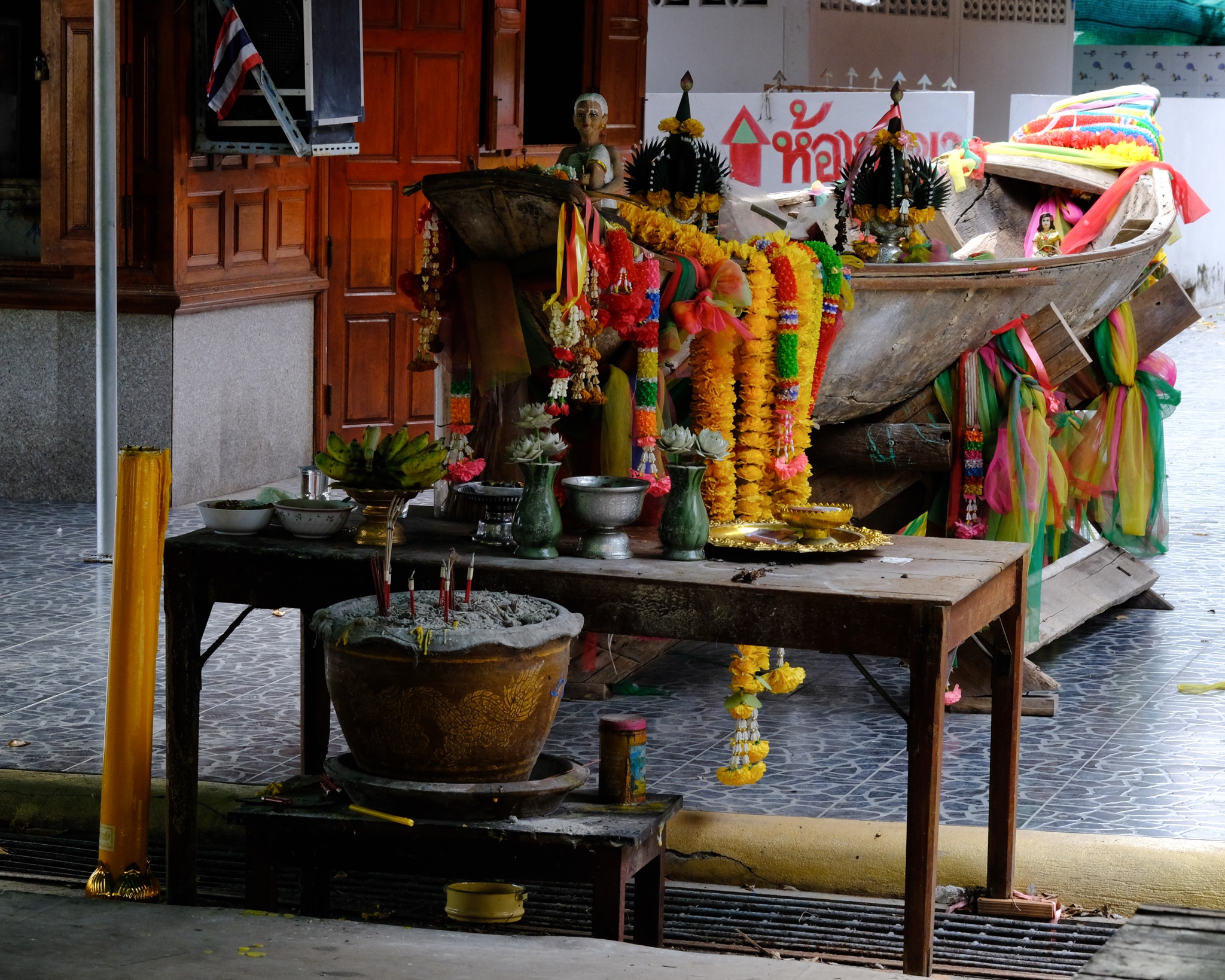 A votive altar made in a boat at this riverside temple.
A votive altar made in a boat at this riverside temple.
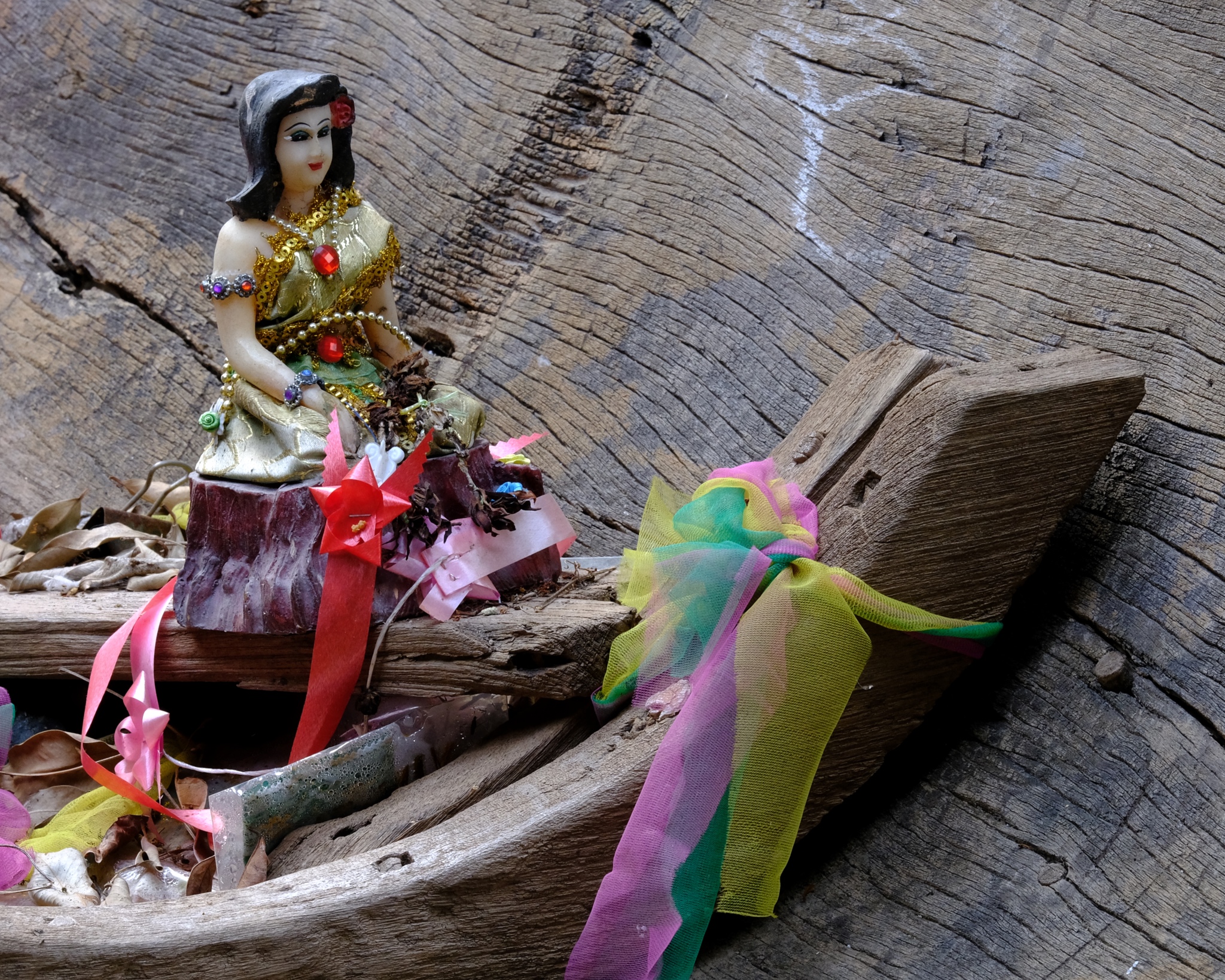 The boat altar was full of these scenes of devotional focus.
The boat altar was full of these scenes of devotional focus.
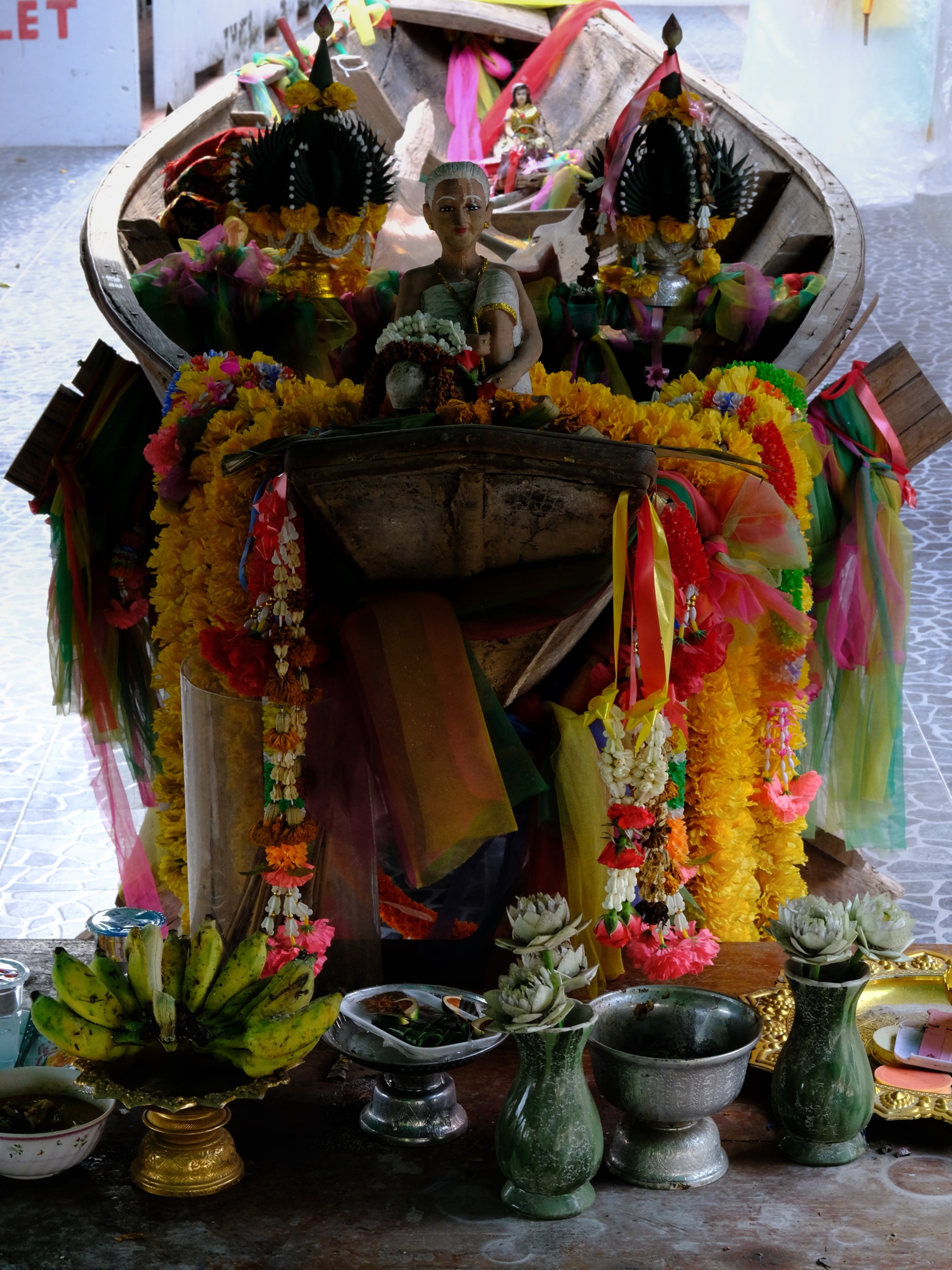 A reminder that these altars are not 'antiques' or 'relics' but living, current places of respect, attention, and daily tending (note the fresh bananas).
A reminder that these altars are not 'antiques' or 'relics' but living, current places of respect, attention, and daily tending (note the fresh bananas).
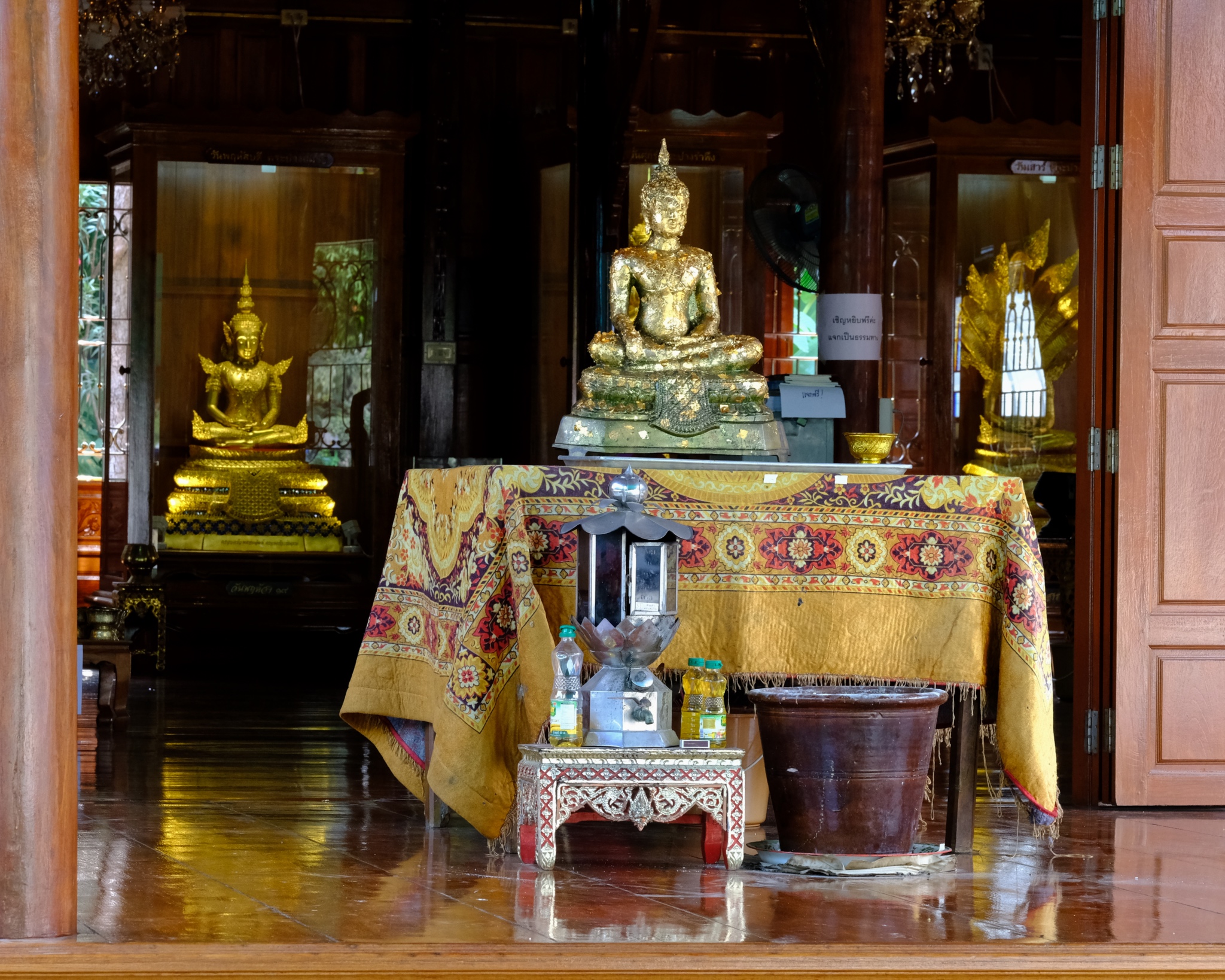 The entrance to the first wooden building we came to turned out to be a consolidated museum of the ancient Buddha images from the oldest wats on the ground.
The entrance to the first wooden building we came to turned out to be a consolidated museum of the ancient Buddha images from the oldest wats on the ground.
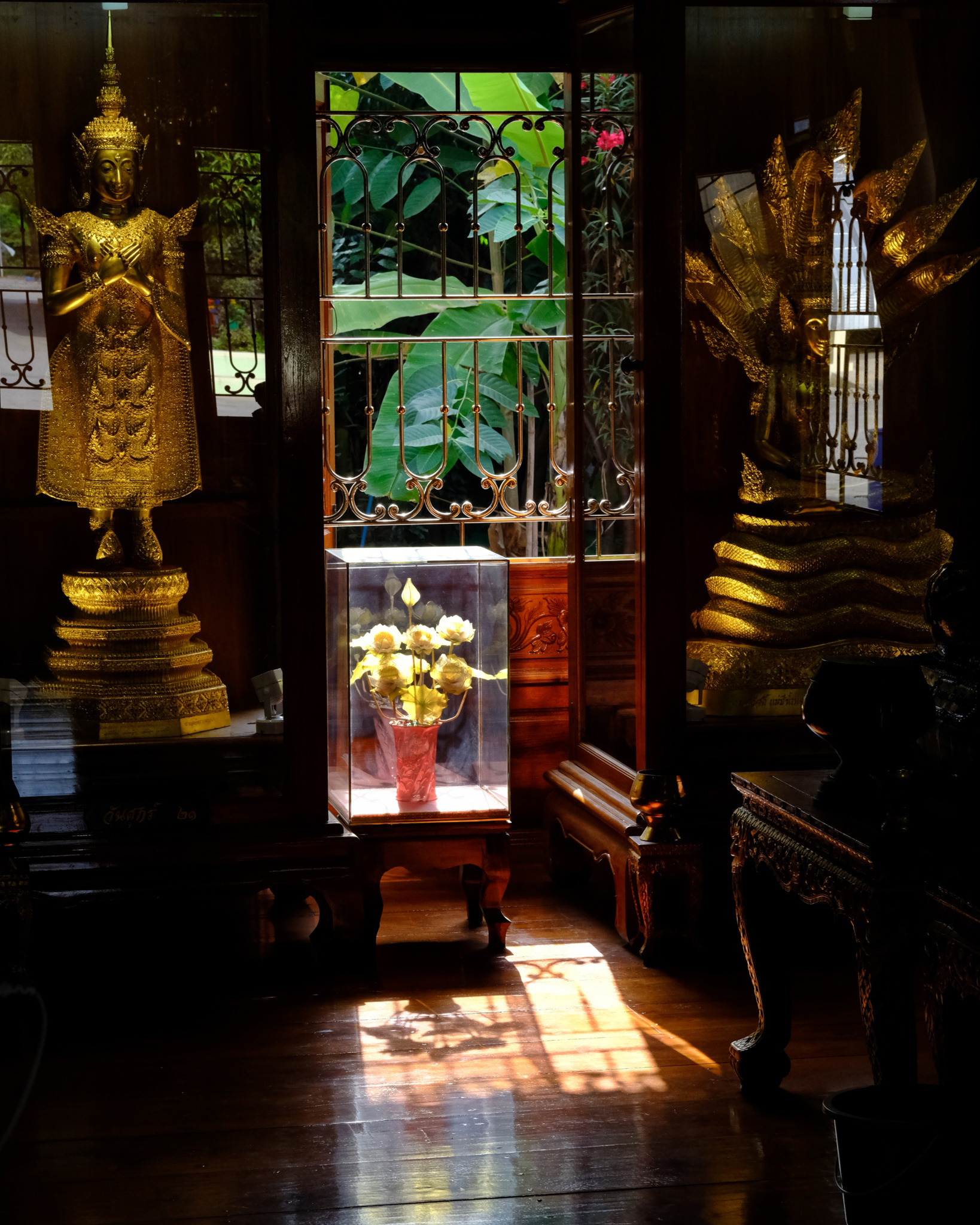 The interior of the museum. The light! The light!
The interior of the museum. The light! The light!
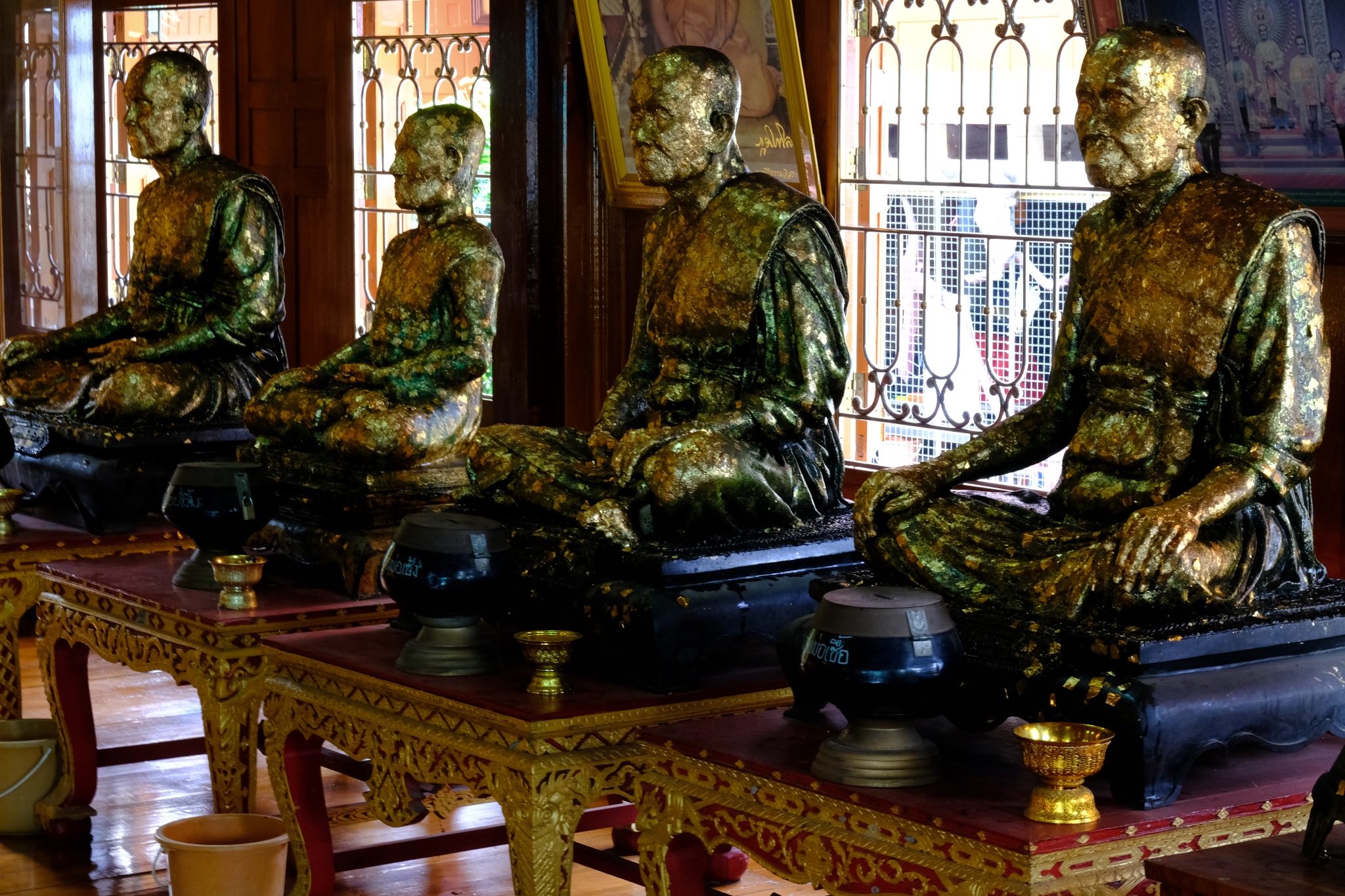 Remarkable.
Remarkable.
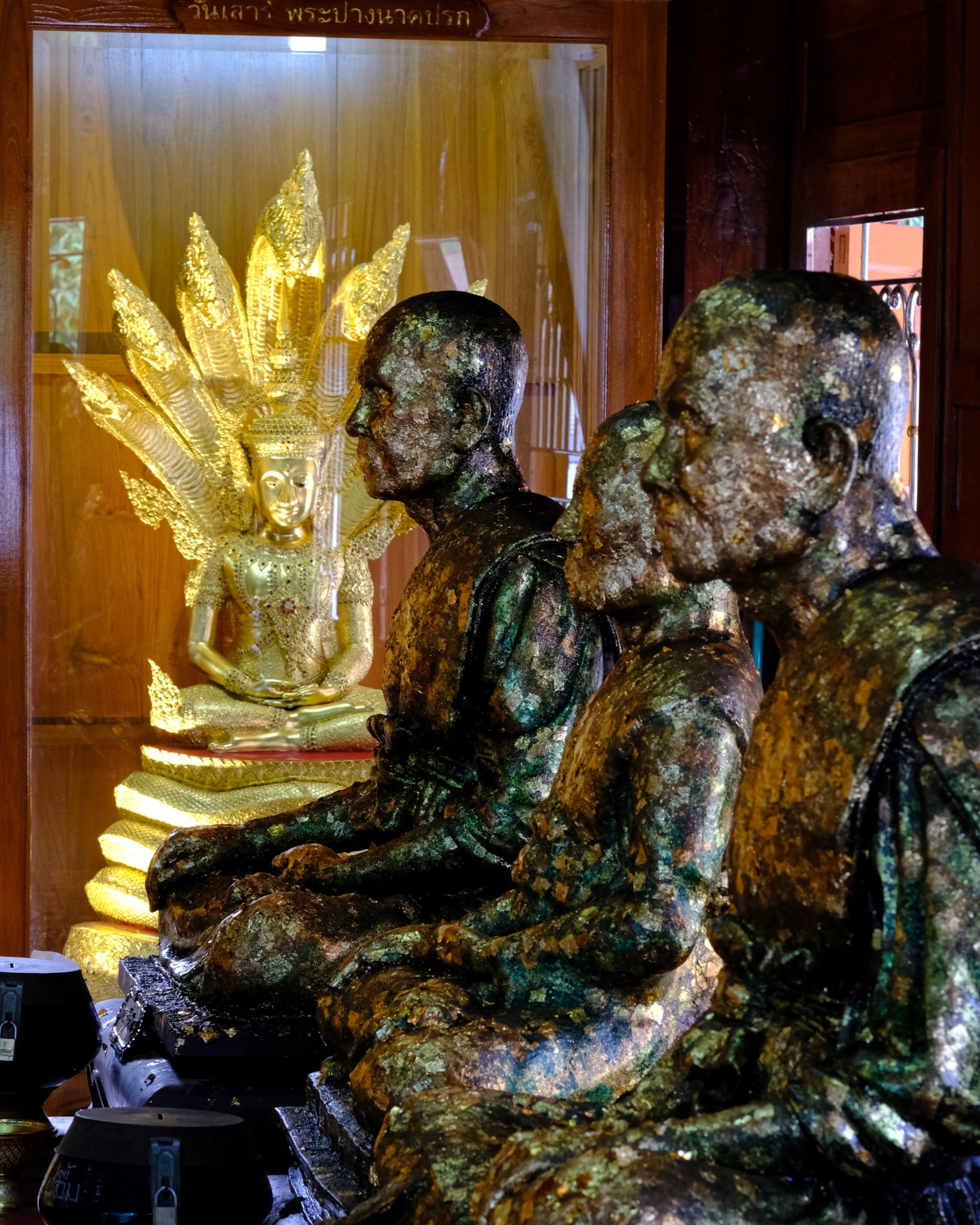 Revered monks in effigy.
Revered monks in effigy.
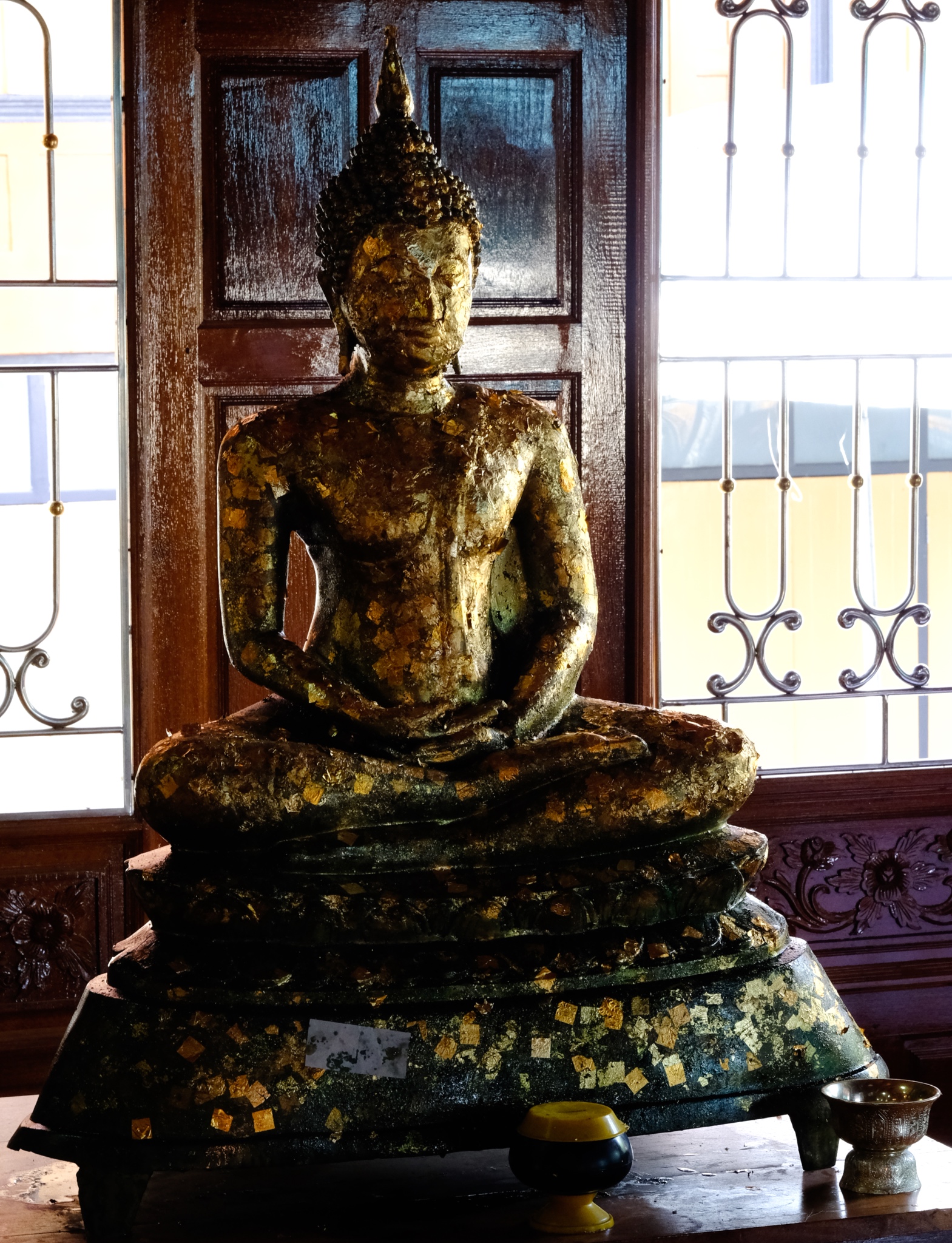 Many fine, ancient Buddha images were housed in the museum.
Many fine, ancient Buddha images were housed in the museum.
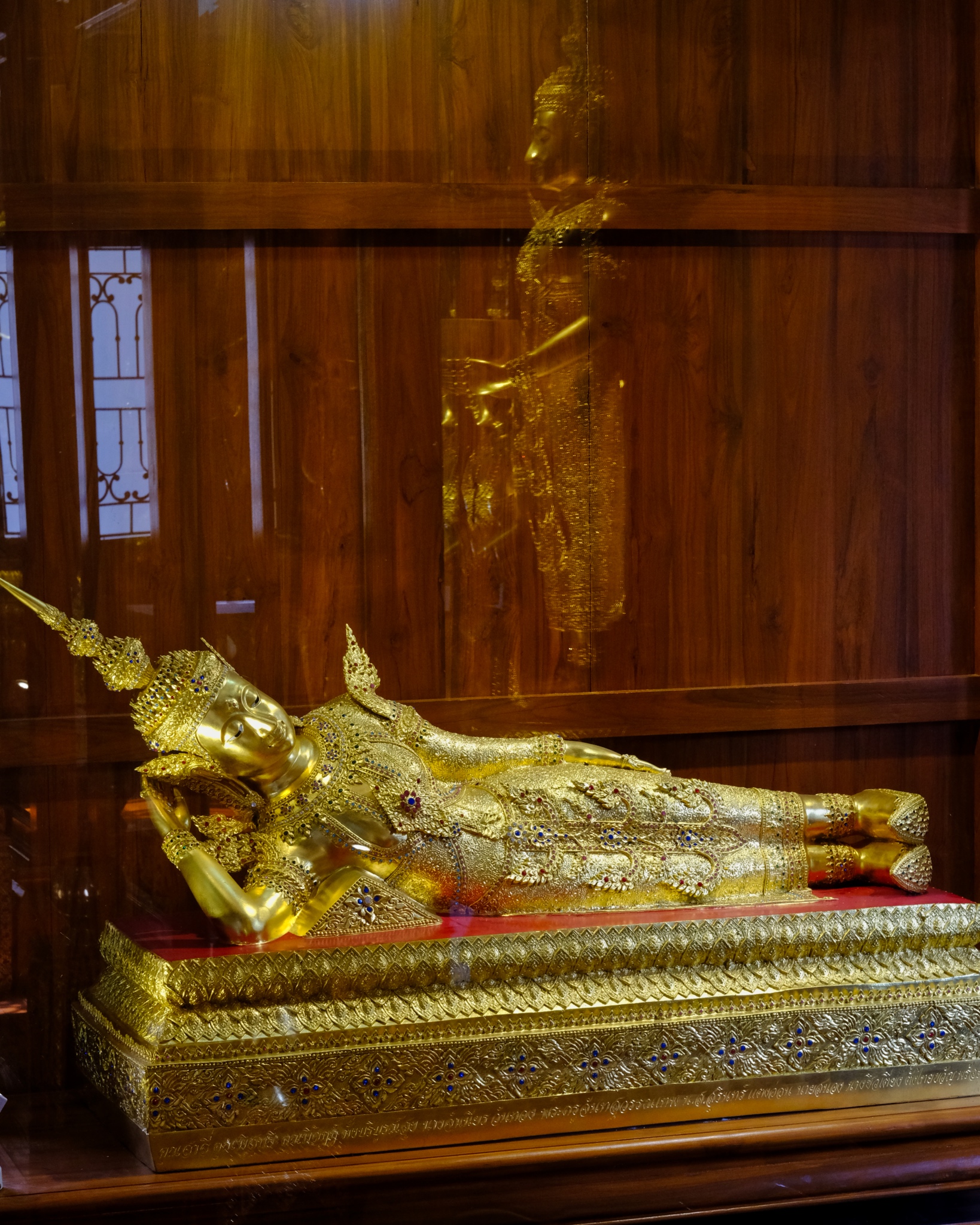 Ghostly reflections on the display cases enhanced our fantastic experience.
Ghostly reflections on the display cases enhanced our fantastic experience.
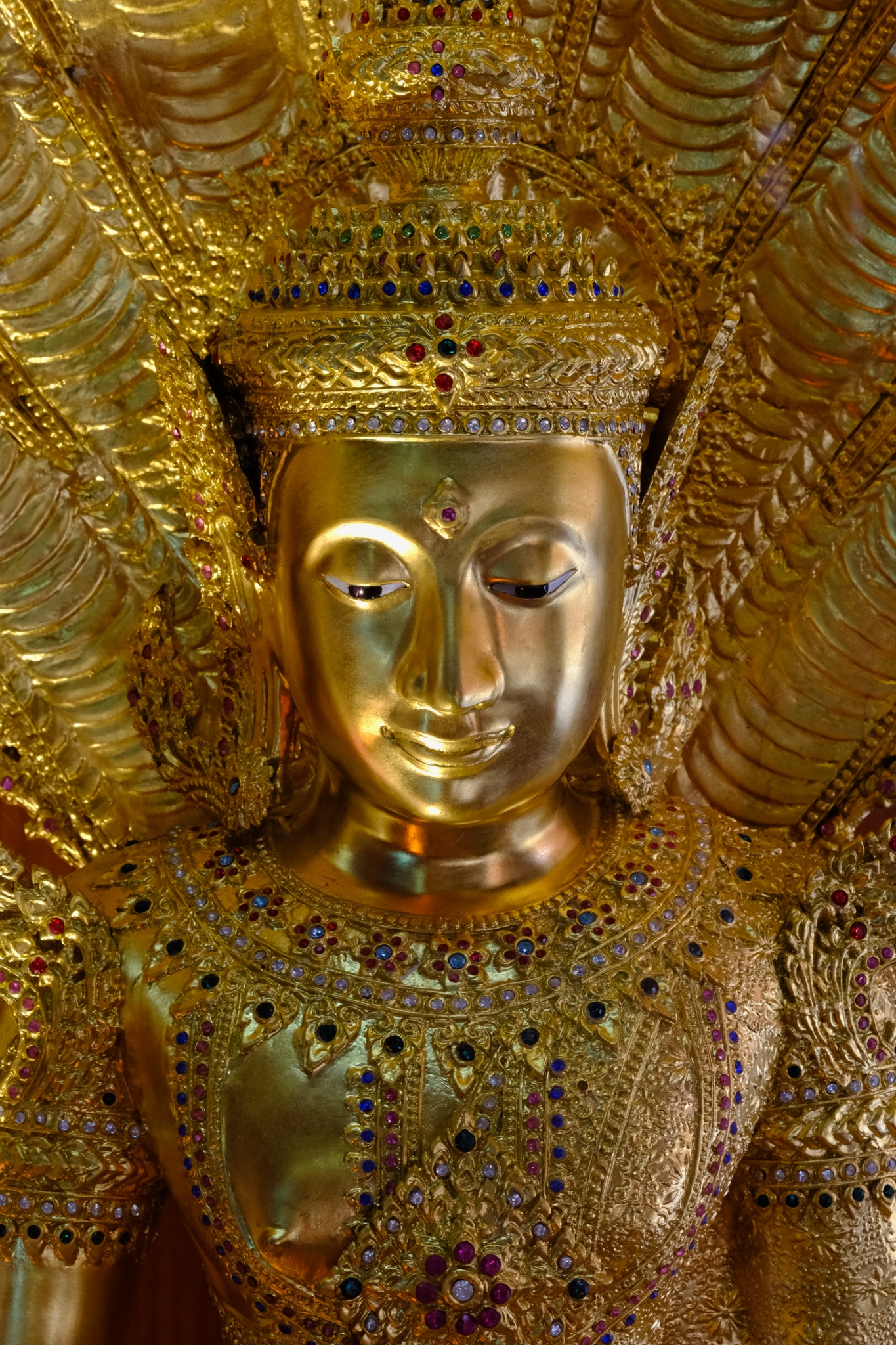 Remarkable artistry in gold.
Remarkable artistry in gold.
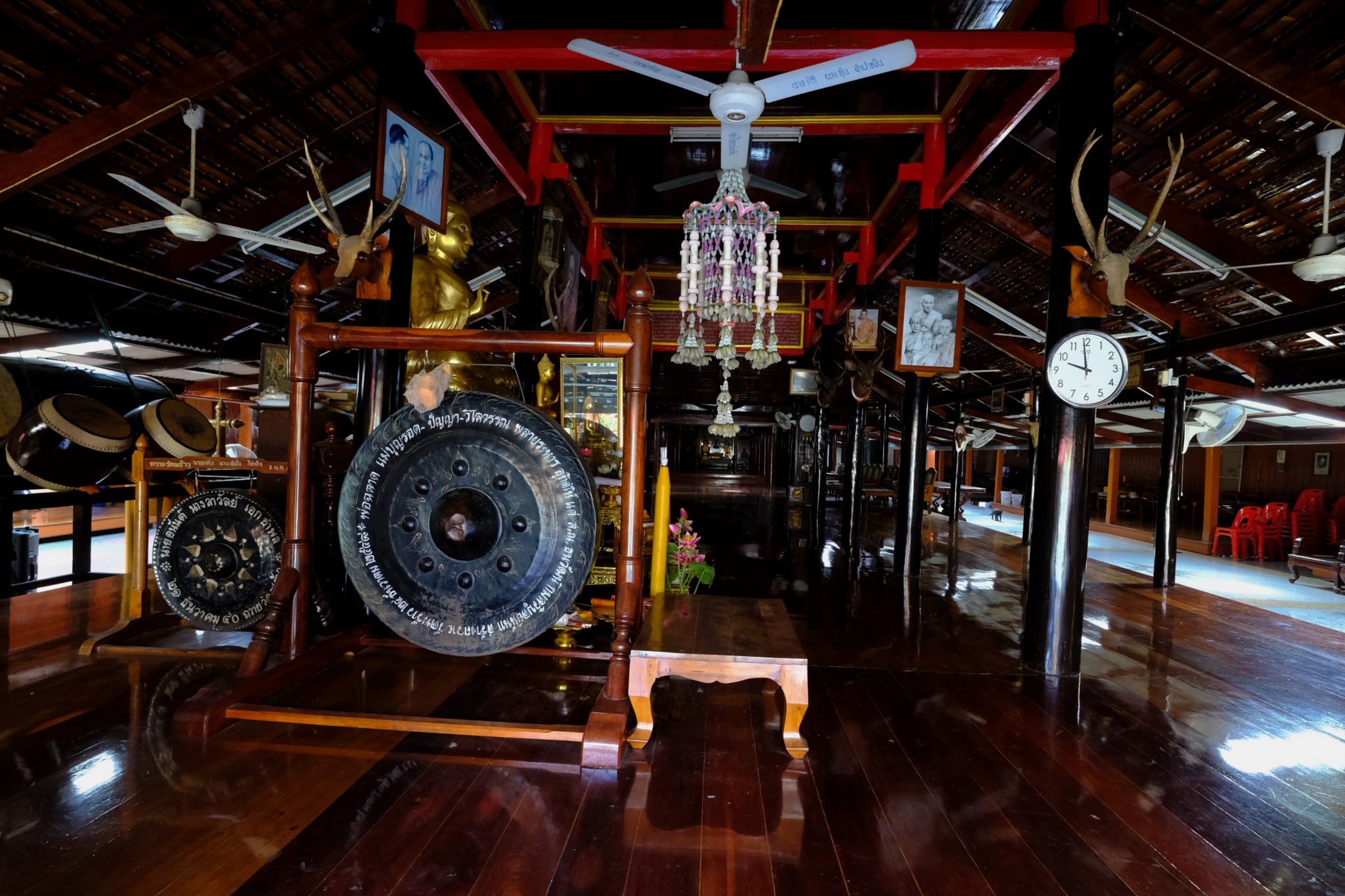 We walked out of the museum and into a nondescript wooden structure next door . . . and another world revealed itself to us!!!
We walked out of the museum and into a nondescript wooden structure next door . . . and another world revealed itself to us!!!
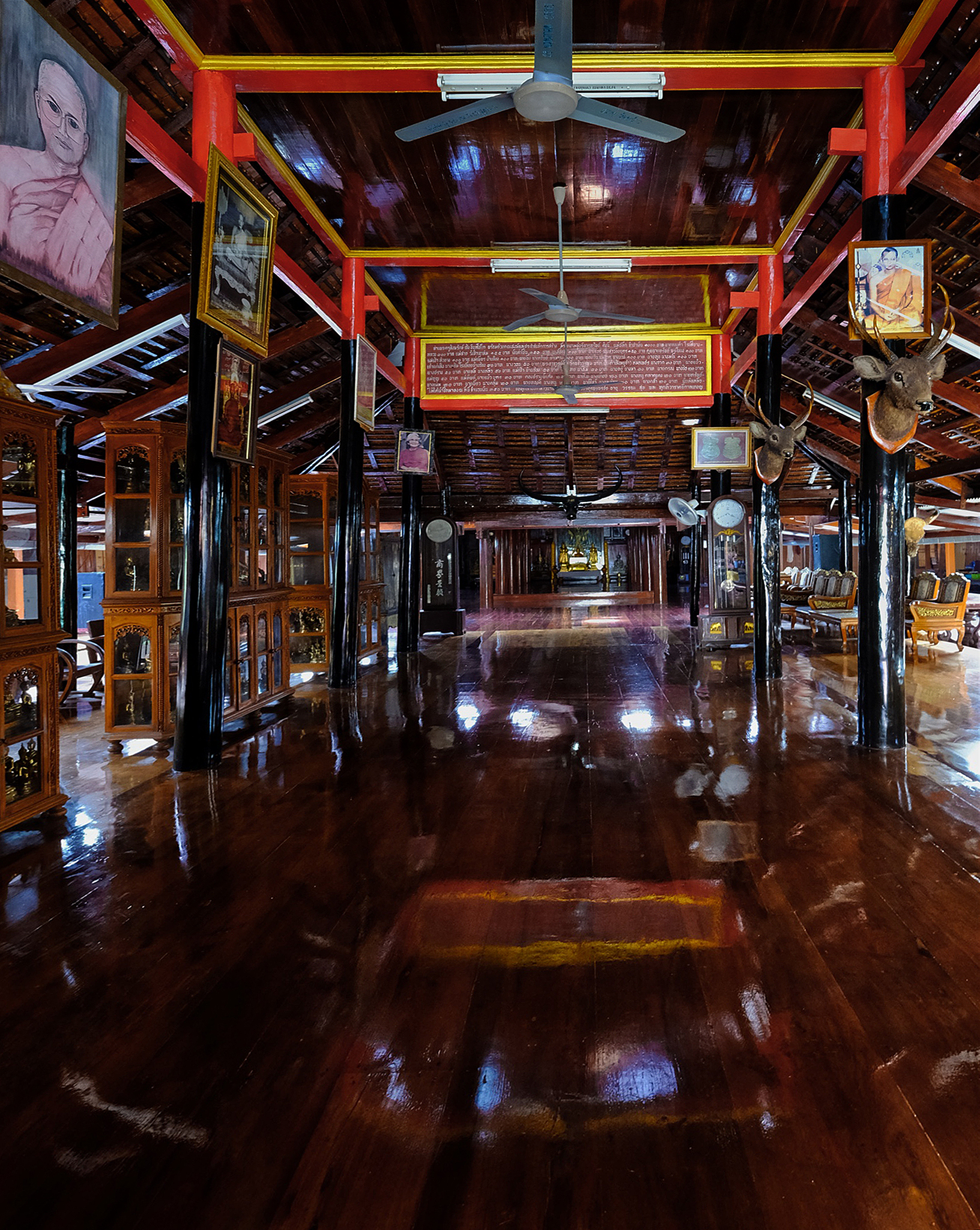 We entered at the invitation of an old monk . . . and went deeper and deeper into this artistically remarkable spiritual space.
We entered at the invitation of an old monk . . . and went deeper and deeper into this artistically remarkable spiritual space.
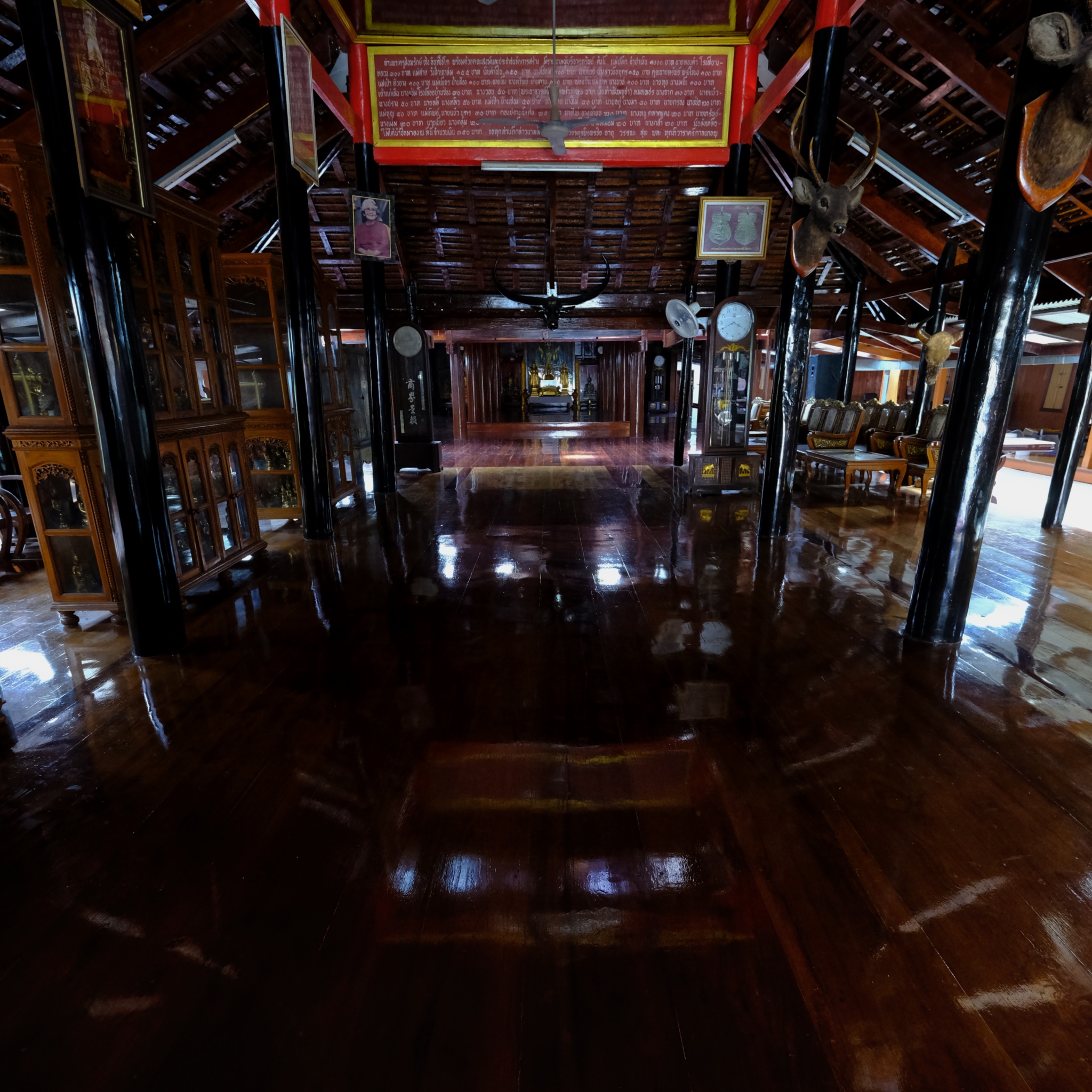 Further and further into the old wooden temple . . .
Further and further into the old wooden temple . . .
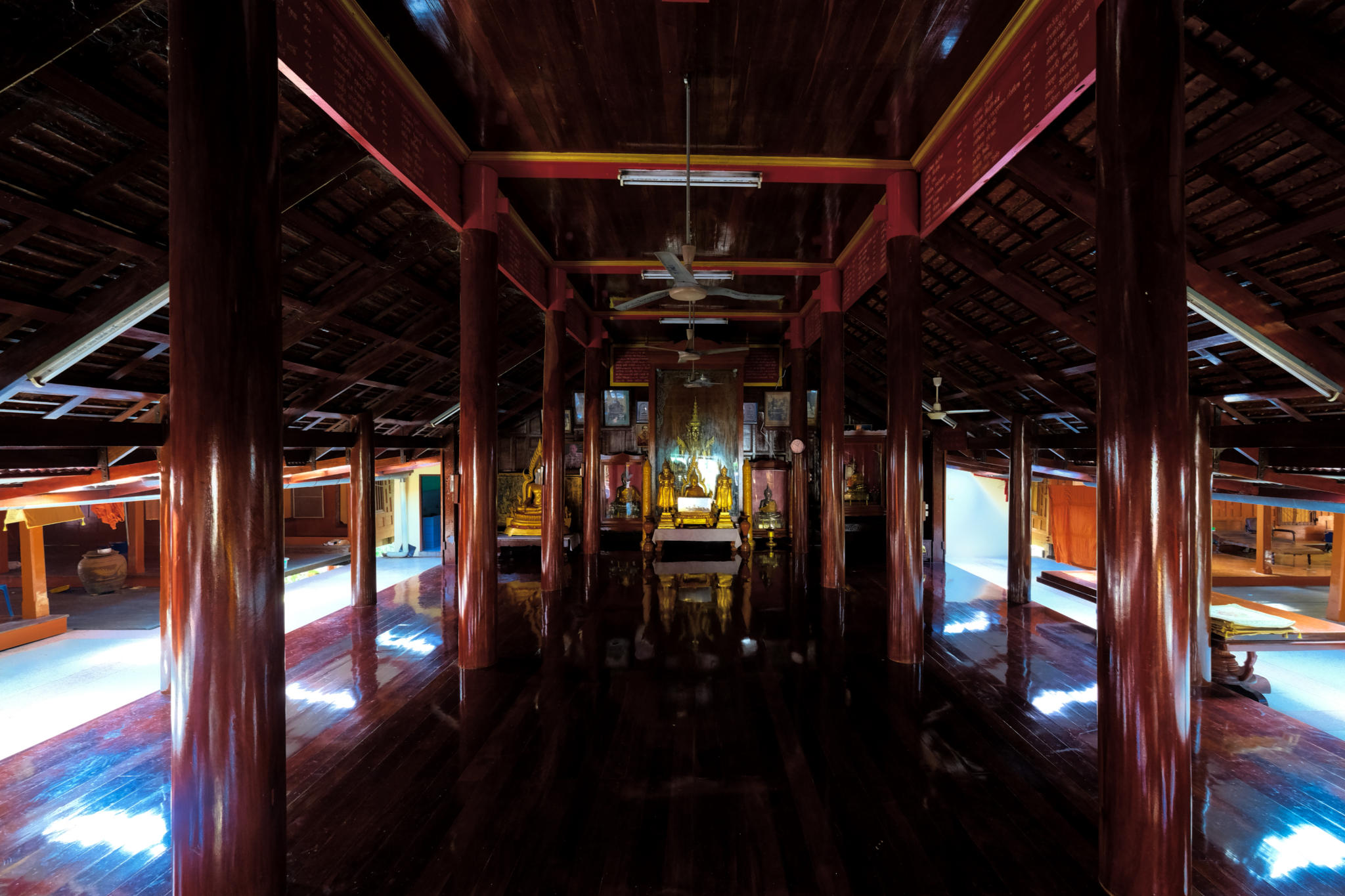 The open-sided temple seemed recently restored.
The open-sided temple seemed recently restored.
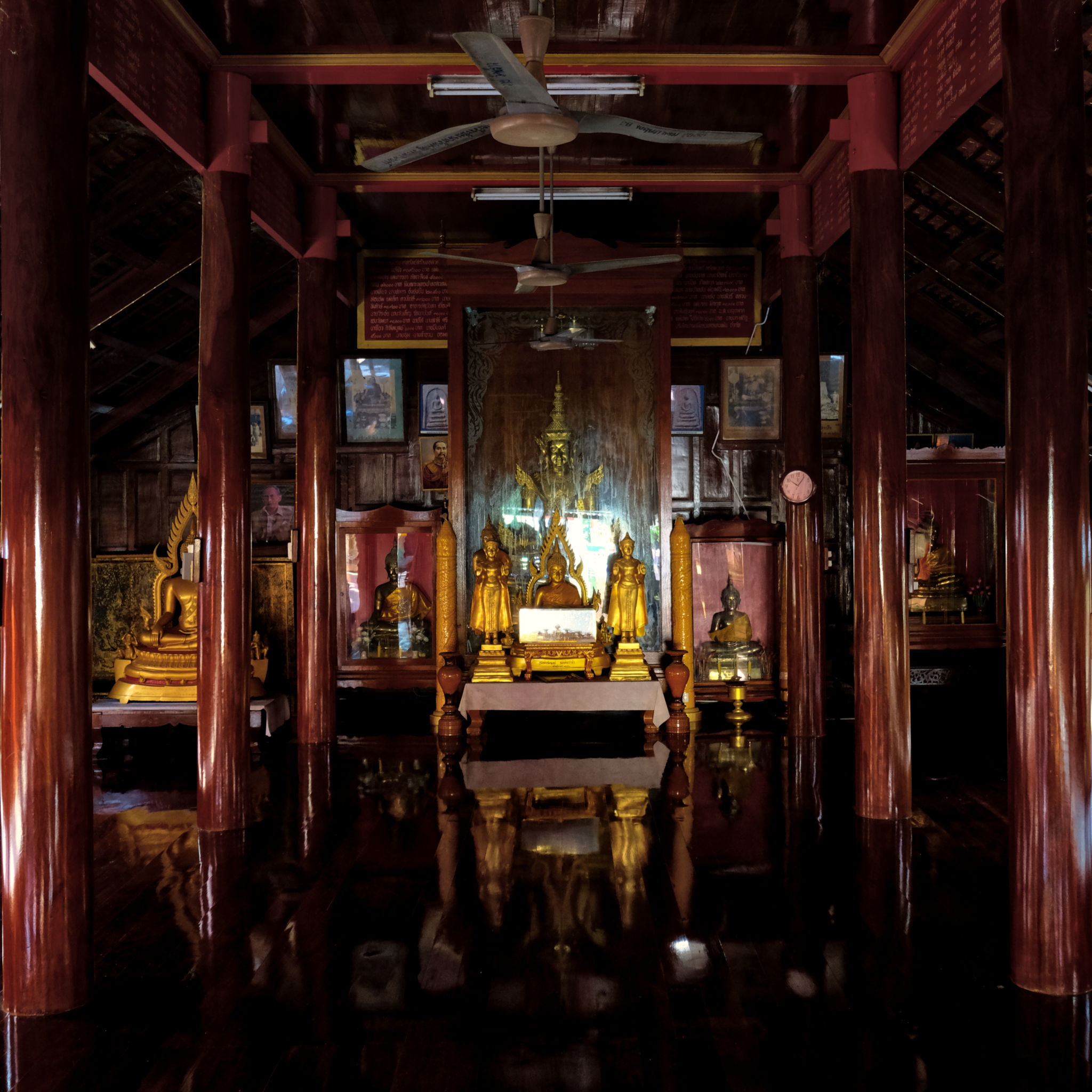 Further and further into the temple until we came to the central altar.
Further and further into the temple until we came to the central altar.
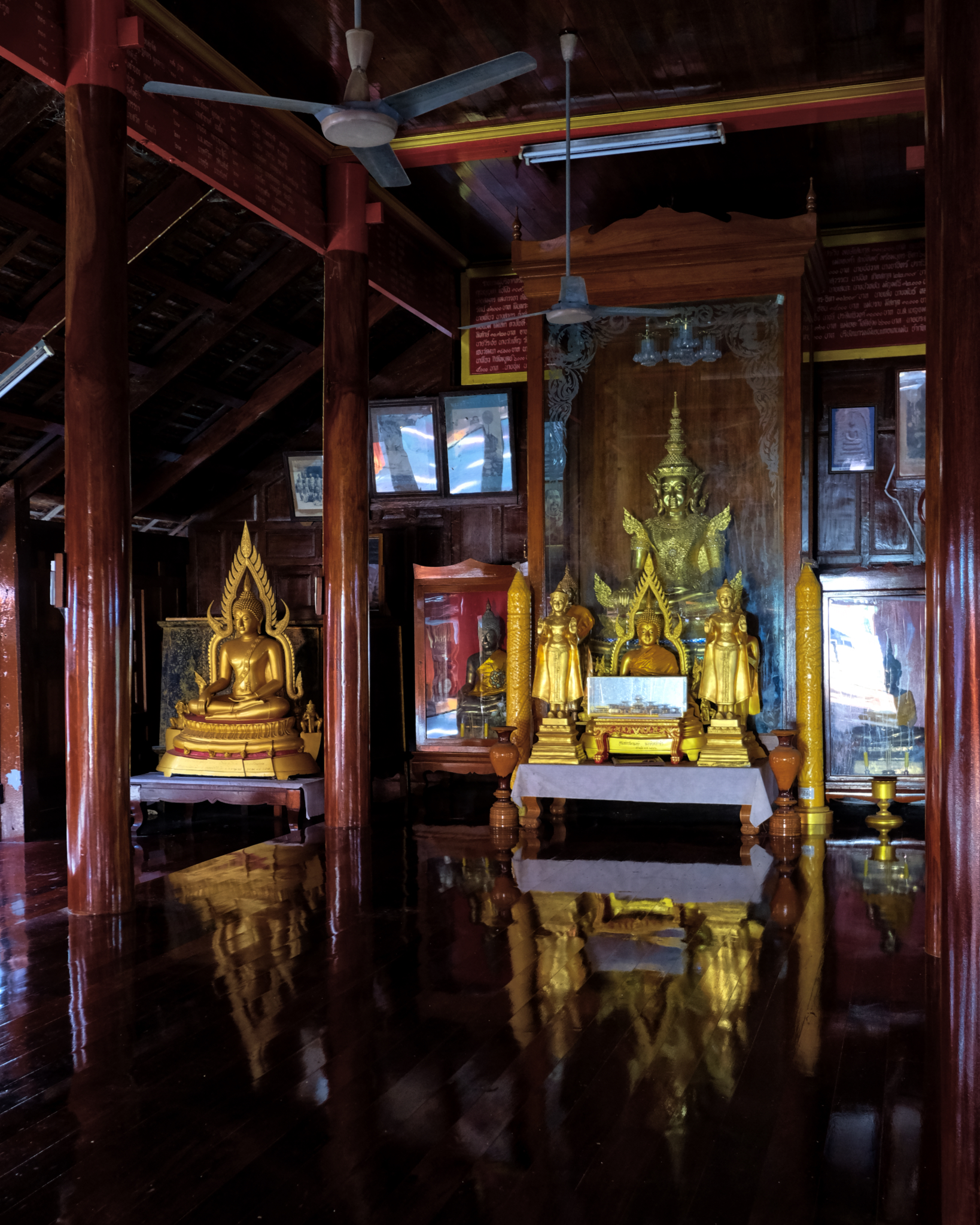 Sacred altar to The Buddha.
Sacred altar to The Buddha.
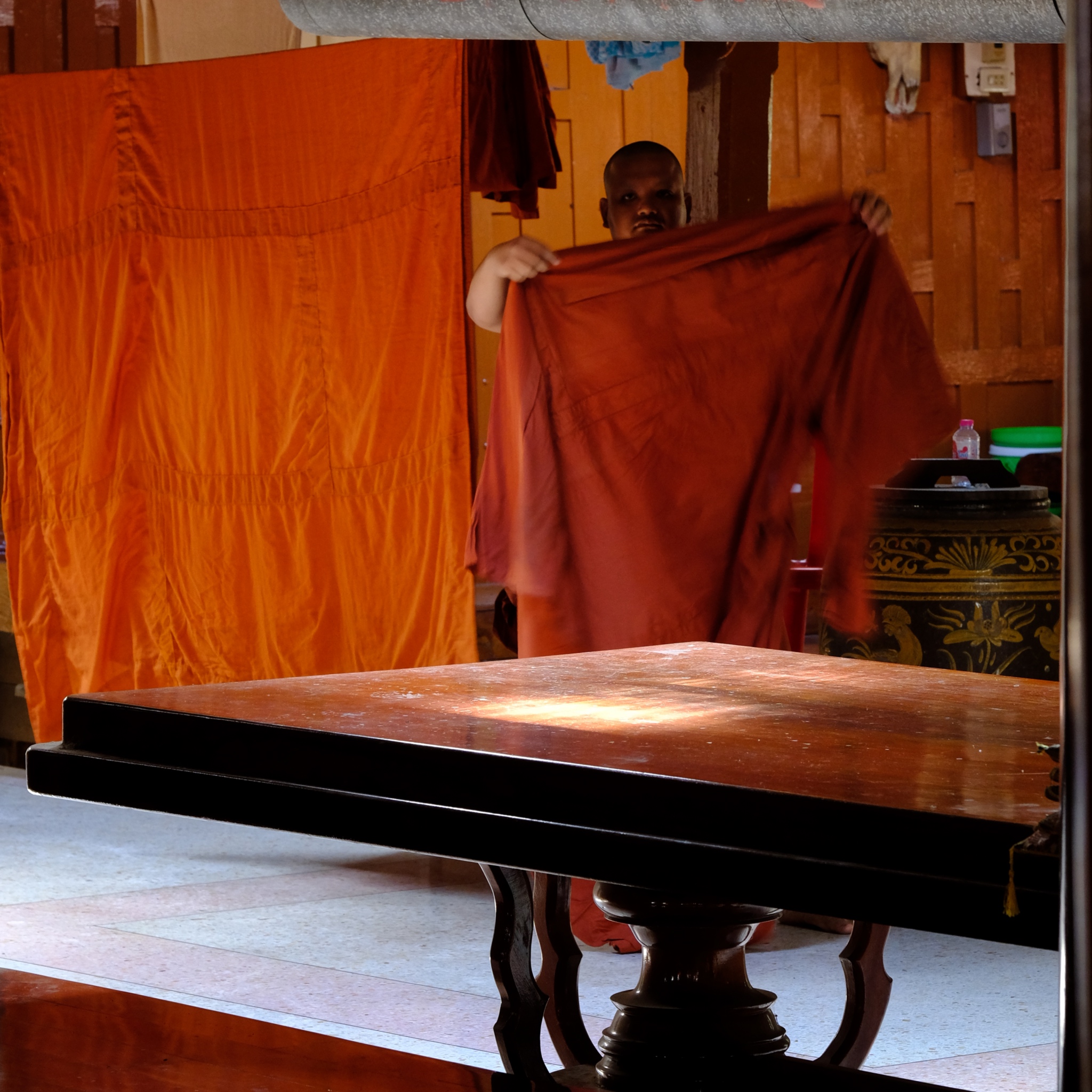 As this is a living temple, the monks live in cells around the central temple and use it as a kind of day room for their chores.
As this is a living temple, the monks live in cells around the central temple and use it as a kind of day room for their chores.
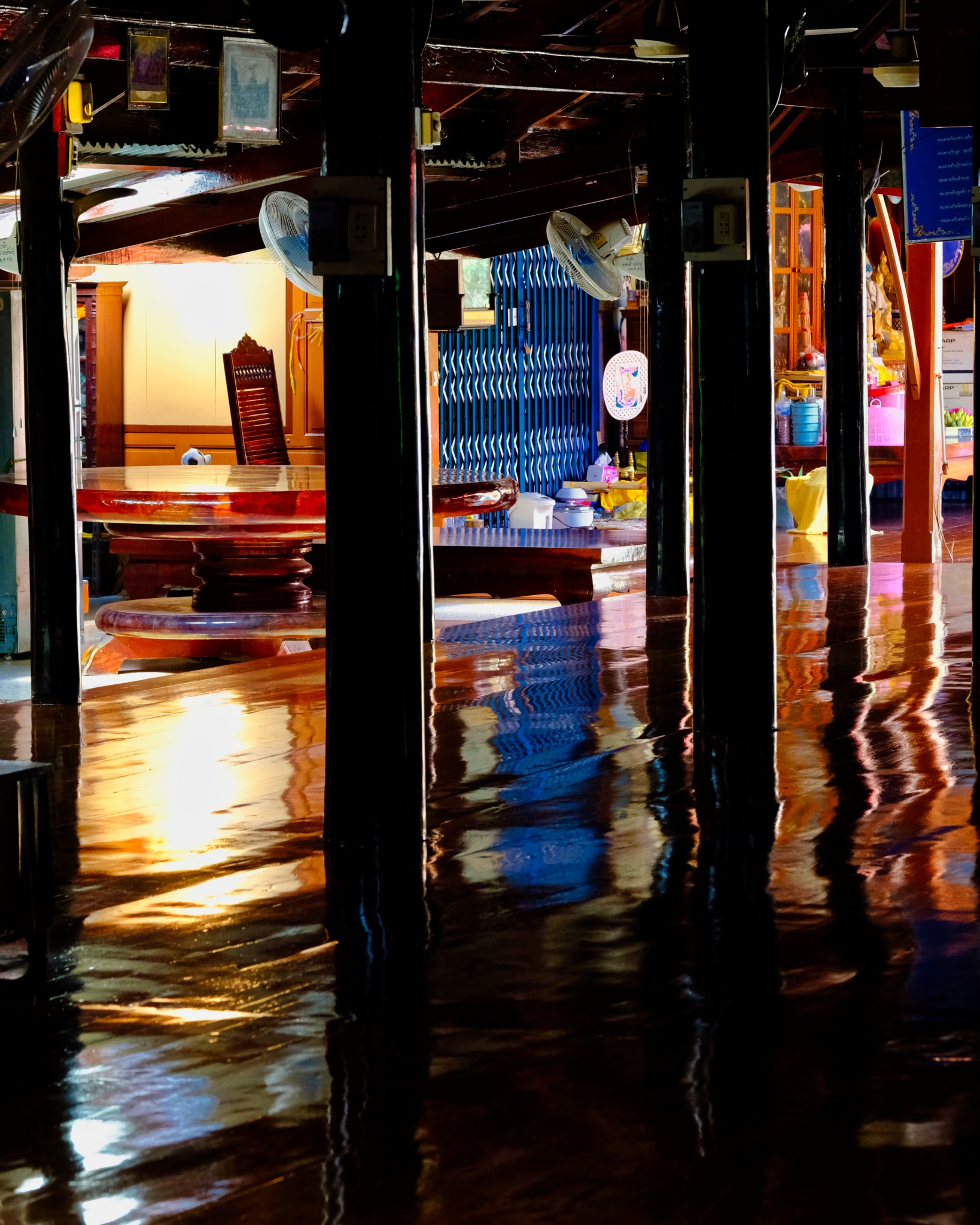 All the mundane items of daily living stacked in a corner of this remarkably beautiful place.
All the mundane items of daily living stacked in a corner of this remarkably beautiful place.
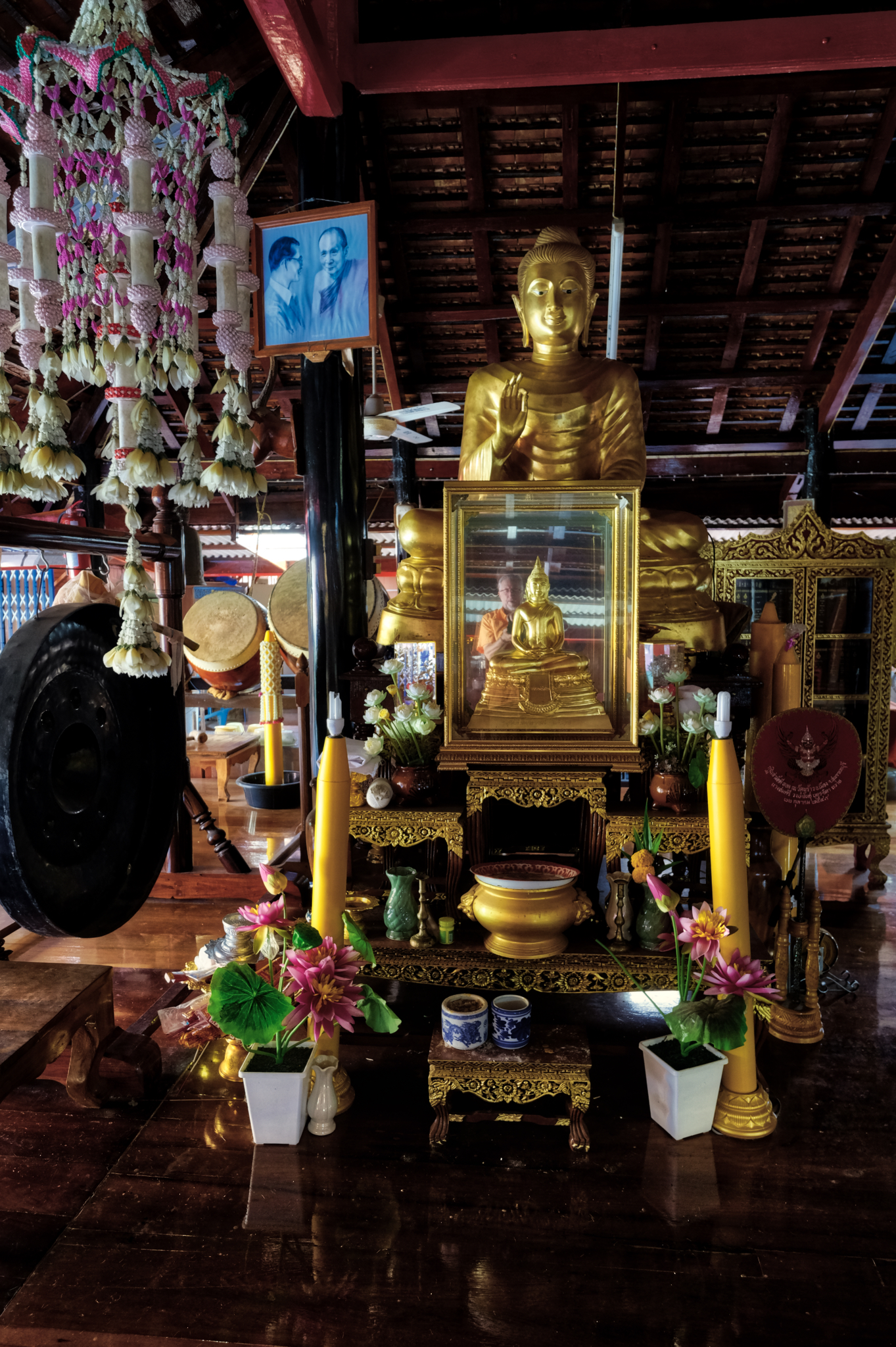 There were many other other altars in the freshly varnished temple. This one included a 'self portrait' of your intrepid photographer.
There were many other other altars in the freshly varnished temple. This one included a 'self portrait' of your intrepid photographer.
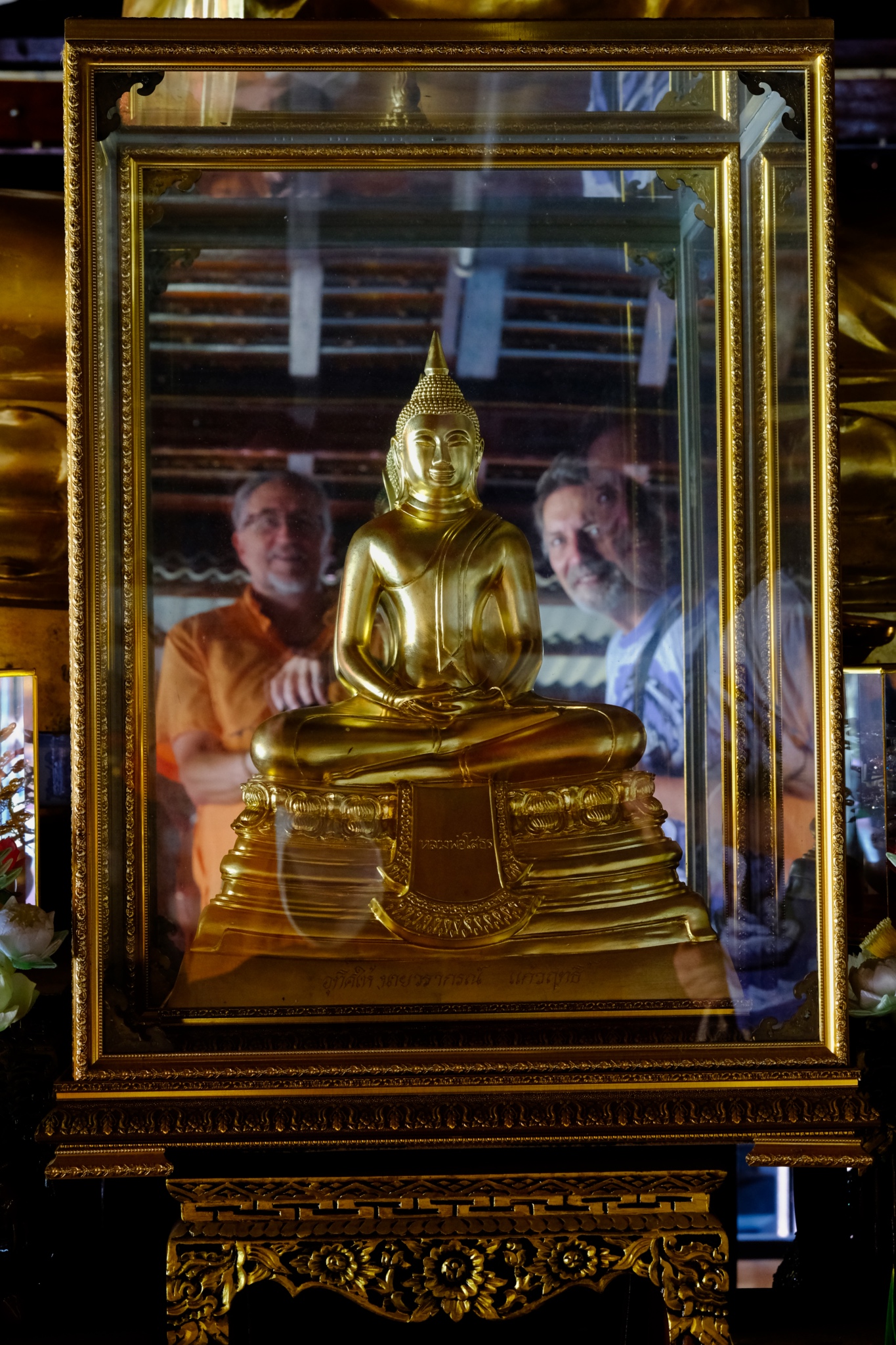 I am keeping good company . . . John and The Buddha.
I am keeping good company . . . John and The Buddha.
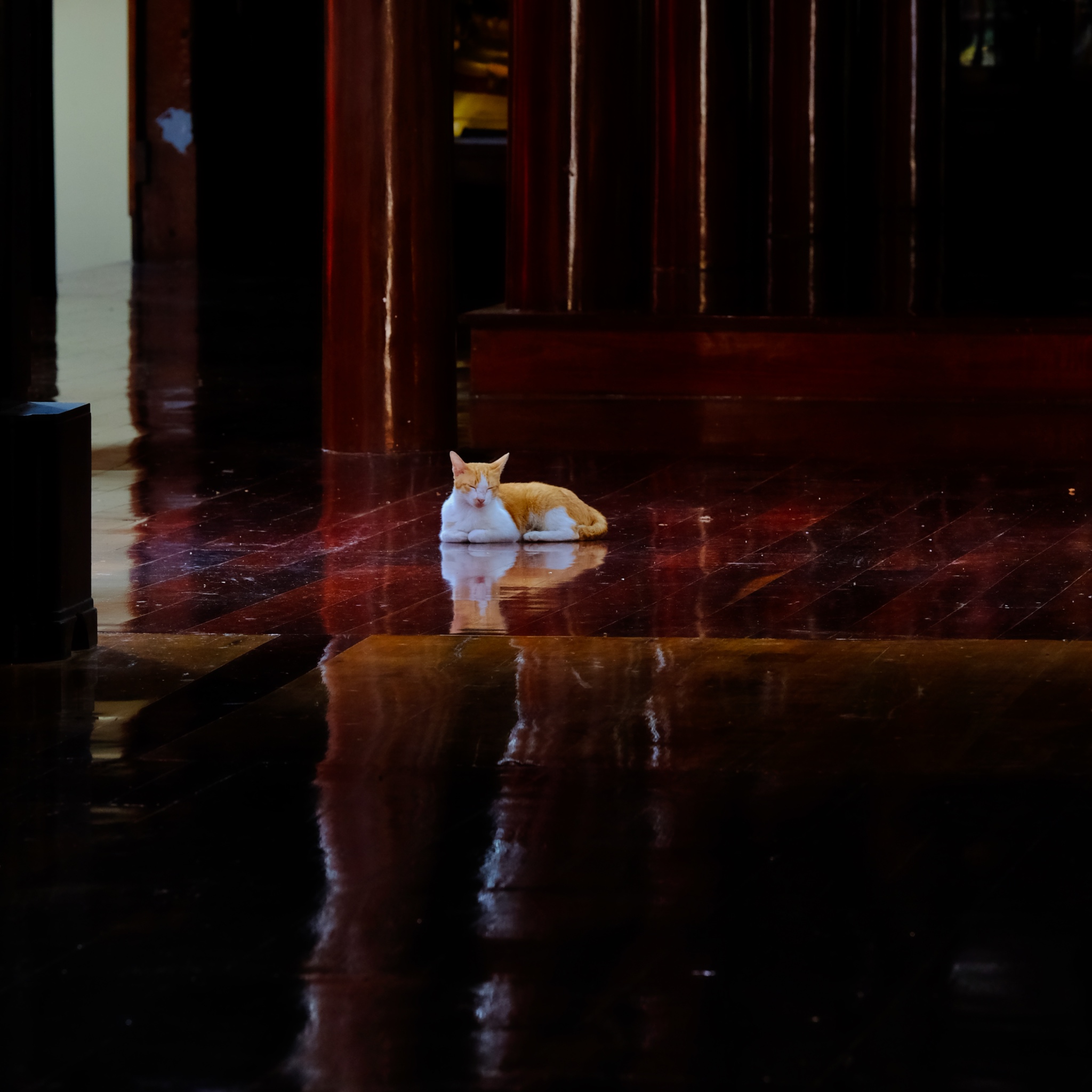 There were freeloader cats looking content in the temple.
There were freeloader cats looking content in the temple.
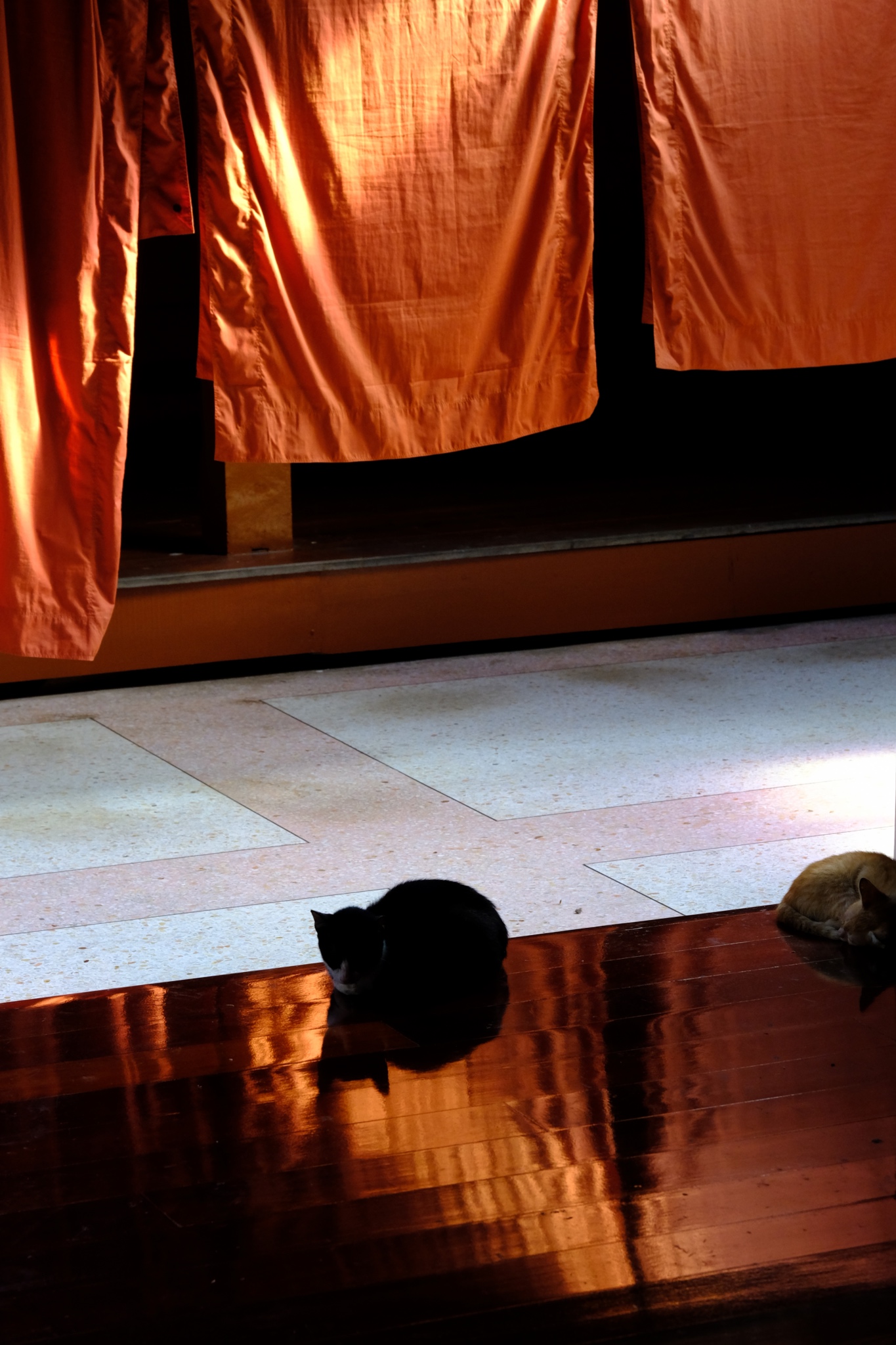 The cats distributed themselves around the temple in the most aesthetic way possible.
The cats distributed themselves around the temple in the most aesthetic way possible.
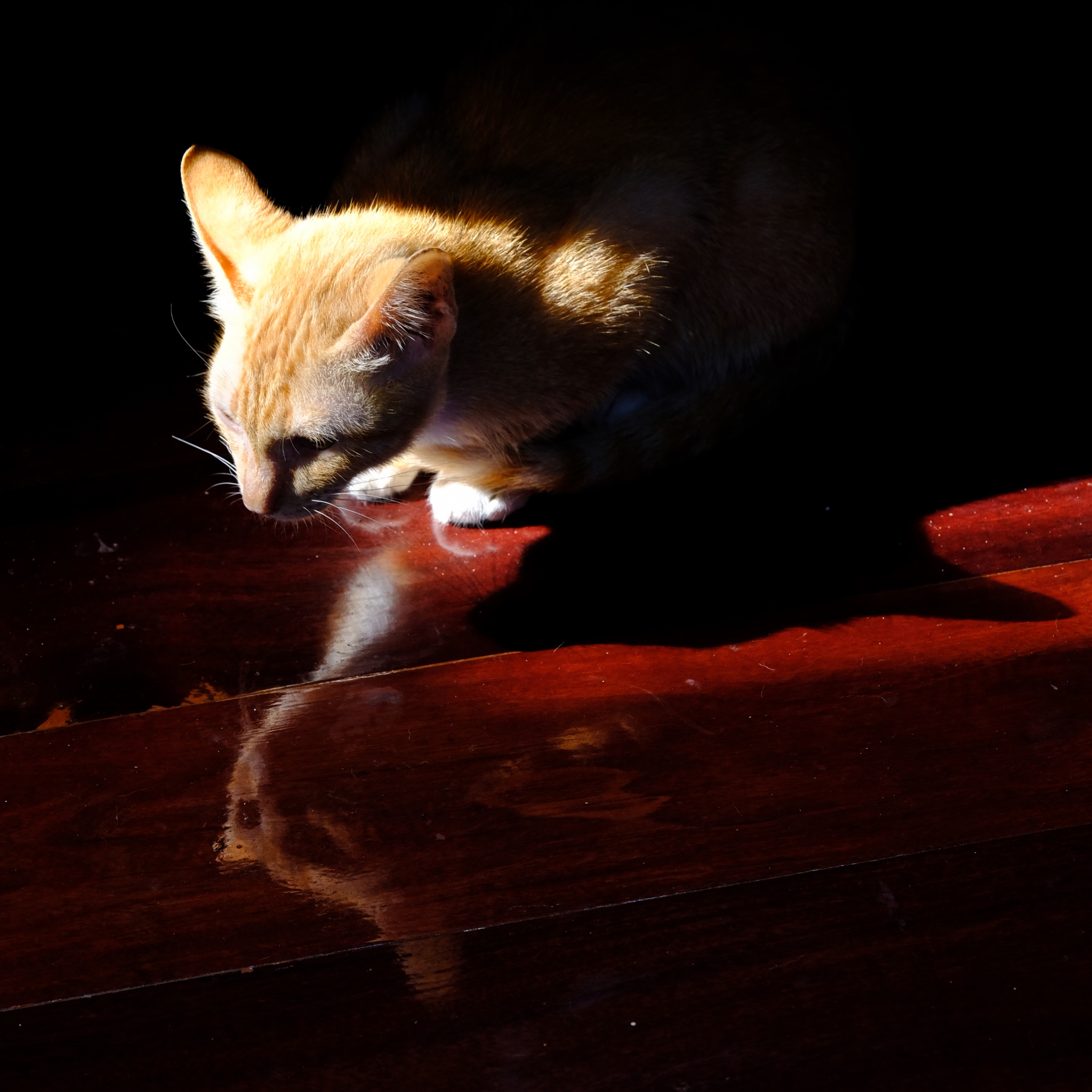 A temple cat in full meditative repose.
A temple cat in full meditative repose.
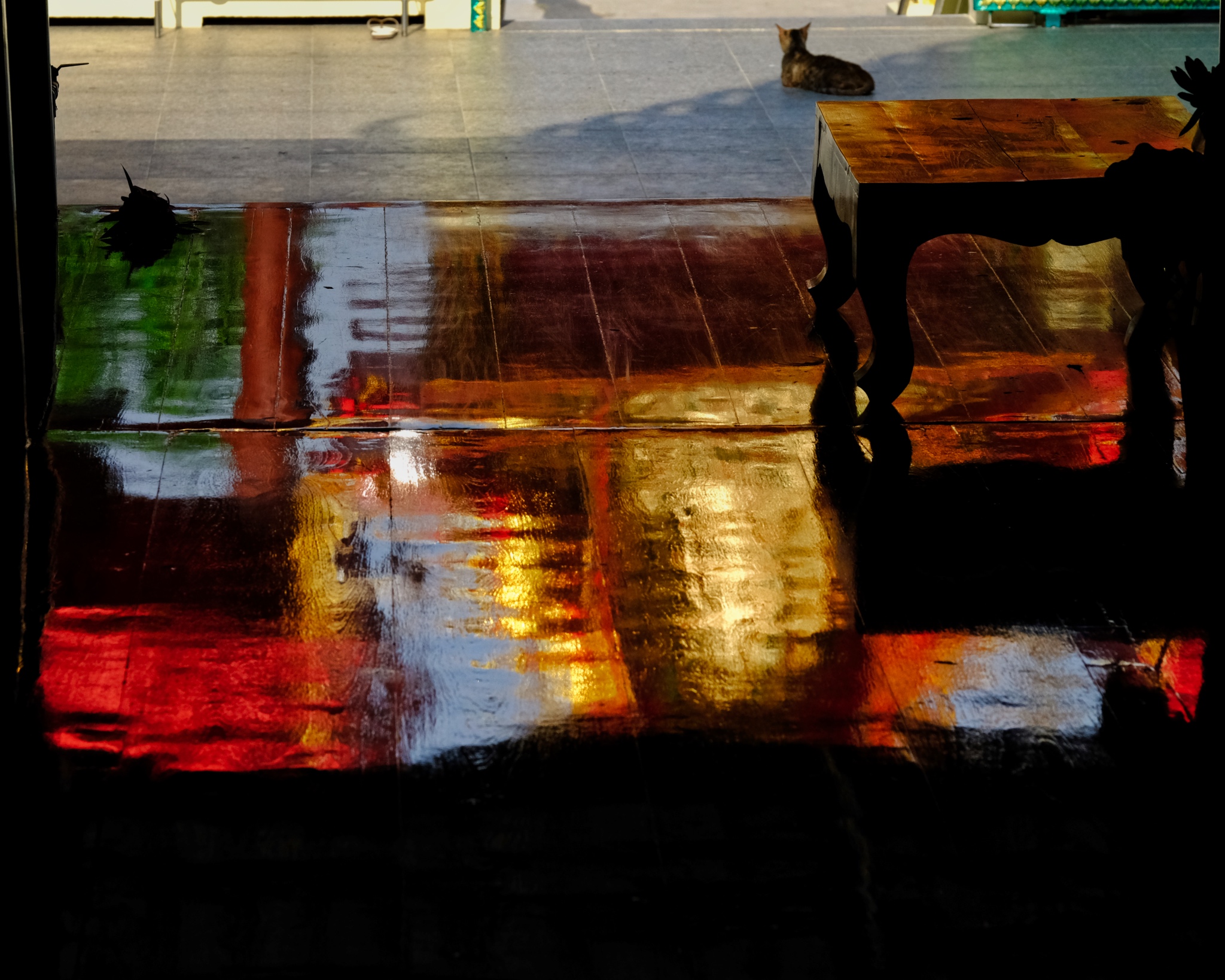 Wonderful reflection of the surrounding temple structures on the polished varnish floor (with cat).
Wonderful reflection of the surrounding temple structures on the polished varnish floor (with cat).
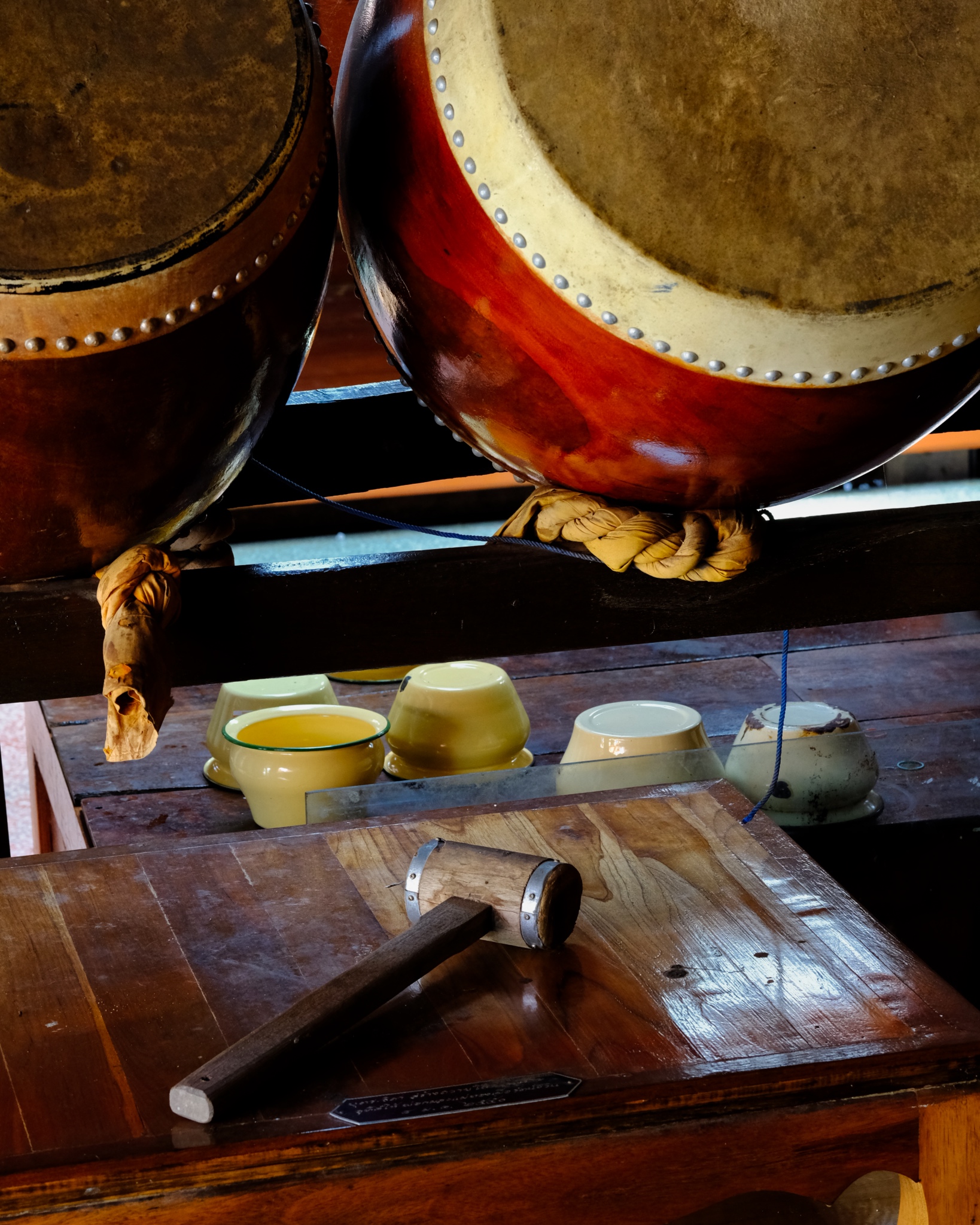 I was tempted . . . but relented . . . because of the peacefulness there.
I was tempted . . . but relented . . . because of the peacefulness there.
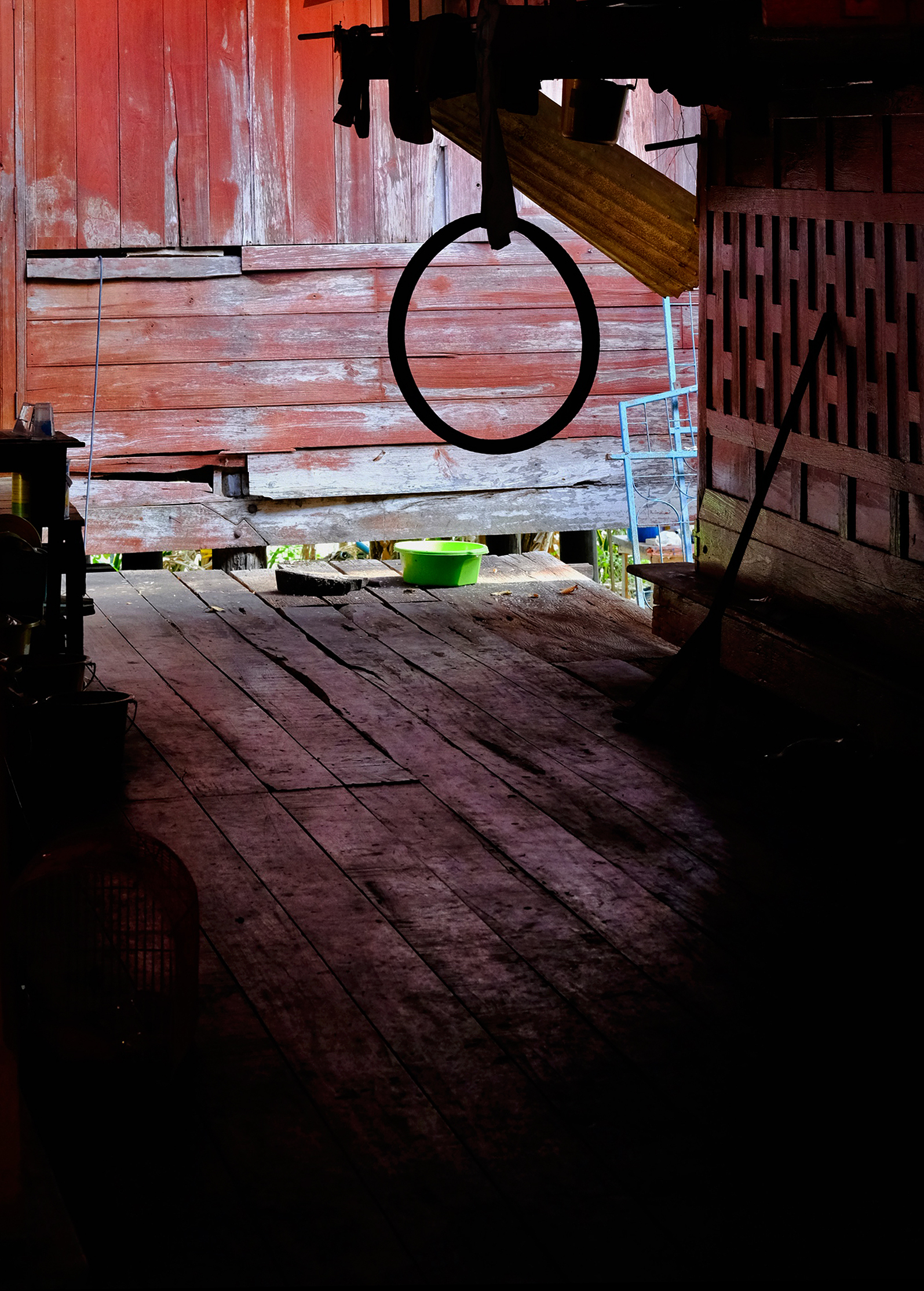 I could have spent all day in that wooden temple (or all the rest of my life!) . . . but we left our homes that morning to ramble, and ramble we would.
I could have spent all day in that wooden temple (or all the rest of my life!) . . . but we left our homes that morning to ramble, and ramble we would.
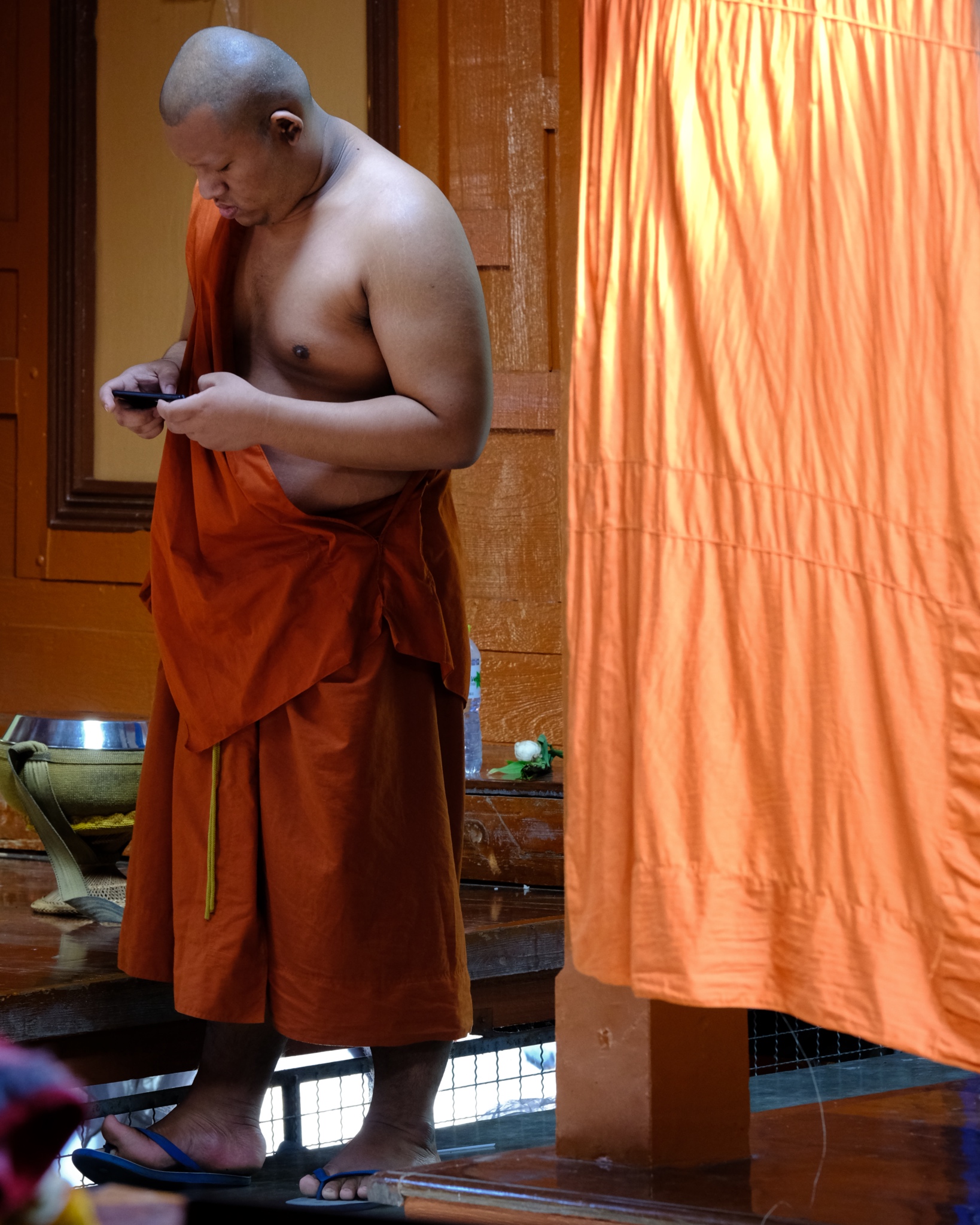 I am not sure what to say about this. I am sure this 'modern' monk is somewhere on his own spiritual path . . . but it seems odd to me. I guess the Buddha did not anticipate modern technology, and the current wat abbots have not discovered effective guidance . . . or it doesn't matter.
I am not sure what to say about this. I am sure this 'modern' monk is somewhere on his own spiritual path . . . but it seems odd to me. I guess the Buddha did not anticipate modern technology, and the current wat abbots have not discovered effective guidance . . . or it doesn't matter.
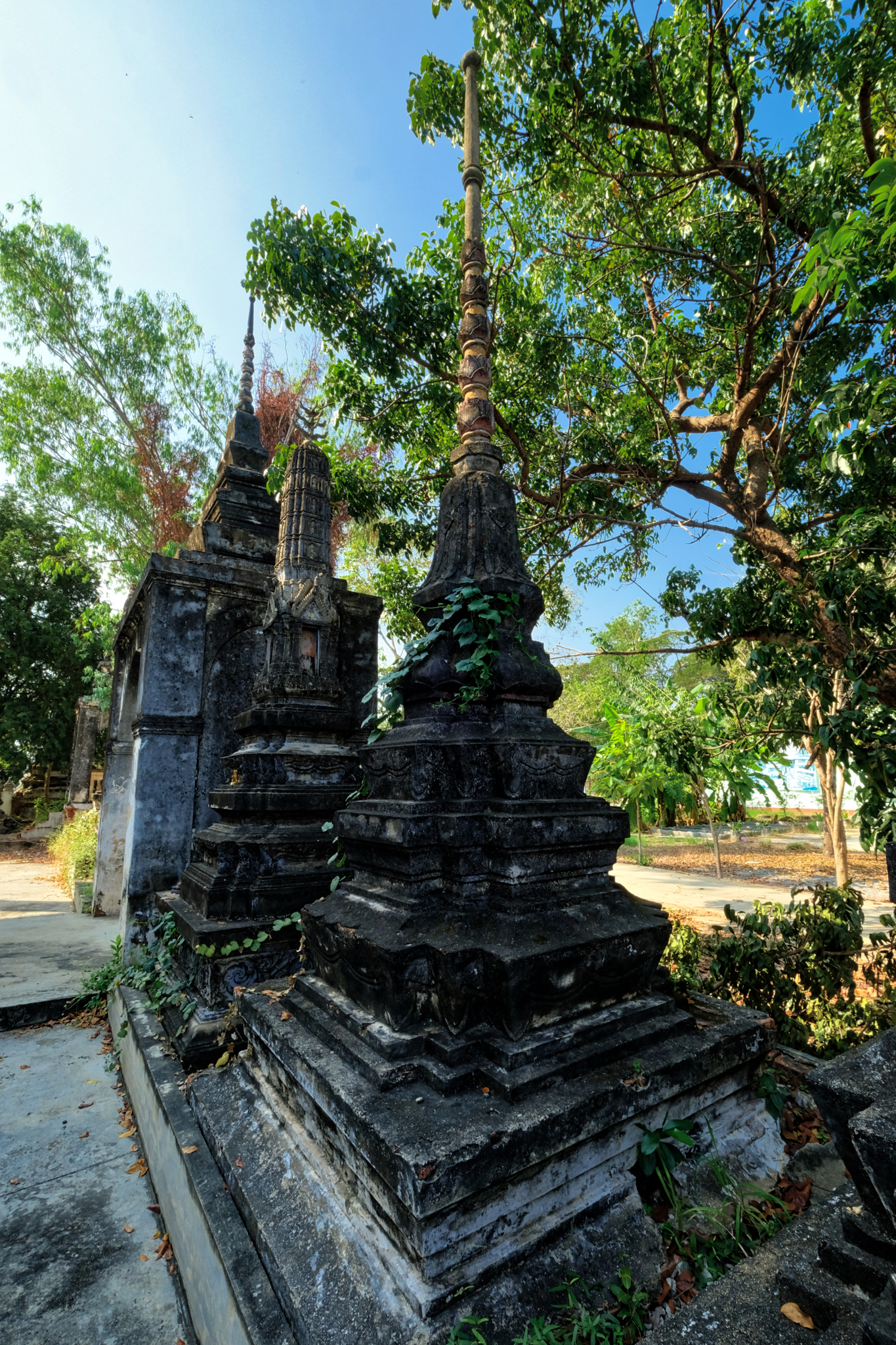 Back outside in the real air . . . a row of chedis moldering away in the sunlight.
Back outside in the real air . . . a row of chedis moldering away in the sunlight.
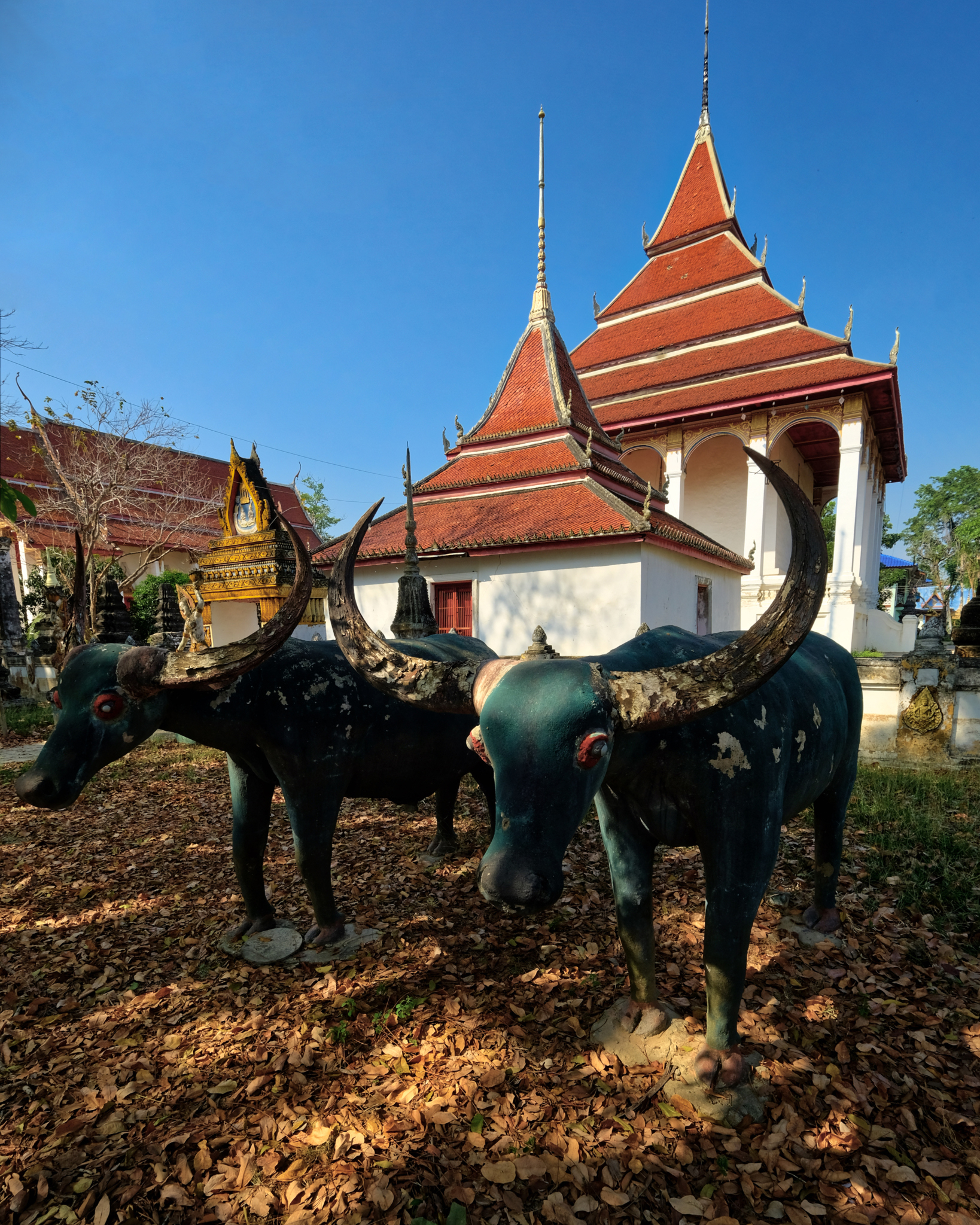 Yes, still inside the same temple grounds. Buffalo revered as a part of the lives of the people who live in the surrounding rural farmland.
Yes, still inside the same temple grounds. Buffalo revered as a part of the lives of the people who live in the surrounding rural farmland.
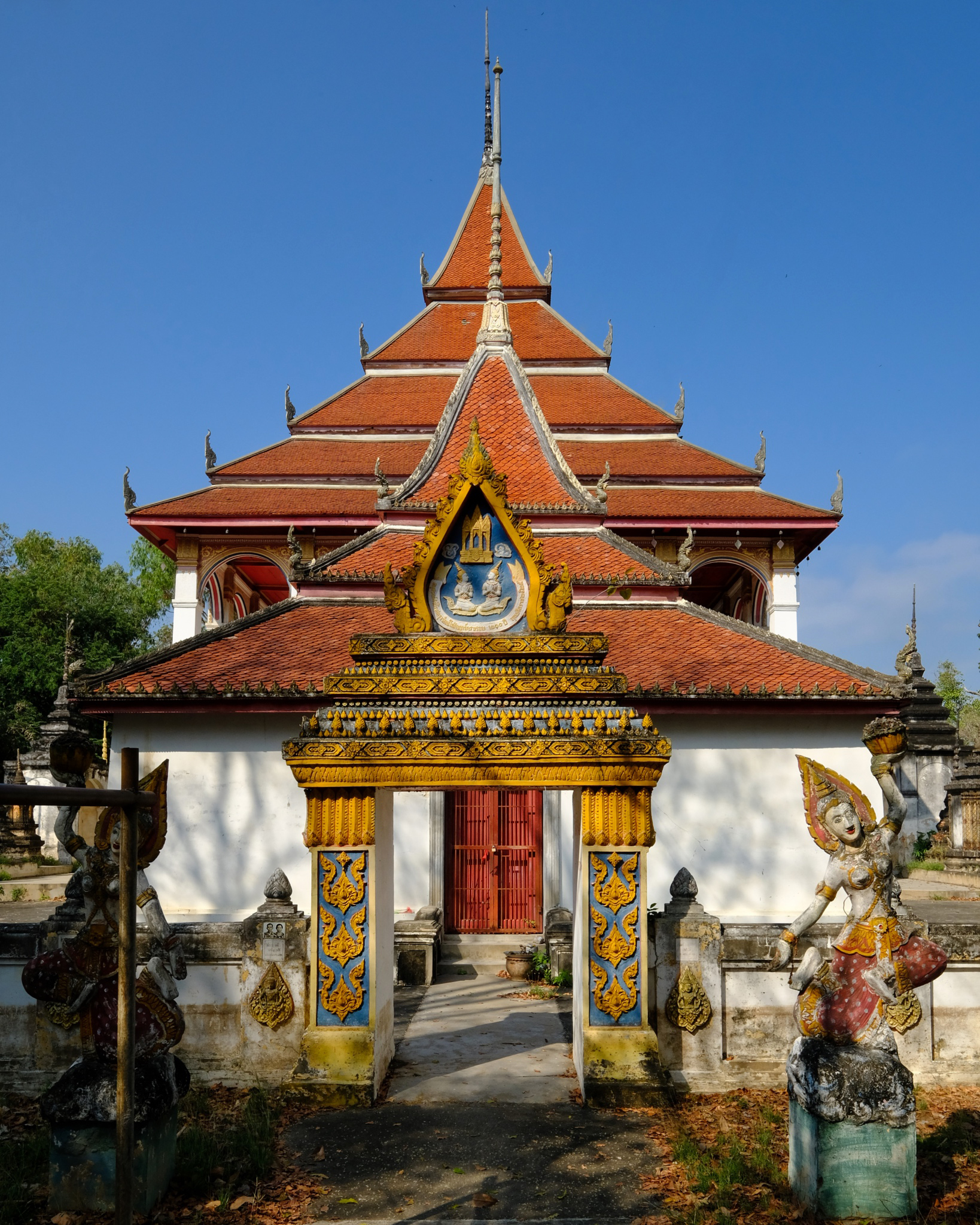 A beautiful Wat gate with welcoming mythological spirits. This building was surrounded by a walled compound filled with old chedis holding the ashes, one would assume, of former monks and abbots.
A beautiful Wat gate with welcoming mythological spirits. This building was surrounded by a walled compound filled with old chedis holding the ashes, one would assume, of former monks and abbots.
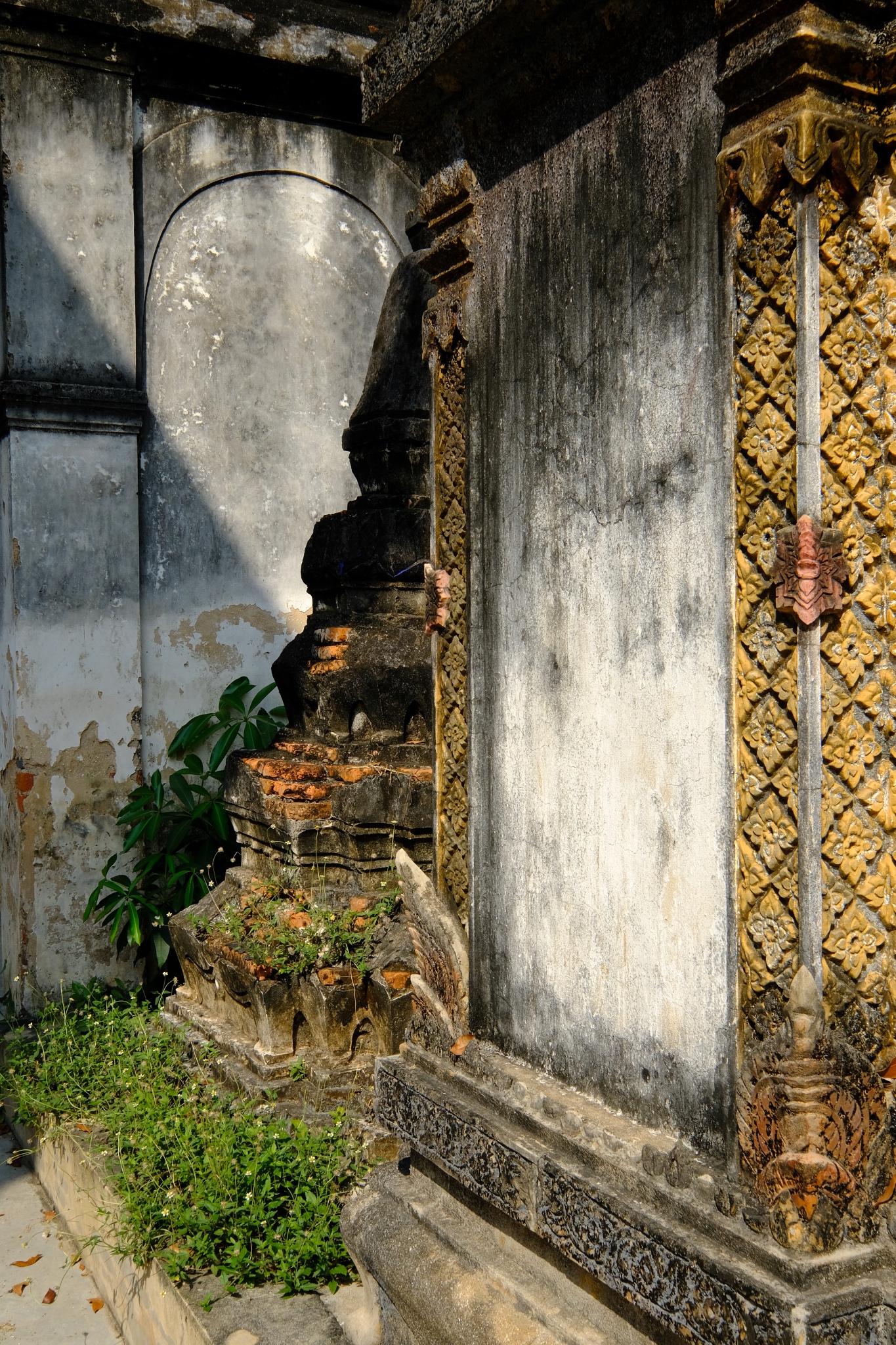 The surrounding chedis.
The surrounding chedis.
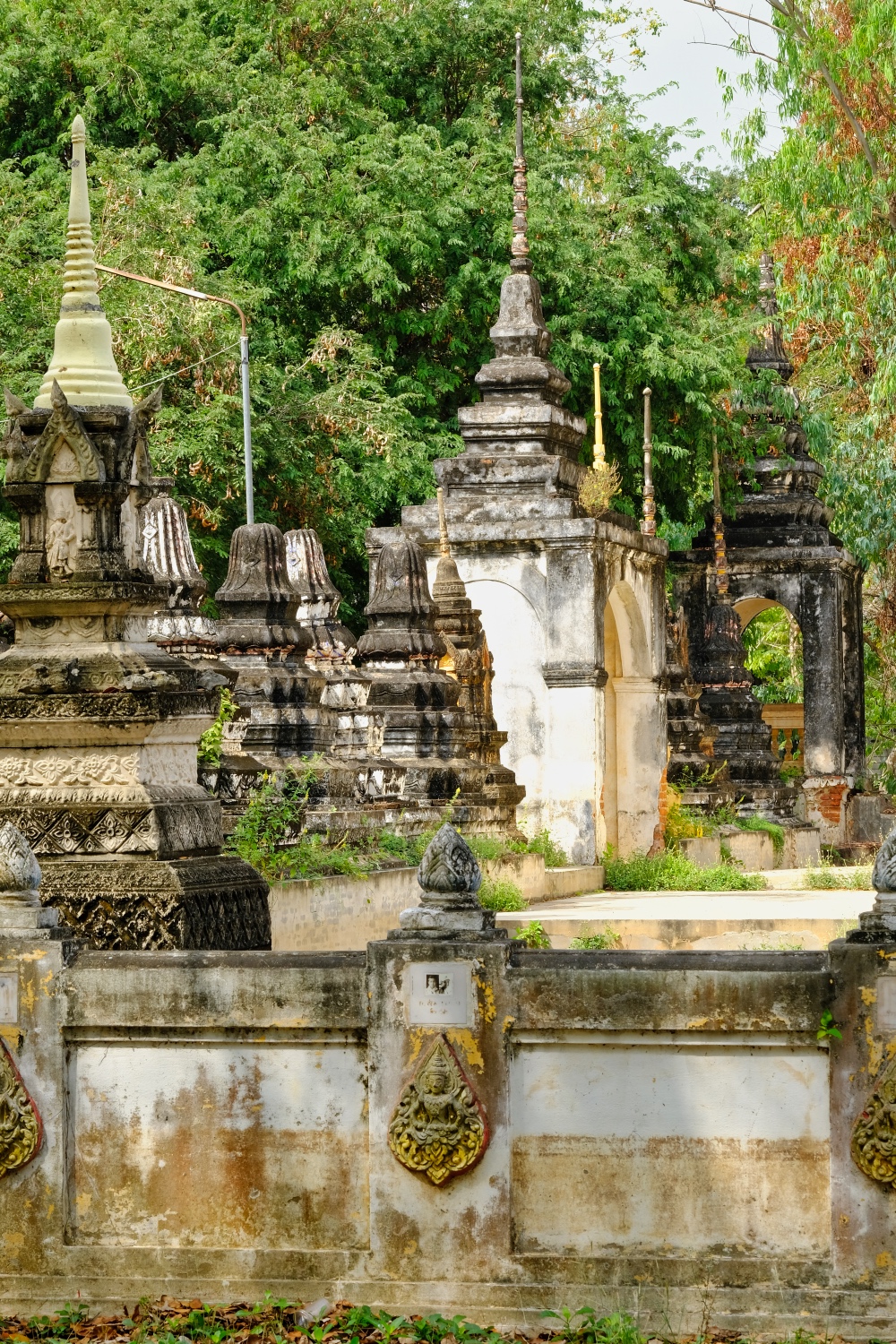 The old chedis stand in a vigil around the temple . . .
The old chedis stand in a vigil around the temple . . .
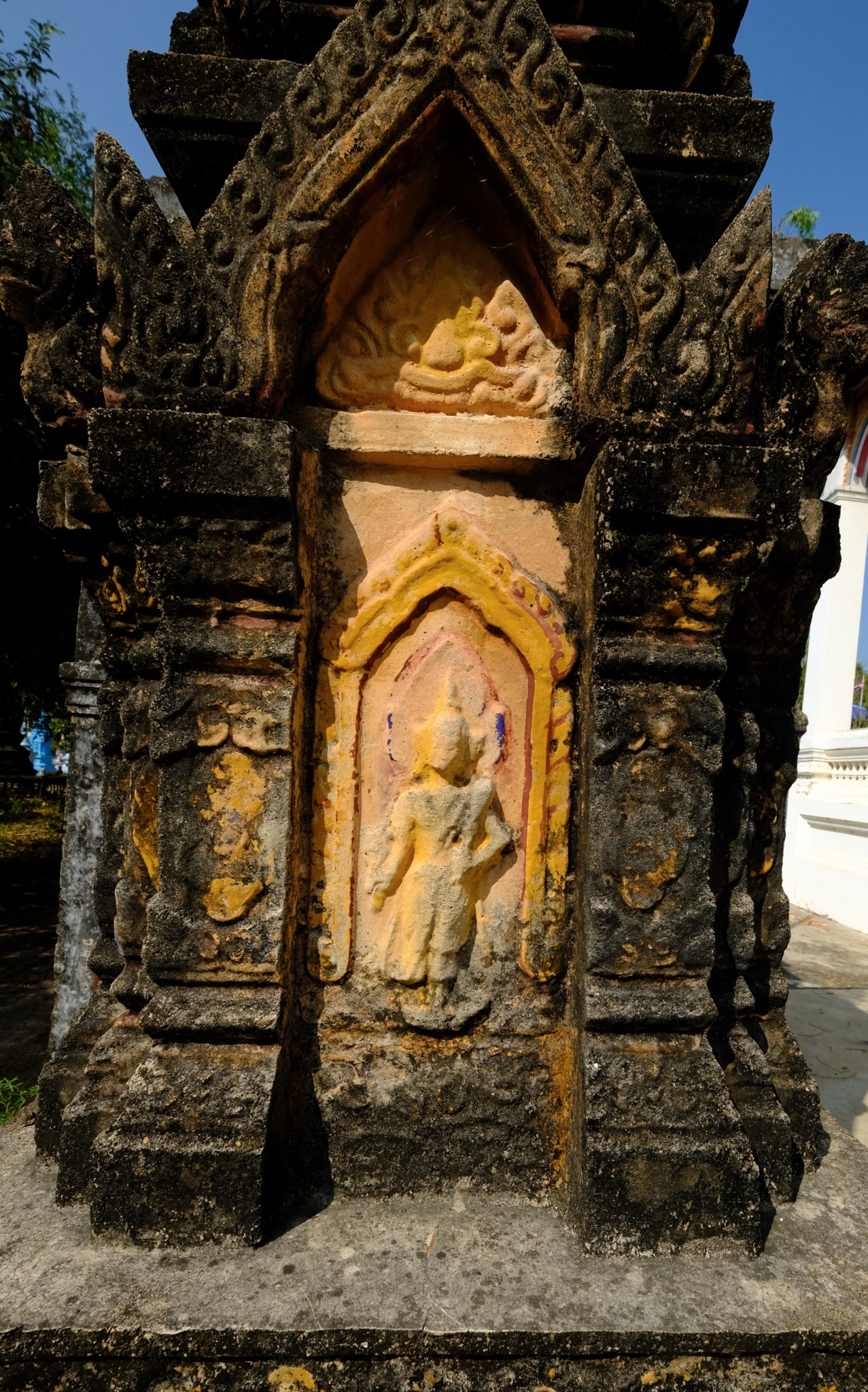 Some of the detail of these old funerary chedis is still very beautiful.
Some of the detail of these old funerary chedis is still very beautiful.
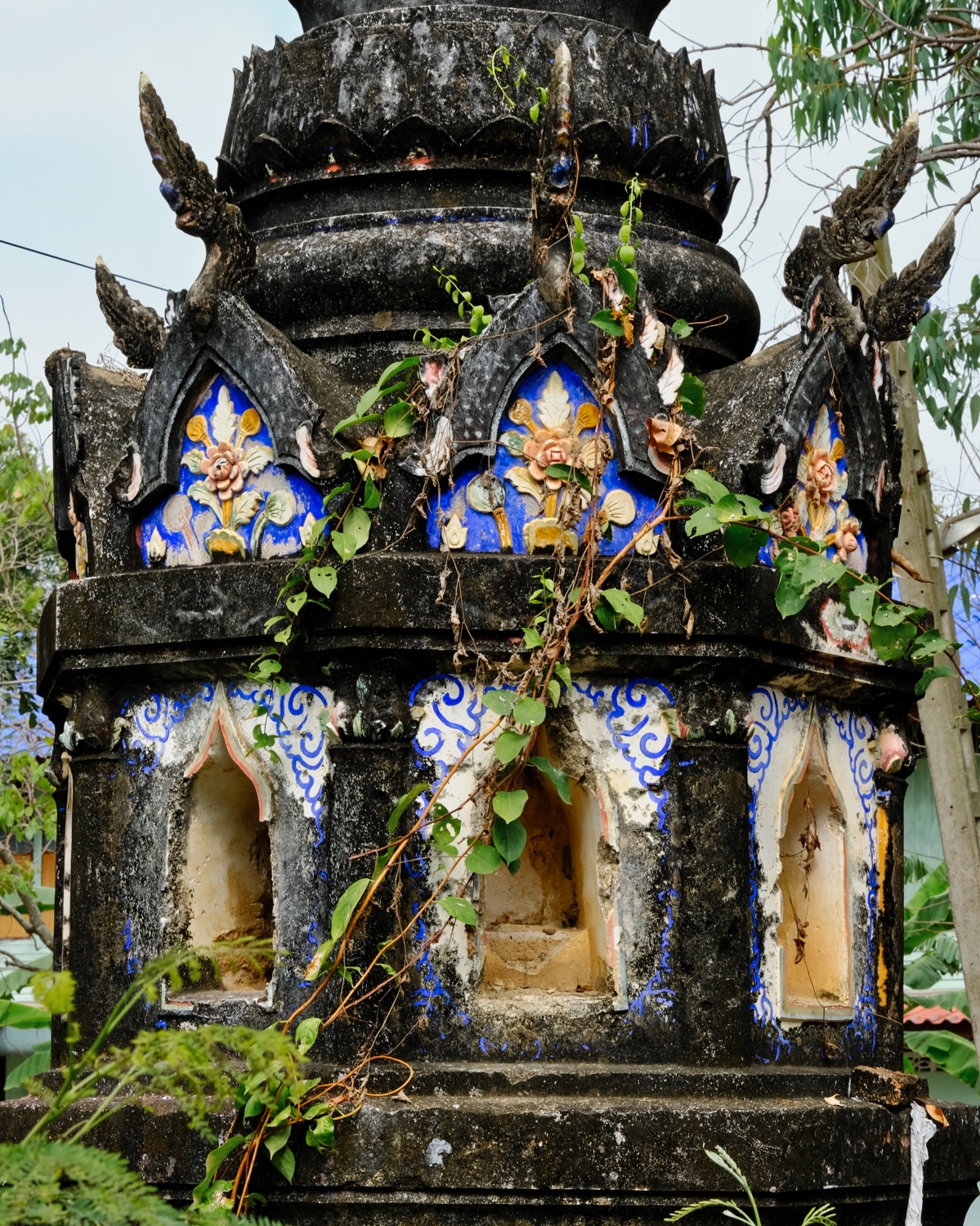 Missing Buddha images! If you ever go to Thailand, remember this photo! This is where those expensive 'rare ancient Buddha' images sold in the expensive hotel art shops come from! They are robbed from these old chedis. It is against the law to export Buddha images without the proper permission from authorities.
Missing Buddha images! If you ever go to Thailand, remember this photo! This is where those expensive 'rare ancient Buddha' images sold in the expensive hotel art shops come from! They are robbed from these old chedis. It is against the law to export Buddha images without the proper permission from authorities.
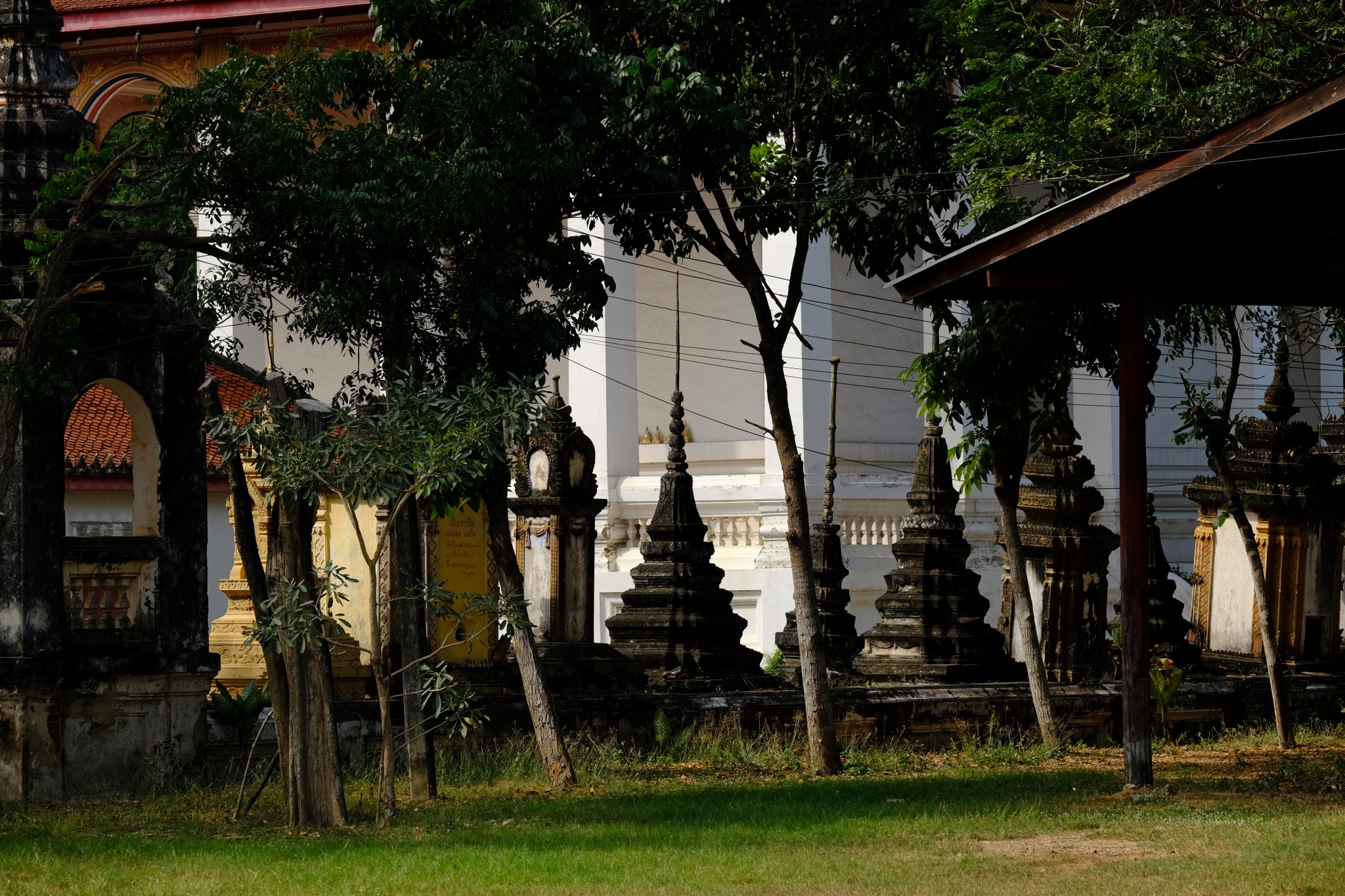 Around the temple I walked admiring the lines of chedis.
Around the temple I walked admiring the lines of chedis.
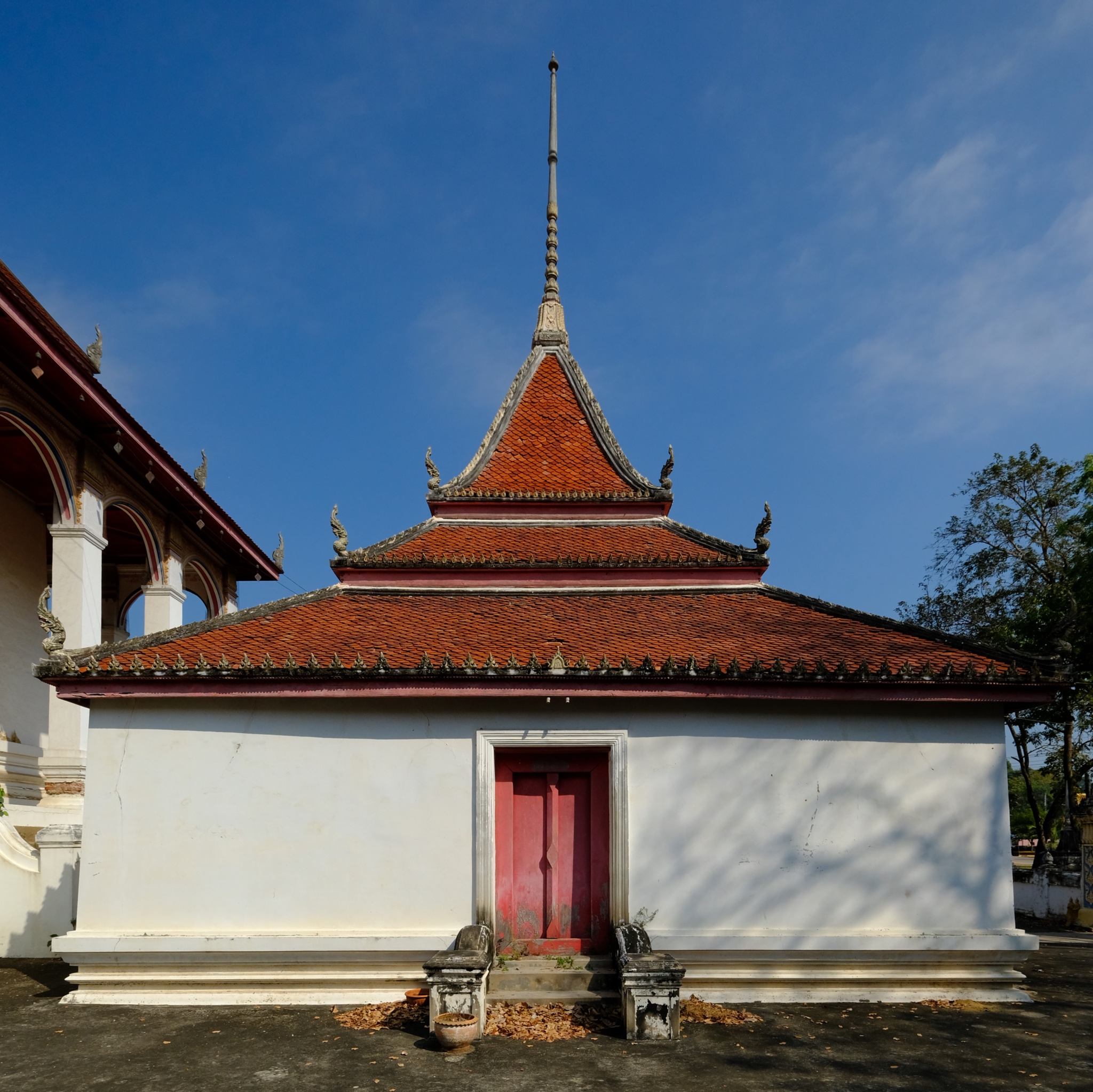 A temple within a temple. Stunning architecture.
A temple within a temple. Stunning architecture.
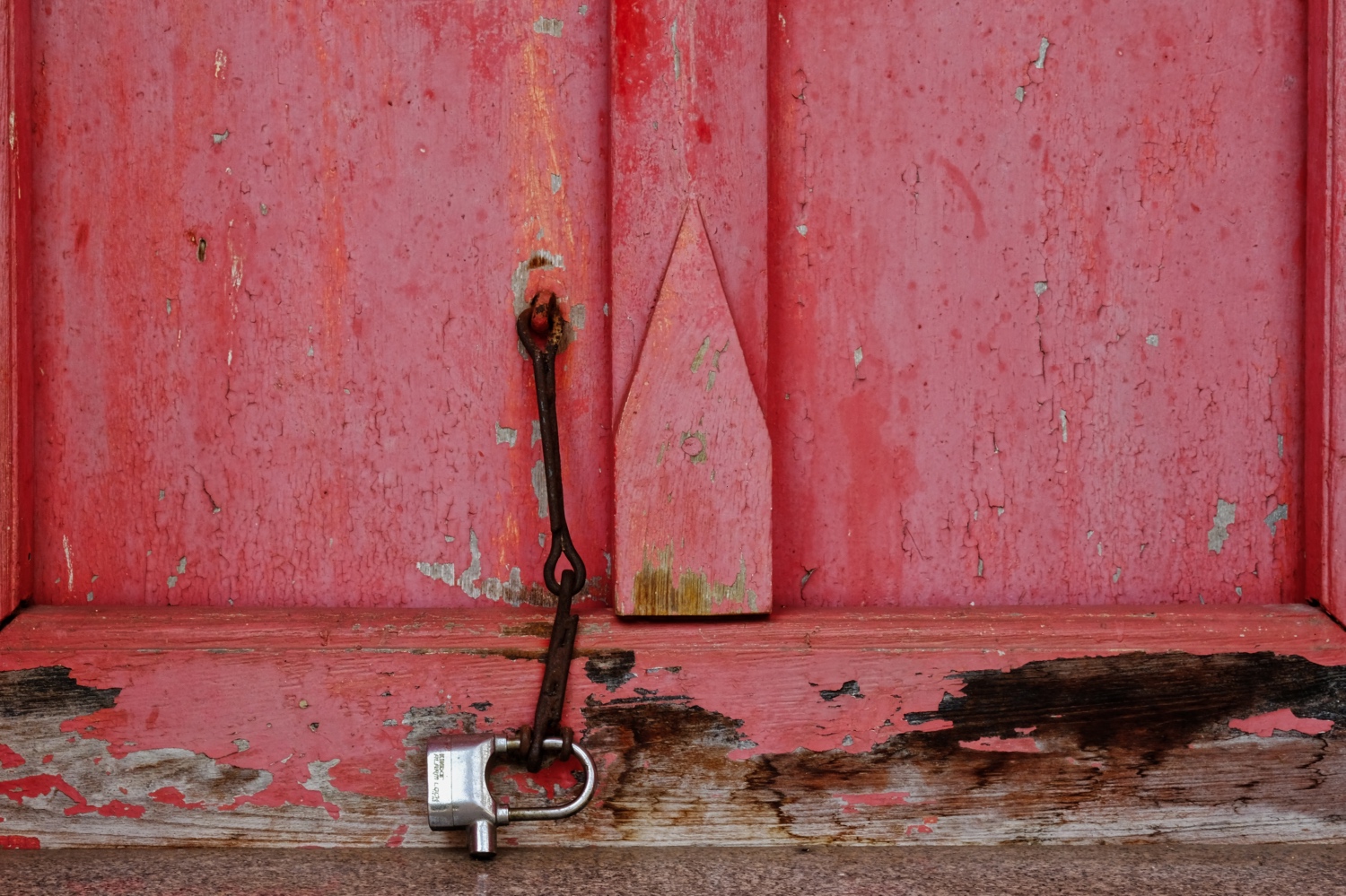 Old and decaying temple hardware . . . and a new lock.
Old and decaying temple hardware . . . and a new lock.
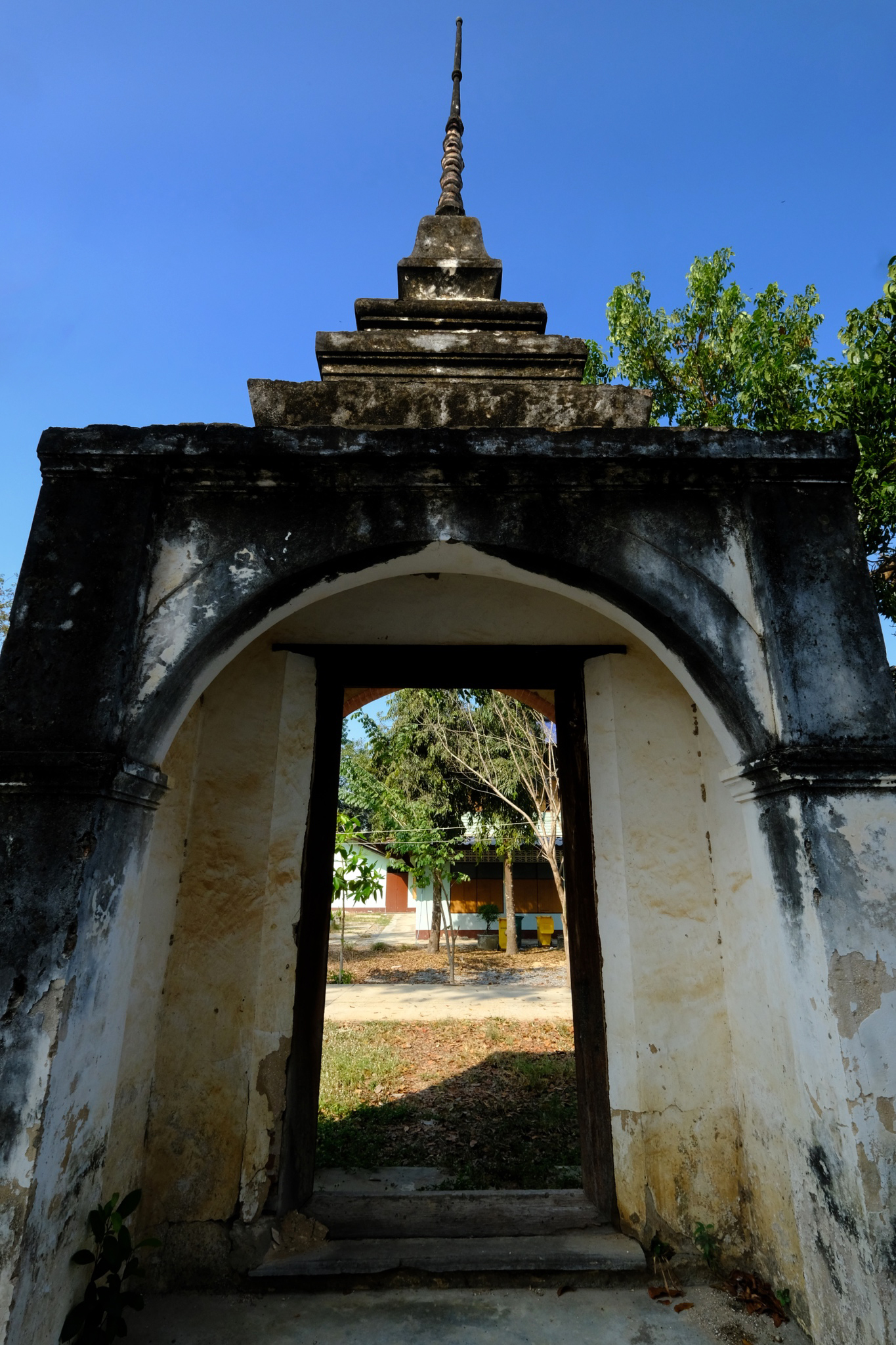 I left the inner courtyard though this gate . . . more exploring to do.
I left the inner courtyard though this gate . . . more exploring to do.
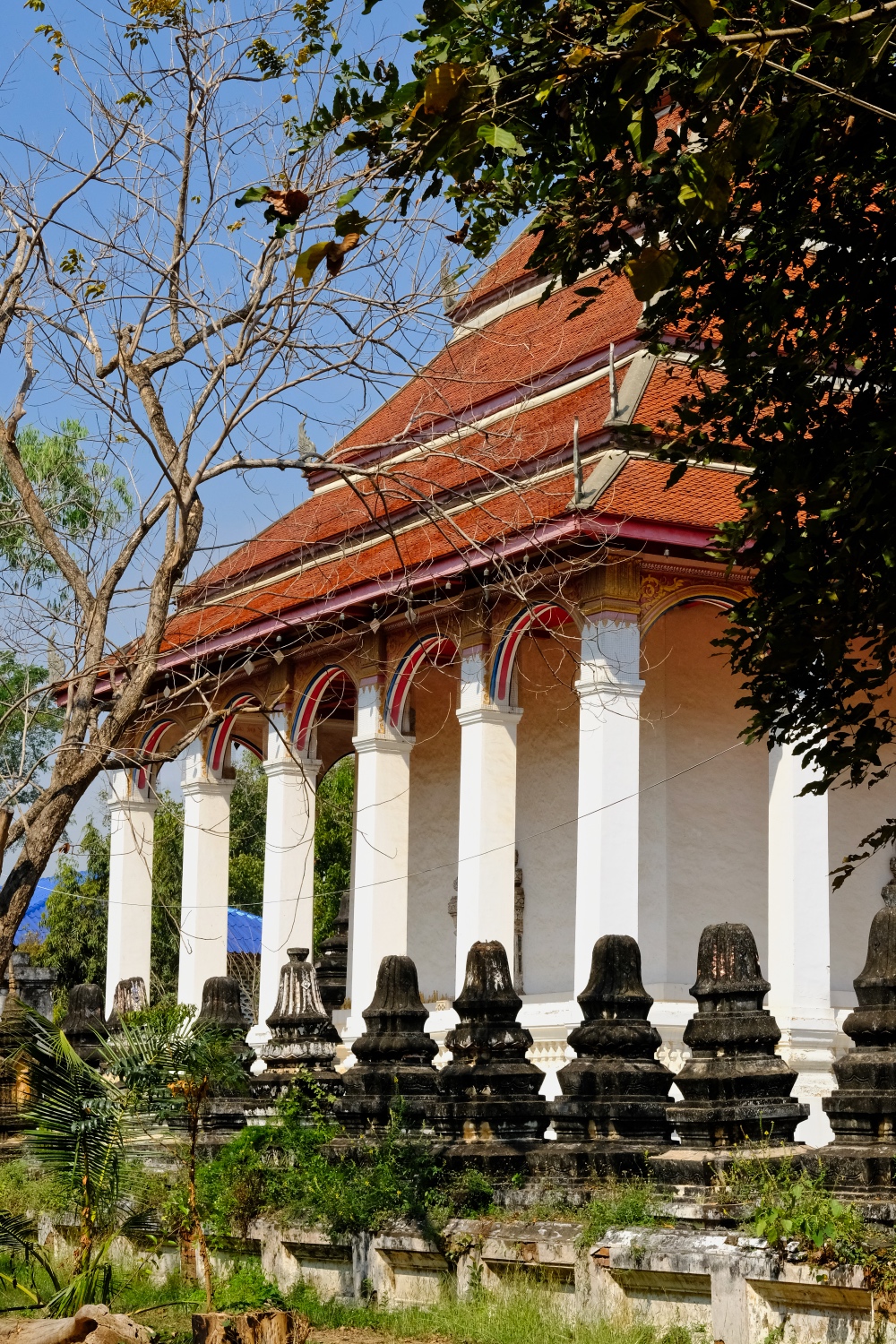 This wat building nearby drew my attention.
This wat building nearby drew my attention.
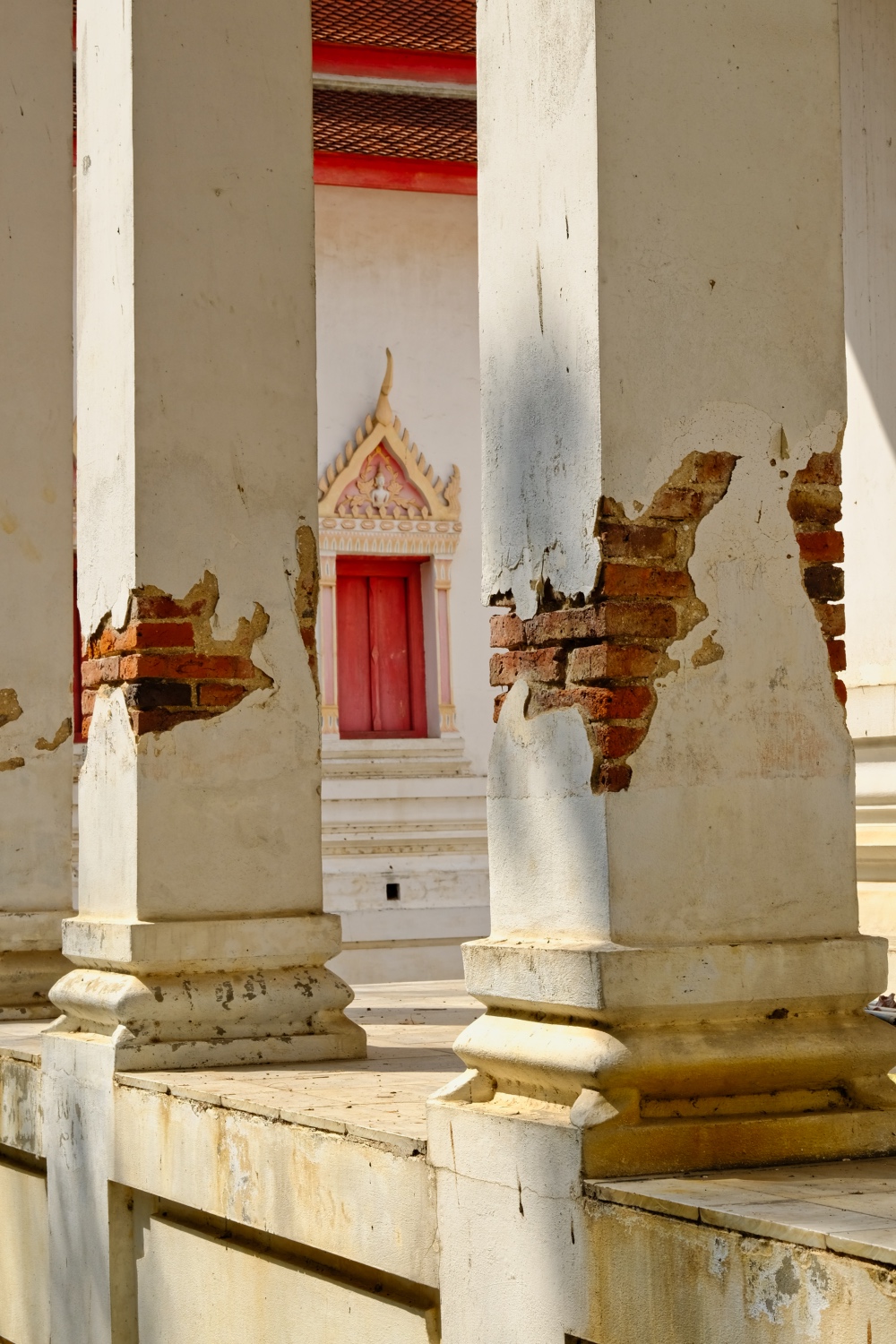 Several of the traditional white wat structures stood nearby.
Several of the traditional white wat structures stood nearby.
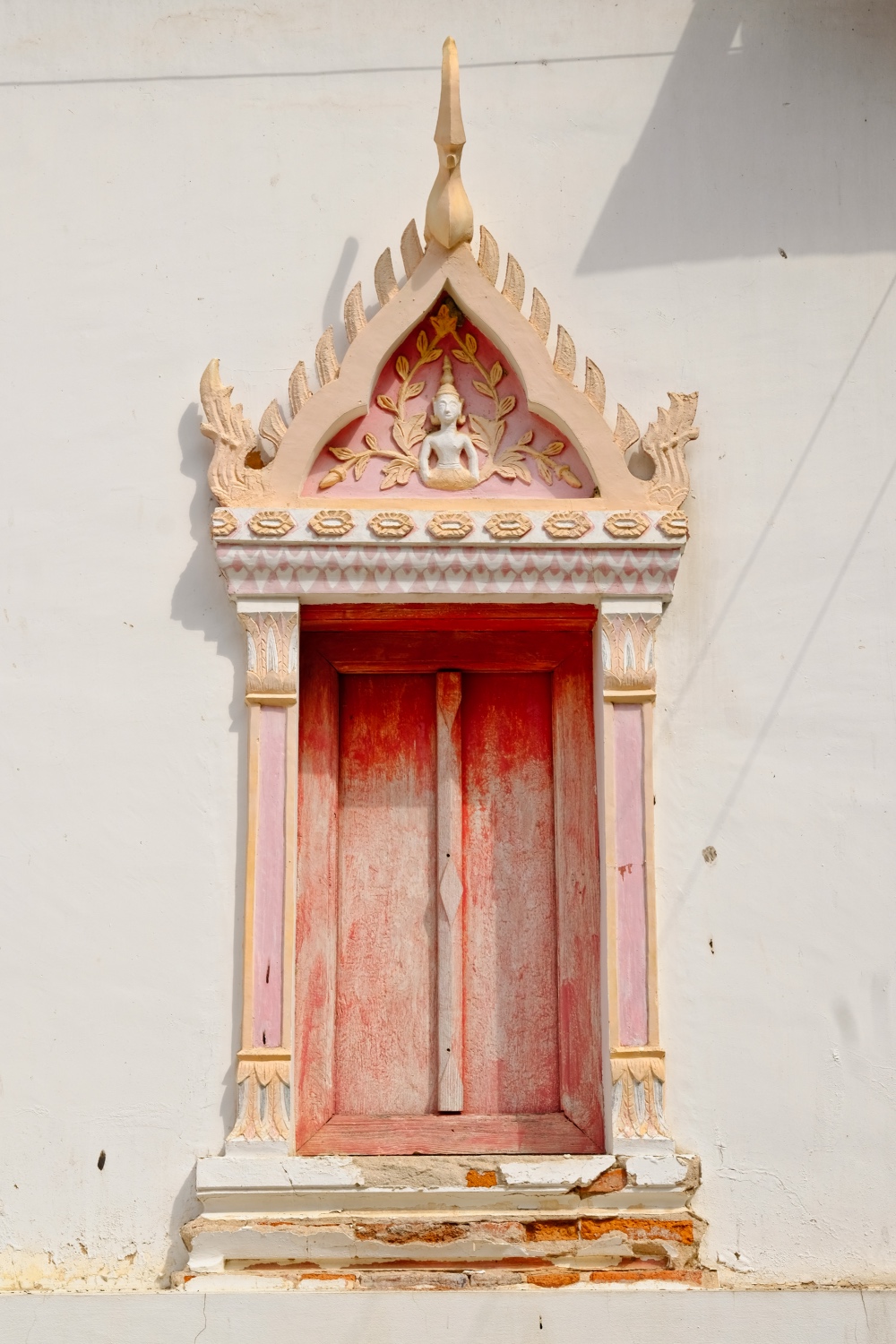 An old, sun bleached and forlorn door to the first wat building.
An old, sun bleached and forlorn door to the first wat building.
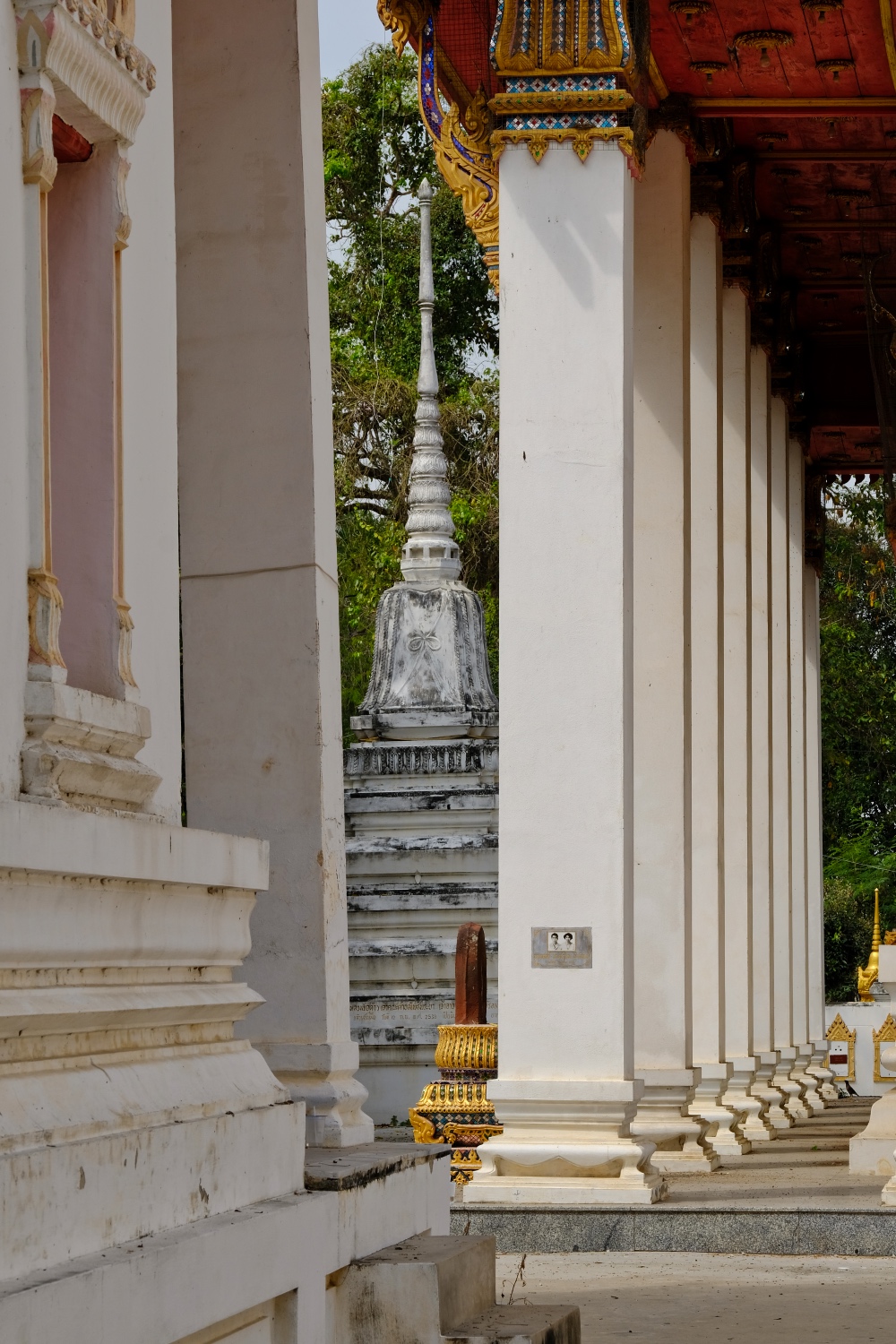 A view between the several wats. The small photos on the column (right) indicates there are the ash urns of deceased donors enshrined in the wall or column.
A view between the several wats. The small photos on the column (right) indicates there are the ash urns of deceased donors enshrined in the wall or column.
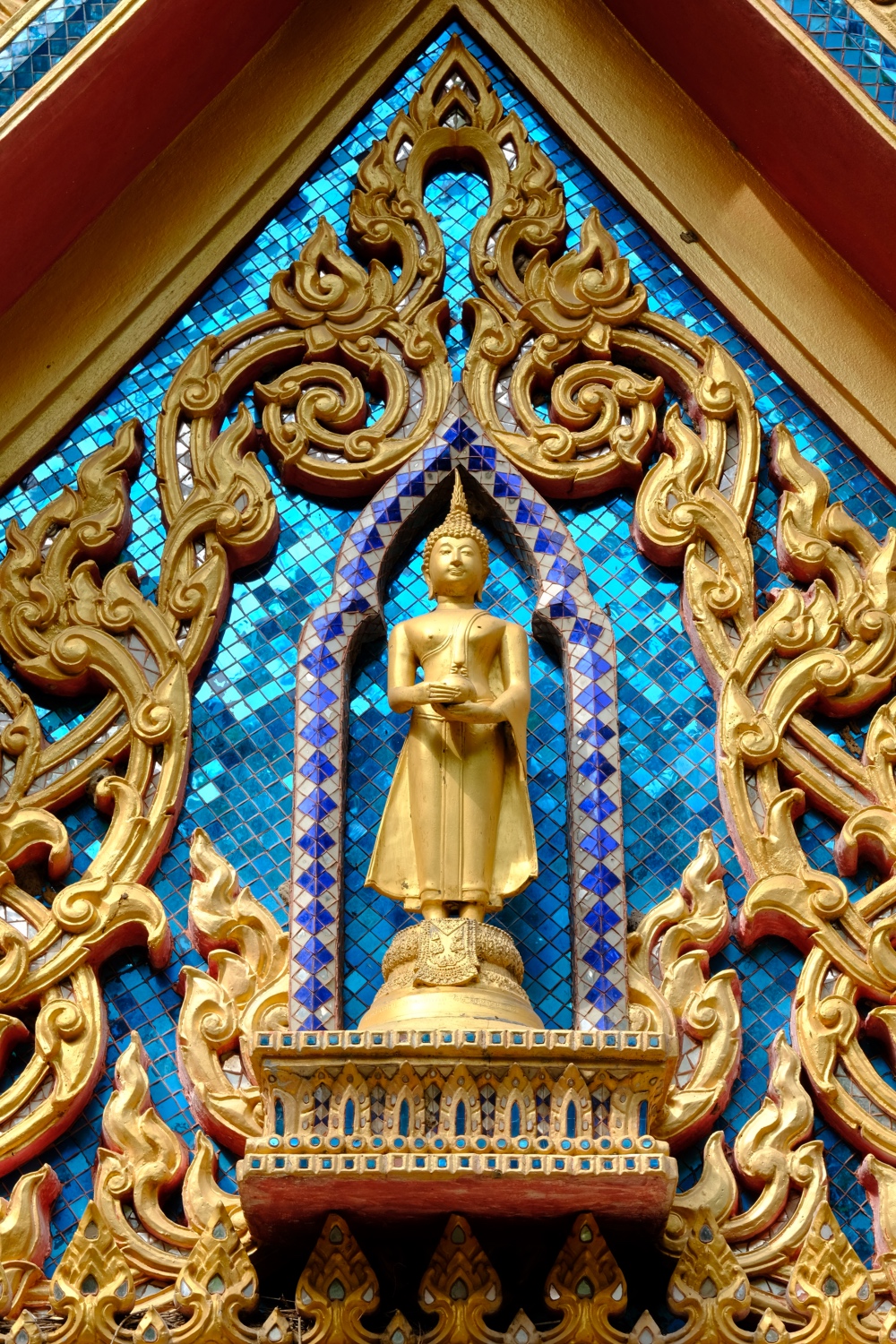 High up, under the gabled roof end, the exquisite Buddhist art looked almost new.
High up, under the gabled roof end, the exquisite Buddhist art looked almost new.
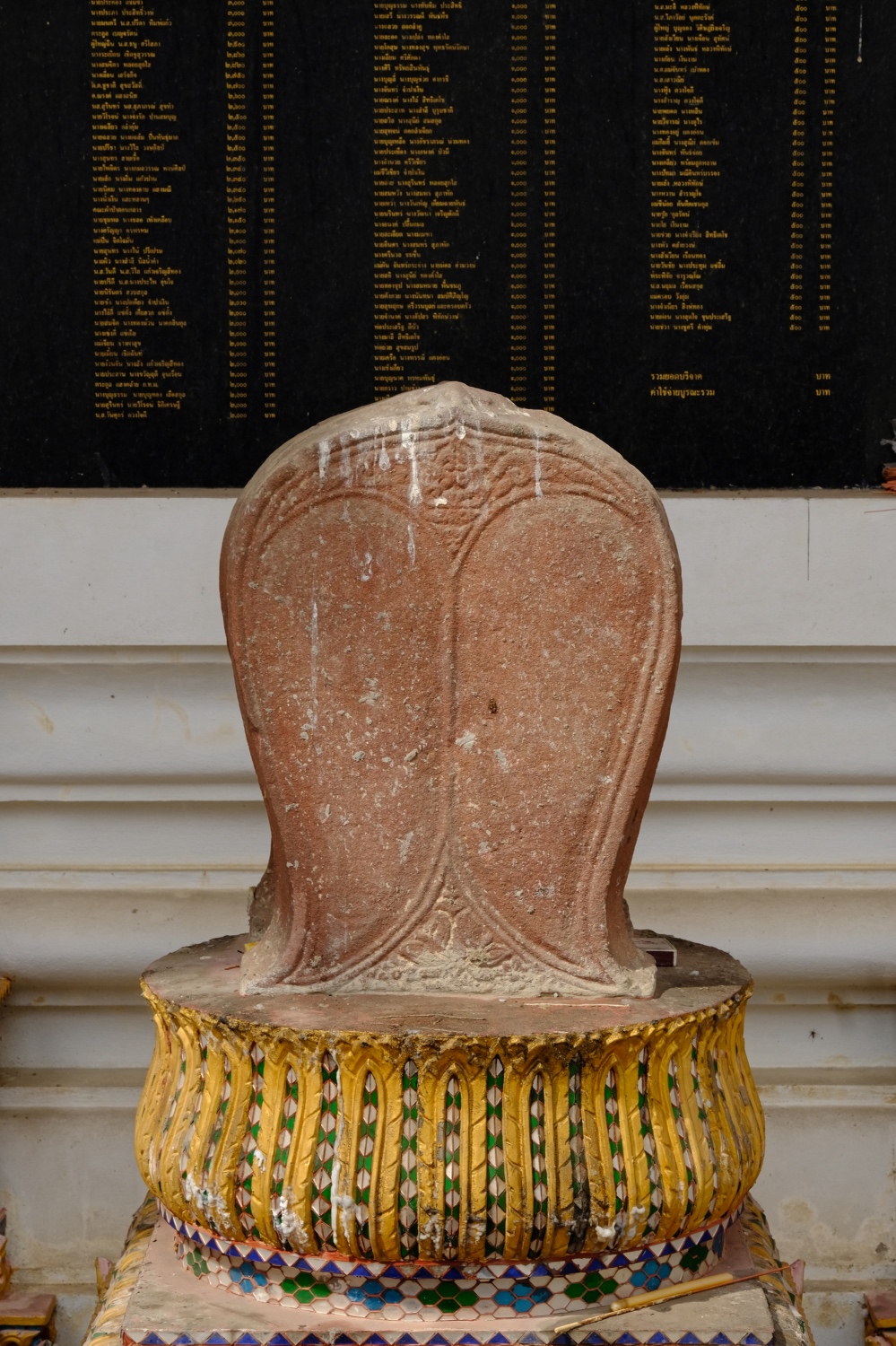 This old Buddhist tablet stood in front of a plaque listing donors to the Wat . . . in order of the amount donated. My name, and my wife's name, appears on many of these donor lists throughout Thailand.
This old Buddhist tablet stood in front of a plaque listing donors to the Wat . . . in order of the amount donated. My name, and my wife's name, appears on many of these donor lists throughout Thailand.
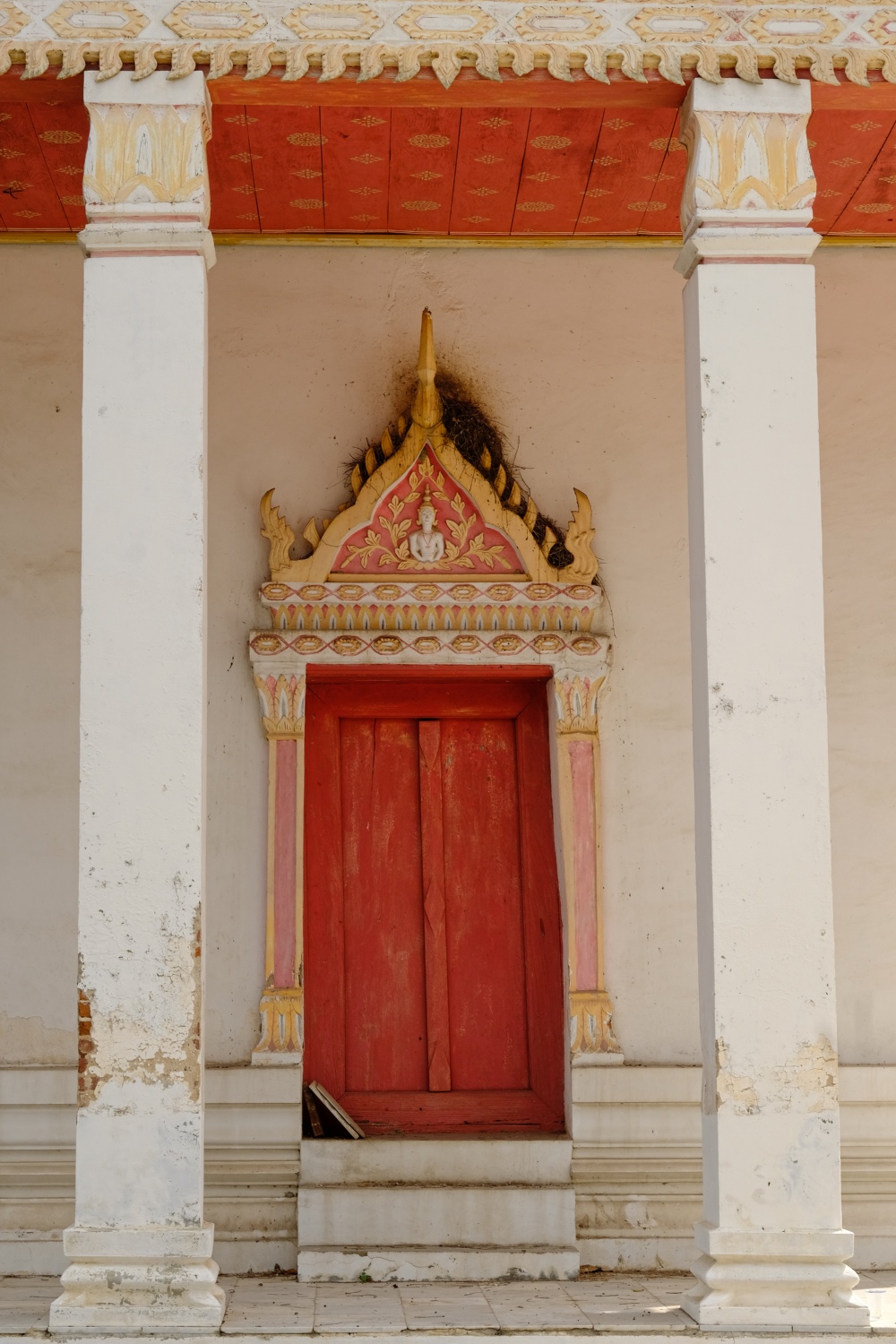 Birds had built quite a nest above one of the doors.
Birds had built quite a nest above one of the doors.
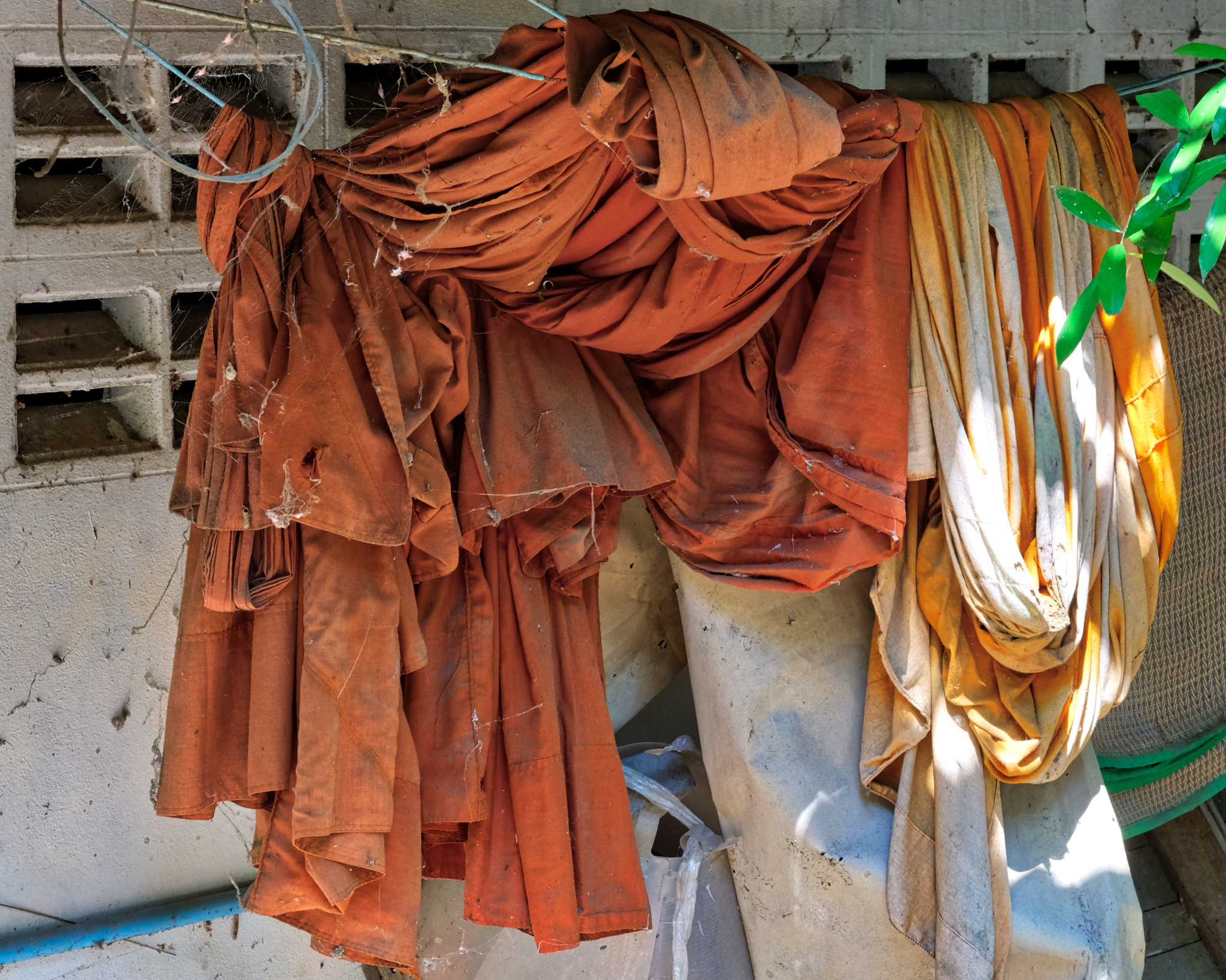 John and I wandered further back into the wat along a wooded path and discovered abandoned monks' quarters. It looks like whoever lived there in the past left all of a sudden.
John and I wandered further back into the wat along a wooded path and discovered abandoned monks' quarters. It looks like whoever lived there in the past left all of a sudden.
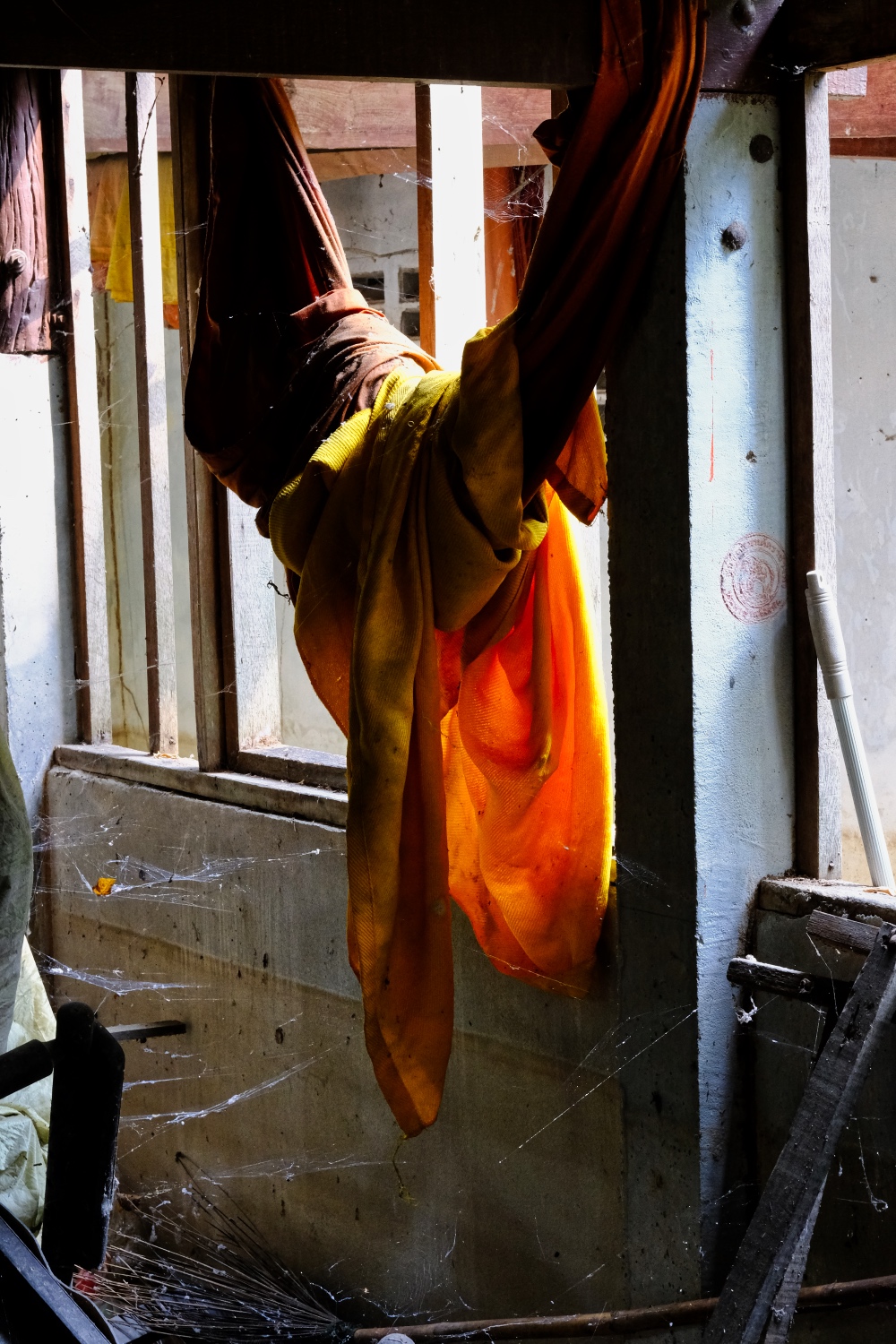 We sensed a mystery: Why had these monks left in such a hurry that they did not even have time to take their robes with them? Perhaps they had done something bad . . . or had been suddenly transferred to another wat . . . or . . .?
We sensed a mystery: Why had these monks left in such a hurry that they did not even have time to take their robes with them? Perhaps they had done something bad . . . or had been suddenly transferred to another wat . . . or . . .?
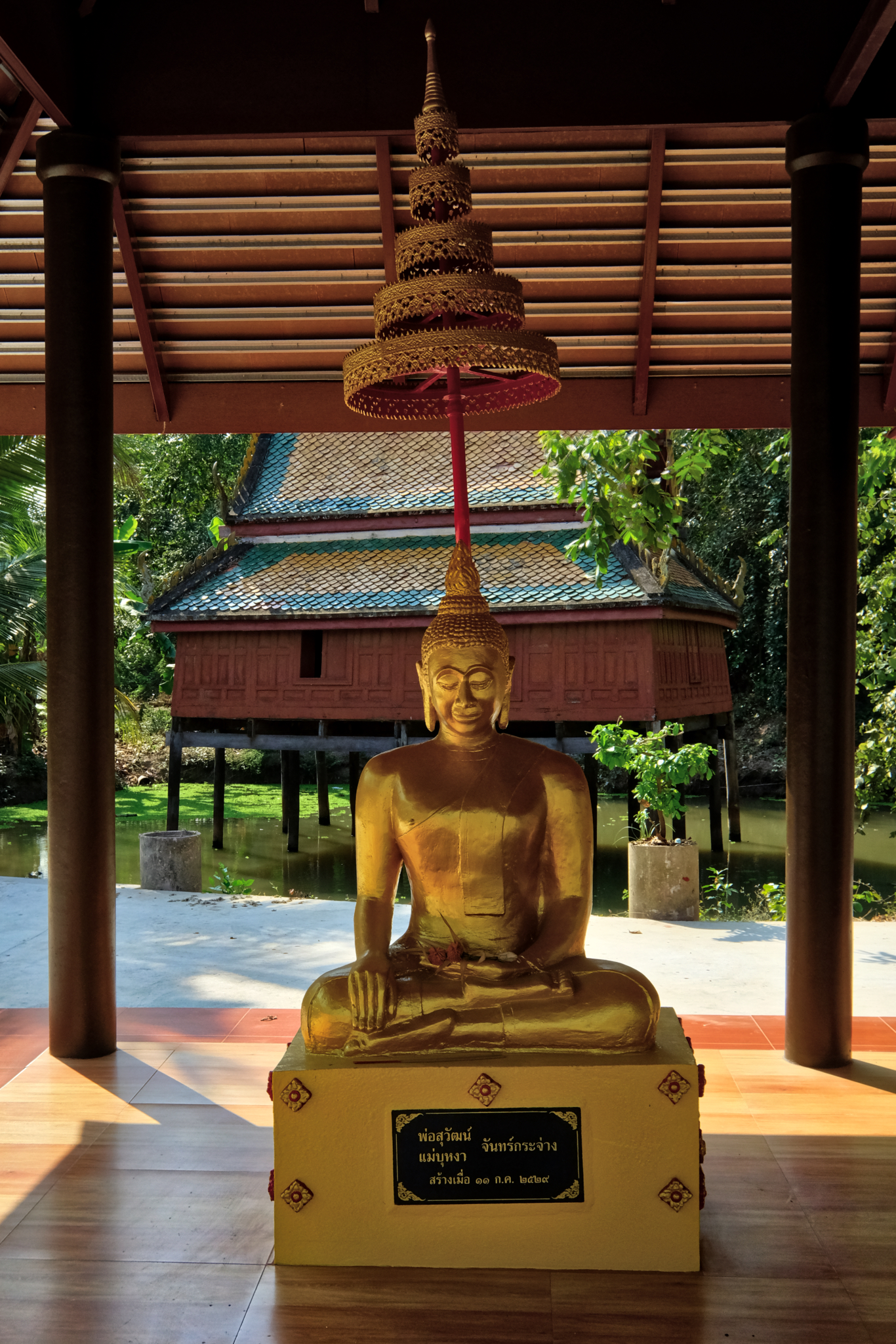 Along a path we came upon two powerful Buddha images in a pavilion next to a pond.
Along a path we came upon two powerful Buddha images in a pavilion next to a pond.
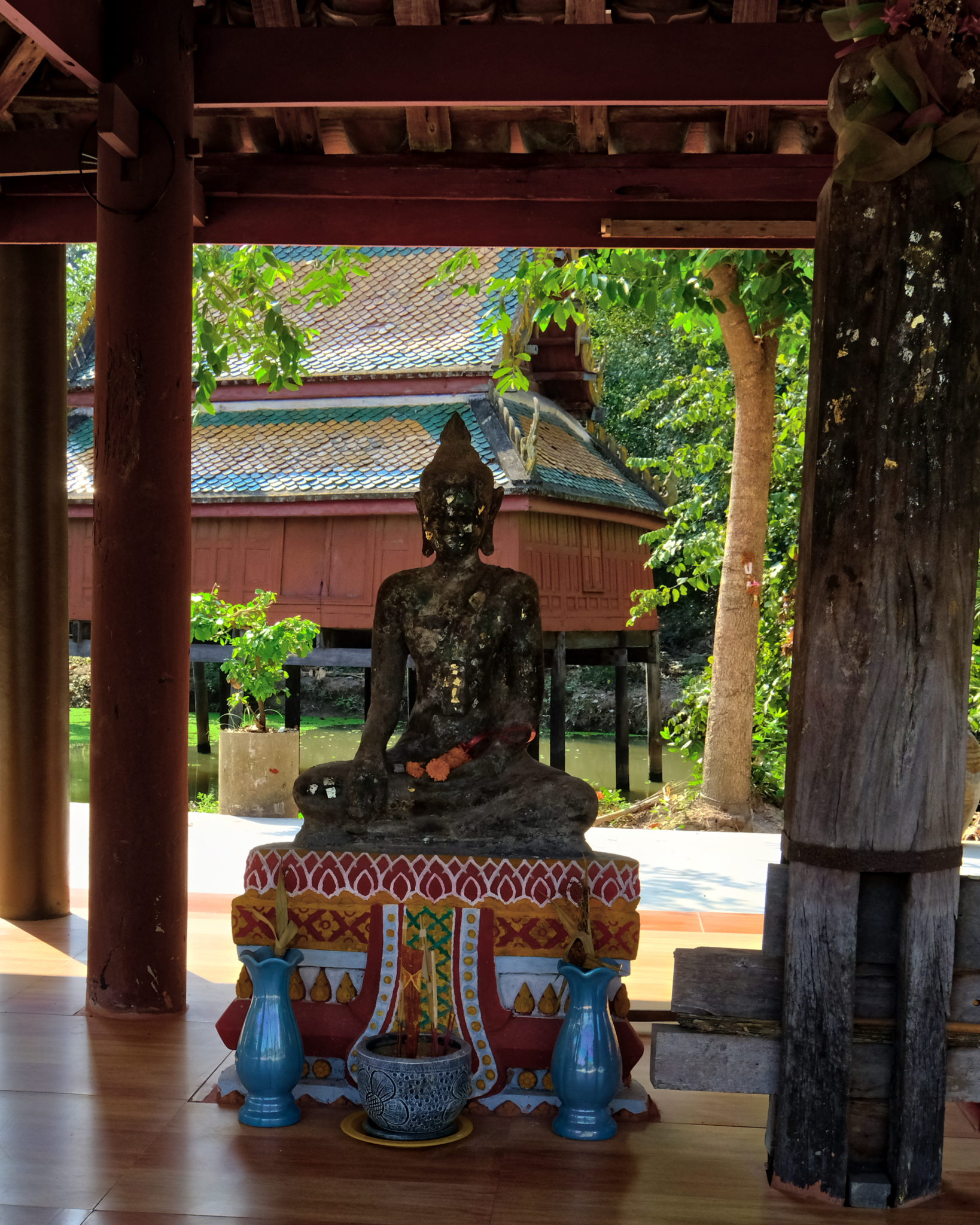 Each pavilion Buddha was amazing.
Each pavilion Buddha was amazing.
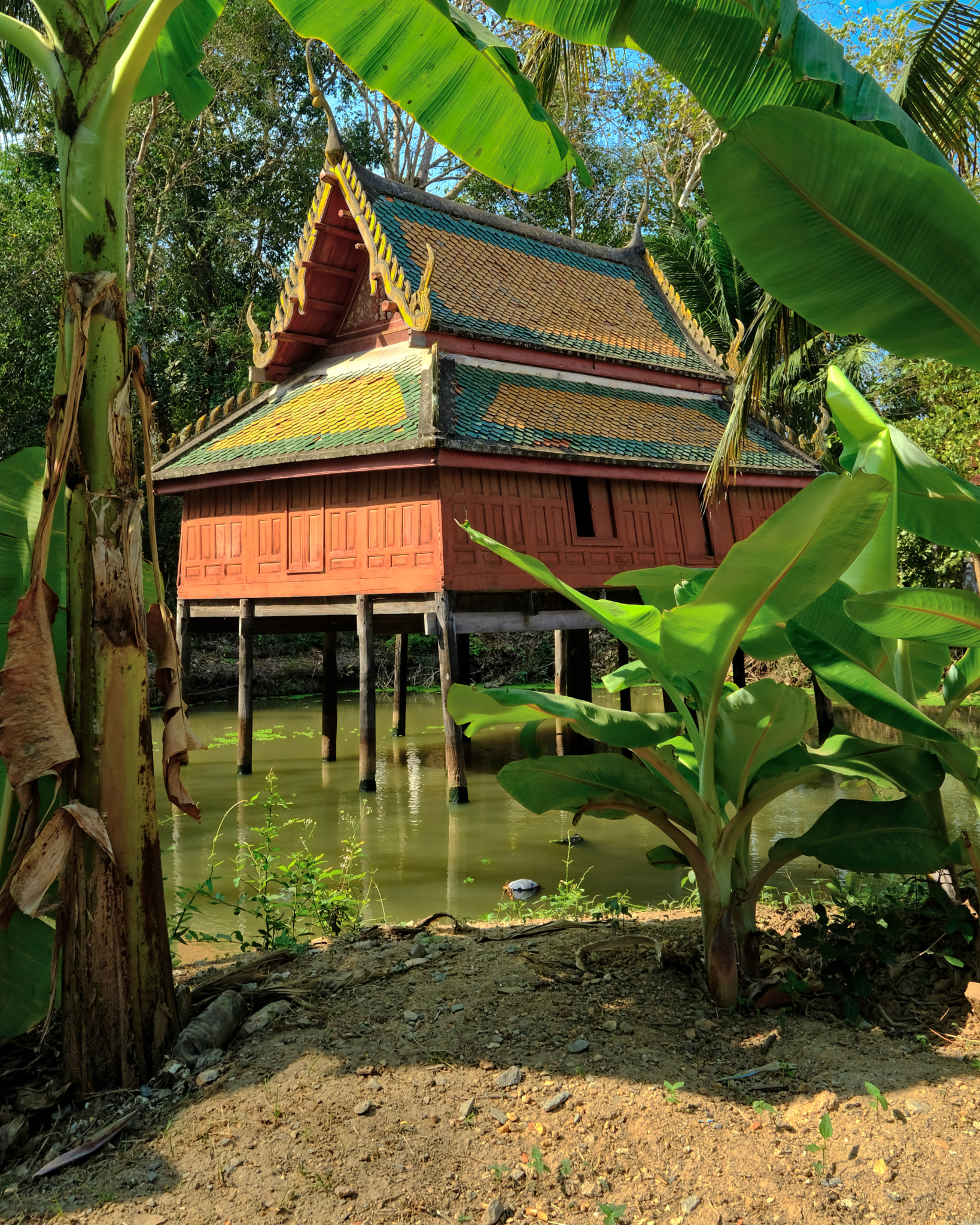 Behind the Buddha pavilion was this Thai-style cottage set in the middle of a pond.
Behind the Buddha pavilion was this Thai-style cottage set in the middle of a pond.
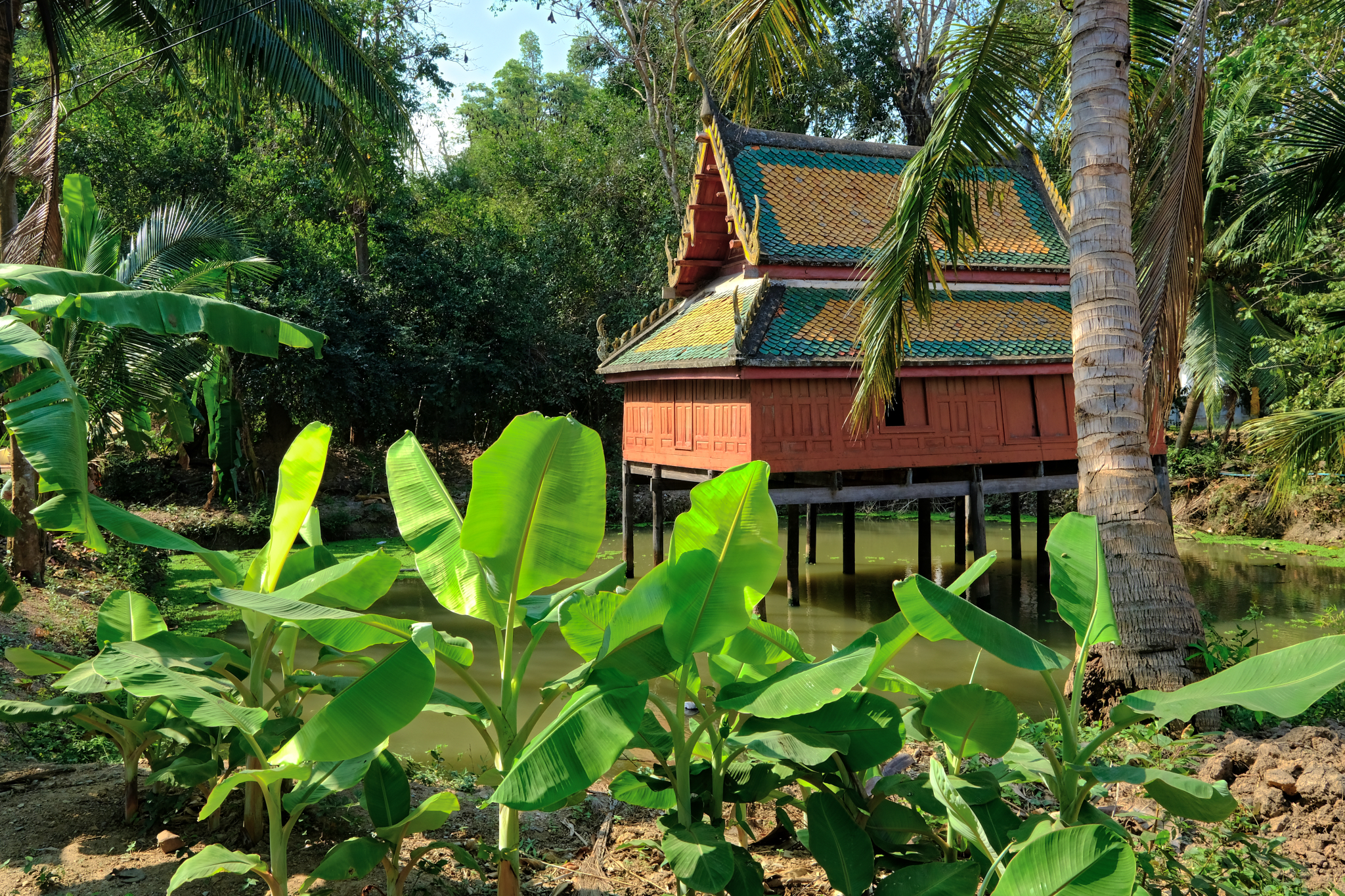 This building was a bit of a mystery too: there was no bridge out to the structure, and there was no boat anywhere to be seen.
This building was a bit of a mystery too: there was no bridge out to the structure, and there was no boat anywhere to be seen.
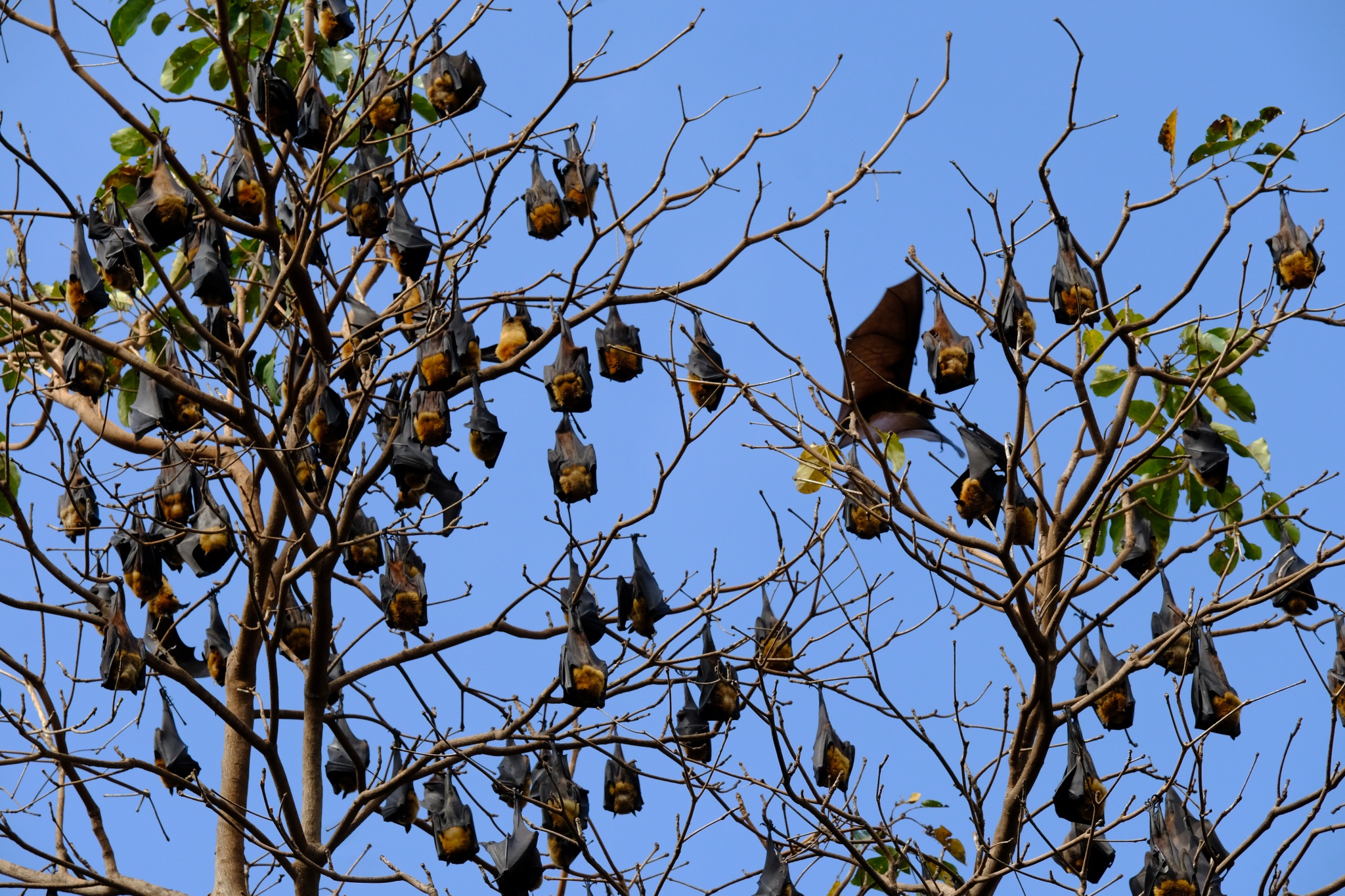 A small forest of trees full of chattering fruit bats surrounded the cottage in the pond.
A small forest of trees full of chattering fruit bats surrounded the cottage in the pond.
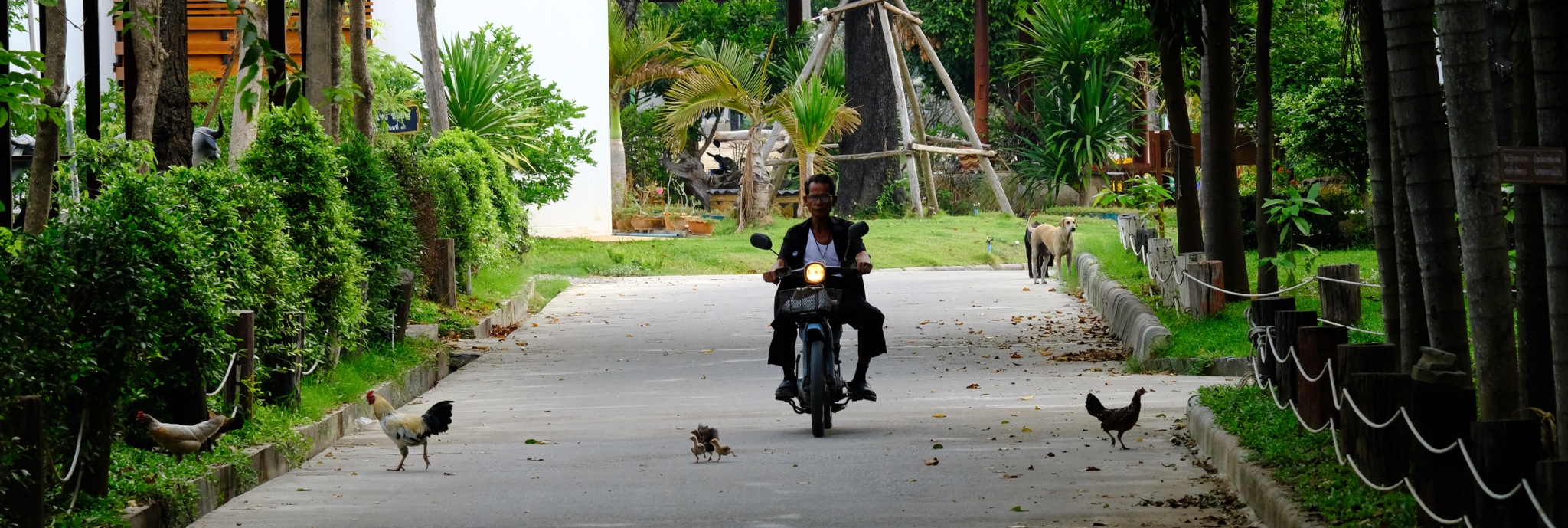 It was not even noon and I felt my day had already been successful. We walked out of the wat over the bridge and along this road.
It was not even noon and I felt my day had already been successful. We walked out of the wat over the bridge and along this road.
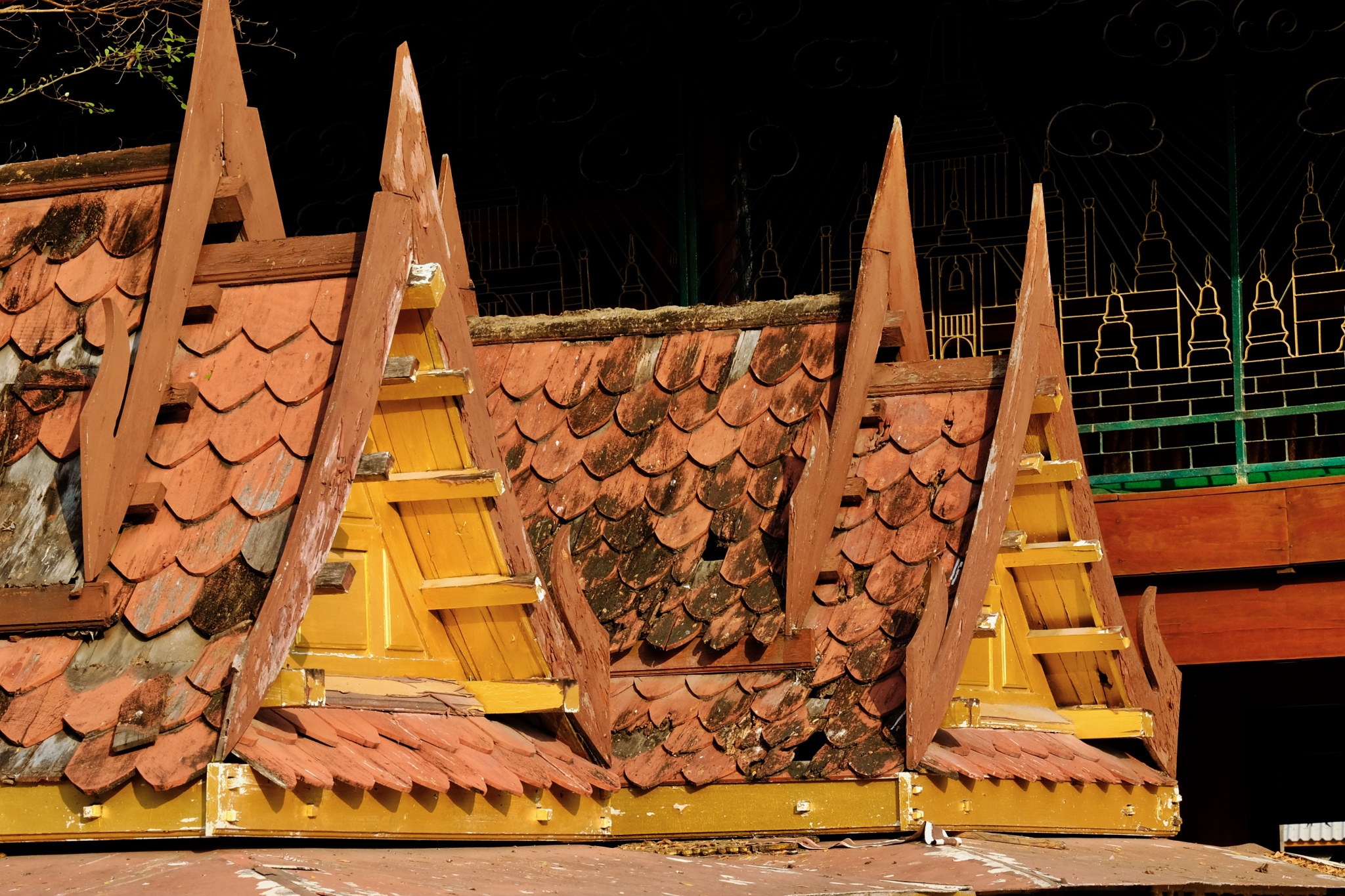 Out past the old school house to my truck and back on the road to more rambling adventure in Suphanburi Province.
Out past the old school house to my truck and back on the road to more rambling adventure in Suphanburi Province.
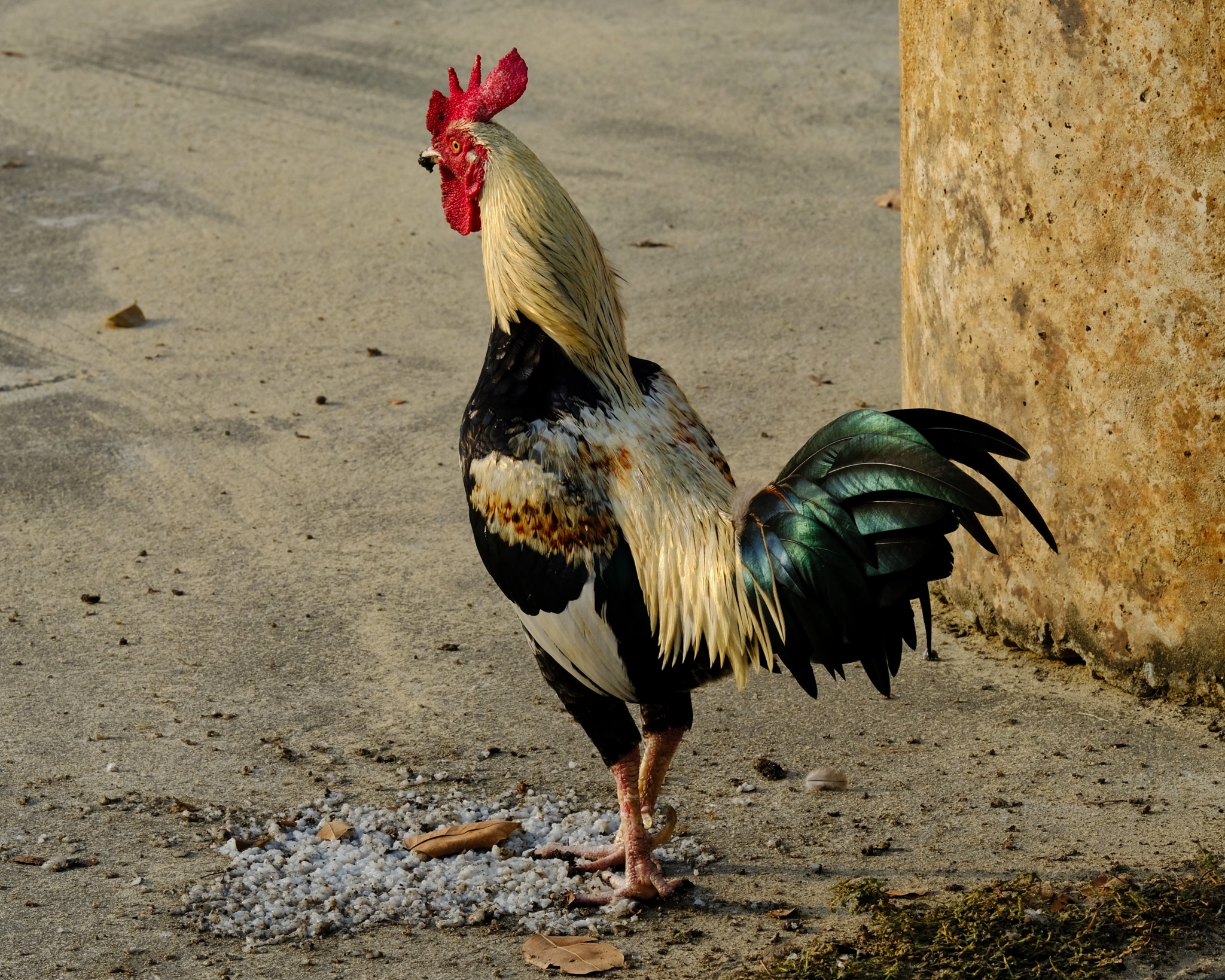 Oh, I almost forgot . . . there was a rooster at the wat and I took the best rooster photo of my entire life!
Oh, I almost forgot . . . there was a rooster at the wat and I took the best rooster photo of my entire life!
20K Bike Ride Around the "Green Lung of Bangkok"
 Sunday, March 4, 2018 at 4:51PM
Sunday, March 4, 2018 at 4:51PM 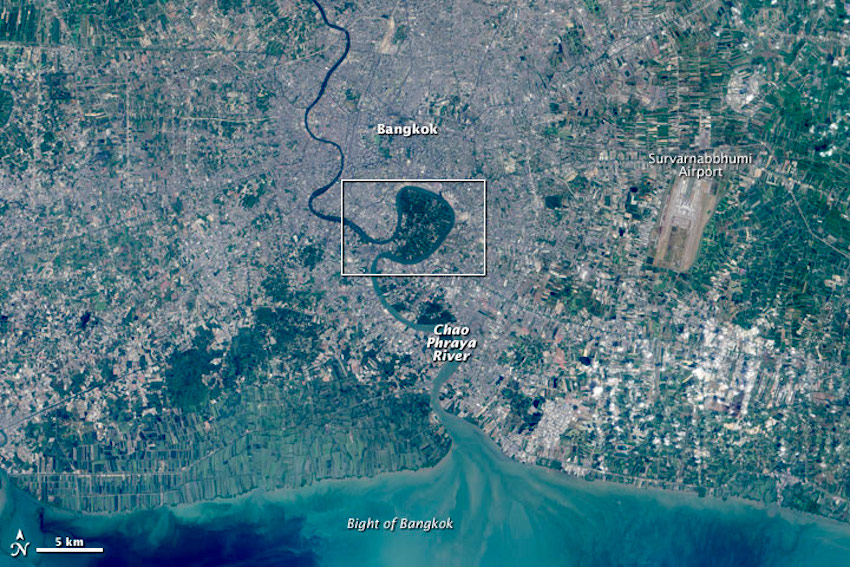 Prapadaeng Island, or more commonly known as 'the Green Lung of Bangkok,' is a large bend in the Chao Phraya River that, despite its close proximity to the city of Bangkok, remains surprisingly a beautiful slice of wild nature . . . mostly as mangrove swamps.
Prapadaeng Island, or more commonly known as 'the Green Lung of Bangkok,' is a large bend in the Chao Phraya River that, despite its close proximity to the city of Bangkok, remains surprisingly a beautiful slice of wild nature . . . mostly as mangrove swamps.
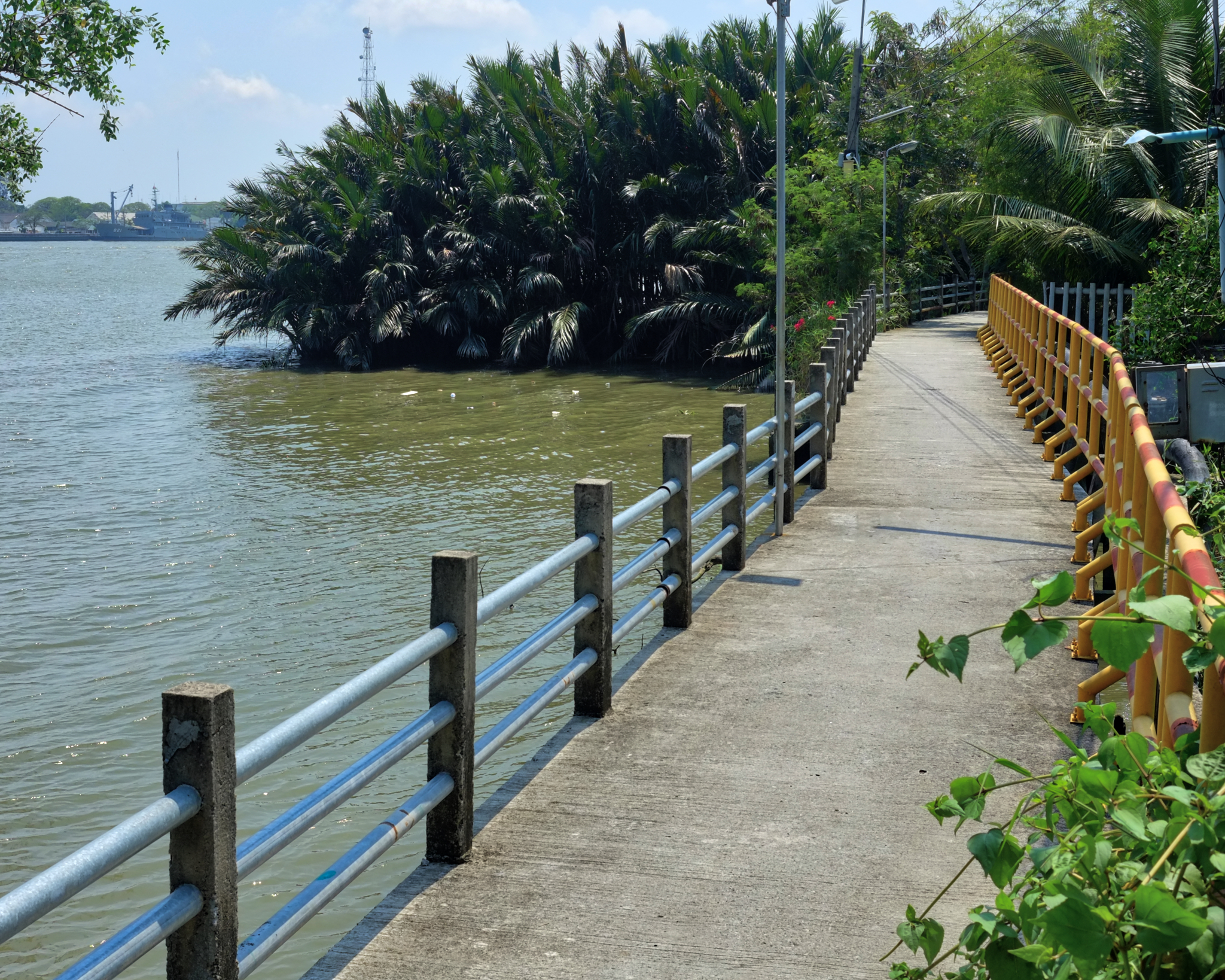 Prapadaeng is not very developed for cars, but is highly developed for bicycle riding on these elevated paths. Not all the bike paths have these guard rails, some are quite frightening . . . but fun.
Prapadaeng is not very developed for cars, but is highly developed for bicycle riding on these elevated paths. Not all the bike paths have these guard rails, some are quite frightening . . . but fun.
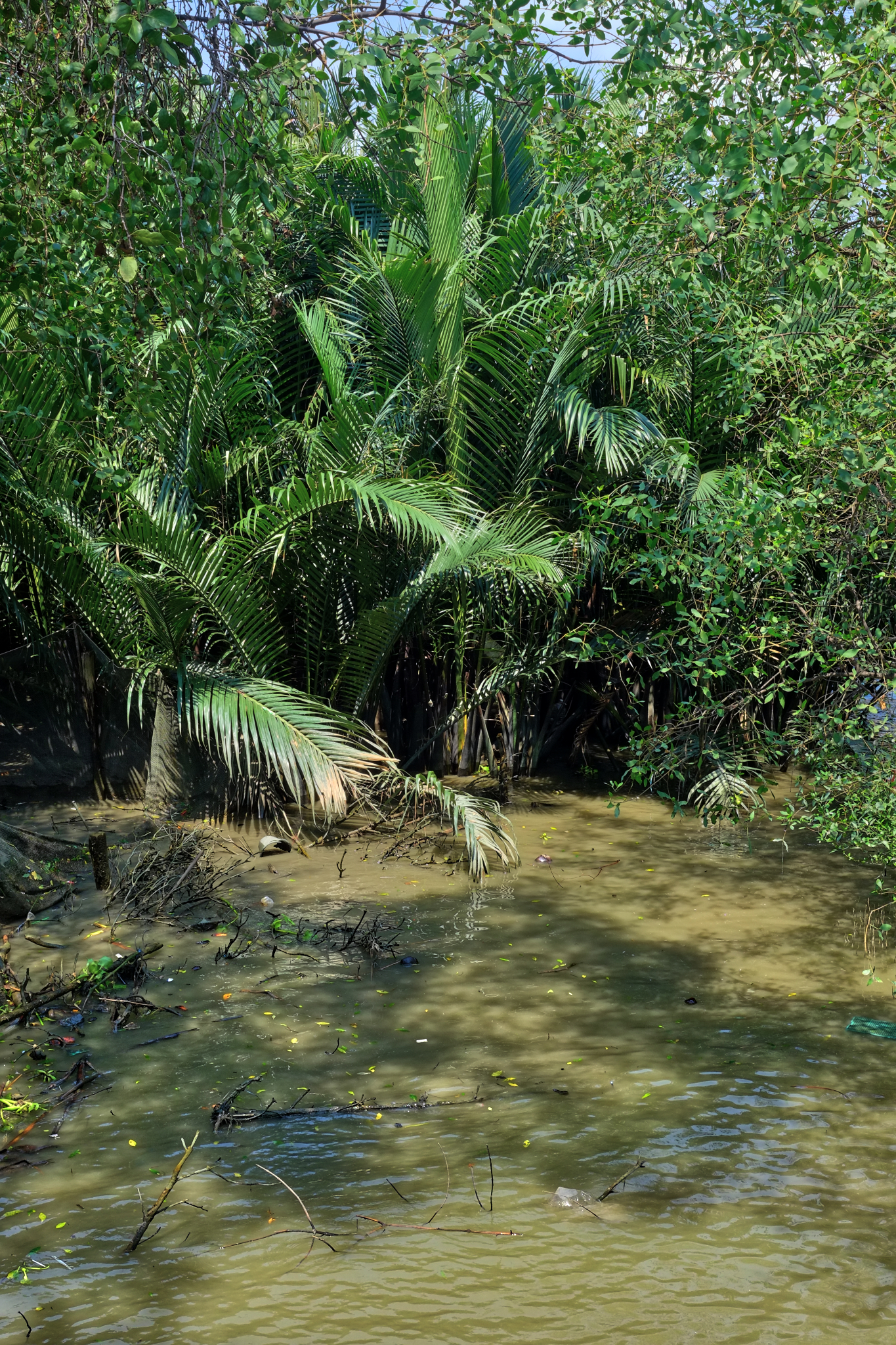 Although there are a few small roads, and a few cars around, most of Prapadaeng is still mangrove and palm swamp.
Although there are a few small roads, and a few cars around, most of Prapadaeng is still mangrove and palm swamp.
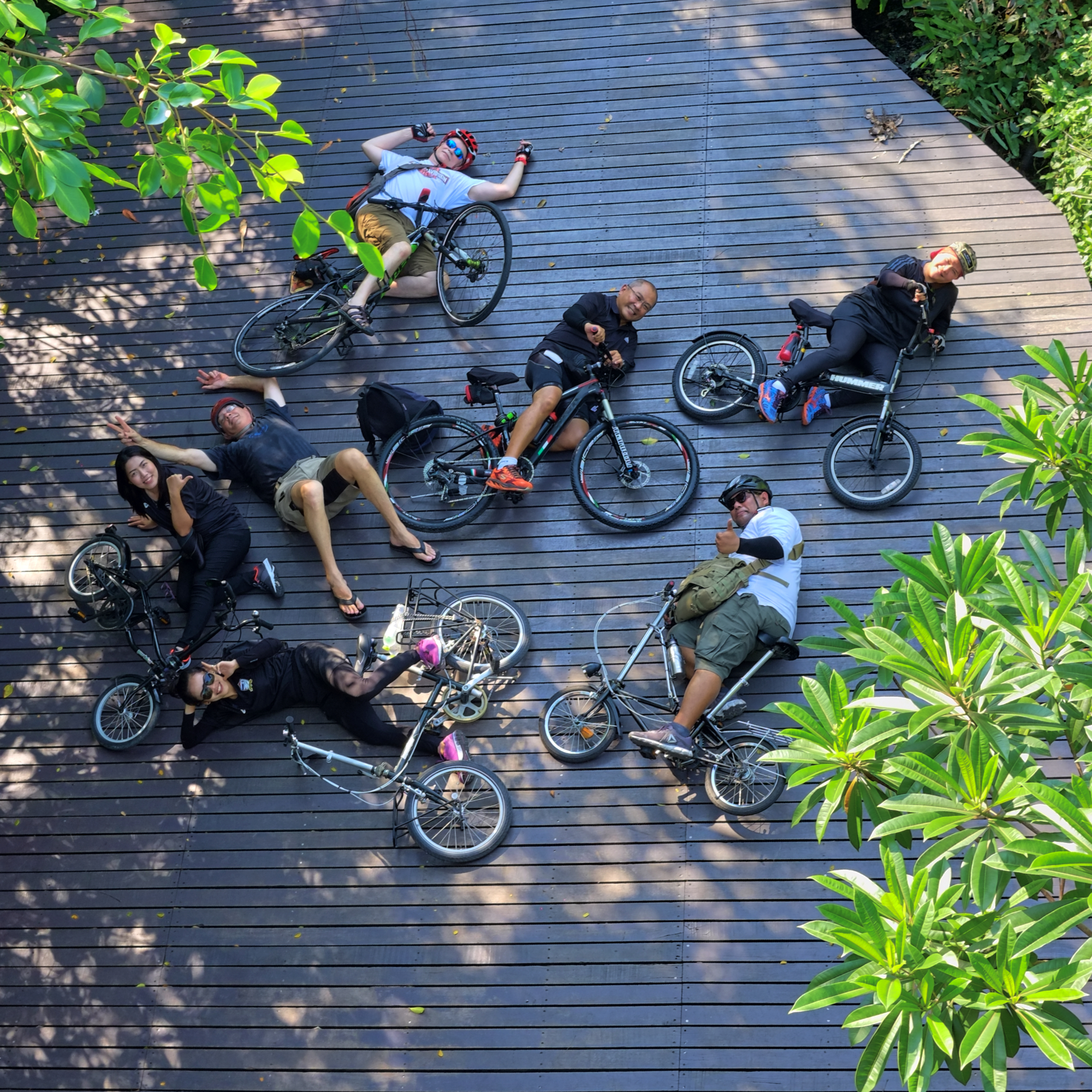 I did not go biking alone, but some of the fun-loving faculty, staff and administrators of the King Mongkut University of Science North Bangkok, where I am currently employed.
I did not go biking alone, but some of the fun-loving faculty, staff and administrators of the King Mongkut University of Science North Bangkok, where I am currently employed.
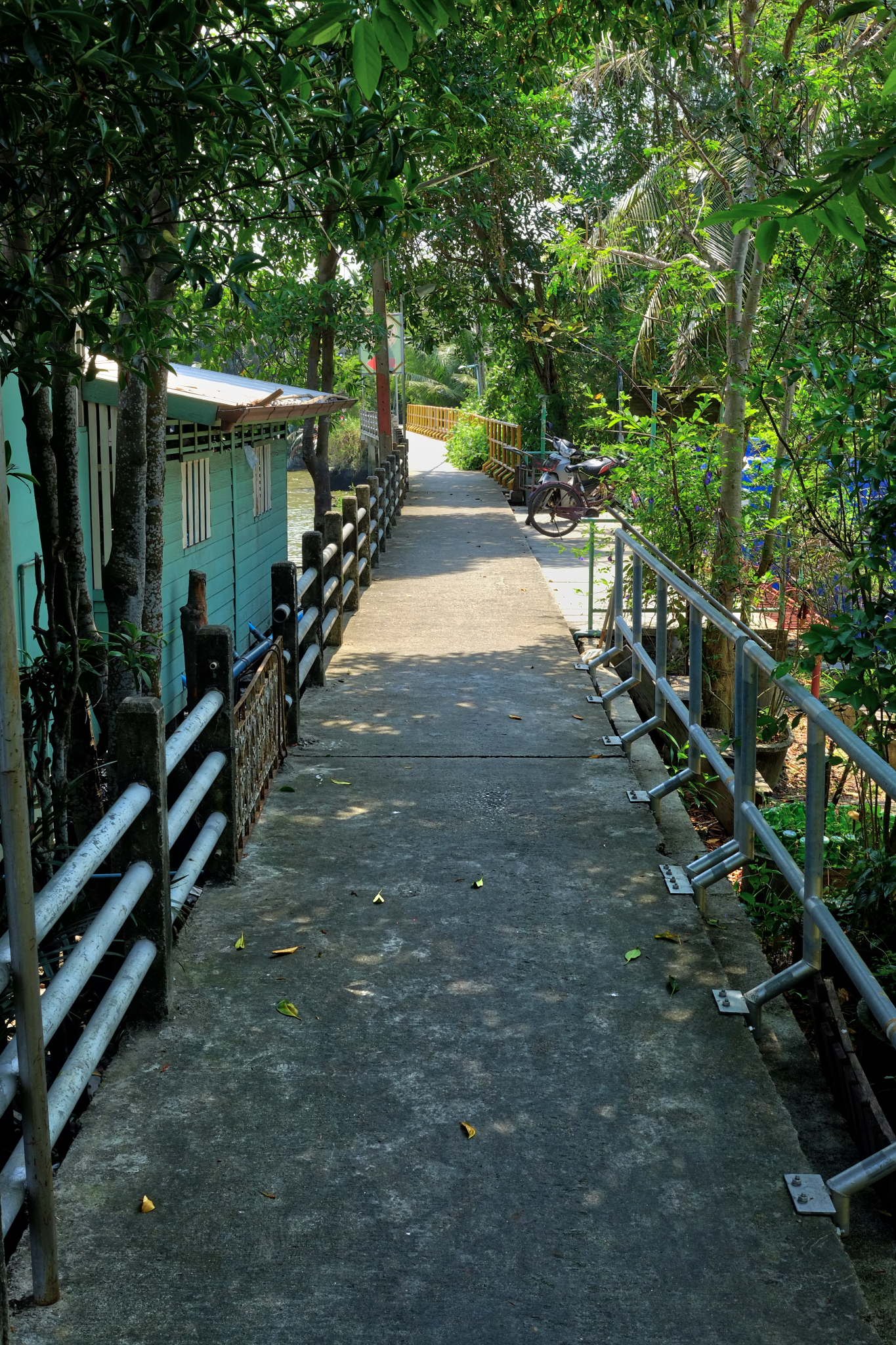 Our ride was in three parts, first we rode to a Wat to receive a blessing form the monks.
Our ride was in three parts, first we rode to a Wat to receive a blessing form the monks.
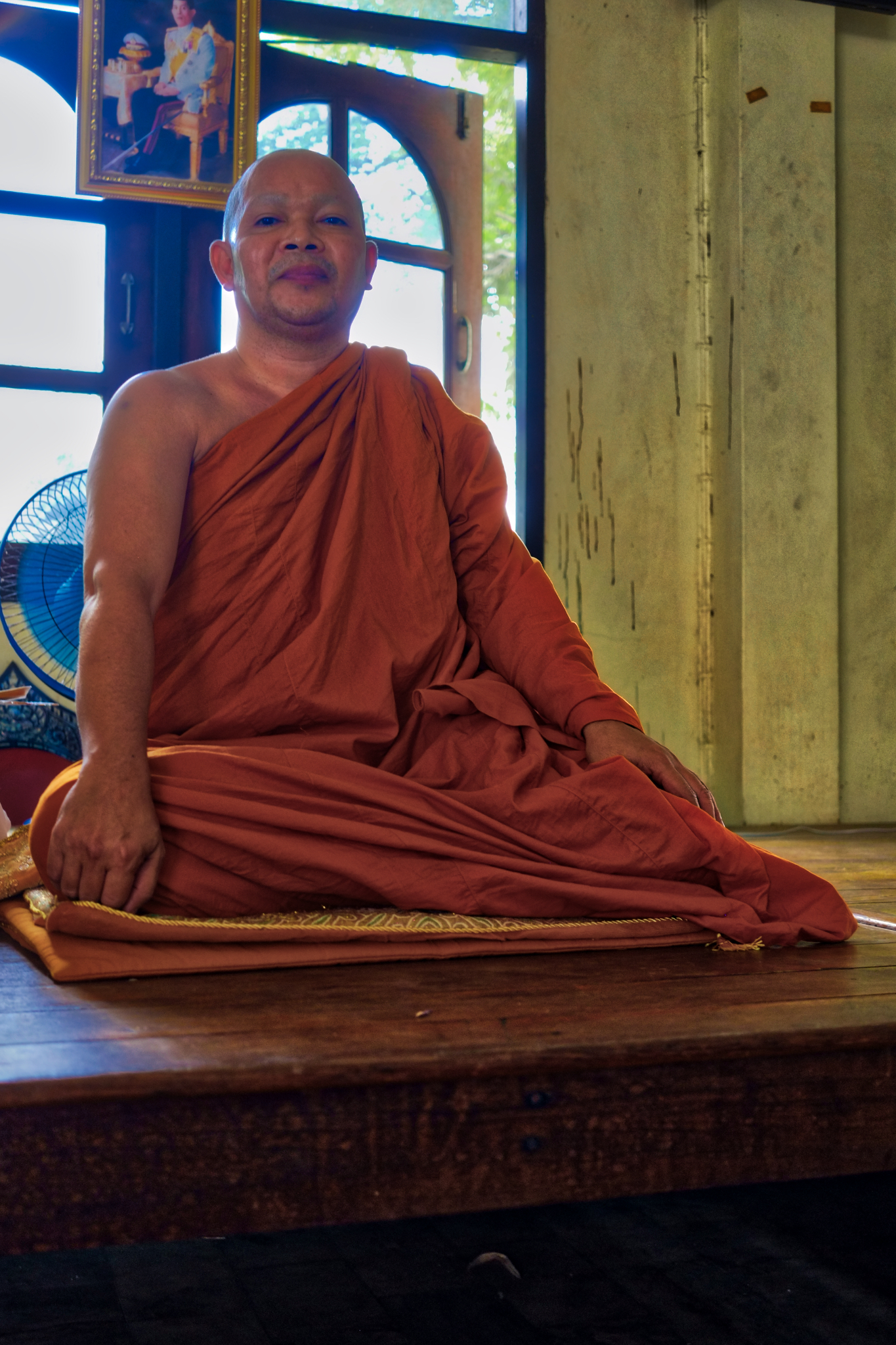 Our monk blessed us.
Our monk blessed us.
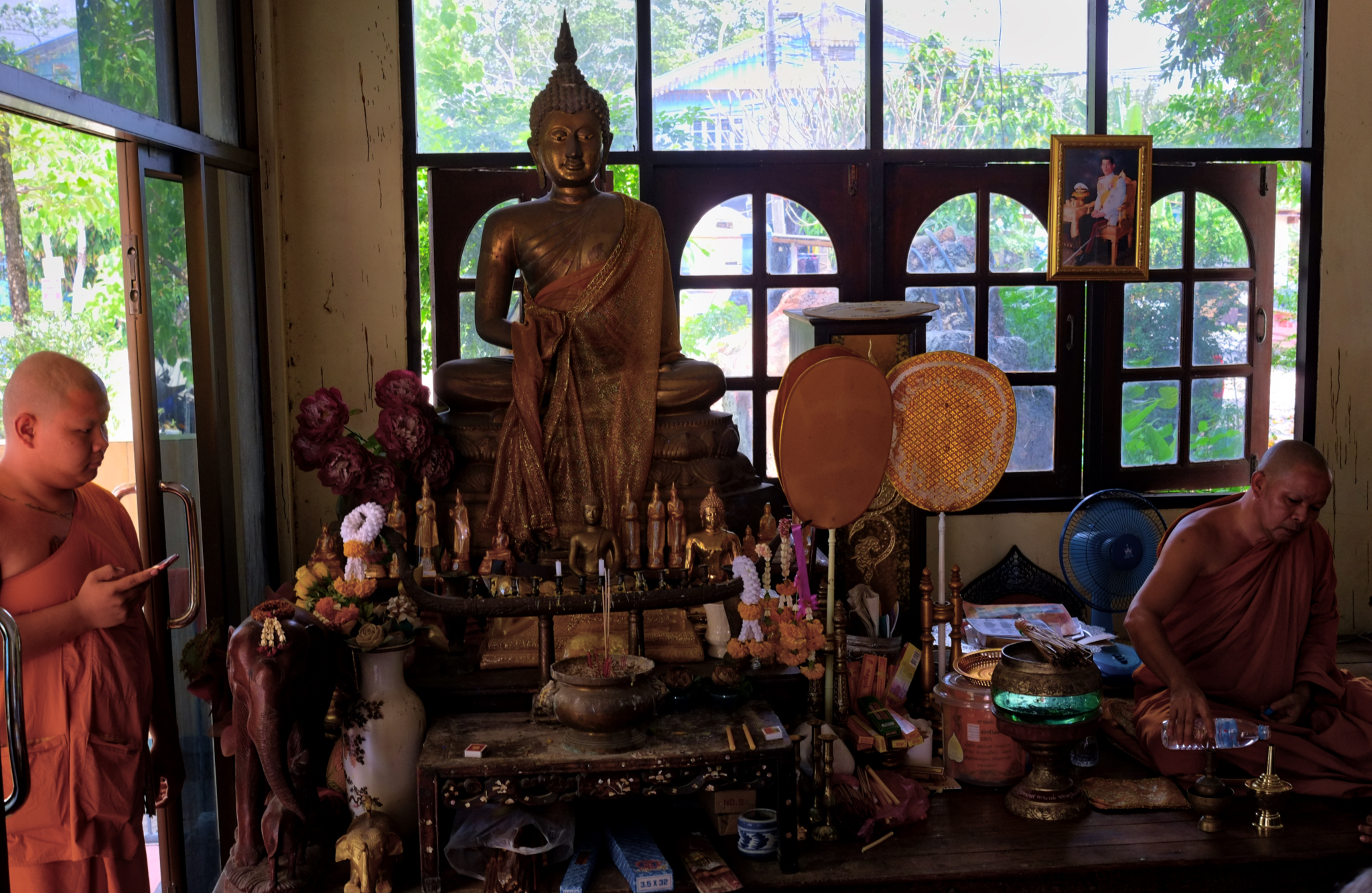 The small wat was very pleasant. The monk on the left held the ancient traditional Buddhist iPhone.
The small wat was very pleasant. The monk on the left held the ancient traditional Buddhist iPhone.
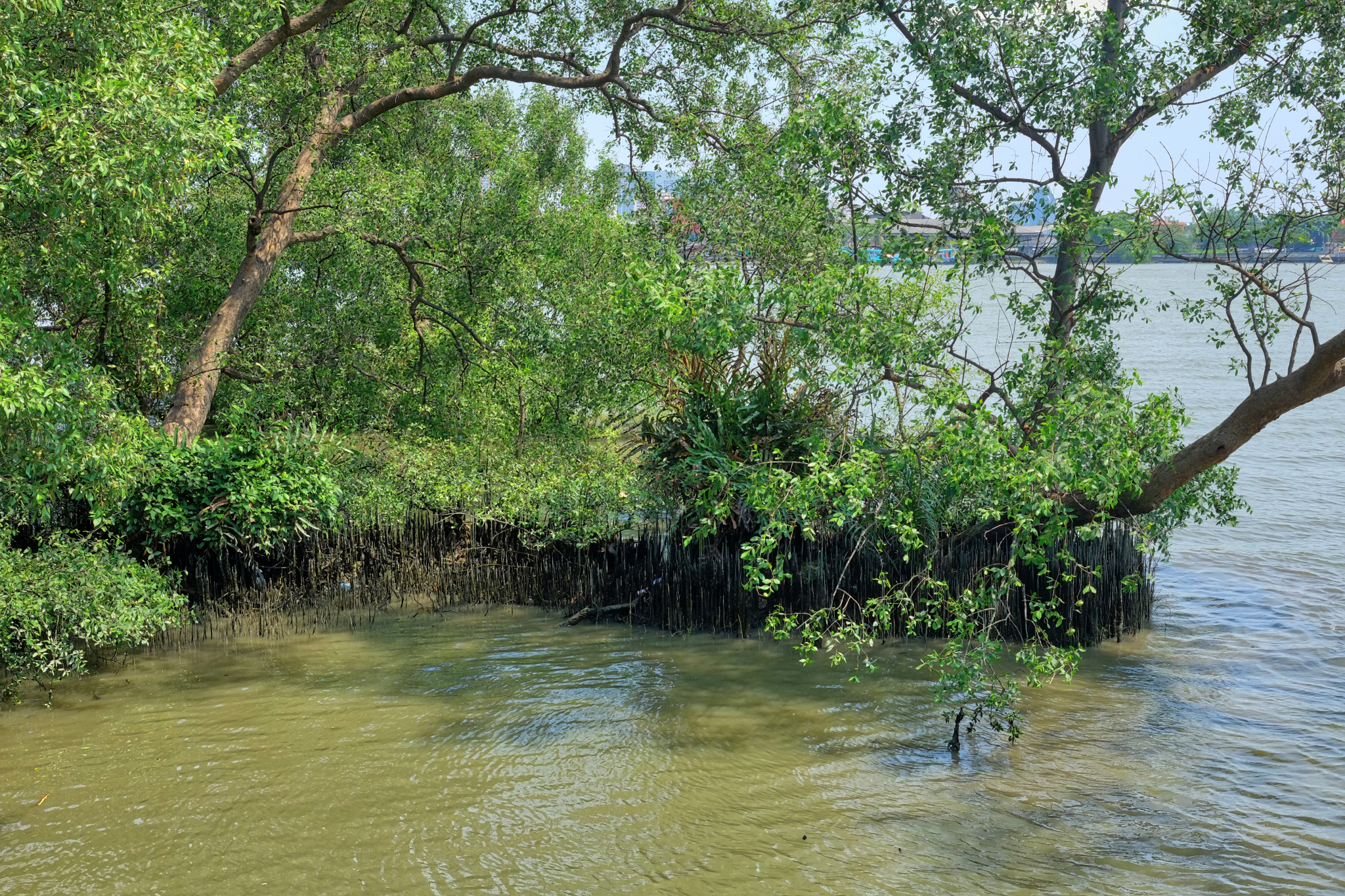 The next leg of our journey was to a wonderful riverside restaurant for a tasty Thai lunch.
The next leg of our journey was to a wonderful riverside restaurant for a tasty Thai lunch.
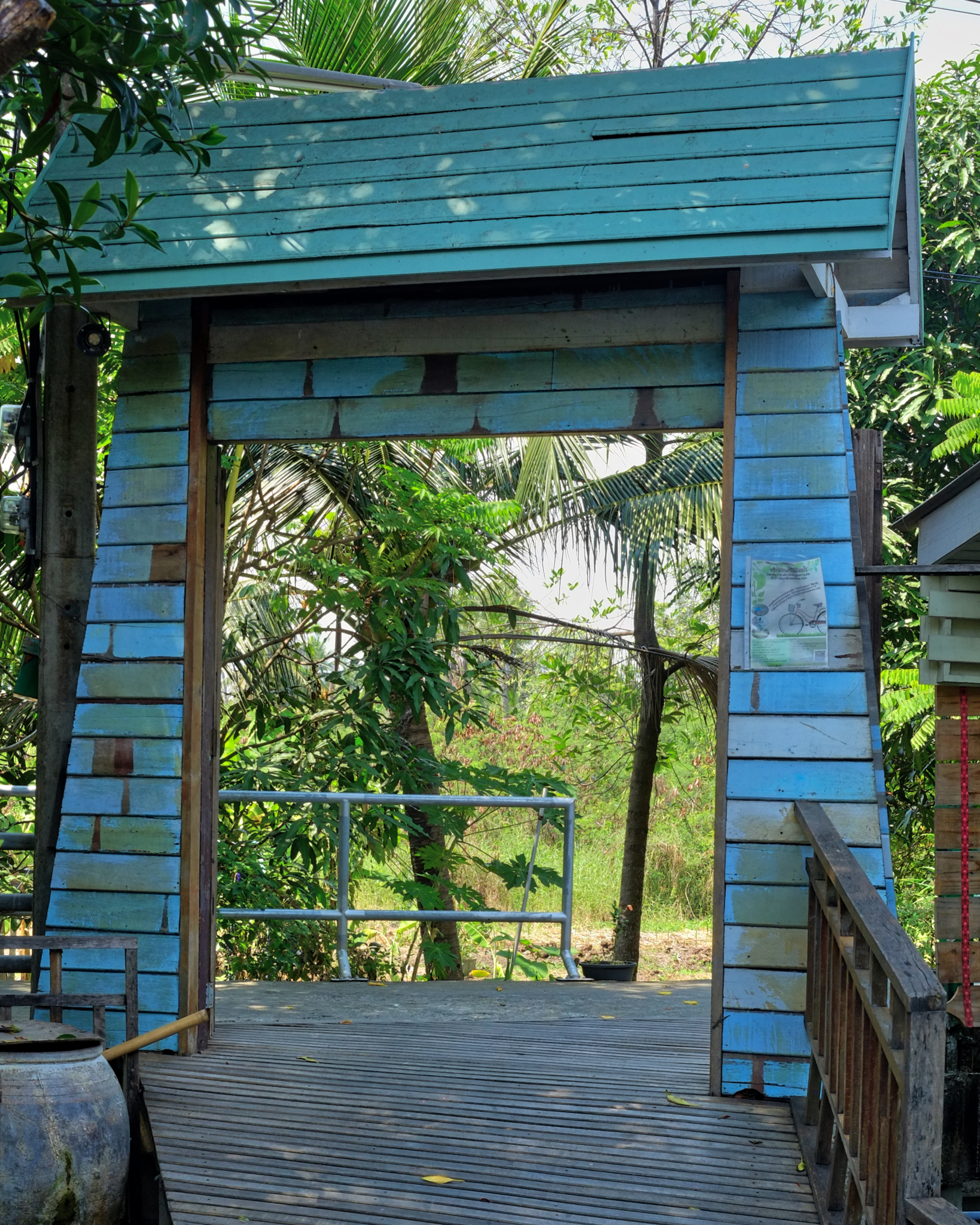 The restaurant gate.
The restaurant gate.
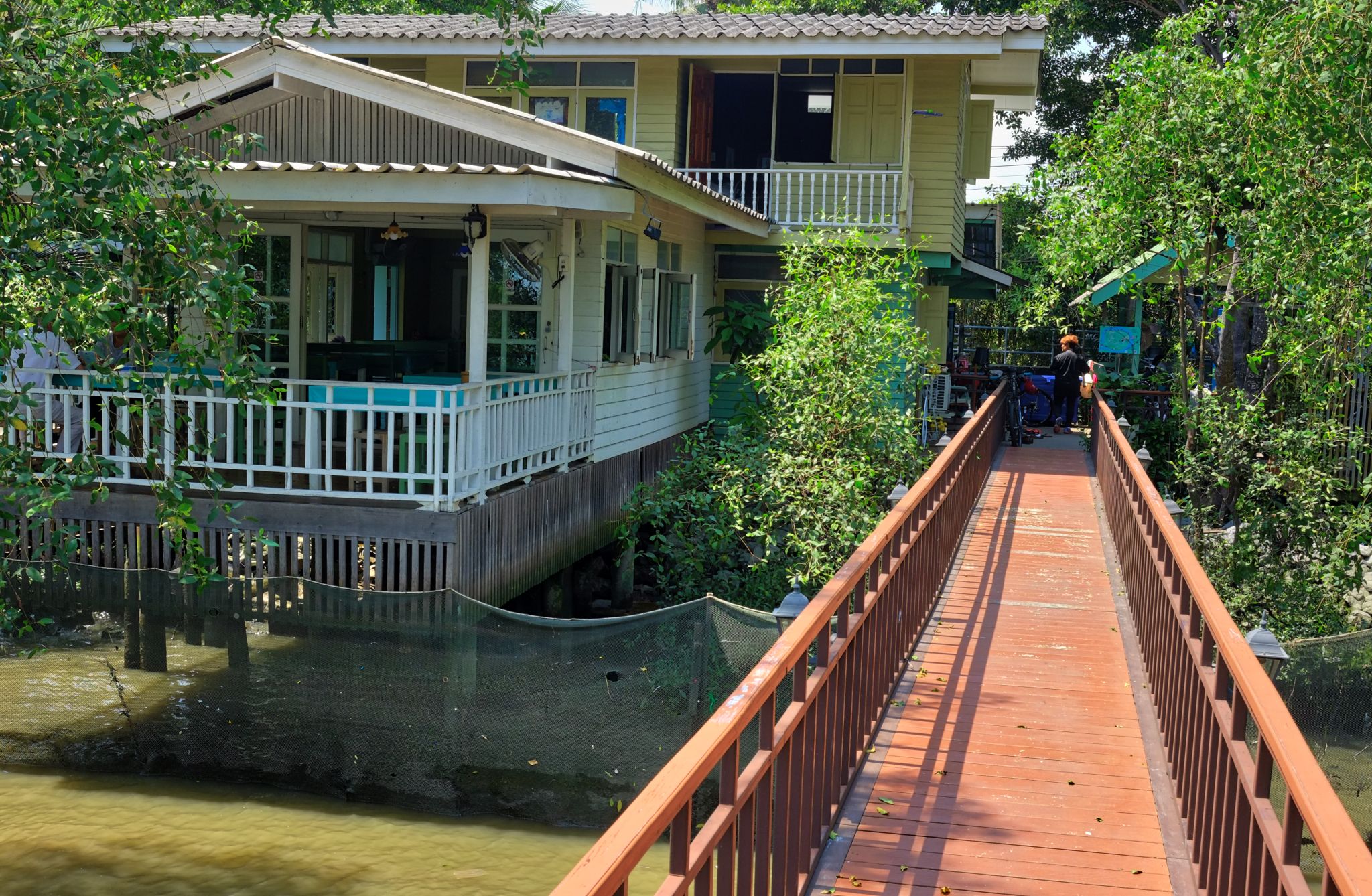 We took our lunch out on a sala over the river, but they had an old house section too for eating.
We took our lunch out on a sala over the river, but they had an old house section too for eating.
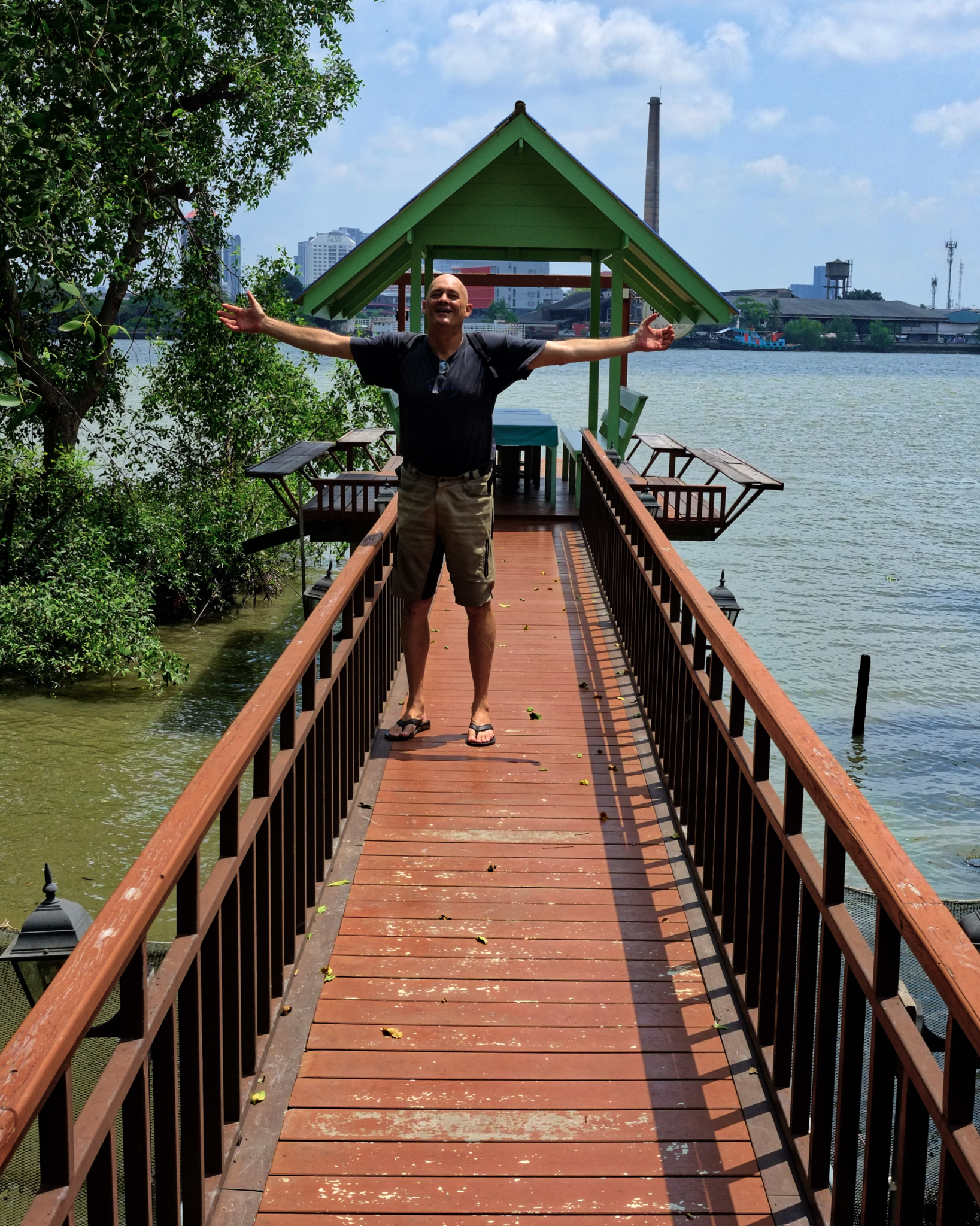 Mick, an English teacher, was happy we were going to eat in the sala.
Mick, an English teacher, was happy we were going to eat in the sala.
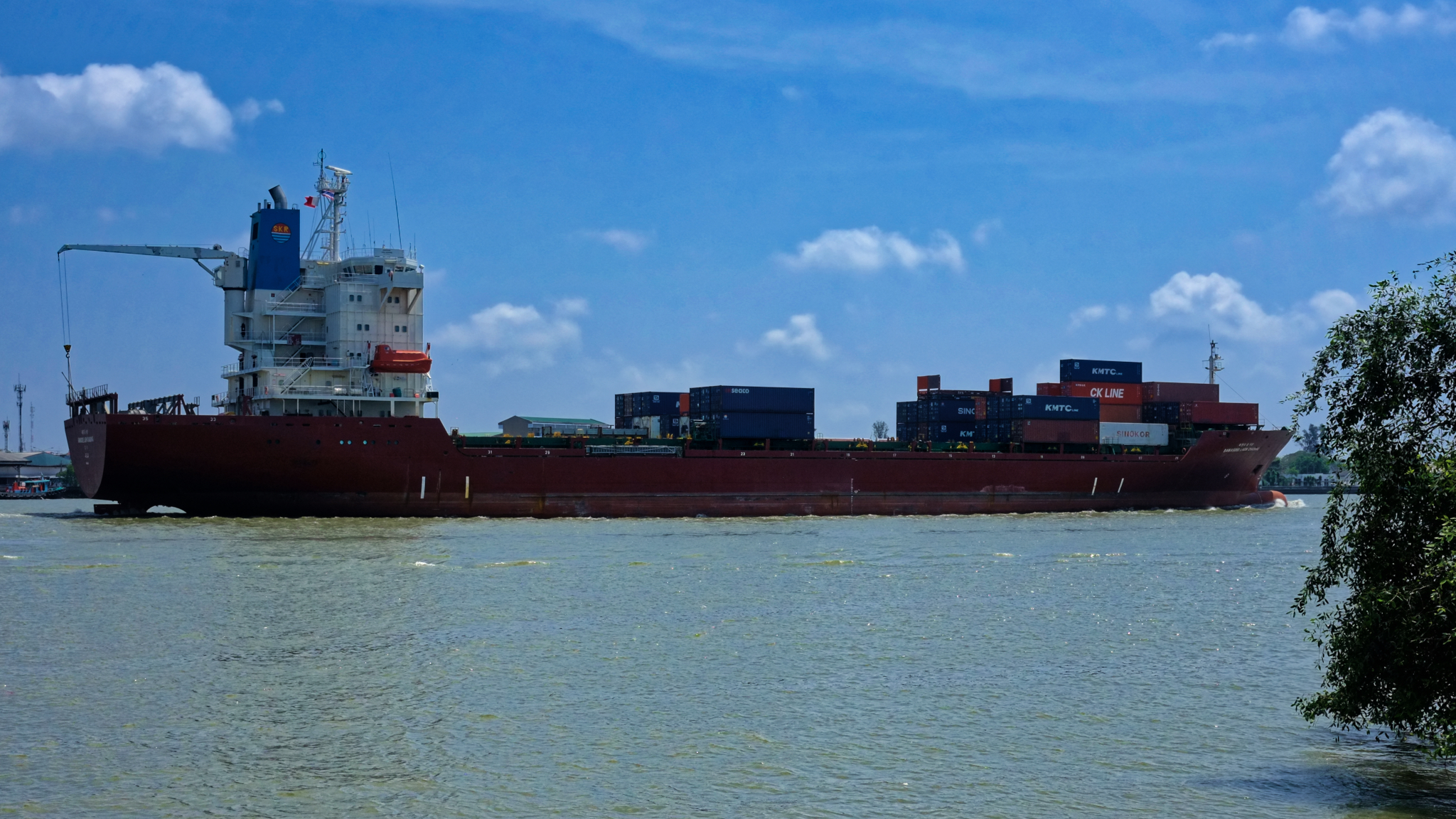 While we ate we watched several ocean going ships navigate up the river to the Port of Bangkok.
While we ate we watched several ocean going ships navigate up the river to the Port of Bangkok.
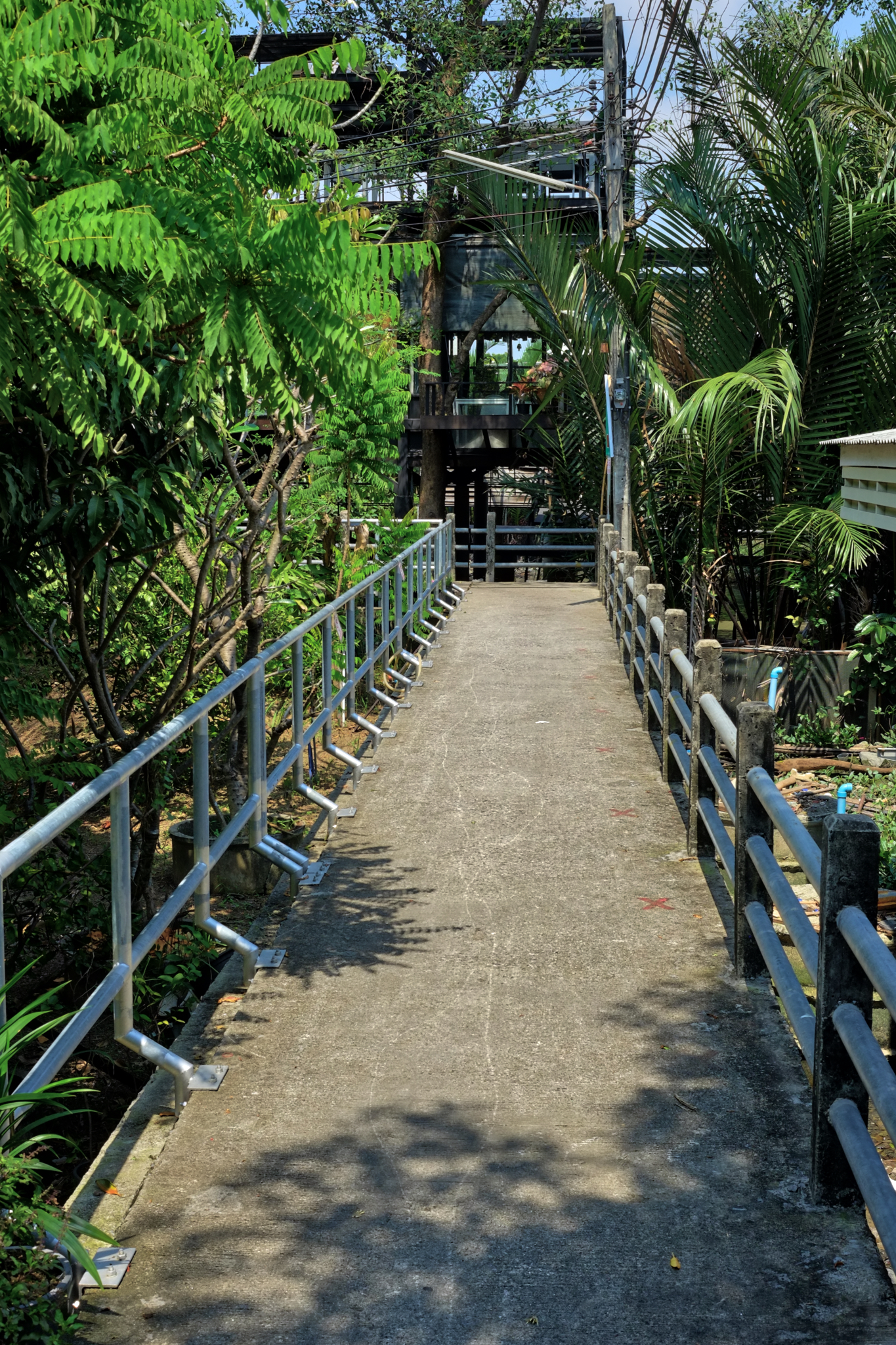 After lunch we literally rode 20 meters to a coffee and dessert shop, Treetops, next door!
After lunch we literally rode 20 meters to a coffee and dessert shop, Treetops, next door!
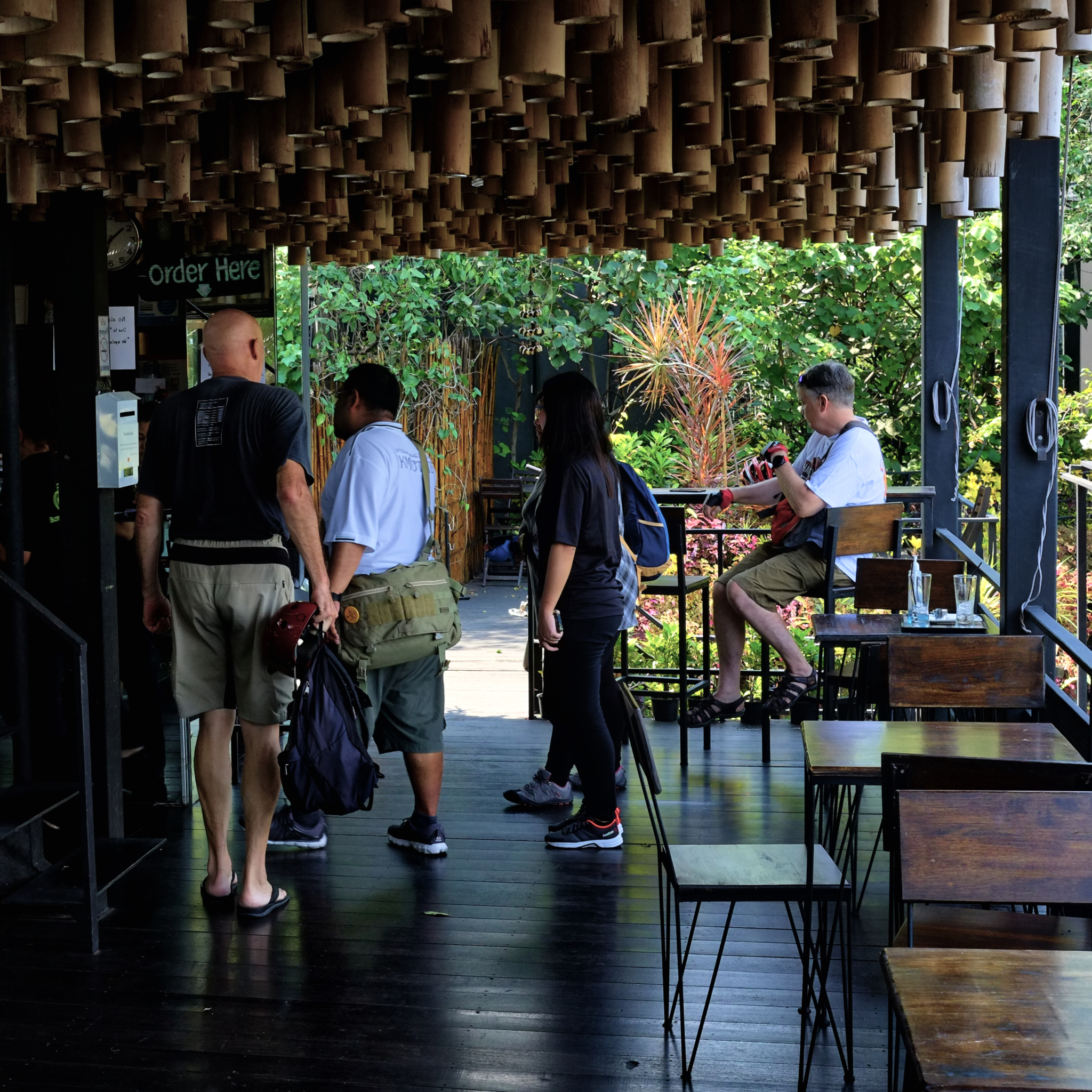 The Treehouse is a beautiful place. We ordered and enjoyed some excellent coffee and an array of desserts.
The Treehouse is a beautiful place. We ordered and enjoyed some excellent coffee and an array of desserts.
 The Treehouse has several rooms for rent. It would be nice to stay out there one night.
The Treehouse has several rooms for rent. It would be nice to stay out there one night.
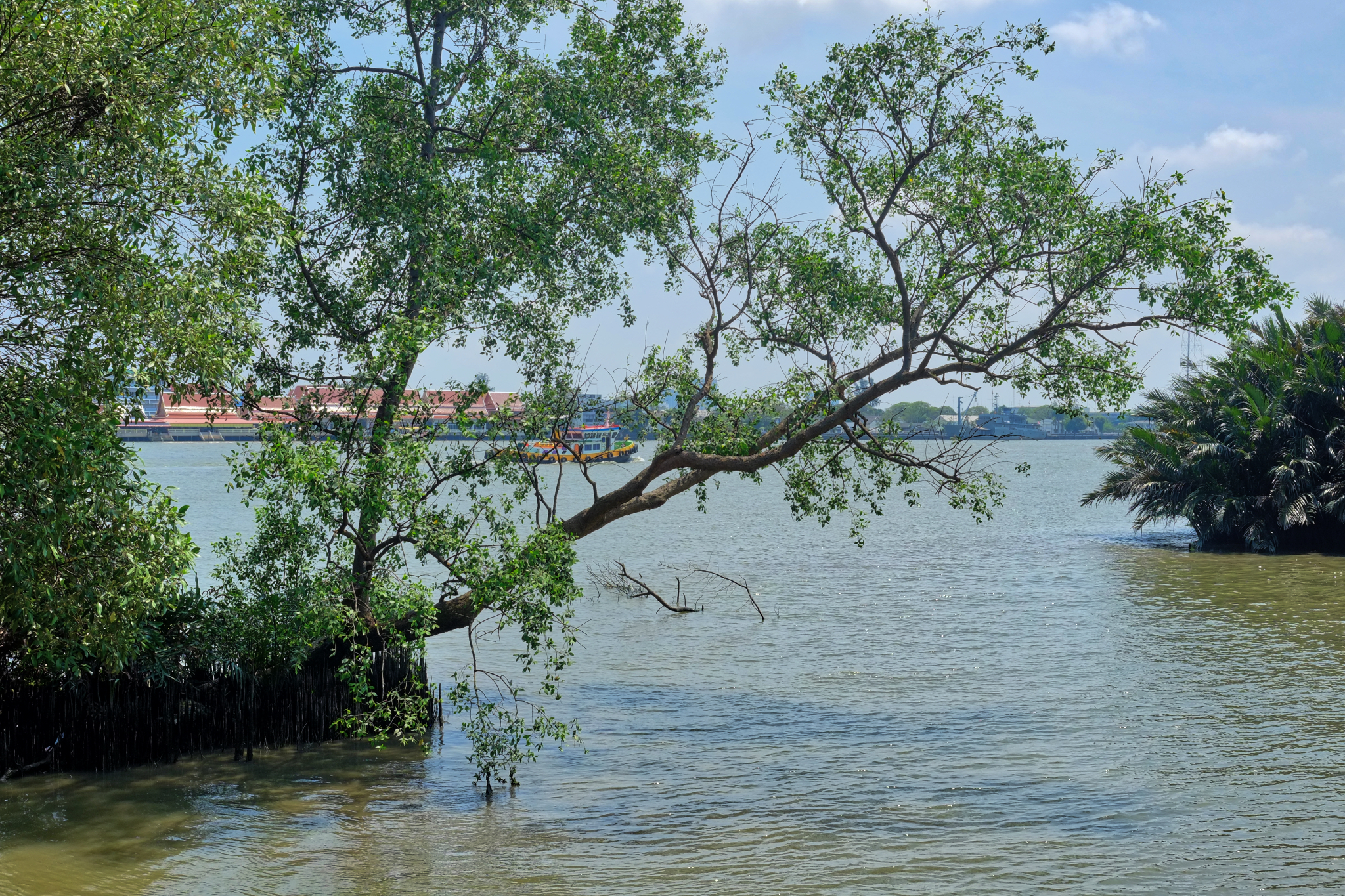 After lunch, coffee, and dessert, we rode along the river toward the Botanical Garden.
After lunch, coffee, and dessert, we rode along the river toward the Botanical Garden.
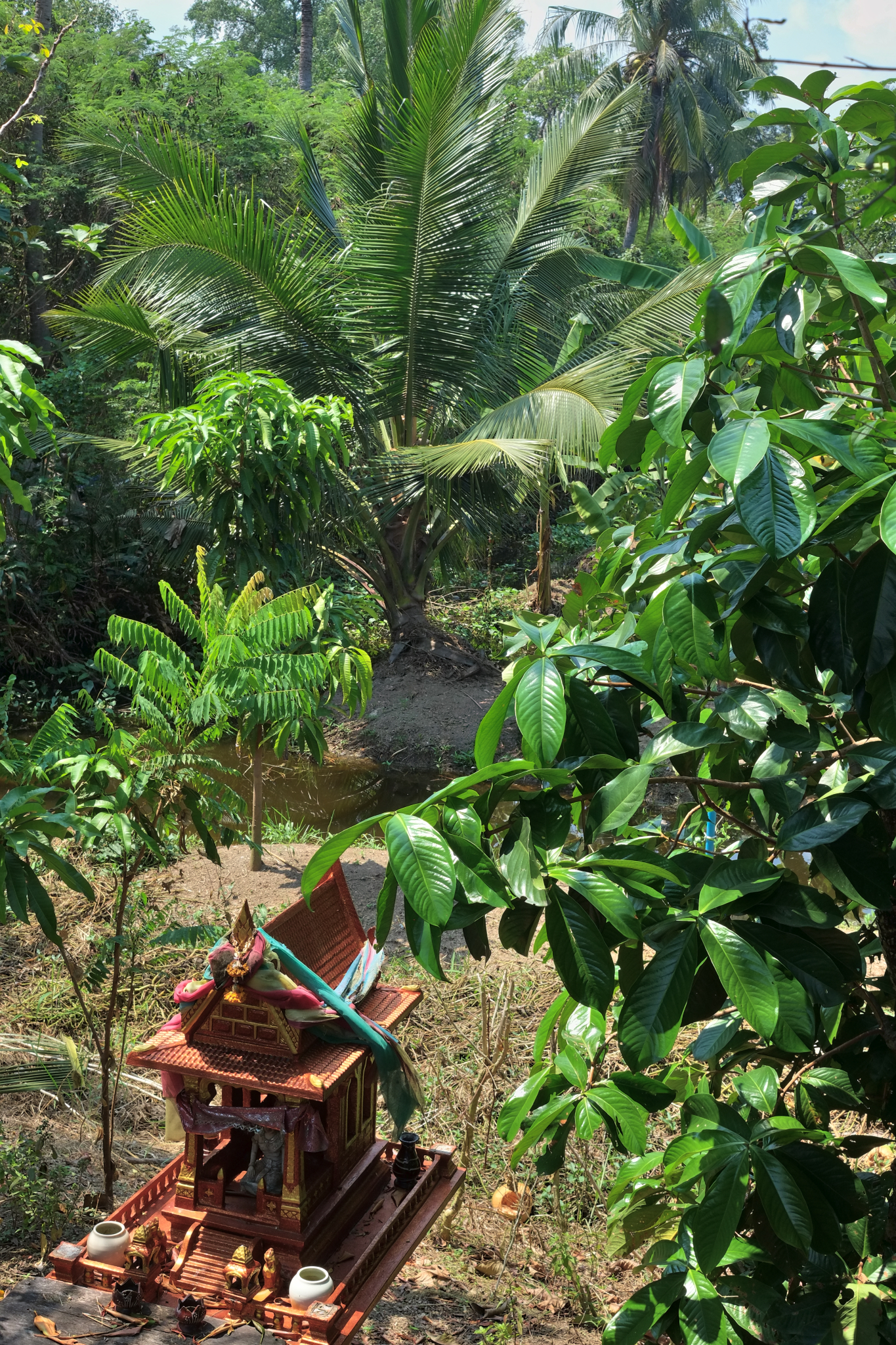 There was some small holding agriculture here and there . . and the requisite spirit houses too.
There was some small holding agriculture here and there . . and the requisite spirit houses too.
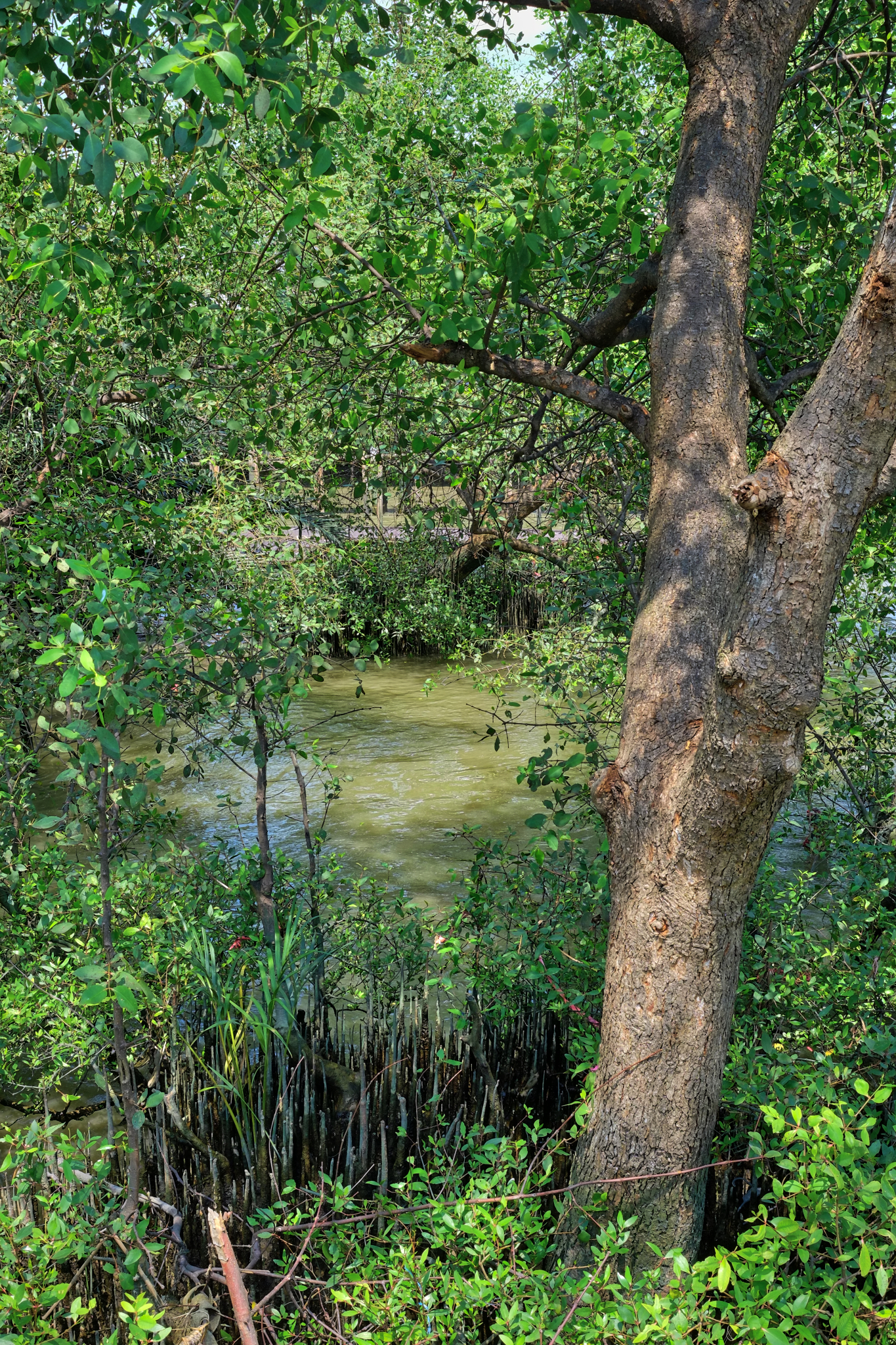 Everyone commented about how wonderful it was that such pristine nature was so close to Bangkok.
Everyone commented about how wonderful it was that such pristine nature was so close to Bangkok.
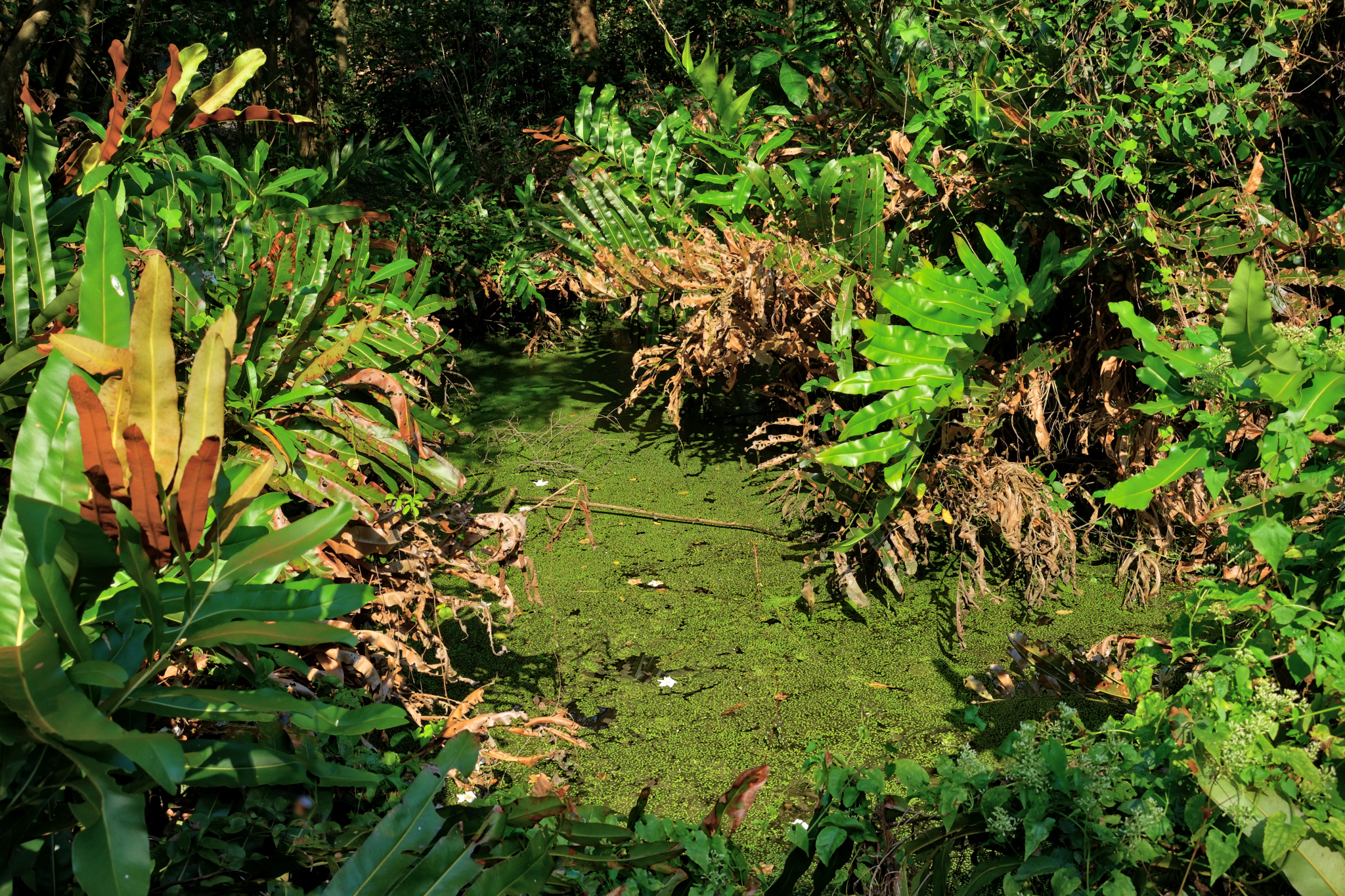 There were many different kinds of plants in the Botanical Garden. Duh!
There were many different kinds of plants in the Botanical Garden. Duh!
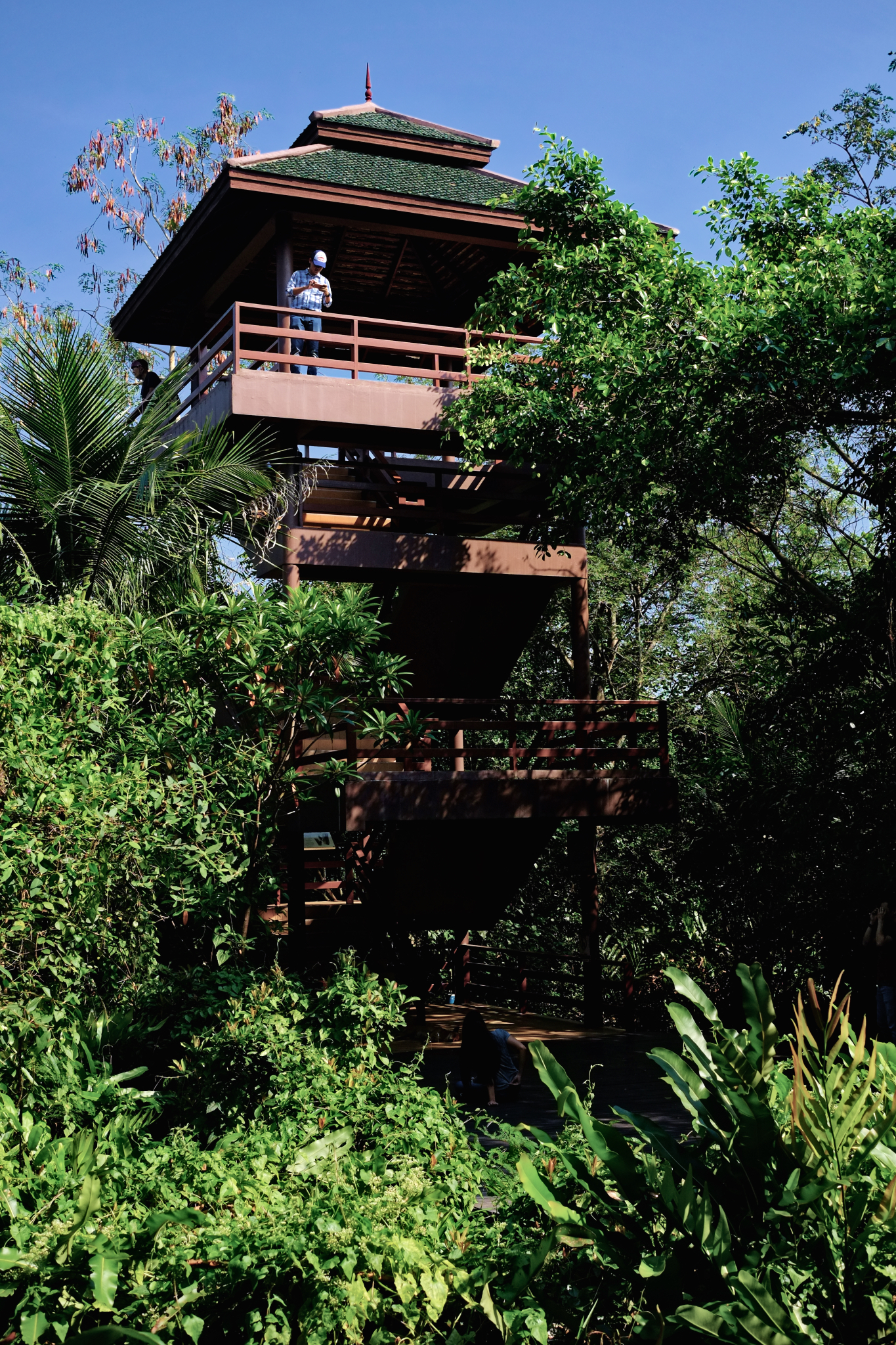 At the Botanical Garden, I climbed the observation tower to take some novelty photos . . . and ones of the wonderful nature.
At the Botanical Garden, I climbed the observation tower to take some novelty photos . . . and ones of the wonderful nature.
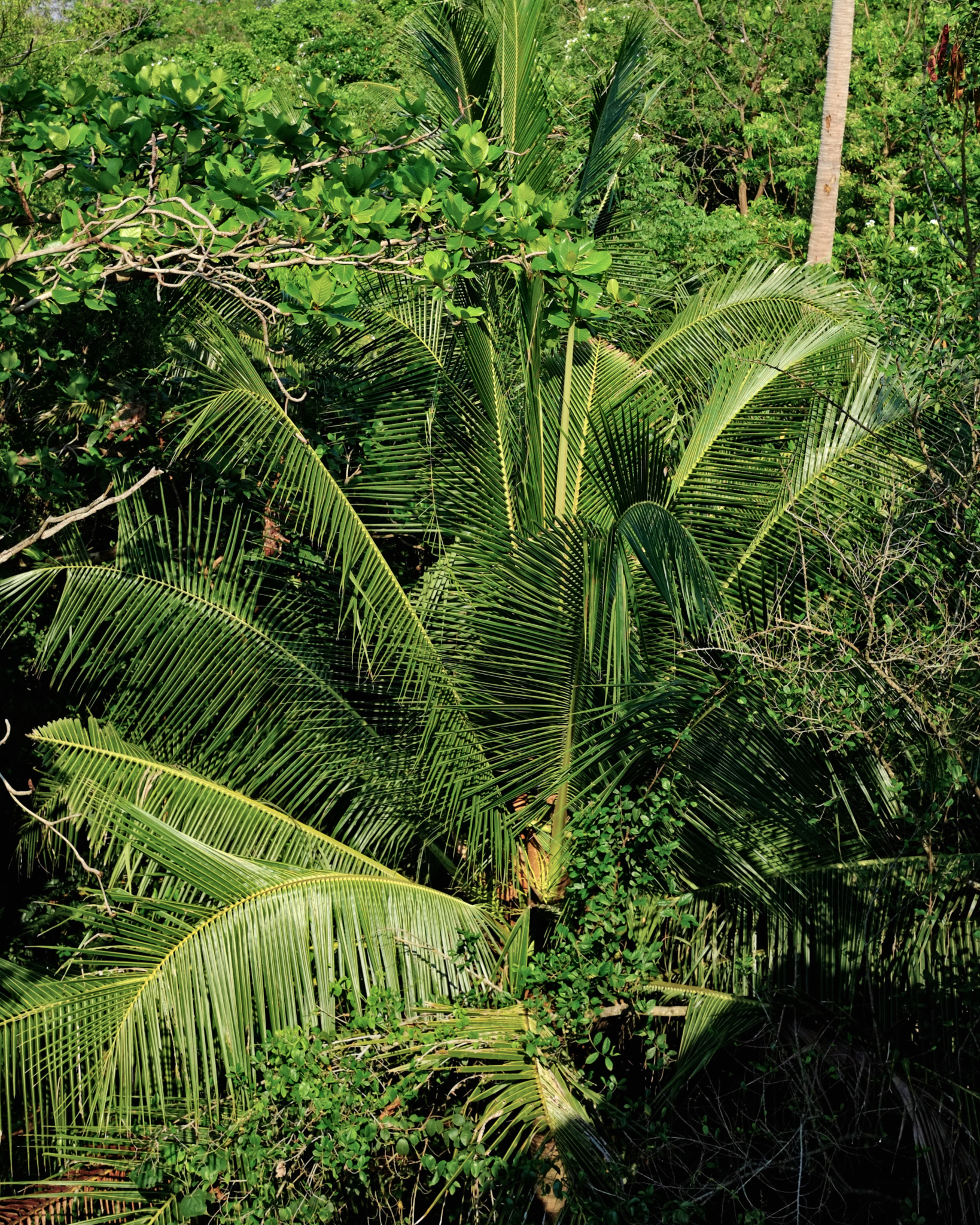 The view from the tower. Our university van picked us up at the Botanical Garden and took us home. We had a great day out and about.
The view from the tower. Our university van picked us up at the Botanical Garden and took us home. We had a great day out and about.
Out and About in Pakkret, My Hometown
 Sunday, February 11, 2018 at 11:48AM
Sunday, February 11, 2018 at 11:48AM 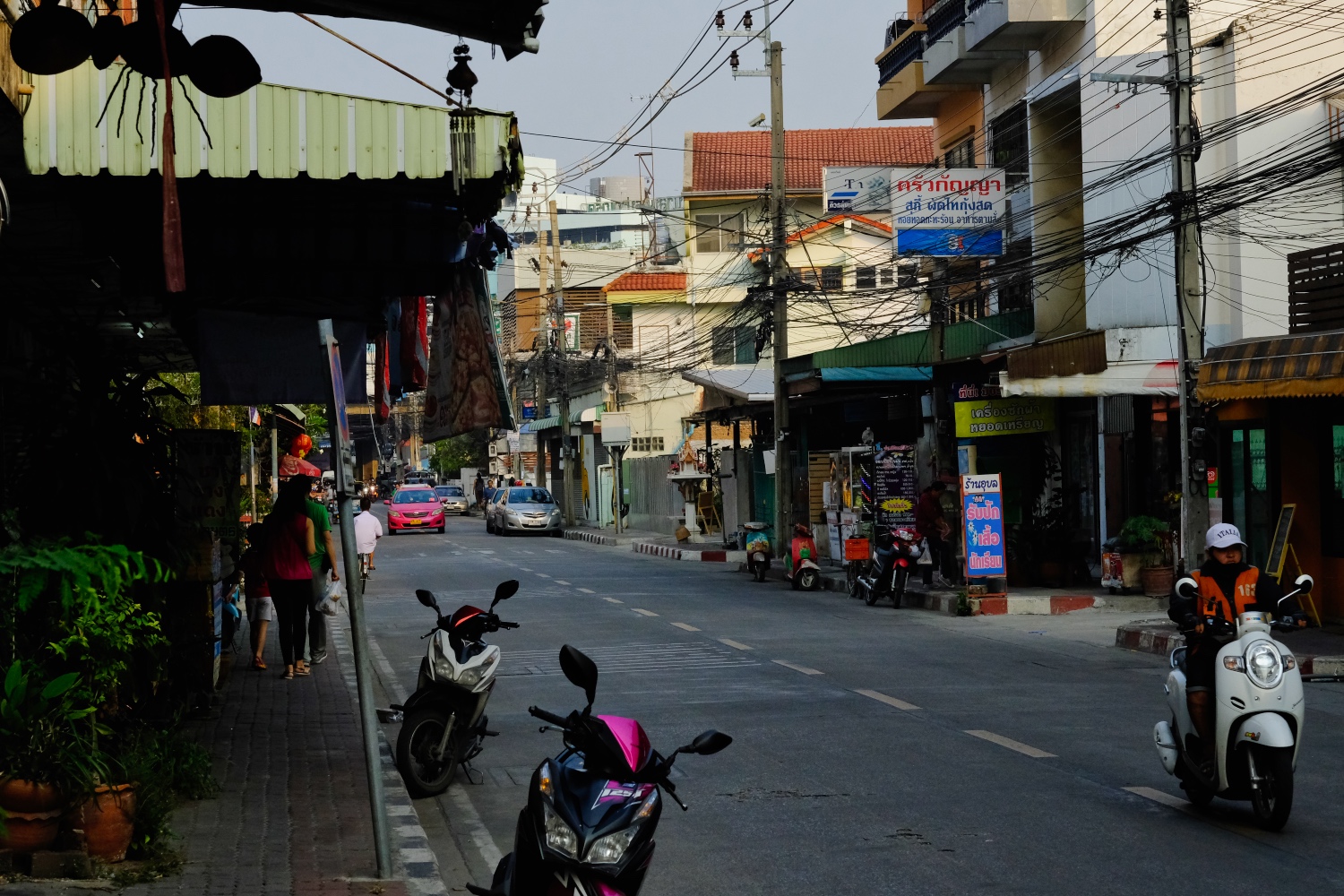 Pakkret* (variously Pak Kred or Pak Kret) is a small municipality (population 180,000) in the Thai province of Nonthaburi, 10 miles up the Chao Phayra River from the heart of Bangkok. [* The name Pakkret derives from the Thai, Ban Pak Tret Noi (บ้านปากเตร็ดน้อย), meaning village on the mouth of the lesser bypass.]
Pakkret* (variously Pak Kred or Pak Kret) is a small municipality (population 180,000) in the Thai province of Nonthaburi, 10 miles up the Chao Phayra River from the heart of Bangkok. [* The name Pakkret derives from the Thai, Ban Pak Tret Noi (บ้านปากเตร็ดน้อย), meaning village on the mouth of the lesser bypass.]
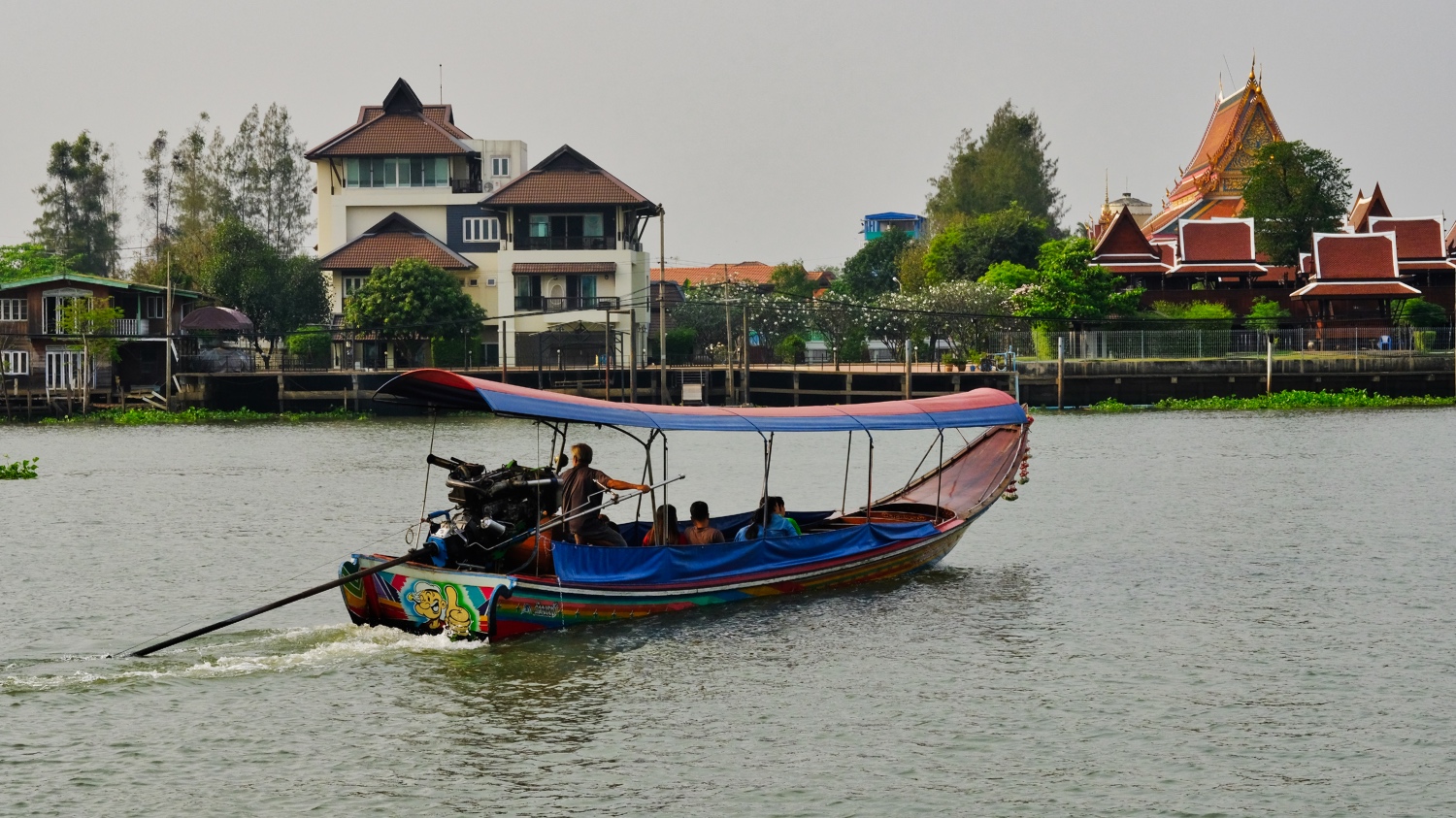 Pakkret sits on the east shore of the busy river. Longtail boats and ferries move people across and around the river banks.
Pakkret sits on the east shore of the busy river. Longtail boats and ferries move people across and around the river banks.
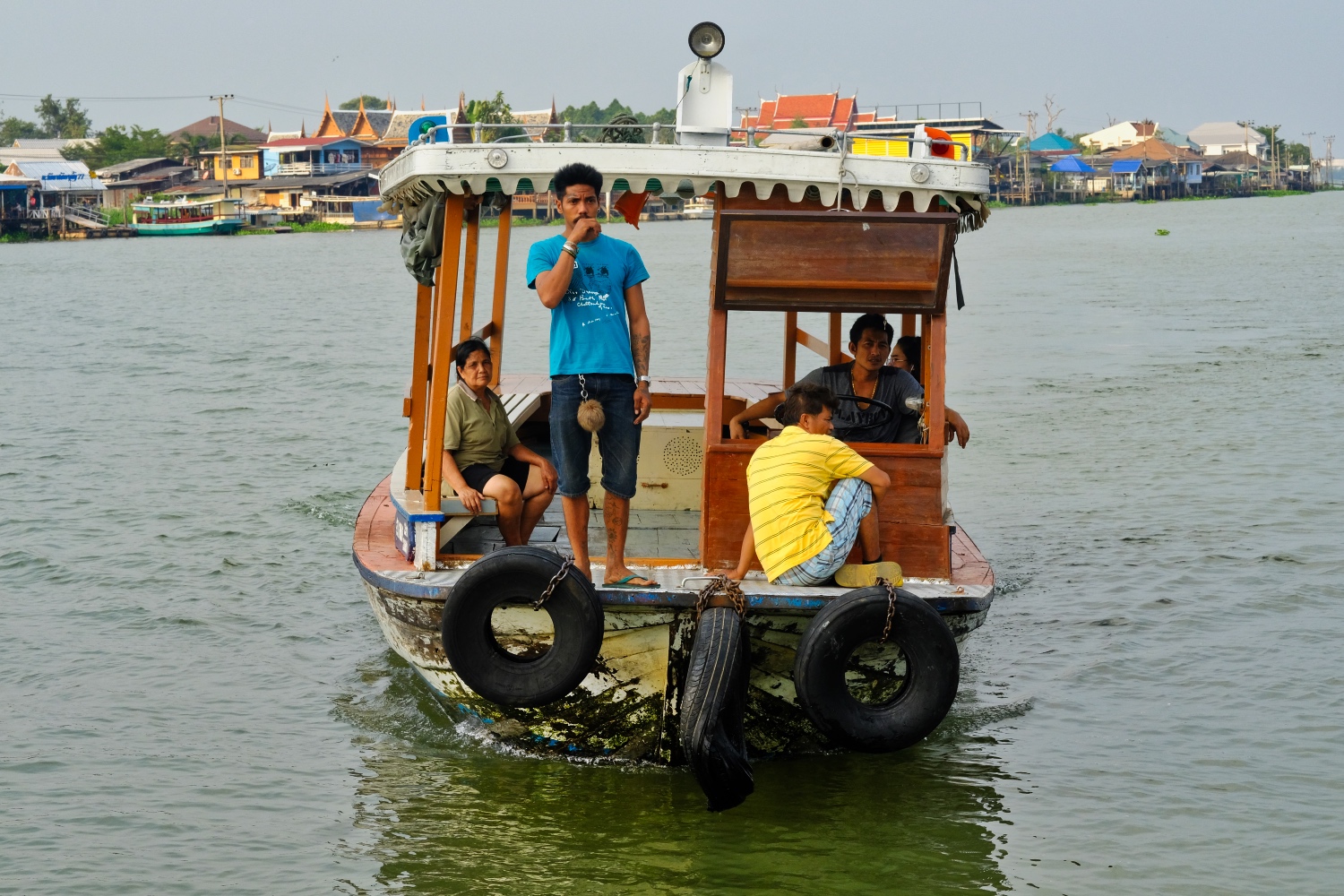 Small government ferries take shoppers headed to the big Pakkret Market . . . for 3 baht (US$0.09).
Small government ferries take shoppers headed to the big Pakkret Market . . . for 3 baht (US$0.09).
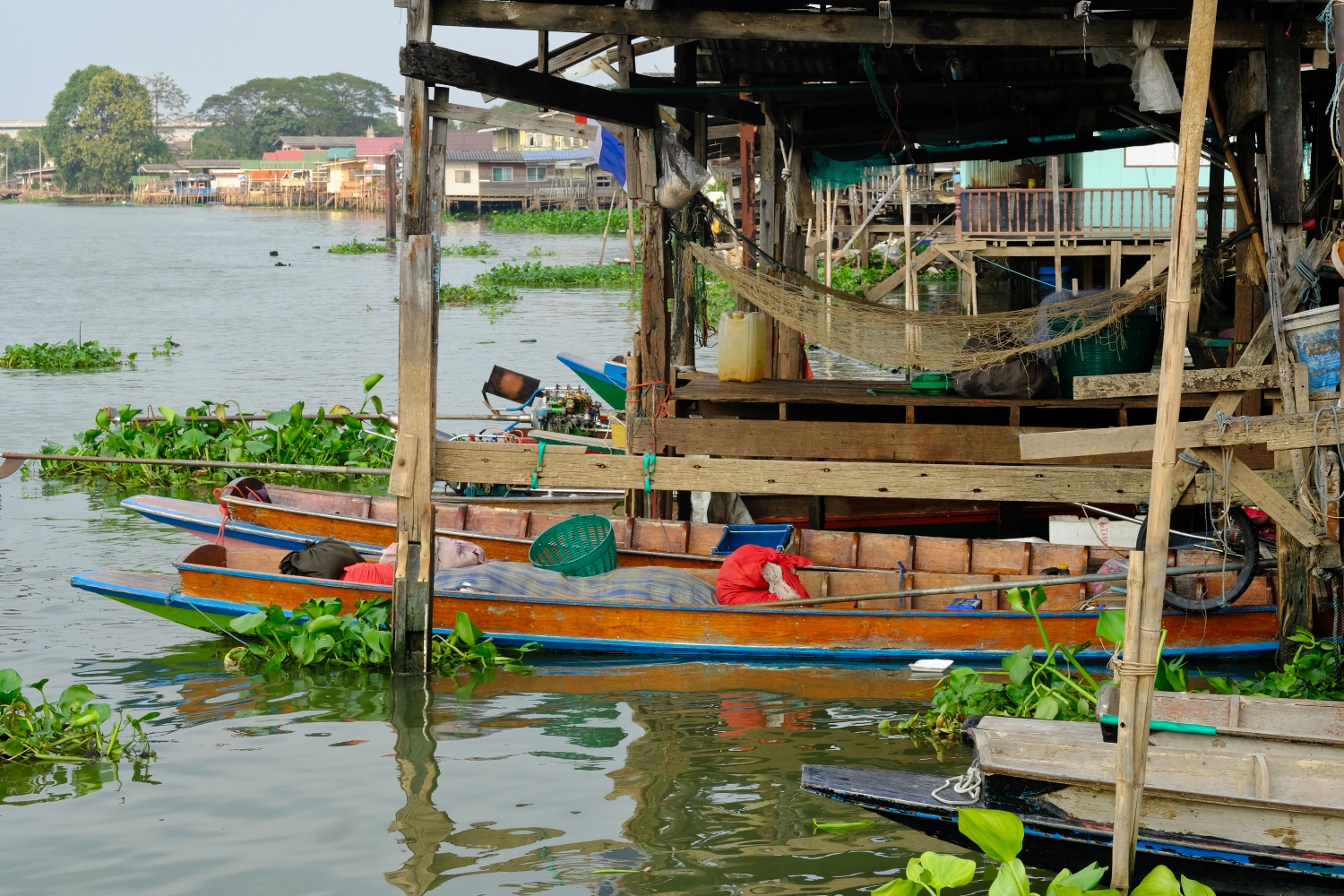 Many wooden houses on wooden pilings line the river at Pakkret. Many of these houses sit below the river flood level and the residents vacate their home for 2-3 months of the year.
Many wooden houses on wooden pilings line the river at Pakkret. Many of these houses sit below the river flood level and the residents vacate their home for 2-3 months of the year.
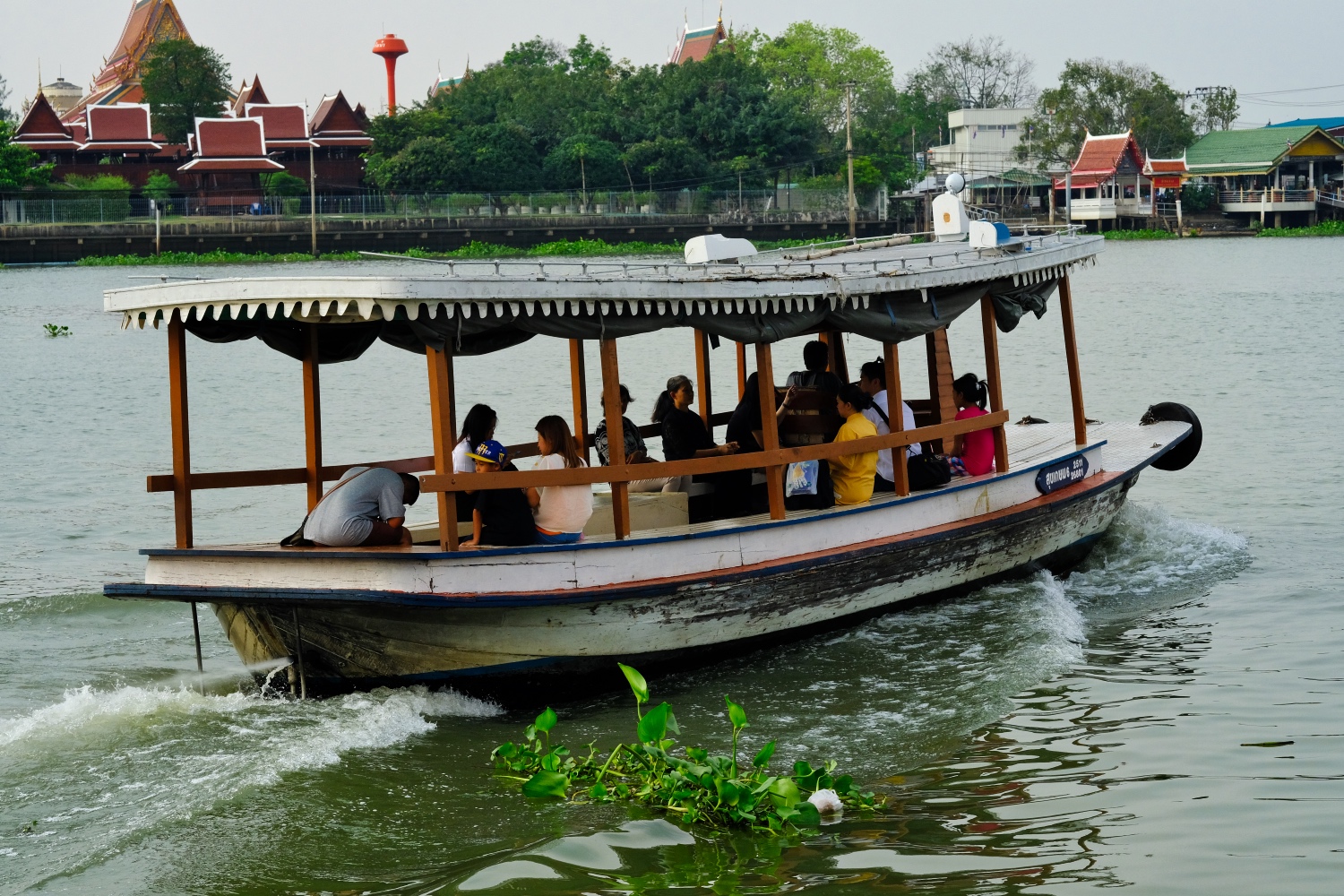 Shoppers going back across the river.
Shoppers going back across the river.
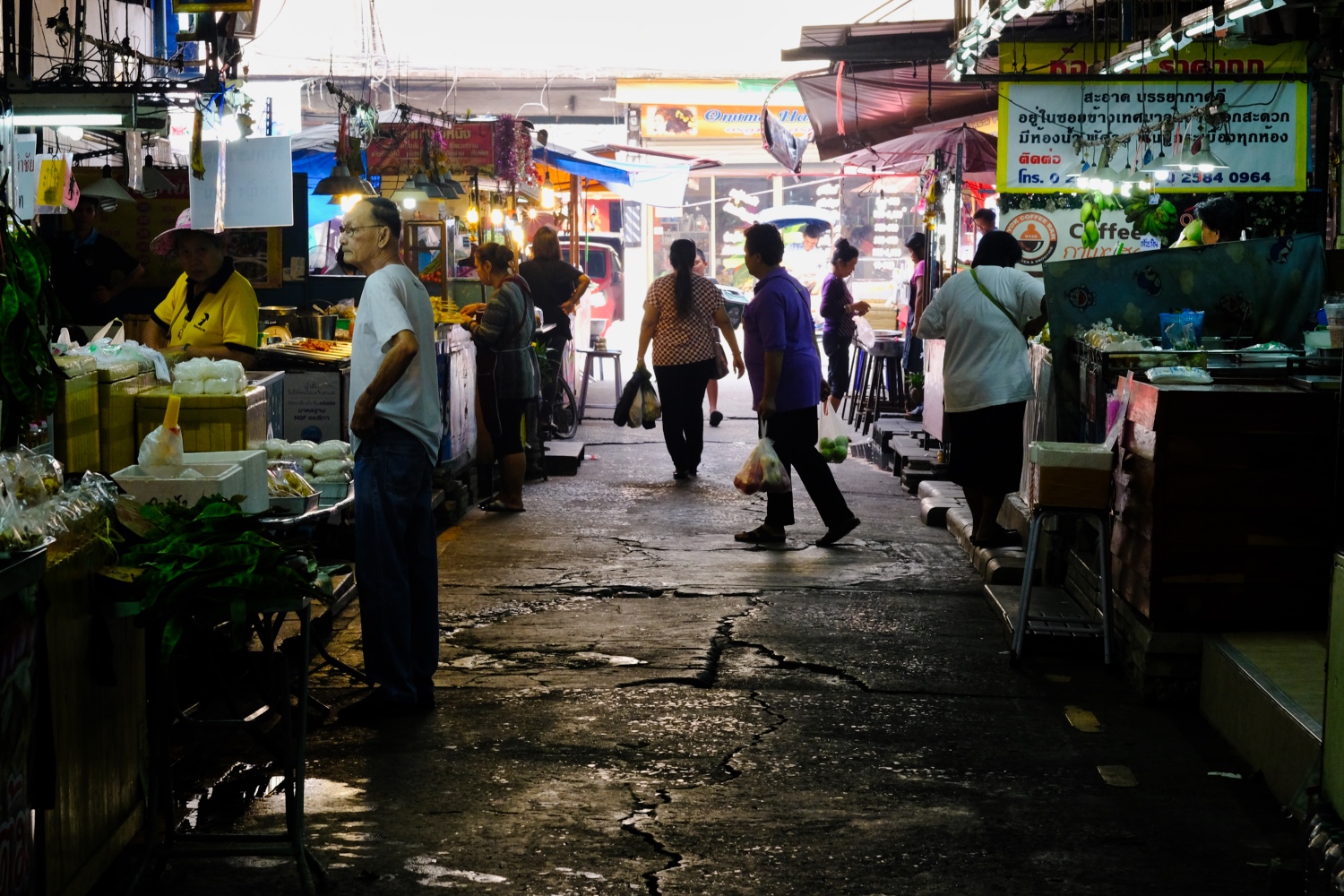 When I think of Pakkret I think of the river . . . and the two grand markets.
When I think of Pakkret I think of the river . . . and the two grand markets.
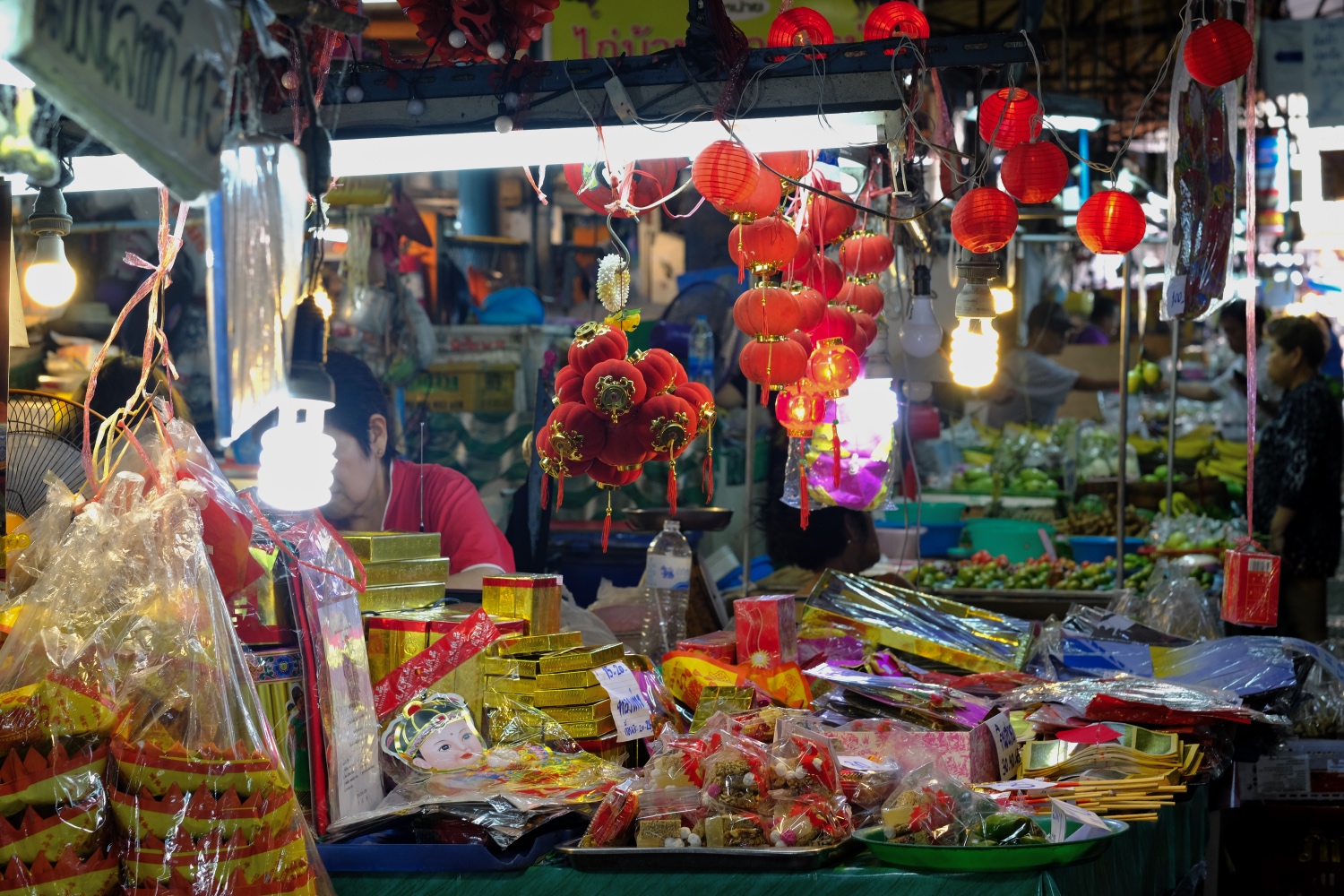 With Chinese New Year just a week away, the Pakkret market has taken on a festive feel.
With Chinese New Year just a week away, the Pakkret market has taken on a festive feel.
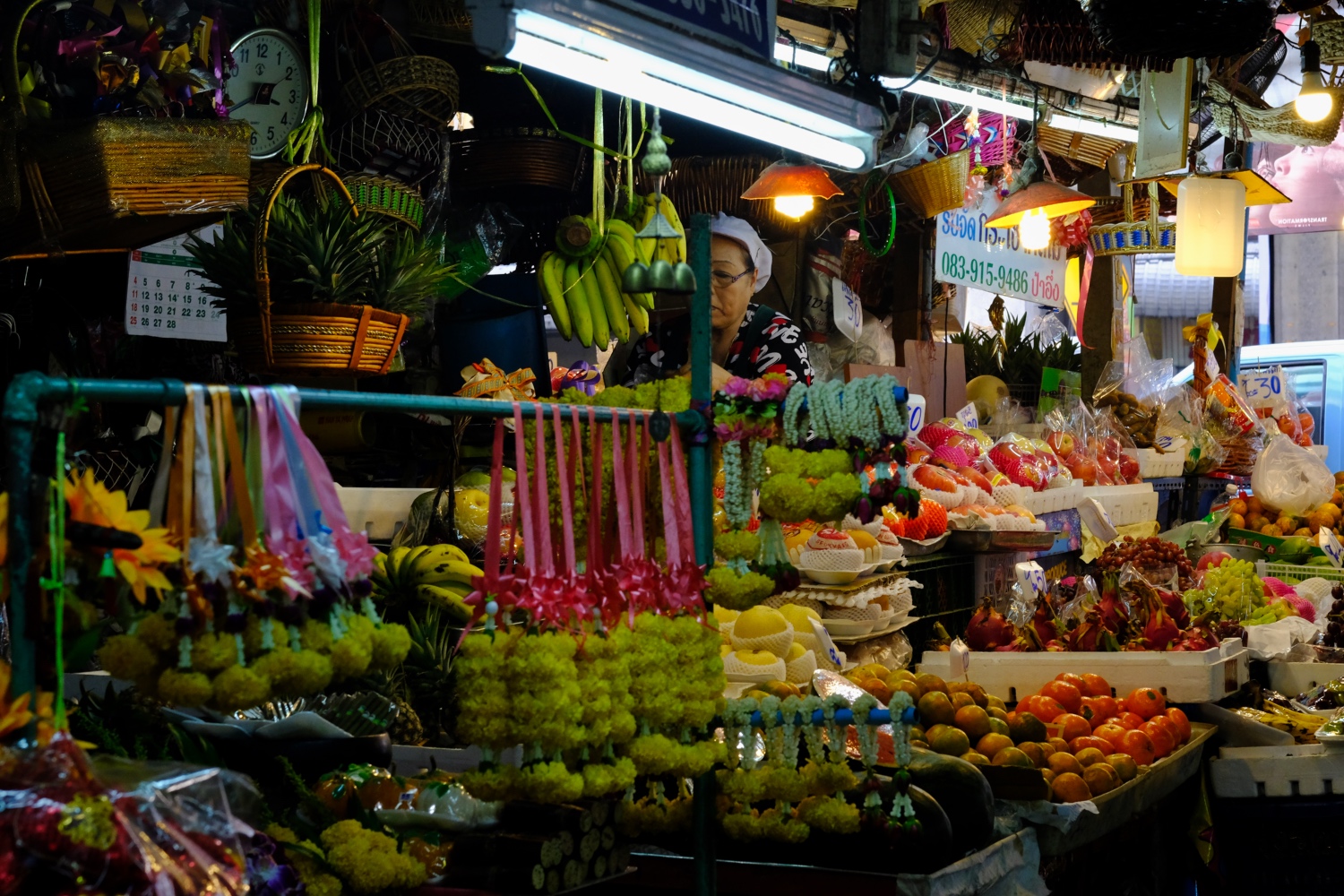 The Pakkret market is a very visually stimulating place . . . and an olfactory stimulating place. Wonderful smells.
The Pakkret market is a very visually stimulating place . . . and an olfactory stimulating place. Wonderful smells.
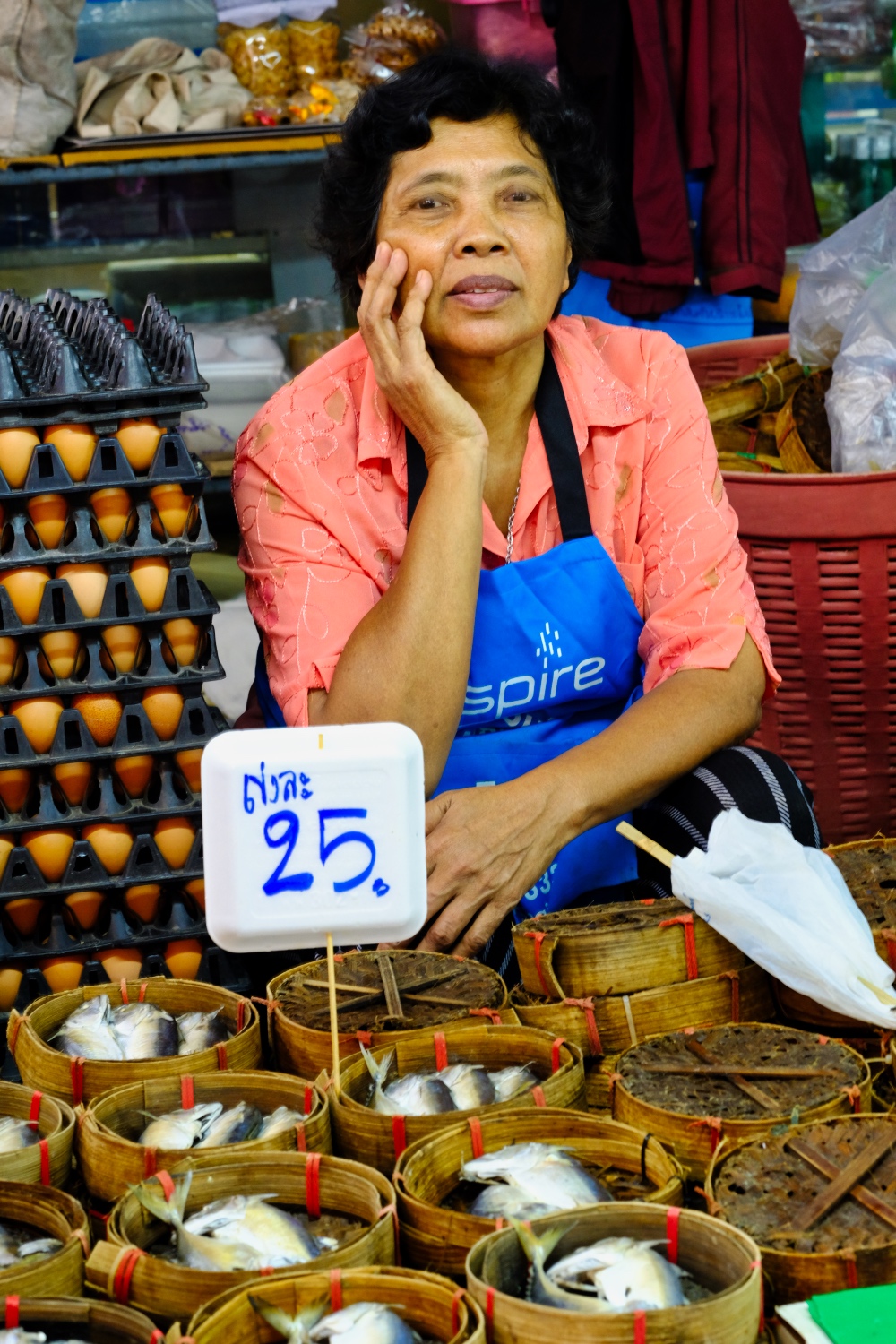 A Pakkret market fish hawker.
A Pakkret market fish hawker.
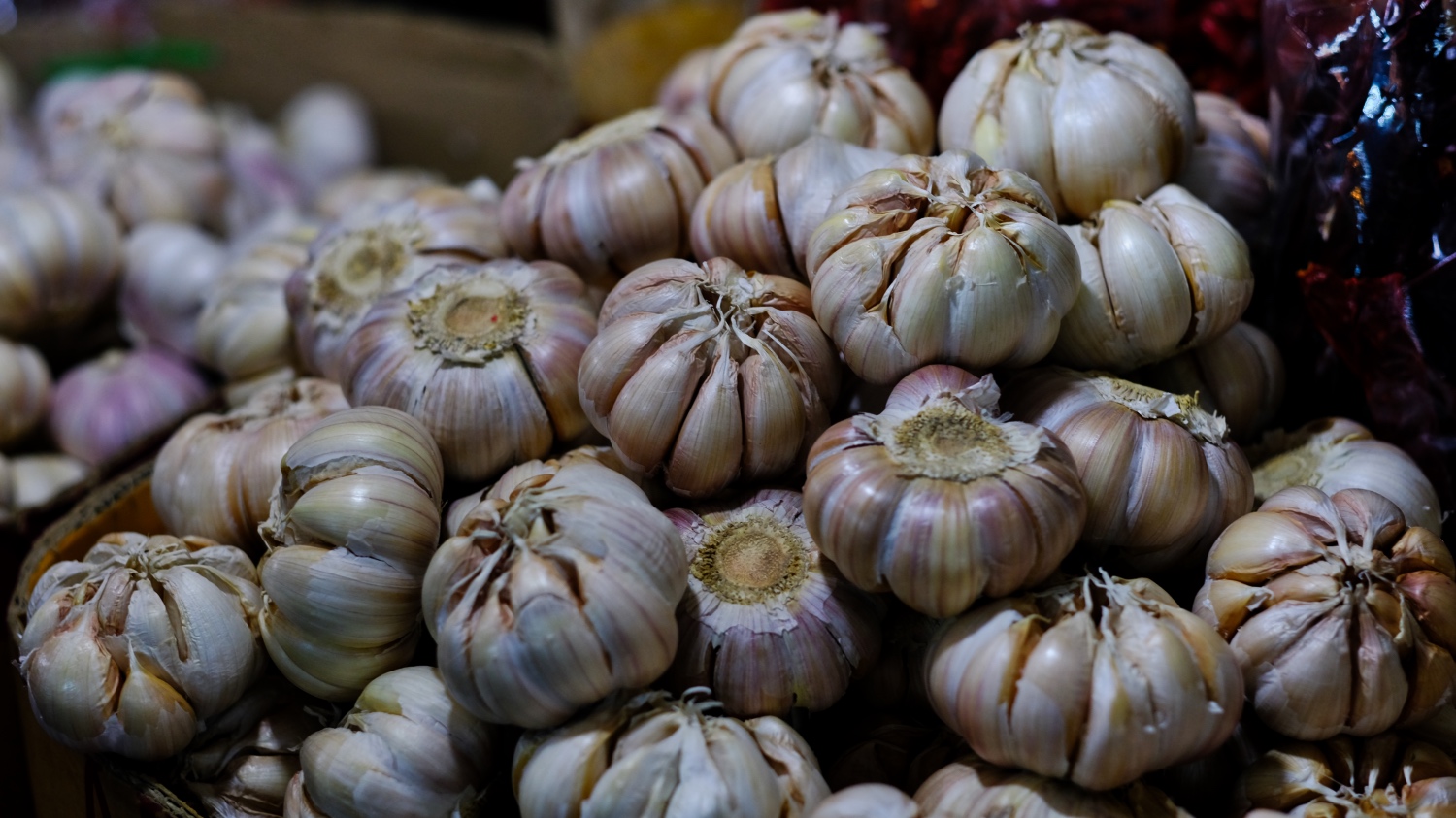 So many still life studies everywhere I looked.
So many still life studies everywhere I looked.
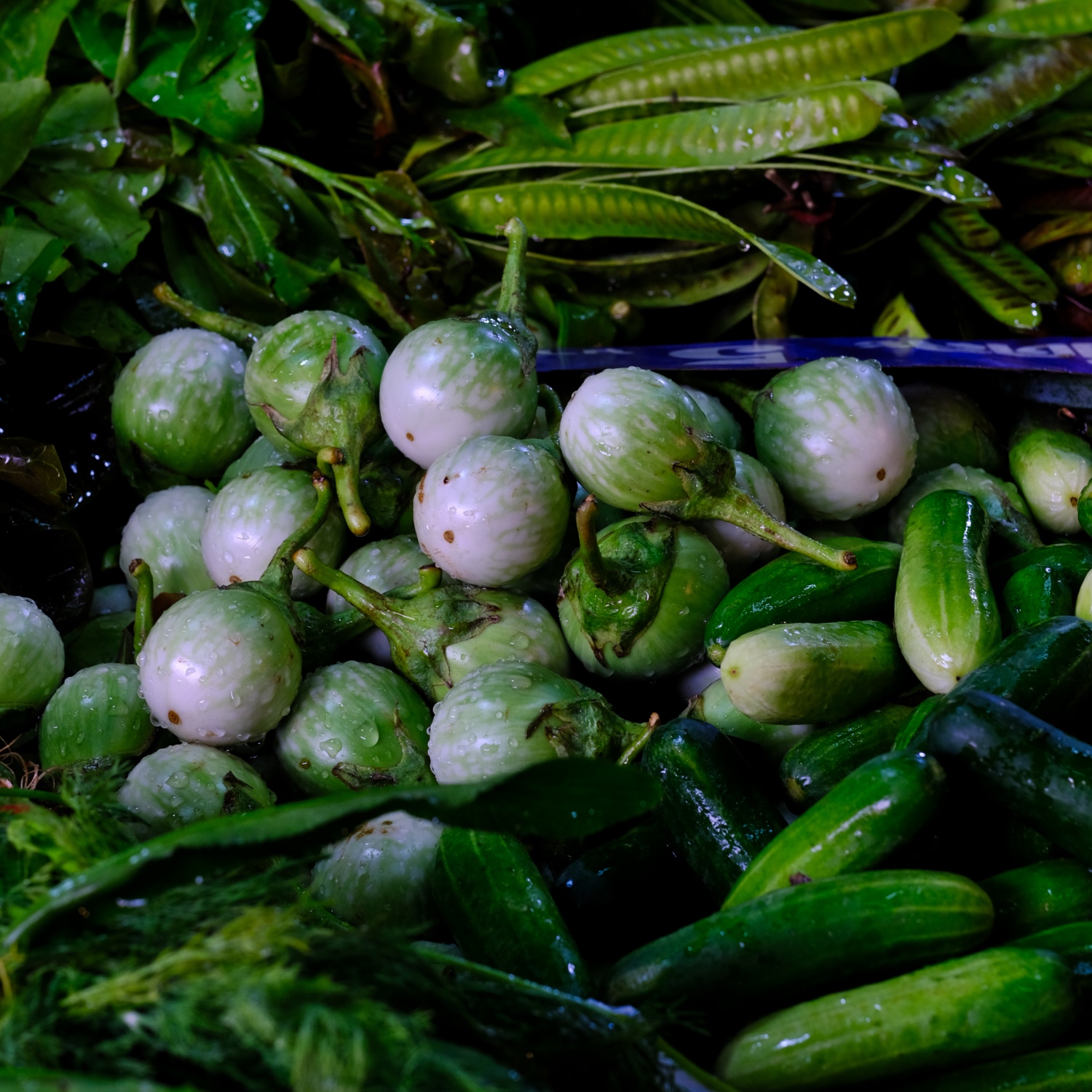 All that great tasting Thai street food has its origins in these 'wet markets.'
All that great tasting Thai street food has its origins in these 'wet markets.'
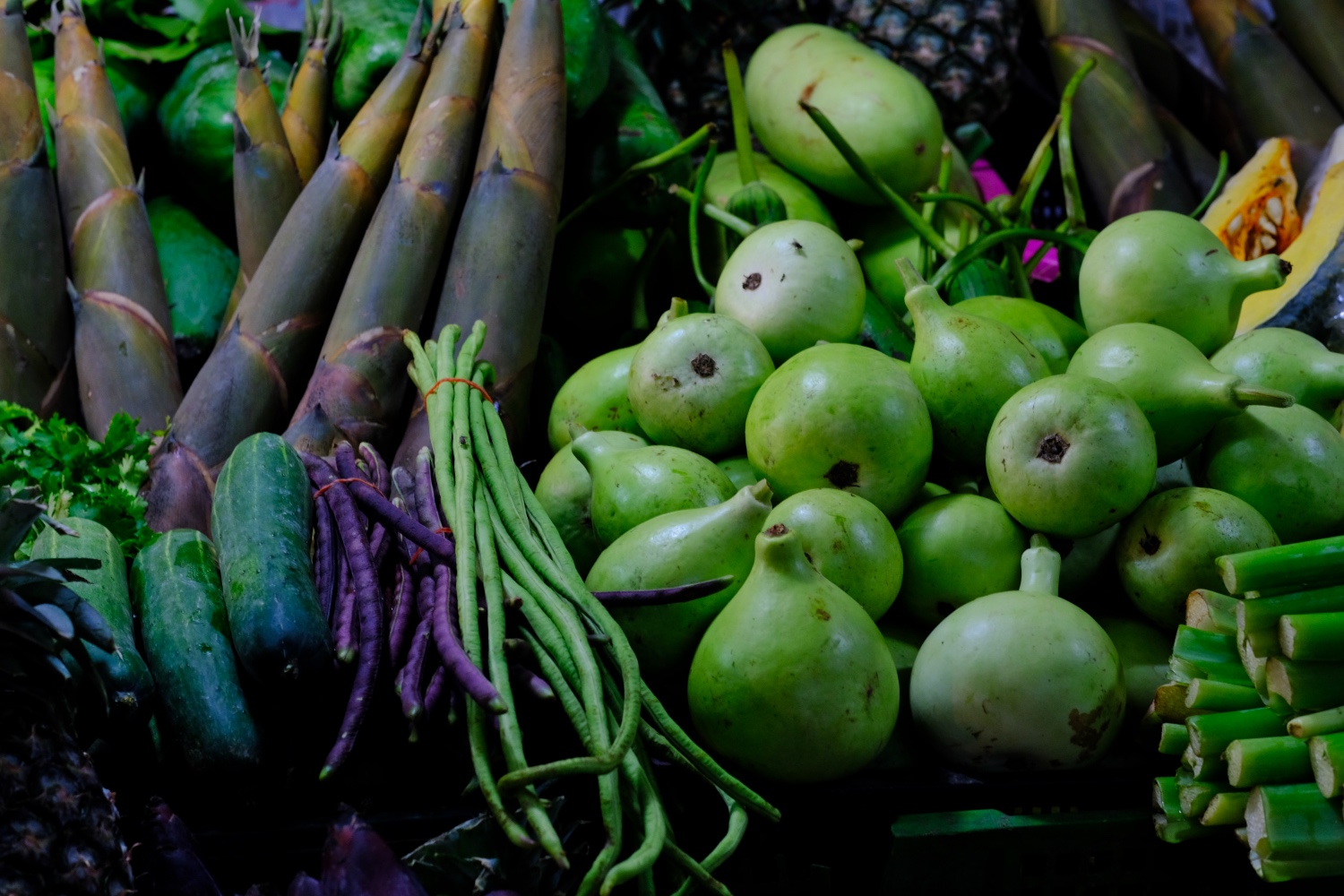 I am not even sure know the names of all of these interesting vegetables. I can't remember ever eating purple green beans . . .
I am not even sure know the names of all of these interesting vegetables. I can't remember ever eating purple green beans . . .
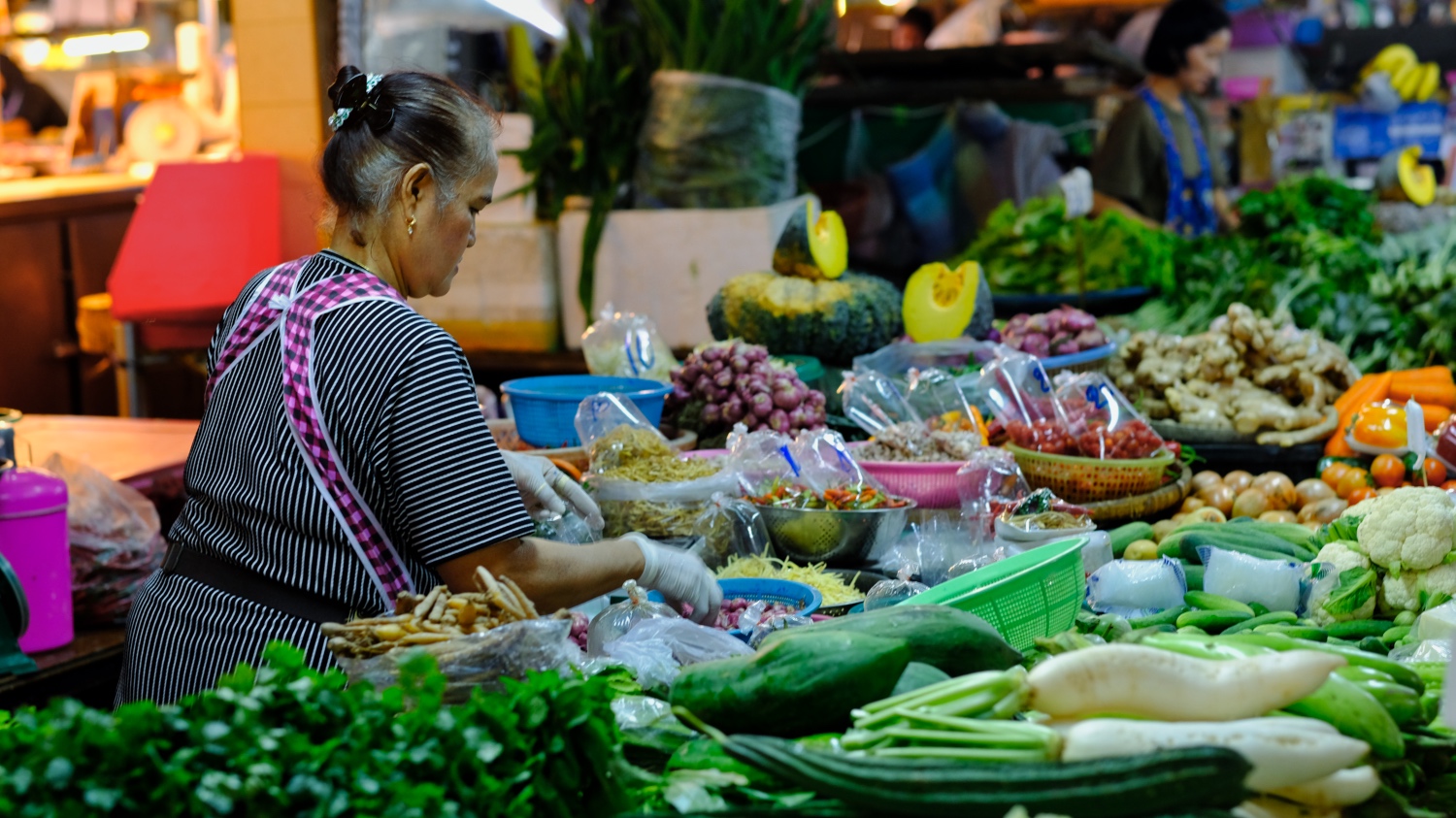 It was a late Saturday afternoon, so it was not a crowded as usual.
It was a late Saturday afternoon, so it was not a crowded as usual.
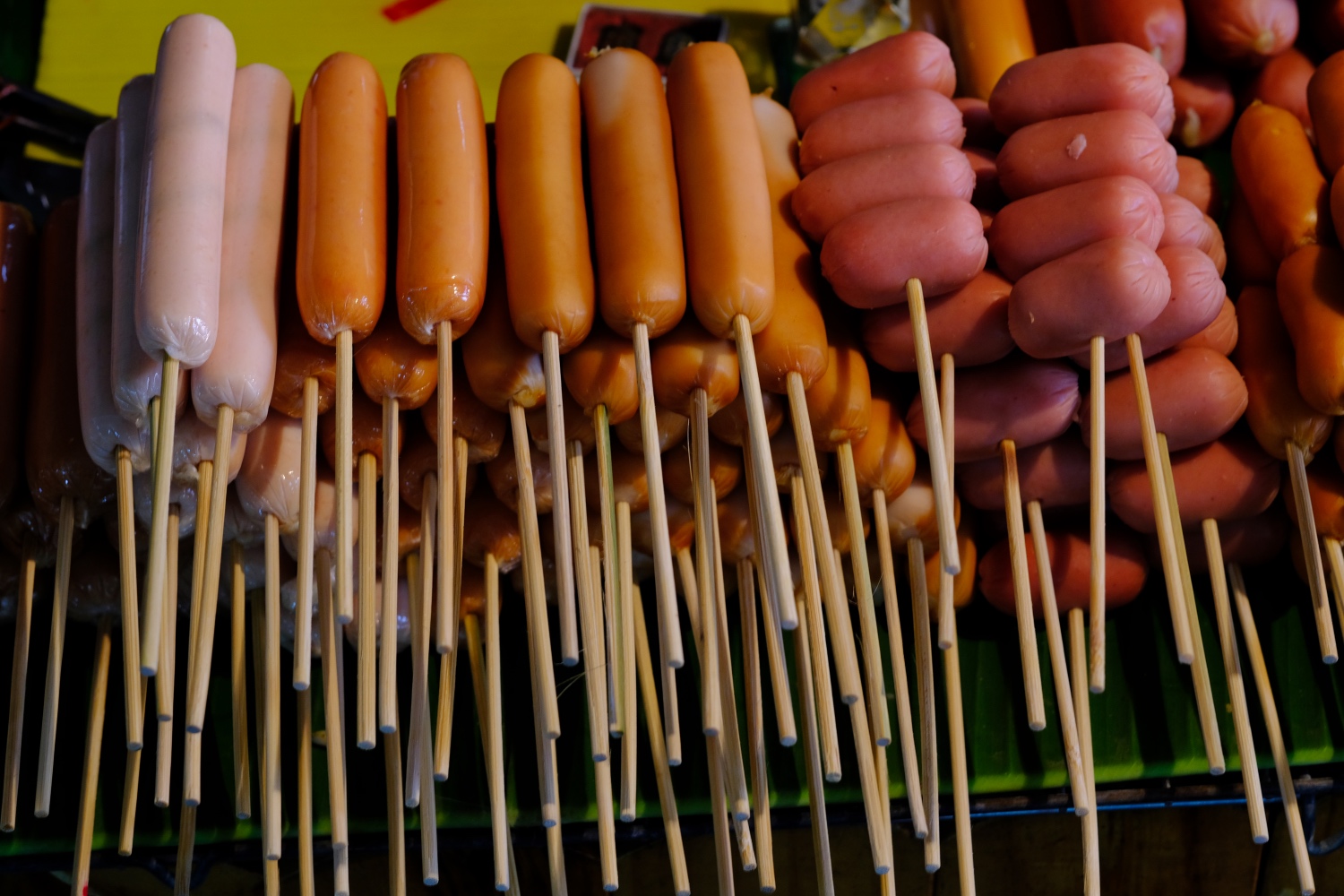 What would a Thai market be without the ubiquitous stuff-on-a-stick!
What would a Thai market be without the ubiquitous stuff-on-a-stick!
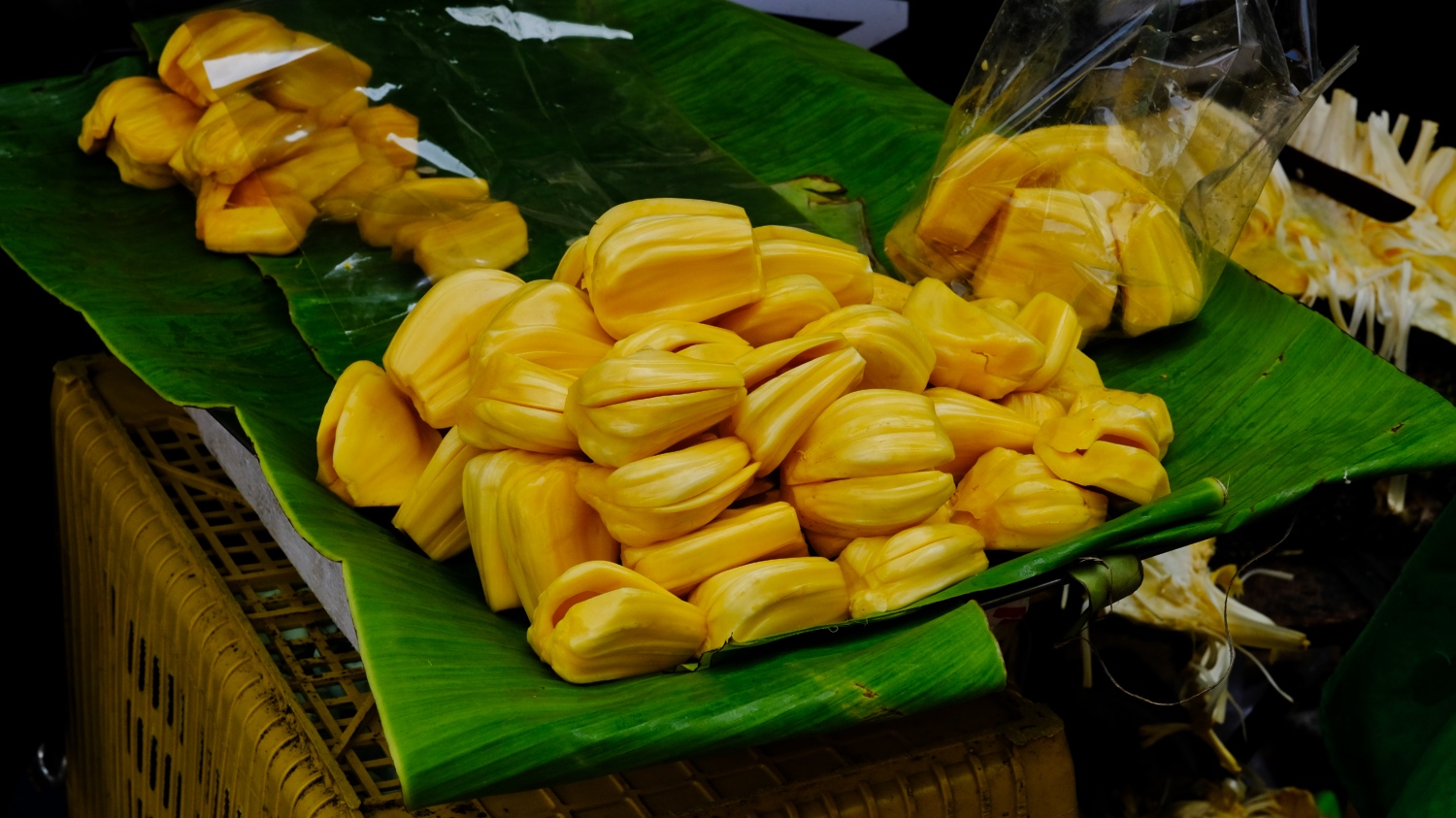 Delicious Jackfruit.
Delicious Jackfruit.
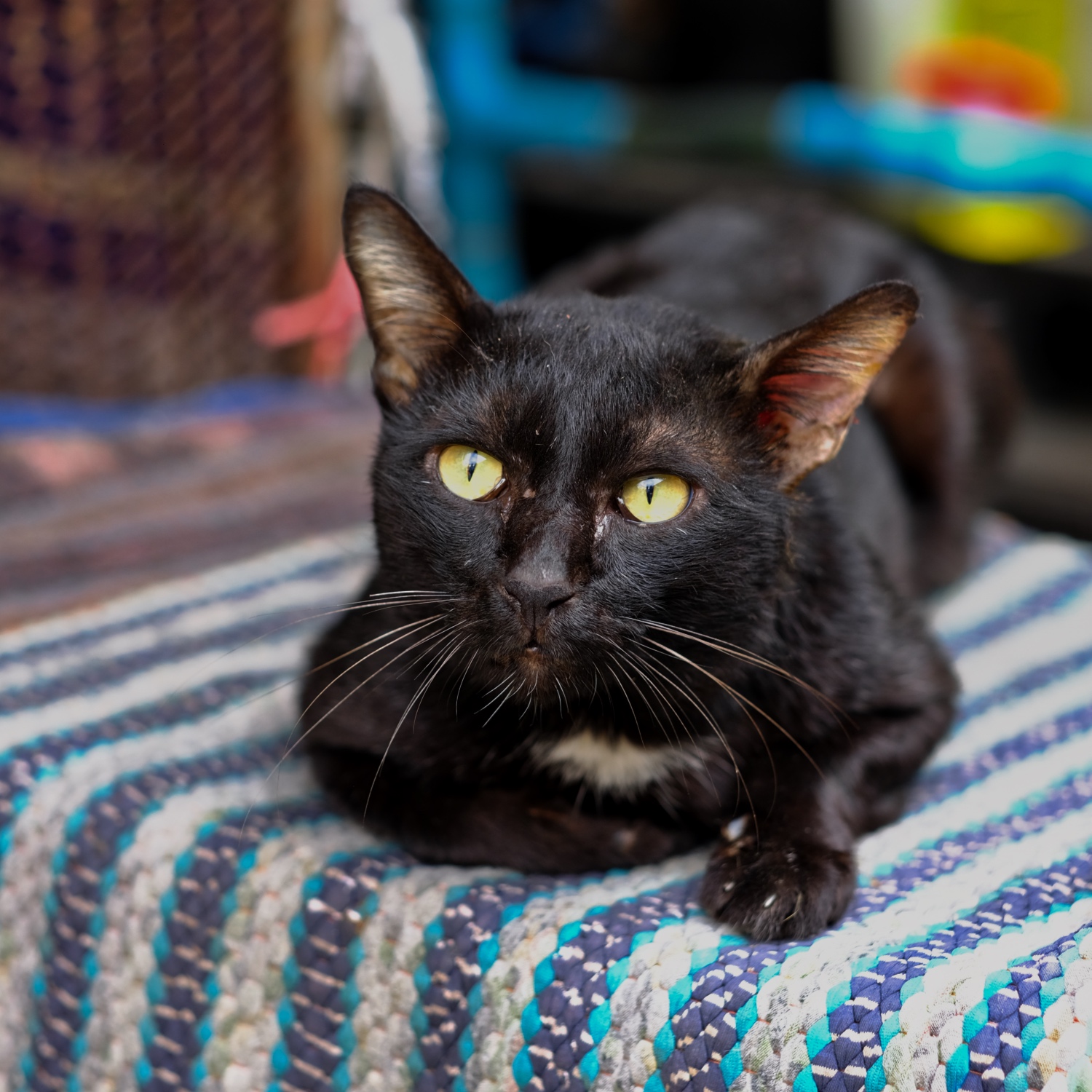 I don't normally take cat photos, but this forlorn market mouser with a recently chewed ear caught my eye.
I don't normally take cat photos, but this forlorn market mouser with a recently chewed ear caught my eye.
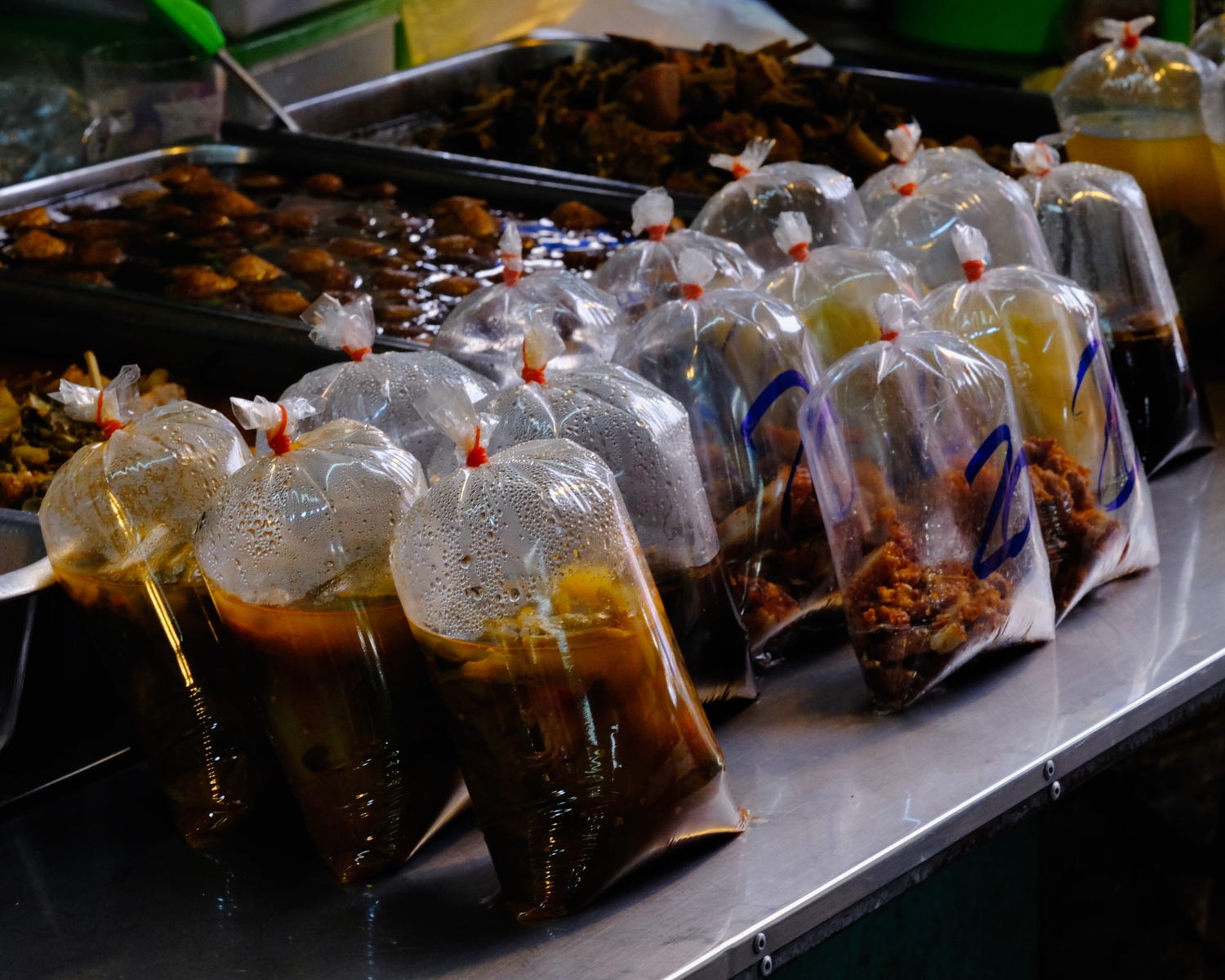 Food is very inexpensive in Thailand. Most markets have stalls selling these 'meals in a bag' for commuters. Just pick one of these up on the way to or from work.
Food is very inexpensive in Thailand. Most markets have stalls selling these 'meals in a bag' for commuters. Just pick one of these up on the way to or from work.
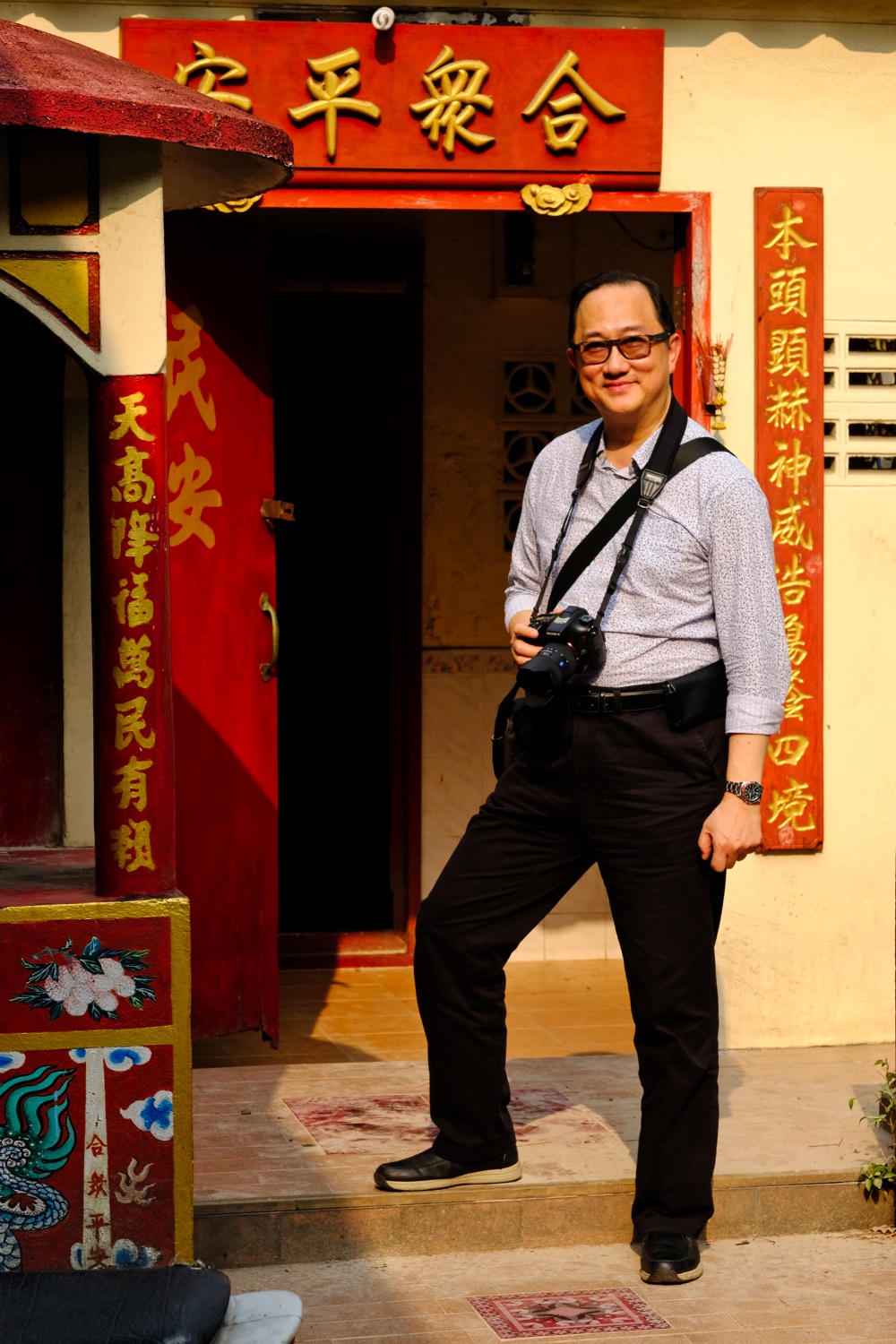 My brother-in-law from Hong Kong, and fellow photo buff, was the excuse to explore the market and riverside attractions. We found the little Chinese temple sandwiched in an alley.
My brother-in-law from Hong Kong, and fellow photo buff, was the excuse to explore the market and riverside attractions. We found the little Chinese temple sandwiched in an alley.
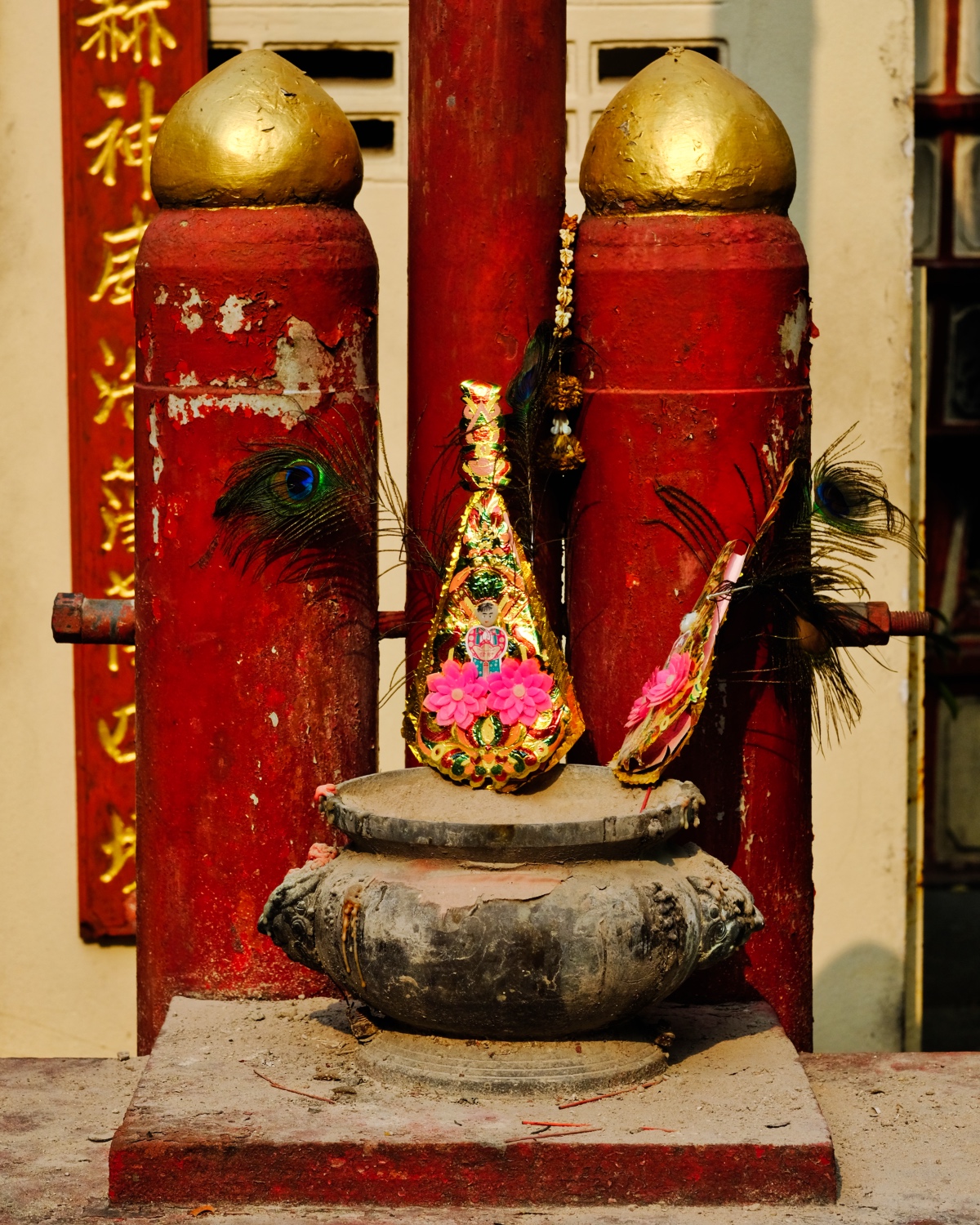 Chinese Temple detail . . .
Chinese Temple detail . . .
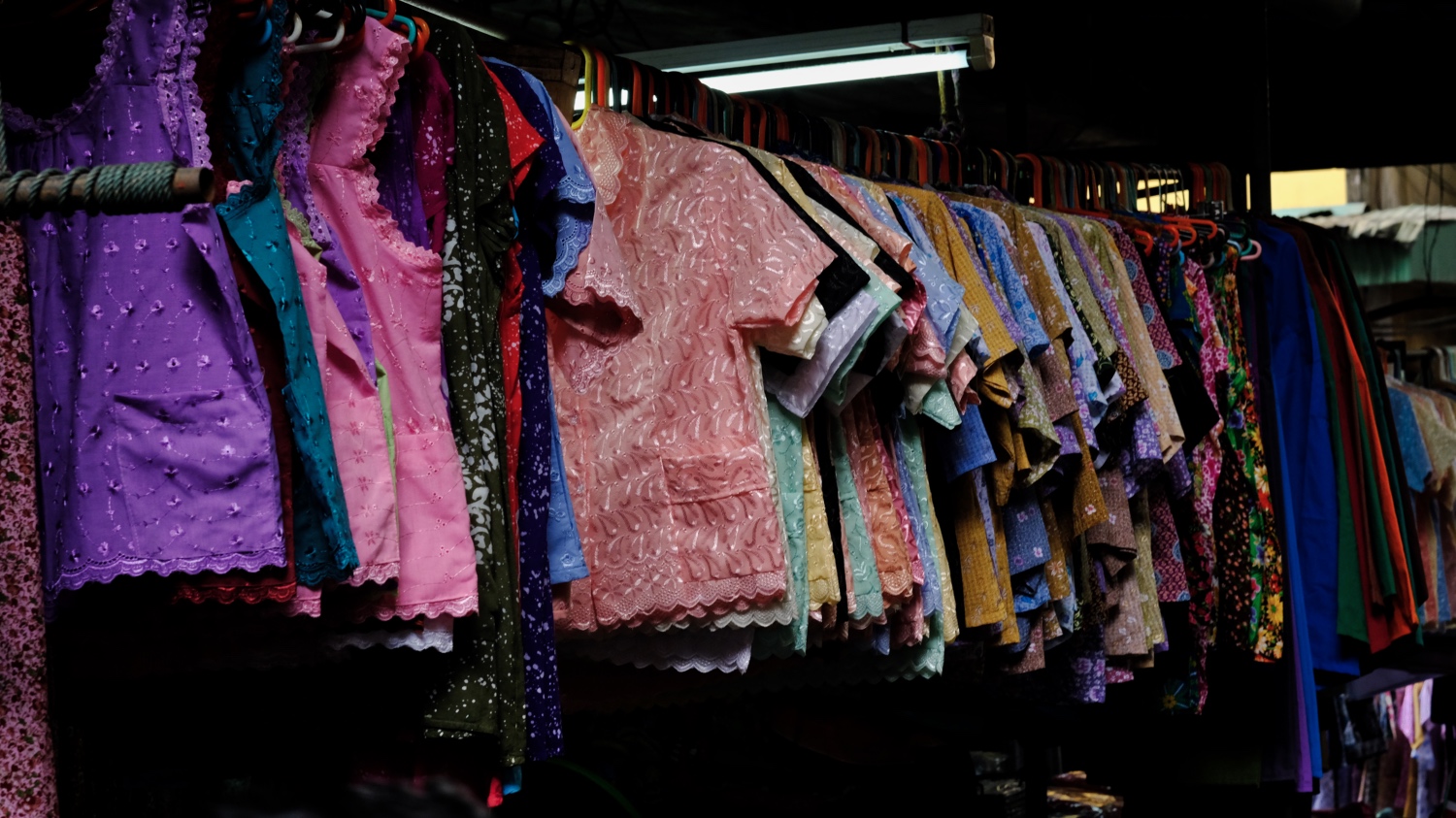 In addition to food, the Pakkret market also has sections for [old lady] clothes.
In addition to food, the Pakkret market also has sections for [old lady] clothes.
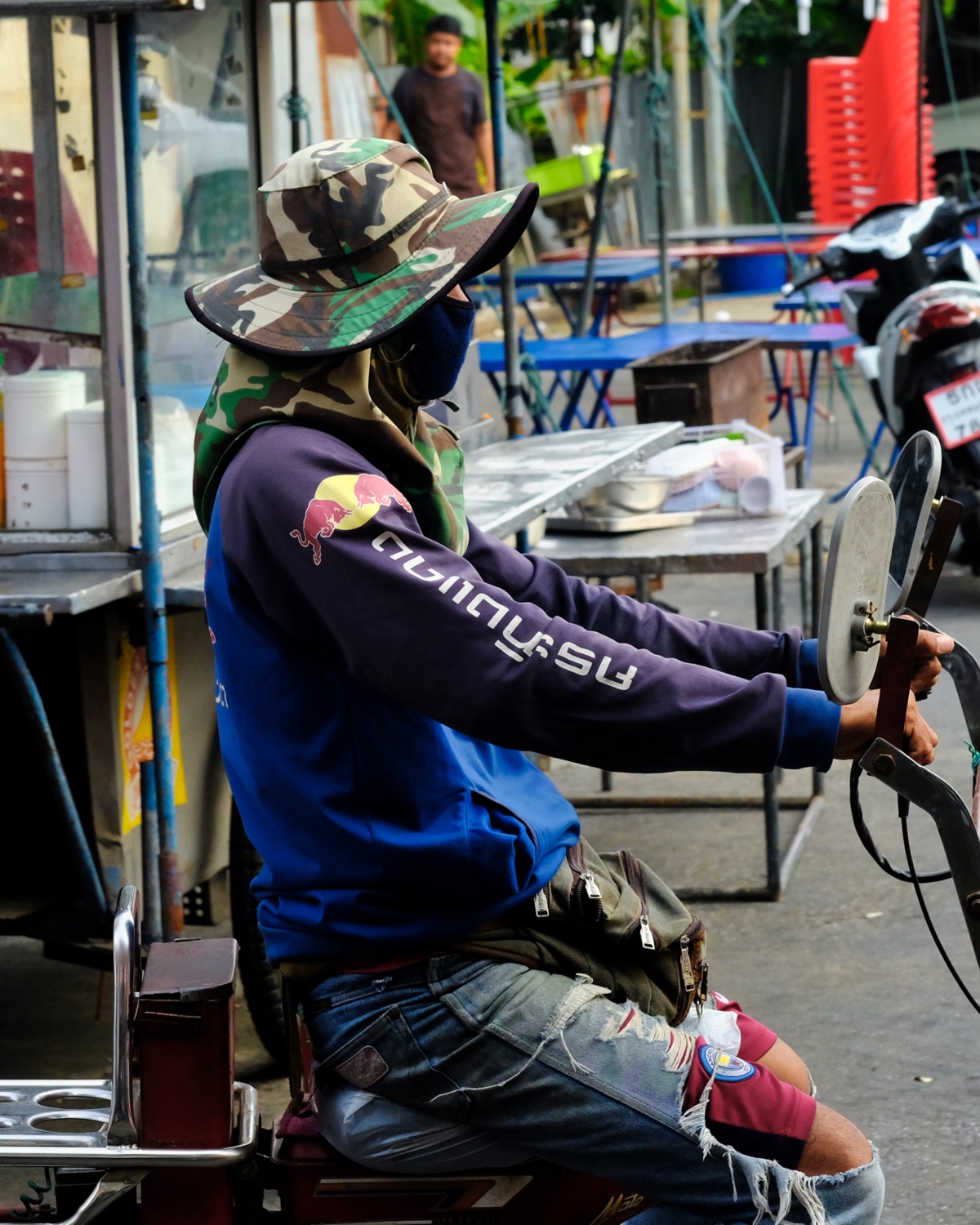 After shopping for your restaurant or market stall, you can hire a motorcycle taxi truck to get your stuff where you want it to go.
After shopping for your restaurant or market stall, you can hire a motorcycle taxi truck to get your stuff where you want it to go.
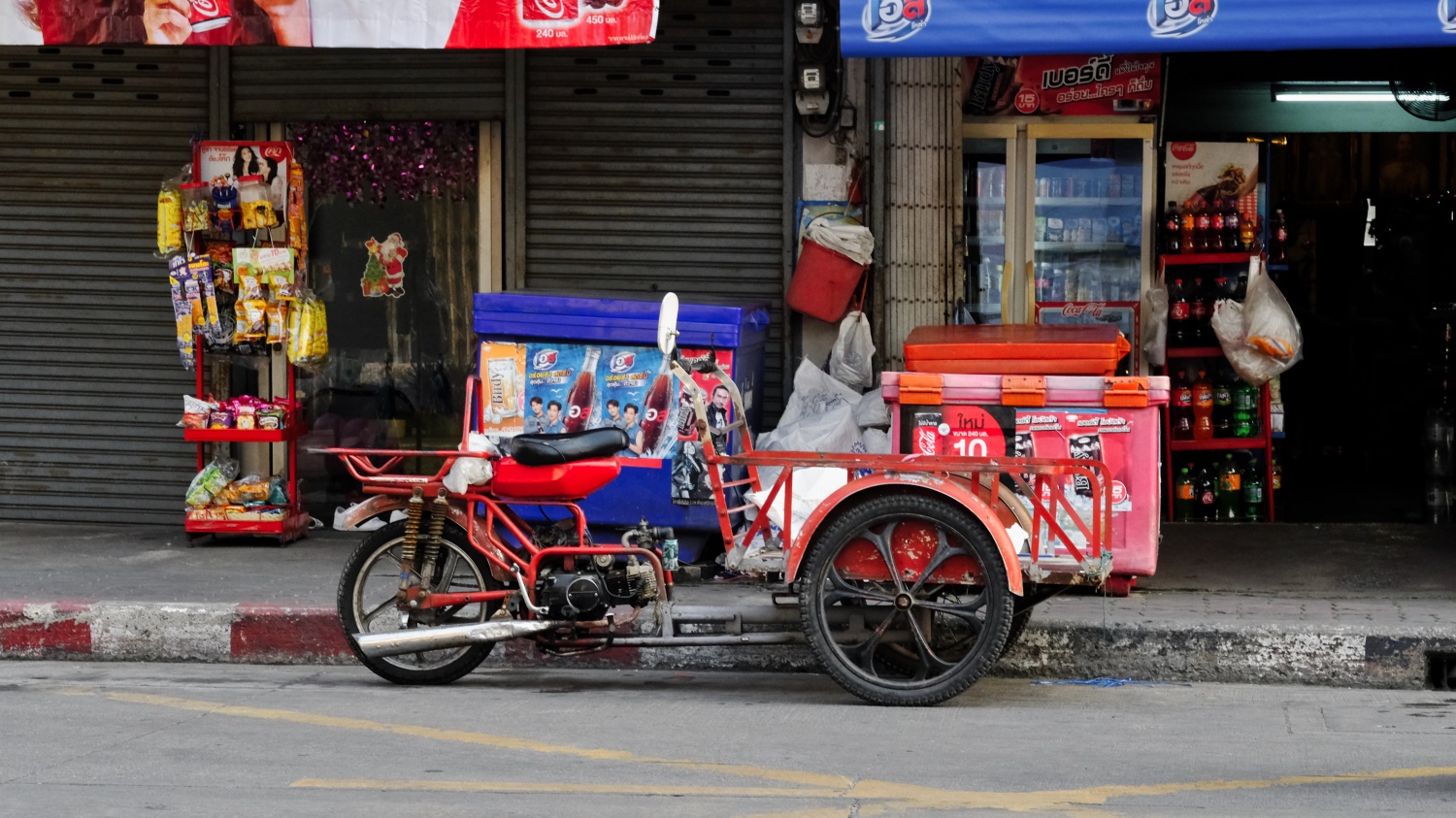 Motorized carts for moving produce and products around the market district.
Motorized carts for moving produce and products around the market district.
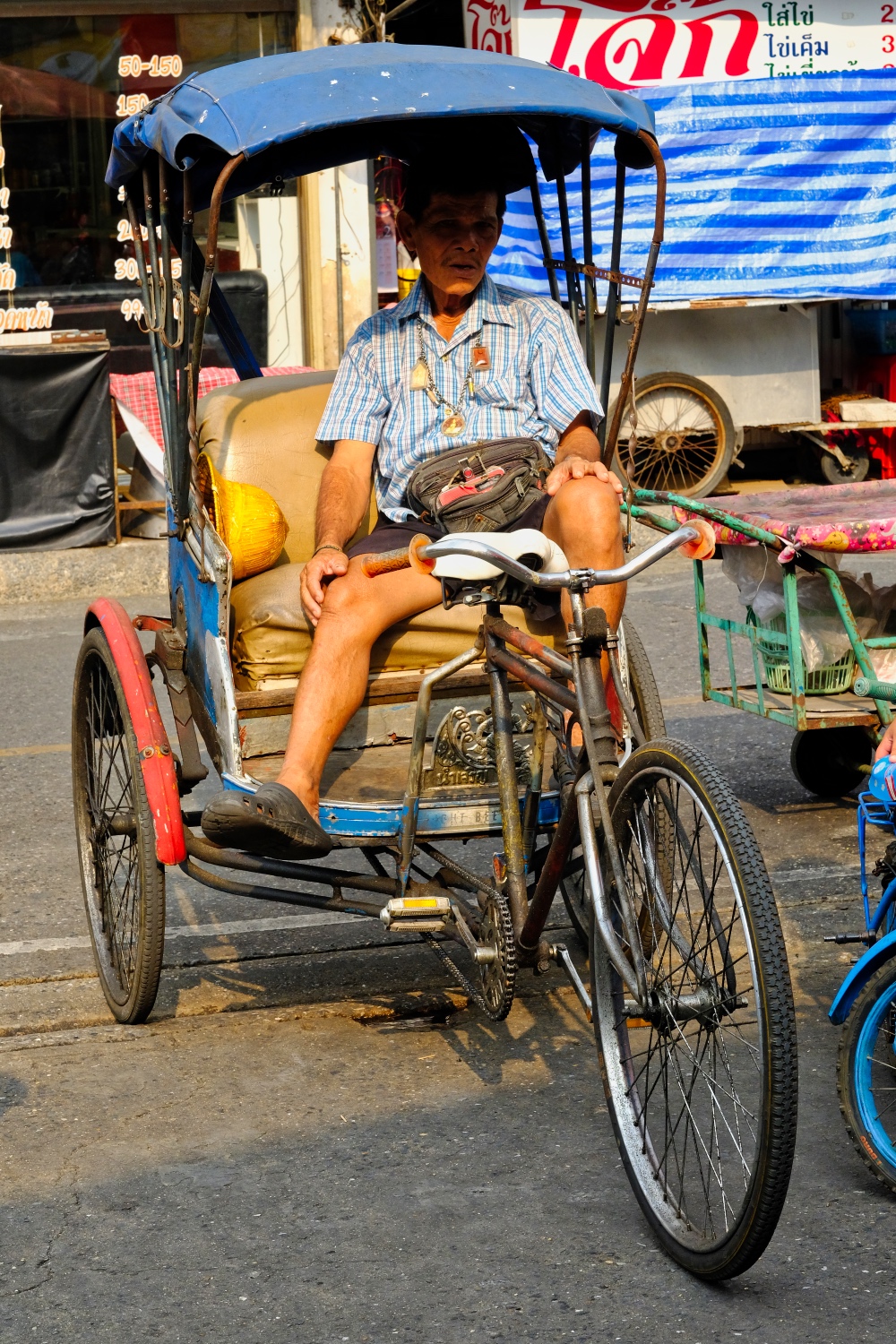 A traditional, and less expensive, means of transportation is the samlor.
A traditional, and less expensive, means of transportation is the samlor.
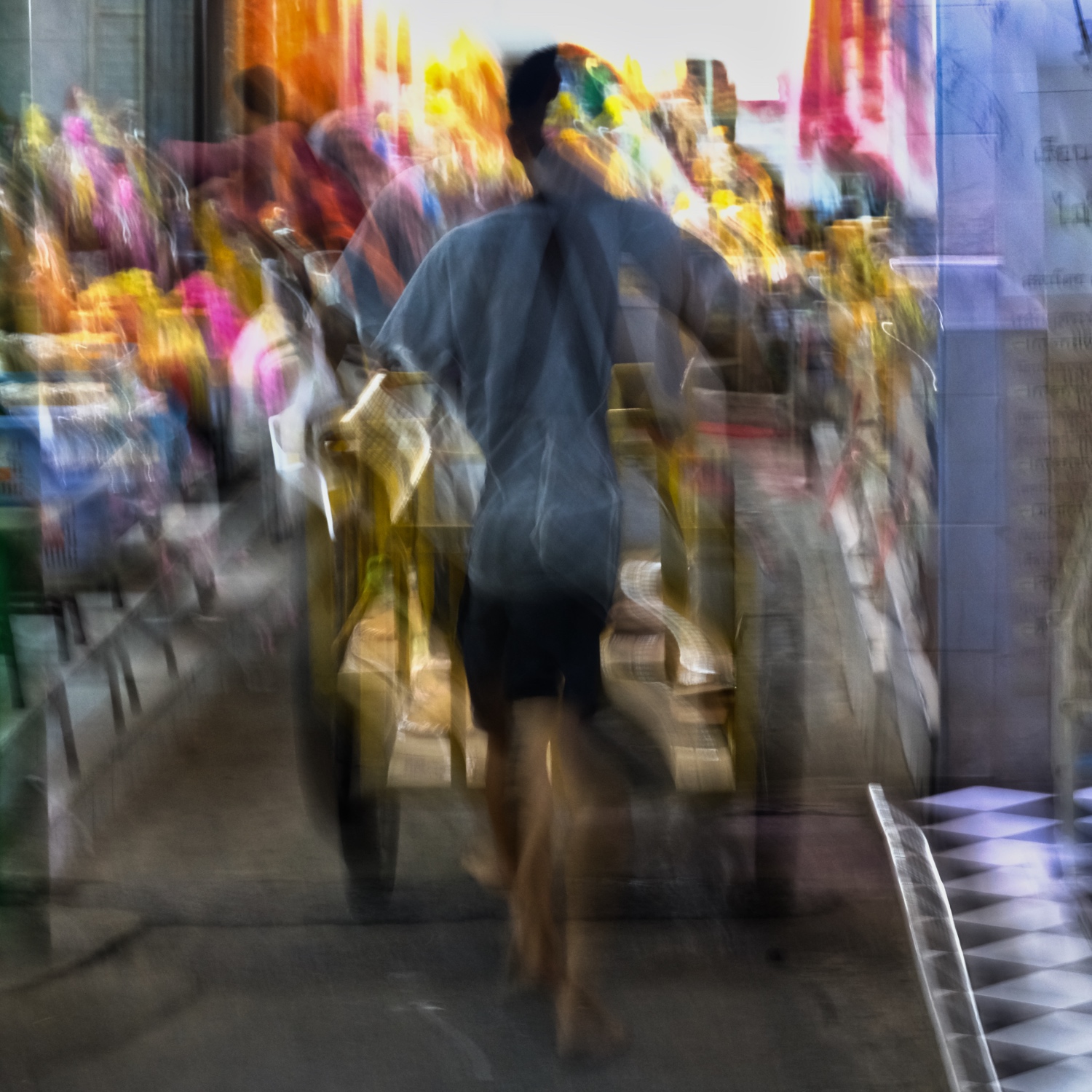 The Thai markets are places of constant action and movement.
The Thai markets are places of constant action and movement.
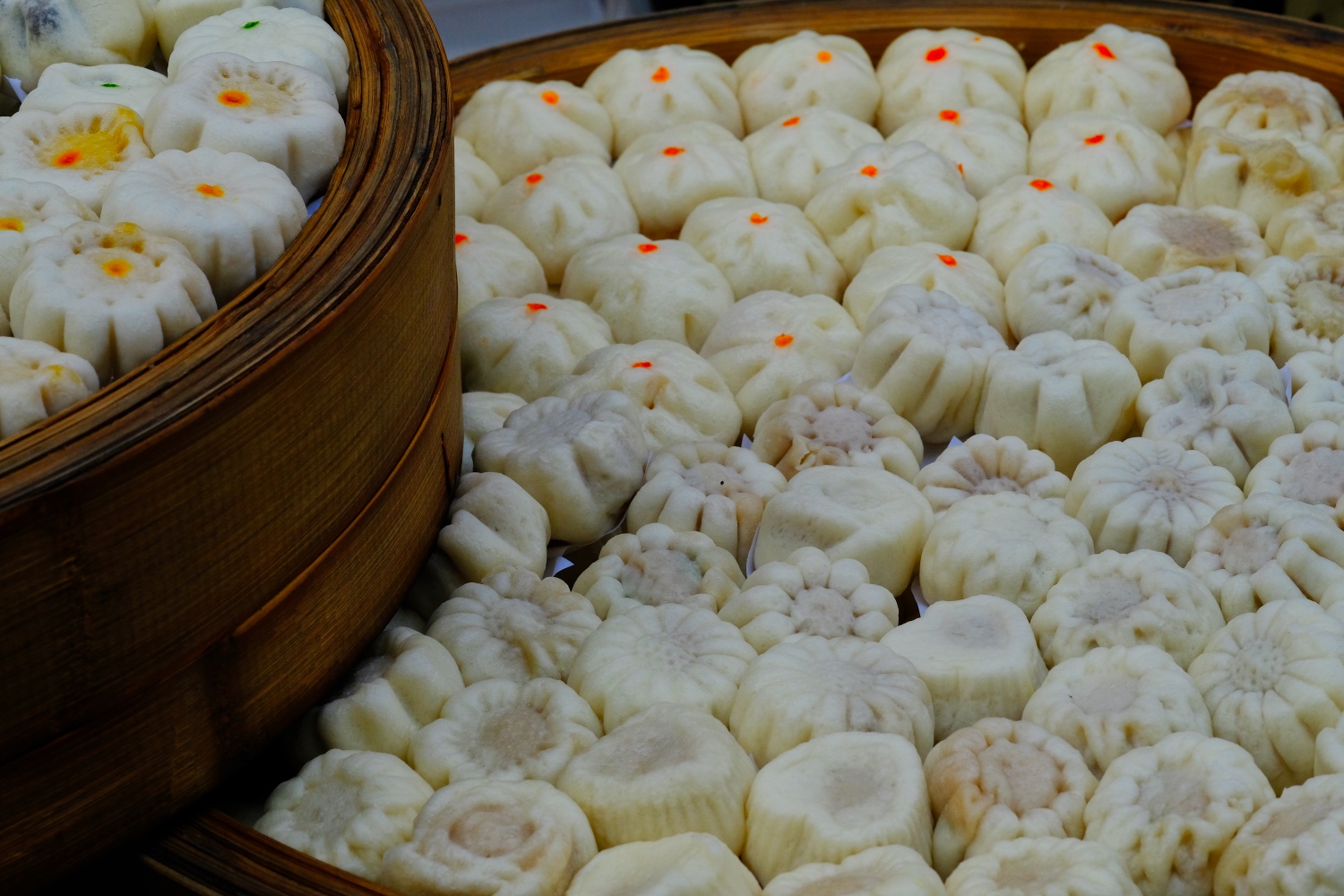 Outside the market, on the street, are even more edibles . . . steamed dim sum.
Outside the market, on the street, are even more edibles . . . steamed dim sum.
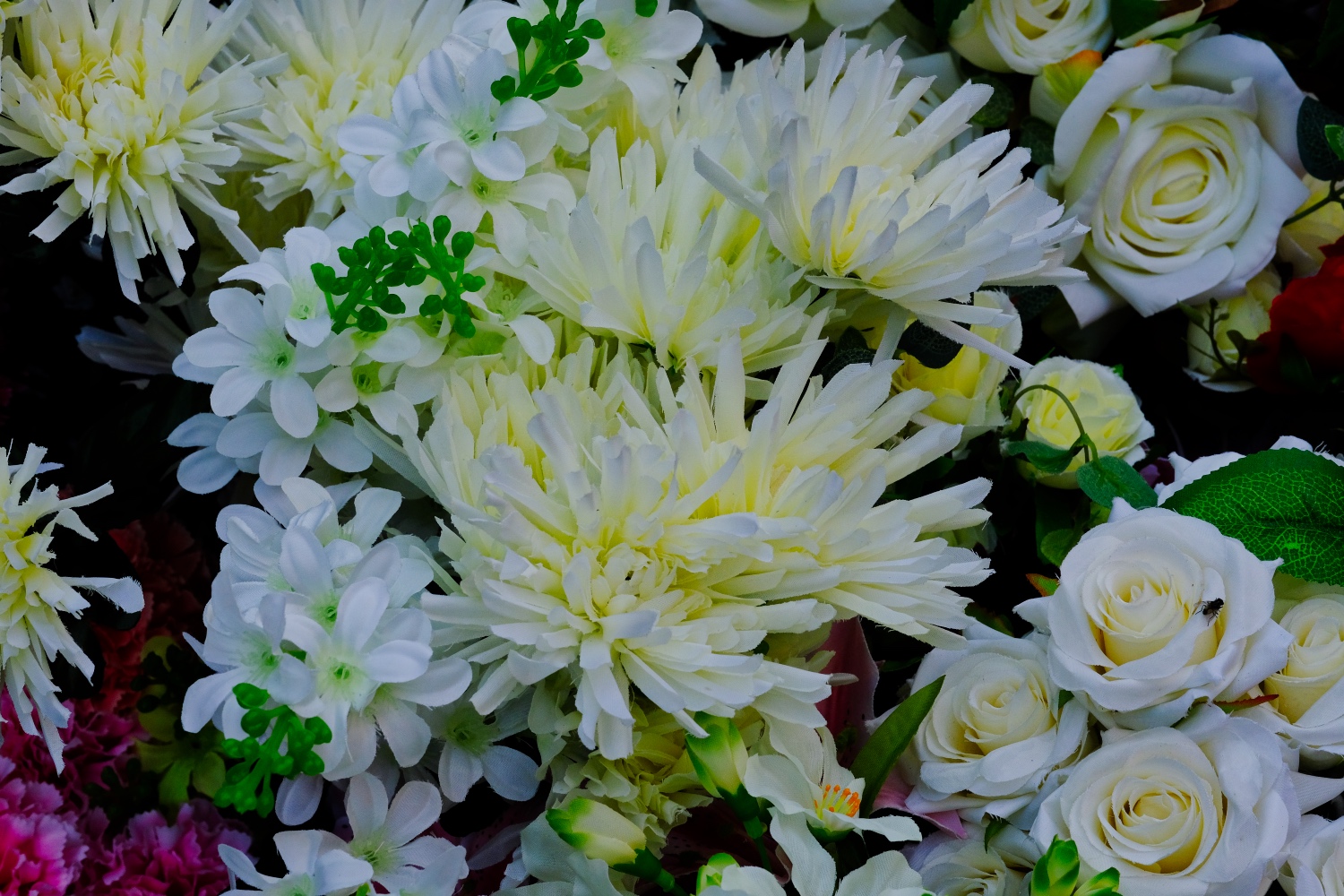 I am always amazed at the artistry of Thai artificial flowers!
I am always amazed at the artistry of Thai artificial flowers!
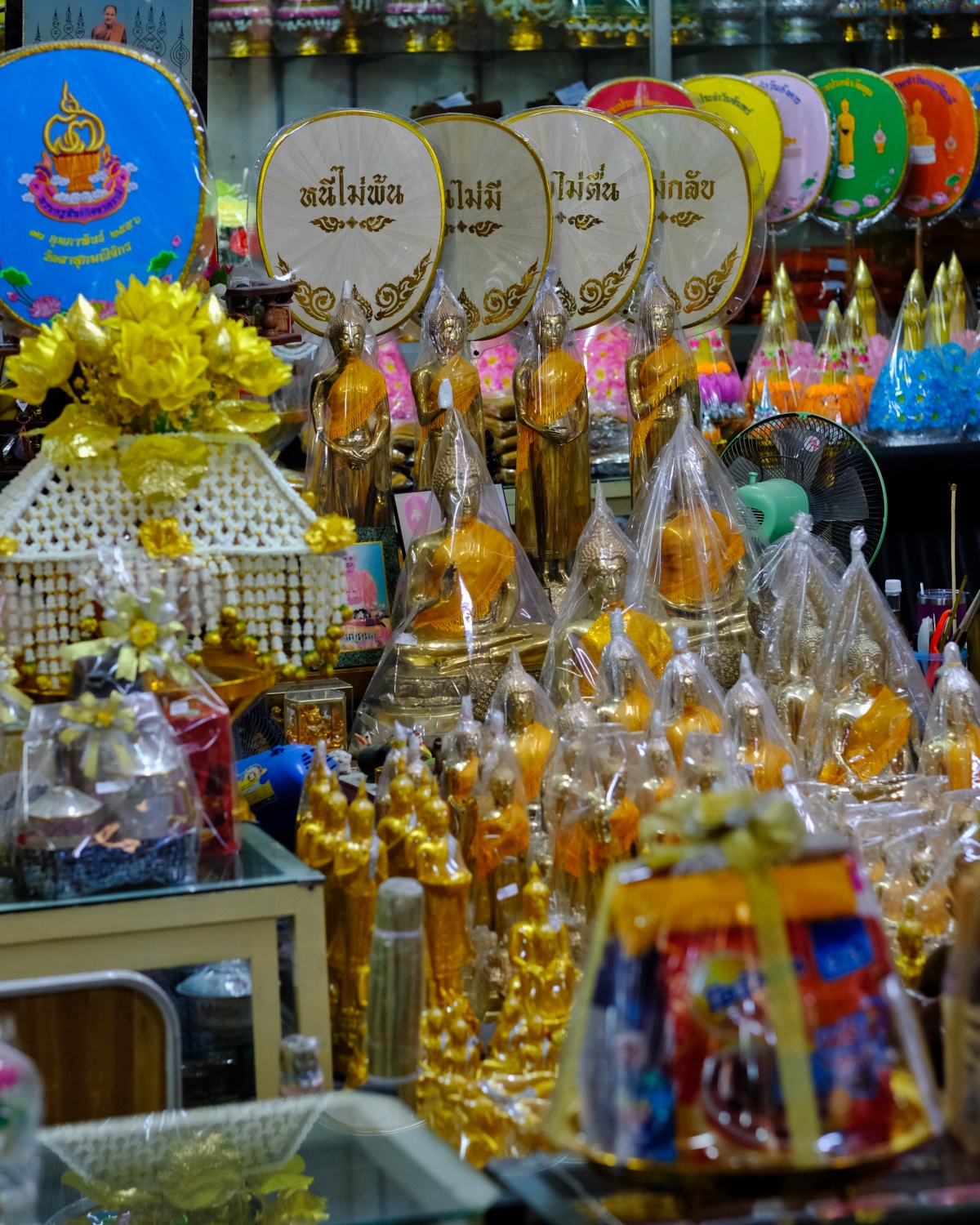 We wandered around in some alleyways along the river and discovered a Buddhist Temple Supply Shop.
We wandered around in some alleyways along the river and discovered a Buddhist Temple Supply Shop.
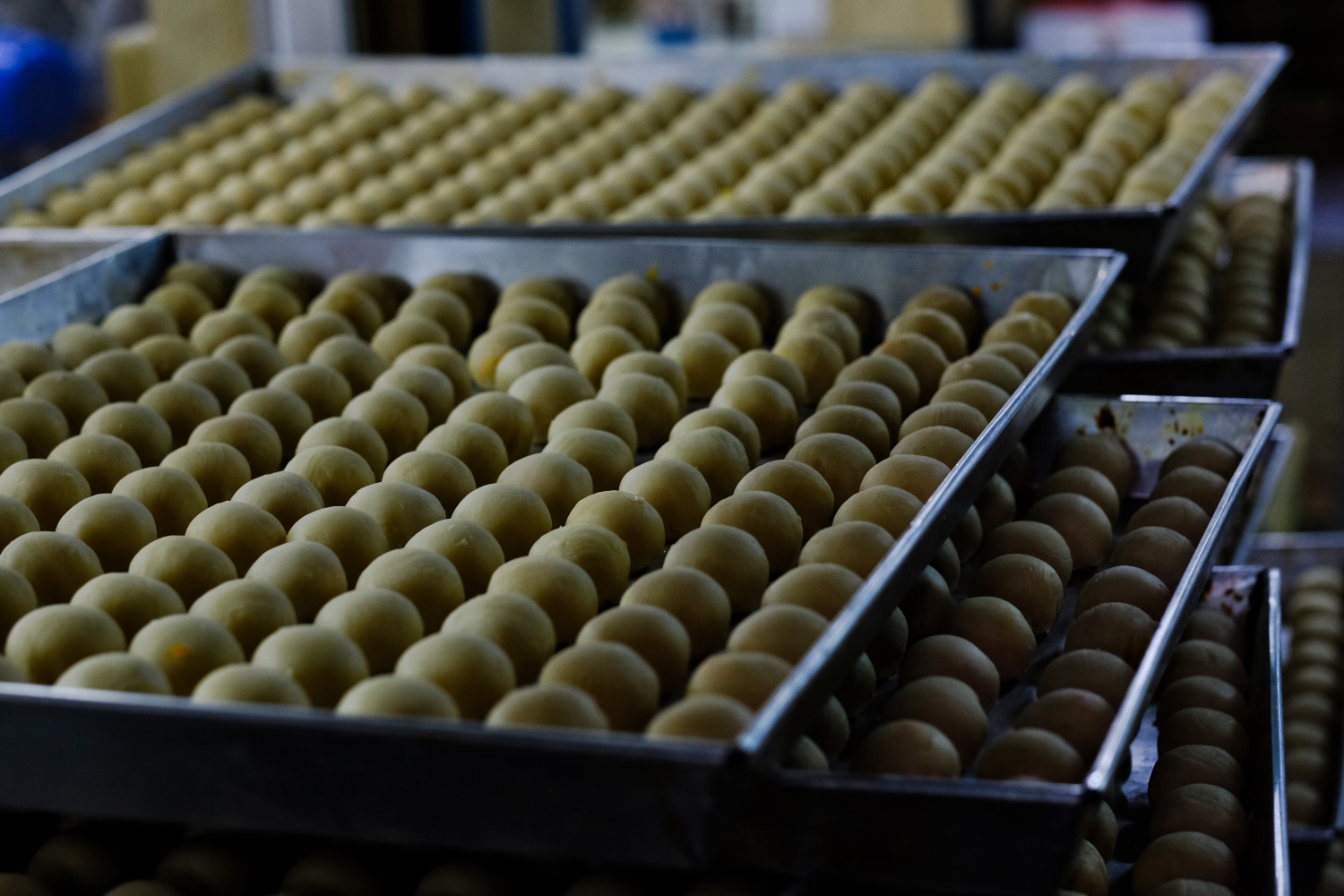 A back alley home cookie factory making traditional Chinese treats.
A back alley home cookie factory making traditional Chinese treats.
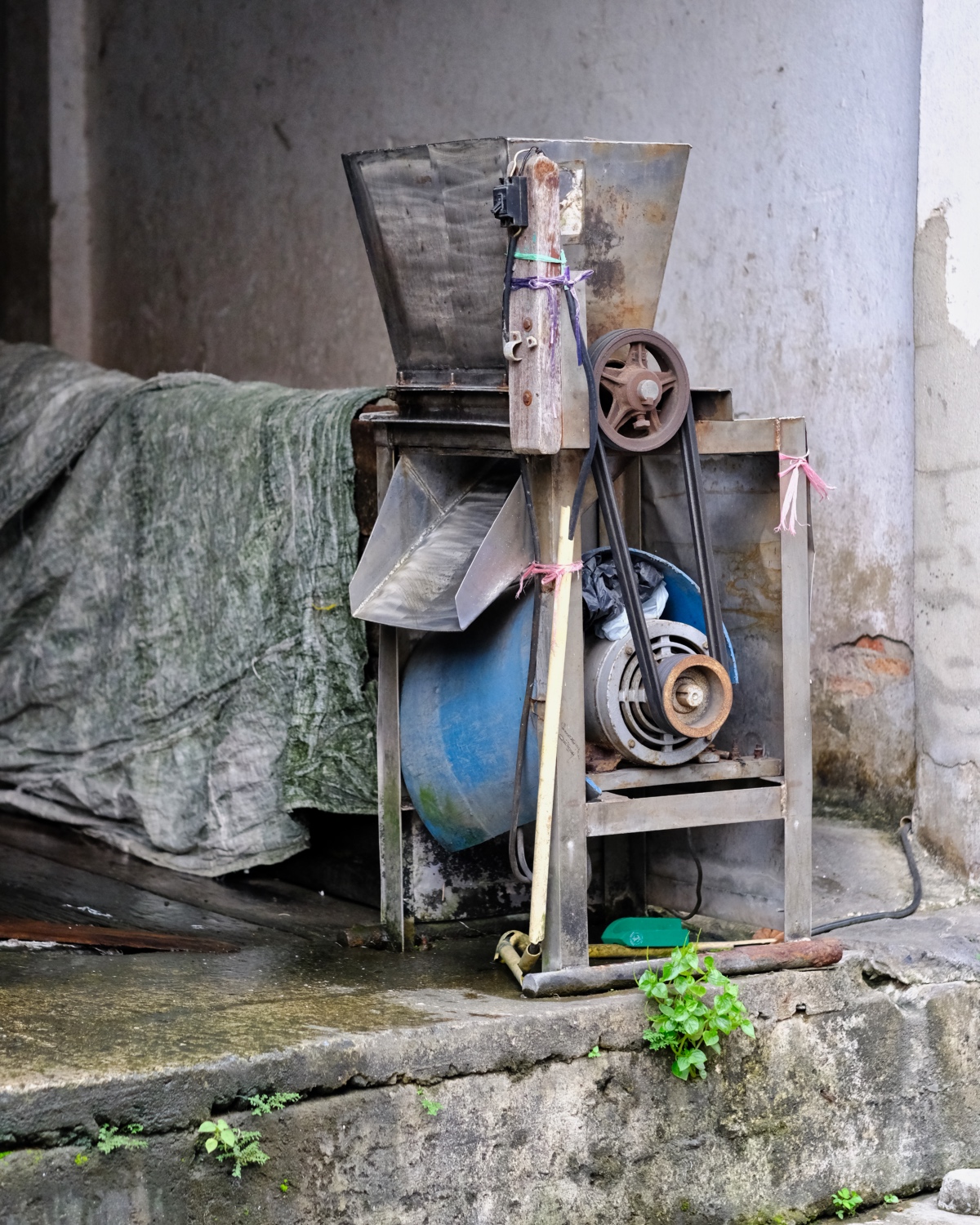 Somebody's business: crushed ice.
Somebody's business: crushed ice.
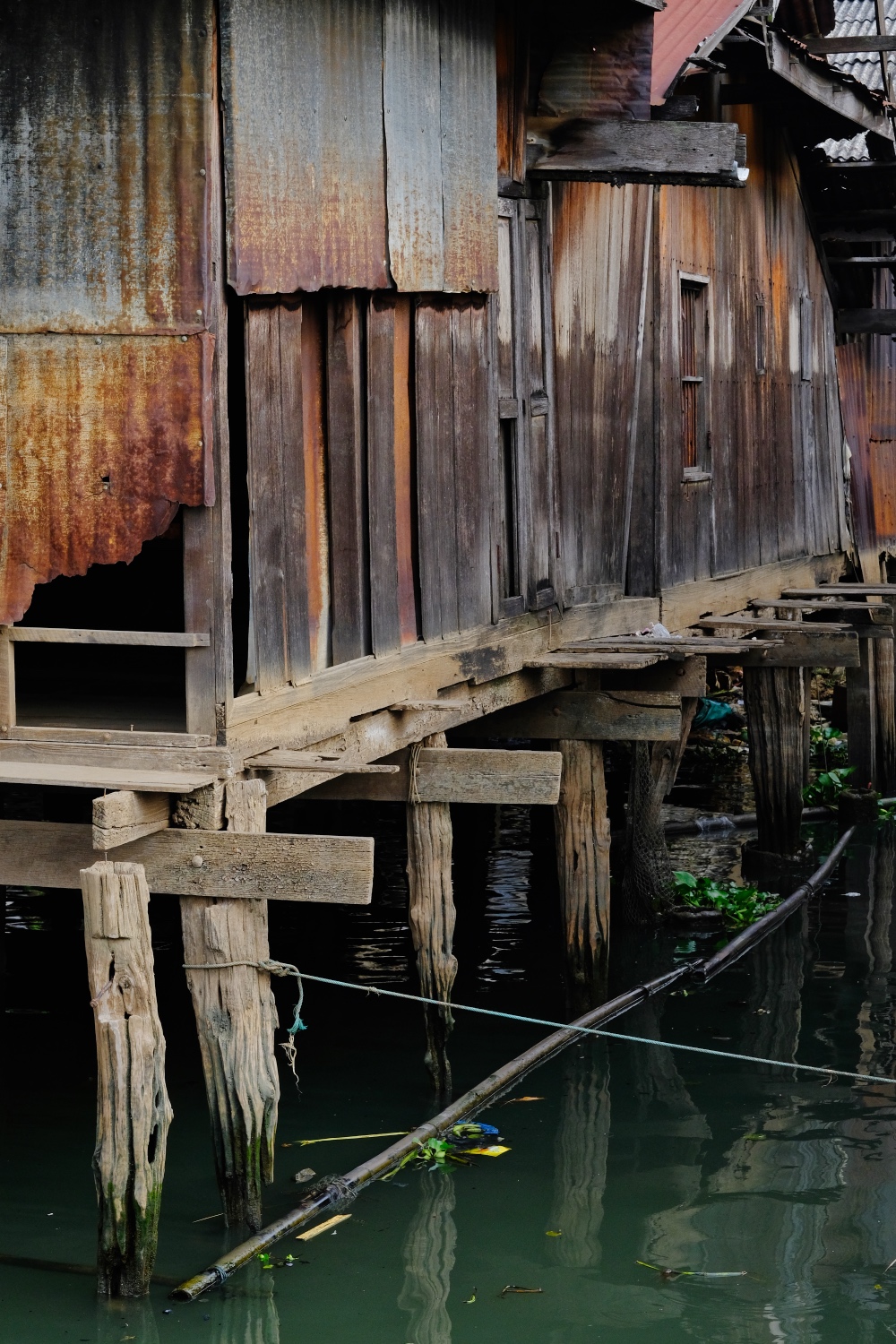 Down along the river . . .
Down along the river . . .
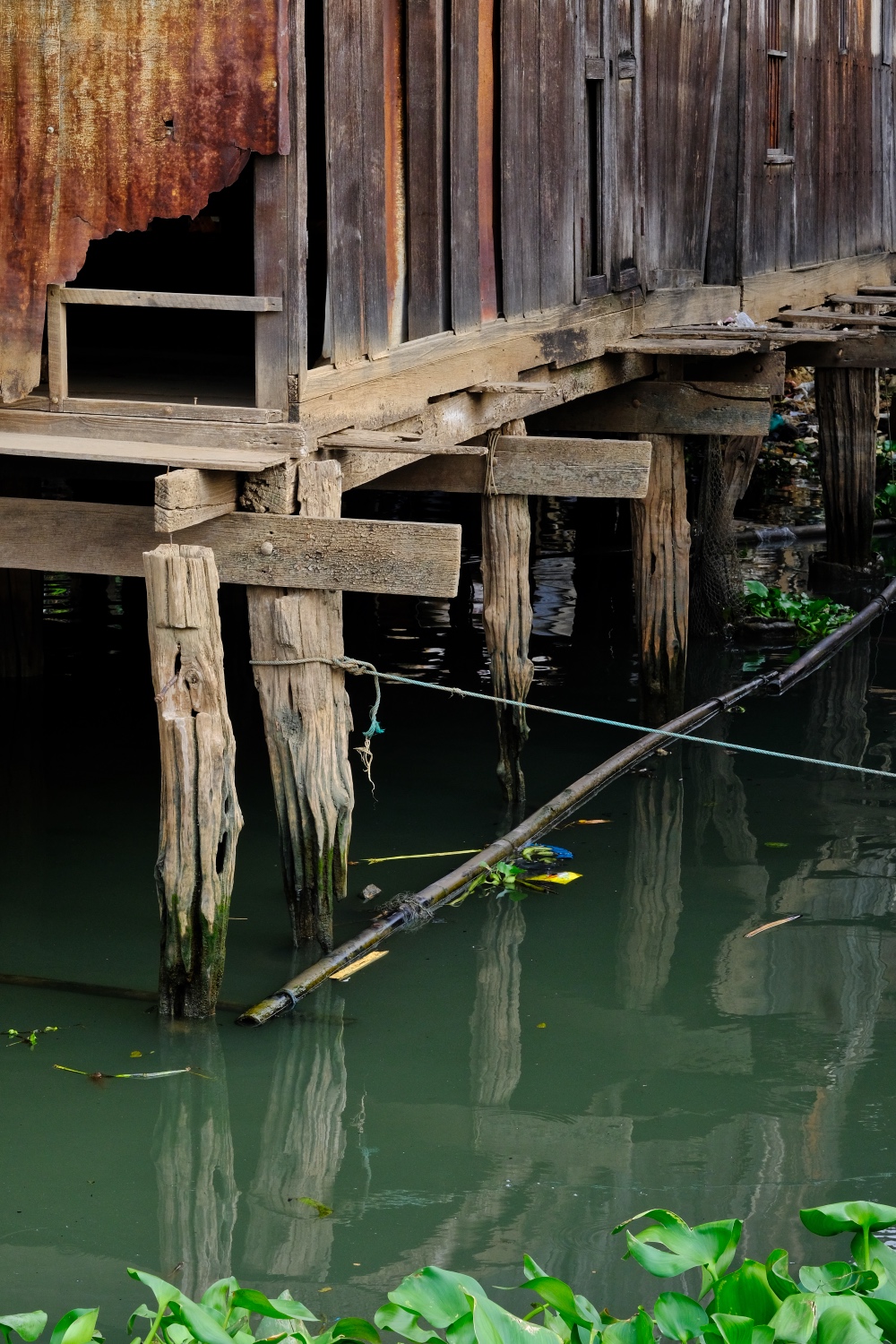 Our late afternoon walk brought us to the riverside . . . and this fantasticly weathered and decaying old wooden house . . .
Our late afternoon walk brought us to the riverside . . . and this fantasticly weathered and decaying old wooden house . . .
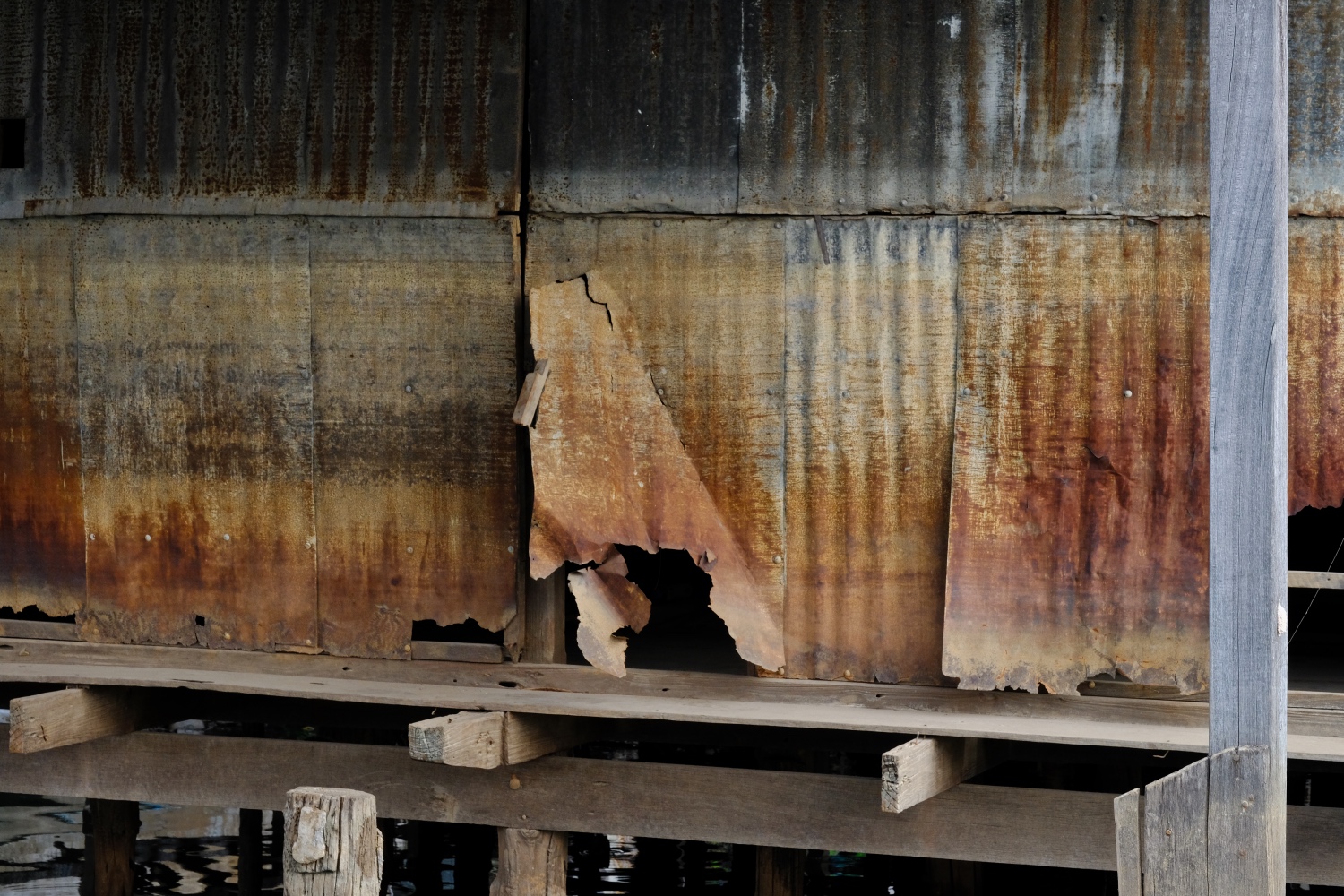 The high water lines of recent river flooding clearly shown on the old house.
The high water lines of recent river flooding clearly shown on the old house.
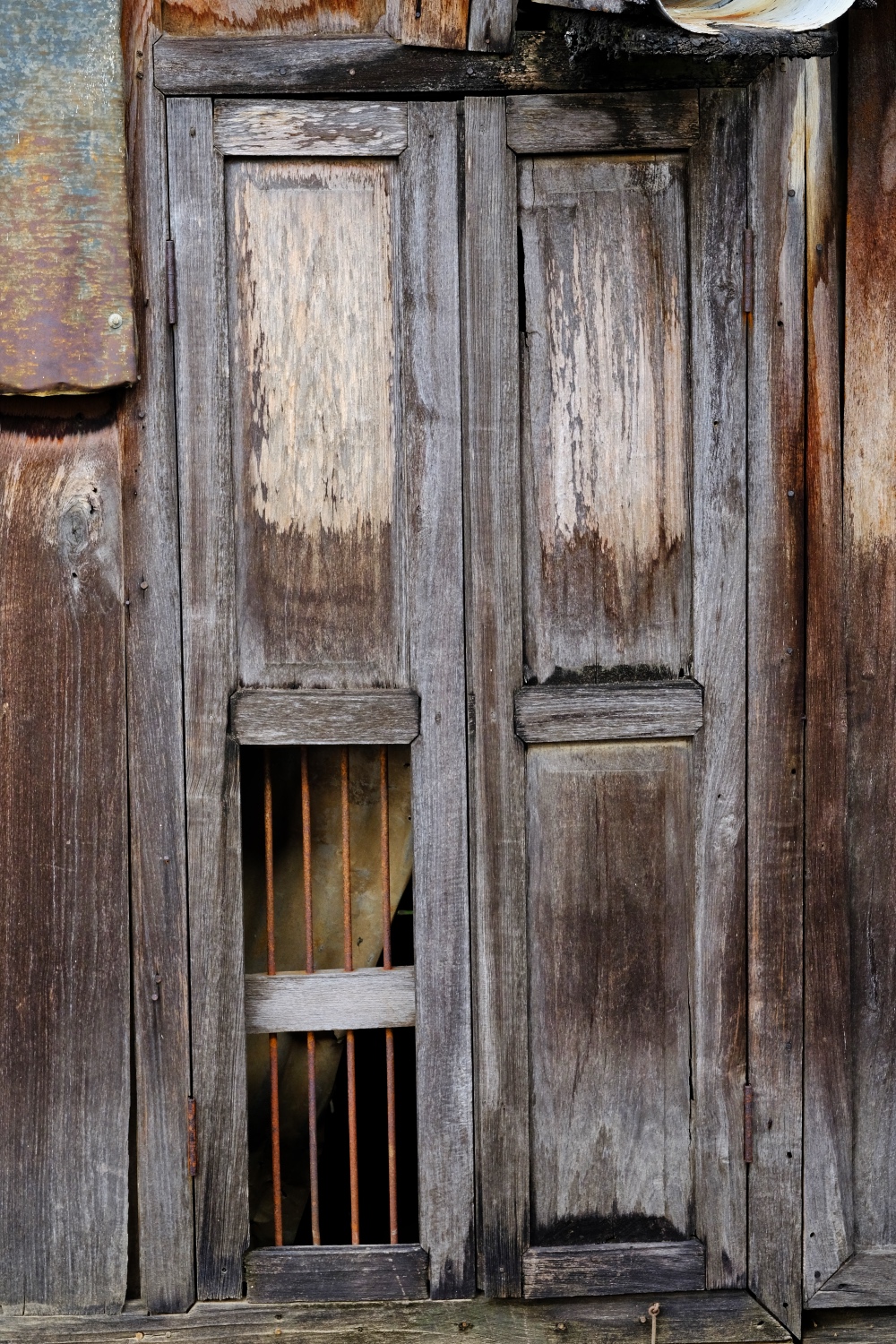 I love the textures of deteriorating wood on old doors and windows. This particular riverside house had absolutely scrumptious surfaces.
I love the textures of deteriorating wood on old doors and windows. This particular riverside house had absolutely scrumptious surfaces.
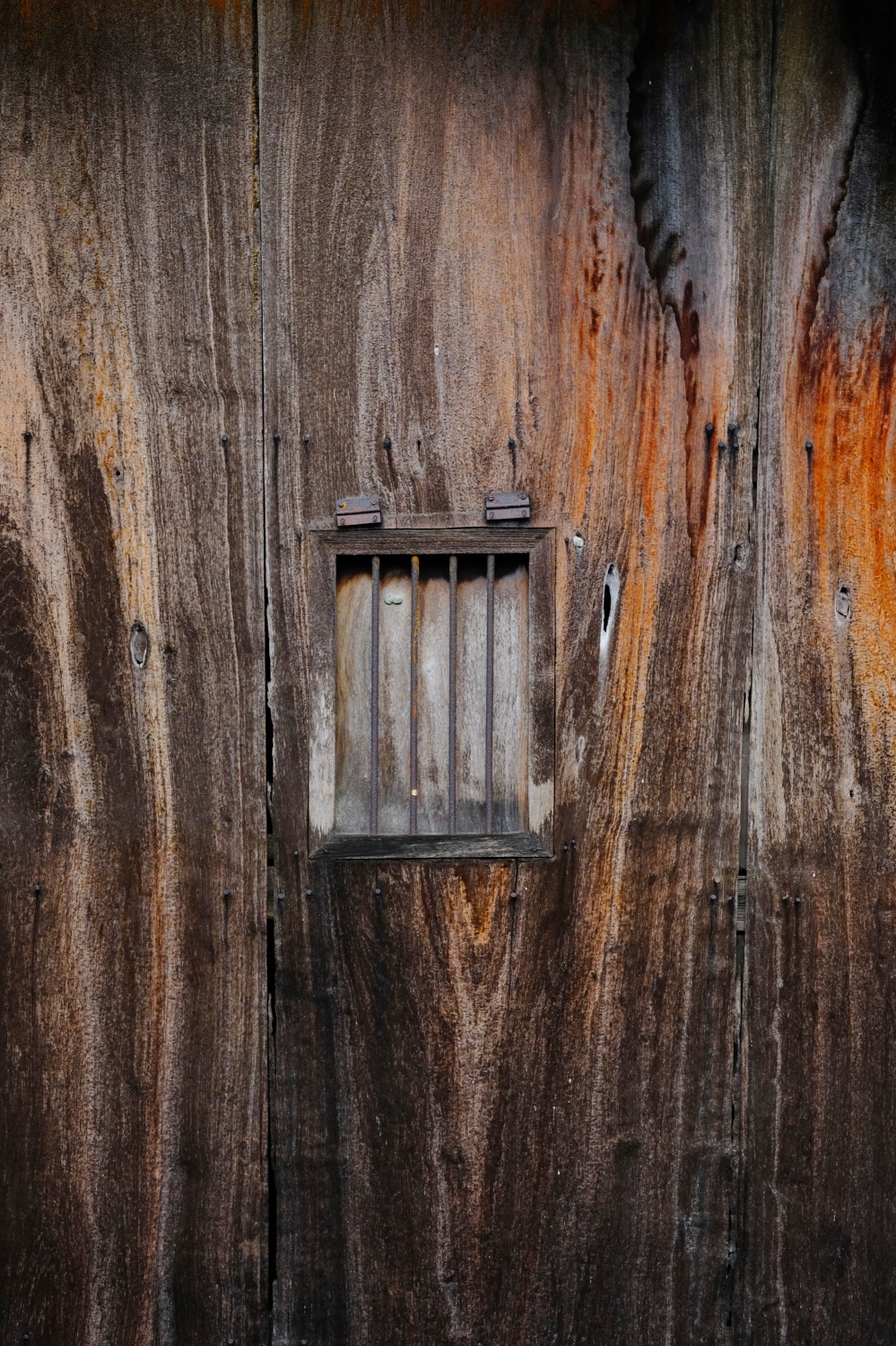 Yes, these are the actual colors . . . fantastic.
Yes, these are the actual colors . . . fantastic.
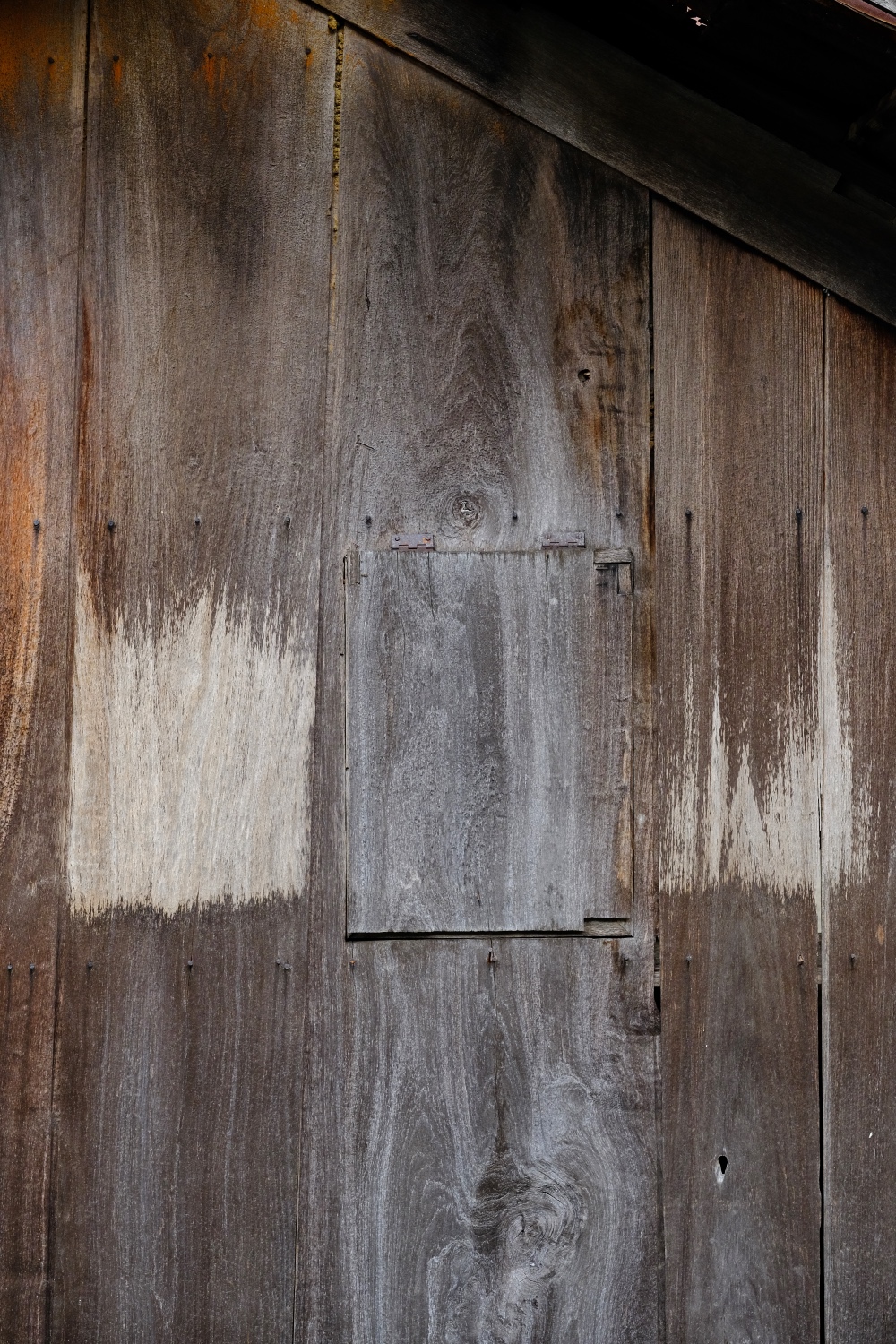 I think of the surface variegation on these surfaces as their histories.
I think of the surface variegation on these surfaces as their histories.
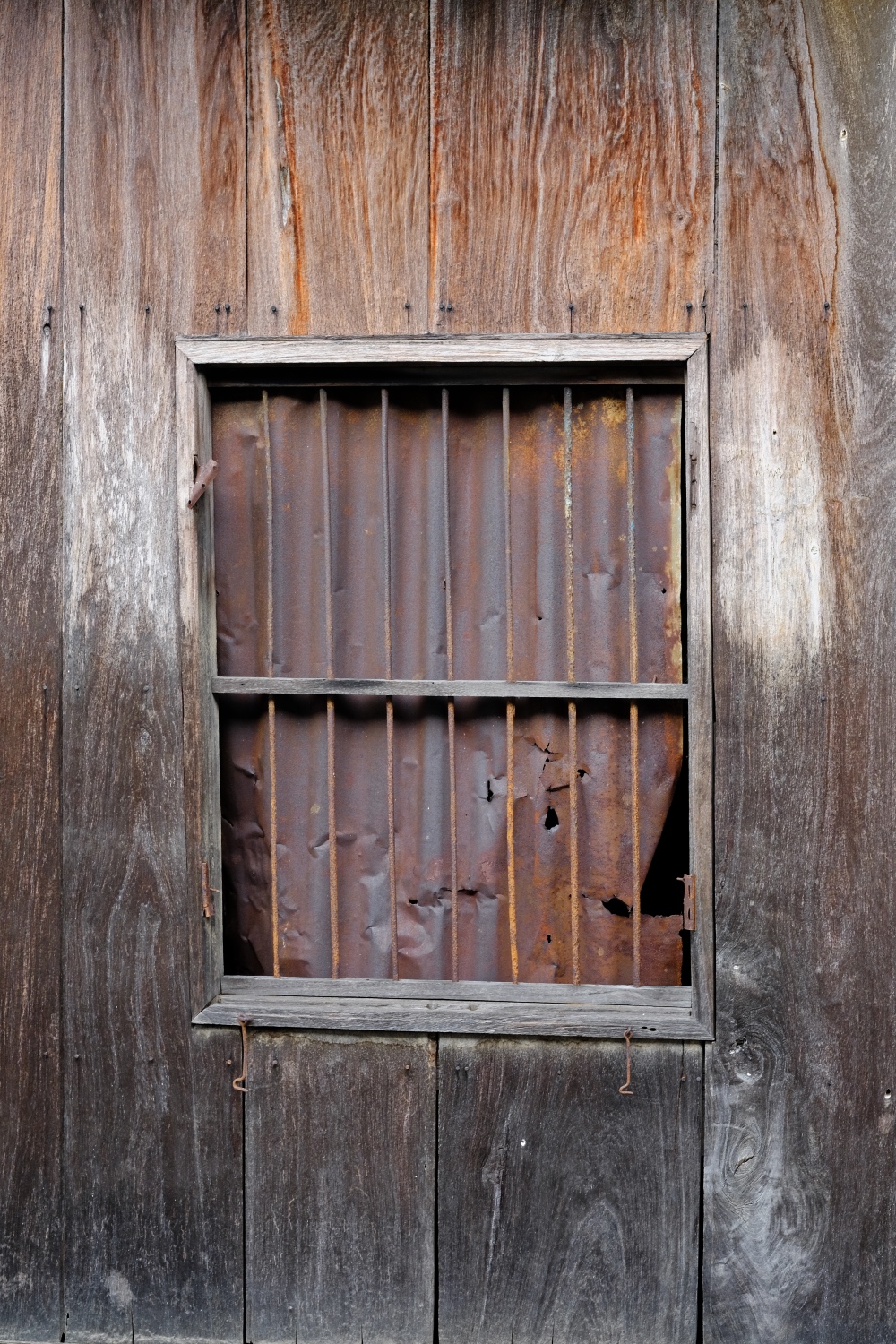 This window has everything I want in a photo: dilapidation, corrugation, and decay.
This window has everything I want in a photo: dilapidation, corrugation, and decay.
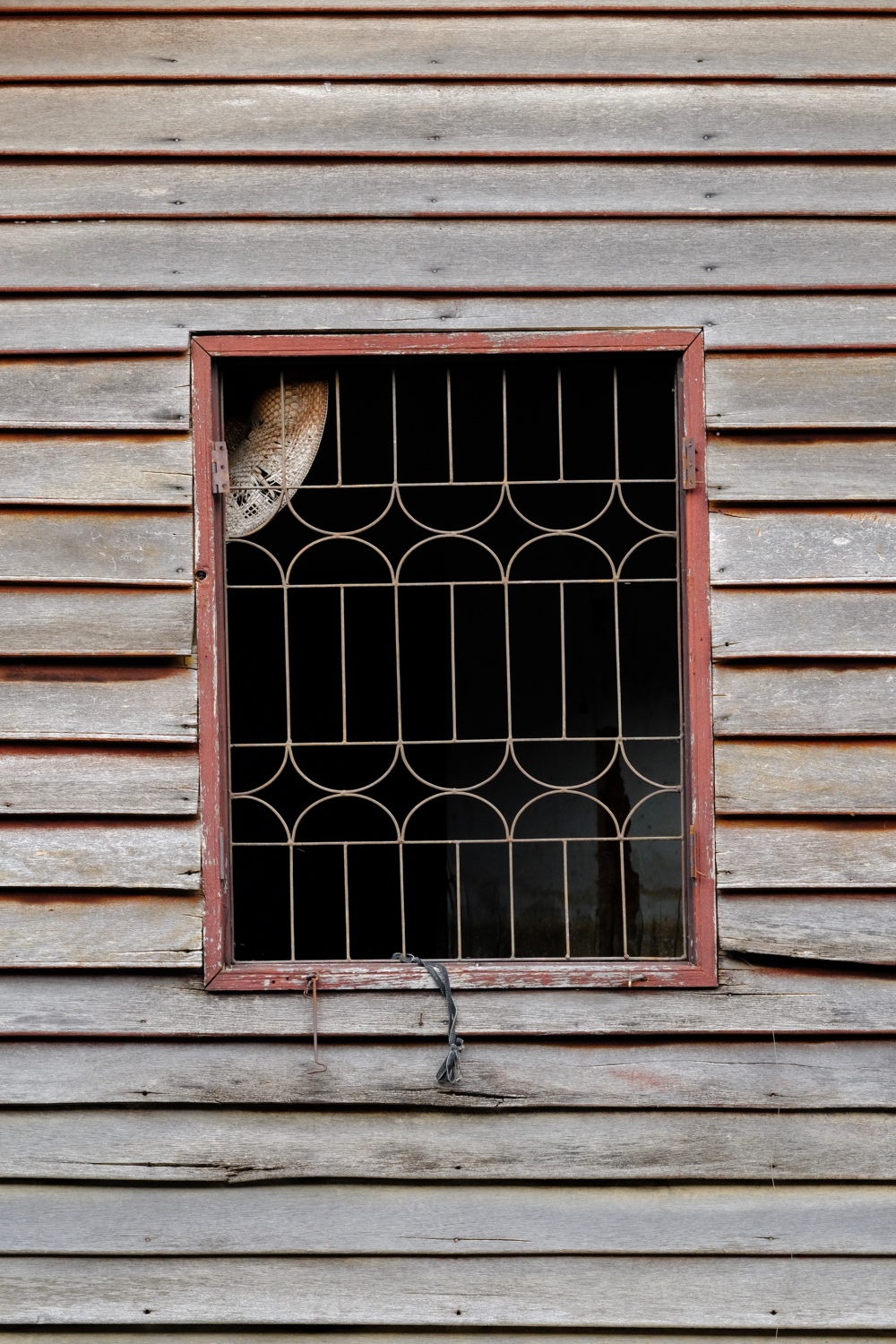 This window and those above are all on the same old wooden house sitting on pilings in the Chao Phraya River.
This window and those above are all on the same old wooden house sitting on pilings in the Chao Phraya River.
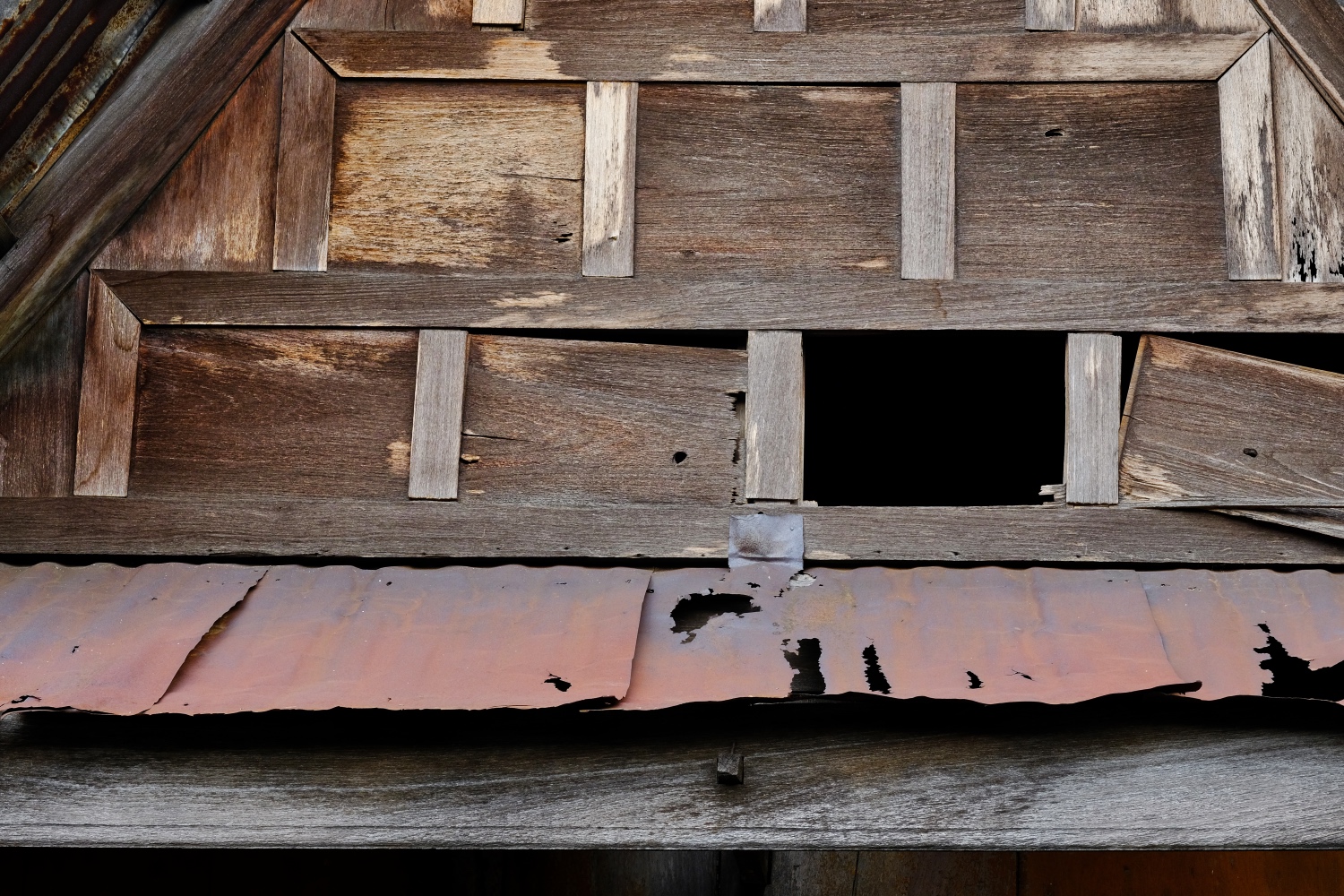 The Thai-style gabled roof . . . showing the age of this magnificent structure.
The Thai-style gabled roof . . . showing the age of this magnificent structure.
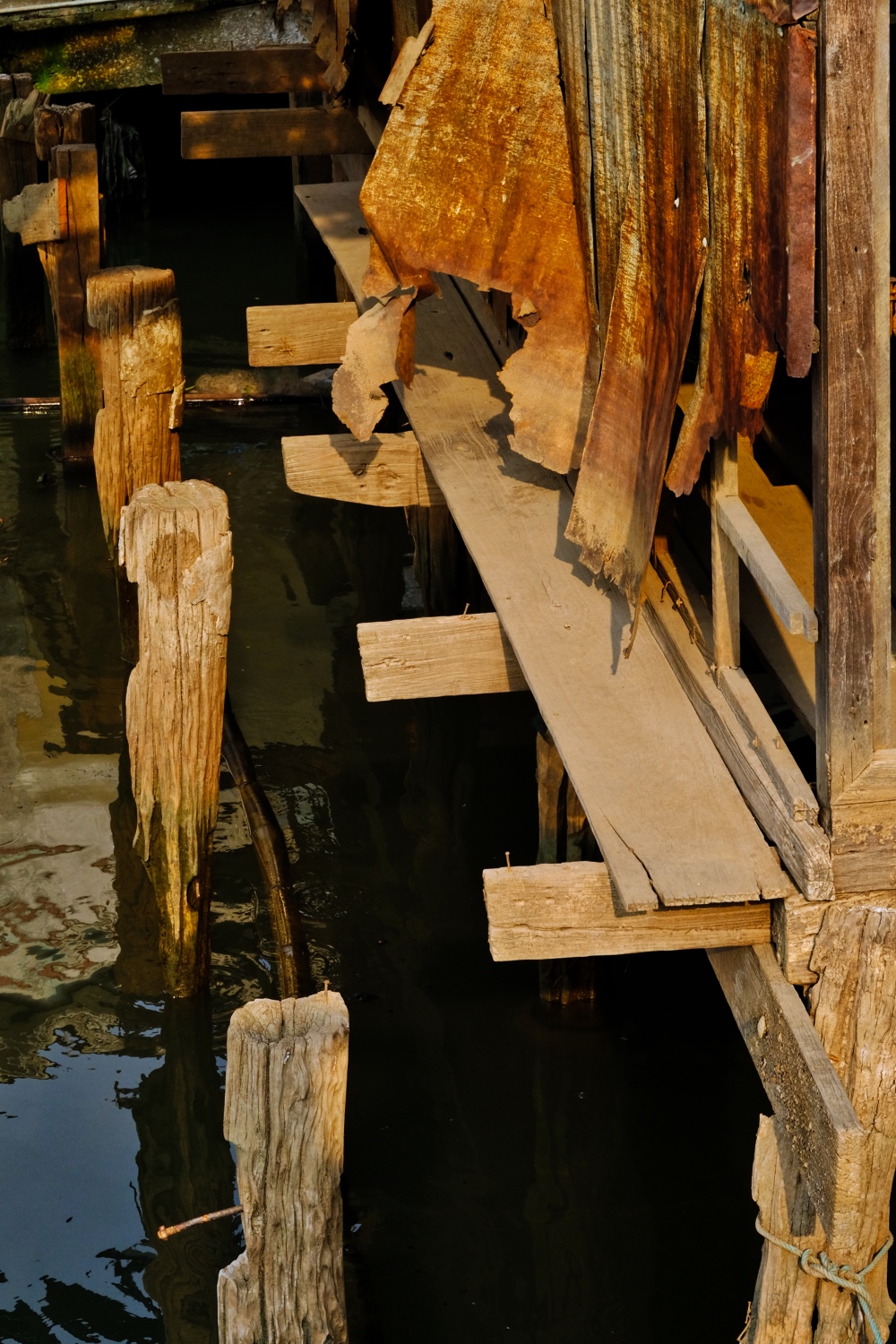 Just as we were leaving this beautiful place, the sun came out and shown magic afternoon light on the rotting piers of the old house.
Just as we were leaving this beautiful place, the sun came out and shown magic afternoon light on the rotting piers of the old house.
